disinformation
description: false or misleading information that is spread deliberately to deceive and manipulate
560 results

Active Measures: The Secret History of Disinformation and Political Warfare
by
Thomas Rid
“The desire for speedy, easily visible, and audible success sometimes makes the intelligence service the victim of its own propaganda and disinformation,” observed Bittman, the Czech defector, in the early 1970s.9 Forty years later, by the 2010s, data had become big, engagement numbers soared, and the hunger for metrics was more ferocious than ever. Yet disinformation, by design, still resisted metrics. If more data generally meant more reliable metrics, then the internet had the reverse effect on the old art of political warfare: the metrics produced by digital disinformation were, to a significant degree, themselves disinformation. The internet didn’t bring more precision to the art and science of disinformation—it made active measures less measured: harder to control, harder to steer, and harder to isolate engineered effects.
…
A society’s approach to active measures is a litmus test for its republican institutions. For liberal democracies in particular, disinformation represents a double threat: being at the receiving end of active measures will undermine democratic institutions—and giving in to the temptation to design and deploy them will have the same result. It is impossible to excel at disinformation and at democracy at the same time. The stronger and the more robust a democratic body politic, the more resistant to disinformation it will be—and the more reluctant to deploy and optimize disinformation. Weakened democracies, in turn, succumb more easily to the temptations of active measures.
…
In 1953, the main historical display in the study room at Soviet intelligence headquarters showed Feliks Dzerzhinsky, and the inscription under his portrait was devoted to the Trust.40 Operatsiya Trest, as one prominent Soviet defector reported, figured prominently in the active measures training at the Andropov Red Banner Institute, the First Chief Directorate’s academy of foreign intelligence.41 As late as 1997, the official Russian foreign intelligence history celebrated the disinformation operation as a towering success story. “The disinformation work carried out by MOTsR played a distinctly positive role,” the SVR’s official history recounted, and added that Soviet spies were able to confirm the effectiveness of the two-step ruse that fed disinformation to Polish, Estonian, and Finnish services, who in turn passed on the deceptive material to their partner agencies in France, Britain, Japan, Italy, and “in some measure” the United States. The adversaries of the USSR, taking the disinformation at face value, arrived at an “exaggerated notion of the Red Army’s military power,” the SVR concluded, which in turn led them to reject intervention against the USSR.
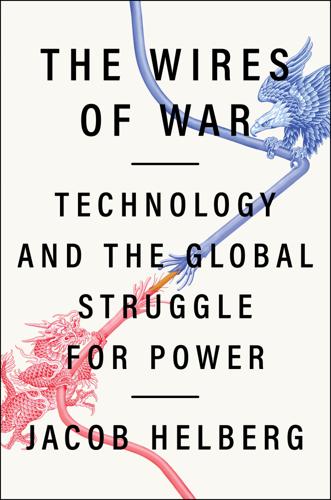
The Wires of War: Technology and the Global Struggle for Power
by
Jacob Helberg
Published 11 Oct 2021
Roberts, “How the Chinese Government Fabricates Social Media Posts for Strategic Distraction, not Engaged Argument,” Harvard, April 9, 2017, https://gking.harvard.edu/files/gking/files/50c.pdf. 130 Marc Faddoul, Guillaume Chaslot, and Hany Farid, “A longitudinal analysis of YouTube’s promotion of conspiracy videos,” UC–Berkeley, March 6, 2020, https://farid.berkeley.edu/downloads/publications/arxiv20.pdf. 131 Renee DiResta, “The Digital Maginot Line,” Ribbonfarm, November 28, 2018, https://www.ribbonfarm.com/2018/11/28/the-digital-maginot-line/. 132 Mark Scott and Laurens Cerulus, “Russian groups targeted EU election with fake news, says European Commission,” Politico, June 14, 2019, https://www.politico.eu/article/european-commission-disinformation-report-russia-fake-news/. 133 Davey Alba and Sheera Frenkel, “Russia Tests New Disinformation Tactics in Africa to Expand Influence,” New York Times, October 30, 2019, https://www.nytimes.com/2019/10/30/technology/russia-facebook-disinformation-africa.html. 134 Michael Schwirtz and Sheera Frenkel, “In Ukraine, Russia Tests a New Facebook Tactic in Election Tampering,” New York Times, March 29, 2019, https://www.nytimes.com/2019/03/29/world/europe/ukraine-russia-election-tampering-propaganda.html. 135 Alba and Frenkel, “Russia Tests New Disinformation Tactics in Africa to Expand Influence.” 136 Ibid. 137 Davey Alba, “How Russia’s Troll Farm Is Changing Tactics Before the Fall Election,” New York Times, March 29, 2020, https://www.nytimes.com/2020/03/29/technology/russia-troll-farm-election.html. 138 “America has always been hinged on hard-working people,” UMD Archive, September 23, 2016, https://archive.mith.umd.edu/irads/items/show/8941.html. 139 Alba, “How Russia’s Troll Farm Is Changing Tactics Before the Fall Election.” 140 Ibid. 141 Ibid. 142 Nicole Perlroth, “A Conspiracy Made in America May Have Been Spread by Russia,” New York Times, June 15, 2020, https://www.nytimes.com/2020/06/15/technology/coronavirus-disinformation-russia-iowa-caucus.html. 143 Joseph Menn, “Russian-backed organizations amplifying QAnon conspiracy theories, researchers say,” Reuters, August 24, 2020, https://www.reuters.com/article/us-usa-election-qanon-russia/russian-backed-organizations-amplifying-qanon-conspiracy-theories-researchers-say-idUSKBN25K13T. 144 Nicole Perlroth, “A Conspiracy Made in America May Have Been Spread by Russia.” 145 Andy Greenberg, “Hackers broke into real news sites to plant fake stories,” Wired, July 29, 2020, https://www.wired.com/story/hackers-broke-into-real-news-sites-to-plant-fake-stories-anti-nato/. 146 Charles Davis, “ ‘Grassroots’ Media Startup Redfish Is Supported by the Kremlin,” Daily Beast, June 19, 2018, https://www.thedailybeast.com/grassroots-media-startup-redfish-is-supported-by-the-kremlin. 147 Albert Shuldiner, “Declaratory Ruling,” Federal Communications Commission, May 29, 2020, https://docs.fcc.gov/public/attachments/DA-20-568A1.pdf. 148 “Assessment on U.S.
…
In money laundering, illicit funds are frequently broken up into smaller amounts and deposited separately—a practice known as “smurfing.”93 Similarly, these shell accounts engage in “informational smurfing” to make the source of disinformation harder to trace. Many of the online voices amplifying false narratives are also engaged in layering, in which intermediaries are used to obscure the original source of disinformation and spread propaganda far and wide. An intermediary can be an organization that purports to leak secrets for the public benefit, like WikiLeaks. Or intermediaries can be unsuspecting users, serving as “useful idiots” parroting Kremlin propaganda. Either way, the additional layers complicate law enforcement and counterintelligence investigations, putting the disinformation further from its sketchy origins and closer to credible sources like your friends and favorite news sources.
…
Each government spread falsehoods that the virus was developed as an American bioweapon, that China had responded well, and that the U.S. economy was collapsing. The report was not released publicly, but according to Politico, it argued “that propaganda and disinformation narratives from those country’s [sic] governments have converged as coronavirus has spread.” A few months later, representatives from the Chinese and Russian foreign ministries held “consultations” on disinformation.162 The stated goal was ostensibly to “jointly combat disinformation,” but coordination was more likely on the agenda. More and more, the authoritarians’ online playbooks are drawing on and reinforcing each other—while we scramble to update our own defenses.

The Constitution of Knowledge: A Defense of Truth
by
Jonathan Rauch
Published 21 Jun 2021
They embody an open epistemic order, which enables an open and liberal political order; one cannot exist without the other.… Active measures [a Russian term for disinformation] erode that order. But they do so slowly, subtly, like ice melting. This slowness makes disinformation that much more insidious, because when the authority of evidence is eroded, emotions fill the gap.… The stakes are enormous—for disinformation corrodes the foundation of liberal democracy, our ability to assess facts on their merits and to self-correct accordingly.17 The study of propaganda and disinformation has a long and distinguished history, which I will not attempt to rehearse here. The basics are well established.
…
In fact, it was not the product of a “sad, sick sense of humor.” It was a disinformation experiment by Russia’s Internet Research Agency, the infamous state-sponsored troll farm in St. Petersburg, whose humans and bots and algorithms worked around the clock to design and refine viral fakery. In 2015 an online disinformation campaign convinced millions of people—including the governor of Texas—that a routine federal military exercise might be an Obama administration plan to round up political dissidents. That, too, turned out to be a Russian dry run for the much larger disinformation campaign of 2016.14 Soon it became evident that countries around the world—big ones like Russia and Iran, small ones like Azerbaijan and Ecuador—were investing in what became known as state-sponsored trolling.15 This was a realm far removed from lulz.
…
See also professionalism Facebook: advertising shift to, 137; conspiracy theories and, 135; content regulation and, 144–47, 150–51, 240; disinformation campaigns and, 168; institutionalization of, 150–52 FactCheck.org, 152 facts and factuality: conservative media and, 176; disinformation campaigns and, 165–66, 169; fact-checking, 152–53, 169–70; law and, 102; methodology for establishing, 116–17, 151–52; reality-based communities and, 112, 115–17, 233–34, 262; Royal Society and, 67–68; Trump and, 169–71 Fairness for All Act (2020), 238–39 fake news: conservative media and, 177–78; pre-digital, 136–37; proliferation of, 120, 185; Trump and, 6, 180. See also disinformation; misinformation; trolls and trolling fallibilism: conspiracy theories and, 167; falsification and, 58–60; knowledge and, 58–60, 88–89; marginalizing bad ideas under, 258–60; Mill’s On Liberty and, 192; network epistemology and, 94, 95; as rule for reality, 88–92, 103; Trumpism vs., 182; Wikipedia and, 143 falsification, 58–60, 99 familiarity bias, 26 Faris, Robert, 164, 178–79 Fauci, Anthony, 241 Federalist Papers, 80–82, 84, 112, 119, 190–91 Federation of State Medical Boards, 66 Ferguson, Niall, 120 Fernbach, Philip: The Knowledge Illusion (with Sloman), 34, 72 Filloux, Frederic, 137 First Amendment, 12, 168, 198, 200, 201, 235, 237, 250 Fleming, Alexander, 67 Florey, Howard, 67 fluency bias, 26 Foer, Sam, 12–13, 19, 244 Foundation for Individual Rights in Education (FIRE), 19, 243–44, 250 Founding Fathers, 112, 115, 156–57.

Reset
by
Ronald J. Deibert
Published 14 Aug 2020
Retrieved from https://www.washingtonpost.com/world/asia_pacific/why-crafty-internet-trolls-in-the-philippines-may-be-coming-to-a-website-near-you/2019/07/25/c5d42ee2-5c53-11e9-98d4-844088d135f2_story.html In Indonesia, low-level military personnel coordinate disinformation campaigns: Allard, T., & Stubbs, J. (2020, January 7). Indonesian army wields internet ‘news’ as a weapon in Papua. Retrieved from https://www.reuters.com/article/us-indonesia-military-websites-insight/indonesian-army-wields-internet-news-as-a-weapon-in-papua-idUSKBN1Z7001 Taiwan is like a petri dish of disinformation: Zhong, R. (2020, January 16). Awash in disinformation before vote, Taiwan points finger at China. Retrieved from https://www.nytimes.com/2020/01/06/technology/taiwan-election-china-disinformation.html They’ve employed hackers-for-hire to target ngos.
…
They are feeling the pressure to react, and have taken several noteworthy steps to combat the plague of disinformation, including shutting down inauthentic accounts by the thousands, hiring more personnel to screen posts and investigate malpractice on their platforms, “down-ranking” clearly false information on users’ feeds, and collaborating with fact-checking and other research organizations to spot disinformation. These efforts intensified during the COVID pandemic. But in spite of these measures, social media remain polluted by misinformation and disinformation, not only because of their own internal mechanisms, which privilege sensational content, or because of the speed and volume of posts, but also thanks to the actions of malicious actors who seek to game them.191 For example, in spite of widespread revelations of Russian influence operations over social media in 2016, two years later researchers posing as Russian trolls were still able to buy political ads on Google, even paying in Russian currency, registering from a Russian zip code, and using indicators linking their advertisements to the Internet Research Agency — the very trolling farm that was the subject of intense congressional scrutiny and indictments by Robert Mueller.192 In similar fashion, despite all the attention given and promises made to control misinformation about COVID-19 on its platform, an April 2020 study by the Markup found that Facebook was nonetheless still allowing advertisers to target users who the company believes are interested in “pseudoscience” — a category of roughly 78 million people.
…
Retrieved from https://www.nytimes.com/2019/08/11/world/americas/youtube-brazil.html An opportunity for climate change denialists to propagate disinformation: Ryan, H., & Wilson, C. (2020, January 22). As Australia burned, climate change denialism got a boost on Facebook. Retrieved from https://www.buzzfeed.com/hannahryan/facebook-australia-bushfires-climate-change-deniers-facebook Conspiracy theories circulated across social media: Knaus, C. (2020, January 11). Disinformation and lies are spreading faster than Australia’s bushfires. Retrieved from https://www.theguardian.com/australia-news/2020/jan/12/disinformation-and-lies-are-spreading-faster-than-australias-bushfires At least one prominent politician bought into it: Capstick, S., Dyke, J., Lewandowsky, S., Pancost, R., & Steinberger, J. (2020, January 14).
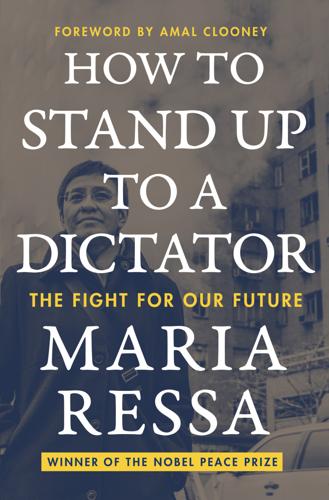
How to Stand Up to a Dictator
by
Maria Ressa
Published 19 Oct 2022
We also added a short editor’s note on the story page on our website, which would be the first sentence any reader would see: “This story was published on March 26, 2016.” But we decided not to do a full story about the operation on Rappler because we didn’t want to amplify the disinformation. In general, we struggled early on with how to balance getting out the information about manipulation, correcting the disinformation, and trying to limit its reach. We became better at this in the coming years, deciding that radical transparency, including publishing full geeky maps of the accounts taking part in disinformation networks, was the way to go: give as much information as the most detail-oriented reader might want. We continued our investigation of the case for many years.38 We found that the “man with a bomb” online network was connected to the core manpower of the Duterte campaign.
…
Step two was to use natural language processing, using computers to process large amounts of text to pull out the consistent messages of networks of disinformation. Doing that led us to step three, which was identifying the websites and other digital assets associated with those networks, including those profiting off the enterprise.22 Duterte had consolidated power and polarized the society by often using asymmetrical warfare, with small groups like us trying to stand up for the facts against the disinformation that was more likely to travel over pro-Duterte and pro-Marcos disinformation networks. One of the first times when there was a near-even split in our information ecosystem was when I was arrested on February 13, 2019.
…
For the American-owned platforms, the world’s new information gatekeepers, those activities created more engagement and brought in more money. The goals of the gatekeepers and the disinformation operatives aligned. That was the first time we became aware of information warfare tactics that would soon be deployed around the world, from Duterte to Brexit to Catalonia to Stop the Steal. Eight years later, on February 24, 2022, using the same techniques and the same metanarratives he had seeded to annex Crimea, Vladimir Putin invaded Ukraine itself. This is how disinformation, bottom up and top down, can manufacture a whole new reality. Less than three months later, the Philippines fell into the abyss.

Digital Empires: The Global Battle to Regulate Technology
by
Anu Bradford
Published 25 Sep 2023
TA (2019) 0031 para. 4 (2019) (emphasizing the importance of “free and fair elections”). 81.See Commission Joint Communication to the European Parliament, the European Council, the Council, the European Economic and Social Committee and the Committee of the Regions, Action Plan against Disinformation, at 11, JOIN (2018) 36 final (Dec. 2, 2018). 82.Communication from the Commission, Tackling online disinformation: A European Approach, supra note 80, at 1. 83.Signatories of the 2022 Strengthened Code of Practice on Disinformation, Eur. Comm’n (June 16, 2022), https://digital-strategy.ec.europa.eu/en/library/signatories-2022-strengthened-code-practice-disinformation. 84.The Strengthened Code of Practice on Disinformation 2022, Eur. Comm’n (June 16, 2022), https://digital-strategy.ec.europa.eu/en/library/2022-strengthened-code-practice-disinformation. 85.European Commission Statement Statement/19/6166, Code of Practice on Disinformation one year on: online platforms submit self-assessment reports (Oct. 29, 2019). 86.European Commission Press Release IP/20/1568, Disinformation: EU assesses the Code of Practice and publishes platform reports on coronavirus related disinformation (Sep. 10, 2020). 87.Digital Services Act, supra note 65, preamble, para. 57. 88.Id., art. 26–27. 89.Id., art. 28. 90.Id., art. 31. 91.Id., art. 42. 92.See Meta Reports Fourth Quarter and Full Year 2021 Results, Meta Platforms, Inc.
…
Perhaps the most potent charge today is that even if these platforms were not advancing an explicit political agenda, manipulating citizens, or tilting voter turnout toward their desired outcome, they are enabling election interference by failing to filter content that spreads disinformation or calls into question the integrity of elections, both before and after voting takes place. As long as these platforms tolerate disinformation, voters can be misled, causing them either to vote based on false information or refrain from voting if such disinformation undermines their faith in the integrity of the electoral process. There is no more vivid illustration of this than the January 6 insurrection at the US Capitol following a rampant social media–fueled disinformation campaign about a stolen election. The unregulated digital economy is also rife with privacy scandals.
…
In the 2018 European Democracy Action Plan, the Commission emphasizes how democracy cannot thrive without “engaged, informed, and empowered citizens.”78 To meaningfully participate in democratic processes, citizens must be able to form their own opinions, including to make electoral choices in a public space that exposes them to a plurality of viewpoints that are expressed freely.79 According to the Commission, this requires both protecting the freedom of speech online and eliminating online disinformation that can undermine political processes.80 Without the freedom of expression, individuals’ political rights are compromised. At the same time, disinformation polarizes the public discourse and undermines citizens’ trust in democracy.81 Given the prevalence and severity of disinformation, as well as its manifested adverse effect on democracy, the EU is steadfast in its commitment to limit the dissemination of such information online. However, crafting a rights-preserving regulatory approach toward the removal of disinformation is complicated given the EU’s equally steadfast commitment to the freedom of expression online.

Zucked: Waking Up to the Facebook Catastrophe
by
Roger McNamee
Published 1 Jan 2019
Facebook (along with Google and Twitter) has undercut the free press from two directions: it has eroded the economics of journalism and then overwhelmed it with disinformation. On Facebook, information and disinformation look the same; the only difference is that disinformation generates more revenue, so it gets much better treatment. To Facebook, facts are not an absolute; they are a choice to be left initially to users and their friends but then magnified by algorithms to promote engagement. In the same vein, Facebook’s algorithms promote extreme messages over neutral ones, disinformation over information, conspiracy theories over facts. Every user has a unique News Feed and potentially a unique set of “facts.”
…
The shared values that form the foundation of our democracy proved to be powerless against the preference bubbles that have evolved over the past decade. Facebook does not create preference bubbles, but it is the ideal incubator for them. The algorithms ensure that users who like one piece of disinformation will be fed more disinformation. Fed enough disinformation, users will eventually wind up first in a filter bubble and then in a preference bubble. If you are a bad actor and you want to manipulate people in a preference bubble, all you have to do is infiltrate the tribe, deploy the appropriate dog whistles, and you are good to go.
…
These and other sites would have been fertile ground for the Russian messages on immigration, guns, and white nationalism. They were also ideal incubators for disinformation. Renée explained that the typical path for disinformation or a conspiracy theory is to be incubated on sites like Reddit, 4chan, or 8chan. There are many such stories in play at any time, a handful of which attract enough support to go viral. For the Russians, any time a piece of disinformation gained traction, they would seed one or more websites with a document that appeared to be a legitimate news story about the topic. Then they would turn to Twitter, which has replaced the Associated Press as the news feed of record for journalists.

Four Battlegrounds
by
Paul Scharre
Published 18 Jan 2023
bill_id=201720180SB1001; Thomas Sprankling, “California Enacts Nation’s First Anti-Bot Law,” WilmerHale, October 3, 2018, https://www.wilmerhale.com/en/insights/client-alerts/20181003-california-enacts-nations-first-anti-bot-law. 122misuses of AI-generated audio and video: Bobby Chesney and Danielle Citron, “Deep Fakes: A Looming Challenge for Privacy, Democracy, and National Security,” California Law Review 107, no. 1753 (2019), https://doi.org/10.15779/Z38RV0D15J. 122“active measures”: Thomas Rid, Active Measures: The Secret History of Disinformation and Political Warfare (New York: Farrar, Straus and Giroux, April 21, 2020), https://www.amazon.com/Active-Measures-History-Disinformation-Political/dp/0374287260. 122dezinformatsiya: Merriam-Webster, s.v. “disinformation,” n.d., https://www.merriam-webster.com/dictionary/disinformation; Aristedes Mahairas and Mikhail Dvilyanski, “Disinformation – Дезинформация (Dezinformatsiya),” Cyber Defense Review 3, no. 3 (Fall 2018): 21–28, https://www.jstor.org/stable/26554993. 122bioengineered virus created by the U.S. military: Adam Taylor, “Before ‘Fake News,’ There Was Soviet ‘Disinformation,’” Washington Post, November 26, 2016, https://www.washingtonpost.com/news/worldviews/wp/2016/11/26/before-fake-news-there-was-soviet-disinformation/. 122Russia used fake online personas: Extremist Content and Russian Disinformation Online: Working with Tech to Find Solutions: Hearing of the Subcommittee on Crime and Terrorism, Senate Committee on the Judiciary, 115th Cong. (2017) (statement of Clint Watts, Robert A.
…
Election. 122designed to “sow fear, discord, and paralysis”: “The Scourge of Russian Disinformation,” Commission on Security and Cooperation in Europe, September 14, 2017, https://www.csce.gov/international-impact/events/scourge-russian-disinformation. 122effects of disinformation campaigns were hard to measure: Craig Timberg and Tony Romm, “Forget the Russians. On This Election Day, It’s Americans Peddling Disinformation and Hate Speech,” Washington Post, November 6, 2018, https://www.washingtonpost.com/technology/2018/11/06/forget-russians-this-election-day-its-americans-peddling-disinformation-hate-speech/. 122activities against U.S. politicians: Karoun Demirjian, “Ryan, Rubio May Have Been Targets of Damaging Russian Social-Media Campaigns,” Washington Post, March 30, 2017, https://www.washingtonpost.com/powerpost/ryan-rubio-may-have-been-targets-of-damaging-russian-social-media-campaigns/2017/03/30/bdf5f4fa-154f-11e7-ada0-1489b735b3a3_story.html?
…
Jackson, Global Economic Effects of COVID-19 (Congressional Research Service, updated July 9, 2021), https://fas.org/sgp/crs/row/R46270.pdf. 74dictators who fall from power: For example, Romanian President Nicolae Ceaușescu and his wife were executed by firing squad after a perfunctory show trial in December 1989. 74“China’s Chernobyl”: Shawn Yuan, “Inside the Early Days of China’s Coronavirus Cover-Up,” Wired, May 1, 2020, https://www.wired.com/story/inside-the-early-days-of-chinas-coronavirus-coverup/. 75the West is “falling apart”: Zhou Bo, “Why the US and Europe Need to Draw Closer to China and Drop the Hubris,” South China Morning Post, April 24, 2020, https://www.scmp.com/comment/opinion/article/3081079/why-us-and-europe-need-draw-closer-china-and-drop-hubris. 75coercive diplomacy to pressure countries: Shahank Bengali and Alice Su, “‘Put on a mask and shut up’: China’s new ‘Wolf Warriors’ spread hoaxes and attack a world of critics,” Los Angeles Times, May 4, 2020, https://www.latimes.com/world-nation/story/2020-05-04/wolf-warrior-diplomats-defend-china-handling-coronavirus; Fergus Hanson, Emilia Currey, and Tracy Beattie, The Chinese Communist Party’s Coercive Diplomacy (Australian Strategic Policy Institute, September 1, 2020), https://www.aspi.org.au/report/chinese-communist-partys-coercive-diplomacy; Jamil Anderlini, “China Is Escalating Its Punishment Diplomacy,” Financial Times, September 22, 2020, https://www.ft.com/content/e76a835b-27d5-4750-9749-04921d6bf1eb. 75requests that receiving governments praise China: Alexandra Ma, “China Is Attempting to Win Political Points from the Coronavirus With ‘Mask Diplomacy’—but It Mostly Isn’t Working,” Business Insider, April 18, 2020, https://www.businessinsider.com/analysis-china-coronavirus-political-points-mostly-not-working-2020-4. 75China’s “global disinformation campaign”: Michael Peel and Tom Mitchell, “China Warned EU 3 Times over Virus Propaganda Report,” Financial Times, April 26, 2020, https://www.ft.com/content/a2f66f6a-50cb-46fe-a160-3854e4702f1c; Matt Apuzzo, “Top E.U. Diplomat Says Disinformation Report Was Not Watered Down for China,” New York Times, April 30, 2020, https://www.nytimes.com/2020/04/30/world/europe/coronavirus-china-eu-disinformation.html; Matt Apuzzo, “Pressured by China, E.U. Softens Report on Covid-19 Disinformation,” New York Times, April 24, 2020, https://www.nytimes.com/2020/04/24/world/europe/disinformation-china-eu-coronavirus.html.
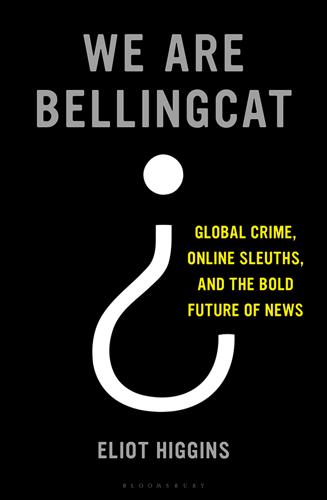
We Are Bellingcat: Global Crime, Online Sleuths, and the Bold Future of News
by
Eliot Higgins
Published 2 Mar 2021
After the Russian occupation of Crimea in 2014, the Finnish government stepped up its defences against false news reports and online manipulation, establishing courses on disinformation for members of the public. In the first few years, thousands attended.87 Sweden, too, launched campaigns to tackle disinformation and has worked on a new government agency for the psychological defence of the country.88 We all need to stay alert to disinformation techniques. If you imagine that digital natives, those who grew up with the internet, are equipped to handle this environment, you are wrong. A Stanford study from 2016, which tested thousands of American students’ ability to spot fakery online, reported that ‘young people’s ability to reason about the information on the Internet can be summed up in one word: bleak. … In every case and at every level, we were taken aback by students’ lack of preparation.’89 Some 82 per cent of middle-school students could not tell a news story from an advertisement.
…
Moscow retaliated with expulsions of its own.4 At Bellingcat, we watched, awaiting a point of entry. Scattered around the globe, we are an online collective, investigating war crimes and picking apart disinformation, basing our findings on clues that are openly available on the internet – in social-media postings, in leaked databases, in free satellite maps. Paradoxically, in this age of online disinformation, facts are easier to come by than ever. A core team of eighteen staffers works with scores of volunteers, producing reports seen by hundreds of thousands, including government officials, influential media figures, and policymakers.
…
General Michael Hayden, former director of both the CIA and the NSA, recalled a turning point for American intel back in the mid-1990s, when espionage officials faced a question: try to dominate cyberspace, or to dominate the information sphere generally, including diplomacy, public affairs, disinformation, and more? ‘We had a sharp debate, and we finally decided that we’re probably in the cyber-dominance business,’ he recalled. ‘Now the important punchline here is that the Russians went to door number two. The Russians went to not just cyber-dominance, but information-dominance.’24 Less than an hour after MH17 went down, the Internet Research Agency – a notorious ‘troll factory’ based in St Petersburg, where desk workers are paid to spew out vast amounts of disinformation online – went to work. During those first three days, its Twitter accounts posted 111,486 times, a pace that it has never matched before or since.25 Most tweets were in Russian, starting with the claim that the downed plane had been a Ukrainian military aircraft, and was therefore a legitimate target.

An Ugly Truth: Inside Facebook's Battle for Domination
by
Sheera Frenkel
and
Cecilia Kang
Published 12 Jul 2021
He was unsurprised when the figures he’d provided were immediately torn apart by academics and independent researchers who had long been studying Russia’s presence online. In San Francisco, disinformation researcher Renée DiResta reviewed the Facebook blog post from her apartment overlooking the bay. Almost immediately, she began texting researchers and amateur disinformation sleuths she had developed relationships with over the last two years. The number of people actively studying disinformation in the United States could be listed in one breath. DiResta, like the others, had chanced into studying the field. When researching preschools for her firstborn son in 2014, she discovered that a number of preschools in Northern California had lax rules on vaccinations.
…
Stamos and other members of the security team—working under what was known as an XFN, or “cross-functional,” group—continued to search for Russian interference and broadened their scope to look for disinformation campaigns affecting other countries. The security team had already found that governments were actively using the platform to promote their own political agendas. In a separate report produced by the XFN team, Stamos included flags from nations such as Turkey and Indonesia as examples of governments that had used Facebook to run disinformation campaigns to sway public opinion and elections in their countries or those in nearby states. Facebook needed to go on the offensive.
…
“It was a slow, slow process, but what we found that summer, the summer of 2017, it just blew us away,” recalled one member of Facebook’s security team. “We expected we’d find something, but we had no idea it was so big.” While over the years some Facebook employees had speculated that the IRA was focused on spreading disinformation in the United States, no one had thought to go looking for a professional disinformation campaign run by the organization. The security team had not believed the IRA audacious or powerful enough to target the United States. Facebook’s assurances to Senator Warner and other lawmakers that they had fully uncovered Russia’s efforts to influence the 2016 elections were based on the assumption that they were looking for Russian military intelligence activity, but they had missed the forest for the trees.
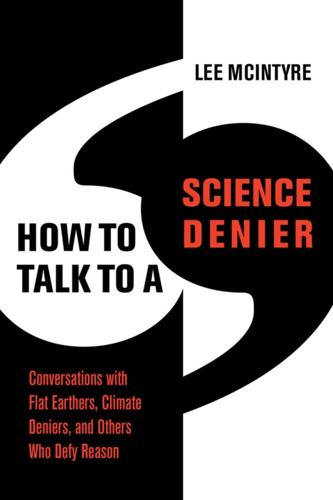
How to Talk to a Science Denier: Conversations With Flat Earthers, Climate Deniers, and Others Who Defy Reason
by
Lee McIntyre
Published 14 Sep 2021
Robin Emmott, “Russia Deploying Coronavirus Disinformation to Sow Panic in West, EU Document Shows,” Reuters, March 18, 2020, https://www.reuters.com/article/us-health-coronavirus-disinformation/russia-deploying-coronavirus-disinformation-to-sow-panic-in-west-eu-document-says-idUSKBN21518F. 29. Allen Kim, “Nearly Half of the Twitter Accounts Discussing ‘Reopening America’ May Be Bots, Researchers Say,” CNN, May 22, 2020, https://www.cnn.com/2020/05/22/tech/twitter-bots-trnd/index.html. 30. Eric Tucker, “US Officials: Russia behind Spread of Virus Disinformation,” AP News, July 28, 2020, https://apnews.com/3acb089e6a333e051dbc4a465cb68ee1. 31.
…
Indeed, according to the New York Times, the Russian government has been spreading science denial propaganda since the AIDS crisis in the 1980s, up through Ebola, until today with numerous conspiracies about the cause of the coronavirus. William J. Broad, “Putin’s Long War Against American Science,” New York Times, April 13, 2020, https://www.nytimes.com/2020/04/13/science/putin-russia-disinformation-health-coronavirus.html; Julian E. Barnes and David E. Sanger, “Russian Intelligence Agencies Push Disinformation on Pandemic,” New York Times, July 28, 2020, https://www.nytimes.com/2020/07/28/us/politics/russia-disinformation-coronavirus.html. For more information and citations about Russian propaganda efforts, see chapter 8. 8 Coronavirus and the Road Ahead In early 2000, President Thabo Mbeki of South Africa convened a meeting of experts to discuss HIV/AIDS.
…
“The Coronavirus Gives Russia and China Another Opportunity to Spread Their Disinformation,” Washington Post, March 29, 2020, https://www.washingtonpost.com/opinions/the-coronavirus-gives-russia-and-china-another-opportunity-to-spread-their-disinformation/2020/03/29/8423a0f8-6d4c-11ea-a3ec-70d7479d83f0_story.html; Edward Wong et al., “Chinese Agents Spread Messages That Sowed Virus Panic in U.S., Officials Say,” New York Times, April 22, 2020, https://www.nytimes.com/2020/04/22/us/politics/coronavirus-china-disinformation.html. 32. Oliver Milman, “Revealed: Quarter of All Tweets about Climate Crisis Produced by Bots,” Guardian, February 21, 2020, https://www.theguardian.com/technology/2020/feb/21/climate-tweets-twitter-bots-analysis; Ryan Bort, “Study: Bots Are Fueling Online Climate Denialism,” Rolling Stone, February 21, 2020, https://www.rollingstone.com/politics/politics-news/bots-fueling-climate-science-denialism-twitter-956335/. 33.
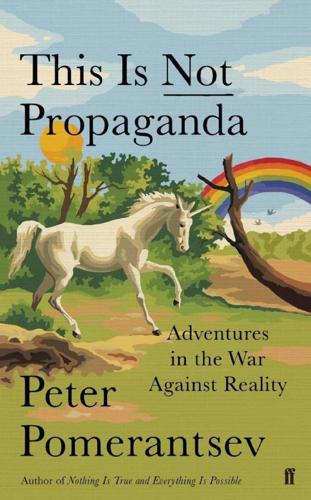
This Is Not Propaganda: Adventures in the War Against Reality
by
Peter Pomerantsev
Published 29 Jul 2019
They had originally described themselves as being concerned with ‘fake news’, but then found the meaning of those words was morphing to denote any content that someone didn’t like. They tried instead to differentiate between ‘disinformation’ (content designed to mislead) and ‘misinformation’ (content that misleads by accident). But many of the most pernicious campaigns I’d seen didn’t necessarily use ‘disinformation’. And even if ‘disinformation’ is identified, would, or indeed should, that make it illegal necessarily? What if one were to refocus ‘disinformation’ from content to behaviour: bots, cyborgs and trolls that purposefully disguise their identity to confuse audiences; cyber-militias whose activity seems organic but who are actually part of coordinated campaigns full of fake accounts; the plethora of ‘news’ websites which look independent but are covertly run from one source, all pushing the same agenda?
…
Fielding, Nick and Ian Cobain, ‘Revealed: US Spy Operation That Manipulates Social Media’, Guardian, 17 March 2011; https://www.theguardian.com/technology/2011/mar/17/us-spy-operation-social-networks. 16 DiResta, Renee, Kris Shaffer, Becky Ruppel, David Sullivan, Robert Matney, Ryan Fox, Jonathan Albright and Ben Johnson, ‘The Tactics & Tropes of the Internet Research Agency’ (Austin, TX: New Knowledge, 2018); https://disinformationreport.blob.core.windows.net/disinformation-report/NewKnowledge-Disinformation-Report-Whitepaper.pdf. 17 Monaco, Nicholas and Carly Nyst, ‘State-Sponsored Trolling: How Governments Are Deploying Disinformation as Part of Broader Digital Harassment Campaigns’ (Palo Alto, CA: Institute for the Future, 2018); http://www.iftf.org/fileadmin/user_upload/images/DigIntel/IFTF_State_sponsored_trolling_report.pdf. 18 Wu, Tim, ‘Is the First Amendment Obsolete?’
…
Nor was busting drug crime Duterte’s only selling point: I have talked to supporters of his who were attracted by the image of a provincial fighting the elites of ‘Imperial Manila’ and the prim Catholic Church establishment. But P’s account of digital influence does echo some academic studies. In ‘Architects of Networked Disinformation’, Dr Jonathan Corpus Ong of the University of Massachusetts and Dr Jason Cabañes of Leeds University spent twelve months interviewing the protagonists of what Ong called Manila’s ‘disinformation architecture’, which was made use of by every party in the country.3 At the top were what he described as the ‘chief architects’ of the system. They came from advertising and PR firms, lived in sleek apartments in the skyscrapers and described their work in an almost mythical way, comparing themselves to characters from the hit HBO fantasy TV series Game of Thrones and video games.

Likewar: The Weaponization of Social Media
by
Peter Warren Singer
and
Emerson T. Brooking
Published 15 Mar 2018
Recall the KGB’s Operation INFEKTION, the Cold War claim that the U.S. military invented AIDS. During that era, Ladislav Bittman served alongside the KGB in its allied Czechoslovakian intelligence service’s disinformation department. In a 1985 book, he explained how “every disinformation message must at least partially correspond to reality or generally accepted views.” The AIDS disinformation campaign, for example, didn’t invent a new threat; instead, it leveraged people’s fears about a well-known but then mysterious disease. The internet, and especially its memetic elements, enables this further.
…
r=UK&IR=T. 102 “report acts”: “Planning Outline for the Construction of a Social Credit System.” 102 you can lose access: Nguyen, “China Might Use Data.” 102 online matchmaking service: Celia Hatton, “China ‘Social Credit’: Beijing Sets Up Huge System,” BBC News, October 26, 2015, http://www.bbc.com/news/world-asia-china-34592186. 102 Thailand: Michael de Waal-Montgomery, “Thailand Reportedly Close to Introducing Its Own China-Style Internet Firewall,” VentureBeat, September 23, 2015, https://venturebeat.com/2015/09/23/thailand-reportedly-close-to-introducing-its-own-china-style-internet-firewall/. 102 Vietnam: Ian Timberlake, “Vietnam Steps Up China-Style Internet Censorship,” Sydney Morning Herald, July 1, 2010, http://www.smh.com.au/technology/vietnam-steps-up-chinastyle-internet-censorship-20100701-zpg0.html. 102 Zimbabwe: Elin Box, “Zimbabwe to Implement China-Style Internet Censorship Regime,” Global Marketing News (blog), Webcertain, April 11, 2016, http://blog.webcertain.com/zimbabwe-internet-censorship-like-china/11/04/2016/. 102 Cuba: Mauricio Claver-Carone, “When Helping ‘the Cuban People’ Means Bankrolling the Castros,” Wall Street Journal, June 23, 2015, https://www.wsj.com/articles/SB11021741326745413664304581020103630034440. 102 Putin has even gone: Andrei Soldatov and Irina Borogan, “Putin Brings China’s Great Firewall to Russia in Cybersecurity Pact,” The Guardian, November 29, 2016, https://www.theguardian.com/world/2016/nov/29/putin-china-internet-great-firewall-russia-cybersecurity-pact. 103 “It was difficult”: Katie Davies, “Revealed: Confessions of a Kremlin Troll,” Moscow Times, April 18, 2017, https://themoscowtimes.com/articles/revealed-confessions-of-a-kremlin-troll-57754. 103 more than 200 blog posts: Ibid. 103 One story (possibly apocryphal): Ion Mihai Pacepa and Ronald J. Rychlak, Disinformation: Former Spy Chief Reveals Secret Strategies for Undermining Freedom, Attacking Religion, and Promoting Terrorism (WND Books, 2013), loc. 284, Kindle. 103 more than 10,000: Thomas Rid, “Disinformation: A Primer in Russian Active Measures and Influence Campaigns,” testimony before the Senate Committee on Intelligence, March 30, 2017, https://www.intelligence.senate.gov/sites/default/files/documents/os-trid-033017.pdf. 104 Operation INFEKTION: Thomas Boghardt, “Operation INFEKTION: Soviet Bloc Intelligence and Its AIDS Disinformation Campaign,” Studies in Intelligence 53, no. 4 (2009). 104 Indian newspaper Patriot: Ibid. 104 “well-known American scientist”: David Robert Grimes, “Russian Fake News Is Not New: Soviet AIDS Propaganda Cost Countless Lives,” The Guardian, June 14, 2017, https://www.theguardian.com/science/blog/2017/jun/14/russian-fake-news-is-not-new-soviet-aids-propaganda-cost-countless-lives. 104 Lyndon LaRouche movement: Boghardt, “Operation INFEKTION.” 104 “Everyone shall have”: Constitution of the Russian Federation, art. 29.4. 105 “spoke in grave”: “1984 in 2014,” The Economist, March 29, 2014, https://www.economist.com/news/europe/21599829-new-propaganda-war-underpins-kremlins-clash-west-1984-2014. 105 A pop star garbed: Christine Friar, “Russia’s Using Pop Music on YouTube to Ridicule Millennial Protesters,” The Daily Dot, May 19, 2017, https://www.dailydot.com/upstream/russia-youtube-propoganda-pop-music/?
…
Air Force, 52 U.S. internet user, 118 U.S. military ARPANET, 27, 36–38 disinformation, Russian, 108–9 intelligence gathering, 79–82 ISIS and, 10–11 narrative, 160–61 Operation Neptune Spear, 53–55 Rolling Thunder campaign, 18 social media presence, 60 tactical operations center, 258–60 television, 34 transparency, 58–59 weaponization of information, 185 weapons tracking, 77 World War I, 182 U.S. National Intelligence Council, 51 U.S. presidential election (2016) authenticity in, 168–69 detox from, 222 disinformation campaigns, 241 fake accounts (botnets), 143 fake news, 131 Macedonian disinformation, 119 memetic warfare, 192 Pepe meme, 186–93 #Pizzagate incident, 127–28 real vs. fake news, 135 regulation, 251 Russian trolls, 111–14 transparency, 268 U.S.
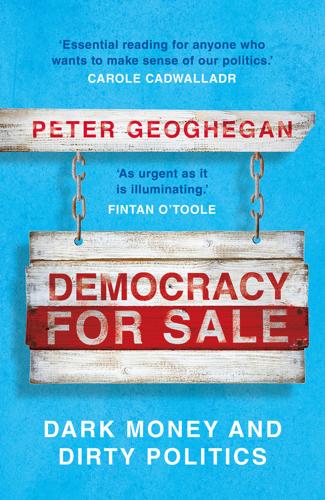
Democracy for Sale: Dark Money and Dirty Politics
by
Peter Geoghegan
Published 2 Jan 2020
“They function not unlike Infowars, Breitbart, the infamous partisan sites that operated from Macedonia during the U.S. presidential campaign or, indeed, the Facebook pages created by Russian military intelligence, all of which produced hypercharged, conspiratorial, partisan news and outraged headlines that could then be pumped into hypercharged, conspiratorial echo chambers.”64 Many of Vox’s digital echo chambers pushed religiously tinged disinformation. Muslims wanted to take Spain back to the time of the Moors. Leftists were encouraging children to have abortions. Highly emotive messages about moral issues – especially those that spark feelings of fear – are a particularly effective way to spread disinformation. Similar tactics were used during the 2016 presidential election, when pro-Kremlin accounts appealed directly to Christian fundamentalists by sharing images that showed Hillary Clinton, devil horns protruding, arm-wrestling with Jesus.65 Religion, as digital expert Claire Wardle explained to me, “is one of the best ways to spread disinformation online
…
Similar tactics were used during the 2016 presidential election, when pro-Kremlin accounts appealed directly to Christian fundamentalists by sharing images that showed Hillary Clinton, devil horns protruding, arm-wrestling with Jesus.65 Religion, as digital expert Claire Wardle explained to me, “is one of the best ways to spread disinformation online.” * Digital disinformation and wealthy foreign donors are not the only sources of electoral interference. States often meddle in each other’s politics. Between 1946 and 1989, the US intervened in more than 60 international elections, mostly in secret without announcing their covert operations to the world.66 Britain and France routinely interfered in their former colonies. The Soviet Union funded communist parties around the world.
…
While they talk a lot about women’s wombs, theirs is a much wider political project, to support authoritarian societies led by ‘strongmen’.” * As this book has looked primarily at the effect of dark money and disinformation on Britain, this chapter has focused on examples of the nativist surge in some of the UK’s European neighbours: Italy, Spain and Hungary. In all three, nationalist appeals to religion and identity have been underpinned by international networks of political influence and digital disinformation. The effects of this can be seen most dramatically in Hungary, where Viktor Orbán has shown how quickly supposedly liberal democratic norms and conventions can be defanged and dismantled.

Stories Are Weapons: Psychological Warfare and the American Mind
by
Annalee Newitz
Published 3 Jun 2024
Unfortunately, courts have been making it more difficult for governments and social media platforms to work together on efforts to stop disinformation. Citizens need accurate information about how to vote. And that will happen only if the government works with social media to clear away the disinformation chaos in a systematic, open way. The best way to do that, the EIP found, was to work with a large staff of human beings who could analyze the disinformation. Though automated propaganda weather reports like the one created by Alizadeh and his team are helpful, Stamos emphasized that humans had to be the final arbiters of what was disinformation and what wasn’t. They understood the context of posts that would stump AI.
…
Propaganda disaster prepping In 2020, I witnessed an online influence campaign so devious that I could not stop thinking about it—in fact, it inspired me to begin researching this book. The reason I found it so compelling was that it was a two-stage psyop: first, the unknown operatives spread a wave of disinformation; next, they spread a second wave that was designed to inoculate people against any efforts to debunk the first wave of disinformation. It was incredibly intricate and complex, and here’s how it went down. Like many Americans, I had been getting most of my news about the Black Lives Matter protests on Twitter, following eyewitness reports in various cities. One night I started to see posts on Twitter claiming that the entire DC area was in lockdown and there was a blackout.1 Posts with the hashtag #DCBlackout began piling up in my feed, and at first they seemed credible.
…
Though I was troubled by how quickly the misinformation had spread, I couldn’t help but admire the complex narrative structure of the hoax—especially the way it was so meta, with the #DCSafe tweets calling attention to themselves as a psyop in order to reinforce disinformation from the first wave of #DCBlackout tweets. The DCBlackout/DCSafe operation was an example of what disinformation experts call “coordinated inauthentic behavior.” Though nobody has identified the perpetrators of this particular psyop, it was certainly coordinated by operatives—possibly foreign—and then amplified by regular people tuning in to the hashtag.

The Age of AI: And Our Human Future
by
Henry A Kissinger
,
Eric Schmidt
and
Daniel Huttenlocher
Published 2 Nov 2021
We cannot avoid answering these questions because our communications, as now constructed, can no longer operate without AI-assisted networks. NETWORK PLATFORMS AND DISINFORMATION National borders have long been permeable to new ideas and trends, including those fostered with a deliberately malign purpose—but never at such scale. While there is broad consensus regarding the importance of preventing intentionally distributed malign disinformation from driving social trends and political events, ensuring this outcome has rarely proved to be a precise or entirely successful undertaking. Moving forward, however, both “offense” and “defense”—both the spread of disinformation and efforts to combat it—will become increasingly automated and entrusted to AI.
…
In the political realm, the world is entering an era in which big data–driven AI systems are informing growing aspects: the design of political messages; the tailoring and distribution of those messages to various demographics; the crafting and application of disinformation by malicious actors aiming to sow social discord; and the design and deployment of algorithms to detect, identify, and counter disinformation and other forms of harmful data. As AI’s role in defining and shaping the “information space” grows, its role becomes more difficult to anticipate. In this space, as in others, AI sometimes operates in ways even its designers can only elaborate in general terms.
…
We must not forgo consideration of the proper balance between human judgment and AI-driven automation on both sides of the equation. For societies accustomed to the free exchange of ideas, grappling with AI’s role in assessing and potentially censoring information has introduced difficult fundamental debates. As the tools for spreading disinformation become more powerful and increasingly automated, the process of defining and suppressing disinformation increasingly appears as an essential social and political function. For private corporations and democratic governments, this role brings not only an unusual but also a frequently unsought degree of influence and responsibility over shifts in social and cultural phenomena—developments that previously had not been operated or controlled by any single actor but had developed across millions of individual interactions in the physical world.

Exponential: How Accelerating Technology Is Leaving Us Behind and What to Do About It
by
Azeem Azhar
Published 6 Sep 2021
Governments have been startlingly late in taking responsibility for combating misinformation. Only in 2018 did the UK government begin to set up a national security unit to tackle disinformation, and even then they were criticised for the slowness with which they proposed to do so.43 Meanwhile the US had, by the end of 2020, no coordinated counter-disinformation strategy steered by any branch of government.44 But if you think this means the future of conflict will be wholly online, you would be mistaken. Disinformation may soften an adversary, sowing doubt in the population; cyberattacks may weaken the day-to-day operations of their economy. But if that doesn’t achieve your objective, killing their soldiers might.
…
Howard, The Global Disinformation Order: 2019 Global Inventory of Organised Social Media Manipulation, Working Paper 3 (Oxford, UK: Project on Computational Propaganda, 2019) <https://comprop.oii.ox.ac.uk/research/posts/the-global-disinformation-order-2019-global-inventory-of-organised-social-media-manipulation/#continue> [accessed 2 January 2021]. 35 Diego Martin et al., Trends in Online Influence Efforts (Empirical Studies of Conflict Project, 2020) <https://esoc.princeton.edu/publications/trends-online-influence-efforts> [accessed 2 January 2021]. 36 Gregory Winger, ‘China’s Disinformation Campaign in the Philippines’, The Diplomat, 6 October 2020 <https://thediplomat.com/2020/10/chinas-disinformation-campaign-in-the-philippines/> [accessed 3 January 2021]. 37 Jack Stubbs and Christopher Bing, ‘Facebook, Twitter Dismantle Global Array of Disinformation Networks’, Reuters, 8 October 2020 <https://www.reuters.com/article/cyber-disinformation-facebook-twitter-idINKBN26T2XF> [accessed 24 March 2021]. 38 Lorenzo Franceschi-Bicchierai, ‘Russian Facebook Trolls Got Two Groups of People to Protest Each Other In Texas’, VICE, 1 November 2017 <https://www.vice.com/en/article/3kvvz3/russian-facebook-trolls-got-people-to-protest-against-each-other-in-texas> [accessed 2 January 2021]. 39 ‘How Covid-19 Is Revealing the Impact of Disinformation on Society’, King’s College London, 25 August 2020 <https://www.kcl.ac.uk/news/how-covid-19-is-revealing-the-impact-of-disinformation-on-society> [accessed 3 January 2021]. 40 ‘Coronavirus: “Murder Threats” to Telecoms Engineers over 5G’, BBC News, 23 April 2020 <https://www.bbc.com/news/newsbeat-52395771> [accessed 2 January 2021]. 41 Wesley R.
…
Howard, The Global Disinformation Order: 2019 Global Inventory of Organised Social Media Manipulation, Working Paper 3 (Oxford, UK: Project on Computational Propaganda, 2019) <https://comprop.oii.ox.ac.uk/research/posts/the-global-disinformation-order-2019-global-inventory-of-organised-social-media-manipulation/#continue> [accessed 2 January 2021]. 35 Diego Martin et al., Trends in Online Influence Efforts (Empirical Studies of Conflict Project, 2020) <https://esoc.princeton.edu/publications/trends-online-influence-efforts> [accessed 2 January 2021]. 36 Gregory Winger, ‘China’s Disinformation Campaign in the Philippines’, The Diplomat, 6 October 2020 <https://thediplomat.com/2020/10/chinas-disinformation-campaign-in-the-philippines/> [accessed 3 January 2021]. 37 Jack Stubbs and Christopher Bing, ‘Facebook, Twitter Dismantle Global Array of Disinformation Networks’, Reuters, 8 October 2020 <https://www.reuters.com/article/cyber-disinformation-facebook-twitter-idINKBN26T2XF> [accessed 24 March 2021]. 38 Lorenzo Franceschi-Bicchierai, ‘Russian Facebook Trolls Got Two Groups of People to Protest Each Other In Texas’, VICE, 1 November 2017 <https://www.vice.com/en/article/3kvvz3/russian-facebook-trolls-got-people-to-protest-against-each-other-in-texas> [accessed 2 January 2021]. 39 ‘How Covid-19 Is Revealing the Impact of Disinformation on Society’, King’s College London, 25 August 2020 <https://www.kcl.ac.uk/news/how-covid-19-is-revealing-the-impact-of-disinformation-on-society> [accessed 3 January 2021]. 40 ‘Coronavirus: “Murder Threats” to Telecoms Engineers over 5G’, BBC News, 23 April 2020 <https://www.bbc.com/news/newsbeat-52395771> [accessed 2 January 2021]. 41 Wesley R.

Going Dark: The Secret Social Lives of Extremists
by
Julia Ebner
Published 20 Feb 2020
The consequences are often severe: 63 per cent of victims reported severe psychological effects, 38 per cent said it led to self-censorship, 8 per cent lost their jobs and 6 per cent left their jobs as a result.28 Discrediting formerly respected news outlets and their reporters is just one part of the information battle. The other part consists in spreading disinformation. Disinformation doesn’t necessarily mean outright lying; it can also include information that is misleading.29 Inaccurate information, severe biases and logical fallacies often reinforce misleading narratives. In the tradition of the Soviet strategic-deception technique of dezinformatsiya, modern-day disinformation campaigns seek to obfuscate, distort or conceal facts.30 The founding counter-intelligence chief of the CIA, James Jesus Angleton, claimed that their goal is to create an information landscape ‘where fact and illusion merge, a kind of wilderness of mirrors’.31 In October 2018, I enter a plain white house in Riga, Latvia that looks like a detached family home.
…
This experimental approach of direct online engagement with radicalised audiences illustrates the potential to further explore the use of social media analysis and messaging in deradicalisation programmes.3 Elves Versus Trolls Sharing pieces of disinformation or propaganda is not illegal but it doesn’t need to go unchallenged. The Baltics, where media manipulation by the Kremlin propaganda machine is a major concern, are currently leading the way in countering disinformation. The so-called Baltic Elves are made up of thousands of voluntary activists who spend their spare time dismantling the disinformation campaigns of Russian trolls – from exposing biased news pieces and misleading statistics to debunking fabricated stories and half-truths.
…
Available at https://www.ifj.org/media-centre/news/detail/category/press-releases/article/ifj-survey-two-thirds-of-women-journalists-suffered-gender-based-online-attacks. 29Caroline Jack, ‘Lexicon of Lies: Terms for Problematic Information’, Data and Society Research Institute, 2017. 30Peter Pomerantsev, Nothing Is True and Everything Is Possible (Public Affairs, 2014), and John Pollock, ‘Russian Disinformation Technology’, MIT Technology Review, 13 April 2017. Available at https://www.technologyreview.com/s/604084/russian-disinformation-technology/. 31David Robarge, ‘Moles, Defectors, and Deceptions: James Angleton and CIA Counterintelligence’, Journal of Intelligence History 3(2), Winter 2003, p. 31. 32Interview with Donara Barojan, deputy director of the NATO Digital Forensic Research Lab. 33Jon White, ‘Dismiss, Distort, Distract, and Dismay: Continuity and Change in Russian Disinformation’, IES Policy Brief, Issue 2016/13, May 2016. Available at https://www.ies.be/files/Policy%20Brief_Jon%20White.pdf. 34Chloe Colliver et al., ‘Smearing Sweden: International Influence Campaigns in the 2018 Swedish Election’, ISD, October 2018.

System Error: Where Big Tech Went Wrong and How We Can Reboot
by
Rob Reich
,
Mehran Sahami
and
Jeremy M. Weinstein
Published 6 Sep 2021
This felt immediately tangible as it spoke to understanding a holistic system rather than just the problematic parts. If you want to improve something, you have to be able to measure it.” He went on to suggest that Twitter would try to take on that challenge. But his message came two years after Russian operatives had flooded the platform with disinformation during the 2016 US presidential election, paving the way for domestic disinformation campaigns in 2020. In one of our classroom conversations at Stanford, Nicole Wong, who had served as vice president and deputy general counsel at Google before joining Twitter as legal director of products and eventually being appointed deputy chief technology officer of the United States in the Obama administration, discussed the emphasis on user engagement in online platforms such as YouTube.
…
One major source of pollution in the information ecosystem is misinformation, “claims that contradict or distort common understandings of verifiable facts.” Misinformation can spread in a wide variety of ways: messages from political leaders; published articles, blog posts, and tweets; even advertising. Disinformation is the subset of misinformation that is deliberately propagated to deceive. The goal is to undermine the ability of people to make a choice or judgment with clarity about the verifiable facts. Concerns about the spread of disinformation on social media burst into public view with Russian interference in the 2016 presidential election. Teenagers in the Macedonian town of Veles were paid up to $8,000 per month each to operate approximately a hundred pro-Trump fake news sites with innocuous-sounding names such as USADailyPolitics.com.
…
Russia’s Internet Research Agency, one of the “troll factories,” served as an industrial-scale manufacturer of disinformation. According to Twitter, the IRA operated 3,814 accounts, and individual operators were responsible for creating a high volume of content daily. According to one report, workers had to deliver up to fifty comments daily on new articles, up to six Facebook pages with multiple daily posts, or ten Twitter accounts with at least fifty daily tweets. Did the disinformation they produced actually register with the sites’ users? One team tracked more than 2,500 adults during the five weeks before the 2016 election.
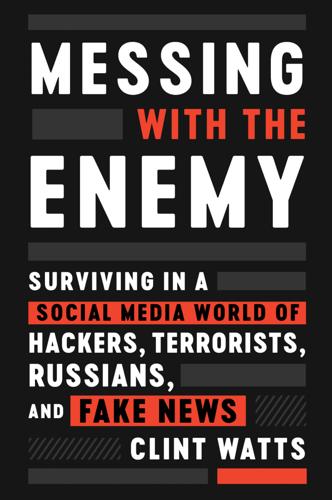
Messing With the Enemy: Surviving in a Social Media World of Hackers, Terrorists, Russians, and Fake News
by
Clint Watts
Published 28 May 2018
Sarah Sanders, White House press secretary, then shared a doctored video on Twitter seeking to justify Acosta’s dismissal for aggressive action. The video had been sped up and the reporter’s comments had been removed.38 The rapid proliferation of social media disinformation was expected, but rapid proliferation of social media disinformation from the White House was not. If America can’t count on the commander in chief to do the right thing, we most certainly can’t expect everyone else to do much better. The best disinformation peddlers in the future will have three distinct technological advantages over those that came before them. Cambridge Analytica demonstrated how the aggregation of user data provided deep insights for nimbly targeting and influencing selected audience members.
…
Machine learning applications will be able to pore over old data and current information feeds to design the perfect message for an entire preference bubble and the precise variant for each individual in the bubble, as well as when, how, and where to deliver it. Advertisers, political campaigns, and Russian disinformation peddlers would be handicapping themselves if they didn’t use this approach to push their products and ideas. Disinformation and misinformation have been easy to create and proliferate as the barriers to entry for these technological tools have lowered. False print stories and graphic memes have had a devastating effect. The latest dangerous technological dimension coming online now is falsified audio and video.
…
GOP sponsor of the bill Senator Lankford said the measure “helps the states to prepare our election infrastructure for the possibility of interference from not just Russia, but possibly another adversary like Iran or North Korea or a hacktivist group.”37 I can think of no time in American history when public and government attention and outrage have been so high without seeing any real progress toward solving the problem. Congress is unlikely to stem the tide against disinformation, and American elected officials have become the source of as much misinformation as authoritarians. Facebook’s public relations counteroffensive mirrors what I expected as I finished writing this book. Moving forward, the worst abusers of social media for nefarious influence will be public relations firms and political campaigns. The midterm elections of 2018 showed how Russia’s art would be quickly adopted by the most aggressive and best resourced. Russia didn’t push much disinformation to influence the 2018 elections, but even if they had, it would have been completely outpaced by the endless volumes of false information peddled by political campaigns and the White House.

The Death of Truth: Notes on Falsehood in the Age of Trump
by
Michiko Kakutani
Published 17 Jul 2018
In a 2016 documentary: Brandon Harris, “Adam Curtis’s Essential Counterhistories,” New Yorker, Nov. 3, 2016. “red-pilling the normies”: Alice Marwick and Rebecca Lewis, “The Online Radicalization We’re Not Talking About,” Select All, May 18, 2017. study on online disinformation: Alice Marwick and Rebecca Lewis, Media Manipulation and Disinformation Online, Data and Society Research Institute, May 15, 2017. “once groups have been red-pilled”: Marwick and Lewis, “Online Radicalization We’re Not Talking About.” “it’s a surprisingly short leap”: Ibid. a lot of fake news: BBC Trending, “The Saga of ‘Pizzagate’: The Fake Story That Shows How Conspiracy Theories Spread,” BBC News, Dec. 2, 2016.
…
False claims about the U.K.’s financial relationship with the EU (emblazoned on a Vote Leave campaign bus) helped swing the vote in favor of Brexit, and Russia ramped up its sowing of dezinformatsiya in the run-up to elections in France, Germany, the Netherlands, and other countries in concerted propaganda efforts to discredit and destabilize democracies. Pope Francis reminded us, “There is no such thing as harmless disinformation; trusting in falsehood can have dire consequences.” Former president Barack Obama observed that “one of the biggest challenges we have to our democracy is the degree to which we do not share a common baseline of facts”; people today are “operating in completely different information universes.”
…
Invoking the iconography of the movie The Matrix—in which the hero is given a choice between two pills, a red one (representing knowledge and the harsh truths of reality) and a blue one (representing soporific illusion and denial)—members of the alt-right and some aggrieved men’s rights groups talk about “red-pilling the normies,” which means converting people to their cause. In other words, selling their inside-out alternative reality, in which white people are suffering from persecution, multiculturalism poses a grave threat, and men have been oppressed by women. Alice Marwick and Rebecca Lewis, the authors of a study on online disinformation, argue that “once groups have been red-pilled on one issue, they’re likely to be open to other extremist ideas. Online cultures that used to be relatively nonpolitical are beginning to seethe with racially charged anger. Some sci-fi, fandom, and gaming communities—having accepted run-of-the-mill anti-feminism—are beginning to espouse white-nationalist ideas.

Spies, Lies, and Algorithms: The History and Future of American Intelligence
by
Amy B. Zegart
Published 6 Nov 2021
Zegart and Morell, “Spies, lies, and algorithms.” 86. Mike Isaac, “Facebook Finds New Disinformation Campaigns and Braces for 2020 Torrent,” New York Times, October 21, 2019, https://www.nytimes.com/2019/10/21/technology/facebook-disinformation-russia-iran.html. 87. Jessica Brandt and Torrey Taussig, “The Kremlin’s Disinformation Playbook Goes to Beijing,” Brookings, https://www.brookings.edu/blog/order-from-chaos/2020/05/19/the-kremlins-disinformation-playbook-goes-to-beijing/ (accessed September 26, 2020); Mark Scott, Laura Kayali, and Laurens Cerulus, “Brussels Accuses China of Peddling Disinformation,” Politico, June 10, 2020, https://www.politico.com/news/2020/06/10/brussels-accuses-china-of-peddling-disinformation-311303 (accessed September 26, 2020). 88.
…
Stephanie Bodoni, “China, Russia are spreading virus misinformation, EU says,” Bloomberg, June 10, 2020, https://www.bloomberg.com/news/articles/2020-06-10/eu-points-finger-at-china-russia-for-covid-19-disinformation. See also “EEAS Special Report Update: Short Assessment of Narratives and Disinformation Around the COVID-19 Pandemic,” EUvsDiSiNFO, May 20, 2020, https://euvsdisinfo.eu/eeas-special-report-update-short-assessment-of-narratives-and-disinformation-around-the-covid19-pandemic-updated-23-april-18-may/; Kathy Gilsinian, “How China is planning to win back the world,” Atlantic, May 28, 2020, https://www.theatlantic.com/politics/archive/2020/05/china-disinformation-propaganda-united-states-xi-jinping/612085/. 116. “Statement by NCSC Director William Evanina: 100 Days Until Election 2020,” press release, Office of the Director of National Intelligence, July 24, 2020, https://www.dni.gov/index.php/newsroom/press-releases/item/2135-statement-by-ncsc-director-william-evanina-100-days-until-election-2020; “Statement by NCSC Director William Evanina: Election Threat Update for the American Public,” press release, Office of the Director of National Intelligence, August 7, 2020, https://www.dni.gov/index.php/newsroom/press-releases/item/2139-statement-by-ncsc-director-william-evanina-election-threat-update-for-the-american-public; Robert Draper, “Unwanted Truths: Inside Trump’s Battles with U.S.
…
It took years to gain international attention.108 Now, Russian disinformation is designed to flood the zone, reaching millions within hours across every format (text, video, audio, photos) and information channel imaginable—social media, Internet websites, satellite television, and traditional radio and television.109 Volume is key. Twitter now estimates that Russia used more than fifty thousand automated accounts or bots to Tweet election-related content during the 2016 presidential campaign. Twitter and Facebook are the best-known disinformation superhighways, but there are many others. Russian officers have infiltrated everything from 4chan to Pinterest.110 Overt state-funded media outlets are used to amplify false messages.
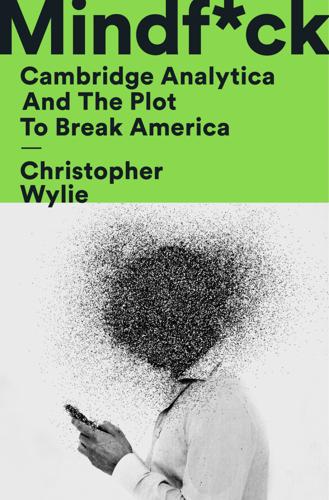
Mindf*ck: Cambridge Analytica and the Plot to Break America
by
Christopher Wylie
Published 8 Oct 2019
They could just get the Americans to do it themselves, by clicking, liking, and sharing. Americans on Facebook did the Russians’ work for them, laundering their propaganda through the First Amendment. But this new era of scaled disinformation is not confined to the realm of politics. Companies like Starbucks, Nike, and other fashion brands have found themselves targets of Russian-sponsored disinformation operations. When brands make statements that wade into existing social or racial tensions, there have been several identified instances in which Russian-sponsored fake news sites, botnets, and social media operations have activated to weaponize these narratives and provoke social conflict.
…
In a rare moment of solidarity, government ministers and senior opposition members of Parliament sang as a unified chorus about Facebook’s negligence in failing to prevent its platform from becoming a hostile propaganda network for elections and the implications for Western democracies. The next wave of stories focused on Brexit, with the integrity of the referendum vote called into question. A collection of documents I provided to law enforcement revealed that the Vote Leave campaign had used secret Cambridge Analytica subsidiaries to spend dark money to propagate disinformation on Facebook and Google ad networks. This was determined to be illegal by the U.K.’s Electoral Commission, with the scheme ending up as one of the largest and most consequential breaches of campaign finance law in British history. The office of the U.K.’s prime minister, 10 Downing Street, descended into communication crisis as the evidence of Vote Leave’s cheating emerged.
…
After the hearing, the FBI, DOJ, SEC, and FTC launched investigations. The U.S. House Intelligence Committee, House Judiciary Committee, Senate Intelligence Committee, and Senate Judiciary Committee all wanted to talk to me. Within weeks, the European Union and more than twenty countries had opened up inquiries into Facebook, social media, and disinformation. I told my story to the world, and now every screen was a mirror reflecting it back at me. For two weeks straight, my life was chaos. Days would start with appearances on British breakfast shows and European networks at 6 A.M. London time, continuing with interviews on U.S. networks until midnight.

Other Pandemic: How QAnon Contaminated the World
by
James Ball
Published 19 Jul 2023
Those who spend much of their time with those afflicted report that it is a long and arduous process to rebuild trust and normal relations with a loved one who has fallen into Q. One person who spends a huge amount of time reporting on those who have gone down that route is Marianna Spring, the BBC’s specialist correspondent covering disinformation and social media – in practice, essentially a QAnon/antivaxx/climate change disinformation beat. A key principle for her, she says, is to remember why conspiracy theories latch on to people. If they work thanks to emotion, why should we expect clinical and impassive facts to shift people’s views?10 ‘Conspiracy networks are so pervasive because they are very emotive and because they succeed in drawing people in,’ she says.
…
By putting a human face to this problem – the people who are impacted, the families that are torn apart, the people who are instigating and coordinating this – I think that that makes for more impactful investigative reporting alongside the fact-checking.’ Spring repeatedly praises her colleagues who work fact-checking online disinformation, but says her role is a very different one. Instead of trying to get into the truth or otherwise of each specific conspiratorial claim, her role is to tell compelling stories about the people drawn into those worlds, and the effects they have on the people close to them. It’s very much about … almost weaponising the very techniques that allow online disinformation to go so viral, and using them in a way of covering the topic that means that it has impact and is able to reach all kinds of different audiences.
…
It’s very much about … almost weaponising the very techniques that allow online disinformation to go so viral, and using them in a way of covering the topic that means that it has impact and is able to reach all kinds of different audiences. Because what often strikes me when I’m interviewing, particularly experts on the topic of anti-vaxxers, for example, or Covid disinformation, is that they will be very measured, very reasonable – and good scientists and good doctors have to be like that. And that’s a brilliant thing. But unfortunately, it means that the online disinformation space is dominated by people who talk in absolutes, and who make this kind of information very appealing, and very emotive and very frightening, very engaging. So I think that our reporting on this topic has to really draw people in and help them to understand the real world implications that it has and the people that effects rather than it seeming like this kind of abstract internet thing that they can’t relate to their own lives.

Aftershocks: Pandemic Politics and the End of the Old International Order
by
Colin Kahl
and
Thomas Wright
Published 23 Aug 2021
“Disclosing Networks of State-Linked Information Operations We’ve Removed,” Twitter Safety, June 12, 2020, https://blog.twitter.com/en_us/topics/company/2020/information-operations-june-2020.html. 90. Matt Apuzzo, “Pressured by China, E.U. Softens Report on Covid-19 Disinformation,” New York Times, April 24, 2020, https://www.nytimes.com/2020/04/24/world/europe/disinformation-china-eu-coronavirus.html. 91. Mark Scott, Laura Kayali, and Laurens Cerulus, “European Commission Accuses China of Peddling Disinformation,” Politico, June 10, 2020, https://www.politico.eu/article/european-commission-disinformation-china-coronavirus/. 92. Yang, “China’s Early Warning System.” 93. Whittell, “The Disappeared.” 94. Yao Yang, “Is a New Cold War Coming?
…
Most people around the world do not pay all that much attention to geopolitics, but in this case their lives were upended because of something that happened in China. Governments across the globe knew that they could not trust the information coming out of Beijing—now or in the future. SOWING DISINFORMATION China supplemented its so-called mask diplomacy with a massive global disinformation campaign. The centerpiece of this effort was to raise doubts about the virus’s origins. On February 27, Zhong Nanshan, a Chinese infectious disease expert, told a press conference, “The infection was first spotted in China but the virus may not have originated in China.”75 On March 8, China’s ambassador to South Africa tweeted: Although the epidemic first broke out in China, it did not necessarily mean that the virus is originated from China, let alone “made in China.”76 Foreign Ministry spokesperson Zhao Lijian, a particularly brash and assertive Chinese diplomat, tweeted out to his 300,000 followers on March 12: CDC was caught on the spot.
…
American intelligence agencies believe that in mid-March 2020, China actively pushed out false text messages telling Americans that a friend of a friend or a relative had confided that the federal government was about to shut down the entire country once they had the military ready to enforce it.84 This prompted a National Security Council tweet in response: “Text message rumors of a national #quarantine are FAKE. There is no national lockdown.”85 Trump, however, seemed unconcerned. When asked on Fox News about China’s disinformation campaign, he said, “They do it and we do it and we call them different things. Every country does it.”86 Laura Rosenberger, who was then leading the Alliance for Securing Democracy Project at the German Marshall Fund, described the disinformation strategy’s goals: “to deflect blame from Beijing’s own failings and to highlight other governments’ missteps, portraying China as both the model and the partner of first resort for other countries.”
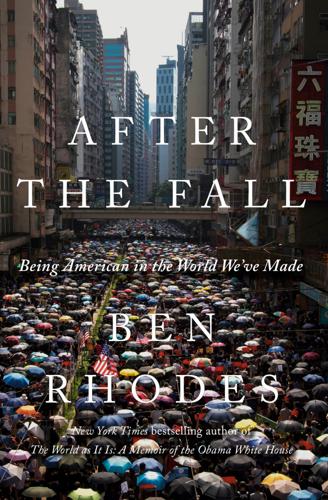
After the Fall: Being American in the World We've Made
by
Ben Rhodes
Published 1 Jun 2021
This nation’s new technologies proliferated like an uncontrolled virus before we understood their impact, transforming the way that human beings consume information; at first hopeful, the unifying allure of the Internet and social media segmented people back into lonely tribes where they could be more easily manipulated by propaganda, disinformation, and conspiracy theory. Somehow, after three decades of unchecked American capitalism, military power, and technological innovation, the currents of history had turned against democracy itself, bringing back those older forms of nationalism and social control in new packaging. To be American in 2020 was to live in a country diminished in the world, unwilling to control the spread of disease or face up to our racism, and looking over the precipice of abandoning the very democracy that was supposed to be the solid core of our national identity.
…
How the 2008 financial crisis had collapsed not only the global economy, but also confidence in the very fact of American-led globalization, opening the door to deeply familiar nationalist appeals. How the post-9/11 wars had also discredited American leadership while opening the door to a hypersecuritized politics of Us versus Them, one that could easily be repurposed to target an available Other in country after country. How the spread of social media had unleashed a flood of disinformation that undermined democracy while offering autocrats ever more powerful tools of social and political control. I saw this most clearly in three countries that were Communist throughout the Cold War and are at the center of the political forces remaking the world today. In Hungary, where the anticommunist liberal turned reactionary nationalist Viktor Orban took advantage of the 2008 financial crisis to create a model of authoritarian politics that is strikingly similar to the playbook that the Republican Party has run in America.
…
She rocketed to international attention in 1989, the year that the Berlin Wall came down, by leading a democratic movement protesting the military government. By 2017, she was doing what she felt she needed to do to survive in a world where nationalism ran amok. Her own journey—from democracy icon to tacit collaborator in brutality fueled by Buddhist nationalism and rampant anti-Rohingya disinformation on Facebook—didn’t cut against the currents of history, it drifted in the wake of events in the wider world. In April 2017, I went to Milan with Barack Obama. He was there to speak about climate change a few weeks after Donald Trump pulled out of the Paris Climate Agreement. The rhythm of the trip felt familiar: a private plane, a block of hotel rooms, Secret Service agents.
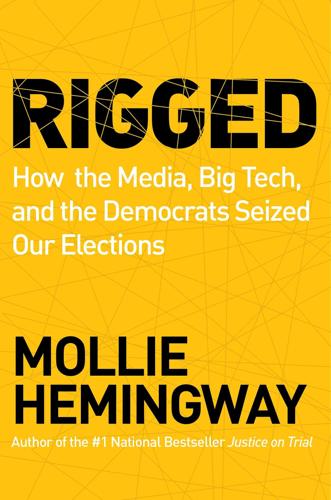
Rigged: How the Media, Big Tech, and the Democrats Seized Our Elections
by
Mollie Hemingway
Published 11 Oct 2021
Less than forty-eight hours after the release of the Veritas video, the New York Times’s coverage of the report began with this sentence: “A deceptive video released on Sunday by the conservative activist James O’Keefe, which claimed through unidentified sources and with no verifiable evidence that Representative Ilhan Omar’s campaign had collected ballots illegally, was probably part of a coordinated disinformation effort, according to researchers at Stanford University.”60 The headline was even more declarative: “Project Veritas Video Was a ‘Coordinated Disinformation Campaign,’ Researchers Say.”61 The article offered no proof that Project Veritas’s report was a “disinformation campaign.”62 The Times’s entire report was premised on speculation. Since Project Veritas’s report came out soon after a big New York Times report on President Trump’s leaked tax returns, the Times hubristically assumed the voter fraud report was released for the sole purpose of stealing the limelight from its own reporting.
…
“I have never spoken to my son about his overseas business dealings,” Biden said.7 There was already a mountain of facts suggesting Joe Biden was directly involved in his son’s corrupt deals, and the evidence on Hunter’s laptop confirmed that Biden was lying. When the New York Post dropped its first report on Hunter’s laptop in October 2020, major news outlets immediately labeled reports sourced to Hunter’s laptop “Russian disinformation.”8 They offered no proof to back up claims of disinformation, and ignored corroborating sources and evidence confirming the information from the laptop was accurate. The Biden campaign didn’t even deny that the emails and other laptop evidence were authentic. The media’s hysterical and hyper-partisan reaction to the reports emerging about Hunter’s laptop was all the excuse progressive social media companies needed to censor the news of the Biden family’s corruption.
…
That same day, the New York Times also reported, “Trump Said to Be Warned That Giuliani Was Conveying Russian Disinformation,” and, further, that Trump had “shrugged off” the warning about his aide who was involved in bringing the laptop story to light.79 These reports were naturally buttressed by more outspoken members of the “intelligence community.”80 The default media explanation for the laptop became—yet again—a Vladimir Putin–backed conspiracy, where the laptop was invented as part of a Russian disinformation campaign to meddle in American elections. By contrast, the notion that erratic Hunter Biden, who once left his drugs and crack pipe in a rental car, had forgotten to pick up his laptop at a computer repair shop a short distance from his house was deemed too far-fetched.
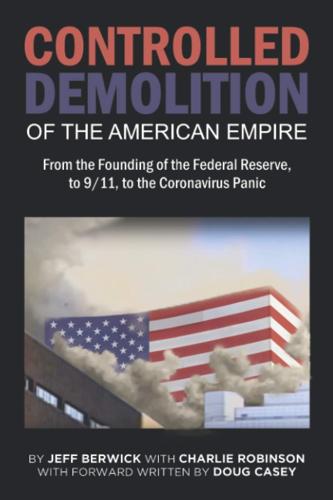
The Controlled Demolition of the American Empire
by
Jeff Berwick
and
Charlie Robinson
Published 14 Apr 2020
• There will always be an attack against the weakest portion of the person’s rebuttal of the disinformation, then this will be used to imply that everything else they are saying must be equally as weak. • The disinformer will never, ever, admit that they are lying, so one should not even bother waiting for it. • Expect the disinformer to ferociously pushback over the top with a statement like “How dare you accuse me of lying about something as serious as this?”. The more enraged, vicious, and vocal; the bigger the lie they are trying to hide. [See Bill Clinton]. • Do not expect a professional disinformer to ever actually debate the real topic and actual heart of the lie, but rather to dismiss everything as being rumors, internet lies, baseless accusations, speculation, personal attacks against their character, or a hit piece by their opponents or rivals
…
• Disinformers will demand proof from those challenging their version of events, then if proof is presented, they will claim that the evidence is incorrect, irrelevant, or invalid. • It is not unheard of for disinformers to simply manufacture new lies to try and validate their old lies. Then create even more lies to back up the others. • Multiple streams of the same disinformation talking points will be activated and pushed into the corporate media at the same time to give the impression that where there is smoke, there must be fire. • Any good disinformation is 80% truth mixed with 20% lies. Just enough truth to check out factually to the casual observer, but not enough truth to actually be correct. • Disinformers will often try to act annoyed that they are even being questioned about a particular event as if the case has already been closed and the science settled while trying desperately to change the topic completely
…
• The percentage of age 65+ viewers that are now getting their news online jumped by an astounding 10% in just 12 months.174 Whether the reason is convenience or reliability, the numbers show that television news is in free fall, and they have no one to blame but themselves. Their Disinformation Business The intentional promotion of false stories and lies has always been a cornerstone of the CIA’s charter. Their job is to collect good information and keep it secret, and they use disinformation to muddy the waters in order to throw people off of their tracks. Disinformation is horribly damaging to a free society and a very effective tool for those in power to cover up for their criminal deeds. There is an art form to lying professionally, but once the tactics are exposed and people become aware of them, they become far easier to spot going forward.
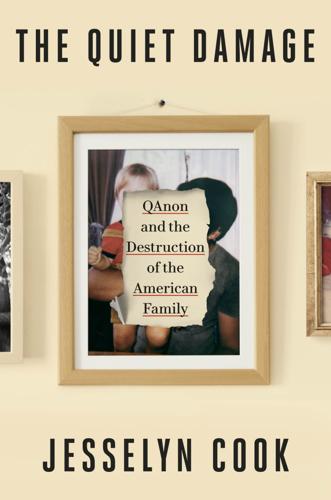
The Quiet Damage: QAnon and the Destruction of the American Family
by
Jesselyn Cook
Published 22 Jul 2024
GO TO NOTE REFERENCE IN TEXT partisan lies exploiting trauma: S. Rodriguez and M. Caputo, “ ‘This Is F---ing Crazy’: Florida Latinos Swamped by Wild Conspiracy Theories,” Politico, September 14, 2020, https://www.politico.com/news/2020/09/14/florida-latinos-disinformation-413923. GO TO NOTE REFERENCE IN TEXT Campaigns to manipulate minorities: A Growing Threat: The Impact of Disinformation Targeted at Communities of Color (EventID=114642), April 28, 2022, https://www.youtube.com/watch?v=qXv_1TDyNY4. GO TO NOTE REFERENCE IN TEXT CHAPTER 6 Hayes was better known as “Praying Medic”: D.
…
Borum, Psychology of Terrorism (Tampa: University of South Florida, 2004), Office of Justice Programs, https://www.ojp.gov/pdffiles1/nij/grants/208552.pdf. GO TO NOTE REFERENCE IN TEXT had shifted—not shed—her conformation bias: P. Krekó, “ ‘Conformation Bias’: Political Tribalism as a Driver of Disinformation,” Power 3.0: Understanding Modern Authoritarian Influence (blog), January 15, 2019, International Forum for Democratic Studies, https://www.power3point0.org/2019/01/15/conformation-bias-political-tribalism-as-a-driver-of-disinformation/. GO TO NOTE REFERENCE IN TEXT CHAPTER 9 when only a minority of women were working: U.S. Dept. of Labor, Women Workers in 1960: Geographical Differences, Bulletin 284 (Washington, DC: Government Printing Office, 1962), Federal Reserve Bank of St.
…
Dumitru, “Testing Children and Adolescents’ Ability to Identify Fake News: A Combined Design of Quasi-experiment and Group Discussions,” Societies 10, no. 3 (2020): 71, https://doi.org/10.3390/soc10030071. GO TO NOTE REFERENCE IN TEXT those from disadvantaged backgrounds: P. N. Howard, L.-M. Neudert, and N. Prakash, “Digital Misinformation / Disinformation and Children,” report, UNICEF Office of Global Insight and Policy, August 2021, https://www.unicef.org/globalinsight/media/2096/file/UNICEF-Global-Insight-Digital-Mis-Disinformation-and-Children-2021.pdf. GO TO NOTE REFERENCE IN TEXT The cognitive abilities required: M. Anthony, “Cognitive Development in 6-7 Year Olds,” Scholastic, accessed October 26, 2023, https://www.scholastic.com/parents/family-life/creativity-and-critical-thinking/development-milestones/cognitive-development-6-7-year-olds.html.

The Coming Wave: Technology, Power, and the Twenty-First Century's Greatest Dilemma
by
Mustafa Suleyman
Published 4 Sep 2023
GO TO NOTE REFERENCE IN TEXT More than seventy countries Samantha Bradshaw et al., “Industrialized Disinformation: 2020 Global Inventory of Organized Social Media Manipulation,” Oxford University Programme on Democracy & Technology, Jan. 13, 2021, demtech.oii.ox.ac.uk/research/posts/industrialized-disinformation. GO TO NOTE REFERENCE IN TEXT The CIA, too, is no stranger See, for example, Krassi Twigg and Kerry Allen, “The Disinformation Tactics Used by China,” BBC News, March 12, 2021, www.bbc.co.uk/news/56364952; Kenddrick Chan and Mariah Thornton, “China’s Changing Disinformation and Propaganda Targeting Taiwan,” Diplomat, Sept. 19, 2022, thediplomat.com/2022/09/chinas-changing-disinformation-and-propaganda-targeting-taiwan/; and Emerson T.
…
Soon these videos will be fully and believably interactive. You are talking directly to him. He knows you and adapts to your dialect and style, plays on your history, your personal grievances, your bullying at school, your terrible, immoral Westernized parents. This is not disinformation as blanket carpet bombing; it’s disinformation as surgical strike. Phishing attacks against politicians or businesspeople, disinformation with the aim of major financial-market disruption or manipulation, media designed to poison key fault lines like sectarian or racial divides, even low-level scams—trust is damaged and fragility again amplified. Eventually entire and rich synthetic histories of seemingly real-world events will be easy to generate.
…
Until now effective disinformation campaigns have been labor-intensive. While bots and fakes aren’t difficult to make, most are of low quality, easily identifiable, and only moderately effective at actually changing targets’ behavior. High-quality synthetic media changes this equation. Not all nations currently have the funds to build huge disinformation programs, with dedicated offices and legions of trained staff, but that’s less of a barrier when high-fidelity material can be generated at the click of a button. Much of the coming chaos will not be accidental. It will come as existing disinformation campaigns are turbocharged, expanded, and devolved out to a wide group of motivated actors.

Off the Edge: Flat Earthers, Conspiracy Culture, and Why People Will Believe Anything
by
Kelly Weill
Published 22 Feb 2022
And these are acts of probably accidental suppression, carried out by corporate entities that only really take action when bullied into it by activists. Codified into law or placed under government oversight, the fight against “disinformation” could also ricochet back onto dissidents, this time with real legal repercussions. In March 2020, Ethiopia passed a law called the Hate Speech and Disinformation Prevention and Suppression Proclamation. On its face, the law was an attempt to combat social-media-based violence, like a series of ethnic conflicts that resulted in at least sixty-seven deaths after online rumors inflamed previous tensions in the country.
…
TikTok was also accused of censoring footage of then-ongoing protests in Hong Kong, a charge the company has denied. Authoritarian regimes aren’t the only ones contemplating a crackdown. Democratic US senator Elizabeth Warren made “fighting digital disinformation” a platform in her 2020 presidential campaign. Alongside potentially helpful proposals like publicizing company data and allowing users to opt out of social media companies’ opaque recommendation algorithms, her team included a suggestion to create criminal penalties for people who knowingly share disinformation about when and where to vote. Had Warren’s platform moved toward law, it would have likely run into a First Amendment challenge: Social media posts encouraging one’s political opponents to vote on the wrong day are obnoxious but are likely protected as free speech.
…
I Wasn’t,” Medium, May 23, 2020, https://fightfortheftr.medium.com/facebook-told-my-followers-i-was-spreading-misinformation-about-government-surveillance-i-wasnt-63622dd7ae56. 204 “harassment and bullying” Sam Levin, “YouTube Under Fire for Censoring Video Exposing Conspiracy Theorist Alex Jones,” Guardian, April 23, 2018, www.theguardian.com/technology/2018/apr/23/youtube-alex-jones-sandy-hook-media-matters-video. 204 purge in 2019 Kelly Weill, “YouTube Crackdown on Extremism Also Deleted Innocent Videos,” Daily Beast, June 6, 2019, www.thedailybeast.com/youtube-crackdown-on-extremism-also-deleted-videos-combating-extremism. 205 accidentally flagged factual content Jay Peters, “Facebook Was Marking Legitimate News Articles about the Coronavirus as Spam Due to a Software Bug,” Verge, March 17, 2020, www.theverge.com/2020/3/17/21184445/facebook-marking-coronavirus-posts-spam-misinformation-covid-19. 205 Ethiopia passed a law “Ethiopia: Bill Threatens Free Expression,” Human Rights Watch, December 19, 2019, www.hrw.org/news/2019/12/19/ethiopia-bill-threatens-free-expression; Simon Marks, “67 Killed in Ethiopia Unrest, but Nobel-Winning Prime Minister Is Quiet,” New York Times, October 25, 2019, www.nytimes.com/2019/10/25/world/africa/ethiopia-protests-prime-minister.html. 205 basis to arrest a journalist Edrine Wanyama, “Ethiopia’s New Hate Speech and Disinformation Law Weighs Heavily on Social Media Users and Internet Intermediaries,” Collaboration on International ICT Policy for East and Southern Africa, July 22, 2020, https://cipesa.org/2020/07/ethiopias-new-hate-speech-and-disinformation-law-weighs-heavily-on-social-media-users-and-internet-intermediaries; “Ethiopian Journalist Yayesew Shimelis Detained Following COVID-19 Report,” Committee to Protect Journalists, April 1, 2020, https://cpj.org/2020/04/ethiopian-journalist-yayesew-shimelis-detained-fol/. 205 leaked documents obtained by the Guardian Alex Hern, “Revealed: How TikTok Censors Videos That Do Not Please Beijing,” Guardian, September 25, 2019, www.theguardian.com/technology/2019/sep/25/revealed-how-tiktok-censors-videos-that-do-not-please-beijing. 206 when and where to vote “Fighting Digital Disinformation,” Warren Democrats, https://elizabethwarren.com/plans/fighting-digital-disinformation. 206 exclusive banner Kelly Weill, “Flat Earthers Call Trump’s Space Force Idea ‘Impossible,’ ” Daily Beast, August 10, 2018, https://www.thedailybeast.com/flat-earthers-call-trumps-space-force-idea-impossible. 207 Flat Mars Society Elon Musk (@elonmusk), “Why is there no Flat Mars Society!?”

Near and Distant Neighbors: A New History of Soviet Intelligence
by
Jonathan Haslam
Published 21 Sep 2015
One promising institutional innovation was the special office for disinformation founded by Artuzov and subsequently taken up by Unshlikht. On January 11, 1923, the production of disinformation (deza) about Russia’s domestic and foreign policy “and also the state of its armed forces and the measures taken for the defence of the republic” was centralised.55 Faking Politburo minutes, departmental memoranda, and false orders of battle topped the list of priorities. These practices peaked under Nikita Khrushchev with the formation of A Directorate (disinformation) in the KGB buttressed by the Information Department of the Central Committee, which ballooned as the International Information Department into the 1980s.
…
On June 17, Stalin brusquely dismissed Fitin’s reports of imminent invasion as “disinformation.”57 Too late, covert information reaching the Soviet embassy in Berlin impressed even the usually indifferent Dekanozov, whose loyalty to Stalin could not be doubted. But even on the eve of invasion, as late as June 21, Beria, ever sensitive to Stalin’s state of mind and ever conscious of the fate of his predecessors, overreacted, demanding Dekanozov’s immediate recall and punishment for continually bombarding them with “disinformation” about an imminent German invasion—surely the nadir of Moscow’s intelligence assessment.58 Beria, utterly inexperienced but inebriated by overweening self-confidence, proved to be the most disastrous head of intelligence the Soviet Union ever had. 5.
…
—Russian proverb RUSSIAN INTELLIGENCE IDIOM (SOVIET PERIOD) Agenturíst: operative responsible for running agents Aktívnaya razvédka/aktívka (active intelligence): terrorism and sabotage Aktívnye meropriyátiya (active measures): black propaganda, dirty tricks, etc. Boevýe shífry: working ciphers Bol’shói Dom (literally, the “Big House”): Comintern; later the Lubyanka Chertvyórtyi: the Fourth Directorate of the Staff/General Staff, later GRU Dezá (dezinformátsiya): disinformation Enkavedíst: employee of the NKVD (GUGB), state security Ente-eróvsev: scientific and technical intelligence operative Gámma: ciphering sequence/one-time pad Gebíst: state security operative Geberóvskii: state security operative Gereúshnik: GRU operative Kagebíst/kagebéshnik: KGB operative Kirpích (literally, “brick”): watchman on delegations abroad Komitétchik (literally, “committee man”): KGB operative Kontóra (literally, “office”): KGB First Main Directorate at Yasenevo Krokíst: counterintelligence operative, state security (OGPU) Krýsha (literally, “roof”): cover Lástochnik (swallow): female operative employed for seduction Lesá (the woods): KGB school, later the First Main Directorate at Yasenevo Lózung: a crib for breaking open a cipher Marshrútnyi agént: employee of state security handling communications Nevidímyi front (invisible front): secret intelligence Óboroten (literally, “shapeshifter”): turncoat/traitor Omsóvets: operative in Comintern’s department for international communications Opér: abbreviation for either Operatívnyi sotrúdnik/ofitsér or Operabótnik Operabótnik: KGB operative Operatívnyi sotrúdnik/ofitsér: GRU operative Opertékhnik: a technical operative Operupolnomóchennyi: one responsible for a particular operation Osobísty: GRU officers Osóbye meropriyátiya (special measures): assassination and other tasks approved only by the Politburo Osóbye zadáchi (special tasks): assassination and other tasks approved only by the Politburo Osvedomítel’: information operative Pe-eróvets: political intelligence operative Podkrýshnik: operative under deep cover Razvédupr’ (Razvedyvatel ’noe upravlenie): a generic term for military intelligence Rezident: chief of a secret intelligence station Rezidentura: secret intelligence station Sapogí (boots): KGB term for GRU counterparts S”em (literally, “removal”): seizure of a traitor Shifrográmma: ciphered telegram Svád’ba (literally, “wedding”): seizure of a traitor Tsereúshnik: CIA officer Verbóvshchik: operative specialising in recruitment Vorón (“raven”): male operative employed for seduction Zagrantóchka: overseas post PREFACE The role of secret intelligence in the history of international relations has long been a neglected one.
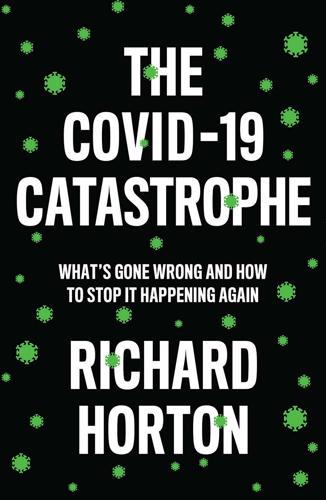
The COVID-19 Catastrophe: What's Gone Wrong and How to Stop It Happening Again
by
Richard Horton
Published 31 May 2020
WHO became so worried about the effects of an infodemic that it established a new unit – the Information Network for Epidemics, or EPI-WIN – to counter its impact. But what is more sinister still is the part disinformation might have played in propagating false beliefs about COVID-19. Disinformation is that category of misinformation deliberately aimed to deceive. Those who propagate disinformation seek to amplify discord within societies. The European External Action Service has documented multiple examples of disinformation targeted at Europe and the European Union (EU). The intention behind these attacks is often to discredit the EU for the way it has handled the crisis, to suggest that the EU has failed to help its member states, and to show that other countries, such as China, have done more to help Europe than Europe itself.
…
The relationship between WHO and the US government is unlikely to be healed while both Dr Tedros and President Trump remain in their positions. One or both will almost certainly have to depart their roles before relations can be restored. * I have already discussed the many strange stories of disinformation – the infodemic – that emerged during the crisis of COVID-19. What was even more surprising and unexpected was that governments themselves resorted to political disinformation campaigns in order to defend their own roles in managing the outbreak. These efforts to rewrite the narrative of COVID-19 are important to document. Just as there has been a struggle to contain the outbreak, so there is a struggle to control the way the public views government management of the outbreak.
…
But, given the country’s overall limited testing capacity, a sparse public health workforce and certain challenging disease characteristics, including mild and asymptomatic cases and rapid spread, it is unlikely that states were able to reach the levels of operational excellence needed to control the outbreak fully. Nevertheless, there was an extraordinary response from sections of civil society. To fight fake news about the pandemic, the Indian Scientists’ Response to COVID-19 became a grassroots initiative to neutralise disinformation. States deserve much of the credit for the country’s partly successful response. There were important lessons for other countries to learn from India. One shortcoming of India’s COVID-19 response was the low rate of testing. Another constraint was an acute shortage of health workers, while yet another consisted of the large communities living in slums with no possibility for physical distancing.

The Chaos Machine: The Inside Story of How Social Media Rewired Our Minds and Our World
by
Max Fisher
Published 5 Sep 2022
Its immigration stories were collectively shared more than twice as much as those of any other news outlet, a stunning figure considering it employed only a handful of reporters. Across platforms, discussion on immigration “gravitated more often to issues of identity threat,” the study’s authors found, naturally privileging far-right worldviews that center, by definition, on fears of identity conflict. The study concluded that “highly partisan media” pushing disinformation and “Facebook-empowered hyperpartisan political clickbait sites” were both endemic in 2016, a trend that “played a much greater role on the right than on the left.” If we’d wanted to know where that was leading us, all we had to do was look at Gamergate, which, as of summer 2016, had more or less declared victory in its culture war for gaming.
…
The warnings came from insiders who knew the technology and the platforms, who shared the Valley’s ideals and assumptions. One of them was DiResta. “I’m pretty sure your recommendation engine is driving people to this content,” she told contacts at the companies, hoping they would use their internal data-gathering tools to investigate the sudden rise in political disinformation and polarizing rumors. That summer, some at Google who had heard about her work tracking anti-vaccine groups asked her to speak at the company’s annual conference. Until then she had kept her broader concerns to private channels, but now she decided to go public, admonishing a hall of high-ranking engineers and managers that their products posed a growing danger to society.
…
Any tweak or upgrade at all that might make the product a little more engaging, a little more addictive. If he or his bosses considered the consequences of brain-hacking millions of Americans in the middle of the most contentious election in modern American history, at a moment when polarization and disinformation threatened to tear apart the fabric of society, he did not indicate it in his essay. “One glorious Monday that fall, I checked again—and saw that we’d hit a billion hours over the weekend,” he wrote. “We’d achieved the stretch OKR many thought was impossible.” Though he conceded there had been “unanticipated consequences,” he only mentioned one: increasing watch time had also driven up the number of visits per day.
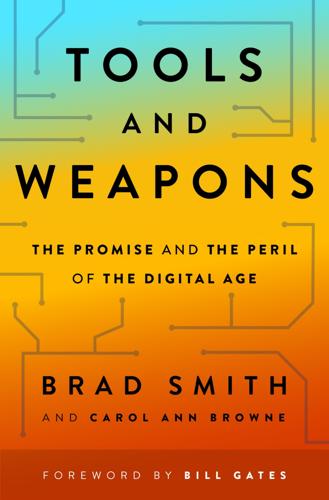
Tools and Weapons: The Promise and the Peril of the Digital Age
by
Brad Smith
and
Carol Ann Browne
Published 9 Sep 2019
We coupled our AccountGuard announcement with information about these new attacks and an explicit statement that the six websites had been created by “a group widely associated with the Russian government and known as Strontium, or alternatively Fancy Bear or APT28.”9 It marked the first time we had been this explicit in identifying Russia as the source of the attacks, a move that was followed within days by both Facebook and Google as they acted to take down disinformation and fake accounts from their sites. While this was hardly the end of our journey, it marked how far the tech sector had come since 2016. As the industry took new steps, the press began to urge the US government to match our efforts. It provided what we hoped would become a new foundation for broader and more collaborative action.
…
Cyber-based threats around hacking of campaigns and disruption of voting were barely on the radar screen a decade ago. Today they are real risks that spill into daily news reports. Just as democratic governments and industry worked together to win a world war in the 1940s, today they must develop a unified response to protect the peace. And as authoritarian regimes experiment with disinformation campaigns, even more complex challenges lie ahead. Chapter 6 SOCIAL MEDIA: The Freedom That Drives Us Apart In a museum in the center of Tallinn, Estonia, which sits on the edge of the Baltic Sea, a young woman and man spin in perpetual motion, perched on opposite ends of a long, narrow plank.
…
It sounds a common chorus of people around the world yearning for freedom. And most important, it examines the constant tension between freedom and responsibility that the museum’s pair of floating mannequins so elegantly display. When we visited Estonia in the fall of 2018, the US Congress’s investigation into disinformation campaigns on Twitter and Facebook was at full throttle. The world had awoken to this new set of challenges and was asking questions. How had this happened? Why had it happened? And why hadn’t we realized it sooner? One answer to these questions came to us on a Saturday morning at the Vabamu Museum, the brainchild of an Estonian turned American named Olga Kistler-Ritso.

Calling Bullshit: The Art of Scepticism in a Data-Driven World
by
Jevin D. West
and
Carl T. Bergstrom
Published 3 Aug 2020
They just want our attention and will tell us whatever works to capture it. MISINFORMATION AND DISINFORMATION Social media facilitates the spread of misinformation—claims that are false but not deliberately designed to deceive. On social media platforms, the first outlet to break a story receives the bulk of the traffic. In the race to be first, publishers often cut any fact-checking out of the publication process. You can’t beat your competitors to press if you pause to rigorously fact-check a story. Being careful is admirable, but it doesn’t sell ads. Social media is also fertile ground for disinformation, falsehoods that are spread deliberately.
…
Social media posts are unconstrained by most borders. And they are shared organically. When social media users share propaganda they have encountered, they are using their own social capital to back someone else’s disinformation. If I come across a political leaflet or poster on the street, I am immediately skeptical. If my dear uncle forwards me a story on Facebook that he “heard from a friend of a friend,” my guard drops. Disinformation flows through a network of trusted contacts instead of being injected from outside into a skeptical society. In 2017, Facebook admitted that over the past two years, 126 million US users—half of the adult population and about three-quarters of its US user base—had been exposed to Russian propaganda on the site.
…
We seek multiple images from multiple vantage points. Society will adjust similarly to a world of deepfakes and whatever reality-bending technologies follow. There are three basic approaches for protecting ourselves against misinformation and disinformation online. The first is technology. Tech companies might be able to use machine learning to detect online misinformation and disinformation. While this is a hot area for research and development, we are not optimistic. Tech companies have been trying to do this for years, but the problem shows no signs of abating. Microsoft, Facebook, and others have recently started to release large data sets to academic researchers working on this problem; that suggests to us that the tech companies know that they need help.
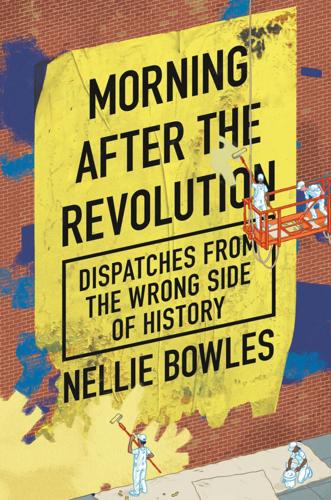
Morning After the Revolution: Dispatches From the Wrong Side of History
by
Nellie Bowles
Published 13 May 2024
It’s a little petty and grimy. The main group of in-house Narrative Enforcers at the New York Times were the Disinformation Experts, and they clocked me as a problem. One day I was writing a profile of PragerU, a conservative viral-video production studio that had perfected trolling college campuses with funny student-on-the-street videos. After I’d done most of my reporting, I was told that I needed to meet with the in-house Disinformation Expert, a special person who would discuss how to incorporate disinformation analysis into my piece. I’ll call him Todd. He’s cool, a prolific Slack presence. Todd and I chat.
…
In the meantime, I became fascinated by Todd and the movement he was leading inside the paper. He spent a lot of time in the NYT Slack posting in the #Disinformation channel, which, when I was in it, had some hundred members who posted a stream of conservative news links as a sort of group disinformation watch. Sometimes people would ask about whether something is Bad, like a picture of some people holding three fingers up—Hey, is this white supremacy? (It wasn’t.) He’d post TikToks that were apparently disinformation—like a video made by some nurses making fun of Covid restrictions. He’d drop in tweets calling out right-wing internet activity from accounts with names like @socialistdogmom.
…
Writing critically about this revolution was placing me outside it, no matter how many disclaimers I put. It didn’t matter how I voted or whether technically I shared similar political goals. The only ones who can write about the changes are literal comrades. Otherwise? You’re just another fascist pumping out disinformation. As you can imagine, I don’t want to be a fascist, and I don’t want to produce disinformation. The trouble is, I became a reporter because I didn’t trust authority figures. Newspaper work gave me an opportunity to monetize a suspicious, itchy personality. As a reporter, I spent over a decade working to follow that curiosity. It was hard to suddenly turn that off.

Extremely Hardcore: Inside Elon Musk's Twitter
by
Zoë Schiffer
Published 13 Feb 2024
GO TO NOTE REFERENCE IN TEXT By Monday morning: Isabel Kershner, Aaron Boxerman, and Hiba Yazbek, “Israel Orders ‘Complete Siege’ of Gaza and Hamas Threatens to Kill Hostages,” The New York Times, October 9, 2023, nytimes.com/2023/10/09/world/middleeast/israel-gaza-siege-hamas.html. GO TO NOTE REFERENCE IN TEXT X was awash in disinformation: David Gilbert, “The Israel-Hamas War Is Drowning X in Disinformation,” Wired, October 9, 2023, wired.com/story/x-israel-hamas-war-disinformation/. GO TO NOTE REFERENCE IN TEXT prior campaigns out of Iran: Moderated Content, “MC Weekly Update 10/9: Social Media During War,” Stanford Law School Podcasts, October 10, 2023, law.stanford.edu/podcasts/mc-weekly-update-10-9-social-media-during-war/.
…
This view became more widely shared on the left over the next few months as Taibbi continued to publish his findings while misinterpreting some of the evidence. Take Twitter Files #17. In 2021, one of the leading disinformation research labs in the United States, the Atlantic Council’s Digital Forensic Research Lab (DFRLab), sent Twitter a list of forty thousand accounts as part of an investigation into coordinated disinformation in India. The investigation was being conducted with an independent Indian news outlet called The Wire. The partnership was still in its infancy but appeared promising. Already, one of the paper’s hotshot young journalists, Devesh Kumar, had compiled a list of accounts believed to be engaged in coordinated inauthentic behavior in support of the Bharatiya Janata Party, the ruling party under Prime Minister Narendra Modi.
…
Almost instantly, X was awash in disinformation about the attacks. “Rather than being shown verified and fact-checked information, X users were presented with video game footage passed off as footage of a Hamas attack and images of firework celebrations in Algeria presented as Israeli strikes on Hamas,” wrote David Gilbert in Wired. “There were faked pictures of soccer superstar Ronaldo holding the Palestinian flag, while a three-year-old video from the Syrian civil war repurposed to look like it was taken this weekend.” It wasn’t clear who was behind the disinformation campaigns—but researchers noted that the tactics were consistent with prior campaigns out of Iran.
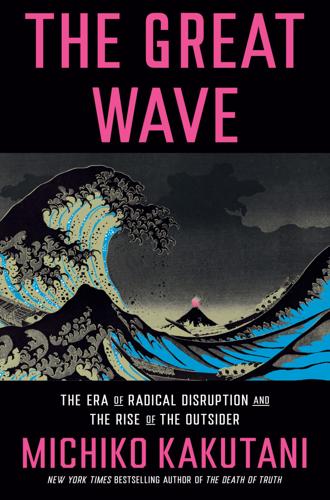
The Great Wave: The Era of Radical Disruption and the Rise of the Outsider
by
Michiko Kakutani
Published 20 Feb 2024
This is propaganda less reliant on old-fashioned censorship than what RAND Corporation analysts call the “firehose of falsehood,” that is, pelting the public with such high volumes of lies, contradictory facts, disinformation, half-truths, news, gossip, and just plain noise that people grow numb and their weariness coagulates into cynicism and resignation. To compound the problem, we have become dependent on search engines, media companies, social media, and bots to navigate this vast ocean of data, and those filters determine what information (or disinformation) we see online and how it shapes—or distorts—our perception of the world. The lack of meaningful safeguards and guardrails in our digital interregnum means the internet remains a kind of Wild West with little regulation, oversight, or accountability—a howling wind tunnel of data, chatter, facts, misinformation, and lies.
…
For instance, one step toward fighting the multiplying dangers of misinformation and fake news—which foment division and mistrust, and threaten to undermine democratic elections—was taken by the European Union in 2022, when it adopted measures requiring Big Tech companies like Facebook, YouTube, and TikTok to better police their platforms and prevent dangerous disinformation from going viral. Right-wing media platforms like Fox News need to be held accountable for spreading lies and disinformation—a process which some observers hoped had begun in 2023 when Fox settled a defamation suit filed by Dominion Voting Systems for $787.5 million. And so-called mainstream media outlets need to stop confusing evenhandedness with truth telling, and cease giving proponents of clearly false narratives (regarding, say, election fraud and climate denialism) equal time.
…
Smartphone use and access to broadband exploded at an exponential rate and came with unexpected side effects—reminiscent, in some ways, of one of those folktales where a genie with a wicked sense of humor grants someone three wishes but none of those wishes turn out quite the way the protagonist expected. Digital technology did connect people in myriad new ways, but it also divided them and became a vector for partisan hatred. It gave voters the means for increased civic engagement, but also bombarded them with fake news and disinformation that subverted faith in our electoral system. The tools that amplified the voices of ordinary people could also be exploited by governments intent on surveillance and by tech giants that harvest and monetize our data. Many would-be countercultural revolutionaries in Silicon Valley soon found themselves heading up—or working for—wildly successful companies, many times bigger and more powerful than IBM in its heyday, companies that would balloon, with terrifying speed, into monopolistic behemoths.
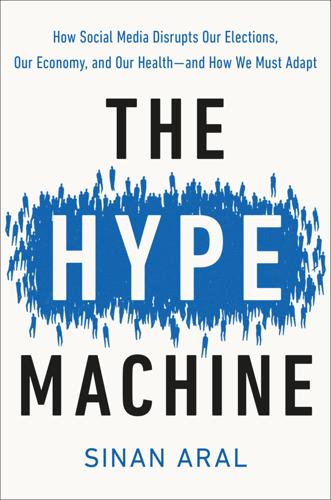
The Hype Machine: How Social Media Disrupts Our Elections, Our Economy, and Our Health--And How We Must Adapt
by
Sinan Aral
Published 14 Sep 2020
“how to avoid a phishing attack, what bots are”: Sarah Perez, @sarahintampa, “Google’s New Media Literacy Program Teaches Kids How to Spot Disinformation and Fake News,” TechCrunch, June 24, 2019, https://techcrunch.com/2019/06/24/googles-new-media-literacy-program-teaches-kids-how-to-spot-disinformation-and-fake-news/; Google’s “Be Internet Awesome,” https://beinternetawesome.withgoogle.com/en_us/. Bad News: “Fake News ‘Vaccine’ Works: ‘Pre-Bunking’ Game Reduces Susceptibility to Disinformation,” Science Daily, June 24, 2019, https://www.sciencedaily.com/releases/2019/06/190624204800.htm. the game reduced the perceived reliability of fake news: Jon Roozenbeek and Sander van der Linden, “Fake News Game Confers Psychological Resistance Against Online Misinformation,” Palgrave Communications 5, no. 1 (2019): 12.
…
To understand whether dystopia is our destiny, we have to understand how the Hype Machine works. To do that, we’ll need to go back to first principles, starting with a deep dive under the hood of the Hype Machine, followed by an examination of social media’s effect on our brains. *1 Disinformation is deliberate falsehood spread to deceive, while misinformation is falsehood spread regardless of its intent. Disinformation is a subset of misinformation. *2 Chris Bail and his team found no evidence that interactions with IRA Twitter accounts in late 2017 impacted political attitudes or behavior. But several limitations prevented them from determining “whether IRA accounts influenced the 2016 presidential election.”
…
The study he was referring to was one I published: Soroush Vosoughi, Deb Roy, and Sinan Aral, “The Spread of True and False News Online,” Science 359, no. 6380 (2018): 1146–51. cauldron of misinformation: Zeke Miller and Colleen Long, “US Officials: Foreign Disinformation Is Stoking Virus Fears,” US News, March 16, 2020; Brooke Singman and Gillian Turner, “Foreign Disinformation Campaign on Fake National Quarantine Trying to Cause Panic, Trump Admin. Officials Say,” Fox News, March 16, 2020. Google, Apple, and MIT developed Bluetooth-based contact tracing systems: Mark Gurman, “Apple, Google Bring Covid-19 Contact-Tracing to 3 Billion People,” Bloomberg, April 10, 2020; Kylie Foy, “Bluetooth Signals from Your Smartphone Could Automate Covid-19 Contact Tracing While Preserving Privacy,” MIT News, April 8, 2020, http://news.mit.edu/2020/bluetooth-covid-19-contact-tracing-0409.

Nexus: A Brief History of Information Networks From the Stone Age to AI
by
Yuval Noah Harari
Published 9 Sep 2024
It is aware that some information doesn’t represent reality well, but it dismisses this as unfortunate cases of “misinformation” or “disinformation.” Misinformation is an honest mistake, occurring when someone tries to represent reality but gets it wrong. Disinformation is a deliberate lie, occurring when someone consciously intends to distort our view of reality. The naive view further believes that the solution to the problems caused by misinformation and disinformation is more information. This idea, sometimes called the counterspeech doctrine, is associated with the U.S. Supreme Court justice Louis D.
…
In a 2023 study, published in Science Advances, researchers asked humans and ChatGPT to create both accurate and deliberately misleading short texts on issues such as vaccines, 5G technology, climate change, and evolution. The texts were then presented to seven hundred humans, who were asked to evaluate their reliability. The humans were good at recognizing the falsity of human-produced disinformation but tended to regard AI-produced disinformation as accurate.51 So, what happens to democratic debates when millions—and eventually billions—of highly intelligent bots are not only composing extremely compelling political manifestos and creating deepfake images and videos but also able to win our trust and friendship?
…
Sedona Chinn and Ariel Hasell, “Support for ‘Doing Your Own Research’ Is Associated with COVID-19 Misperceptions and Scientific Mistrust,” Misinformation Review, June 12, 2023, misinforeview.hks.harvard.edu/article/support-for-doing-your-own-research-is-associated-with-covid-19-misperceptions-and-scientific-mistrust/. 26. See, for example, “God’s Enclosed Flat Earth Investigation—Full Documentary [HD],” YouTube, www.youtube.com/watch?v=J6CPrGHpmMs, cited in “Disinformation and Echo Chambers: How Disinformation Circulates on Social Media Through Identity-Driven Controversies,” Journal of Public Policy and Marketing 42, no. 1 (2023): 18–35. 27. See, for example, David Klepper, “Trump Arrest Prompts Jesus Comparisons: ‘Spiritual Warfare,’ ” Associated Press, April 6, 2023, apnews.com/article/donald-trump-arraignment-jesus-christ-conspiracy-theory-670c45bd71b3466dcd6e8e188badcd1d; Katy Watson, “Brazil Election: ‘We’ll Vote for Bolsonaro Because He Is God,’ ” BBC, Sept. 28, 2022, www.bbc.com/news/world-latin-america-62929581. 28.

The Authoritarian Moment: How the Left Weaponized America's Institutions Against Dissent
by
Ben Shapiro
Published 26 Jul 2021
In June 2020, the Biden campaign circulated a petition and open letter to Mark Zuckerberg, calling for “real changes to Facebook’s policies for their platform and how they enforce them” in order to “protect against a repeat of the role that disinformation played in the 2016 election and that continues to threaten our democracy today.”32 The social media companies have increasingly taken heed. And they’ve moved right along with the clever switch made over the course of the past several years from “fighting disinformation” to “fighting misinformation.” After 2016, the argument went, Russian “disinformation” had spammed social media, actively undermining truth in favor of a narrative detrimental to Democratic candidate Hillary Clinton. There was some evidence of this—although the amount of actual Russian disinformation on Facebook, for example, wasn’t overwhelming in the grand scheme of things.
…
Follow-on stories in the Post quoted Hunter Biden’s ex–business associate Tony Bobulinski accusing Joe Biden himself of lying about his knowledge of Hunter’s activities: “I have heard Joe Biden say he has never discussed his dealings with Hunter. That is false. I have firsthand knowledge about this because I directly dealt with the Biden family, including Joe Biden,” Bobulinski alleged.6 The Biden campaign and its media allies responded by calling the Hunter Biden story “Russian disinformation.”7 The story, needless to say, was not Russian disinformation; there was no evidence that it was in the first place. In fact, about a month after the election, media reported that Hunter Biden had been under federal investigation for years—CNN reported that the investigation began as early as 2018, and that it had gone covert for fear of affecting the presidential election.8 The Hunter Biden story never fully broke through into the mainstream consciousness.
…
Over two years. That’s an average of 1,243 engagements per post—an extremely low total.34 But put aside the relative success or unsuccess of the Russian manipulation. We can all agree that Russian disinformation—typically meaning overtly false information put out by a foreign source, designed to mislead domestic audiences—is worth censoring. Democrats and media, however, shifted their objection from Russian disinformation to “misinformation”—a term of art that encompasses everything from actual, outright falsehood to narratives you dislike. To declare something “misinformation” should require showing its falsity, at the least.

Freezing Order: A True Story of Money Laundering, Murder, and Surviving Vladimir Putin's Wrath
by
Bill Browder
Published 11 Apr 2022
I warned the staffer that Royce’s committee was the target of an active Russian disinformation campaign. He listened politely, promising to bring it up with the chairman. I’d experienced enough of these types of conversations to know that when a young staffer promises to bring it up with their boss, they have no intention of mentioning it to anybody. If I couldn’t get to Royce directly, I’d try getting to him indirectly. I decided to go to the National Review, a conservative magazine I was sure Chairman Royce read. I pitched them the story of how Royce, whose signature issue was countering Russian disinformation, had just fallen victim to exactly that.
…
“The New York Times is promoting Nekrasov’s film,” I said. She perked up. “What? How did that happen?” “I have no idea.” This shouldn’t have happened. The New York Times is the most reputable newspaper in the United States, and is known for having a rigorous process that prevents the paper from falling victim to any kind of disinformation. Besides, by that point, the Russians had lost all credibility with the Western press in relation to the Magnitsky case. They’d told so many verifiable lies, and made so many misstatements and exaggerations, that nobody believed a word they said. I had to find out how they’d managed to pull this off.
…
The two of us boarded a Virgin Atlantic flight from Heathrow to Dulles on June 12, the day before the screening. We checked into the Grand Hyatt and prepared for a full slate of meetings the following day with members of Congress, government officials, and journalists. Our hope was to inoculate anybody who might be susceptible to Veselnitskaya’s disinformation campaign. She and her team seemed to be just as busy. As I rolled out of bed the next morning, I learned that Rohrabacher’s office had been working late into the night, emailing screening invitations to every single member of Congress. Veselnitskaya’s team had also been reaching out to the media.

This Is How They Tell Me the World Ends: The Cyberweapons Arms Race
by
Nicole Perlroth
Published 9 Feb 2021
TrickBot’s developers were now cataloging American municipalities they had access to, selling anyone who wanted it a paint-by-number approach to hacking our election. When it came to disinformation, Russia’s goal was still the same: divide and conquer. But this time, the Kremlin’s trolls didn’t have to spin up “fake news.” Americans—perhaps nobody more so than our president—were generating plenty of false, misleading, and divisive content every single day. In 2016, Russians spun up fictitious tales of Democrats practicing witchcraft. With Americans more divided than at any time in recent history, Russia’s trolls and state news outlets found it far more efficient to amplify American-made disinformation than create their own. This time they weren’t looking to go viral—that would draw too much attention—they simply searched for sparks wherever they flew and offered up a little kindling.
…
And when thousands of Americans took to the streets to protest the murders of African Americans at the hands of police, I watched those same Russian accounts retweet Americans, including the president, who dismissed the Black Lives Matter movement as a Trojan horse for violent left-wing radicals. With each new campaign, it got harder to pinpoint where exactly American-made disinformation ended and Russia’s active measures began. We had become Putin’s “useful idiots.” And so long as Americans were tangled up in our own infighting, Putin could maneuver the world unchecked. “The mantra of Russian active measures is this: ‘Win through force of politics rather than the politics of force,’ ” is how Clint Watts, a former FBI agent who specializes in Russian disinformation, explained it to me. “What that means is go into your adversary and tie them up in politics to the point where they are in such disarray that you are free to do what you will.”
…
In the years following its implementation, researchers found that Japanese devices were better protected than other countries with similar GDPs. We will never build resilience to cyberattacks—or foreign disinformation campaigns, for that matter—without good policy and nationwide awareness of cyber threats. We should make cybersecurity and media literacy a core part of American curriculum. Too many cyberattacks rely on vulnerable American systems, running on software that is not up-to-date or which has not been patched. This is, in large part, an education problem. The same goes for information warfare. Americans are being coopted by disinformation campaigns and conspiracy theories because Americans lack the tools to spot influence operations, foreign and domestic, in real time.
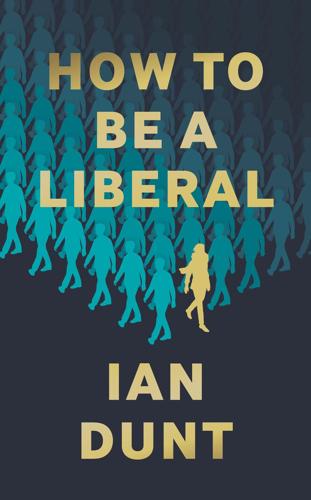
How to Be a Liberal: The Story of Liberalism and the Fight for Its Life
by
Ian Dunt
Published 15 Oct 2020
Howard, Bharath Ganesh, Dimitra Liotsiou, John Kelly and Camille François, is the first major analysis of the Russian disinformation attack on the US, based on data provided by social media firms to the Senate Select Committee on Intelligence. The Global Disinformation Order 2019 Global Inventory of Organised Social Media Manipulation, by Samantha Bradshaw and Philip N Howard, gives information on how extensively these techniques are now being used around the world. For accounts of disinformation in the digital age see David Patrikarakos’ lively and important War in 140 Characters: How Social Media is Reshaping Conflict in the 21st Century, from which the account of the Russian disinformation building is taken, and How to Lose the Information War: Russia, Fake News, and the Future of Conflict, by Nina Jankowicz.
…
It was not effective in convincing many people outside of Russia or east Ukraine. But that was not the purpose. The aim was in fact two-fold. Firstly, it would give Moscow a spreadable narrative in which it could maintain its innocence. And secondly it would confuse people. It would smudge reality, sow doubt, churn out as much disinformation as possible and hope the noise cancelled out the facts. The Ukrainian disinformation campaign worked as proof-of-concept for Putin. He now turned his attention to his opponents in the West. Using the same tactics, he could try to achieve similar results in countries like Britain and the US. From the end of 2014, the proportion of English, as opposed to Russian, language tweets from Kremlin fake accounts started to increase dramatically.
…
Those who live under its shadow are therefore encouraged to process information according to their tribal identity rather than its veracity, to close themselves off from anything that might challenge their faith. The lies of the nationalist movement range from the gigantic to the trivial, from the systemic to the opportunistic. This disinformation is not just a means to an end. It is an end itself. It serves two distinct agendas. Firstly it attempts to redefine day-to-day events in whichever way most suits the nationalist narrative. Secondly it works to degrade the entire notion of empirical reality. If nationalists can lie without consequence, the concepts of truth and falsity fall into irrelevance.

A Hacker's Mind: How the Powerful Bend Society's Rules, and How to Bend Them Back
by
Bruce Schneier
Published 7 Feb 2023
Neither Musk nor anyone involved with the 2021 GameStop trading frenzy has been prosecuted. Spoofing is another hack that involves the dissemination of disinformation. Here, a trader places millions of dollars of orders, then cancels them after other traders have noticed and reacted to them. This, too, is illegal, and a few people have been convicted of it. Fake news—that is, deliberately deceptive reports masquerading as journalism—is another increasingly prevalent method of hacking the market through disinformation. This hack is most often used to misrepresent companies’ valuation, allowing hackers to profit from fluctuations in their share prices.
…
In the previous chapters, we’ve seen hack after hack that successfully limited one of the three aspects of that: information, choice, and agency. In these upcoming chapters, we’ll see them hacked directly—in our own minds. For example, disinformation is a hack that subverts our system of freedom of speech and freedom of the press. This isn’t a new notion. Goebbels, Hitler’s propaganda minister, once said: “This will always remain one of the best jokes of democracy, that it gave its deadly enemies the means by which it was destroyed.” Disinformation is also a hack that subverts many of the cognitive systems we will talk about: attention, persuasion, trust, authority, tribalism, and sometimes fear.
…
For example, in 2015, the SEC indicted two Ukrainian hackers who broke into Business Wire and PRNewswire’s networks and stole more than 100,000 unreleased press releases for publicly traded companies. These were then distributed to a network of traders, who used the advance knowledge to place informed bets on the authoring companies’ stocks, much like an insider trading scheme. The second type of hack involves the creation of disinformation. An old example is the pump-and-dump. Perpetrators buy a stock, preferably an obscure one. (The penny stock market is notorious for pump-and-dumping.) Then, they recommend the stock to others, using false and misleading statements about the potential profit to be made. If others fall for the scam and purchase the stock, it inflates the price and the perpetrators sell.
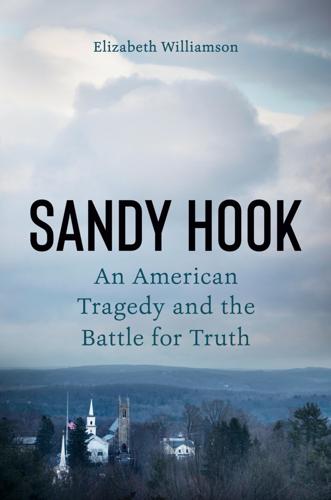
Sandy Hook: An American Tragedy and the Battle for Truth
by
Elizabeth Williamson
Published 8 Mar 2022
BACK TO NOTE REFERENCE 5 Benjamin Weiser, “Anthony Weiner Gets 21 Months in Prison for Sexting with Teenager,” New York Times, September 25, 2017, New York, https://www.nytimes.com/2017/09/25/nyregion/anthony-weiner-sentencing-prison-sexting-teenager.html. BACK TO NOTE REFERENCE 6 Andrew Rossi, dir., review of After Truth: Disinformation and the Cost of Fake News,” HBO, Abstract Production, https://www.hbo.com/documentaries/after-truth-disinformation-and-the-cost-of-fake-news. BACK TO NOTE REFERENCE 7 Marc Fisher, John Woodrow Cox, and Peter Hermann, “Pizzagate: From Rumor, to Hashtag, to Gunfire in D.C.,” Washington Post, December 7, 2016, https://www.washingtonpost.com/local/pizzagate-from-rumor-to-hashtag-to-gunfire-in-dc/2016/12/06/4c7def50-bbd4-11e6-94ac-3d324840106c_story.html.
…
The shooting spurred a similar effort to change the nation’s gun laws, which Haas joined, participating in protests across the country. But she doesn’t recall any conspiracy theories or harassment. “The reaction to Virginia Tech was much the same as the reaction to Sandy Hook. That this could happen was beyond comprehension, that someone could shoot your children down in cold blood,” Haas told me. “We didn’t have the disinformation campaigns and the fuel that social media platforms generally give them.” In 2007, the major social media platforms hosted only a fraction of the users they did just five years later, when Sandy Hook ignited millions of posts pushing false claims. Facebook, by far the largest social platform, had twenty million global users in 2007, compared with more than a billion in December 2012.
…
In a now-familiar pattern, Sandy Hook conspiracies surfaced in isolated message boards and groups, then caught fire across social media, their spread fueled by algorithms that select what users see based on their past preferences and choices. John Kelly is a network sociologist and a pioneer in mapping online communities. A year after Sandy Hook, Kelly founded Graphika, a forensic digital investigations and digital marketing firm in Manhattan. He has written software that maps the flow of disinformation through online communities. People used to define “community” geographically. Now they view it in online terms. On this invisible terrain, community is determined “by how we get filtered and sorted based on all these little micro-decisions we make about what to like and who to follow,” Kelly said.

Climate Change
by
Joseph Romm
Published 3 Dec 2015
In books and documentaries such as “Merchants of Doubt: How a Handful of Scientists Obscured the Truth on Issues from Tobacco Smoke to Global Warming,” historians and journalists have shown (1) that this misinformation and disinformation campaign goes all the way back to the tobacco industry’s campaign to cast doubt on claims that cigarette smoking is bad for your health and (2) that in some cases it involves the same exact people.49 In 2009, the New York Times documented that the Global Climate Coalition, an anti-action lobbying group backed by industries that profit from fossil fuels, ignored its own climate scientists during the 1990s while spreading disinformation about global warming.50 An internal report stating that the human causes of global warming “cannot be denied” fell on the deaf ears of Coalition leaders.
…
In July 2015, we learned that oil giant Exxon understood the scientific reality of climate change as far back as 1981, many years before climate change became a political issue that they tried to spread confusion about. Over the years, fossil fuel companies and their executives were documented to have funneled tens of millions of dollars into this disinformation campaign. For a long time, the leading funder was the oil company Exxon-Mobil. However, they have been overtaken by Koch Industries—a company with large fossil fuel interests, run by billionaires Charles and David Koch—which spent more $48.5 million from 1997 to 2010 to fund disinformation. A report concluded that “From 2005 to 2008, Exxon Mobil spent $8.9 million while the Koch Industries-controlled foundations contributed $24.9 million in funding to organizations of the climate denial machine.”
…
We have been headed for a tripling of atmospheric concentrations of carbon dioxide, and the dangerous consequences of doing so are widely understood and accepted by the world’s leading climate scientists and governments. The multidecade disinformation campaign funded by the fossil fuel industry is marked by a rejection of basic science and the constant repetition of flawed arguments that have been long debunked by scientists, even ones who were advising the fossil fuel industry. That disinformation campaign continues today with more money than ever. What are climate science deniers? The scientific community and leading governments of the world have repeatedly reported on the ever-strengthening body of research supporting our understanding of basic climate science.

The Hacker and the State: Cyber Attacks and the New Normal of Geopolitics
by
Ben Buchanan
Published 25 Feb 2020
In the days prior to the October 7 email dump, Trump’s friend Stone told an unnamed senior Trump campaign official and other Trump supporters that WikiLeaks would imminently dump many more embarrassing files, and would commence with weekly releases. After the release of Podesta’s emails, an unnamed associate of a high-ranking official in the Trump campaign texted Stone, “Well done.”50 Amplification By the tail end of the election cycle, the Russians’ focus was less on hacking additional systems and more on propaganda and disinformation. Perhaps this shift in approach was a response to the warnings from President Obama, including a hotline message a week before the election.51 More likely, however, it was the culmination of a multiyear effort to project and amplify divisive and pro-Trump messages inside the United States. This part of the Russian campaign both drew on and supported the hacking efforts.
…
They kept track of online group sizes, frequency of posts, and audience engagement, including comments and other responses. These operatives worked for a nebulous St. Petersburg-based organization known as the Internet Research Agency, the most well-known—but likely not the only—Russian group running disinformation campaigns in the United States.52 Internet Research Agency employees made several trips to the United States in mid-2014 under false pretenses. As early as May 2014, they began discussing the 2016 presidential election as a target.53 In 2016, they posed as Americans and communicated with political activists and organizers in the United States to get a better sense of American politics.
…
Their targets included the World Anti-Doping Agency, which had revealed Russian cheating in the Olympics; the Organization for the Prohibition of Chemical Weapons, which had examined Russia’s poisoning of a former spy; and the investigation into Malaysia Airlines Flight 17, which Russian forces had shot down in Ukraine.19 A network of outlets, including social media accounts and state propaganda platforms such as Sputnik, stand ready to push the Russian message.20 Iran and its supporters have used disinformation for their own purposes, too. Researchers found sprawling campaigns that relied on hundreds of fake accounts on Facebook and Twitter. These campaigns aimed to mislead individuals all over the world. One effort aimed to sow division in the United States, Saudi Arabia, and Israel. It included well-constructed fake news articles that revealed a sophisticated understanding of online media and politics in the targeted countries.
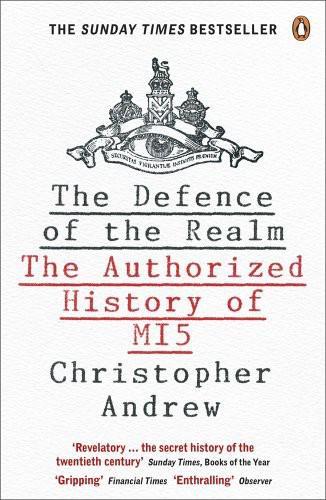
The Defence of the Realm
by
Christopher Andrew
Published 2 Aug 2010
A letter check, as well as revealing details of Grosse’s espionage, also identified two of the intermediaries employed by Steinhauer to maintain contact with agents in Britain. Building on his experience of supplying bogus information to Duff during the Schultz case, Kell supplied more elaborate disinformation to Salter which Grosse passed on to Berlin. Grosse’s case officer was sufficiently pleased with the disinformation to forward a more detailed list of inquiries on wireless telegraphy, range-finding, naval guns and coal supplies. Grosse was, however, told that his report about ‘a floating conning-tower’ (apparently one of Kell’s less plausible inventions) was ‘surely imaginary’.
…
Even had the Müller deception continued for longer, however, its success would have been limited. Unlike the turned German agents of the Second World War, Müller was executed and therefore unable to add personal credibility to the disinformation sent to German intelligence in his name. The Double-Cross System also depended not on one individual but on a series of turned German agents as well as on the co-operation of the whole intelligence community to provide a mixture of information and disinformation capable of both impressing and deceiving the enemy for the remainder of the war. Unlike MI5 in the Second World War, MO5(g) lacked the regular flow of SIGINT (signals intelligence) which enabled it to monitor the impact of the deception.69 The discovery by German intelligence of the Müller deception made it difficult for MO5(g) to attempt a similar deception without arousing German suspicions.
…
Also sent information regarding the effects of the Zeppelin raids on London. In September, on MI5 instructions, COMO sent further disinformation on the military situation in England and likely movements on the Western Front. He told the Germans that the British were planning an attack on the Belgian coast on the 15th. COMO continued to pass on at irregular intervals details of the intelligence missions entrusted to him by the Kriegsnachrichtenstelle, and MI5 continued to channel disinformation through him. According to a post-war summary, COMO ‘was always quite honest and trustworthy and did some v[ery] valuable work for us, at the same time holding the German’s [sic] confidence’.

Who Will Defend Europe?: An Awakened Russia and a Sleeping Continent
by
Keir Giles
Published 24 Oct 2024
By contrast, the list of Trump’s actions that favour Russia is long.42 Trump worked hard to undermine the US role in securing Europe. Actions like building a border wall, or mounting a disinformation campaign against Joe Biden’s son Hunter, seemed diverse and discrete but all had one thing in common: they all served to block defensive measures against Russia. Funding for the wall came from sources including diverting funds earmarked for bolstering the defence of eastern Europe. And Trump successfully blocked defensive aid to Ukraine by linking it to a demand to cooperate in the campaign against Hunter Biden, based on disinformation that originated with an agent of Russian intelligence.43 More direct assistance to Russia included passing classified information straight to its representatives – an action which in many other countries would alone have been sufficient to disqualify someone from ever standing for office again.
…
And other initiatives undermining US security launched by Trump or his supporters also didn’t end with his presidency. The year 2023 saw the steady rolling back of many of the institutional protections the US had put in place against foreign malign influence and disinformation, after its damaging potential became clear during the 2016 presidential election and beyond. Given how much Trump has benefited from Russian disinformation campaigns, dismantling the US’s defences against Russian information warfare is a perfectly logical step even if he is not doing so under direction from Moscow.45 In fact, during Trump’s presidency, the only reason greater damage was not done was the resilience of checks and balances within the US system of government.
…
Withdrawal of the United States from the defence of Europe was a primary goal for Soviet “active measures” campaigns, as it is now for Russian ones.88 Direct influence by the Russian intelligence services on individual members of the Republican Party would be fully in accordance with published Russian plans for subverting US politics as part of “practical steps to weaken Russia’s opponents”.89 And US support for Ukraine has, naturally enough, been a key target for Russian disinformation and covert influence operations.90 There has been recognition within the Republican Party itself that Russia had successfully “infected” party members, with the result that Russian messaging was delivered directly to the floor of the House of Representatives.91 Notably, in efforts to stall the delayed bill on aid for Ukraine during April 2024, Representative Marjorie Taylor Greene tabled a series of nonsensical amendments some of which quoted long-disproven Russian disinformation.92 Her amendment referring to Hungarians in Transcarpathia sparked particular scepticism, amid doubts that she would be able to spell Transcarpathia without external assistance, let alone find it on a map.93 But as well as Republican politicians, counterproductive decisions by the Biden administration also fuelled speculation about how they are being steered, and by whom.

Twitter and Tear Gas: The Power and Fragility of Networked Protest
by
Zeynep Tufekci
Published 14 May 2017
The Swedish defense minister, touring the country in an attempt to discuss Sweden, NATO, and Russia, found himself being grilled about these fake stories. People were scared that these stories might be true, confused about what to believe, and unsure about how to deal with this flood of negative stories. Censorship by disinformation focuses on attention as the key resource to be destroyed and credibility and legitimacy as the key components necessary for a public sphere that can support dissident views—or indeed, any coherent views. Rand Corporation researchers refer to this phenomenon as the “firehose of falsehood” propaganda model.18 The primary goal is simple: “to confuse and overwhelm” the audience.19 As in many such cases, it is impossible to pin down responsibility for the campaign, but “numerous analysts and experts in American and European intelligence point to Russia as the prime suspect, noting that preventing NATO expansion is a centerpiece of the foreign policy of President Vladimir V.
…
However, these gatekeepers had normative standards to judge factual error, and many newspapers published investigations later about how they got the reporting in the run-up to the war so wrong. Their failures were recognized as failures, or at least as departures from standards they were supposed to uphold. However, these failures have contributed to declining trust in traditional media, making the public sphere even more vulnerable to disinformation campaigns. Our new era is marked by the multitude of people and institutions with the capacity to broadcast, each with different normative standards—and some with no concerns about accuracy even as a standard that is not always upheld—with a polarized public with little trust in any intermediary, and drawn to information that confirms preexisting biases.
…
The United States has often been accused of deliberately spreading misinformation against regimes it wanted to overthrow or destabilize in many countries. Politicians have been known to resort to starting rumors about their opponents. None of this is without precedent. However, what is more striking in the twenty-first century is that the disinformation campaigns are not necessarily carried out to persuade people or to make them believe any particular set of alleged facts. Instead, the goal is often simply to overwhelm people with so many pieces of bad and disturbing information that they become confused and give up trying to figure out what the truth might be—or even the possibility of finding out what is true.
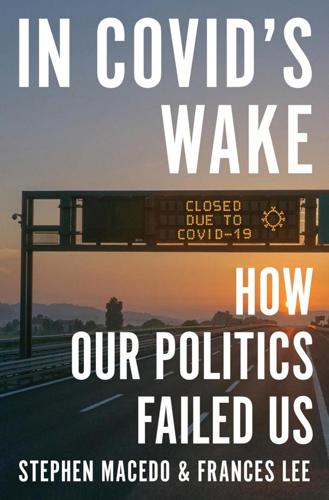
In Covid's Wake: How Our Politics Failed Us
by
Stephen Macedo
and
Frances Lee
Published 10 Mar 2025
With that said, it is too easy to embrace the assumption that the experts are right and to characterize dissenting views as “misinformation,” “disinformation,” or “malinformation.” Indeed, one need not be George Orwell to find suspicious the proliferation of new terms for what is, essentially, erroneous information. There have always been erroneous views on m atters of public concern, and t hese views have always posed difficult questions for democracies. Plato’s famous “allegory of the cave” describes ordinary p eople as 276 chapter 9 entirely in thrall to fake manipulated images, which they imagine to be reality—in other words, “disinformation.”64 Conspiracy theories are not new. What is new is the growing sense among educated elites that greater control of information by the social and political institutions (which they control) is warranted to combat error.
…
—S a m u e l Tay l or Col er i dge , Ta b l e Ta l k (1835), 18 Dece m ber 1831 c on t e n t s List of Illustrations xi Preface and Acknowledgments xiii 1 Democracy under Covid: Introduction 1 2 “Following the Science” before Covid 27 3 Turning on a Dime: Embracing China’s Covid Model 50 4 Partisan Pandemic: Stigmatizing Disagreement 92 5 Laboratories of Democracy? 124 6 Pay Any Price: Ignoring the Costs of Covid Policy 164 7 Science Bends to Politics: Covid’s Muddled Origins 202 8 Politicized Science: Of Masks and Mandates 233 9 Noble Lies? Public Health Mis-and Disinformation under Covid 253 10 Concluding Reflections: Learning from the Politics of Crisis Notes 301 Index 365 287 i l lu s t r at ions & t a bl e s Illustrations 5.1. Length and speed of stay-at-home orders issued, by party of governor 130 5.2. State partisanship and school closures 132 5.3.
…
Direct U.S. federal spending alone on Covid relief measures totaled more than $5 trillion, nearly a quarter of America’s gross national product in 2020.10 Mobilization against Covid included extraordinary restrictions on free speech. Behind the scenes, public officials pressed social media companies to take down or “shadow ban” the accounts and postings of scientists, academics, and social media influencers accused of spreading misinformation and disinformation. In the summer of 2023, a federal judge characterized this effort as the biggest campaign of government censorship in U.S. history.11 That the Covid pandemic was a stress test for our public health agencies, our economy, our educational systems, and our personal relationships are facts of which we are all too painfully aware.
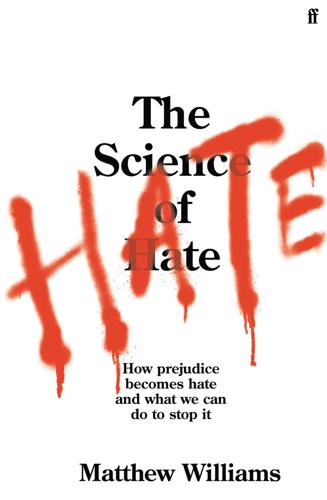
The Science of Hate: How Prejudice Becomes Hate and What We Can Do to Stop It
by
Matthew Williams
Published 23 Mar 2021
In the same period police in the UK recorded a 21 per cent increase in hate crimes targeting south and east Asians.29 Similar rises have been recorded across Europe, Australasia, Asia, Africa and the Americas.30 No science has yet confirmed a link between Trump’s divisive rhetoric and the rise in anti-Asian hate crimes in the US. There are certainly alternative explanations, such as a rise in general online hate speech and disinformation targeting Chinese and Asian people. Online disinformation also singled out Muslims, Jews and the LGBTQ+ community for spreading the virus. Via clicks from Facebook, thirty-four websites known for spreading far-right conspiracy theories and hate received c.80 million interactions between January and April 2020. In comparison, via Facebook, the US Centers for Disease Control (CDC) website received just 6.4 million interactions, and the World Health Organisation website 6.2 million.31 Much of the far-right social media chatter came from ‘accelerationists’ who believe that the collapse of the state can be brought about by extreme violence against liberal, black, Muslim and Jewish people.
…
Human Rights Watch, ‘Covid-19 Fueling Anti-Asian Racism and Xenophobia Worldwide’, 12 May 2020, www.hrw.org/news/2020/05/12/covid-19-fueling-anti-asian-racism-and-xenophobia-worldwide. 31. Institute for Strategic Dialogue, ‘Far-Right Exploitation of Covid-19’, London: ISD, 2020. 32. Institute for Strategic Dialogue, ‘Covid-19 Disinformation Briefing No. 2’, London: ISD, 2020. 33. A. Goldman, ‘Man Suspected of Planning Attack on Missouri Hospital Is Killed, Officials Say’, New York Times, 25 March 2020. 34. Institute for Strategic Dialogue, ‘Covid-19 Disinformation Briefing No. 2’. 35. M. L. Williams et al., ‘Hate in the Machine: Anti-Black and Anti-Muslim Social Media Posts as Predictors of Offline Racially and Religiously Aggravated Crime’, British Journal of Criminology 60 (2019), 93–117. 36.
…
Donald Trump’s 2016 presidential campaign hired Cambridge Analytica and the Leave.EU Brexit campaign hired Aggregate IQ to use artificial intelligence to ‘micro-target’ those who would be most vulnerable to messages designed to stir up fears of the ‘other’.3 During the COVID-19 pandemic, social media was flooded with far-right conspiracy theories and hate targeting Jewish, Muslim, Chinese and LGBTQ+ people for supposedly creating and/or spreading the disease (more on this in Chapter 10).4 Beyond organised campaigns, the everyday internet user also took to social media to post hateful messages, triggered by disinformation and careless phrases, like ‘Chinese virus’ and ‘kung flu’, coming out of the White House.5 What is most worrying about this trend is that the research shows divisive messages from public figures are directly linked to tipping some people into hateful violence on the streets. In January 2021 the world witnessed an unparalleled example of this when the US Capitol Building was stormed by Trump supporters who had been whipped up by his polarising rhetoric.

Pirates and Emperors, Old and New
by
Noam Chomsky
Published 7 Apr 2015
The attitude towards the public is revealed by what one Reagan official called “a vast psychological warfare operation” designed to set the agenda for debate over Nicaragua—a disinformation campaign called “Operation Truth”; Goebbels and Stalin would have been amused.10 Disinformation has been an Administration specialty since the earliest days, though the media and Congress always profess to be shocked when a new example is exposed, recently during the 1986 disinformation campaign concerning Libya (see chapter 3). In this case, the display of outraged surprise necessitated a slight case of amnesia; as early as August 1981, Newsweek had reported a government “disinformation program designed to embarrass Qaddafi and his government” along with assorted acts of U.S. terrorism within Libya to try to “demonstrate that Qaddafi was opposed by an indigenous political force.”
…
The plan was apparently activated in a secret National Security directive of January 14, 1983 (No. 77, Management of Public Diplomacy Relative to National Security). Alfonso Chardy, “Secrets Leaked to Harm Nicaragua, Sources Say,” Miami Herald, October 13, 1986. 11. Newsweek, August 3, 1981. On the disinformation program concerning Libya, see chapter 3. On other disinformation programs and media cooperation, see my Turning the Tide; Edward S. Herman and Frank Brodhead, The Bulgarian Connection (Sheridan Square, 1986). 12. Alfonso Chardy, Knight-Ridder Service, Boston Globe, October 28, 1986. 13. Robert Reinhold, “Ex-General Hints at Big Role as U.S.
…
“The press was forbidden to publish pictures of the destroyed plane, of the dead and the wounded,” Amiram Cohen observes in a detailed analysis of the Israeli reaction (undertaken after the KAL 007 atrocity), and “journalists were not allowed to visit the hospital in Beersheba and to interview survivors,” all part of a “disinformation” effort. The international reaction was dismissed by the Israeli press as yet another demonstration that “the spirit of anti-Semitism flourishes” in Europe, virtually a reflex response, in the U.S. as well, when someone dares to mention or criticize an Israeli crime. The Israeli press insisted that “Israel is not responsible” and that “one must blame the [French] pilot.”

Doppelganger: A Trip Into the Mirror World
by
Naomi Klein
Published 11 Sep 2023
(New York: Charles Scribner’s Sons, 1911), 282–311. “conspirituality”: Charlotte Ward and David Voas, “The Emergence of Conspirituality,” Journal of Contemporary Religion 26, no. 1 (2011): 103–121. “the Disinformation Dozen”: “The Disinformation Dozen: Why Platforms Must Act on Twelve Leading Online Anti-Vaxxers,” Center for Countering Digital Hate, March 24, 2021. Christiane Northrup: Sam Kestenbaum, “Christiane Northrup, Once a New Age Health Guru, Now Spreads Covid Disinformation,” Washington Post, May 3, 2022 (updated May 9, 2022). “You can go eat deep-fried pickles”: Jessica Wallace, “Kamloops Gym Owners Explain Why They Remain Open Despite Public Health Order Mandating They Close,” Kamloops This Week, December 23, 2021.
…
I told myself I had no choice. That this was not, in fact, an epically frivolous and narcissistic waste of my compressed writing time or of the compressed time on the clock of our fast-warming planet. I rationalized that Other Naomi, as one of the most effective creators and disseminators of misinformation and disinformation about many of our most urgent crises, and as someone who has seemingly helped inspire large numbers to take to the streets in rebellion against an almost wholly hallucinated “tyranny,” is at the nexus of several forces that, while ridiculous in the extreme, are nonetheless important, since the confusion they sow and the oxygen they absorb increasingly stand in the way of pretty much anything helpful or healthful that humans might, at some point, decide to accomplish together.
…
Plenty of people in these fields are highly trained and extremely knowledgeable about human physiology and have taken Covid seriously; many owners of gyms and yoga studios have gone to great (and costly) lengths to keep their clients safe. The fact remains, however, that some of the most prominent figures in this lucrative sector have gone full-blown Covid-QAnon. When the Center for Countering Digital Hate issued its list of what it termed “the Disinformation Dozen,” a group of twelve individuals that its research found were collectively responsible for originating roughly 65 percent of the junk claims circulating about Covid and vaccines, the list wasn’t populated with well-known right-wing media stars, as one might expect. Instead, it had a chiropractor and three different osteopaths, including one in Florida with a booming supplement business; a couple that sells essential oils to cure cancer and DVD sets on “taking back” your health; the editor of Health Nut News, who posts anti-Semitic memes about how the Rothschilds and “the Global elite are running the show.… #NewWorldOrder #TruthTeller”; and the guru behind the newsletter GreenMedInfo, who posts memes about how Bill Gates is using the vaccine to depopulate the earth in between advice about healing yourself with superfoods.

Dangerous Ideas: A Brief History of Censorship in the West, From the Ancients to Fake News
by
Eric Berkowitz
Published 3 May 2021
For Internet companies, and to the detriment of users in more tolerant jurisdictions, the price of doing business internationally is that censorship decrees in one country could apply elsewhere or worldwide. In the wake of the disinformation–saturated 2016 Brexit referendum and US election, European governments moved to force online Internet companies to purge disinformation from their platforms. A 2018 German law requires networks with more than two million members to take down fake news within twenty-four hours of notification or face fines of up to €50 million, and a 2018 French law allows authorities to order the deletion of false online information that could affect elections.
…
Bobby Allyn, “Researchers: Nearly Half of Accounts Tweeting About Coronavirus Are Likely Bots,” NPR, May 20, 2020, https://www.npr.org/sections/coronavirus-live-updates/2020/05/20/859814085/researchers-nearly-half-of-accounts-tweeting-about-coronavirus-are-likely-bots; Thor Benson, “Trolls and Bots Are Flooding Social Media with Disinformation Encouraging States to End Quarantine,” Business Insider, April 20, 2020, https://www.businessinsider.com/trolls-bots-flooding-social-media-with-anti-quarantine-disinformation-2020-4. 103. Shahbaz, “Freedom on the Net 2018.” 104. Boos v. Barry, 485 U.S. 312 (1998), citing Hustler Magazine v. Falwell, 485 U.S. 46 (1988); FCC v. Pacifica Foundation, 438 U.S. 726 (1978). 105. “Two Chinese Tourists Are Arrested for Making a Hitler Salute in Germany,” Economist, August 7, 2017, https://www.economist.com/gulliver/2017/08/07/two-chinese-tourists-are-arrested-for-making-a-hitler-salute-in-germany. 106.
…
The government censured a newspaper for publishing an advertisement that suggested too obviously the desperation caused by the diminished food supply: “Fat Dogs Wanted.”46 At times, news reports from France, Germany, and Austria were so heavily censored that nothing would appear of them in newspapers except blank spaces where the articles would have been. Some Austrian newspapers protested by inserting the word “Zensur” in the blank spaces, but in Germany such protests were forbidden, as they only highlighted the fact that information was being withheld. Censorship resulted in disinformation, either by omission—such as strict restrictions on casualty reports—or by affirmative falsehoods. The first day of the bloodiest defeat in British history, at the Somme on July 1, 1916, was framed as a victory. The report (by Gibbs, who was nowhere near the front lines and who relied on official sources) surely brought anxious families some relief as they read it over breakfast: Our troops, fighting with very splendid valor, have swept across the enemy’s front trenches . . . and have captured villages and strongholds which the Germans have long held against us.
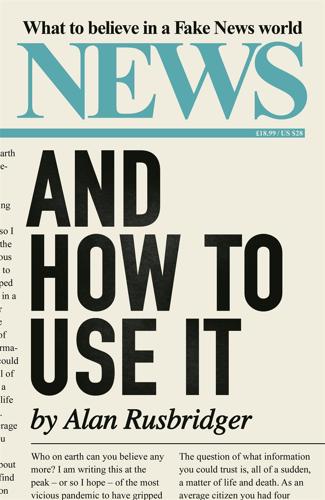
News and How to Use It: What to Believe in a Fake News World
by
Alan Rusbridger
Published 26 Nov 2020
But pity the confusion in the general public’s mind as they try to understand the word ‘journalism’. DISINFORMATION It refers to intentionally disseminating mistaken information, sometimes covertly, in order to influence public opinion, obscure the truth, discredit an opponent or spread public cynicism, distrust or apathy. The culprit may mix truth with false conclusions and lies. It can be traced back to the Russian term dezinformatsiya (information designed to sow doubt and increase mistrust in institutions). Disinformation may not be a new thing, but the scale and speed at which information can be spread in the digital age is without precedent in history.
…
The hacking and leaking of internal Democratic Party communications during the 2016 US election were simply one high-profile symptom of the new warfare, which saw widespread covert political disinformation as well as the use of troll farms and bots to infiltrate and sway public debate. In some ways Putin’s agenda was not dissimilar from the tactics used by Donald Trump, Steve Bannon and other populists in seeking to undermine faith in any kind of evidence-based reality. If you can, for instance, convince enough people that the New York Times is completely fake, then (they imply) you might as well believe Bannon’s reality, and Trump’s alternative facts. The targets of disinformation are not always the obvious ones. The writer Peter Pomerantsev explored the odd-seeming behaviour of the Kremlin in choosing to crawl inside American protest movements online.
…
If journalism is trying to persuade sceptical readers that it is the safe harbour of reality, why would it handsomely reward and celebrate people for writing rubbish? We have seen in recent years some high-profile failings of journalism, not least the phone-hacking scandal, which rumbles on to this day. Equally, there are heroes and heroines of reporting as glorious as at any time in a century or more. There is now more disinformation put out into the world than ever before, much of it politically motivated. The owner of a media business can raise or corrupt it. And rarely is a paper all good, or all bad. So, it’s hard to write a book with a simple message about journalism and why it should be trusted. Much of it should; quite a lot shouldn’t.

Internet for the People: The Fight for Our Digital Future
by
Ben Tarnoff
Published 13 Jun 2022
It was David Duke, former Ku Klux Klan grand wizard, and not John Perry Barlow, former Grateful Dead lyricist, who saw the future of the internet most clearly. But how has Duke’s vision been fulfilled, exactly? How do the online malls of social media politicize people? This is a matter of much complexity, and much confusion. Beyond the Bubble The popular version goes something like this: users are being brainwashed by disinformation. Disinformation is promoting polarization. It is disseminated primarily by foreign agents. It is designed to elicit strong emotions like anger so that it can spread more easily. It spreads more easily because social media sites are optimized for user engagement—capturing more user attention means collecting more advertising dollars—and content that provokes and enrages naturally gets more engagement.
…
Fox as one of the most popular US publishers on Facebook: Benedict Nicholson, “These Were the Top Publishers on Face-book in November 2020,” NewsWhip, December 9, 2020. “Trading up the chain”: Alice Marwick and Rebecca Lewis, “Media Manipulation and Disinformation Online,” Data & Society Research Institute, May 15, 2017. 142, This messiness is manifest … Lack of evidence for “filter bubbles”: Peter M. Dahlgren, “A Critical Review of Filter Bubbles and a Comparison with Selective Exposure,” Nordicom Review 42, no. 1 (2021): 15–33; Axel Bruns, “Filter Bubble,” Internet Policy Review 8, no. 4 (2019). “Widespread heterogeneity …”: P. M. Krafft and Joan Donovan, “Disinformation by Design: The Use of Evidence Collages and Platform Filtering in a Media Manipulation Campaign,” Political Communication 37, no. 2 (2020): 195.
…
Shapiro, “Greater Internet Use Is Not Associated with Faster Growth in Political Polarization among US Demographic Groups,” Proceedings of the National Academy of Sciences 114, no. 40 (October 3, 2017): 10616. See also Levi Boxell, Matthew Gentzkow, and Jesse M. Shapiro, “Cross-Country Trends in Affective Polarization,” National Bureau of Economic Research, 2020, and Yochai Benkler, Robert Faris, and Hal Roberts, Network Propaganda: Manipulation, Disinformation, and Radicalization in American Politics (Oxford: Oxford University Press, 2018), 296–339. 141, But the Right has immeasurably … The journalist Kevin Roose compiles the ten top-performing link posts by public US Facebook pages every day and publishes them on Twitter at twitter. com/FacebooksTop10.
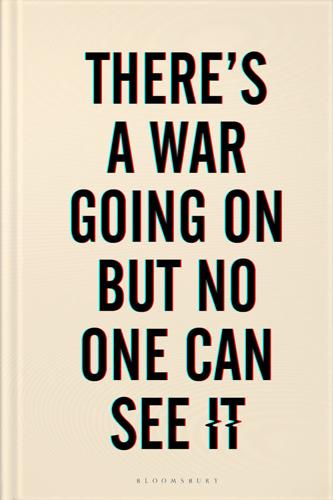
There's a War Going on but No One Can See It
by
Huib Modderkolk
Published 1 Sep 2021
On YouTube, a video appeared of a man watching Arab TV, followed by masked ISIS members claiming responsibility. Even Wikipedia had already created a page about the catastrophe, and local and regional media were also reporting it on social channels. But it was all fake. Over the course of a few hours, dozens of phoney accounts churned out hundreds of tweets, pictures and staged videos as part of a disinformation campaign orchestrated from a troll factory in St Petersburg. The news triggered panic, with frightened residents calling emergency services and officials at the chemical plant. And that’s precisely what the young Russians had been told to do: create unrest and sow discord. Something similar happened after flight MH17 was shot down.
…
Over time, Prigozhin also scaled the hierarchy of the Kremlin. Then came 2017. Bloomberg News published an article about the Russian Internet Research Agency (IRA) in St Petersburg. ‘We were stunned,’ says Julio, looking back. The piece set out in minute detail how Russian online manipulation worked. How hundreds of young Russians were spreading disinformation from a tower block on the outskirts of St Petersburg (see also Chapter 9). But what really grabbed their attention, says Carlos, ‘was that the algorithm and accounts’ behaviour were identical to SNAP’. How was this possible, the two Spaniards wondered. Had someone stolen their software? They tried to figure it out, searching in public sources and doing their own research.
…
International experts, including the FBI, have said they suspect the IRA is using ‘foreign software’ to manipulate social media. And after the Russian meddling in the 2016 US elections, the FBI indicted Prigozhin for his involvement with the IRA. Julio admits, ‘Without meaning to, we created the perfect weapon.’ * The disinformation Julio and Carlos saw mostly originated in Russia and Venezuela – with a significant uptick around the referendum on Catalan independence. But it’s not only Russia and Venezuela that are using the weapon. In September 2019, researchers at Oxford University reported the use of ‘computational propaganda to shape public attitudes via social media’ in seventy countries.
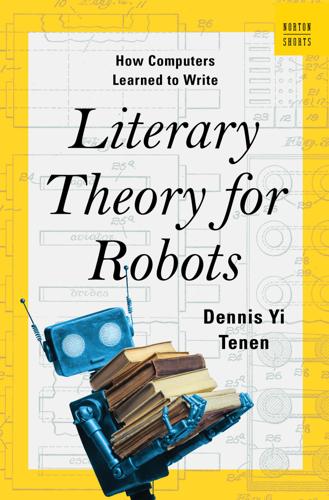
Literary Theory for Robots: How Computers Learned to Write
by
Dennis Yi Tenen
Published 6 Feb 2024
They read greedily: all literature, all of the time—novels, encyclopedias, academic articles, private messages, advertisements, love letters, news stories, hate speech, and crime reports—everything written and transmitted, no matter how insignificant. This ingested printed matter contains the messiness of human wisdom and emotion—the information and disinformation, fact and metaphor. While we were building railroads, fighting wars, and buying shoes online, the machine child went to school. Literary computers scribble everywhere now in the background, powering search engines, recommendations systems, and customer service chatbots. They flag offensive content on social networks and delete spam from our inboxes.
…
I am contributing in my own small ways, by translating war communiques, filing take-down notices, and writing code to automate certain language tasks useful for the war effort. The battle between Western support and the unwieldy machine of Russian state propaganda rages in countless online forums, where information and disinformation merge into a rush of war commentary, fueled by AI authors. Poetry did not, however, protect Russia from the myths of imperialism or fascism, in the way that Richards had hoped for humanity in his book. Literature was instead mobilized as one of its last remaining weapons. The Russian invasion of Ukraine in 2022 happened under the pretext of protecting a Russian linguistic minority in the Ukrainian Donbas region, “in danger of cultural erasure,” alongside the alleged removal of Pushkin, Tolstoy, Lermontov, and Dostoevsky from school curriculums.
…
Bots sell products or serve in customer service, using a mixture of words typed by humans, scripted or “canned” responses, and novel machine-generated prose. These commercial outputs are meant to produce a positive emotional reaction: “How satisfied were you with this experience? Very satisfied. Somewhat satisfied. Not satisfied.” Other automated agents engage to provoke malice. Consider the covert disinformation campaigns launched globally by Russian military intelligence (GRU). (Note the use of “intelligence” in that sense, too.) A force for bad, its intrusion into public discourse puts my point most starkly: artificial intelligence belongs to a species of political Leviathans, projecting concerted collective action at a distance.
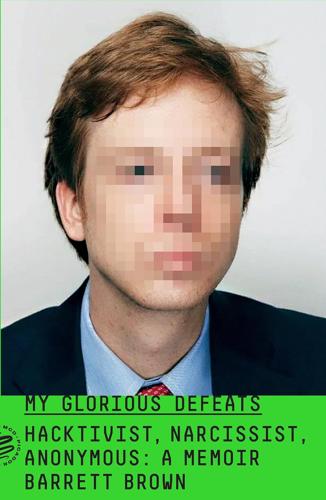
My Glorious Defeats: Hacktivist, Narcissist, Anonymous: A Memoir
by
Barrett Brown
Published 8 Jul 2024
When an industry is not only secretive and little known to outsiders but also compartmentalized to such an extent that even insiders cannot expect to know much about what it does in totality, the difficult and crucial task of envisioning consequences becomes nearly impossible. When it deals with something as fundamental as information, and disinformation in particular, it also becomes incomparably relevant to all other affairs, which are conducted in accordance with that same information. The intelligence-contracting industry is as opaque as it is consequential. It is a breeding ground for dangerous capabilities that are all the more dangerous for being so little understood.
…
More dramatically, the United States has a long documented history of intelligence community interference with Western press outlets, ranging from such things as the Time founder Henry Luce’s active cooperation with the CIA to that agency’s long-running partial infiltration of outlets and wire services under Operation Mockingbird. There is good reason to believe that such operations are far diminished from their Cold War peak, and that any that remain are relatively inconsequential. But indirect methods involving tech-based disinformation—and, more prosaically, the cultivation of that mediocre sort of reporter who, in the absence of any particular talent, is forced to build a career on scoops—do still seem to be in play, sometimes in a manner that can tilt crucial national decisions in one direction or another. The best example of how all of this works in practice is the Judith Miller affair, when Miller—a New York Times journalist who shared certain ideological affinities with neocons and supported their Middle East ambitions—accepted false information from Dick Cheney’s chief of staff, Scooter Libby, to the effect that Saddam Hussein had received uranium from Nigeria; this was quickly followed by true yet classified information intended to discredit a U.S. diplomat who’d publicly refuted the false story.
…
A conference call between the FBI, Interpol, and several European police agencies—during which they discussed strategies in the upcoming court cases of arrested LulzSec affiliates and ongoing operations against the wider movement—was accessed by an Anon, recorded, and posted online to the palpable glee of reporters. An article in The Huffington Post announced that Aaron Barr had lost his new job; his boss was quoted explaining that Barr had spent much of his time pursuing Anonymous instead of working. This wasn’t terribly surprising to those of us who had continually dealt with mysterious attacks and disinformation campaigns since February; years later, we would learn how much of this had in fact been state-sponsored. The year 2011 ended as it began, with a sophisticated hack on a state-affiliated corporation that ostensibly dealt in straightforward security and analysis while secretly engaging in black ops campaigns against activists who’d proven troublesome to powerful clients.
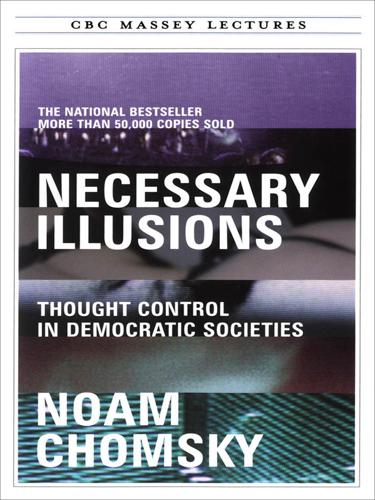
Necessary Illusions
by
Noam Chomsky
Published 1 Sep 1995
The “United States” is thus deprived of means previously available to “cope with” enemies who are so deceitful as to operate within the law, and who are “politically dishonest by hiding one’s true political aims or knowingly planting lies and disinformation.” Prominent in this category are the church-based groups and others that opposed the Vietnam war and are carrying out similar “calculated political deception” with regard to our crusade for freedom in Central America. The “lies and disinformation” of these subversive elements in the service of their hidden agendas or foreign masters “may poison the marketplace of ideas and damage a democratic society more seriously than the overt advocacy of forceful overthrow.”
…
To illustrate, I have reviewed a few samples of the media’s contributions to the government project of “demonizing the Sandinistas” while praising the violent terror states backed or directly installed by the United States in the region. With all the skepticism I have personally developed through studying media performance over many years, I had not expected that they would rise to this challenge. When writing in 1985 about the Reaganite disinformation programs concerning Central America, I did not compare Nicaragua to El Salvador and Guatemala to demonstrate the hypocrisy of the charges (where they were not outright lies); that seemed an insult to the reader’s intelligence. Instead, I compared the allegations concerning Nicaragua with the behavior of the “model democracy” of Israel during the same period and that of the United States itself in wartime conditions, showing that the Sandinista record was respectable by these—admittedly, not very impressive— standards.3 But my assessment of the media was naive.
…
The media even permitted themselves to be duped by a transparent fraud, the well-timed “discovery” of a shipment of MiG fighter planes to Nicaragua, which predictably turned out to be fanciful and was later attributed to Oliver North’s shenanigans, but which admirably served its purpose of helping to efface the unwanted Nicaraguan elections. When it had become obvious that no MiGs had arrived, a new phase of disinformation began, shifting attention to the leak of secret information (that is, to the planned release of intelligence fabrications, so it appears), condemned as “criminal” by Secretary Shultz. The press again went along, taking the issue to be the alleged leak and not the propaganda exercise in which they had participated, even claiming that the MiG pretense had harmed the U.S. and anti-Sandinista groups.
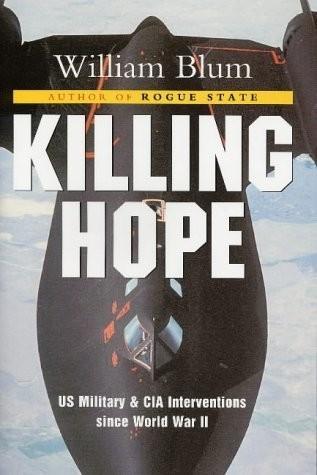
Killing Hope: Us Military and Cia Interventions Since World War 2
by
William Blum
Published 15 Jan 2003
In the 1930s, and again after the war in the 1940s and '50s, anti-communists of various stripes in the United States tried their best to expose the crimes of the Soviet Union, such as the purge trials and the mass murders. But a strange thing happened. The truth did not seem to matter. American Communists and fellow travelers continued to support the Kremlin. Even allowing for the exaggeration and disinformation regularly disbursed by the anti-communists which damaged their credibility, the continued ignorance and/or denial by the American leftists is remarkable. At the close of the Second World War, when the victorious Allies discovered the German concentration camps, in some cases German citizens from nearby towns were brought to the camp to come face-to-face with the institution, the piles of corpses, and the still-living skeletal people; some of the respectable burghers were even forced to bury the dead.
…
In the Philippines it is customary for the local/regional government to get a 10 percent rake-off on all such enterprise and for national politicians to get another 10 percent. So the safe explanation becomes "Communist-inspired subversive insurgency." The word for this in the Philippines is Huk.24 The most insidious part of the CIA operation in the Philippines was the fundamental manipulation of the nation's political life, featuring stage-managed elections and disinformation campaigns. The high-point of this effort was the election to the presidency, in 1953, of Ramon Magsaysay, the cooperative former defense department head. Lansdale, it was said, "invented" Magsaysay.25 His CIA front organizations— such as the National Movement for Free Elections—ran the Filipino's campaign with all the license, impunity, and money that one would expect from the Democratic or Republican National Committees operating in the US, or perhaps more to the point, Mayor Daley operating in Chicago.
…
On the broadcasts of the CIA's "Voice of Liberation" the picture was different: The rebels were everywhere and advancing; they were of large numbers and picking up volunteers as they marched; war and upheaval in all corners; fearsome battles and major defeats for the Guatemalan army. Some of these broadcasts were transmitted over regular public and even military channels, serving to convince some of Arbenz's officers that the reports were genuine. In the same way, the CIA was able to answer real military messages with fake responses. All manner of disinformation was spread and rumors fomented; dummy parachute drops were made in scattered areas to heighten the belief that a major invasion was taking place.27 77 United Fruit Company's publicity office circulated photographs to journalists of mutilated bodies about to be buried in a mass grave as an example of the atrocities committed by the Arbenz regime.
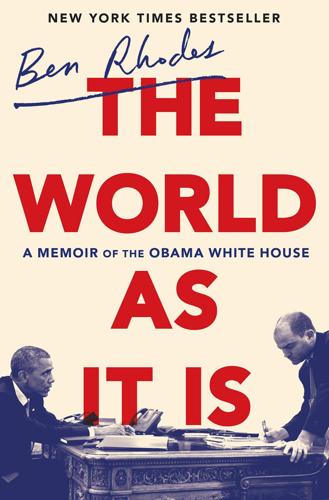
The World as It Is: A Memoir of the Obama White House
by
Ben Rhodes
Published 4 Jun 2018
To understand what ended up happening in the 2016 presidential election, you have to understand this: When protests toppled the Ukrainian government, Putin interpreted that as the United States coming into Russia, akin to an act of war; when he launched his counterattack—annexing Crimea, creeping into eastern Ukraine—he weaponized information and showed a willingness to lie, using traditional media like television, and new media platforms like Twitter, Facebook, and YouTube, to spread disinformation into open, Western societies like a virus. Eventually, the Russians would come into America, as they believed we’d gone into Ukraine. They took advantage of the fact that we were worn down by decades of political polarization and the balkanization of our media. America’s antibodies to the sickness of Russian disinformation were weak, if they were there at all. * * * — IN APRIL 2016, WE landed in London for a hastily arranged trip to help David Cameron fight off a Brexit referendum.
…
There was a lingering unease, a palpable sense that the place was under threat. In a meeting, the Estonian president, Toomas Ilves, insisted to Obama that we had to take Putin at his word if he said he would take Kiev. Ilves had an academic manner, and he described methodically how Russia was using fake news and disinformation to turn Estonia’s Russian-speaking minority against Europe. Speaking in paragraphs, he tied together Putin, the emergence of right-wing political parties in Europe, and ISIL. These are people, he said, who fundamentally reject the legitimacy of the liberal order. They are looking for another form of legitimacy—one that is counter to our notion of progress.
…
It didn’t matter much that the shifting Russian explanations could be debunked. The investigation was going to take years; with their media capabilities and willingness to lie, the Russians could fill that space with all manner of false narratives. Since the protests had ousted Russia’s client leader in Ukraine in 2014, we’d grown accustomed to Russian disinformation. Sometimes it could be thuggishly personal. Jen Psaki, who was then our State Department spokeswoman, was a target. Russian media outlets—amplified by Russian bots—invented quotes from her to discredit our policies. In social media campaigns, her head was superimposed on the body of a model in a provocative pose to suggest that she was a crude, unserious person.
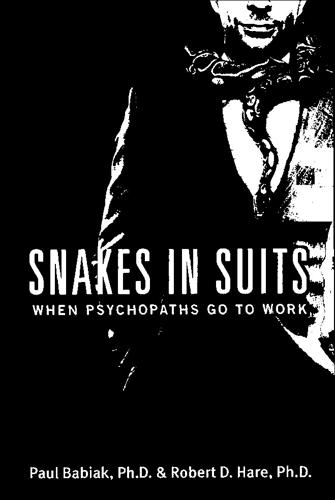
Snakes in Suits: When Psychopaths Go to Work
by
Dr. Paul Babiak
and
Dr. Robert Hare
Published 7 May 2007
Specifically, their game plans involved manipulating communication networks to enhance their own reputation, to disparage others, and to create conflicts and rivalries among organization members, thereby keeping them from sharing information that might uncover the deceit. They also spread disinformation in the interest of protecting their scam and furthering their own careers. Being exceedingly clever and secretive, they were able to cloak their association with the disinformation, leading others to believe that they were innocent of manipulation. Secrecy is a key to a corporate con’s success. Impression Management, Deception, and Lies Impression management, deception, and lying are integral and necessary parts of social interactions.
…
Their often theatrical, yet convincing stories and entertaining explanations reinforce an environment of trust, acceptance, and genuine delight, leading most people to accept them exactly as whom they appear to be—and almost unconsciously excuse any inconsistencies they might have noted. If challenged or caught in a lie, psychopaths are not embarrassed. They simply change or elaborate on the story line to weave together all the misarranged details into a believable fabric. Well-practiced oral communication skills make this endless stream of disinformation seem believable, sensible, and logical. Some psychopaths are so good at this that they can create a veritable Shangri-la view of their world in the minds of others; a view that they almost seem to believe themselves. Surprisingly, psychopaths will lie even to people who already know the truth about what they are saying.
…
The psychopathic fiction, “I am the ideal employee,” created in the minds of his or her supporters can be easily transformed into a very believable “I am the ideal leader.” In this case, the internal psychopath will look much better than any but the most outstanding external candidate. Furthermore, the psychopath also has a clear advantage should the company compare him or her with internal candidates. Recall that corporate psychopaths spread considerable disinformation about their rivals (unbeknownst to the company or the rival), which leads to doubts and concerns, thus effectively knocking other candidates out of contention. This is a real problem for the company trying to fill a top-level job. The best defense for this type of systematic manipulation is to add more hurdles or screens, in the form of executive recruiters and formal succession planning.

The New Rules of War: Victory in the Age of Durable Disorder
by
Sean McFate
Published 22 Jan 2019
Its spies even have a name for this kind of subversion—“active measures”—and it’s an example of how shadow wars are fought by weaponizing information. One reason why RT is effective is that it blends legitimate experts and journalists with crackpots, offering a plausible version of events that is nested within a larger global disinformation campaign. Think of RT as strategic storytelling. The “Troll Factory” is another component of Russia’s active measures against the West, revealing the true power of cyberwarfare. It’s not sabotage, like Stuxnet—it’s disinformation. Located in Saint Petersburg and officially called the Internet Research Agency, it’s where Russian operatives hack into websites, create phony news sites, and pump out fake news and bogus social media messages.
…
The United Nations demanded a full inquiry, but armed Russian separatists blocked access to the crash site, so the UN gave up. The world erupted in outrage until a new scandal seized the news cycle, and everyone moved on. Without clear evidence, it’s hard to know truth from fiction. War is becoming a “he said, she said” affair with no meaningful consequences for liars. Russia has become a disinformation superpower, employing a “kill ’em with confusion” strategy. And it’s working. The evidence is everywhere: making a war in Ukraine invisible, hacking the 2016 US presidential election, stoking the Brexit vote, supporting fringe political groups, fueling right-wing nationalism in NATO countries, and spinning its dubious role in the Middle East.
…
RT features programming tailor-made for US and UK viewers, as well as offering services in French, Spanish, and Arabic. Its reach is global, broadcasting to some one hundred countries via satellite television and the internet. But no one should be fooled into thinking RT is a news outlet. RT is not a media company but an intelligence operation, and its purpose is not information—it’s disinformation. It offers “alternative facts” to seed doubt and change minds. Taking a page from the embattled spook’s handbook, its mantra could be: “Admit nothing. Deny everything. Make counteraccusations.” The Kremlin funds RT’s $400 million annual budget to warp the truth for Russia’s strategic interests.
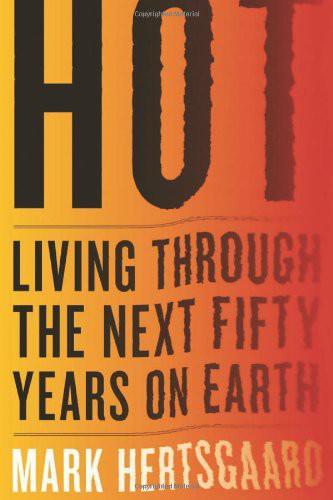
Hot: Living Through the Next Fifty Years on Earth
by
Mark Hertsgaard
Published 15 Jan 2011
Notwithstanding its studiously neutral name, the coalition would spend millions of dollars in the 1990s on a public disinformation campaign whose strategy and tactics recalled the tobacco industry's earlier efforts to persuade people that smoking cigarettes does not cause cancer. Indeed, Seitz and organizations he directed were paid more than $45 million for their work, first by tobacco and later by energy companies, as I'll describe later in this book. The goal of the disinformation campaign was to "reposition global warming as theory rather than fact," according to an internal strategy memo unearthed by journalist Ross Gelbspan, who exposed the campaign in his 1997 book The Heat Is On.
…
The Times editorial called the proposal "political hot air." It then disparaged the science of global warming by citing a Wall Street Journal opinion article by'S. Fred Singer—in retrospect, not a wise choice, for Singer would emerge in the 1990s as a recipient of funding from ExxonMobil and other energy companies that spread disinformation about climate science. In a final stab at wit, the Times chortled that if Sims and Laing really wanted to study the greenhouse effect, they should sprinkle a tomato patch with "steer manure," something they as politicians should have no trouble locating. But his parents had taught Sims long ago not to let what others say hold you back.
…
Although Ross Gelbspan and other journalists published occasional exposés of the coalition's funding sources and political agenda, the deniers' assertions were generally taken at face value in congressional hearings, news stories, and other public forums and ended up having considerable effect. "The goal of the disinformation campaign wasn't to win the debate," Gelbspan later explained. "The goal was simply to keep the debate going. When the public hears the media report that some scientists believe warming is real but others don't, its reaction is, 'Come back and tell us when you're really sure.' So no political action is taken."
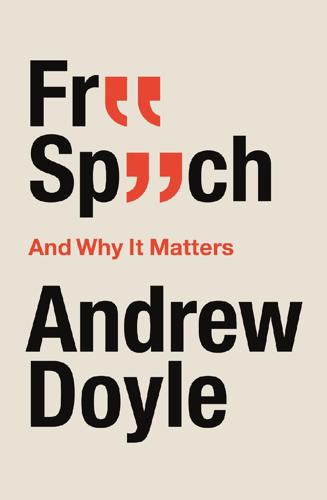
Free Speech And Why It Matters
by
Andrew Doyle
Published 24 Feb 2021
p.81‘people who are already hateful and prone to violence’: Gordon Danning, ‘“Hate speech” does not incite hatred’, Quillette (18 January 2018). p.81the current movement in the United States to see that hate speech is exempt: Writing in the New York Times, Emily Bazelon argues that the First Amendment is ill-equipped to deal with ‘the spread of viral disinformation’ in the digital age. See Emily Bazelon, ‘The problem with free speech in an age of disinformation’, the New York Times (18 October 2020). p.82Marantz’s strategy of recasting his argument as a ‘fact’: In Robby Soave’s rebuttal to Marantz’s article, he points out that rates of violent crime in the US have continually fallen since the 1990s, even though during that same period the Supreme Court has been increasingly insistent on upholding protections guaranteed by the First Amendment.
…
We have all heard of the ‘Streisand effect’, whereby attempts at censorship and suppression inadvertently draw more attention to the offending material. Whenever I hear demands for a book to be banned, my first thought is invariably: ‘How can I get hold of a copy?’ The same principle applies to disinformation. The term ‘fake news’ is now often deployed as a strategy to delegitimise alternative viewpoints. But even in cases where deception is unambiguously the motive, censorship usually has the unintended effect of accelerating the dissemination of the material in question. Many purveyors of ‘fake news’ rely on the narrative that they are brave truth-tellers fighting back against oppressive forces who would see them silenced.
…
Index A abuses of state power 67 academic freedom 60–3 Academic Freedom in an Age of Conformity (Williams) 63 Alibhai-Brown, Yasmin 21, 22 Almansor (Heine) 94 American Civil Liberties Union (ACLU) 19, 93 Ancient Greeks 58 ‘anecdotal evidence’ 32 anti-censorship campaigners 17 anti-Semitism 18–19, 66, 80 Arendt, Hannah 72 Areopagitica (Milton) 3–4 ‘art’ 56 artists 55–8 Associated Press 50 Atwood, Margaret 26 Auschwitz 80 authoritarianism 89 avoidance of conflict 35–6 B Barrett, Lisa Feldman 70 ‘Battle of Cable Street’ 20 Benn, Tony 69 Berkeley, University of California 33 Bernstein, Eduard 97 big tech corporations 11–13, 45 ‘blackshirts’ 20 blasphemy 51 Boghossian, Peter 74 ‘bonfire of the vanities’ 55 books censors 4 destruction 94 humanistic culture 9–10 moral or immoral 83 Botticelli, Sandro 55 Boyle, Danny 84 Bradbury, Ray 11 Brexit 67 British Library 95 C cancel culture 25–30, 42–3, 63, 96 Cardozo, Benjamin 33 Catholic Church 9 Cato Institute 28 Cave, Nick 27 Censored (Coleman) 87 censorship and the censors 85 and criticism 16, 24 and the Internet 13 metaphor of sunlight 44 of printed texts 4 right-leaning tabloids 7 right-wing talking point 6 and social media 11, 45 tech giants 13 Charbonnier, Stéphane (‘Charb’) 50, 51, 53 Charlie Hebdo 50, 51–3 ‘Charter 77’ committee 3 Chomsky, Noam 26 Christakis, Erika 61 Christakis, Nicholas 61–2 ‘Clean Up TV’ campaign 83 Clinton, Chelsea 79 Coleman, Paul 87 College of Policing 88 comedians and comedy 49–50, 56 see also satire Communications Act 2003 (UK) 66, 89 Communications Decency Act 1996 (US) 12 concept creep 46–7, 68 consent 75 Cope, Edward Drinker 74 Cox, Jo 82 Crash (Cronenberg) 84 criticism 16, 24, 32, 57 Cronenberg, David 84 ‘crowded theatre’ argument 22–4 Crown Prosecution Service 88 ‘culture wars’ 2, 63–4 D Danning, Gordon 81 Darwin, Charles 74 Davis, Daryl 17–18, 69 ‘Day of Absence’ protests 62 debating defeated ideas 68 Declaration of the Rights of Man and of the Citizen 10 decolonising authors 96 ‘Decolonising Working Group,’ British Library 95 Defending My Enemy (Neier) 19 democratic accountability 11 ‘despotism of custom’ (Mill) 57 dictatorships 90 ‘direct-effects model’ 84 Disclosure and Barring Service (DBS) 88 disinformation 85 Dissertation on First-Principles of Government (Paine) 18 diversity 33 ‘dog whistle’ 16 Dorsey, Jack 12 dystopian fiction 11 E Eddo-Lodge, Reni 27–8 emotional and intellectual comfort 37 emotional pain 75 ‘The English People’ (Orwell) 59 Enlightenment 10 European Court of Human Rights 87 European Union referendum (2016) 59 Evergreen State College 62 F Facebook 12, 13 ‘fact-checking’ 13 Fahrenheit 451 (Bradbury) 11 ‘fake news’ 12, 85 fascism 32–3, 67–8 feminism 71 First Amendment of the United States Constitution 10, 11 First Principles (Spencer) 43 forced conversions 43 Foucault, Michel 73 Foundation for Individual Rights in Education (FIRE) 61 Founding Fathers 10, 11 France 50 Frankfurt School 83 ‘free speech crisis’ 89 ‘Free Speech Is Killing Us’ (Marantz) 81–2 French Revolution 10 Fritsch, Theodor 66 G Galileo 4 ‘gaslighting’ 25–6 gender identity 30 gender-neutral pronouns 89 gender self-identification 26, 71 Goebbels, Joseph 66, 80, 94 Gopnik, Adam 72 ‘gramophone mind’ (Orwell) 97 ‘grossly offensive’ online speech 89 H Haidt, Jonathan 70, 71 Hall, Radclyffe 84 Hardy, Thomas 75 Harper’s Magazine 26–7 Hate Crime Operational Guidance (College of Policing) 88 ‘hate crimes’ 88 ‘hate incidents’ 88 ‘hate speech’ 12, 19, 87–91, 96–7 ‘hate speech’ laws 22, 52–3, 66–7, 87 Havel, Václav 3 Hazlitt, William 43, 60 Heine, Heinrich 94 higher education 60–1 see also universities historical discrimination 33 Hitchens, Christopher 3 Hitler 10, 66 Hobbes, Thomas 6 Holland, Tom 73–4 Holmes, Oliver Wendell 22–3 Holocaust denial 68 House of Commons 82 humanistic culture 9–10 Humberside Police 1 Hutus 77 I identity issues 33–4 identity-obsessed activism 83 ‘identity quakes’ 74 inciting violence 77–85 Internet 13, 45, 96 see also social media Is Free Speech Racist?

Clean Code: A Handbook of Agile Software Craftsmanship
by
Robert C. Martin
Published 1 Jan 2007
It results in a new version of the function: public List<Cell> getFlaggedCells() { List<Cell> flaggedCells = new ArrayList<Cell>(); for (Cell cell : gameBoard) if (cell.isFlagged()) flaggedCells.add(cell); return flaggedCells; } With these simple name changes, it’s not difficult to understand what’s going on. This is the power of choosing good names. Avoid Disinformation Programmers must avoid leaving false clues that obscure the meaning of code. We should avoid words whose entrenched meanings vary from our intended meaning. For example, hp, aix, and sco would be poor variable names because they are the names of Unix platforms or variants. Even if you are coding a hypotenuse and hp looks like a good abbreviation, it could be disinformative. Do not refer to a grouping of accounts as an accountList unless it’s actually a List. The word list means something specific to programmers.
…
Using inconsistent spellings is disinformation. With modern Java environments we enjoy automatic code completion. We write a few characters of a name and press some hotkey combination (if that) and are rewarded with a list of possible completions for that name. It is very helpful if names for very similar things sort together alphabetically and if the differences are very obvious, because the developer is likely to pick an object by name without seeing your copious comments or even the list of methods supplied by that class. A truly awful example of disinformative names would be the use of lower-case L or uppercase O as variable names, especially in combination.
…
Contents Foreword Introduction On the Cover Chapter 1: Clean Code There Will Be Code Bad Code The Total Cost of Owning a Mess The Grand Redesign in the Sky Attitude The Primal Conundrum The Art of Clean Code? What Is Clean Code? Schools of Thought We Are Authors The Boy Scout Rule Prequel and Principles Conclusion Bibliography Chapter 2: Meaningful Names Introduction Use Intention-Revealing Names Avoid Disinformation Make Meaningful Distinctions Use Pronounceable Names Use Searchable Names Avoid Encodings Hungarian Notation Member Prefixes Interfaces and Implementations Avoid Mental Mapping Class Names Method Names Don’t Be Cute Pick One Word per Concept Don’t Pun Use Solution Domain Names Use Problem Domain Names Add Meaningful Context Don’t Add Gratuitous Context Final Words Chapter 3: Functions Small!

Spooked: The Trump Dossier, Black Cube, and the Rise of Private Spies
by
Barry Meier
Published 17 May 2021
And when you think about Christopher Steele, the retired British intelligence agent calling his buddies who called their buddies in Moscow to get this information, the FSB is certainly capable of following those trails and polluting them with certain disinformation.” Shane went on to say that it was possible that Kremlin operatives, while focusing the brunt of their disinformation campaign against Hillary Clinton, might have hedged their bets by planting dirt about Trump and his associates. A former CIA spy on the same panel suggested that Shane had let his imagination run wild. “I mean anything is possible, you are absolutely right,” she said.
…
Russian intelligence operatives were likely monitoring the activities of Orbis Business Intelligence and Steele’s allegations about Michael Cohen’s trip to Prague could have been a plant, the report said. Steele was adamant that his memos hadn’t been contaminated by Russian disinformation. But if so, the other reason for its inaccuracies wasn’t particularly appealing. If the material wasn’t disinformation, there was only one alternative. It was shit information. TWO PEOPLE HAD REFUSED to be interviewed by investigators working on the Horowitz report—Glenn Simpson and Jonathan Winer, the lawyer who had arranged Steele’s State Department meeting.
…
AFTER ALLASON’S REPORT PUBLICLY emerged, Orbis Business Intelligence issued a statement dismissing it as a “politically motivated” piece of fiction and adding that Allason had no knowledge of Steele’s sources. But in time, another troubling theory about the dossier would begin to gain traction. It went like this: Russian intelligence operatives, aware that Steele was collecting information about Trump and the Kremlin, fed disinformation to his sources that then got incorporated into the dossier. One journalist who came to suspect that early on was Scott Shane, an experienced investigative reporter for The New York Times. It was Shane who had enraged Simpson by telling him that the paper decided to out Fusion GPS, though Simpson and Peter Fritsch soon forgave the paper and gave a copy of the dossier to a group of its reporters in Washington, D.C.

Media Control: The Spectacular Achievements of Propaganda
by
Noam Chomsky
Published 1 Jan 1974
There's a long history that goes back to the earliest modern democratic revolutions in seventeenth century England which largely expresses this point of view. I'm just going to keep to the modern period and say a few words about how that notion of democracy develops and why and how the problem of media and disinformation enters within that context. EARLY HISTORY OF PROPAGANDA Let's begin with the first modern government propaganda operation. That was under the Woodrow Wilson Administration. Woodrow Wilson was elected President in 1916 on the platform "Peace Without Victory." That was right in the middle of the World War I.
…
It was backed by the Soviet Union, the United States, Europe, the major Arab countries, and the Arab oil producers. It couldn't defeat Iran. But all of a sudden it's ready to conquer the world. Did you find anybody who pointed that out? The fact of the matter is, this was a third-world country with a peasant army. It is now being conceded that there was a ton of disinformation about the fortifications, the chemical weapons, etc. But did you find anybody who pointed it out? No. You found virtually nobody who pointed it out. That's typical. Notice that this was done one year after exactly the same thing was done with Manuel Noriega. Manuel Noriega is a minor thug by comparison with George Bush's friend Saddam Hussein or George Bush's other friends in Beijing or George Bush himself, for that matter.
…
Notice that this is not all that different from what the Creel Commission when it turned a pacifistic population into raving hysterics who wanted to destroy everything German to save ourselves from Huns who were tearing the arms off Belgian babies. The techniques are maybe more sophisticated, with television and lots of money going into it, but it's pretty traditional. I think the issue, to come back to my original com ment, is not simply disinformation and the Gulf crisis. The issue is much broader. It's whether we want to live in a free society or whether we want to live under what amounts to a form of self-imposed totalitarianism, with the bewildered herd marginalized, directed elsewhere, terrified, screaming patriotic slogans, fearing for their lives and admiring with awe the leader who saved them from destruction, while the educated masses goose-step on command and repeat the slogans they're supposed to repeat and the society deteriorates at home.
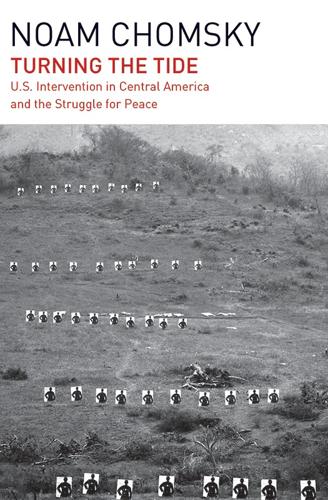
Turning the Tide
by
Noam Chomsky
Published 14 Sep 2015
The real fears of U.S. planners, and the duplicity of the media, are well illustrated by the brilliant exploitation of the speech by Sandinista commandante Tomas Borge cited in chapter 3, note 3. As noted, his call for Nicaragua to become an example that would be followed by others was converted by the U.S. disinformation system into the threat of military conquest, in pursuit of a “revolution without borders.” Though the fraud was at once exposed the device was too useful to abandon and Borge’s call for a revolution without borders” is now a staple of U.S. disinformation, with columnists regularly warning that “Sandinista Stalinism” may be serious about “waging a ‘revolution without borders’.”54 The most interesting use of this fraud was in Reagan’s speech on the eve of the House vote on contra aid in June 1986, considered as a triumph of “the great communicator.”
…
The President claimed in July 1983 that they had “literally made a contract to establish a true democracy” with the OAS before taking power in July 1979. This claim is without foundation; Roy Gutman observes that this charge, constantly reiterated by apologists for US atrocities, was concocted as part of a “successful U.S. disinformation campaign...According to the OAS, in a July 16, 1979, telex to then General Secretary Alejandro Orfila the Sandinistas said they planned to convoke ‘the first free elections in this century’ but made no reference to timing and said nothing about creating a ‘true democracy’.”71 But although the charge has no merit with regard to the Sandinistas, it does apply to Israel; with considerably more force, in fact.
…
Note that this account is one that can be checked against the historical record, a fact that a rational person will use in assessing the claims made without substantiation that constitute the government’s case. Use of the term “resistance forces,” with its favorable connotations (the resistance against the Nazis, etc.), to refer to the US proxy army attacking Nicaragua from its foreign bases is a neat piece of trickery by the state disinformation machine, quickly picked up by the loyal press, which sometimes even goes so far as to intimate that Nicaraguan officials refer to the terrorist forces in this way; thus we read that “President Daniel Ortega of Nicaragua said yesterday his government suspended civil liberties last week to ‘guarantee’ his army’s defeat of US-backed resistance forces,” and that “he said, however, that defeat of the resistance forces could create an even more ‘dangerous situation”’ by prompting US invasion.98 Government claims rest primarily on alleged material evidence that is classified, not a very credible tale.

The Age of Surveillance Capitalism
by
Shoshana Zuboff
Published 15 Jan 2019
As the US Deputy Attorney General told the press, “The Department of Justice will continue to hold accountable companies who in their bid for profits violate federal law and put at risk the health and safety of American consumers.”31 Information corruption has also been a continuous feature of the Facebook environment. The turmoil associated with the 2016 US and UK political disinformation campaigns on Facebook was a well-known problem that had disfigured elections and social discourse in Indonesia, the Philippines, Columbia, Germany, Spain, Italy, Chad, Uganda, Finland, Sweden, Holland, Estonia, and the Ukraine. Scholars and political analysts had called attention to the harmful consequences of online disinformation for years.32 One political analyst in the Philippines worried in 2017 that it might be too late to fix the problem: “We already saw the warning signs of this years ago.… Voices that were lurking in the shadows are now at the center of the public discourse.”33 The guiding principles of radical indifference are reflected in the operations of Facebook’s hidden low-wage labor force charged with limiting the perversion of the first text.
…
Whenever anything like that happens, we don’t want it to happen and we take responsibility for it.”48 Consistent with the aims of the adaptation phase of the cycle, Bloomberg Businessweek observed of Google, “The company is trying to fight fake news without making sweeping changes.”49 Although both Google and Facebook made modest operational adjustments to try to diminish economic incentives for disinformation and instituted warning systems to alert users to probable corruption, Zuckerberg also used his super-voting power to reject a shareholder proposal that would have required the company to report on its management of disinformation and the societal consequences of its practices, and Google executives successfully fought back a similar shareholder proposal that year.50 Time would tell whether the companies’ users and customers would inflict financial punishment, and if so, how sustained that punishment might be.
…
From this perspective the only rational objective is the pursuit of products that snare “everyone,” not “the best products.” A significant result of the systematic application of radical indifference is that the public-facing “first text” is vulnerable to corruption with content that would normally be perceived as repugnant: lies, systematic disinformation, fraud, violence, hate speech, and so on. As long as content contributes to “growth tactics,” Facebook “wins.” This vulnerability can be an explosive problem on the demand side, the user side, but it breaks through the fortifications of radical indifference only when it threatens to interrupt the flow of surplus into the second “shadow” text: the one that is for them but not for us.
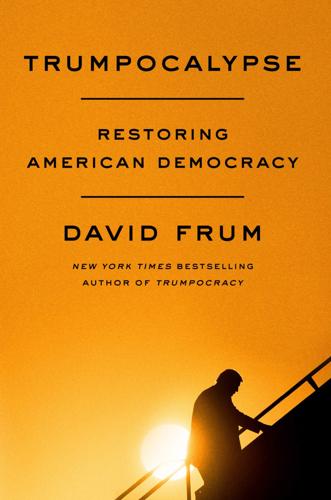
Trumpocalypse: Restoring American Democracy
by
David Frum
Published 25 May 2020
The gangster politics of Trump worked in great part because the conservatism that dominated US politics in the 1980s and 1990s lost its relevance to the America of later decades. The inherited political system left a lot of people stranded for meaningful answers at the exact same time that Facebook and YouTube lowered to virtually zero the cost of spreading mass disinformation. Socially disconnected young people, and especially young men, tumbled into their own social anti-knowledge systems, just as their elders were disinformed by Fox and Sinclair. These young men looked online for serious answers to big questions. They, too, often found bigotry and conspiracy theories instead. Yet even as American conservatism stopped meaning much to people under forty, the need for something like conservatism persisted.
…
The second most important television news type is cable, a medium of course dominated by Fox News, now reinforced by the new Fox-on-meth One American News Network (OANN). Next to television in importance are social media. About four in ten Americans say they get news from Facebook. About two in ten also get news from YouTube.19 Facebook and YouTube are the most important conduits for alt-Right and pro-Trump disinformation. Together, Fox News and the right-wing Daily Wire accounted for about 10 percent of the top ten thousand news stories on Facebook in the first quarter of 2019.20 The single biggest advertiser on Facebook in the summer of 2019, after the Trump campaign itself, was the Epoch Times, a far-right source of pro-Trump conspiracy theories and false news.21 Meanwhile, Twitter is in danger of becoming the Fox News of the Left, policed by pile-ons by angry Twitter mobs.
…
Despite the favorable economy, Trump’s approval rating among black voters tumbled to an amazing 6 percent in midsummer 2019 polls.25 By then, 80 percent of black voters described Trump as racist.26 Should Donald Trump be defeated in 2020, whether he leaves the White House under his own motor power or is hustled out by the White House ushers, Trumpism will not be so easily removed from American national life. Trump himself will rave and rage on Twitter and TV after a political defeat. He will sabotage anyone who tries to lead the Republican Party in a more hygienic post-Trump direction. He will muster all the suspicion and resentment of his former supporters; he will headline a campaign of disinformation and provocation on TV, radio, and social media. What do you imagine Fox News and your father-in-law’s Facebook feed will look like post-Trump? What kind of institution will the post-Trump Republican Party be? Trump transferred a brutal style of politics from right-wing media culture into electoral politics.

Information: A Very Short Introduction
by
Luciano Floridi
Published 25 Feb 2010
It follows that when semantic content is false, this is a case of misinformation. If the source of misinformation is aware of its nature, as when John intentionally lied to the mechanic, one speaks of disinformation. Disinformation and misinformation are ethically censurable but may be successful in achieving their purpose: in our example, the mechanic was still able to provide John with the right advice, despite being disinformed by him about the exact cause of the problem. Likewise, information may still fail to be successful; just imagine John telling the mechanic that his car is merely out of order. The second advantage is that [DEF] forges a robust and intuitive link between factual semantic information and knowledge.
…
The reader may have already thought of several examples that illustrate the problem: someone's testimony is someone else's trustworthy information; A's responsibility may be determined by the information A holds, but it may also concern the information A issues; censorship affects A both as a user and as a producer of information; disinformation (i.e. the deliberate production and distribution of false and misleading contents) is an ethical problem that concerns all three `informational arrows'; freedom of speech also affects the availability of offensive content (e.g. child pornography, violent content, and socially, politically, or religiously disrespectful statements) that might be morally questionable and should not circulate.

Cocaine Politics: Drugs, Armies, and the CIA in Central America
by
Peter Dale Scott
and
Jonathan Marshall
Published 1 Jan 1991
Rather than recount some controversial stories, we have steered away from witnesses whose credibility has come into serious question. A scandal like Iran-Contra inevitably produces a large number o f opportunistic superwitnesses, fantasizers, and conspiracy peddlers—not to mention conscious agents o f disinformation.24 If, despite our best efforts, history proves a few o f our assertions wrong, it will hardly overthrow the larger conclusions o f this study. The first half o f this work analyzes available evidence on the way corrupt military elites, Contra leaders, the CIA, and Washington policy-makers opened the door to the cocaine trade through Central America.
…
A State Department report to Congress in July 1986 stated flatly that “ there is no information to substantiate allegations” that Miami-based Cuban exiles had “been a source o f drug money for . . . any . . . resistance organization.”32 In response to further congressional inquiries, the Justice Department first withheld information, then insisted that allegations had been fully investigated and refuted. The CIA went even further, declaring that any reports o f Cuban exile involvement in weapons shipments, much less drug smuggling, were the result o f a disinformation campaign.33 FBI reports made public by the subcommittee exposed those official claims as outright lies. Far from having “no information” to back up the allegations, the FBI had direct substantiation in September 1984 from Jose Coutin, a Cuban American actively involved in the Contra support effort.
…
A related dummy company, which did business with the same bank, purchased arms for the Contras through Manzer al-Kassar, the Syrian arms and drug broker, who also dealt with leaders o f the Medellin Cartel.13 Noriega’s personal lawyer and business representative in Geneva also set up a front to establish an airfield in Costa Rica for supplying the Contras.14 Evidence gathered by Costa Rican judicial authorities suggests that Noriega’s intelligence operatives also helped the CIA and its allies in the Costa Rican security services obstruct the investigation o f an assassination attempt against Pastora by peddling disinformation about the main sus 68 / Narcoterrorism, the CIA, and the Contras pect’s background. The bombing o f Pastora’s press conference at La Penca on May 30, 1984, which killed several journalists and an aide to Pastora but missed the rebel leader himself, was most likely planned by hardliners in the Contra movement close to the CIA, according to an official Costa Rican probe.

The Secret World: A History of Intelligence
by
Christopher Andrew
Published 27 Jun 2018
His response to an NKVD report from Schulze-Boysen on 16 June was the obscene minute: ‘You can tell your “source” in German airforce headquarters to go fuck himself. He’s not a “source”, he’s a disinformer. J. Stalin.’ Stalin also heaped abuse on the Fourth Department illegal Richard Sorge, posthumously recognized as one of the heroes of Soviet intelligence, who sent similar warnings from Tokyo, where he had penetrated the German embassy and seduced the ambassador’s wife. Sorge’s warnings of impending German invasion were denounced by Stalin as disinformation from a lying ‘shit who has set himself up with some small factories and brothels in Japan’.72 Even in marginal comments, Stalin almost never used obscenity.
…
By March 1943, twenty-eight of the captured Second World War spies had been turned into double agents feeding disinformation to Germany. ‘In addition’, according to a top-secret MI5 report, ‘twelve real and seven imaginary persons have been foisted upon the enemy as double-cross spies.’55 Stalin and Soviet intelligence were convinced that some of its British agents were also ‘double-cross spies’. ‘Our task’, the Centre instructed its London resident, Anatoli Gorsky, ‘is to understand what disinformation our rivals are planting on us.’56* The Centre tied itself in knots as it tried to explain why, despite the British Double-Cross, some intelligence from its British agents appeared to be genuine.
…
Berlin has no knowledge or solid opinion about the strategic future and therefore has to let the local generals and admirals make up their own mind by giving them prompt access to all the reports that come in.’73 Ironically, some of the intelligence about which the Abwehr was most confident was a product of the British Double-Cross System. It had, for example, no doubt whatever about the reliability and importance of the disinformation fed to it in the MINCEMEAT deception.74 In February 1944, following the defection to the British of an Abwehr officer in Istanbul,* Hitler abolished the Abwehr as an independent organization, placing it under the control of Himmler and the SD. The SD believed it had gained control of a major network of Abwehr agents in Britain. In reality, all were double agents, controlled by MI5, feeding disinformation to their German case officers. The SD, however, had one major genuine agent of its own: Elyesa Bazna (codenamed CICERO), the valet of the British ambassador in Ankara, Sir Hughe Knatchbull-Hugessen.

This Is for Everyone: The Captivating Memoir From the Inventor of the World Wide Web
by
Tim Berners-Lee
Published 8 Sep 2025
But because this small part of the web is so addictive, people spend a lot of time on it, and as a result most web traffic is now concentrated in a handful of large platforms which harvest your private data and share it with commercial brokers or even repressive governments. That’s pretty far from my vision, too. Worse, authoritarian governments now use the web to spread disinformation and surveil their own citizens, and that’s as far from my vision as can be. While we use and celebrate the good on the web, we also have to address the bad. In the age of AI, these threats are more urgent than ever before. To ensure the web agents serve people – not corporate profits, not governments, not themselves, but people – it’s critical that we develop systems today that put the human first.
…
Marcos used Facebook and TikTok to whitewash the human rights abuses of his parents’ authoritarian regime, as well as to blame both the CIA and the Vatican for their downfall. ‘The liberal weapons of historical accuracy and fact-checking are simply no match for Marcos’ creative folklore, turbocharged by social media fan culture and relatable influencers,’ wrote Jonathan Corpus Ong, an academic who studied the Marcos disinformation network. We need to make social media that works for democracy. I’m encouraged by work done at the MIT Center for Constructive Communication, who, in conjunction with the non-profit Cortico, recently launched Fora, an open-source conversation platform. The Cortico team hosts small-group in-person discussions on local political issues.
…
Polis was used in 2015 to set Taiwan’s policy for ride-sharing apps like Uber, which faced opposition from local cab drivers. After a long series of posts to the app, the community came to a consensus that allowed Uber to operate in the country, but subjected it to strict regulations. Polis is deliberately designed to promote the norm, rather than extremes. It also uses AI to debunk disinformation before it gets a foothold, suspending and eventually banning participants who post it. I am also enthusiastic about the ongoing research in this area by our friend Jonathan Zittrain, a professor at Harvard University. Zittrain grew up moderating CompuServe forums, and, after getting a law degree, co-founded Harvard’s Berkman Klein Center, where Rosemary has been a fellow for the past dozen years.
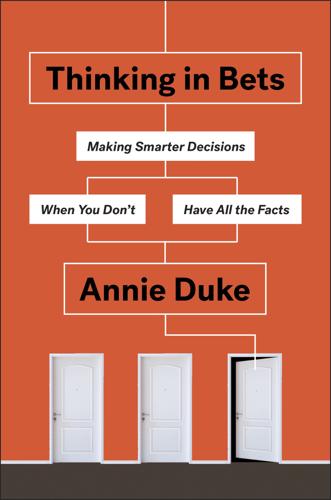
Thinking in Bets
by
Annie Duke
Published 6 Feb 2018
This is perhaps no more evident than in the rise in prominence of “fake news” and disinformation. The concept of “fake news,” an intentionally false story planted for financial or political gain, is hundreds of years old. It has included such legendary practitioners as Orson Welles, Joseph Pulitzer, and William Randolph Hearst. Disinformation is different than fake news in that the story has some true elements, embellished to spin a particular narrative. Fake news works because people who already hold beliefs consistent with the story generally won’t question the evidence. Disinformation is even more powerful because the confirmable facts in the story make it feel like the information has been vetted, adding to the power of the narrative being pushed.
…
Every bet we make in our lives depends on our beliefs: who we believe will make the best president, if we think we will like Des Moines, if we believe a low-fat diet will make us healthier, or even if we believe turkeys can fly. Being smart makes it worse The popular wisdom is that the smarter you are, the less susceptible you are to fake news or disinformation. After all, smart people are more likely to analyze and effectively evaluate where information is coming from, right? Part of being “smart” is being good at processing information, parsing the quality of an argument and the credibility of the source. So, intuitively, it feels like smart people should have the ability to spot motivated reasoning coming and should have more intellectual resources to fight it.
…
AARP, 185 accountability, 129, 130, 135–37, 149, 150, 176, 188, 199, 204 accuracy, 129, 130, 132–34, 136, 138, 139, 145, 150, 155–56, 158, 160, 161, 171 Adventures of the Mind, 243n After-School All-Stars (ASAS), 213–15, 217 age-progression technology, 184–87 agreement, 173–74 Alcoholics Anonymous (AA), 127–28, 132–33, 248n All In: The Poker Musical, 91 all-or-nothing thinking, see black-and-white thinking Alou, Moises, 98, 99 American Foreign Service Association, 139–40 Anguished English (Lederer), 90n approval, 132–34 Arbesman, Samuel, 67–68, 219 Ariely, Dan, 89 Armstrong, Scott, 143 Ascent of Man, The (Bronowski), 20 assent, 173 automobile accidents, 89–90, 101, 111–12 backcasting, 218–22, 225, 226 backgammon, 244n Back to the Future movies, 177 Bailenson, Jeremy, 185 baldness, 49, 51 Bank of America Merrill Lynch, 185 Bartman, Steve, 98–100, 114, 229, 247n baseball, 84 Bartman play in, 98–100, 114, 229, 247n Behavioral and Brain Sciences (BBS), 146–48, 153, 154 behavioral economics, 11 behavioral research, 107 Belichick, Bill, 6, 48 beliefs, 43, 44, 47–72, 76–77, 115, 122, 130 abstract, 50–52, 65–66 accuracy of, 138 based on hearing something, 49–53, 65–66 betting on, 61–62, 64–67, 72, 79–80, 84, 209 confidence in, 67–72, 135, 169 confirmatory thought and, 128 as contagious, 168 expressing, 170 formation of, 49–55, 59, 61, 65–66, 80 information and, 49–53, 55–56, 59–61, 66, 70, 94, 138–39 and processing experience, 57–59 smart people and, 62–64 stubbornness of, 59–62 Believing Brain, The (Shermer), 11–12 Benghazi attack, 92 Berkshire Hathaway, 191–93 Berra, Yogi, 96, 247n bet(s), 111–14 accountability and, 135 on beliefs, 61–62, 64–67, 72, 79–80, 84, 209 decisions as, 3–4, 43–45, 67 definition of, 44 on future, 79–80, 209 against ourselves, 45–46 winning, 130 bias, 66, 124, 131–32, 139, 157, 181n, 207 blind-spot, 62–63, 125–26 confirmatory thought and, 128–29, 132, 141–48, 155 exploratory thought and, 128 hindsight, 10, 26, 212, 227–31 Rashomon Effect and, 157–58 self-serving, 89–96, 102, 103, 108, 110–12, 115, 132, 136, 194 Binion’s Horseshoe Casino, 101, 124n bin Laden, Osama, 140, 208–9 black-and-white thinking, 29–31, 34, 67, 94–95, 97, 105 blackjack, 194–96 blind-spot bias, 62–63, 125–26 Bosnia, 140 Bossypants (Fey), 250n brain, 11–15, 53, 107, 110, 116, 122, 132, 165, 183, 188, 191, 198, 219 brain tumors, 197 Brethren, The (Woodward and Armstrong), 143 Brexit, 31–32, 231, 245n Breyer, Justice, 143–44 Bronowski, Jacob, 20 Buddhist monks, 110 buddy system, 124, 178 Burger, Justice, 143 Burke, Brian, 6 business start-ups, 29, 35 “but,” 173, 207 Caldwell, Charley, 57 Camerer, Colin, 13, 242n Cantril, Hadley, 57–58 car accidents, 89–90, 101, 111–12 cardiovascular disease, 55, 164–65 Carroll, Pete, 5–7, 10, 11, 22, 33, 35, 46, 48, 165–66, 216–18, 229, 230, 241n–42n Carstensen, Laura, 185 Catching Hell, 99 Center for Retirement Research, 184 Central Park, 220 CEO’s president-firing decision, 8–11, 33, 43, 48, 158, 229–30 certainty: illusion of, 204, 206, 207 see also uncertainty characterizations, 205 chess, 20–23, 80, 86, 91, 219, 244n Chicago Cubs, 98–100, 229 children, 45, 175–76 Christie, Chris, 92–93, 110 CIA, 140, 170 Citizen Kane, 64–65, 68–69 Clinton, Hillary, 32–33, 92, 230–31, 245n Cocteau, Jean, 98 coelacanth, 67–68 coin flips, 24–26, 244n communication: of information, 166, 173 with world beyond our group, 172–76 communism, Mertonian, 154–60, 206 comparison and competition, 104, 105, 107, 109, 110, 123, 165 compassion, 102–3, 105, 113–14 self-, 206 ConAgra, 228–29 confidence in beliefs, 67–72, 135, 169 overconfidence, 204 confidence intervals, 72 confirmatory thought, 128–29, 132, 141–48, 155, 205 conflicts of interest, 164–69, 206–7 Conrad, Lauren, 119–21, 125, 161, 175, 205 consequences, 179–80 Constitution, 156 Crawford, Jarret, 146 Crystal Lounge, 2, 75, 90 CUDOS, 153–55 disinterestedness, 154, 155, 164–69 Mertonian communism, 154–60, 206 organized skepticism, 154, 155, 169–71, 206, 224 universalism, 154, 155, 160–64, 173, 205 Daily Princetonian, 57 Dartmouth-Princeton football game, 56–59 data interpretation, 63–64, 181n Dawkins, Richard, 92n, 103 D-Day, 208 debating, 168–69 decision groups (truthseeking groups), 124–27, 188, 205, 206, 225 accountability in, 129, 130, 135–37 accuracy in, 129, 130, 132–34, 136, 139 charters for, 128–31, 133, 150, 157 communicating with world beyond, 172–76 debating in, 168–69 diversity of viewpoints in, 137–41 rules of engagement for, 150–51, 154–55; see also CUDOS social approval in, 132–34 tilt and, 199–200 decisions, 2–4, 44, 231 as bets, 3–4, 43–45, 67 consequences of, 179–80 moving regret in front of, 186–89 in poker, 116, 167, 179, 180, 188, 196–98 decision swear jar, 204–7 deliberative mind, 12–14, 16, 181n, 183, 186 Dershowitz, Alan, 32 Des Moines, Iowa, 37–43, 46, 48, 62, 66, 79, 135 detail, 158–59 devil’s advocate, 170–71 diabetes, 55, 164 disinformation, 60 disinterestedness, 154, 155, 164–69 dissent, 128, 137, 139–40, 143, 145, 148, 160, 169–73, 212, 225 Dissent Channel, 139–40, 170 diversity of opinions, 60–61, 129–30, 137–42, 145, 147–48, 150, 171, 172n, 211, 225 doctors, 81, 96 dog-to-human age ratio, 49, 50, 53 Doubleday, Abner, 53 Dreber, Anna, 149 Dr.
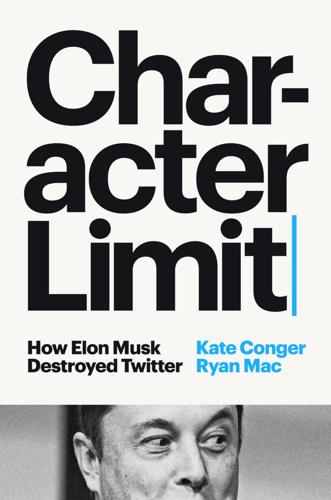
Character Limit: How Elon Musk Destroyed Twitter
by
Kate Conger
and
Ryan Mac
Published 17 Sep 2024
J., 409 Brown, Michael, Jr., 18–19, 183 Buhari, Muhammadu, 75 Burger King, 290 Burning Man, 335 Business Insider, 200, 205, 285 BuzzFeed, 25, 285, 379 C Calacanis, Jason, 134–35, 143, 177–79, 241, 279, 285, 290, 291, 296–98, 313, 317, 335, 378 Caldwell, Nick, 271, 344 Capital Cities, 156 Cardaci, Chris, 374 Carlson, Tucker, 404–6, 424 Catturd2, 390 censorship, see content moderation; freedom of speech Center for Countering Digital Hate, 392 Cernovich, Mike, 104 Chappelle, Dave, 375 Charles Schwab, 284 Chase Center, 171–72, 344, 375 Chen, Jon, 260–63 child sexual exploitation, 16, 20, 92, 146, 372, 392–93 China, 198–99, 244 Christchurch mosque shootings, 42 Christie, Jen, 80 CIA, 27, 173, 183 Clinton, Bill, 223 Clinton, Hillary, 67, 193, 287, 288, 315 CNBC, 406, 408, 420 CNET, 30 CNN, 23, 225, 378 Coca-Cola, 294, 311, 363 CODE Conference, 420–22 Cohen, Lara, 309 Cohn, Jesse, 49–57, 76–78, 110 Coinbase, 179 Coleman, Keith, 173–74 Combs, Sean “Diddy,” 302 Comer, James, 391 Compaq, 29, 156 Confinity, 30 Conger, Kate, 6 Congress, U.S., 57, 58, 59–60, 62, 88, 147, 225, 264 conspiracy theories, 2, 4, 25, 44, 60, 61, 93, 287, 406, 432 Great Replacement Theory, 424 Pizzagate, 25, 104, 390, 426 QAnon, 25, 391, 392, 433 about September 11 attacks, 433 Constitution, U.S., 275, 282, 363 content moderation, 4–6, 13, 15, 146, 206, 435 activist groups and, 294, 320, 392 Digital Services Act and, 244 at Facebook, 92 at Twitter, see Twitter, content moderation at; Twitter under Elon Musk, content moderation at see also misinformation and disinformation Conway, Kellyanne, 65–66 Cook, Tim, 366, 420 Costolo, Dick, 11, 17, 20–21, 42, 149, 170 COVID-19, 53–57, 59, 69–70, 113, 148, 173, 174, 180, 218, 325, 326, 414 misinformation about, 61–64, 68–69, 91, 110, 114, 222, 391 Musk and, 62–64, 99, 114, 128, 136, 375 Tesla and, 63, 96, 99 Twitter and, 53, 56–57, 61–64, 68–69, 77, 83, 90, 91, 97, 98, 185, 186, 255 vaccines for, 68–69, 391 Craft Ventures, 177 Crawford, Esther, 79, 240, 241, 243, 284–86, 297–98, 306, 310–12, 314–19, 323–24, 328–29, 331, 332, 335, 388, 398–99, 402 firing of, 398–99 sleeping photo of, 316 credit card companies, 29–30 crime, 406, 432 Crown Estate, 364 Cruz, Ted, 334, 392 cryptocurrency, 79, 105, 106, 136, 179, 182, 253 Bitcoin, 44, 57, 78, 79, 87, 177, 179, 233, 308, 358, 433 Dogecoin, 141, 144, 179 Culver, Leah, 273–74 D Daily Mail, 373 Daily Stormer, 355 Daily Wire, 408–9 DARPA, 223, 224 data centers, 87, 349, 385–88, 394 Davis, Dantley, 84, 94 Davis, Steve, 134, 241, 260, 261, 267, 271, 279, 283, 298, 324–25, 344, 358–61, 364, 371, 386, 389, 395, 398, 411–12 DealBook Conference, 426–30 deepfakes, 61–62, 64 Delaware, 210, 351, 434 Court of Chancery, 210, 215–18, 232 Division of Corporations, 258 Deloitte, 236 Democrats, 43, 68, 100, 321, 393, 419, 432 Denholm, Robyn, 39 Derella, Matt, 72 DeSantis, Ron, 392 Deutch, Ted, 418 Digital Services Act, 244, 400 disinformation, see misinformation and disinformation Disney, 139, 156, 357, 364, 425, 427–29 diversity, equity, and inclusion, 99–100, 197 Dogecoin, 141, 144, 179 Dominion Voting Systems, 405 Döpfner, Mathias, 104, 115 Dorsey, Jack, 6, 11–17, 22, 84, 102, 114, 150, 153, 163–64, 172, 185, 206, 211, 371, 433 Africa trip of, 44, 45 Agrawal and, 78, 81–82, 86, 87, 91, 106, 150, 167, 168–69, 193, 212 Analyst Day goals and, 76–77 Berland and, 44–45, 196, 239 Bitcoin and, 44, 57, 78, 79, 87, 177, 233, 308, 433 Block company of, 233 Bluesky project of, 87–88, 90–91, 106, 174, 221, 433, 435 Cohn and Elliott Management and, 49–57, 77, 78, 94–95, 106, 120, 150 congressional testimonies of, 57, 58, 59–60 content moderation and, 15, 43, 57, 59–60, 62, 64–75, 91–92 child sexual exploitation material and, 372 early life of, 12 Ferguson protests and, 18–19, 183, 362 in Hawaii, 57–58 health regimen of, 22, 86 LiveJournal posts of, 13 Musk and, 50, 53, 78–79, 105–6, 110, 112, 113, 123, 163 Twitter acquisition and, 123, 142, 143, 163–67, 168–69, 232–33, 308, 432–33 Twitter employee layoffs and, 308, 309 NASA and, 40–41 Nostr and, 382, 433 at Odeo, 13, 14 at OneTeam events, 41–42, 44–48, 55, 86 physical appearance and personal style of, 11–14, 17, 19, 21, 57, 59, 77 politics and, 43, 321 in Polynesia, 69–70, 72 remote work policies and, 53, 57, 336 at Square, 16, 22, 40, 42, 44, 49, 51, 52, 55, 233 Trump ban and, 70–75, 245 as Twitter CEO, 5, 11, 12, 14, 15, 17, 21, 40–42, 49–58, 60, 77–78, 81, 84, 129, 138, 140, 142, 149, 165, 166, 177, 194, 308, 432, 433 resignation as, 79, 80–83, 91, 105, 106, 108, 163–64, 193 Twitter created by, 13–14, 16, 194 Twitter offices toured by, 44 Twitter’s board and, 15–17, 49–51, 53, 73, 77, 78, 81–82, 105, 112, 142, 164, 194, 433 on Twitter’s rebranding as X, 416 Zatko and, 223 Dorsey, Marcia, 21, 45 dot-com bubble, 30 DoubleClick, 81 Dow Chemical, 139 Dowell, Christian, 332, 393 D’Souza, Dinesh, 133 DuPont, 139 Durban, Egon, 54–56, 95, 106–7, 127, 138–39, 143–45, 151, 163, 194–95, 209, 228 E eBay, 31, 51 Eberhard, Martin, 31, 32 economy, 152, 158, 188–89, 204, 336, 364, 388 financial crisis of 2008 in, 160, 325 global, 324, 325, 364 inflation in, 314 Edgett, Sean, 66, 73, 80, 210, 226, 231, 247, 248, 257, 368 firing of, 263–65 Edwards, Jon, 201 elections, 317, 342 in Brazil, 257, 275, 283, 307, 317, 390 in U.S.
…
A few days after his November testimony, paparazzi captured him strolling on a secluded Hawaiian beach with Sean Penn and Jay-Z. 6 > A Polynesian Vacation On March 25, 2021, Dorsey, along with Facebook chief executive Mark Zuckerberg and Google CEO Sundar Pichai, dialed in to testify virtually in front of the U.S. House of Representatives’ Energy and Commerce Committee for a hearing on combating disinformation and online extremism. It was the fifth such hearing that Twitter’s leader had been summoned to in front of Congress, and he was sick of it. The hearings felt theatrical, with the senators or representatives grandstanding on the culture war topic du jour. Dorsey attended the hearing—still virtual because of COVID concerns—from his Sea Cliff mansion kitchen, calling in from an iPad stacked on top of a pile of books.
…
It was this bureaucratic approach that allowed Jones to stay on the platform much longer than he was allowed to remain on others. At Twitter, they had waited for Jones to break enough rules on the site to merit a ban. But COVID changed things. Gadde turned to Yoel Roth, one of her deputies who had helped identify and root out Russian disinformation accounts after the 2016 election. Roth, an earnest, baby-faced man, had spent most of his career at Twitter, fighting misinformation. He joined the company in 2015, soon after completing a PhD focused on online communication and communities, and had written the closest thing Twitter had to a misinformation policy not long before COVID struck.
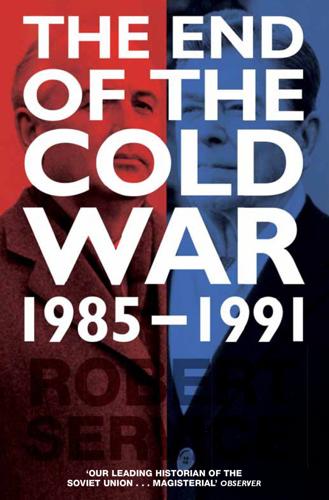
The End of the Cold War: 1985-1991
by
Robert Service
Published 7 Oct 2015
Casey, speech to Dallas World Affairs Council, 18 September 1985, pp. 1–17: RRPL, John Lenczowsky Files, box 1, Active Measures. 32. A. A. Snyder, Warriors of Disinformation: American Propaganda, Soviet Lies, and the Winning of the Cold War: An Insider’s Account, p. xiii. 33. Chapter and verse was supplied in a USIA memo, ‘Soviet Disinformation Campaigns in 1987’, n.d., pp. 1–4: John O. Koehler Papers (HIA), box 16, folder: Eastern Europe, 1974–1995. See also ‘The USSR’s Disinformation Campaign’: Foreign Affairs Note, State Department, July 1987: Citizens for International Civil Society (HIA), box 89, folder 1. The Pravda cartoon appeared on 31 October 1986. 34. Snyder, Warriors of Disinformation, pp. 93–4. 35. Ibid., pp. 94–5. 36.
…
P. ref1 Sofaer, Abe ref1, ref2 Sokolov, Sergei ref1, ref2, ref3, ref4, ref5, ref6 Solidarity ref1, ref2, ref3, ref4, ref5, ref6, ref7, ref8, ref9 Solomentsev, Mikhail ref1, ref2, ref3 Solovëv, Yuri ref1 South Africa ref1, ref2, ref3 South African Communist Party ref1 South Korean passenger plane, shooting down of (1983) ref1, ref2 South Kuriles ref1 spies see espionage spy networks see espionage SS-20 missiles ref1, ref2, ref3, ref4, ref5, ref6, ref7, ref8 SS-23 missiles (‘Oka’) ref1, ref2, ref3 Stalin, Joseph ref1, ref2, ref3 Stanishev, Dmitri ref1 Star Wars movie series ref1 Star Wars programme see Strategic Defense Initiative State Department (US) ref1, ref2, ref3, ref4, ref5, ref6, ref7, ref8, ref9, ref10, ref11, ref12, ref13, ref14, ref15, ref16, ref17, ref18, ref19, ref20, ref21, ref22, ref23, ref24, ref25, ref26 see also Baker, James; Haig, Alexander; Shultz, George Stepanov-Mamaladze, Teimuraz ref1, ref2, ref3, ref4, ref5 Stockholm talks ref1, ref2, ref3, ref4 Stoph, Willi ref1, ref2 Strategic Defense Initiative (SDI) ref1, ref2, ref3, ref4, ref5, ref6, ref7, ref8, ref9, ref10, ref11, ref12, ref13, ref14, ref15 and Bush ref1 and Gorbachëv ref1, ref2, ref3, ref4, ref5, ref6, ref7, ref8, ref9, ref10, ref11, ref12, ref13, ref14, ref15 attitude to among West European leaders ref1 hostility towards by other governments ref1 Reagan’s commitment to see Reagan, Ronald slacking of Soviet combativeness over ref1, ref2, ref3 Weinberger’s strident advocacy of ref1, ref2, ref3, ref4, ref5, ref6, ref7 working on rival programme by Soviets ref1, ref2, ref3 Štrougal, Lubomír ref1 summits (US–Soviet) Camp David (1990) ref1 Geneva (1985) ref1, ref2, ref3, ref4, ref5, ref6 Helsinki (1990) ref1 Malta (1989) ref1, ref2, ref3, ref4, ref5, ref6, ref7 Moscow (1988) ref1, ref2, ref3 Reykjavik (1986) ref1, ref2, ref3, ref4, ref5 Washington (1987) ref1, ref2, ref3, ref4, ref5, ref6, ref7 Suslov ref1, ref2, ref3 Sweden ref1 Syria ref1, ref2 Taiwan ref1, ref2 Tarasenko, Sergei ref1, ref2, ref3, ref4, ref5 Tbilisi massacre (1989) ref1, ref2, ref3, ref4, ref5 technological transfer, embargo system on ref1, ref2, ref3, ref4, ref5, ref6, ref7, ref8 see also jamming, radio and TV telebridges ref1 Teller, Edward ref1, ref2, ref3, ref4, ref5 Teltschik, Horst ref1, ref2 Thatcher, Margaret ref1, ref2, ref3, ref4, ref5, ref6, ref7, ref8 anticommunism ref1 and Bush ref1 and Chernenko ref1 and coup against Gorbachëv ref1 and German reunification ref1, ref2, ref3, ref4 and Gorbachëv ref1, ref2, ref3, ref4, ref5, ref6, ref7 Gorbachëv’s meeting with (1989) ref1 and Kohl ref1, ref2, ref3 and Mitterrand ref1 and nuclear disarmament ref1, ref2, ref3, ref4, ref5, ref6 opposition to providing financial credits to USSR ref1 reaction to Gorbachëv’s January 1986 declaration on nuclear weapons ref1 reaction to Reykjavik summit ref1 and Reagan ref1, ref2, ref3, ref4, ref5, ref6, ref7 and Strategic Defense Initiative ref1, ref2, ref3 talks with Soviet leaders ref1 visit to Moscow (1987) ref1 visit to Poland (1988) ref1 Tikhonov, Nikolai ref1, ref2, ref3, ref4, ref5 Tito, Josip Broz ref1, ref2 travel permits (USSR) ref1, ref2, ref3 Treaty on the Reduction and Limitation of Strategic Offensive Arms (START) ref1, ref2 Trilateral Commission ref1 troop movements, inspections of ref1 Trudeau, Pierre ref1, ref2, ref3 Tsygichko, Vitali ref1, ref2 Tuczapski, Tadeusz ref1 Turkmenistan ref1 TV jamming, see jamming, radio and TV Ukraine ref1, ref2, ref3 independence (1991) ref1 Union Treaty ref1, ref2 United States and Afghan war ref1, ref2 balance of trade deficit ref1 and Baltic states ref1, ref2 congressional elections (1986) ref1 and Eastern Europe ref1, ref2, ref3, ref4 economy ref1 and Iraq’s invasion of Kuwait ref1 military-industrial complex ref1, ref2, ref3 neoglobalism of ref1 refusal to give financial aid to USSR ref1 relations with China ref1, ref2, ref3, ref4, ref5 relations with Japan ref1 relations with Russia ref1, ref2 relations with West Germany ref1 Soviet disinformation about foreign policy of ref1 trade relations with USSR ref1, ref2, ref3, ref4, ref5, ref6, ref7, ref8, ref9 United States Communist Party ref1, ref2 United States Information Agency ref1, ref2 see also Romerstein, Herb; Wick, Charles Uno, Sōsuke ref1 USSR ‘1941 syndrome’ ref1 agriculture ref1, ref2, ref3, ref4, ref5 anti-American propaganda and campaigns of disinformation about US policy ref1 biological weapons ref1, ref2, ref3, ref4 censorship ref1 changes in society ref1 constitutional structure ref1 declaration of emergency (1991) ref1, ref2 disappearance of atomic submarines in Sargasso Sea (1986) ref1 discarding commitment to Central America ref1, ref2 dismantling of (1991) ref1, ref2 and Eastern Europe ref1, ref2, ref3, ref4, ref5 and Eastern Europe revolutions (1989) ref1 economy and economic problems ref1, ref2, ref3, ref4, ref5, ref6, ref7, ref8, ref9, ref10, ref11, ref12, ref13, ref14 and global communism ref1, ref2, ref3, ref4, ref5 human rights questions ref1, ref2, ref3, ref4, ref5, ref6, ref7, ref8, ref9 industrial espionage see espionage information technology industry ref1 invasion of Afghanistan (1979) ref1, ref2, ref3, ref4 landing of German Cessna in Red Square (1987) ref1 Law on the State Enterprise (1988) ref1 limits placed on numbers of foreigners visiting ref1 as a militarized police state ref1 military expenditure ref1, ref2, ref3, ref4 military-industrial complex ref1, ref2, ref3, ref4, ref5, ref6, ref7 military-technical collaboration with non-communist countries ref1 oil industry ref1 and Poland ref1, ref2 pre-Gorbachëv difficulties in ref1 preparations for nuclear war ref1 restrictions on movement of citizens ref1 spread of political volatility and demonstrations (1989) ref1 spy network ref1 technological gap between the West and ref1 telephone system and lifting of quarantine of communications ref1 trade relations with US ref1, ref2, ref3, ref4, ref5, ref6, ref7, ref8, ref9 and world communism ref1 Ustinov, Dmitri ref1, ref2, ref3, ref4, ref5, ref6, ref7, ref8, ref9, ref10, ref11 Vãduva, Ilie ref1 Vaino, Karl ref1 Van Cleave, William ref1 Varennikov, Valentin ref1, ref2, ref3, ref4, ref5, ref6, ref7, ref8, ref9, ref10 Vatican ref1, ref2, ref3, ref4 see also John Paul II, Pope Vatican Radio ref1 Velikhov, Yevgeni ref1, ref2, ref3, ref4, ref5, ref6, ref7 Vetrov, Vladimir ref1 Vietnam ref1, ref2, ref3 Vietnam War ref1 Voice of America ref1 Vorontsov, Yuli ref1, ref2, ref3 Votkinsk installation ref1 Waigel, Theodor ref1, ref2, ref3 Wałesa, Lech ref1, ref2, ref3, ref4, ref5, ref6, ref7 Warner, John ref1 Warsaw Pact ref1, ref2, ref3, ref4, ref5, ref6, ref7, ref8, ref9, ref10 dissolution of (1991) ref1, ref2 Washington summit (1987) ref1, ref2, ref3, ref4, ref5, ref6, ref7 Weinberger, Caspar ref1, ref2, ref3, ref4, ref5, ref6, ref7, ref8 anti-rapprochement with Soviets ref1, ref2 character ref1 and Falklands War ref1 and Geneva summit ref1, ref2 and Intermediate-Range Nuclear Forces Treaty negotiations ref1, ref2 and nuclear disarmament ref1, ref2, ref3, ref4, ref5, ref6 political career ref1 and Reagan ref1, ref2 reform of Defense Department (US) ref1 resignation (1987) ref1, ref2 on selling advanced technology to the USSR ref1 and Shultz ref1, ref2, ref3, ref4, ref5, ref6, ref7 and Strategic Defense Initiative ref1, ref2, ref3, ref4, ref5, ref6, ref7, ref8, ref9 and US–Russian relations ref1 wanting economic sanctions against USSR ref1 West German Defence Ministry ref1 West Germany ref1, ref2, ref3 demilitarized corridor between East Germany idea ref1 economic miracle ref1 and nuclear weapons ref1 Reagan’s visit (1987) ref1 relations with East Germany ref1 relations with Eastern Europe ref1, ref2 relations with US ref1 relations with USSR ref1, ref2, ref3, ref4, ref5 Shevardnadze’s visit (January 1988) ref1 Soviet gas pipeline proposal ref1 see also German reunification; Germany; Kohl, Helmut Western Europe, policy towards Eastern Europe ref1, ref2, ref3, ref4, ref5, ref6, ref7, ref8, ref9, ref10, ref11, ref12, United States ref1, ref2, ref3, ref4, ref5, ref6, ref7 USSR ref1, ref2, ref3, ref4, ref5, ref6, ref7 Whence the Threat to Peace ref1 Whitehead, John ref1 Wick, Charles ref1, ref2 Will, George ref1, ref2 Wolf, Markus ref1 Workers’ Party of Ireland ref1 world communism ref1, ref2, ref3 subsidizing of by USSR ref1 World Peace Council ref1 Wörner, Manfred ref1, ref2 Wyman, Jane ref1 Yakovlev, Alexander ref1, ref2, ref3, ref4, ref5, ref6, ref7, ref8, ref9, ref10, ref11, ref12, ref13, ref14, ref15, ref16 advocate for drastic reform ref1, ref2 and Afghanistan ref1 appearance and character ref1 attacks upon ref1 background ref1 and Gorbachëv ref1, ref2, ref3, ref4 and Lithuania ref1, ref2 political career ref1 rivalry between Shevardnadze and ref1 visit to Lithuania (1988) ref1 Yanaev, Gennadi ref1, ref2 Yavlinski, Grigori ref1 Yazov, Dmitri ref1, ref2, ref3, ref4, ref5, ref6, ref7, ref8, ref9 Yeltsin, Boris ref1, ref2, ref3 and Baltic states’ declarations of independence ref1 and coup against Gorbachëv ref1, ref2 and dissolution of Soviet Union ref1 and Gorbachëv ref1, ref2, ref3 political comeback ref1 resignation ref1 trip to United States (1990) ref1 and Vilnius massacre (1991) ref1 wins Russian presidency election (1991) ref1 Yugoslavia ref1, ref2, ref3 Gorbachëv’s visit (1988) ref1 Yurchenko, Vitali ref1 Zagladin, Vadim ref1 Zaikov, Lev ref1, ref2, ref3, ref4, ref5, ref6, ref7, ref8, ref9, ref10, ref11, ref12 Zaikov Commission see Big Five Zakharov, Gennadi ref1, ref2 Zambia ref1 Zamyatin, Leonid ref1 Zarya villa (Foros) ref1 Zhao Ziyang ref1, ref2 Zhivkov, Todor ref1, ref2, ref3, ref4, ref5, ref6, ref7 Zia-ul-Haq, President ref1, ref2 1.
…
What’s to be said about these data? Of course it’s said there that the plan has been fulfilled. But that won’t be the truth because it’s the corrected plan that’s been fulfilled whereas the plan envisaged by the national-economic plan has not been fulfilled. This is how we get a situation here where we ourselves create disinformation.26 He was saying something that was general knowledge in the leadership. What was extraordinary was the fact that he brought it up for discussion. He would not have done this if he had not thought he had Andropov’s blessing. Andropov had plucked Ryzhkov from the State Planning Commission and promoted him to the Party Secretariat as soon as he became General Secretary.
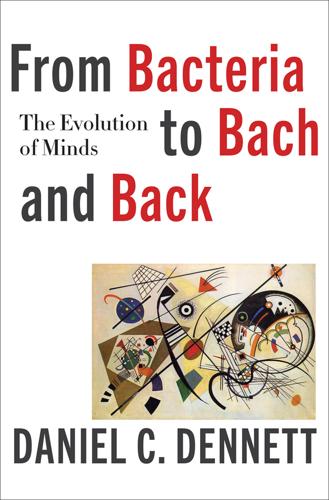
From Bacteria to Bach and Back: The Evolution of Minds
by
Daniel C. Dennett
Published 7 Feb 2017
An organism that simply ignores distinctions that might mislead (damage the design of) another organism has not been misinformed, even if the distinction registers somehow (ineffectually) on the organism’s nervous system. In Stevie Smith’s poem, “Not Waving but Drowning” (1972), the onlookers on the beach who waved back were misinformed but not the seagulls wheeling overhead. We can’t be misinformed by distinctions we are not equipped to make. Understanding what disinformation is benefits doubly from our asking cui bono? Disinformation is the designed exploitation (for the benefit of one agent) of another agent’s systems of discrimination, which themselves are designed to pick up useful information and use it. This is what makes the Ebola virus’s design an instance of camouflage. Kim Sterelny (2015, personal correspondence) has raised an important objection: Humans are representational magpies—think of how incredibly rich forager fauna and floras are—much of their natural history information has no practical value.
…
That term has many uses. We live in the Information Age, say the pundits, and people seem to agree, but few notice that this term also has several different meanings. Which Information Age: The age of megabytes and bandwidth? Or the age of intellectual and scientific discovery, propaganda and disinformation, universal education, and challenges to privacy? The two concepts of information are closely related and are often inextricably intertwined in discussion, but they can be made distinct. Consider a few examples: 1.The brain is an information-processing organ. 2.We are informavores. (George Miller, psychologist) 3.
…
(Less often noted is the fact that issuing blanks to some shooters removes an option that might otherwise be tempting on some occasions: to rebel, turning one’s rifle on the officer in command. If you knew you had a live round, that opportunity would be available for informed rational choice. You can’t use information that you don’t have.) What about misinformation, which can also accrue, and disinformation, which is deliberately implanted in you? These phenomena seem at first to be simple counterexamples to our proposed definition, but, as we will soon see, they really aren’t. The definitions of “semantic information” and “design” are linked in circular definitions, but it’s a virtuous, not vicious, circle: some processes can be seen to be R&D processes in which some aspect of the environment is singled out somehow and then exploited to improve the design of some salient collection or system of things in the sense of better equipping it for thriving/persisting/reproducing in the future.
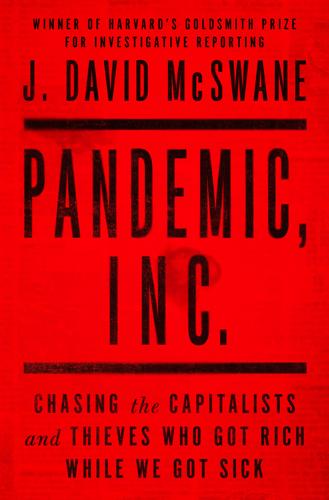
Pandemic, Inc.: Chasing the Capitalists and Thieves Who Got Rich While We Got Sick
by
J. David McSwane
Published 11 Apr 2022
Mercola also spoke Fifth International Public Conference on Vaccination, Video Briefs, National Vaccine Information Center, 2020, https://www.nvic.org/nvic-video-briefs/2020-conference.aspx. Erin Elizabeth The Disinformation Dozen: Why Platforms Must Act on Twelve Leading Online Anti-Vaxxers (London: Center for Countering Digital Hate, 2021). “Hydroxychloroquine was more thoroughly tested” Ibid. Married couple Ty and Charlene Bollinger Michelle R. Smith, “Inside One Network Cashing In on Vaccine Disinformation,” Associated Press, May 13, 2021, https://apnews.com/article/anti-vaccine-bollinger-coronavirus-disinformation-a7b8e1f33990670563b4c469b462c9bf. The couple claims to have sold Ibid. Sayer Ji and Kelly Brogan Pandemic Profiteers.
…
As the pandemic hit, Kennedy, with his famous surname and organization, became arguably the leading voice of the anti-vaccine movement. He helped spread, in addition to the Bill Gates computer chip and 5G conspiracies, the dangerous lie that “the flu shot is 2.4x more deadly than COVID-19.” The CCDH analyzed the pandemic activities of Kennedy and other members of the group they dubbed “the disinformation dozen” in a 2021 report: “Pandemic Profiteers: The Business of Antivaxx.” The group found that this dirty dozen account for about 65 percent of all anti-vaccine propaganda spread on Facebook and Twitter. Kennedy’s far from the biggest beneficiary of commoditized lies. That designation falls to an osteopath named Joseph Mercola.
…
Many of the big players in the misinformation racket collect fees by referring susceptible people to each other’s products and propaganda, just as Instagram influencers get a cut when people click through to products they endorse. Their interconnectivity goes well beyond business. Mercola’s partner, Erin Elizabeth, is also among the “disinformation dozen.” She’s responsible for spreading memes targeting worried mothers with claims such as “Hydroxychloroquine was more thoroughly tested than the vaccines they want to mandate on your baby.” Married couple Ty and Charlene Bollinger have made millions by producing and selling multipart documentaries directly to consumers.
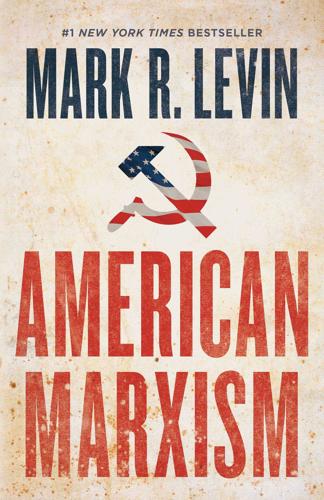
American Marxism
by
Mark R. Levin
Published 12 Jul 2021
What steps did you take prior to, on, and following the November 3, 2020, elections and the January 6, 2021, attacks to monitor, respond to, and reduce the spread of disinformation, including encouragement or incitement of violence by channels your company disseminates to millions of Americans? Please describe each step that you took and when it was taken. Have you ever taken any actions against a channel for using your platform to disseminate any disinformation? If yes, please describe each action and when it was taken. Are you planning to continue carrying Fox News, Newsmax, and OANN… both now and beyond any contract renewal date?
…
The congresspeople wrote: “Misinformation on TV has led to our current polluted information environment that radicalizes individuals to commit seditious acts and rejects public health best practices, among other issues in our public discourse. Experts have noted that the right-wing media ecosystem is ‘much more susceptible… to disinformation, lies, and half-truths.’ Right-wing media outlets, like Newsmax, One America News Network, and Fox News all aired misinformation about the November 2020 elections…. Fox News… has spent years spewing misinformation about American politics. “These same networks also have been key vectors of spreading misinformation related to the pandemic.
…
Somehow, these companies have escaped scrutiny and entirely dodged this conversation. That should not be the case anymore. After Wednesday’s [January 6, 2021] incident of domestic terrorism on Capitol Hill, it is time TV carriers face questions for lending their platforms to dishonest companies that profit off of disinformation and conspiracy theories. After all, it was the very lies that Fox, Newsmax, and OAN spread that helped prime President Trump’s supporters into not believing the truth: that he lost an honest and fair election.81 “Yes, Sean Hannity and Tucker Carlson and Mark Levin and others are responsible for the lies they peddle to their audiences.

Gray Day: My Undercover Mission to Expose America's First Cyber Spy
by
Eric O'Neill
Published 1 Mar 2019
But it was during the Cold War that the Soviet Union turned espionage into an art form. Russian spymasters launched massive collection campaigns to recruit American moles from within the FBI, CIA, and NSA. At the same time, they were pioneering desinformatsiya practices that spread disinformation and disruption in order to shape American political decisions. These active-measure (aktivinyye meropriatia) disinformation campaigns included media manipulation; use of front organizations (like the US affiliate of the World Peace Council, a secret Soviet affiliate) to sway public opinion; kidnappings; and provision of funds, training, and support to terrorist organizations, to name a few.
…
The needle ceased its furious scribbling and found the center of the page. I passed. * * * The intelligence community initiates new members into a tyranny of secrets. It is within this mind-set that spies and counterintelligence operatives—those who hunt the spies before they can steal, disrupt, or spread disinformation—operate. The two most important rules for a spy: don’t get caught; and if compromised, lie. A counterintelligence operative follows a similar but far more difficult mandate: say nothing about your secrets. But just as in the biblical story of Adam and Eve, eating from the tree of knowledge can have unintended consequences, and a secret can corrode from within.
…
In his February 6, 1980, congressional testimony, John McMahon, the CIA deputy director for operations, stated that the Soviets’ active-measures network was “second to none in comparison to the major world powers in its size and effectiveness.” The 1980s saw a number of audacious—and highly successful—disinformation campaigns. One involved spreading rumors of CIA and FBI involvement in President John F. Kennedy’s assassination. Another seeded foreign newspapers with articles—purportedly written by American scientists—claiming that AIDS was the result of the Pentagon’s experiments to develop biological weapons.
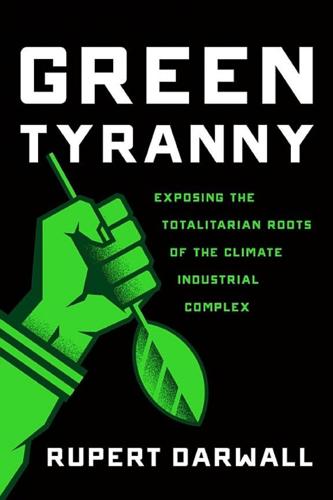
Green Tyranny: Exposing the Totalitarian Roots of the Climate Industrial Complex
by
Rupert Darwall
Published 2 Oct 2017
The sheer magnitude of articles and their technical or policy conclusions not only provided a valuable resource to the government bureaucracy; they swamped industry’s ability to react, as they had no chance of responding with the same number and quality. Hartkopf was disarmingly candid about the positive role of untruths and disinformation, or what he called “empty phrases” in pushing forward the environmental agenda. A widely used example was “ecological equilibrium,” which Hartkopf said was meaningless. More sinister was disinformation to obscure the reality of policy trade-offs. The claim that ecology and the economy were not in conflict was one of those. “I myself have made this claim, knowing it to be less than truthful,” Hartkopf admitted.
…
Thanks in part to the fertilizing effect of the nitrogen content of acid rain, later surveys showed an increase of around 25 percent in Norwegian forest growth.34 Acting in concert with Norway, Dahl’s aim was to brand Britain the dirty man of Europe. The Swedish National Environmental Board knew that this was disinformation. Its own data showed that in 1980, East Germany was emitting more sulfur dioxide than Britain and was increasing its emissions whereas Britain’s were falling.35 But Britain was the politically favored target for Dahl, who was from the left wing of the Social Democrats and a frequent visitor to East Germany and other Soviet bloc satellites.
…
Brezhnev (1982). In 2000, a senior agent in the KGB’s successor agency defected. According to the FBI, Sergei Tretyakov “literally held the keys to a Russian intelligence gold mine.”41 At the KGB’s Red Banner Institute, Tretyakov read dozens of case studies wherein the KGB had used propaganda and disinformation. There was one the KGB was most proud of: “It created the myth of nuclear winter.”42 After NATO’s double-track decision, Andropov ordered the Soviet Academy of Science to produce a doomsday report to incite more demonstrations in West Germany. Soviet scientists had been researching dust storms and found an “anti-hot house effect” due to dust particles shutting out the sun’s rays, a story which was duly picked up by the BBC.
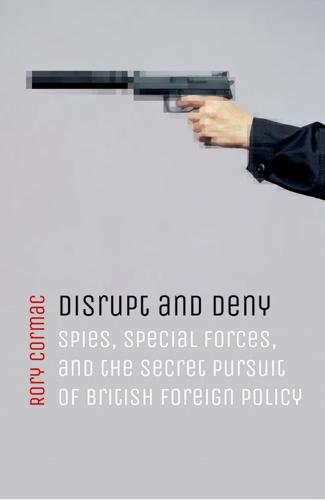
Disrupt and Deny: Spies, Special Forces, and the Secret Pursuit of British Foreign Policy
by
Rory Cormac
Published 14 Jun 2018
Following a spate of high-profile kidnappings, the Ministry of Defence sent an SAS team to Brazil to train local forces in close protection skills.25 This became a growing role for the SAS which remains important today.26 Meanwhile, SIS and the Foreign Office drew on their own skills to counter kidnappings. In May 1971, SIS launched what diplomats called a ‘covert campaign of disinformation’ against the Tupamaros in Uruguay. A leftist urban guerrilla group, the Tupamaros had kidnapped British ambassador Geoffrey Jackson in Montevideo in January and his colleagues back in London turned to black propaganda and disruption to secure his release. Disinformation aimed at sowing doubts among the fighters about the continuing value of holding Jackson.27 The IRD produced an article by a French journalist with a suitably authentic revolutionary background to promote self-criticism among the Tupamaros.
…
The information was often true, albeit selectively edited, but crucially the sponsor stayed hidden. In its 1950s heyday, grey propaganda exposed what Britain saw as Soviet, nationalist, and terrorist lies in an attempt to win hearts and minds around the globe. So-called ‘black’ propaganda was far more devious—and dangerous. It could contain disinformation and was either unattributable or falsely purported to come from a different author, often to discredit the target. Examples included forged material linking Communist Party officials to illegal slush funds and subversive activity against the Kremlin or material incriminating Irish republican leaders in embezzlement.
…
Targeting the Gulf and Aden, it sought to use unattributable propaganda disseminated by what officials called ‘untraceable methods’ to warn of the dangers of getting too close to Nasser.18 By this time, however, diplomats back in London put the brakes on anti-Nasser operations.19 Any kind of covert action risked spoiling recent efforts to resume diplomatic relations with him. The Sharq-al-adna radio station was handed over to the BBC and opted to play more bazaar music in a lighter approach to propaganda, which proved popular for years to come.20 In return, the Soviets inserted agents inside the United Arab Republic to channel disinformation produced in Moscow and Prague. Targeting America and, to a lesser extent, OUP CORRECTED PROOF – FINAL, 06/02/18, SPi 130 E n d of E m pi r e the UK, forged material implicated the West in subversive activities against Arab nationalism. Eastern bloc intelligence collected signatures of senior diplomats, which could then be used in forged documents, by sending out Christmas cards to the Whitehall and Washington elite and eagerly awaiting the replies.21 British covert action in the Middle East followed a remarkably similar pattern.

Culture Warlords: My Journey Into the Dark Web of White Supremacy
by
Talia Lavin
Published 14 Jul 2020
Trolls learned to gamify their tactics, overwhelming selected targets with abuse or contacting en masse the ad sponsors of journalistic outlets that had the temerity to criticize them. As Becca Lewis, with coauthor Alice Marwick, put it in a 2017 report on GamerGate’s broader consequences for disinformation online, the movement was predicated on “retrograde populism”: “Gamergate participants asserted that feminism—and progressive causes in general—are trying to stifle free speech, one of their most cherished values. They are reacting to what they see as the domination of the world by global multiculturalism and the rise of popular feminism.
…
As one commenter on the gaming message board Escapist Forums put it, the movement was an expression of “anger at feminists and SJWs [Social Justice Warriors, a derogatory term for leftists] trying to dictate what’s in games and screeching when things don’t meet a ‘diversity’ quota”—and its end goal was a “crazy as all get out revolution.” It’s unsurprising that these scorched-earth tactics extended to racialized abuse of critics, and purposeful disinformation generated to blur the white, male nature of the movement. Shireen Mitchell, a black female activist, recalls the racist abuse that accompanied her outspoken stance against the harassment of women online at the time. “It was one of the most public racist and sexist displays,” she told me. Having received abuse and threats after planning to participate in a South by Southwest panel on online harassment, Mitchell was accompanied by a security detail while speaking at another event about online harassment.
…
It’s big business—YouTube monetization can be quite lucrative as YouTubers rack up more and more subscribers—and it’s an algorithmically aided rabbit hole that can lead someone, over weeks or months or years, from trying to catch up on the latest news to believing that communist Jews are actively working to take over the globe. It’s a digital complement to right-wing disinformation purveyors like radio personality Rush Limbaugh and the slate of miscreants at Fox News; while older viewers might be sucked in via basic cable, it takes only an internet connection to inculcate younger people into a world where salvation is white of skin, where feminists are sinister harpies, where everyone “other” is to be scorned and subjugated.
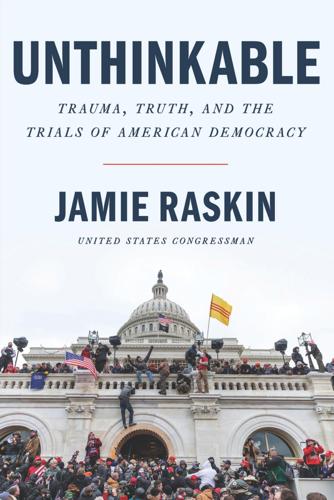
Unthinkable: Trauma, Truth, and the Trials of American Democracy
by
Jamie Raskin
Published 4 Jan 2022
Like millions of other young Americans, he grew despondent during the COVID-19 pandemic, which left him vulnerable to the darkest impulses created by his illness. Similarly, before the attempted coup of January 6 destroyed our fundamental expectations about the peaceful transfer of power in America, the norms of our constitutional democracy had already been overrun by years of political propaganda, social media disinformation, racist violence, conspiracy theorizing, and authoritarian demagoguery. When these underlying crises turned into the private and public traumas of suicide and violent insurrection, they demolished all the core assumptions I carried around with me each day—that my children would be healthy and alive, that they would let Sarah and me know if they needed anything, that no political party or power elite would try to overthrow our constitutional democracy, that the country would continue to successfully grow beyond its historic baseline of violent white supremacy and a racial caste system.
…
When he went sailing off on an anti-Chinese polemic and filibuster, I would seek recognition to recount at least nineteen different occasions on which Donald Trump lavishly praised the beautiful performance of General Xi and the Chinese autocratic government in the first five months of the COVID-19 crisis. But from a public policy standpoint, all of it was just spinning our wheels. Against the GOP propaganda machine, the White House, and Fox News, there was little we could do to hold back the flood of disinformation. Amazingly, the party that had invented and railed against mythical “death panels” in the Affordable Care Act was now defending Donald Trump and his monstrous mismanagement of COVID-19 that would come to cause hundreds of thousands of unnecessary American deaths, according to Trump’s own COVID-19 point person, Dr.
…
Trump’s lethal recklessness and incompetence in confronting the pandemic took place against the background of an already violent, hateful, and polarized culture he was bringing into existence. Four years of increasing white supremacist violence, all the sneering derision directed at immigrants, all the deranged QAnon conspiracy theories, all the odd lying and disinformation about COVID-19, all the racial and ethnic poison injected into the social media—all of it combined to take a dark toll on public mental and emotional health. In the Trump period generally, and its last brutal year specifically, Americans reported huge jumps in anxiety, depression, and alcohol and substance abuse, especially the industry-facilitated addictive abuse of opioids, which in turn fueled a heroin addiction epidemic.
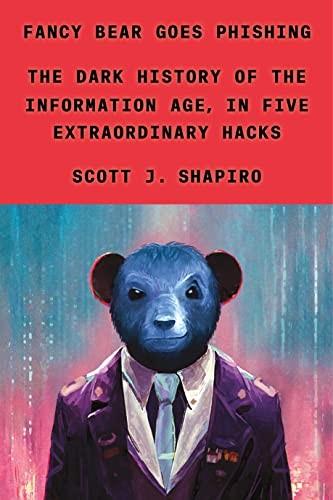
Fancy Bear Goes Phishing: The Dark History of the Information Age, in Five Extraordinary Hacks
by
Scott J. Shapiro
On June 15, Fancy Bear created the Guccifer 2.0 persona on Twitter and Facebook to throw people off its track. It also created a fake website, DCLeaks.com, to disseminate the information. On July 6, Guccifer 2.0 used WikiLeaks to release the Clinton emails to a wider audience. While the FBI had never seen DDoSers use disinformation campaigns before, it made sense given the times. Disinformation was in the air. When Mirai was released, it spread like wildfire. In its first twenty hours, it infected sixty-five thousand devices, doubling in size every seventy-six minutes. Andrew McGill from The Atlantic magazine set up a fake smart toaster—a so-called honeypot—in his house to see how long it would take Mirai to infect it.
…
The simple explanation is that Guccifer 2.0 was a sock puppet, an online identity created by Russian intelligence for deception. His abrupt entrance was a hasty response to the exposure of the spying operation. According to security researcher the Grugq, “That’s how a blown operation was rapidly transitioned into an influence operation and a disinformation and deception campaign, which started to mitigate the blowback.” The Grugq also noticed that Guccifer 2.0 uses))), which is more common in Russia than:). The journalist Lorenzo Franceschi-Bicchierai (in bold, below) reached out to Guccifer 2.0 and tried to engage the hacker in Romanian: Ai vrea să vorbească în română pentru un pic?
…
Paras, Josiah, and Dalton were close to finishing their new botnet, and they were preparing to conquer, like European sovereigns in the early modern period. They eliminated rival botnets by having their bots use the Linux “kill” command to remove Qbots, including VDoS’s. They then sealed the devices by closing common ports so no other malware could get a toehold. Paras also prepared the battlefield by launching a disinformation campaign. He opened fake accounts on Facebook and Reddit under a new name, OG_Richard_Stallman. Richard Stallman is the father of open-source software and the person whose account Robert Morris Jr. used to release his worm. Paras would use this handle when trying to extort money from particular DDoS victims (though he continued to use Anna-Senpai when posting on Hack Forums).
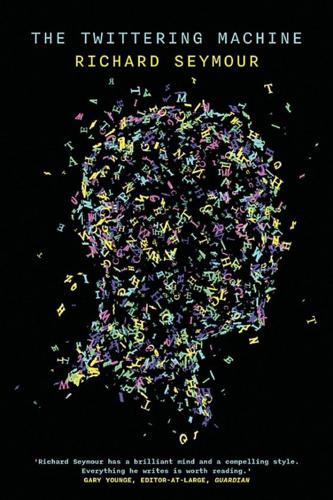
The Twittering Machine
by
Richard Seymour
Published 20 Aug 2019
Since these efforts are themselves part of the simulacrum, they slip easily back into the cycle of meaningless information. The more sophisticated propagandists recognize this, and instead work with the grain of the collapse of meaning. For example, the BBC alleges that Russian disinformation campaigns no longer bother to promote a single narrative, but instead flood the internet with so many competing versions of a story that no one knows what to think.70 It would be prudent to assume that all parties now involved in disinformation are using similar techniques. The problem is not that the internet is a web of lies. Of course it is. In 2016, a team of researchers published a study of online conduct which found that less than a third of users claimed to be honest about themselves on the internet.71 But the machine was invented to help us lie.
…
When Trump used the term, he was using it to describe media organizations publishing a document concerning his alleged relationships with the Russian state that, they admitted, they couldn’t verify. Moreover, this definition of ‘fake news’ would cover many stories critical of Trump. For example, the Washington Post alleged that Russian hackers had ‘penetrated’ the US electricity grid during the election, and that a range of left-of-Clinton websites were part of a Russian disinformation campaign. Both stories, aggressively promoted by the Post, were later humiliatingly edited, their central claims withdrawn.22 Those bewailing ‘fake news’, overwhelmingly journalists from the legacy media, are also missing the real scoop. ‘Fake news’ is old news. After all, exactly when was the era of unalloyed truth-telling?
…
Dan Hind, The Threat to Reason: How the Enlightenment Was Hijacked and How We Can Reclaim it, Verso: London and New York, 2008. 47. Now a similar rhetorical move . . . Kakutani, The Death of Truth, p. 45. 48. In surprise bestsellers . . . David Ray Griffin, The New Pearl Harbor: Disturbing Questions About the Bush Administration and 9/11, Arris Books: Devon, 2004; Nafeez Mosaddeq Ahmed, War on Truth: Disinformation and the Anatomy of Terrorism, Olive Branch Press: Ithaca, NY, 2005; Nafeez Mosaddeq Ahmed, The London Bombings: An Independent Inquiry, The Overlook Press: London, 2006. 49. As Emma Jane and Chris Fleming’s analysis . . . Emma A. Jane and Chris Fleming, Modern Conspiracy: The Importance of Being Paranoid, Bloomsbury: New York and London, 2014 pp. 4–5.
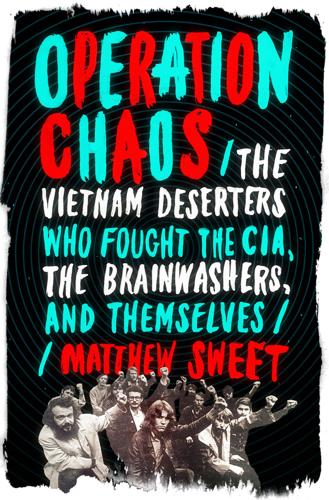
Operation Chaos: The Vietnam Deserters Who Fought the CIA, the Brainwashers, and Themselves
by
Matthew Sweet
Published 13 Feb 2018
A decade ago he adopted the pseudonym Will Hart: See Will Hart, Alien Civilizations: Scientific Proof of Their Existence (Privately published: Createspace Publishing Platform, 2004). had identified Harry Rositzke of Operation Chaos: Don Schmitt, “William Moore: UFO Opportunist or Agent of Disinformation?” Open Minds TV, July 23, 2014, http://www.openminds.tv/william-moore-ufo-opportunist-agent-disinformation/29056. “infuses every engagement with both credibility and content”: See Dr. Rita Louise, business website, http://soulhealer.com. he described a visit he’d made to Mexico: “True Origins of Aliens,” Just Energy Radio, July 18, 2015, https://www.youtube.com/watch?
…
Under Operation Edgar Allan Poe, the two Bills produced a theory attuned to their own paranoia and narcissism: that the Soviets were behind Palme’s killing and were now working hard to achieve their second objective: “laying the blame at the doorstep of the ELP [European Labor Party], as a first step in dismantling the LaRouche movement globally.” LaRouche liked this theory, because it was all about him. Their hefty report, A Classical KGB Disinformation Campaign, proved nothing about the assassination, but contained much evidence that the LaRouchians inhabited a Ptolemaic universe with themselves as its center. Legitimate press interest in the European Labor Party was “a coordinated wave of lies and innuendo” unleashed from Moscow. Journalists who described the party’s gruesome methods were subject to personal attacks.
…
In 1985 he had taken on the running of the Labor Committees Biological Holocaust Task Force, in which capacity he advocated putting AIDS patients into quarantine camps and insisted, against scientific evidence, that the disease could be spread by insect bites and casual human contact. (He made a panic-mongering tour of Europe, recycling stories about the synthetic nature of the virus, a theory born in a disinformation campaign by the KGB.) His most operatic act of fealty occurred in September 1990, when delegates from the Labor Committees took over the Hyatt Regency Hotel in Arlington, Virginia, to listen to a speech recorded by LaRouche in his cell. During this period the organization decided, under the influence of LaRouche’s wife Helga, to make overtures toward right-wing Catholic organizations.
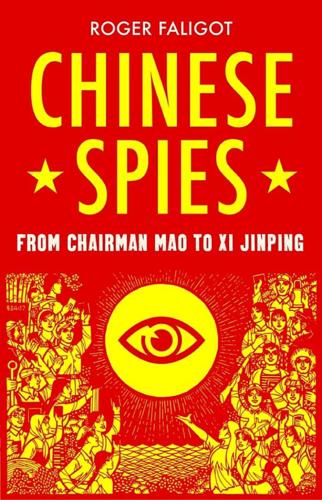
Chinese Spies: From Chairman Mao to Xi Jinping
by
Roger Faligot
Published 30 Jun 2019
Kang Sheng goes to Moscow At the beginning of 1933, Kang Sheng was sent to Moscow to join the Comintern leadership. The revolution in Europe was floundering with Hitler’s rise to power. It was imperative that it be revived in Asia. Kang was to be trained in new Soviet methods of state security and espionage. He was also involved in agitprop, as propaganda was called in those days. Agitprop, disinformation and deception were all weapons as important as intelligence-gathering. Towards the end of 1933, Kang published an article in the Comintern journal entitled “The 6th Kuomintang campaign and the victory of the Chinese Red Army”. Perhaps this was a straightforward analysis seeking to trigger worldwide proletariat solidarity with the Chinese revolution.
…
At least, that is how I imagined it forty years later on a guided tour of Dixia Cheng, the vast city beneath Beijing that Mao Zedong, Zhou Enlai and Lin Biao built during the Cultural Revolution as protection in the event of a nuclear or chemical attack ordered by the Kremlin. The launch of a vast KGB disinformation campaign in China led to a renewed burst of activity on this vast, secret project. A legendary Russian agent named Victor Louis was, unwittingly, the cause. He wrote regularly for the press in the West, publishing scoops from impeccable sources with the help of his friend Yuri Andropov, the new head of the KGB.
…
At that time, you were not even a member of the Central Committee.”3 The Soviets’ loathing of Kang Sheng was all the more intense because, like Zhou Enlai, Deng Xiaoping and Liu Shaoqi, he had once been an approved agent of the GPU, the KGB’s predecessor, from which he had learned everything he knew about espionage techniques: dissimulation, disinformation, manipulation—and, as was to become quite clear, how to turn a situation completely on its head. Many members of the Chinese leadership thought that Kang Sheng was pushing the anti-Soviet line too hard. But the purpose of these and subsequent attacks was to impress both Mao and Khrushchev; Kang was playing a game of both internal and international politics.

On Power and Ideology
by
Noam Chomsky
Published 7 Jul 2015
In the original, Borge says that “this revolution transcends national boundaries,” making it clear that he means ideological transcendence and adding: “this does not mean we export our revolution. It is enough—and we couldn’t do otherwise—for us to export our example . . . we know that it is the people themselves of these countries who must make their revolutions.” This is the statement that was deformed and then exploited by the U.S. disinformation system—including the media, as we shall see—as proof that Nicaragua actually boasts of its planned “aggression.” Here we see a clear example of the switch between the two variants of the domino theory: the real concern of privileged elites over the demonstration effect of successful development becomes transmuted, for the public, into a pretended concern that the U.S. will once again be at the mercy of yellow dwarves with pocket knives, who will conquer everything in their path, finally stealing all we have, while the “bound and throttled giant” is unable to prevent this aggression.
…
And in fact that policy is being continued until today; so, for example, China supports Pol Pot who attacks Cambodia from bases in Thailand and this is part of the American alliance designed to make Cambodia and Vietnam suffer as much as possible. QUESTION: How is it possible that the intelligent elites of the U.S. are not the people in sympathy with the protest movements, considering that the common masses in the U.S. are victims of the Mass Media propaganda and disinformation in television, etc.? How can you explain this fact? ANSWER: We are mostly intellectuals, and intellectuals like to consider themselves as being very smart and enlightened. And of course intellectuals are the people who write history and do sociology. So the picture of the world that intellectuals present is that the stupid masses are ignorant and understand nothing while the intellectuals are fine, intelligent, ethical, and far-sighted people.
…
Particularly offensive are projects that would provide services to private farmers, since these would not only benefit the country economically but would also harm the propaganda image of a totalitarian state carefully crafted by the U.S. ideological system. These crimes are intolerable for the reasons that I have already discussed. It was necessary to respond in the usual manner: by international terrorism, embargo, pressures on international institutions and allies to withhold aid, a huge campaign of propaganda and disinformation, threatening military maneuvers and overflights as part of what the Administration calls “perception management,” and other hostile measures available to a powerful and violent state. Near hysteria was evoked in the U.S. government when Nicaragua accepted the draft of the Contadora treaty in 1984, shortly after Ronald Reagan had informed Congress that the purpose of the contra war was to compel Nicaragua to accept the treaty and Secretary of State Shultz had praised the draft treaty and denounced Nicaragua for blocking its implementation.

WTF?: What's the Future and Why It's Up to Us
by
Tim O'Reilly
Published 9 Oct 2017
Finally, it’s essential to realize that search engines and social media platforms are the battlefield of an online war, with hostile attackers using the same tools that were originally developed by advertisers to track their customers, and then by scammers and spammers to game the system for profit. In addition to the Russian-sponsored social media disinformation campaigns, the Trump campaign’s Project Alamo used highly targeted disinformation to discourage Clinton voters from going to the polls. These posts were referred to as “dark posts” by Brad Parscale, who led the campaign’s social media efforts, private posts whose viewership is tightly targeted so that, as he put it, “only the people we want to see it, see it.”
…
All were cooked up by Macedonian teens out to make a buck. The story about the “FBI Agent Suspected in Hillary Email Leaks Found Dead in Apparent Murder-Suicide”—also totally fake but shared half a million times—was the work of a Southern California man who started in 2013 to prove how easily disinformation spread, but ended up creating a twenty-five-employee business to churn out the stuff. Facebook users were not the only ones spreading these stories. Many of them circulated by email and on Twitter, on YouTube, on reddit, and on 4chan. Google surfaced them in Google Suggest, the drop-down recommendations that appear for every user as they begin to type a query.
…
Social media and its advertising business model has taken the process to its logical conclusion. Targeted social media campaigns will almost certainly be a feature of all future political campaigns. Online social media platforms—and society as a whole—will need to come to grips with the challenges of the new medium. The moment of crisis may come when we realize that the tools of disinformation and propaganda are the very same tools that are routinely used by businesses and ad agencies to track and influence their customers. It is not just political actors who have a vested interest in spreading fake news. Vast sums of money are at stake, and participants use every tool to game the system.
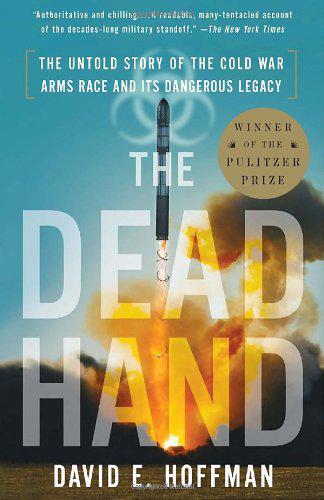
The Dead Hand: The Untold Story of the Cold War Arms Race and Its Dangerous Legacy
by
David Hoffman
Published 1 Jan 2009
Garthoff has offered a suggestion, which remains unproven, that U.S. disinformation persuaded the Soviets that the United States was continuing work on biological weapons after the Nixon decision. According to Garthoff, the FBI fed disinformation to the Soviets that the United States was undertaking a clandestine BW program. See Garthoff, "Polyakov's Run," Bulletin of the Atomic Scientists, vol. 56, no. 5, September/October 2000, p. 37. It is known there was a disinformation campaign for chemical weapons, which is described by David Wise in Cassidy's Run: The Secret Spy War over Nerve Gas (New York: Random House, 2000). Details of a disinformation campaign on BW are not known.
…
Many others with imagination, determination, guile and conscience sought to rein in the danger. The goal of the book is to tell the story of how the Cold War arms race came to an end, and of its legacy of peril--and to tell it from both sides. Too often in the past, the history has been obscured by American triumphalism, which reflected only one side, or by secrecy and disinformation in Moscow, which masked what really happened inside the Soviet Union and why. With fresh evidence, it is now possible to see more clearly the deliberations that unfolded behind closed doors in the Kremlin during Gorbachev's tumultuous rule. It was there, in arguments, meetings, documents and phone calls, that Gorbachev, deftly maneuvering and cajoling, faced off against the entrenched and powerful forces of the military-industrial complex and began a radical change in direction.
…
The KGB agents in Bonn, Brussels, Copenhagen, London, Oslo, Paris, Rome and Lisbon were told to watch out for such things as "a sharp increase in the activity of all forms of intelligence," especially on the readiness of Warsaw Pact forces; possible positioning of agents to awaken sleeper cells in the East to "operate in wartime conditions;" closer coordination between the CIA and Western spy agencies; an "increase in the number of disinformation operations" against the Soviet Union and its allies; "secret infiltration of sabotage teams with nuclear, bacteriological and chemical weapons into the countries of the Warsaw Pact;" and expanding the network of sabotagetraining schools and emigres and setting up sabotage teams with them. The instructions strongly reflect the police state mentality of the KGB.

Farewell
by
Sergei Kostin
and
Eric Raynaud
Published 14 Apr 2011
Despite Ludmila’s vigorous denial and the absence of evidence, the “gift-taking” version was largely substantiated not only in the investigation documents, but also in the corridors at the PGU. Disinformation had always been the institution’s strong point. By firmly establishing Ludmila’s greed, they improved Vetrov’s image in the eyes of his colleagues. It came as a surprise to see how easily well-informed and rational men such as intelligence operatives accepted this version, which was a complete fabrication. Was it male solidarity? Rejected men, many of whom had courted Ludmila to no avail? It is plausible. The disinformation campaign launched within Directorate T seems to have succeeded. Today, its officers admit that Ludmila’s image had been made up following Vetrov’s case.
…
The French agency knew that its former target had been posted in Canada. Later on, when it received Vetrov’s offer to collaborate, the DST should have or could have asked its Canadian colleagues, under any pretext, for additional information about him. Nothing substantiates such an assumption. Could it be disinformation on the part of Peter Marwitz, cleverly concealed in the many relevant corrections he made to the text of Bonjour Farewell, after his correspondence with Sergei Kostin had become a friendly exchange? It is never pleasant to suspect somebody you like of having a hidden agenda, but it is the essence of the trade to be good at being likeable, at earning people’s trust, and to keep this trust even after a few little lies.
…
He could prolong his existence and partially redeem himself by participating in an intelligence game. Making the most of Vetrov, the PGU had a chance to deceive the DST and, through it, all of the West. “I grant you, the issue presented itself each time a mole was uncovered,” said Igor Prelin.5 “But not to disinform the other side. In this situation, it was extremely difficult to hide the fact that the mole was arrested; in time, the adversary was bound to find out. From a counterintelligence standpoint, the most severe blow dealt to the adversary, after an agent had been identified, was to catch the handler red-handed.

Coders: The Making of a New Tribe and the Remaking of the World
by
Clive Thompson
Published 26 Mar 2019
conspiracy theories and 9/11 “truthers”: Zeynep Tufekci, “YouTube, the Great Radicalizer,” New York Times, March 10, 2018, accessed August 21, 2018, https://www.nytimes.com/2018/03/10/opinion/sunday/YouTube-politics-radical.html. the profit from the clicks: Jonathan Albright, “Untrue-Tube: Monetizing Misery and Disinformation,” Medium, February 25, 2018, accessed August 21, 2018, https://medium.com/@d1gi/untrue-tube-monetizing-misery-and-disinformation-388c4786cc3d. “can just breed and multiply”: Sheera Frenkel, “She Warned of ‘Peer-to-Peer Misinformation.’ Congress Listened,” New York Times, November 12, 2017, accessed August 21, 2018, www.nytimes.com/2017/11/12/technology/social-media-disinformation.html. had a Democratic staffer murdered: Amanda Robb, “Anatomy of a Fake News Scandal,” Rolling Stone, November 16, 2017, accessed August 21, 2018, https://www.rollingstone.com/politics/politics-news/anatomy-of-a-fake-news-scandal-125877; Colleen Shalby, “How Seth Rich’s Death Became an Internet Conspiracy Theory,” Los Angeles Times, May 24, 2017, http://www.latimes.com/business/hollywood/la-fi-ct-seth-rich-conspiracy-20170523-htmlstory.html.
…
Microtargeting is a superb tool for sowing division, because it means each gnarled, pissed-off group can get its own customized message affirming its anger. The spectacle appalls Ghosh. After he left Facebook, he wrote a report for New America arguing that “the form of the advertising technology market perfectly suits the function of disinformation operations.” Political misinformation “draws and holds consumer attention, which in turn generates revenue for internet-based content. A successful disinformation campaign delivers a highly responsive audience.” Adtech, the engine of rapidly scaling web business, is “the core business model that is causing all the negative externalities that we’ve seen,” he tells me. “The core business model was to make a tremendously compelling and borderline addictive experience, like the Twitter feed or Facebook messenger or the News Feed.”
…
In 2014, they began hounding female video-game writers and developers, in a campaign that became known as “Gamergate.” Meanwhile, noxiously racist harassment has followed many black celebrities or thinkers who’ve raised their voices on the service. During the 2016 presidential campaign, Twitter became—much like Facebook and YouTube—flooded with bots controlled by a Russian troll factory, intent on spreading disinformation often to prop up Trump and exacerbate partisan hatreds. Even Trump himself wielded Twitter like a club, singling out individual critics—including, once, a teenage girl—who’d then be harassed by Trump’s followers. Stone, Dorsey, and I were right, it turns out, about the power of Twitter to create new forms of joint behavior.

On Tyranny: Twenty Lessons From the Twentieth Century
by
Timothy Snyder
Published 14 Sep 2017
If we have no control over who reads what and when, we have no ability to act in the present or plan for the future. Whoever can pierce your privacy can humiliate you and disrupt your relationships at will. No one (except perhaps a tyrant) has a private life that can survive public exposure by hostile directive. The timed email bombs of the 2016 presidential campaign were also a powerful form of disinformation. Words written in one situation make sense only in that context. The very act of removing them from their historical moment and dropping them in another is an act of falsification. What is worse, when media followed the email bombs as if they were news, they betrayed their own mission. Few journalists made an effort to explain why people said or wrote the things they did at the time.
…
Ukrainian and Russian journalists who sniffed the air in the Midwest said more realistic things than American pollsters who had built careers on understanding the politics of their own country. To Ukrainians, Americans seemed comically slow to react to the obvious threats of cyberwar and fake news. When Russian propaganda made Ukraine a target in 2013, young Ukrainian journalists and others reacted immediately, decisively, and sometimes humorously with campaigns to expose disinformation. Russia deployed many of the same techniques against Ukraine that it later used against the United States—while invading Ukraine. When Russian media falsely claimed in 2014 that Ukrainian troops crucified a small boy, the Ukrainian response was rapid and effective (at least within Ukraine itself).

Rogue State: A Guide to the World's Only Superpower
by
William Blum
Published 31 Mar 2002
In a 1979 coup, Maurice Bishop and his followers had taken power in this island country of 110 thousand, and though their actual policies were not as revolutionary as Castro's, Washington was again driven by its fear of "another Cuba", particularly when public appearances by the Grenadian leaders in other countries of the region met with great enthusiasm. Reagan administration destabilization tactics against the Bishop government began soon after the coup, featuring outrageous disin-formation and deception. Finally came the invasion in October 1983, which put into power individuals more beholden to US foreign policy objectives. The US suffered 135 killed or wounded; there were also some 400 Grenadian casualties, and 84 Cubans, mainly construction workers. The invasion was attended by yet more transparent lies, created by Washington to justify its gross violations of international law.
…
He and his country would have to be put in their place. In 1981, US planes shot down two Libyan planes in Libyan air space. Five years later, the United States bombed one of Qaddafi's residences, killing scores of people. There were other attempts to assassinate the man, operations to overthrow him, economic sanctions, and a major disinformation campaign reporting one piece of nonsense after another, including conspicuous exaggera-tions of his support for terrorism, and shifting the blame for the 1988 bombing of PanAm 103 to Libya and away from Iran and Syria when the Gulf War campaign required the support of the latter two countries.
…
And no matter how cynical they've grown about electoral politics at home, few of them harbor any doubt that the promotion of free and fair elections has long been a basic and sincere tenet of American foreign policy. In light of this, let us examine the actual historical record. Philippines, 1950s Flagrant manipulation by the CIA of the nation's political life, featuring stage-managed elections with extensive disinformation campaigns, heavy financing of candidates, writing their speeches, drugging the drinks of one of the opponents of the CIA candidate so he would appear incoherent, plotting the assassination of another candidate. The Agency covertly set up an organization called National Movement for Free Elections, the better to promote its agenda, and trusting citizens joined up all over the country.
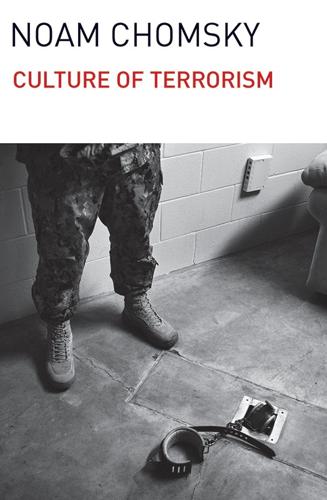
Culture of Terrorism
by
Noam Chomsky
Published 19 Oct 2015
Furthermore, Washington can readily contrive non-compliance with the agreement on the part of Nicaragua, confident that its fabrications will be prominently displayed on the front pages, as frequently in the past. Familiar examples include the allegations about Sandinista support for Salvadoran guerrillas, a doctrinal truth presupposed as proven in media commentary despite the complete failure to provide credible evidence; and the disinformation operation with regard to Soviet MIGs timed carefully to overcome the (minimal) danger of honest coverage of the unwanted Nicaraguan elections of 1984—one of Oliver North’s capers, so it appears11—these elections being a non-event according to official doctrine and media commentary.12 Adherence to the agreement by the Reagan administration, in contrast, would be completely unverifiable, and as the hearings on which all eyes had been focused had demonstrated beyond any conceivable doubt, the administration could proceed as before, if it chose, to provide new armaments to its proxy forces and to direct continuing attacks against Nicaragua, whatever agreements were reached on paper.
…
In contrast, it is hazardous for Nicaragua to agree to the conditions of the Arias plan, or any other. If it lives up to them, the fact will be suppressed or converted by the U.S. propaganda system into a proof of their totalitarian nature, exactly as was accomplished in the case of the 1984 elections by the U.S. government disinformation system with the media meekly doing their duty.18 Furthermore, there is little reason to suppose that the U.S. will adhere to any formal agreement that is reached, so that subversion, economic pressures and the other measures available to a terrorist superpower are likely to continue, perhaps eliciting a Nicaraguan reaction that will violate the formal agreements and thus call forth still greater U.S. terror in retribution.
…
But at a deeper level, the immediate public response illustrates the insight of the 18th century European Enlightenment that the value and meaning of freedom are learned through its exercise, and that the instinctive desire of “all free peoples to guard themselves from oppression” (Rousseau) may be repressed among a subordinated population, effectively removed from the political system, disengaged from the struggle against state and other authority, and in general, objects rather than agents.2 In the absence of organizational forms that permit meaningful participation in political and other social institutions, as distinct from following orders or ratifying decisions made elsewhere, the “instinct for freedom” may wither, offering opportunities for charismatic leaders to rally mass popular support, with consequences familiar from recent history. The attitude of the state authorities towards the public is revealed still more clearly by what one Reagan official called “a vast psychological warfare operation” designed to fix the terms of debate over Nicaragua, a vast disinformation campaign called “Operation Truth”—Goebbels and Stalin would have been amused. The campaign was largely successful, along with similar operations with regard to Libya, international terrorism, the arms race, and numerous other matters. The pioneers of modern totalitarianism would also have nodded their heads in approval over the formation of a State Department Office of Public Diplomacy, reported to be controlled by Elliott Abrams under the supervision of the National Security Council, dedicated to such maneuvers as leaking “secret intelligence [that is, constructions of state propaganda disguised as intelligence] to the media to undermine the Nicaraguan government.”

The Sirens' Call: How Attention Became the World's Most Endangered Resource
by
Chris Hayes
Published 28 Jan 2025
Of our so-called modern improvements, he writes, “There is an illusion about them; there is not always a positive advance…Our inventions are wont to be pretty toys, which distract our attention from serious things.”[23] To achieve clarity about what it means to be human in this specific era, it’s necessary at each moment to ask what’s new and what’s not, what’s being driven by some novel technology or innovation and what’s inherent in human society itself. For example, it’s not a new phenomenon for masses of people to believe things that aren’t true. People didn’t need Facebook “disinformation” for witch trials and pogroms, but there’s also no question that frictionless, instant global communication acts as an accelerant. Also not new: our desires to occupy our minds when idle. Look at pictures of streetcar commuters of the early twentieth century and you’ll see cars packed with men in suits and hats, every last one reading the newspaper, their noses buried in them as surely as modern commuters are buried in their phones.
…
In the speech, Obama mentions that gun violence like this happens every day on the streets of Chicago, hence the “tower of Chicago” portion of the subtitles. Whoever was pulling off the con realized they had to account for him saying “Chicago.” The video was what we now call, in a maddeningly slippery term, “disinformation.” Someone who almost certainly knew better had fabricated a translation and took the time to make the video and post it, to what end is not clear. And it was understandable that the military commander bought it. It was shared to a WhatsApp group he was in, and he didn’t speak English. How would he know?
…
And the consumer of a given bit of information is hard-pressed to assess its truth value in the moment she encounters some shocking new revelation or allegation. The annihilation of the old, relatively closed system of informational gatekeepers means that the only reason to adhere to the truth is some broader set of values—or a strategic market-based determination that too much in the way of lies, disinformation, and the like will ultimately be bad for attentional monetization. But the disaggregation of attention markets has taken away what used to be a reputational cost an outlet would pay for being unreliable. If you subscribe to a newspaper and it is constantly telling you things that are false, you are likely to stop subscribing.
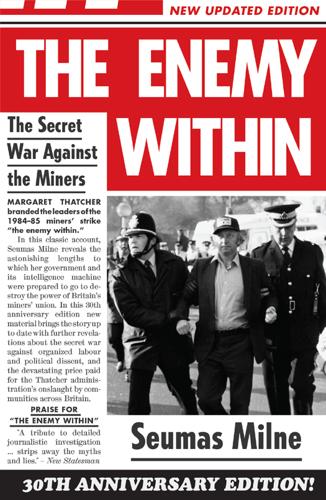
The Enemy Within
by
Seumas Milne
Published 1 Dec 1994
Meanwhile, a good part of MI5’s ‘counter-subversion work’ – which the security service itself claims to have abandoned – has been absorbed by the police, both in the form of the Special Branch and newer outfits such as the National Domestic Extremism Unit and the National Public Order Intelligence Unit (both originally under the control of the opaque and unaccountable Association of Chief Police Officers). They have already become notorious for the infiltration of undercover agents and agents provocateurs into environmental, animal rights, anti-racist and other protest groups, as well as for disinformation campaigns, while evidence has grown of systematic Special Branch collaboration with private corporations to blacklist trade unionists. Of course, the global blanket surveillance of mobile phone, email and internet traffic by the US National Security Agency and Britain’s GCHQ – revealed by the NSA whistleblower Edward Snowden in 2013 – is on another scale entirely from the then unprecedented operations they carried out against the British miners’ union and its international solidarity network in 1984–5.
…
He had acted for the NUM over its receivership imbroglio and then discovered in 1990 that he had not been told what was going on behind the scenes. ‘He got the wrong end of the stick. He was fond of Arthur, he liked all of them, but he felt betrayed and it made him act irrationally.’ Both Scargill and Heathfield think that Lightman was privately fed choice morsels of disinformation by his nameless informants, which shaped the nature of the report. ‘I always wonder in inquiries of this sort whether the establishment gets to these people,’ Heathfield mused in the final stages of the 1990 campaign. As time wore on, he became less philosophical about the matter. ‘I have nothing but contempt for Gavin Lightman,’ he said later.
…
Windsor himself traces his alienation from the NUM leadership to his Libyan mission and Scargill’s behaviour on his return, complaining that the publicity around the contacts made it almost impossible to get a mainstream job outside the union. They were ‘at Scargill’s mercy’, as Angie Windsor put it. But Libya also gave Windsor a powerful weapon, which he wielded to pulverizing effect – twice over.3 A CORNER-SHOP TERRORIST The NUM’s Libyan connection has been long buried in a morass of claim and counterclaim, lies and disinformation. At the centre of the affair is Mohammed Altaf Abbasi, a Kashmiri political exile and small-time businessman who came from Pakistan to live in Britain in the mid 1960s. At the time of the 1984–5 coal strike, Abbasi – a British citizen – was living a sort of double life in the style of Superman’s Clark Kent.
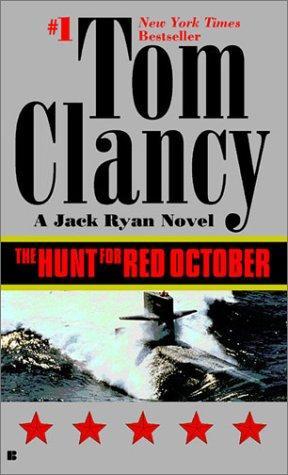
The Hunt for Red October
by
Tom Clancy
Published 2 Jan 1984
Ryan had trained himself to be objective. He ran through the four alternatives he had considered, careful to examine each in detail. This was no time to allow personal views to intrude on his thinking. He spoke for ten minutes. "I suppose there's one more possibility, Judge," he concluded. "This could be disinformation aimed at blowing this source. I cannot evaluate that possibility." "The thought has occurred to us. All right, now that you've gone this far, you might as well give your operational recommendation." "Sir, the admiral can tell you what the navy'll say." "I sorta figured that one out, boy," Moore laughed.
…
These Alfas and Victors appear to be racing for our coast, almost certainly with the intention of establishing an interdiction force—effectively a blockade of our Atlantic coast." "Blockade," the president said, "an ugly word." "Judge," General Hilton said, "I suppose it's occurred to you that this is a piece of disinformation aimed at blowing whatever highly placed source generated this report?" Judge Moore affected a sleepy smile. "It has, Gener'l. If this is a sham, it's a damned elaborate one. Dr. Ryan was directed to prepare this briefing on the assumption that this data is genuine. If it is not, the responsibility is mine."
…
While one might recognize the inequities of life under Communism and yearn for justice, religious freedom, a chance to develop as an individual, another might simply want to get rich, having read about how greedy capitalists exploit the masses and decided that being an exploiter has its good points. Ryan found this interesting if cynical. Another defector type was the fake, the imposter, someone planted on the CIA as a living piece of disinformation. But this kind of character could cut both ways. He might ultimately turn out to be a genuine defector. America, Ryan smiled, could be pretty seductive to someone used to the gray life in the Soviet Union. Most of the plants, however, were dangerous enemies. For this reason a defector was never trusted.

There Is Nothing for You Here: Finding Opportunity in the Twenty-First Century
by
Fiona Hill
Published 4 Oct 2021
I later learned: Entous, “What Fiona Hill Learned in the White House.” left-wing political activities: Emily Tamkin, The Influence of Soros: Politics, Power, and the Struggle for an Open Society (New York: HarperCollins, 2020). was apologetic: Entous, “What Fiona Hill Learned in the White House.” traded in disinformation: Thomas Rid, Active Measures: The Secret History of Disinformation and Political Warfare (New York: Farrar, Straus and Giroux,2020). “Soros conspiracy”: Hannes Grassegger, “The Unbelievable Story of the Plot Against George Soros,” BuzzFeed News, January 20, 2019, https://www.buzzfeednews.com/article/hnsgrassegger/george-soros-conspiracy-finkelstein-birnbaum-orban-netanyahu.
…
When he decided to intervene in the 2016 U.S. presidential election, he unleashed the Russian security services to use tactics abroad that they had already successfully deployed to quash Russia’s opposition and keep domestic political dissent and social protests in check. Russia’s intervention came right out of a Cold War “active measures” textbook of the kind I had studied since the 1980s. Russian operatives employed propaganda, disinformation, and deception. As later American government public and independent press reports would reveal, the Russians used a sophisticated combination of new cybertools, alongside the state-backed media, to hack the email messages of prominent American political figures, disseminate leaked documents, and amplify inflammatory news items.
…
I also got a card from the Hungarian ambassador, who realized things had gotten out of hand. Roger Stone, for his part, was completely unrepentant. I now knew at first hand that this was the way that Trump and some (although not all) of the people in his circle pressed their agendas. They traded in disinformation and weaponized it, just like the Soviets had during the Cold War and Putin still did in Russia. “Soros Mole” was a particularly useful label. Once applied, it could bring someone down. After the Infowars episode, I started to pay close attention to how “Soros Mole” was used. Others noticed too.

The Climate Book: The Facts and the Solutions
by
Greta Thunberg
Published 14 Feb 2023
Science lost the battle because of the political influence of corporations that produce fossil fuels as well as of those firms that heavily consumed them. Many of these firms and their various trade associations had established effective disinformation campaigns involving so-called think tanks, while some politicians from regions that produced fossil fuels promoted distortions and outright lies about the science. In a situation where private interests were creating a public miasma of falsehoods and deception it was all too easy for the general public to discount the risks. Europe was less distracted and divided by disinformation campaigns from fossil fuel companies and emerged early on as a global leader on the climate issue. UK Prime Minister Margaret Thatcher, a former research chemist, respected the scientific warnings and, also driven by her determination to break the power of the coal-mining unions, lent her support in 1989 to the concept of negotiating the UN Framework Convention.
…
And it has proved, in the words of Pope Francis, that ‘technological products are not neutral, for they create a framework which ends up conditioning lifestyles and shaping social possibilities along the lines dictated by the interests of certain powerful groups’. These are heavy conclusions for people to accept. No one wants to admit to being duped by disinformation or blinded by a myth, and people in positions of privilege rarely examine the basis for that privilege. Perhaps, most deeply, the climate crisis breaks the promise of progress. And so, even today, many people who are not necessarily climate-change ‘deniers’ resist meaningful action, refuse to acknowledge just how broken our economic systems are, and deny how much damage industry disinformation has done. / People in positions of power and privilege refused to acknowledge that climate change was a manifestation of a broken economic system. 1.8 Tipping Points and Feedback Loops Johan Rockström Scientifically, it is now well established that Earth has entered a new geological epoch, the Anthropocene, where our globalized world constitutes the largest driver of change on Earth.
…
Naomi Oreskes When future historians ask, ‘Why didn’t people take action to stop the climate crisis when they had known about it for decades,’ a prominent part of the answer will be the history of denial and obfuscation by the fossil fuel industry, and the ways in which people in positions of power and privilege refused to acknowledge that climate change was a manifestation of a broken economic system. Scientists, journalists and activists have documented the many ways the fossil fuel industry spread disinformation about climate change to prevent action. Much of this work has focused on the industry Goliath ExxonMobil.In the 1970s and ’80s, Exxon’s own scientists informed them of the threat of climate change caused by their company’s products. However, from the 1990s onwards the company promoted a public message of high scientific uncertainty, insisting that policy action was at best premature and perhaps unnecessary.

Don't Be Evil: How Big Tech Betrayed Its Founding Principles--And All of US
by
Rana Foroohar
Published 5 Nov 2019
While the British government had initially denied any involvement by nefarious actors using platform tech to influence the referendum, a damning report released by the British Parliament in February 2019 found just the opposite.10 The report indicated that there was indeed a possibility that the Brexit vote had been influenced by Russian actors, and that at the very least there were big questions about the ongoing role of disinformation in elections, questions that might require a reworking of electoral law, which the committee in charge of the investigation found was “not fit for the purpose” of dealing with companies like Facebook, which “intentionally and knowingly violated both data privacy and anti-competition laws.” As MP Damian Collins put it, “Democracy is at risk from the malicious and relentless targeting of citizens with disinformation and personalized ‘dark adverts’ from unidentifiable sources, delivered through the major social media platforms we use every day.
…
But Google was only marginally more responsive to those first signs of election manipulation in the wake of 2016, and it turned out to have played a major role as well. Its subsidiary YouTube was a host to much of the pre-election hate that was stirred up by actors both abroad (including the same Russian agents that were active on Facebook) and at home.7 The 2016 election, Brexit, and the continued role that Russia plays in online disinformation underscore the fact that the very cohesion of society is at stake in this new digital revolution. We are experiencing a crisis of trust in this country; we’ve lost faith in our institutions, our leaders, and the very systems by which society is governed. As tempting as it might be to point a finger straight at the White House, this is not all about the current administration.
…
Yet, if changing their business model compromised profits, then it was clear which road the platforms would choose. “It took me a very long time to accept that Zuck and Sheryl had fallen victim to overconfidence,” says McNamee.20 Even as evidence piled up, following the U.S. Senate’s election meddling report, that Facebook and other platforms had been used to spread disinformation and suppress votes, “I wanted to believe that [they] would eventually change their approach.” It wasn’t to be. Surveillance Capitalism on Steroids If election manipulation were the only way in which Big Tech was undermining democracy and civil liberty, it would be bad enough. But it’s not.
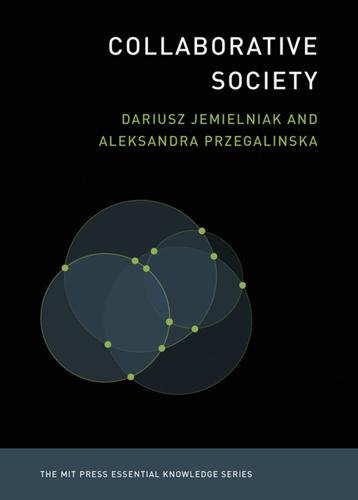
Collaborative Society
by
Dariusz Jemielniak
and
Aleksandra Przegalinska
Published 18 Feb 2020
We have also witnessed the rise of the “confessional society,” a phenomenon described by the Polish-born sociologist and philosopher Zygmunt Bauman, which relies on the willingness of people in general to share their daily life and observations with strangers via the use of technology.52 The reasons why people trust online resources change, however, and we attribute this phenomenon to the fact that the internet steadily accustoms users to reading information of differing quality; thus, it develops their defense mechanisms and prevents them from falling for misleading information. And yet disinformation (intended purposely to mislead) is a rapidly growing problem. In fact, Donald Trump’s 2016 US election victory and the UK’s Brexit campaign success that same year are both partly attributable to an avalanche of fake news and skillful trolling. The general information overflow combined with the increase in fake news presence has increased the importance of our proficient use of search engines along with the ability to access the relevant filter bubbles and to prioritize alternate knowledge sources over traditional textbook knowledge.53 Since traditional information sources slowly lose trust while fake news propagation thrives, people succumb to new forms of tribalism: they trust the online communities that they know and to which they belong.
…
Here Comes Everybody: The Power of Organizing without Organizations. New York: Penguin, 2006. Surowiecki, J. The Wisdom of Crowds. New York: Anchor Books, 2005. More about post-truth, fake news, and pseudoscience Benkler, Y., R. Faris, and J. Roberts. Network Propaganda: Manipulation, Disinformation, and Radicalization in American Politics. Oxford: Oxford University Press, 2018. Hecht, D. K., E. Lobato, C. Zimmerman, F. Blanco, H. Matute, D. K. Simonton, K. M. Folta, B. Hermes, L. Kennair, and E. Sandseter. Pseudoscience: The Conspiracy Against Science. Cambridge, MA: MIT Press, 2018. McIntyre, L.
…
See Citizen science Bot, 185 development of, 190 as manipulation tool, 185–186 in text generation, 191–192 Botnet, 185–186 Chatbot, 186, 188–189 development of, 190 Citizen science, 118, 119, 120–121, 123 Clicktivism, 98 Clientsfromhell.net, 70 Coding, in hacktivism, 89 Collaboration, within disorganized crowds, 182 Collaboration, future definition of, 179–180 and efficiency, 195 Collaboration, among infants, 1–3 Collaboration, on social platforms, 175, 182 Collaborative consumption, 32–33 Collaborative economy, 7–8 Collaborative society, 4–5, 11, 37 future of, 178 Collaborative tracking, 144, 148, 152–153 Commons-based peer production, 43, 62 Commons-based projects, 41 Community governance, 73 Confessional society, 124 Conflict-driven environment, 50–51, 51–52 Consensus-building, 49–50 Cooperation, in open collaboration projects, 56 Copyleft, 62 Crowdfunding, 96 Cult of the amateur, 64 Cult of the Dead Cow, 90 Culture jamming, 88 Cute cat theory of digital activism, 157–158 Cyberactivism, 84–85. See also Internet activism Cybersyn, 150–151 D0xing, 89 Dietary supplements, 109–110 Dieting, 108–109 Digital activism, 97–98 Direct democracy mediated by digital agents, 191 Disinformation, 124–125 Distrust in academia. 108 Distrust in facts, 108 Distrust in medical experts, 146 DIY science. See Citizen science Dog poop girl. See Social stigmatizing Economy of sharing, 6 Environmental costs of collaborative society, 192–193 Ethical standards in user-generated content, 68 Fake news, 125 spread of, 187–188 Filter bubbles, 179 Forking, 53–54 Freedom, in online communities, 55 Freedom, in software development, 53 Free/open-source initiatives, 52, 207n2 Gamification, in self-tracking, 140–141 on Snapchat, 169 in sports, 141–142 Geo-bombing, 89 Gift culture, 38 Gig economy, 28–29 GNU Manifesto, 18 Google, 20 Gresham’s law, 65, 111 Hacking, 88 in politics, 101 Hacktivism, 85–86 future of, 99–100, 103 organization, 102 Hacktivismo, 90 Hacktivist ethos, 88–89, 90–91, 103 Imgur, 72–73 Immersion in virtual reality, 165 Individual participation in open collaboration projects, 57 Instagram, 166 collaboration within the platform (shoutouts) 166–167 Internet activism, 81–83 classification, 84 on social media, 157 Internet as main source of scientific information, 111, 113 Knowledge hierarchy, 66, 105 Linux, 18–20, 45.
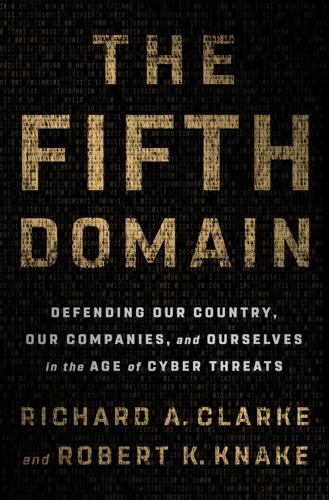
The Fifth Domain: Defending Our Country, Our Companies, and Ourselves in the Age of Cyber Threats
by
Richard A. Clarke
and
Robert K. Knake
Published 15 Jul 2019
Eventually, the computer network operations were labeled “cyber,” in part due to the Clinton administration, to the eternal frustration of language purists. The Russians, however, never saw cyber war and propaganda as separate. From before the Russian Revolution, they had been masters at spying, deception, and disinformation. They had Russian words and phrases for their tools, such as maskirovka, disinformatia, and kompromat. It was literally part of their military’s checklist. The advent of computer networks just gave them another place to practice spying, deception, and disinformation when permitted by civilian authorities. Putin not only permitted, he ordered. In the words of Alex Stamos, Facebook’s former CSO, “Their [U.S. adversaries’] dream is when most Americans say [about the election], ‘I don’t have a choice in this.’”
…
Putin’s strategy is to divide us, so if you respond from a divided perspective, you really play into his hands.” Together, along with a team on both sides of the Atlantic, they created the Policy Blueprint for Countering Authoritarian Interference in Democracies, an action plan for defending against hybrid war. The ASD is transatlantic because the Russian cyber and disinformation operations haven’t just been directed at the United States. In fact, they had tested them extensively in Europe before bringing them to America. “Our European friends had been sounding the alarm for a long time and maybe, we thought, we should start listening to them in ways that we hadn’t been.”
…
To assure a minimum level of scrutiny, Congress should by law require social media to look for and delete bots and foreign entities pretending to be Americans. The Federal Trade Commission, which has a decent record of protecting consumers online, should rise to the challenge and issue regulations governing disinformation campaigns on the internet. While they are at it, Congress should take the minimal step of requiring online political ads to disclose who paid for them, and then ban foreign money from ads supporting candidates or causes. Simon Rosenberg would also have political parties and candidates sign a voluntary and public pledge that they will not use fake personas on social media or engage in the kind of bot and troll operations pioneered by the Russians.
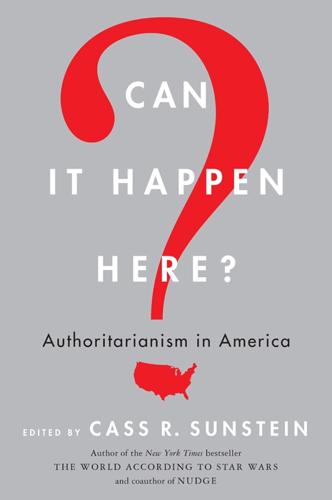
Can It Happen Here?: Authoritarianism in America
by
Cass R. Sunstein
Published 6 Mar 2018
It remains unclear whether Trump can take advantage of these divisions in order to consolidate his power, but the possibility cannot be dismissed. Can It Happen Here? An aspiring dictator would do best by pushing against all these margins rather than trying to crush the institutional barriers seriatim. Imagine that Trump simultaneously: (1) harasses only the toughest and most critical journalists while encouraging a squid cloud of disinformation that keeps the public in the dark about his mistakes and failures; (2) defies Congress only in carefully selected cases where his goals are popular and Congress is divided; (3) harasses agencies that pose a threat to his power (intelligence agencies?) while lavishing resources and attention on those that support him (immigration agencies?)
…
While a majority of Americans reported to Pew after the 2016 election that fake news had caused “a great deal” of confusion about current events, 84 percent described themselves as at least somewhat confident in their own ability to discern real from fake.1 This confidence may well be misplaced, as a dramatically altered media environment in the United States gives propaganda and falsehoods far greater scope for influence than at any time in our history. One possible source of our relative complacency now is that Russia’s attempts to meddle in our democracy proved largely unsuccessful during the Cold War. Back then, the short- and long-term aims of Soviet influence and disinformation operations—so-called active measures—were simple: discrediting, and weakening, countries with opposing political agendas. In 1982, just months before succeeding Leonid Brezhnev as leader of the Soviet Union, KGB chairman Yuri Andropov told Soviet foreign intelligence officers abroad to more directly incorporate these “active measures” into their standard work.
…
Analogous efforts aimed at Margaret Thatcher during the UK’s 1983 general election had also come up short, as she, too, won reelection in a landslide. Reagan’s victory was obviously overdetermined, but, even had the US presidential election been close, the Soviet Union faced huge obstacles during the Cold War in influencing the American electorate—or voters in other democracies—with its propaganda and disinformation. Indeed, as historian Christopher Andrew and former KGB archivist Vasili Mitrokhin observed in their definitive account of KGB activities in the West, Reagan’s landslide “was striking evidence of the limitations of Soviet active measures within the United States.”5 While it is not easy to quantify the impact of active measures, there is no question that foreign powers like Russia and China, or non-state actors like ISIS, today have a much greater ability to use “fake news” or “alternative facts” to influence a democratic electorate than they did during the Cold War.

New Laws of Robotics: Defending Human Expertise in the Age of AI
by
Frank Pasquale
Published 14 May 2020
Thus, even protective plans can seem aggressive, as in the case of Ronald Reagan’s Strategic Defense Initiative (SDI). Popularly known as Star Wars, SDI would have relied on lasers in space to shoot down Soviet missiles. Had it worked, it would have upset a fragile balance of deterrence (mutually assured destruction via nuclear annihilation). Now, LAWS, automated cyberattacks, and disinformation campaigns threaten to disrupt long-settled expectations about the purpose and limits of international conflict. We must find new ways of limiting their development and impact. War may at first appear as a state of exception, where ordinary ethical reasoning is suspended (or at least radically circumscribed).
…
A failure among the de facto sovereigns of the internet to distinguish between stories on the real Guardian and the “Denver Guardian” is not simply a neutral decision to level the informational playing field. Rather, it predictably accelerates propaganda tactics honed by millions of dollars of investment in data, PR, and spin-doctoring. Shadowy quasi-state actors are well practiced in the dark arts of bias, disinformation, and influence.89 Freedom for the pike is death for the minnows. In our time, for better or worse, vast conglomerates like Facebook and Google effectively take on the role of global communication regulators. They must take responsibility for this new role or be broken up in order to make way for human-scale entities capable of doing so.
…
Jennifer Kavanagh and Michael D. Rich, Truth Decay: An Initial Exploration of the Diminishing Role of Facts and Analysis in American Public Life, Santa Monica, CA: RAND Corporation, 2018, https://www.rand.org/pubs/research_reports/RR2314.html; Alice Marwick and Rebecca Lewis, Media Manipulation and Disinformation Online (New York: Data and Society, 2017), https://datasociety.net/pubs/oh/DataAndSociety_MediaManipulationAndDisinformationOnline.pdf. 53. On the distinction between speech and conduct, see, for example, Claudia Haupt, “Professional Speech,” Yale Law Journal 125, no. 5 (2016): 1238–1303. 54.
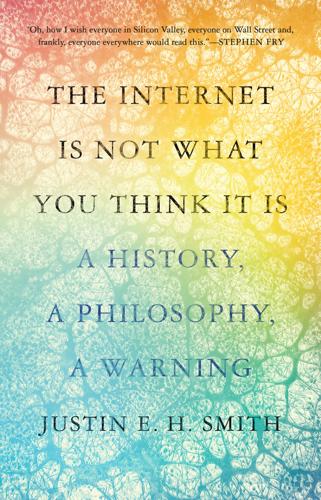
The Internet Is Not What You Think It Is: A History, a Philosophy, a Warning
by
Justin E. H. Smith
Published 22 Mar 2022
No, Facebook and the other big tech companies are, plainly, tearing the social fabric to threads, and pulling people apart. Just fire up your computer and marvel at the news of the day, at all the angry people behind the avatars, fighting with one another and with bots about the news, and about the meaning of the news. Witness how global and local politics have been corrupted into a form of unrelenting disinformation warfare. See organized trolling campaigns fomenting violence against minority groups throughout the world. Observe the mobbing of political dissidents by mass campaigns from below, and the repression of the same dissidents by state surveillance from above. Revisit 2016 and watch the technologies of the new big tech companies mobilize to propel a disreputable internet troll into the highest office of the most powerful country in the world.
…
In this short book we will range widely in topic and time, permitting ourselves to linger far from some of the questions that internet users and tech analysts today consider most pressing: the outsized power of the tech monopolies; the racism built into AI applications in security, social media, and credit-rating algorithms; the variations on the trolley problem to which self-driving vehicles give rise; the epidemic of disinformation and the corollary crisis of epistemic authority in our culture; internet mobs and the culture wars; and so on, ad nauseam. For the most part, this aloofness is intentional. This book does describe itself as a “philosophy” of the internet and, while there will be much disagreement about what that might mean, most of us can at least agree that a philosophy of something, whatever else it may be, has the right to zoom out from that thing and to consider it in relation to its precedents, or in relation to other things alongside which it exists in a totality.
…
It is, in short, a delayed achievement of the Enlightenment. How Wikipedia has managed to synthesize all these strands so successfully, without taking the same troubling turn that social media in general have taken (for Wikipedia’s open editing platform makes it a variety of social media) toward disinformation and a general muddying of the distinction between truth and rumor, remains an important question. As Jonathan Zittrain has observed, inverting the old line about Marxism, Wikipedia works well in practice, but not in theory.7 One of the keys to its success is that the openness of Wikipedia’s entries to editing, deletion, and expansion is not a free-for-all.
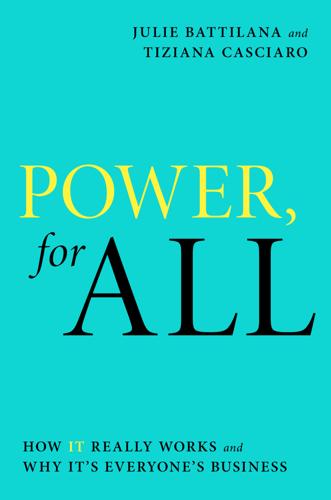
Power, for All: How It Really Works and Why It's Everyone's Business
by
Julie Battilana
and
Tiziana Casciaro
Published 30 Aug 2021
Nelson and Harsh Taneja, “The Small, Disloyal Fake News Audience: The Role of Audience Availability in Fake News Consumption,” New Media & Society 20, no. 10 (2018): 3720–37; and for a review of the nuanced literature on social media and democracy: Joshua A. Tucker et al., “Social Media, Political Polarization, and Political Disinformation: A Review of the Scientific Literature,” Hewlett Foundation, March 2018, https://hewlett.org/wp-content/uploads/2018/03/Social-Media-Political-Polarization-and-Political-Disinformation-Literature-Review.pdf. 96 For guidance on overcoming these limitations and building a more democratic digital public sphere, see Joshua Cohen and Archon Fung, “Democracy and the Digital Public Sphere,” in Digital Technology and Democratic Theory, ed.
…
What is at stake, therefore, is our ability, and our children’s, to think critically and decide for ourselves what we want and how to behave.40 History has taught us that preserving this ability is critical in the face of propaganda and power concentration. In the digital era, it is particularly crucial as we grapple with deep fakes, fake news, and coordinated disinformation campaigns aimed at altering the very basis of reality. Yet concentrations of power are not immutable. It is always up to us to agitate, innovate, and orchestrate to change the power hierarchy, as many Google employees have shown us. CURBING THE POWER OF BIG TECH In March 2018, it came to light that Google had entered into a contract with the U.S.
…
To begin with, increased surveillance can squash protest and dissent, as activists like Tope know all too well.93 Platform algorithms wired for profits spread controversial, inflammatory content to those most susceptible to engage with it94—content that is often blatantly false. By deciding what information we see and what opinions we hear, social media amplifies political polarization, while spreading disinformation and fake news.95 Unregulated and nascent, hostile and profit-driven, the digital public sphere today falls woefully short of its democratic potential.96 Though no simple prescription exists to counter these threats, one element is clear: While the world of business and the global economy have been drastically transformed in the past half-century, our democratic institutions have yet to catch up.

Enshittification: Why Everything Suddenly Got Worse and What to Do About It
by
Cory Doctorow
Published 6 Oct 2025
They don’t want their feeds filled with unsolicited gore, sexually explicit content, or extremist hatred. So moderators have to figure out how to trade off the interests of advertisers against the sensitivities of users. On top of that, moderators are charged with weeding out bad ads—frauds and scams, paid disinformation, and ads for illegal products—as well as weeding out bad non-advertising content like spam, scams, and unpaid (but coordinated) disinformation. No platform does this well. Pre-Musk, Twitter was somewhere in the middle of the pack, having made its share of high-profile gaffes and missteps, but also routinely blocking millions of posts of the sort that it intended to block, consistent with its own decisions about the interests of users and advertisers.
…
For corporate America, the ideal situation is one in which everyone who might sue them either signs away the right to do so (through a binding arbitration waiver) or has that right taken away (through a law without a private right of action). For decades, American businesses have fought to be above the law, pushing disinformation. Remember the woman who spilled her McDonald’s coffee on her lap and was awarded millions of dollars by a jury? The story was often held up as an example of a frivolous lawsuit. In reality, the woman received third-degree burns and had to undergo debridement and skin grafts. McDonald’s had been repeatedly ordered to fix the temperature of its coffee, due to other burn cases, and nearly all the money the woman was awarded was clawed back by the court.
…
Enshittification is just a sweary euphemism for capitalism.” But this is dead wrong. There are meaningful differences between the internet as it stands today—the enshitternet—and the old, good internet we once had. The enshitternet is a source of pain, precarity, and immiseration for the people we love. The indignities of harassment, scams, disinformation, surveillance, wage theft, extraction, and rent seeking have always been with us, but they were a minor sideshow on the old, good internet and they are the everything and all of the enshitternet. The old, good internet was not designed or operated by better people. Many of the same bosses who run the enshitternet today presided over the services we once loved and relied upon.

Amusing Ourselves to Death: Public Discourse in the Age of Show Business
by
Neil Postman
and
Jeff Riggenbach Ph.
Published 1 Apr 2013
It is probably more accurate to call them emotions rather than opinions, which would account for the fact that they change from week to week, as the pollsters tell us. What is happening here is that television is altering the meaning of “being informed” by creating a species of information that might properly be called disinformation. I am using this word almost in the precise sense in which it is used by spies in the CIA or KGB. Disinformation does not mean false information. It means misleading information—misplaced, irrelevant, fragmented or superficial information—information that creates the illusion of knowing something but which in fact leads one away from knowing. In saying this, I do not mean to imply that television news deliberately aims to deprive Americans of a coherent, contextual understanding of their world.
…
Allen Smith, John, Description of New England smoke signals Socrates Solomon Sontag, Susan Sophists Spectator sports “Star Itek” (TV show) Steele, Richard, Guardian Steinbeck, John Steiner, George Stiles, Ezra Story, Joseph Stowe, Harriet Beecher, Uncle Tom’s Cabin Streep, Meryl Sullivan, Big Tom surgery, televised Swaggart, Jimmy Swain, William Swift, Jonathan, A Tale of a Tub Taft, William Howard Talbot, William Henry Fox Tale of a Ttib, A (Swift) Tatler Technics and Civilization (Mumford) technology and medium, distinctions between telegraph telephone television; as education; education for control of; as entertainment ; as epistemology; as junk; as myth; as politics; popularity of American programs abroad; as religion; as technology vs. medium television commercials ; as political discourse television news shows ; appearance and credibility of newscaster ; discussion following The Day After (ABC movie); as disinformation; music on ; “Now ... this” mode of discourse Tennent, William Teresa, Mother Terry, Reverend Thoreau, Henry David; Walden Thoth (Egyptian god) Tocqueville, Alexis de; Democracy in America “The Tonight Show” (TV show) Toyota transportationh-century Treatise Concerning Religious Affections, A (Edwards) “Trivial Pursuit” (game) Truman, Harry truth, media as Tumer.
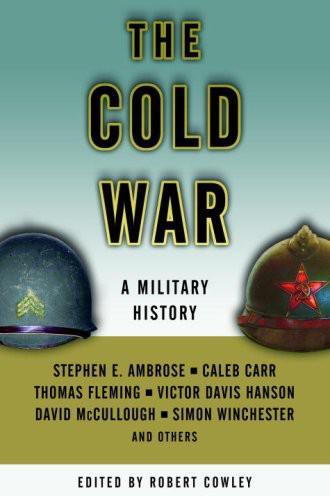
The Cold War
by
Robert Cowley
Published 5 May 1992
Did that futility apply to the operation as a whole? Was the huge effort to record, transcribe, translate, categorize, cross-reference, and evaluate the sea of tapped material also for nothing? Or worse than nothing: Did the Soviets, as several agents later claimed, feed the taps with massive disinformation? Operation Gold seems cut to the current fashion of dismissing most espionage as a scandalously exorbitant con. Writing after examining the archives on their respective sides, many experts—from Markus Wolf to John le Carré to Phillip Knightley—concluded that the tunnel's practical value in the Cold War was extremely limited.
…
In that view, the massive tunnel adventure can be seen as a telling display of the futility of espionage in general and the CIA's efforts in particular. Former BOB officers disagree, as might be expected. Recovering from the Sniper's seemingly crushing revelations, they continued to sing the tunnel's praises. Denying that they were duped by disinformation fed through it, they cited selected Soviet evidence to bolster their rebuttal. In general, they say, the tunnel treasury—1,750 intelligence reports by September 1958, based on 90,000 translated messages or conversations—was a huge asset even two years after the taps were shut down. In 1957, for example, an East German BOB operative fired from her housekeeping job for General Pitovranov (during a Soviet security campaign to eliminate German employees) managed to land another job in Karlshorst, this one for East Germany's counterintelligence chief, General Karl Linke.
…
To protect its secret that it knew the American secret—thus shielding Blake as an intelligence source—the First Directorate willingly compromised other KGB departments, together with fellow intelligence services and the Soviet army in Germany. Not even General Pitovranov was told about the tunnel until Blake's reassignment, in a normal rotation, from London to Berlin's SIS station. Whether some disinformation was leaked into the torrent of genuine stuff coursing the cables may never be known. Whether it's true, as Markus Wolf believes, that his side never would have discovered the tunnel without Blake's tip-off is also a moot question. But Operation Gold does reveal some of espionage warfare's ironies.

Merchants of the Right: Gun Sellers and the Crisis of American Democracy
by
Jennifer Carlson
Published 2 May 2023
And then came January 6th. In the weeks before that day, Trump and his supporters had orchestrated a multipronged, desperate, and largely failed attempt to overturn the election results. They filed countless lawsuits. They pressured state officials to fraudulently change election results. They engaged in a disinformation campaign that sowed distrust not just in the electoral results but also in the electoral process itself.2 Various organized factions of the Right—from the Republican Party to the Oath Keepers—undertook proactive roles in spreading the lie that not only had Trump won the election, but that the election had been stolen through the coordinated efforts of election officials working in cahoots with the Democratic Party.
…
Meanwhile, conservatives (but not liberals) have exhibited marked declines in confidence in knowledge-producing elites since the 1970s.44 Further, the news media itself has changed to facilitate anti-elitism in journalism: “the lines between activist and journalist, news and rumor, and new and old media are not only blurred but also made increasingly obsolete,”45 as Khadijah Costley White, author of The Branding of Right-wing Activism, notes.46 Coming on the heels of Trump’s routine degradation of elites, particularly media elites, as treasonous and anti-America,47 the pandemic was easily poised to validate the apprehension that many gun sellers already brought into 2020. Any uncertainty in news coverage could be read as evidence of elite fear-mongering and disinformation, and indeed, there was plenty of uncertainty: the media scrambled to keep up with, and distill for public consumption, the fragile and ever-changing scientific consensus about the pandemic. Rather than follow public health guidance developed by scientists and disseminated by mainstream media, then, gun sellers entertained a variety of theories—ones that often transformed the pandemic from an unfortunate happenstance into a nefariously instigated global crisis for the benefits of elites within and outside the United States.
…
Robert links the insecurity of not knowing with a more fundamental insecurity, jumping from “fake news” to “the right to protect yourself” by alluding to a desire for a “guarantee.” In doing so, he points to the flexibility of guns as a solution to all kinds of uncertainty, distilling a crisis of knowledge into the issue of self-defense—literally jumping the gun by asserting the firearm as a go-to solution to the uncertainty caused by misinformation and disinformation. In the same way that conspiracist thinking transforms an array of disparate knowledge claims and uncertainties into an insistent skepticism, the gun—or rather, the individual ethos attached to the gun—takes disparate kinds of insecurities, fears, and anxieties and melds these to a question of self-defense.

Doing Time Like a Spy
by
John Kiriakou
Published 11 May 2017
Schaeffer had tried to hurt me and it was time to take off the gloves. I first made an assessment of Schaeffer’s state of mind. He was not a person who could stand any viewpoint not in sync with his own, and if the facts didn’t suit his idea of himself, he would spread disinformation and discredit or eliminate those with differing opinions. I decided that I had to fight fire with fire; if he was going to make up stories to hurt me, I would use disinformation the same way. I sat down and started to plot. The oldest trick in the book in prison is that when a new prisoner comes in and is deemed by others to be weak and ripe for exploitation, he is immediately targeted by stronger, tougher, meaner prisoners.
…
I was going to have to portray myself as the victim. To accomplish this, I was going to elicit information from people close to Schaeffer and plant disinformation that would get back to him. I would do this in two ways. First, I would speak directly to people who I knew would repeat what I said to Schaeffer. Second, I would speak within earshot of people who I knew were close to Schaeffer, and who I knew would run to him with the information. (This is often the best way to pass disinformation because the listener is usually not suspicious that the speaker is trying to influence him, and believes that he very cleverly came upon this information on his own.)

The Devil's Chessboard: Allen Dulles, the CIA, and the Rise of America's Secret Government
by
David Talbot
Published 5 Sep 2016
Fletcher Prouty, The Secret Team: The CIA and Its Allies in Control of the United States and the World (New York: Skyhorse Publishing, 2008), 368. 251Arbenz was showered with abuse: “Guatemala: Battle of the Backyard,” Time, Sept. 20, 1954. 252Hunt claimed that he had spread the word: Ann Louise Bardach, “Scavenger Hunt,” Slate, Oct. 6, 2004. 252“They were trying to break him down”: Author interview with Erick Arbenz. 253The agency’s disinformation campaign began immediately: See Roberto Garcia Ferreira, “The CIA and Jacobo Arbenz: History of a Disinformation Campaign,” Journal of Third World Studies 25, no. 2 (Fall 2008): 59–81. 254The tragedy was “trapped in his head”: Ibid. 254Hunt . . . continued to track closely the man: Ann Louise Bardach, “Scavenger Hunt.” 255Arbenz’s beloved daughter, Arabella: Rich Cohen, The Fish That Ate the Whale: The Life and Times of America’s Banana King (New York: Macmillan, 2012), 206. 256But Maria Arbenz always believed that her husband had been assassinated: Author interview with Erick and Claudia Arbenz. 257Jacobo and Maria Arbenz were the Kennedys of Guatemala’s fledgling democracy: Piero Gleijeses, Shattered Hope: The Guatemalan Revolution and the United States, 1944–54 (Princeton, NJ: Princeton University Press, 1991), 134–47. 259The powerful influence of the United Fruit Company: Stephen Schlesinger and Stephen Kinzer, Bitter Fruit: The Story of the American Coup in Guatemala (Cambridge, MA: Harvard University Press, 2005), 102–7. 260Foster made a discreet tour of Central America: Peter Chapman, Bananas: How the United Fruit Company Shaped the World (Edinburgh: Canongate, 2007), 84–85. 260a “Communist-type reign of terror”: New York Times, June 16, 1954. 261Dulles assembled his Guatemala task force in the White House: David Atlee Phillips, The Night Watch (New York: Atheneum, 1977), 49–51. 262an “opéra bouffe”: New York Times, June 22, 1954. 262Arthur Hays Sulzberger was extremely accommodating: New York Times, June 7, 1997. 263the CIA had no qualms about compiling a “disposal list”: Kate Doyle and Peter Kornbluh, eds., “CIA and Assassinations: The Guatemala 1954 Documents,” National Security Archive, http://www2.gwu.edu/~nsarchiv/NSAEBB/NSAEBB4/. 264the CIA began pressuring him to purge Guatemala: Stephen M.
…
The CIA was afraid of him—an educated, articulate reformer who had stood up to the local elite and the U.S. government. He was a big threat to these powerful interests.” For the rest of the exiled Guatemalan leader’s life, the CIA was determined to strip away whatever shred of respectability still clung to him. The agency’s disinformation campaign began immediately after Arbenz’s downfall, with a stream of stories planted in the press—particularly in Latin America—alleging that he was a pawn of Moscow, that he was guilty of the wholesale butchery of political foes, that he had raided his impoverished country’s treasury, that he was sexually captivated by the man who was the leader of the Guatemalan Communist Party.
…
Meanwhile, the Trujillo regime spread the word that Galíndez was “suffering from a persecution complex” and had likely disappeared for personal reasons. Phony Galíndez sightings were reported throughout Latin America and as far away as the Philippines. At the same time, the CIA disseminated other disinformation about Galíndez to its friendly press assets, claiming that the missing scholar had absconded with more than $1 million of CIA funds, which the agency allegedly had given him to set up an anti-Franco underground in Spain. Other CIA documents, which circulated as high as Dulles’s office, tried to brand Galíndez as “a witting tool of the Communists.”
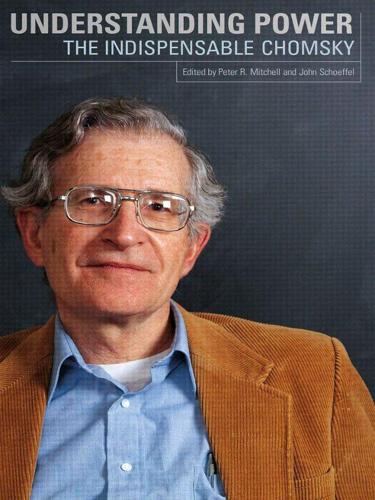
Understanding Power
by
Noam Chomsky
Published 26 Jul 2010
Well, it’s Kremlin-directed international terrorism. 15 This stuff was crafted from the first moment—and furthermore, it was all utterly transparent right from the very beginning, like I was writing about it as early as 1981. 16 The media pretend they don’t understand it, scholarship pretends it doesn’t understand it, but it’s been as predictable as a broken record: they put it on in 1981, and it’s still playing. The whole media campaign on terrorism started with a series of C.I.A. disinformation releases about Libya. In 1981 the C.I.A. leaked a story to the press about U.S. efforts to assassinate Qaddafi, in the hope that this would lead Qaddafi to some kind of erratic reaction which we could then use as an excuse to bomb him. Okay, that was exposed: the first reference to C.I.A. disinformation about Libya appeared in Newsweek in August 1981, when Newsweek stated that it had been subjected to a disinformation campaign by the government. 17 Since then, there have been about a half-dozen similar cases in which Washington floated some lunatic story about Libya and the media bought it, then discovered later that it was disinformation and pretended they were all surprised; I mean, at some point you’d think they would begin to ask what’s going on, but apparently not.
…
One interesting thing was put on the record, this famous 42-page document that they referred to; I don’t know if any of you saw that. 10 See, the government would not allow secret documents to appear, but they did permit a summary to appear, which the judge presented to the jury saying, “You can take this to be fact, we don’t question it anymore because it’s authorized by the government.” That doesn’t mean it’s not disinformation, incidentally; it means that this is what the government was willing to say is the truth, whether it’s true or not is another question. But this 42-page document is kind of interesting. It outlines a massive international terrorist network run by the United States. It lists the countries that were involved, the ways we got them involved.
…
Okay, that was exposed: the first reference to C.I.A. disinformation about Libya appeared in Newsweek in August 1981, when Newsweek stated that it had been subjected to a disinformation campaign by the government. 17 Since then, there have been about a half-dozen similar cases in which Washington floated some lunatic story about Libya and the media bought it, then discovered later that it was disinformation and pretended they were all surprised; I mean, at some point you’d think they would begin to ask what’s going on, but apparently not. And some of these cases were completely crazy—there was a story about Libyan hitmen wandering around Washington, S.W.A.T. teams on alert patrolling the White House, that kind of thing. It was all total madness. 18 Well, every one of these confrontations with Libya has been timed for some domestic purpose. The big one, the bombing of Libya in April 1986, was timed for the contra aid vote in Congress—the point was to build up a lot of hysteria beforehand, and it kind of worked: they rammed through a big aid package a month or two later. 19 It was all a complete set-up, totally prefabricated.

The End of Doom: Environmental Renewal in the Twenty-First Century
by
Ronald Bailey
Published 20 Jul 2015
As is usual with such confabs, the UN arranged for youth representatives to meet. At one such session, a young Kenyan announced his opposition to GMOs. Why? Because he had heard that GMOs weakened the immune systems of Africans so that they would more easily succumb to AIDS. From whom could he have gotten this disinformation? What could be more demoralizing than to believe that white scientists from rich countries had devised a technology that aimed to kill you? In 2003, I watched a Brazilian member of the Friends of the Earth repeatedly yell at a group of poor Mexican women to whom food made with biotech ingredients was being distributed that it was “contaminated” and “toxic” and would harm their children.
…
In 2013, some Filipino “farmers” rampaged through the fields where the IRRI was growing the Golden Rice variety. The “farmers” were later identified as anti-biotech activists who have worked with Greenpeace in the past to block other biotech crop varieties. Frankly, the scientific community has been far too passive for way too long in confronting the disinformation campaigns of anti-biotech groups such as Greenpeace, Friends of the Earth, and the Union of Concerned Scientists. But the Golden Rice atrocity finally aroused researchers. In August of 2013, Science magazine published a strong editorial, “Standing Up for GMOs,” condemning activists for their anti-scientific attacks on crop biotechnology.
…
Despite this clear record of safety, the statement continues, “The anti-GMO fever still burns brightly, fanned by electronic gossip and well-organized fear-mongering that profits some individuals and organizations.” Hooray! It’s great that thousands of researchers have finally called out Greenpeace and other anti-biotech activist groups for peddling and profiting from their disinformation. In 2014, researchers in Germany and California published another study that calculated that the delay in getting Golden Rice into the fields of poor farmers in India has resulted in the loss of 1.4 million life-years in India that would otherwise have been saved. As the study noted, Golden Rice is “a cost efficient solution that can substantially reduce health costs.”

Sandworm: A New Era of Cyberwar and the Hunt for the Kremlin's Most Dangerous Hackers
by
Andy Greenberg
Published 5 Nov 2019
When I spoke to former president Yushchenko on the phone later that year, he argued that Russia’s tactics, online and off, have one single aim: “to destabilize the situation in Ukraine, to make its government look incompetent and vulnerable.” He lumped the cyberattacks together with the Russian disinformation flooding Ukraine’s media, the terroristic fighting in the east of the country, and his own poisoning years earlier—all underhanded moves aimed at pulling Ukraine to the east or painting it as a broken nation. “Russia will never accept Ukraine being a sovereign and independent country,” he told me.
…
When Galeotti published his take on Gerasimov’s speech in July 2014, titling his post “The ‘Gerasimov Doctrine’ and Russian Non-linear War,” he saw in the speech a prescient explanation of the strategy Russia had already used in the earliest months of its Ukrainian invasion. Even before any signs of a cyberwar had come to light, Russia was secreting troops across the border out of uniform, flooding the Ukrainian media with disinformation, and exploiting internal instabilities. But when the GRU’s meddling in the U.S. presidential election emerged two years later, it suddenly seemed to suggest an even more far-reaching and insidious example of the ideas Gerasimov described, now put into practice. As the frenzy around Russia’s election-related hacking grew in late 2016 and 2017, the Gerasimov Doctrine began to be referred to in mainstream Western media as the key to understanding all Russian warfare.
…
The notion was repeated widely enough that Galeotti himself felt the need to step back from it, pointing out that Gerasimov had hardly been the first to suggest waging hybrid wars that extended past the traditional military front—the Georgian war offered a clear example five years earlier—and that his “Gerasimov Doctrine” wasn’t even a formal or comprehensive doctrine so much as a momentary peek into the evolution of Russian military thinking. But in early 2018, after Sandworm had been connected directly to the Russian military, I couldn’t help but see how Gerasimov’s ideas explained Sandworm’s actions, too. The “informational confrontation” Gerasimov suggested wasn’t necessarily limited to disinformation or propaganda. In fact, both Galeotti and Giles emphasized to me that there is no distinction in common Russian vocabulary between “information war” and a concept of “cyberwar” that suggests disruptive or physical consequences of hacking. Both fall under the same term, informatsionnaya voyna.
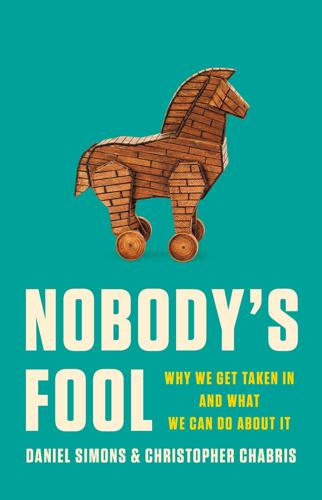
Nobody's Fool: Why We Get Taken in and What We Can Do About It
by
Daniel Simons
and
Christopher Chabris
Published 10 Jul 2023
Here’s a straightforward example of how it works. SUPREMELY FAKE “It’s not the tweets, it’s the retweets that get you in trouble.… You see something that looks good and you don’t investigate it.” In a social media world of fake news and political disinformation, those are wise words (and ironic ones, considering who said them). Political disinformation goes nowhere unless its recipients spread it to their friends, and they spread it to theirs, and so on—which makes it critical to short-circuit this process when it reaches us.8 One of Donald Trump’s first acts on assuming the presidency in 2017 was to nominate a successor to Supreme Court justice Antonin Scalia.
…
Either justification would be valid, but when we think about the positive examples, it’s easier to think of reasons favoring them. There was no deception in the conventional sense in this study. The researchers presented true anecdotes about real founders, but those anecdotes were not representative or typical of company founders. Similarly, disinformation campaigns can be successful—and evade conventional attempts to “fact-check” deception—without containing explicit lies or fake news as long as they choose real examples selectively enough.15 THE POSSIBILITY GRID By now, it’s clear that we tend to make decisions using only information about the planes we see and rarely even think of the ones that didn’t come back.
…
Chabris, “The Most Successful and Influential ‘Outlier’ Americans Come from a Surprisingly Narrow Range of Elite Educational Backgrounds,” submitted to PLoS ONE, 2022. A list of “unicorns” in 2015 was published in S. Austin, C. Canipe, and S. Slobin, “The Billion Dollar Startup Club,” Wall Street Journal, February 18, 2015 [https://www.wsj.com/graphics/billion-dollar-club/]. 15. The philosopher Åsa Wikforss made this point in her chapter “The Dangers of Disinformation,” in The Epistemology of Democracy, ed. H. Samaržija and Q. Cassam (London: Routledge, 2023). 16. Browne’s conviction: J. Nickell, “Psychic Sylvia Browne Once Failed to Foresee Her Own Criminal Conviction,” Skeptical Inquirer, November–December 2004 [https://web.archive.org/web/20050727083155/http://www.findarticles.com/p/articles/mi_m2843/is_6_28/ai_n6361823].

Who’s Raising the Kids?: Big Tech, Big Business, and the Lives of Children
by
Susan Linn
Published 12 Sep 2022
Russell Brandom, “Facebook Design Flaw Let Thousands of Kids Join Chats with Unauthorized Users,” Verge, July 22, 2019, www.theverge.com/2019/7/22/20706250/facebook-messenger-kids-bug-chat-app-unauthorized-adults. 68. Samantha Murphy Kelly, “Facebook Says It’s Moving Forward with Instagram for Kids Despite Backlash,” CNN Business, July 27, 2021. 69. “House Hearing on Combating Online Misinformation and Disinformation,” C-SPAN.Org, March 25, 2021, www.c-span.org/video/?510053-1/house-hearing-combating-online-misinformation-disinformation. 70. Deepa Seetharaman, Georgia Wells, and Jeff Horwitz, “The Facebook Files: Facebook Knows Instagram Is Toxic for Teen Girls, Its Research Shows—Internal Documents Show a Youth Mental-Health Issue that Facebook Plays Down in Public,” Wall Street Journal, September 15, 2021. 71.
…
The best way to sell something is to convince potential buyers that you’re giving them what they need. People desperately wanted to believe that the government had the virus under control or that it would go away on its own—or better yet, that it didn’t really exist. Harms to children are collateral damage of the marketing techniques employed to spread disinformation about the coronavirus. While kids weren’t the intended audience, they certainly suffered. At a minimum, children’s lives were upended, their schooling interrupted, and their parents stressed. For many kids, the consequences were even more devastating—they lost parents and caregivers and descended into poverty.
…
That’s when Google launched Be Internet Awesome, school-based lessons and activities designed to teach the company’s version of “digital citizenship and safety” to third through seventh graders.55 The timing wasn’t coincidental. After coasting along on consumers’ love of all things digital, tech companies had begun facing unprecedented public criticism. The previous few years saw a significant uptick in concern about the industry’s culpability in promoting disinformation, scams, assaults on privacy, various digital addictions, cyberbullying, children’s exposure to pornography, and more. Google wasn’t the only Big Tech company receiving bad press (Meta, for instance, was under fire for enabling Russian interference in the 2016 U.S. presidential election). But in 2015, Google was the subject of three high-profile Federal Trade Commission complaints from advocacy groups.

Autistic Community and the Neurodiversity Movement: Stories From the Frontline
by
Steven K. Kapp
Published 19 Nov 2019
Groups like the Center for Autism and Related Disorders (CARD) and the Lovaas Institute anchored the provision of therapy based in applied behavioral analysis designed to “recover” autistic children, alongside the parent-based advocacy organization Cure Autism Now (which the similar organization Autism Speaks absorbed that year). Meanwhile, groups such as Talking About Curing Autism (TACA) and Generation Rescue (both represented around this time by Jenny McCarthy, “Ph.D. in Google Research” [6]) spread potentially deadly disinformation including vaccine skepticism and chelation therapy. Amid this hostile climate, I decided to earn an actual Ph.D. (in educational psychology) at the heart of the medical model of autism research, the University of California Los Angeles, to learn the thinking and language of mainstream science to better critique them.
…
Indeed, Kathleen Seidel (Chapter 7) has hosted neurodiversity.com as a non-autistic parent, without significant protests that an autistic does not 1 Introduction 13 own the domain name (Chapter 7). The historic archives, posts by autistic and non-autistic guests on debates or issues, and Seidel’s counters to disinformation like false, dangerous treatments for and beliefs of causes of autism have demonstrated the movement’s alliance with like-minded parents and impactful commitment to science. Inspired by Sinclair’s Autreat, Autscape (Buckle, Chapter 8) provides the longest-running ongoing example of physical “autistic space”: an annual conference mostly by and for autistic people, which has demonstrated the possibilities and limits of inclusion.
…
And when the Autistic Self Advocacy Network (www.autisticadvocacy.org) demands “nothing about us without us,” they are taking their rightful seat at the head of the autism roundtable, rather than trying to bar the concerns and questions of non-autistic parents like me from those discussions entirely. I also had to confront flaws in my own thinking as my understanding of neurodiversity evolved. I fought against autism-vaccine disinformation because such statements are provably false. But neurodiversity activists like Emily Paige Ballou (chavisory.wordpress.com) helped me understand that not only do vaccines “have nothing to do with autism,” but framing autism as an “injury,” or even saying “don’t worry, vaccines don’t cause autism” is still making my son’s neurology into something to be feared rather than understood and accepted—and that is both stigmatizing and counterproductive.

Area 51: An Uncensored History of America's Top Secret Military Base
by
Annie Jacobsen
Published 16 May 2011
The CIA would learn from this experience: it could use the public’s preconceptions as well as the media’s desire to tell a story to its own benefit. Civilians could unwittingly propagate significant disinformation on the CIA’s behalf. In Central Intelligence Agency parlance, there are two kinds of strategic deception: cover and disinformation. Cover induces the belief that something true is something false; disinformation aims to produce the belief that something false is in fact true. In other words, cover conceals the truth while disinformation conveys false information. When the CIA disseminates false information, it is always intended to mislead. When the press disseminates false information that helps keep classified information a secret, the CIA sits back and smiles.
…
“Alarming news is coming from Cuba at present, news that the most aggressive American monopolists are preparing a direct attack on Cuba,” Khrushchev told the group. Barnes believes Khrushchev “may have been referring to our messing with them with our Hawk missiles homing in on their planes.” Were that the case, Khrushchev had a valid point. But the mercurial dictator had his own difficulties in sticking to the facts. Disinformation was a hallmark of the Soviet propaganda machine. To a roomful of Cuban diplomats, many of whom knew otherwise, Khrushchev falsely claimed, “What is more, [the Americans] are trying to present the case as though rocket bases of the Soviet Union are being set up or are already established in Cuba.
…
This wilderness, Angleton said, was the product of a myriad of KGB deceptions and stratagems that would one day ensnare, confuse, and overpower the West. Angleton believed that the Soviets could manipulate the CIA into believing false information was true and true information was false. The CIA’s inability to discern the truth inside a forest of Soviet disinformation would be America’s downfall, Angleton said. James Jesus Angleton allegedly had as many enemies inside the Agency as inside the KGB, but Richard Helms trusted him. Helms and Angleton had known each other since World War II, when they worked in the OSS counterintelligence unit, X-2. In the 1960s, in addition to acting as the liaison between the CIA and the FBI, Angleton controlled the Israeli “account,” which meant he provided Helms with almost everything Helms knew about Israel.

Empire of AI: Dreams and Nightmares in Sam Altman's OpenAI
by
Karen Hao
Published 19 May 2025
With a version of GPT-2 now out in the world, there was also evidence that the dangers of pure language models weren’t all that bad. As far as OpenAI knew, it hadn’t been used in coordinated mass disinformation campaigns—and such campaigns were certainly better than the potential existential risks of AGI. “Obviously misuse is not good,” Amodei told me. “But a language model is a lot less powerful than an AGI. I’m very worried about language models being weaponized for disinformation and this sort—that is very scary to me—but at the same time, it’s a relatively singular and clear and defined concern.” From Amodei’s view, in other words, scaling GPT-2 was not only potentially the fastest path to advance to AGI but also one whose possible risks along the way would be relatively contained to those he viewed as manageable—mis- and disinformation, as opposed to catastrophe.
…
OpenAI had only one project that approached fitting the bill: a large language model called GPT-2 that was capable of generating passages of text that closely resembled human writing. In February that year, OpenAI had taken the unusual step of proclaiming to the press that this model, once advanced a little further, could become an exceedingly dangerous technology. Authoritarian governments or terrorist organizations could weaponize the model to mass-produce disinformation. Users could overwhelm the internet with so much trash content that it would be difficult to find high-quality information. OpenAI would take the ethical high road, it said, and withhold the full version of the model, which had 1.5 billion parameters, or variables, an approximate measure of a model’s size and complexity.
…
Instead it would release only a smaller version, with 8 percent of the full-fledged model’s parameters, to give the public a taste of its capabilities. He, Amodei, and several others coauthored a blog post with examples of GPT-2’s outputs to illustrate its full potential. “It’s very clear that if this technology matures—and I’d give it one or two years—it could be used for disinformation or propaganda,” he said to my then colleague at MIT Technology Review Will Knight. Clark sidestepped the fact that OpenAI was the one leading the push to mature the technology on that timeline. “We’re trying to get ahead of this,” he said. OpenAI’s move sparked intense blowback from external researchers, who adhered strictly to the idea that open science was the bedrock of the field.

We Are the Nerds: The Birth and Tumultuous Life of Reddit, the Internet's Culture Laboratory
by
Christine Lagorio-Chafkin
Published 1 Oct 2018
Just six minutes after his first Tripathi tweet, Luke Russert tweeted again, saying, “It’s still early w unconfirmed reports, but if Redit [sic] was right with the Sunil Tripathi theory, it’s changed the game 4ever.” Reddit wasn’t right. Three years before social networks would fuel a vicious cycle of fake news—often aided by Russian disinformation outlets, domestic right-wing meme warriors, and politically minded propagandists—Reddit had seeded an entirely incorrect and highly damaging news cycle. Two hours later, around 5 a.m. the entire theory fell apart. NBC reported that Tripathi was not a suspect. All of the online speculation, of which Reddit was a primary hub, had indeed turned into what the moderators and the press had feared: a witch hunt
…
This sort of plotting happens in massive private-message threads on Twitter, in Facebook groups, on private chat servers such as Discord, and, very overtly, on 4chan’s /pol, a “politically incorrect” board that had been created by 4chan’s founder in 2011 to siphon off and contain the overtly xenophobic and racist comments and memes from other wings of 4chan. This mostly off-Reddit organizing then plays out on Reddit as vote brigading, or attempting to silence individual voices by downvoting them into oblivion. Other products were meme generation and dissemination, harassment campaigns, and propagation of disinformation, largely aiming to disseminate far-right viewpoints. Brigading had long been against the site’s rules, but this activity was difficult to track, and almost impossible to differentiate from regular Reddit activity due to the fact that it looked an awful lot like normal Reddit activity: Those taking part were coming from disparate IP addresses, mostly domestic, and most of which otherwise interacted typically with the site.
…
In it, he mostly delivered one-liners in his flamboyantly brash style about his love for “daddy.” He also called Ted Cruz a “weird amphibian loser” and referred to feminists as “obese.”) Another constituency growing around this time, it would later become known, was Russian propagandists, apparently in an effort to sow disinformation and discord among the American electorate. Reddit later identified 944 user accounts associated with a Kremlin-tied troll farm; the largest posters were active on The_Donald, using upvoting schemes to make their posts more popular. While most of the accounts’ efforts were ineffective, a few were successful; one posted a sex video that falsely claimed to include Hillary Clinton, and it received more than one hundred thousand upvotes.

The Illegals: Russia's Most Audacious Spies and Their Century-Long Mission to Infiltrate the West
by
Shaun Walker
Published 15 Apr 2025
Fitin described Schulze-Boysen’s biography, explaining he was a German ideologically close to the Soviet cause inside the Nazi Ministry of Aviation. There was a long pause as Stalin continued to pace. Arriving back at his table, he turned around and barked his single-word verdict derisively in the direction of Fitin and Merkulov. “Disinformation!” With that, he dismissed the men. Soviet illegals had penetrated two enemy capitals, providing detailed and specific information about the upcoming Nazi invasion from Tokyo and Berlin. But it was all wasted on Stalin. After dismissing Fitin and Merkulov, he looked again at the report they had brought with them outlining Schulze-Boysen’s intelligence.
…
Large amounts of space had been added in a postwar reconstruction program, and the building was now a hulking mustard-colored monolith. In June 1954, the Politburo met to discuss how to strengthen the KGB’s operations against the United States and its Western allies, deciding that more emphasis should be placed on so-called active measures, including collecting kompromat on foreign public figures and using disinformation campaigns. The KGB’s leadership also demanded a renewed emphasis on illegal intelligence.[37] The “special directorate,” which handled illegals and later became known simply as Directorate S, drew up plans for its officers to be posted under legal cover to Soviet embassies across the globe. They were to be tasked with obtaining birth certificates, passports, and other identity documents for future illegals
…
Zapiski Bolshevika. 5th ed. Moscow: Gosudarstvennoe Izdatelstvo Politicheskoi Literatury, 1956. Rappaport, Helen. Conspirator: Lenin in Exile. London: Hutchinson, 2009. Remnick, David. Lenin’s Tomb: The Last Days of the Soviet Empire. London: Penguin, 1993. Rid, Thomas. Active Measures: The Secret History of Disinformation and Political Warfare. London: Profile, 2020. Rieber, Alfred J. Stalin as Warlord. New Haven, Conn.: Yale University Press, 2022. Ross, Marjorie. El secreto encanto de la KGB. San José: Farben Grupo Editorial Norma, 2004. ———. Unmasked: A True Story of Charm, Intrigue, and Master Spycraft.

The Last President of Europe: Emmanuel Macron's Race to Revive France and Save the World
by
William Drozdiak
Published 27 Apr 2020
The massive and coordinated hacking operations used by Russia to interfere in American, French, and other European elections highlighted the vulnerability of Western democracies to clandestine attacks by clever adversaries. Although Macron believed that Trump was in fact correct in his frequent harangues about Europeans needing to spend more for their own defense, he realized that purchasing more troops, tanks, bombs, and submarines would not protect Europe from cyber-attacks and disinformation campaigns. If Europe was ever going to achieve an enduring strategic partnership with Russia, there would have to be a greater level of cooperation and understanding with Moscow about the uses and abuses of advanced technologies in the future. As one of the West’s youngest and most consequential leaders, Macron felt comfortable thinking in terms of the next three decades, unlike most of his peers.
…
Putin and his military strategists have expressed amazement at how effective their methods have been in sowing discord and disarray across Europe. The Kremlin’s financial and political support for right-wing populist nationalist parties, such as France’s National Rally, the Northern League in Italy, Austria’s Freedom Party, Hungary’s ruling Fidesz Party, and the Alternative for Germany, has targeted voter resentments in its disinformation campaigns. Moscow has capitalized on the failure of mainstream parties in the West to respond effectively to public anxieties about the impact of immigration on national identity, the growing divide between rich and poor, and the frustrations of young people seeking sustainable employment. These social problems are exploited by Moscow’s social media campaigns in ways that elicit a sympathetic response from aggrieved groups in the West.
…
In the Baltic states, for example, Moscow has frequently used social media campaigns to stir up protests among ethnic Russians in Latvia and Estonia who complain about not being allowed to vote or receive full citizenship rights. Putin enjoys further leverage in his dealings with European leaders because of the importance of Europe’s trade with and investment in Russia, the levels of which are nearly ten times those of the United States. Russia’s disinformation strategy has generally sought to deepen political divisions across Europe by supporting the causes of both right- and left-wing populist parties against the ruling establishment, often through clever social media campaigns ahead of elections. When Macron and other Western leaders have vehemently objected to Russia’s actions, Putin has responded either by denying responsibility for any such attacks or by claiming that Russia is merely engaging in retaliation against Western propaganda.
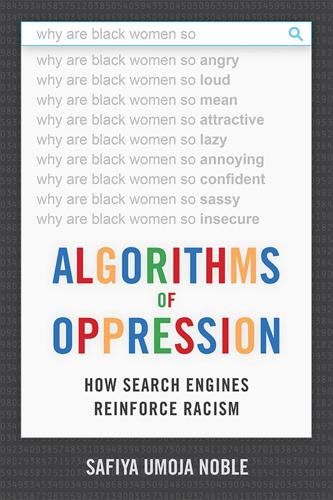
Algorithms of Oppression: How Search Engines Reinforce Racism
by
Safiya Umoja Noble
Published 8 Jan 2018
Indeed, as I gave talks about this book in the weeks after the election, I could only note in my many public talks that “as I’ve argued for years about the harm toward women and girls through commercial information bias circulating through platforms like Google, no one has seemed to care until it threw a presidential election.” Notably, one remarkable story about disinformation (patently false information intended to deceive) made headlines about the election results. This new political landscape has dramatically altered the way we might think about public institutions being a major force in leveling the playing field of information that is curated in the public interest. And it will likely be the source of a future book that recontextualizes what information means in the new policy regime that ensues under the leadership of avowed White supremacists and disinformation experts who have entered the highest levels of public governance.
…
In short, Daniels argues that using racial formation theory to explain phenomena related to race online has been detrimental to our ability to parse how power online maps to oppression rooted in the history of White dominance over people of color.12 Often, group identity development and recognition in the United States is guided, in part, by ongoing social experiences and interactions, typically organized around race, gender, education, and other social factors that are also ideological in nature.13 These issues are at the heart of a “politics of recognition,”14 which is an essential form of redistributive justice for marginalized groups that have been traditionally maligned, ignored, or rendered invisible by means of disinformation on the part of the dominant culture. In this work, I am claiming that you cannot have social justice and a politics of recognition without an acknowledgment of how power—often exercised simultaneously through White supremacy and sexism—can skew the delivery of credible and representative information.

Chasing the Moon: The People, the Politics, and the Promise That Launched America Into the Space Age
by
Robert Stone
and
Alan Andres
Published 3 Jun 2019
But this time the biological specimens died when the cabin depressurized during the return voyage, a detail unreported to the world press at the time. The reentry was equally problematic, ending with a parachute failure and crash landing. Nevertheless, the Russians made every effort to save face by celebrating Zond 6 as a success. The Soviet Union then commenced a disinformation campaign designed to convince the world that Russia would attempt a piloted circumlunar mission in December. In fact, no such plans were being considered. In addition, a KGB colonel stationed in the United States was instructed to plant rumors at Cape Kennedy that Apollo 8’s Saturn V had been sabotaged.
…
On East German television, a news program informed its viewers that space stations and unmanned satellites were far more important; the Moon was a pointless destination and Apollo little more than a symptom of capitalism’s failure. But, unlike some sensationalist American magazines that had made the case that the entire Soviet space program was, in fact, a clever propaganda hoax, there was no active Soviet disinformation campaign to spread rumors that the American government and media had faked the moon landing. Within the privileged inner circles of the Soviet scientific world, 16mm copies of the Apollo moon-landing film were studied and discussed. And among those with access to the film was Sergei Khrushchev.
…
Motivated by anger about the Pentagon’s deception in Vietnam, Kaysing decided to write something “outrageous,” hoping that it might prompt Americans to no longer blindly accept as truth the official word out of Washington, D.C. Ironically, this was one rumor the Soviet Union hadn’t tried to cultivate as part of their disinformation campaign against the United States. At the time of the moon landing, few voiced rumors of it being a hoax, although as early as 1968 just such a secret government conspiracy had served as part of the plot of a darkly satiric BBC television drama, The News-Benders. Author Norman Mailer may have sensed the growing paranoia when he joked a year after Apollo 11, “In another couple of years there will be people arguing in bars about whether anyone even went to the Moon.”

The Billion Dollar Spy: A True Story of Cold War Espionage and Betrayal
by
David E. Hoffman
Published 9 May 2016
The purpose of the seminar was to scrub his material for any signs of disinformation. Two and a half years had passed since Tolkachev’s first approach at the Moscow gas station, yet the intelligence agencies and the military still harbored skepticism. If Tolkachev was under the control of the KGB, if his documents were fabricated in order to send the United States off in the wrong direction, it would be calamitous to take the bait. The danger was certainly real; the KGB had a long history of skillfully using deception, disinformation, and misdirection. The United States had used the same methods against the Soviet Union.9 At the same time, the United States was eager for insight and intelligence about Soviet military plans and intentions.
…
The nature of the material from Tolkachev—the complex diagrams, specifications, blueprints, and circuit boards from airborne radars and the disclosure of Soviet military research and development plans stretching a decade into the future—was extraordinary. Two U.S. intelligence and military experts who examined thousands of pages of Tolkachev’s documents over a period of years said they never found a single page contaminated with disinformation, and they cross-checked the intelligence as far as they could with other sources.5 Tolkachev opened a window on Soviet intentions and capabilities, which were at the core of the CIA’s mission. For the leadership of the United States, it was vitally important to know Soviet priorities in military research and development, as well as capabilities—what they could do and could not do.
…
For an official account of the tunnel operation, see “The Berlin Tunnel Operation, 1952–1956,” Clandestine Services History, Historical Paper No. 150, June 24, 1968, declassified in part by the CIA in 2012, included as doc. No. 001-034, chap. 1, in the document collection accompanying Bird and Bird, “CIA Analysis.” Some previous accounts have claimed the intelligence take from the tunnel was contaminated with disinformation. In an authoritative account, Murphy, Kondrashev, and Bailey, Battleground Berlin, say the operation “did in fact produce a large amount of badly needed and difficult to obtain military intelligence” in a period before such material became available from the U-2 overflights and satellite imagery.
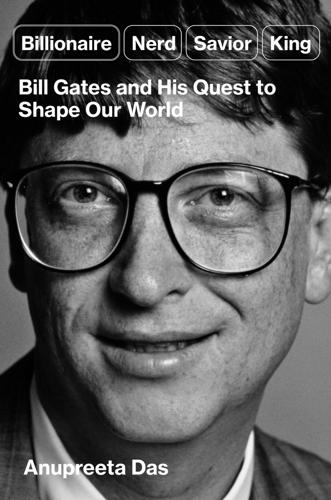
Billionaire, Nerd, Savior, King: Bill Gates and His Quest to Shape Our World
by
Anupreeta Das
Published 12 Aug 2024
We thus ignore the monopolistic practices of many of today’s biggest tech companies and accept the giant toxic spew and total control of the ways in which we interact and inform—even if they have directly contributed to some of the worst tendencies today—as the price we pay for ease, convenience, and connection. As misinformation, disinformation, social polarization, and conspiracy theories threaten the very foundations of democracy, personal data and secrets about our lives and search habits get ever more monetized. A fifth myth is that creativity and genius can manifest only through nonconformist behavior, outside of the drudgery of a job and unconstrained by the burden of formal clothing—and without government interference and regulation.
…
“I guess no one wants to look at it everyday, lol,” Chapman said. The art itself is one thing. But the thinking that provoked Chapman’s painting is indicative of how Gates’s image evolved—not only in the mainstream of society but also in its rivulets, where it floats amid the flotsam of half-truths, mistrust, and disinformation. Conspiracy theories—defined loosely as beliefs that elites and institutions, including the media, governments, and powerful individuals, collectively wield their power to achieve malevolent outcomes—have a long and robust history. They are similar to myths in that they provide an explanation for the inexplicable.
…
Conspiracy theories promoted by alt-right extremists became far more mainstream in the four years that Trump occupied the White House. The rise of the internet and social media has given conspiracy theorists a vast landscape upon which to plant the seeds of misinformation. Right-wing extremists like Alex Jones, the founder of Infowars, have built multimillion-dollar businesses peddling misinformation, disinformation, and wild antigovernment theories. In late 2022, Jones was ordered to pay $1.4 billion to the families of those who were killed at Sandy Hook Elementary School in Newtown, Connecticut, in 2012. For years, Jones had called the mass shooting a hoax. Jones also encouraged supporters of Trump to storm the U.S.

Facebook: The Inside Story
by
Steven Levy
Published 25 Feb 2020
The report went into detail about the GRU’s involvement, admitting that Facebook had yet to learn how deeply the Russians had cracked the code of using Facebook to spread propaganda. It included a number of screen shots of pages that his Threat Intelligence team believed were of Russian origin, not just involving the election but earlier forays into Ukrainian-related disinformation, and even propaganda regarding the Olympics. To emphasize this point, Stamos put the logos of the Russian intelligence agencies on his report. Attacks from a hostile super-state were not something that could be addressed by tweaking News Feed signals. It required deeper understanding—and direct involvement from Zuckerberg.
…
Fake news, they concluded, was really a problem of cutting off the money supply of malefactors, like the Macedonians in Veles, who were gaming the system. In a sense, they saw it as a similar situation to Facebook’s problem with spammy developers. Dealing with fake news, under that view, was not really much different from taming the excesses of Zynga’s Mark Pincus. “We understood some of the disinformation efforts had been traced to Russia [but] the fake news problem seemed larger,” says Colin Stretch, Facebook’s general counsel. So, belying its name, Project P went hard on financially motivated fake news and gave propaganda a pass. While not disputing Project P’s conclusion, Stamos still felt that Facebook should sound an alarm about foreign interference on Facebook.
…
So while the thirteen-page white paper talked at length about how foreign interference might operate, it did not single out Russian involvement. In fact, the word “Russia” did not appear. “Facebook is not in a position to make definitive attribution to the actors sponsoring this activity,” the authors wrote. They also cautioned that state disinformation is but a small part of “false news” on Facebook. The one concession to acknowledging Russian involvement was a note about how nothing in the white paper contradicted a recent report from the US director of national intelligence—which was explicit that the Russians tried to screw up our election.

Conscience of a Conservative: A Rejection of Destructive Politics and a Return to Principle
by
Jeff Flake
Published 31 Jul 2017
Defending our political prerogatives by filling our heads with propaganda is not a virtue, and it certainly cannot be called conservative. As conservatives, we believe in the marketplace. If we aren’t confident enough to take our ideas to the people and confident enough that they’ll be heard, especially given the political hegemony we currently enjoy, then I am not sure that we deserve that hegemony. A reliance on mis- or disinformation betrays a lack of confidence in our defining ideas, a lack of commitment to our core principles, and it contributes to the decline of the country we love. I have said it before, and I’ll say it again: We must get off this kick. A COUPLE OF MONTHS into the Trump administration, as word of factional tension began to spill out of the White House—between the hard-right advisors who had helped elect the president on one side and members of the president’s family on the other—Michael Gerson, the conservative writer and former senior aide to President George W.
…
Buckley was a conservative colossus, in whose debt every American who claims conservative pedigree remains to this day. He was every bit as courageous as Goldwater in advancing and defending conservative positions during a period when conservatism had been in retrenchment and decline. It is Buckley who taught us how a real conservative deals with extremism and paranoia and a burgeoning culture of disinformation in the ranks. The scale of what we are now experiencing is orders of magnitude different, because of the Internet, but it is not new. — In 1955, when Buckley founded National Review, there had never been anything like it in the country. Buckley’s magazine became the vibrant intellectual center of American conservatism, and in the late 1950s it not only championed Goldwater’s rise to lead the conservative movement (which would lead directly to Reagan’s rise over the next two decades) but also counseled Goldwater on how to handle the extremists in his party at the time, particularly the members of the shadowy John Birch Society, ardent anticommunists who were probably best known for their elaborate conspiracy theories of communist infiltration.
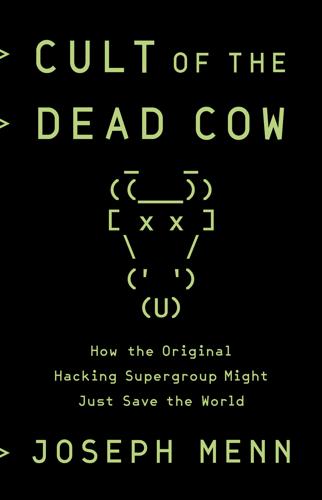
Cult of the Dead Cow: How the Original Hacking Supergroup Might Just Save the World
by
Joseph Menn
Published 3 Jun 2019
Misha cheerfully wrote on the group’s site, “We’re a neo-Marxist, anarcho-socialist guerrilla unit forged for the sole purpose of getting on TV.” The group considered what it was doing to be performance art. Back then, the truth didn’t seem as endangered as it does now, so muddying the waters for a cause struck them as ethically acceptable. “It’s one thing if you have a state sponsor of disinformation and propaganda that is trying to affect a particular political outcome, versus trying to raise consciousness of some issue that might not break through otherwise,” said one member of cDc. “The circumstances matter.” At the time, the group considered getting rid of its old bomb-making recipes out of a sense of social responsibility.
…
Technically, it was not a breach: it was a failure of basic advertising processes, where Stamos had no control. Instead, CEO Zuckerberg had to go before Congress to apologize and promise to give users more control over their data. Meanwhile, former Facebook and Google executives began condemning their former employers for allowing disinformation to thrive. Tristan Harris, a former design ethicist at Google, formed the Center for Humane Technology and warned that Facebook and YouTube had let some of the world’s most powerful instances of artificial intelligence figure out how to keep people watching, and that the answer had been to show outrage and extremism.
…
“We intend to dominate and subvert the media”: This statement appeared in cDc website updates including this one: www.cultdeadcow.com/news/medialist.htm. “We’re a neo-Marxist, anarcho-socialist guerrilla unit”: Omega, “cDc Response to Newsday Magazine by Omega,” December 1, 1996, https://w3.cultdeadcow.com/cms/1996/12/cdcs-response-t.html. “It’s one thing if you have a state sponsor of disinformation”: This came from hacker Mike Seery, who used the handle Reid Fleming. Seery was an old friend of Misha’s and a longtime active cDc member credited by Misha for the neo-Marxist line. “public spectacle to affect the public debate”: The slogan is from a Yes Men page, http://yeslab.org/theyeslab.

Breaking Twitter: Elon Musk and the Most Controversial Corporate Takeover in History
by
Ben Mezrich
Published 6 Nov 2023
There are some facts that indicate that the materials may have been hacked, while there are others indicating that the computer was either abandoned and the owner consented to allow the repair shop to access it for at least some purposes. We simply need more information. Yoel, despite his initial misgivings, eventually went all in on the Twitter suppression of the story: The key factor informing our approach is consensus from the experts monitoring election security and disinformation that this looks a lot like a hack-and-leak that learned from the 2016 WikiLeaks approach and our policy changes. The suggestion from experts—which rings true—is there was a hack that happened separately, and they loaded the hacked materials on the laptop that magically appeared at a repair shop in Delaware and was coincidentally reviewed in a very invasive way by someone who coincidentally then handed the materials to Rudy Giuliani.
…
And he had pushed various points of view for pundits, using his army of internet warriors to drown out opposing voices. Fyodr didn’t care who he targeted; he was an equal opportunity troll. One day, his team might be barraging a Democratic senator with false accusations of corruption, and the next day, going after a Republican candidate for president with disinformation about their policies. The more chaos they could sow, the more bitcoin ended up in cold storage. It was not a business without risks. Creating fake social media accounts to spread comments-for-hire, targeted opinions, and misinformation skated close to crossing any number of laws affecting commerce, advertising, and personal libel; certainly, some of his more controversial campaigns fell into the category of outright fraud.
…
The Washington Post stated that the action “directly undermines Elon Musk’s claim that he intends to run a platform dedicated to free speech.” Melissa Fleming, the UN undersecretary-general for global communication, put it succinctly: “Media freedom is not a toy. A free press is the cornerstone of democratic societies and a key tool in the fight against harmful disinformation.” By Thursday evening, Elon had his back up against the wall, posting gamely into the fury coming at him from all sides: Same doxing rules apply to journalists as to everyone else. Followed by: They posted my exact real-time location, basically assassination coordinates, in (obvious) direct violation of Twitter terms of service.
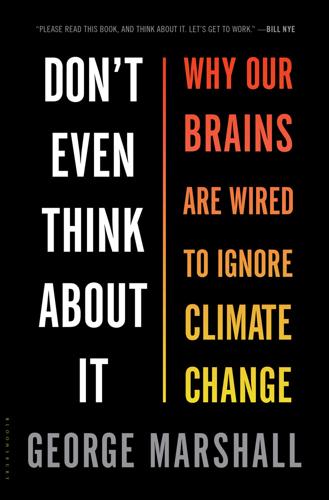
Don't Even Think About It: Why Our Brains Are Wired to Ignore Climate Change
by
George Marshall
Published 18 Aug 2014
When I invited him to find a metaphor for this struggle, he settled, without any hesitation, on The Lord of the Rings. “It’s a classic tale of the struggle between good and evil, but the stakes are the earth itself. The CEOs of fossil fuel companies who fund a disinformation campaign to confuse the public are the forces of Mordor. The scientists are Gandalf.” I would add that, with his goatee beard and twinkling eyes, Mann could also find a place in that battle—a climatological faun, maybe. This disinformation campaign, often referred to as the “denial machine,” contains a wide network of think tanks such as CEI, media outlets, and politicians. But of late, campaigners have consistently set their sights on its most prominent and nefarious funders: David and Charles Koch, sibling inheritors of the second largest privately owned company in the United States.
…
This argument is often called the information-deficit model, because it sees people, in the words of Ward, as “empty vessels who will respond appropriately once informed of the facts.” In recent years, with the continued lack of political or social action, scientists have become even more convinced that the problem lies with the distortion of this information by what they call “disinformation campaigns.” This, they believe, is best countered with more information. Announcing a new report by the Potsdam Institute for Climate Impact Research, the research team leader declared his confidence that his data would “put to rest a misconception popular in some quarters, that global warming has slowed down.”
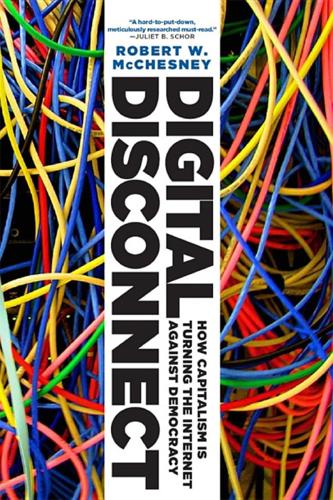
Digital Disconnect: How Capitalism Is Turning the Internet Against Democracy
by
Robert W. McChesney
Published 5 Mar 2013
28 As Jarvis puts it, “Resistance is futile.”29 It is difficult to read these books and not look to the sky and thank one’s lucky star for having been put on the planet at this unprecedented glorious moment in history. The Skeptics The skeptics directly counter some of what the celebrants say, but to a certain extent the two sides are talking past each other. Shaheed Nick Mohammed, in his 2012 The (Dis)information Age, takes dead aim at the notion that the Internet is spawning greater levels of knowledge, “the notion that these technologies and their popular modes of usage necessarily lead to a more informed public.” He notes that the Internet works as much or more to promote ignorance as knowledge; hence survey research demonstrates little if any improvement in the knowledge levels of Americans between 1989 and 2007.30 Mark Bauerlein develops this point, noting that study after study confirms that young people today constitute “the dumbest generation,” shockingly ignorant of civics, history, geography, science, literature, the works.
…
Diamandis and Kotler, Abundance, 25. 27. Lund, Massively Networked, 141. 28. Rory O’Connor, Friends, Followers and the Future: How Social Media Are Changing Politics, Threatening Big Brands, and Killing Traditional Media (San Francisco: City Lights Books, 2012), 20. 29. Jarvis, Public Parts, 11. 30. Shaheed Nick Mohammed, The (Dis)information Age: The Persistence of Ignorance (New York: Peter Lang, 2012), ii, 8. 31. Mark Bauerlein, The Dumbest Generation: How the Digital Age Stupefies Young Americans and Jeopardizes Our Future (New York: Tarcher/Penguin, 2008), inside flap, 13. 32. Jaron Lanier, You Are Not a Gadget: A Manifesto (New York: Knopf, 2010), 49–50. 33.
…
See personal computers dial-up Internet access, 103, 123–24 Diamandis, Peter H., 8, 27, 174, 223 Diamond, Jared, 25 Dickens, Charles, 79 “digital commons,” 102, 103 Digital Dead End (Eubanks), 10 digital journalism, 184–94, 212, 277n101. See also online nonprofit news media Digital Millennium Copyright Act, 124–25 digital music downloads, 141 digital photo repositories, 138 digital rights management (DRM), 124 digital television, 128, 139 digital video recorders. See video recorders Dionne, E.J., 226 The (Dis)information Age (Mohammed), 8–9 Disney, 120, 121, 131 dissidents, 126, 160, 163, 170, 194, 211. See also protests and demonstrations distribution costs. See production and distribution costs domestic surveillance. See government surveillance donations, 199, 212 Downes, Larry, 258n165 duopoly, 60, 112–13 Dylan, Bob, 80–81 eBay, 131, 137 e-books, 127, 131, 139, 246n28 ecological crisis.

This Machine Kills Secrets: Julian Assange, the Cypherpunks, and Their Fight to Empower Whistleblowers
by
Andy Greenberg
Published 12 Sep 2012
And since the moment that he committed to handing over his instant messenger chat logs to the authorities, Lamo says he hasn’t doubted the conclusions of his moral calculus. Lamo’s lids fall to half-mast. “He wanted to make the world a better place. He just didn’t know what he was doing,” he intones flatly. “I wish there could have been some other resolution. I actually suggested to the agents that they keep him around and feed him disinformation. Instead, they chose to grab him.” This is the stranger, of all possible strangers, to whom Bradley Manning chose to confess a leak that may put him in prison for the rest of his life. When Manning sought out Lamo as a confessor and friend, he had some reason to believe that the older hacker was a kindred spirit.
…
The Cryptome founder responded with a series of increasingly angry and sarcastic e-mails, sent too fast to even allow responses from the other WikiLeakers. “The CIA would be the most likely $5M funder. Soros is suspected of being a conduit for black money to dissident groups racketeering for such payola,” he wrote bitterly, suggesting that WikiLeaks attempt to raise a hundred million dollars from the CIA instead. “Fuck your cute hustle and disinformation campaign against legitimate dissent. Same old shit, working for the enemy,” Young added, vowing to leak the entire mail list on Cryptome—which he soon did. He signed off, “In solidarity with fuck em all.” Assange responded shortly thereafter. “J., We are going to fuck them all.” Then he unsubscribed John Young from the list.
…
Whether by sniffing the Tor network, receiving it from a Tor-masked source, or through other untraced means, Assange and WikiLeaks obtained and published its first leak: It was a Somalian government document calling for the assassinations of leaders in two rogue Somali states. John Young, who at that point hadn’t yet broken off from the group, warned that the leak could easily be disinformation or a forgery. “This is not to suggest leaks are not to be trusted, just not blindly so, for they are now standard tools for lying, smearing and stinging by governments, corporations, persons of all demonics,” Young wrote on the WikiLeaks mail list. In the end, WikiLeaks did post the Somalian leak, but with a breathless disclaimer: “Is it a bold manifesto by a flamboyant Islamic militant with links to Bin Laden?

These Strange New Minds: How AI Learned to Talk and What It Means
by
Christopher Summerfield
Published 11 Mar 2025
The common assumption is that if an LLM says something idiotic, or flagrantly contradicts itself, then it can’t be ‘thinking’ or ‘understanding’, terms which seem to imply more meticulous cognition and thus less error-prone responses. This project kicked off as soon as transformer-based models became available in the late 2010s, and in the early days, there was happy hunting. As we have heard in Part 1, many LLMs were initially happy to spout nonsense, confabulate, spread disinformation, contradict themselves, and periodically make errors that would embarrass anyone who has graduated high school (and many models continue to make these sorts of error). Of course, if an LLM claims that Toronto is the capital of Canada, or that the square root of two is one, or that Donald Trump won the 2020 presidential election, then it’s reasonable to worry that its knowledge is a bit patchy.
…
Large language models like GPT-4, Gemini and Claude are trained on huge text corpora that have been automatically scraped from the internet. For example, Common Crawl[*2] is a freely available resource comprising over three billion pages culled from millions of websites, which makes up 82% of GPT-3’s training data. Corpuses like Common Crawl are polluted with misinformation and disinformation, including QAnon-style conspiracy theories, and with toxic content – hate speech, profanity, identity attacks, insults, threats, sexually explicit content, demeaning language, and incitement to violence. In one study up to 5% of its websites were found to contain some form of hate speech whilst 2% contained sexually explicit phrases.[*3] These corpora also contain significant volumes of content gleaned from unreliable news websites, where half-truths abound and conspiracies smoulder.
…
.[*9] In the future, we will need to be prepared for a torrent of baloney, and to make every effort collectively to shore up our human cognitive autonomy. Skip Notes *1 Karinshak et al., 2023. *2 OpenAI, 2023. *3 Matz et al., 2023. *4 Hackenburg et al., 2023. See also Bai et al., 2023, and Matz et al., 2023. *5 www.cnn.com/2021/07/05/politics/trump-disinformation-strategy/index.html. *6 Hasher, Goldstein, and Toppino, 1977. *7 Miller, 2015. *8 Pan et al., 2023. *9 Sunstein, 2021. 29. Getting Personal At the height of his fame, Michael Schumacher was one of the world’s most recognized sporting personalities.
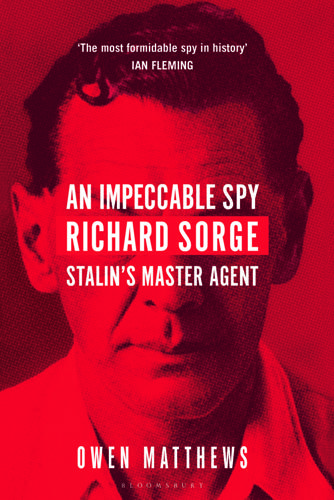
An Impeccable Spy: Richard Sorge, Stalin’s Master Agent
by
Owen Matthews
Published 21 Mar 2019
The story of Sorge’s turbulent career as an agent for the Communist International, his apparent disgrace as that organisation was ruthlessly purged of all but the most slavishly loyal non-Russians under Stalin, of Sorge’s recruitment by Soviet military intelligence and the subsequent cycles of distrust and paranoia that led to Sorge’s gold-standard intelligence being dismissed as enemy disinformation, is told here for the first time. So is the inside story of Sorge’s desperate attempts to warn Stalin of the coming German invasion of the Soviet Union in July 1941 – a warning that was systematically suppressed by the top brass of the Red Army, terrified of contradicting Stalin’s fixed idea that Hitler would never attack him.
…
Worse, in the wake of the signing of the Nazi–Soviet non-aggression pact, Stalin and the Defence Commissariat became even more critical of Soviet military intelligence than ever. Lieutenant Colonel Maria Poliakova, one of the few of Proskurov’s subordinates who had managed to survive the purges, recalled the director returning from a visit to the General Staff in a fury of frustration. ‘What do they take us for – fools? How could this be disinformation?’ Proskurov exclaimed. In May 1940, at a meeting with the deputy Commissar for Defence, Proskurov declared: ‘No matter how painful it is, I must say that no other army has such disorderliness and a low level of discipline as ours.’16 The operational consequence of this atmosphere of distrust from the top was Centre’s constant, nagging insistence on seeing primary documents rather than word-of-mouth information, however highly placed the source.
…
In the end, Schellenberg ‘agreed that I should protect Sorge from attacks by the [Nazi] Party, but only on condition that he included in his reports intelligence material on the Soviet Union, China and Japan … When I reported this to Heydrich he agreed, with the proviso that we immediately establish surveillance on Sorge. Heydrich was skeptical about the whole thing and warned that Sorge may be furnishing us with disinformation.’3 Schellenberg claimed, in effect, that he had agreed with no less a figure than the Reich’s security chief that Sorge be treated as a potential Soviet agent nearly a year before his eventual arrest by the Japanese. But this does not fit the facts. If Schellenberg was truly convinced that Sorge was a Soviet spy, leaving him with an office in the embassy, security clearance and the confidence of Ott, Thomas and the DNB would have been a grave security risk.

The Singularity Is Nearer: When We Merge with AI
by
Ray Kurzweil
Published 25 Jun 2024
BACK TO NOTE REFERENCE 197 “People Living in Democracies and Autocracies, World,” Our World in Data; “The V-Dem Dataset (v13),” V-Dem; Herre, “Scripts and Datasets on Democracy”; Lührmann et al., “Regimes of the World (RoW): Opening New Avenues.” BACK TO NOTE REFERENCE 198 Bradley Honigberg, “The Existential Threat of AI-Enhanced Disinformation Operations,” Just Security, July 8, 2022, https://www.justsecurity.org/82246/the-existential-threat-of-ai-enhanced-disinformation-operations; Tiffany Hsu and Stuart A. Thompson, “Disinformation Researchers Raise Alarms About A.I. Chatbots,” New York Times, February 13, 2023, https://www.nytimes.com/2023/02/08/technology/ai-chatbots-disinformation.html. BACK TO NOTE REFERENCE 199 This chart includes data from two useful datasets. Our World in Data has estimates covering a very long period, from 1800 to 2022.
…
A crucial challenge over the coming decades will be helping countries that fall into the gray area between autocracy and democracy make the transition to fully democratic governance. Part of this will depend on careful use of AI to promote openness and transparency while minimizing its potential to be abused for authoritarian surveillance or to spread disinformation.[199] History gives us reason for profound optimism, though. As technologies for sharing information have evolved from the telegraph to social media, the idea of democracy and individual rights has gone from barely acknowledged to a worldwide aspiration that’s already a reality for nearly half the people on earth.
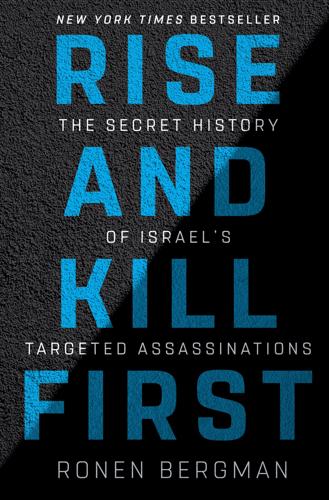
Rise and Kill First: The Secret History of Israel's Targeted Assassinations
by
Ronen Bergman
Published 30 Jan 2018
When they reached Marseille, a heavily sedated Krug was placed on an El Al plane flying Jewish North African immigrants to Israel. The Mossad handlers told the French authorities he was a sick immigrant. At the same time, the Mossad launched a wide-ranging disinformation operation, with a man resembling Krug and carrying documents in his name traveling around South America, leaving a paper trail that indicated Krug had simply grabbed the money and run away from Egypt and his collaborators. Simultaneously, the Mossad leaked disinformation to the media saying that Krug had quarreled with General Khalil and his people and had apparently been abducted and murdered by them. In Israel, Krug was imprisoned in a secret Mossad installation and subjected to harsh interrogation.
…
“But Begin heard about the plan and he thought it was too diabolical and ruled it out,” said a senior member of the Salt Fish team. Interview with Dayan, April 18, 2013, and “Yoav,” December 2016. Once they even heard Arafat himself on the phone Interview with Dayan, June 4, 2012. He scattered disinformation around among his aides A Mossad document from July 1, 1982, shown to the author by “Matias,” said, “Salt Fish is taking extreme safety precautions and according to Junction sources, he gives his own people disinformation out of fear that some of them may be serving us.” “Arafat kept on breaking his routine” Interview with Moshe Yaalon, August 16, 2011. “He changes places all the time….From command post to command post, with all their communications systems, and their international communications…” Sharon report to cabinet, July 18, 1982.
…
The Palestinian leader understood that it was not a coincidence that bombs were repeatedly falling at places he had just entered or just left. He told his people that Sharon, in Beirut, was acting like a “wounded wolf” and wanted to kill him in revenge for the way the war was dragging on. He began taking more precautionary measures, arranging several meetings at the same time in different places. He scattered disinformation around among his aides, suspicious that one of them might be a Mossad agent, and he moved around all the time. “Arafat kept on breaking his routine,” said Moshe Yaalon, a Salt Fish officer. “There was no regular pattern in his behavior, nothing that could enable the preparation of a raid by land against a bunker or a house.”
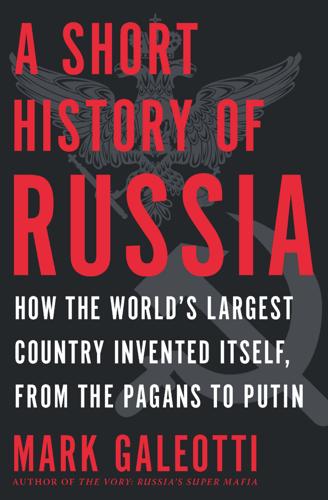
A Short History of Russia
by
Mark Galeotti
Published 1 May 2020
He began an era of conquest such as the world had never seen, and his successors would come to regard themselves as having a divine mandate to extend their rule across the world in the name of Blue Sky Tengri, the ruling deity of their shamanic faith. Settled peoples were conquered; other nomadic powers incorporated or destroyed. China, Central Asia, much of the Middle East, all would fall to this formidable steppe army, its savagery, its speed and also its capacity to wield diplomacy, disinformation and despair as effectively as bow and sword. By the early thirteenth century, the Polovtsians, who had displaced the Pechenegs, found themselves in the same invidious position, facing a newer, greater, sharper-toothed nomad threat from the east. Polovtsian Köten Khan fled to the court of Prince Mstislav the Bold of Galich, his son-in-law, with a stark warning: “Terrible strangers have taken our country, and tomorrow they will take yours if you do not come and help us.”
…
Support for pro-democracy and anticorruption activists in Russia, criticism of the deaths of outspoken journalists and politicians, and a series of risings against Moscow-friendly regimes in the Arab world and the post-Soviet states—especially the “Euromaidan” protests that brought down a corrupt regime in Ukraine in 2013–4—were all thrown together as evidence of a Western strategy to this effect. While the West became worried about Russian “hybrid war”—the use of subversion and disinformation to spread division and undermine political institutions—Moscow was equally concerned about facing a similar threat of its own. © Helen Stirling This nationalist turn made it easier for Putin to articulate a vision for his Russia, and one that he presumably hoped would inspire a people who, since his return to the presidency in 2012, had become increasingly disenchanted, tiring of fake politics, entrenched corruption and a stagnant economy that could no longer buy their tolerance.

Losing Earth: A Recent History
by
Nathaniel Rich
Published 4 Aug 2018
When it comes to the United States, which has not deigned to make any binding commitments whatsoever, the dominant narrative for the last quarter century has concerned the unrestrained efforts of the fossil fuel industry, compounded by the ingratiating abetment of the Republican Party, to suppress scientific fact, confuse the public, and bribe politicians. The mustache-twirling depravity of these campaigns has left the impression that the industry always operated thus. But while the Exxon scientists and American Petroleum Institute clerics of the seventies and eighties were hardly good Samaritans, they did not initiate multimillion-dollar disinformation campaigns, pay scientists to prevaricate, or try to brainwash elementary school children, as their successors would. The germ of this onslaught can be traced to Jim Hansen’s testimony before Congress on June 23, 1988. After Exxon’s Duane LeVine consulted on strategy with a public relations officer, he gave a presentation on the greenhouse effect to Exxon’s board of directors in February 1989, emphasizing “the uncertainty in scientific conclusions.”
…
Investments in persuasion peddling rose to the level of a line item during the run-up to the 1992 Rio Earth Summit, where Bush refused for the final time to commit to specific emissions reductions. The following year, after President Bill Clinton proposed an energy tax in the hope of meeting the goals of the Rio treaty, API’s number two, William O’Keefe, assumed control of the GCC and directed a $1.8 million API investment in a GCC disinformation campaign. Senate Democrats from oil and coal states joined Republicans to defeat Clinton’s tax proposal, which was widely blamed for the Democrats’ rout in the midterm congressional elections in 1994—the first time the Republicans had won control of both houses in forty years. Through the rest of the decade, the GCC spent at least $1 million a year to crush public support for climate policy.
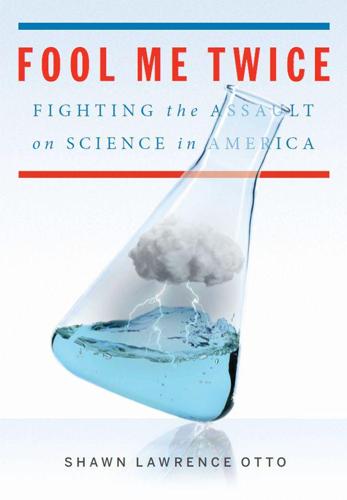
Fool Me Twice: Fighting the Assault on Science in America
by
Shawn Lawrence Otto
Published 10 Oct 2011
Physicists in Congress Calculate Their Influence. New York Times, June 10, 2008. DeCarlo, S., et al. America’s Largest Private Companies. Forbes Magazine, November 3, 2010. www.forbes.com/lists/2010/21/private-companies-10_land.html. DeMelle, B. Disinformation Database: David Legates. DeSmogBlog, n.d. www.desmogblog.com/node/2830. [blog] DeMelle, B. Disinformation Database: An Extensive Database of Individuals Involved in the Global Warming Denial Industry. DeSmogBlog, n.d. www.desmogblog.com/global-warming-denier-database. Dennis, J. A., et al. Epidemiological Studies of Exposures to Electromagnetic Fields: II.
…
Environment and Climate News, May 1, 2006. www.heartland.org/policybot/results/18971/Are_Polar_Bears_Dying.html 15. Legates, D. Climate Science: Climate Change and Its Impacts. Dallas: National Center for Policy Analysis, 2006. www.ncpa.org/pub/st285?pg=7. 16. Burnett. Are Polar Bears Dying? 17. DeMelle, B. Disinformation Database: David Legates. DeSmogBlog, n.d. www.desmogblog.com/node/2830. [blog] 18. Taylor, M. Last Stand of Our Wild Polar Bears. Toronto Star, May 1, 2006. http://ff.org/centers/csspp/library/co2weekly/20060505/20060505_17.html. [opinion] 19. Burnett, H. S. ESA Listing Not Needed for Polar Bears.
…
Harvard Crimson, September 12, 2003. www.thecrimson.com/article/2003/9/12/warming-study-draws-fire-a-study. 29. Editorial Staff. Guide for Authors: Conflict of Interest. Elsevier.com, n.d. www.elsevier.com/wps/find/journaldescription.cws_home/701873/authorinstructions#7000. 30. DeMelle, B. Disinformation Database: An Extensive Database of Individuals Involved in the Global Warming Denial Industry. DeSmogBlog, n.d. www.desmogblog.com/global-warming-denier-database. 31. Wahl-Jorgensen, K., ed. The Handbook of Journalism Studies. New York: Taylor and Francis, 2009. 32. Limbaugh, R. Global Warming Hoax: Polar Bears Are Just Fine!

Failures of State: The Inside Story of Britain's Battle With Coronavirus
by
Jonathan Calvert
and
George Arbuthnott
Published 18 Mar 2021
The report warned: ‘The magnitude of these numbers suggests substantial human-to-human transmission cannot be ruled out. Heightened surveillance, prompt information-sharing and enhanced preparedness are recommended.’ At this stage, only 41 cases of illness from the virus had been reported in Wuhan and it was said to have caused just two deaths, which was an astonishing piece of disinformation by the Chinese authorities given the chaos that was taking place in the city’s hospitals at that very moment. The following Wednesday, 22 January, two days before the Cobra meeting, the government convened the first meeting of its Scientific Advisory Group for Emergencies (Sage) to discuss the virus.
…
He was busy hosting Barack Obama on only the second ever UK state visit by a US president.6 On each of those three occasions, the prime minister in question had clear and justifiable reasons for not attending. When we revealed in The Sunday Times in April that Johnson had missed all of the first five Cobra meetings, the government spin machine lurched into action. In an extraordinary 14-page error-strewn ‘blog’, the government’s new Covid ‘disinformation’ unit claimed that ‘it is entirely normal and proper for [Cobra] to be chaired by the relevant Secretary of State’, who in this case was Hancock. It argued that it was acceptable for Johnson to miss the first two Cobra meetings in January because, at that time, the WHO ‘had not declared Covid-19 a “Public Health Emergency of International Concern”, and only did so on 30 January’.
…
But as we pointed out in the last chapter, experts – such as Richard Horton of The Lancet, and Professor Martin Hibberd of the London School of Hygiene & Tropical Medicine and the Sage committee member Sir Jeremy Farrar – were all saying on the day of the first Cobra meeting on 24 January that the coronavirus outbreak in China represented a serious threat to public health that may well become global. Horton argues in his book The Covid-19 Catastrophe that the ignorance excuse is government disinformation and does not hold water. He recounts how his own words were twisted in a ‘Kremlinesque way’ by the government’s blog rebuttal to our article in order to downplay his warnings. He then makes a reference to a televised address by the prime minister on 10 May. ‘Boris Johnson spoke to the nation,’ Horton writes.

The Radical Fund: How a Band of Visionaries and a Million Dollars Upended America
by
John Fabian Witt
Published 14 Oct 2025
What Time magazine would later call “Mr. Garland’s Million” functioned behind the scenes as the funding wing of the ACLU, sustaining efforts to establish a democratic conception of free speech—no small thing in a nation emerging from draconian wartime speech controls and struggling under an onslaught of war-fueled propaganda and disinformation in the press. The Fund and its circle helped finance a new generation of progressive labor unions, too. Throwing its weight behind unions that sought to transform American capitalism, the Fund supported so-called industrial unions that organized all workers in a given industry, from lowest paid to highest, including workers of all races and all trades.
…
Meanwhile, lynch mobs murdered hundreds each year, three-quarters of them Black, in unashamed public spectacles. Racial violence in the American West took the lives of Mexican immigrants and people of Chinese descent. States enacted a wave of new laws banning political radicalism, while the courts upheld the arrest and imprisonment of those who spoke out in dissent. Novel strategies of disinformation and propaganda whipped up public opinion into red scares, nativism, and a second Ku Klux Klan, calling into question the capacity of voters to know basic facts about the democracy in which they lived.12 * * * The men and women who ran the American Fund for Public Service—also known as the Garland Fund, after its donor, or as the American Fund, or simply the Fund—understood themselves to be in a distinctively modern struggle for democratic power.
…
Today, much of what the Fund’s beneficiaries accomplished is under siege. Like the world in which Charles Garland and the Fund’s directors lived a century ago, the United States is a wealthy nation in crisis, plagued by unjustifiable economic inequalities, strained by racial divisions, and beset by disinformation campaigns that openly distort the democratic process. Detractors on the left and the right alike have turned on the Fund’s legacies.16 This book is an effort to recover the astonishing world of the American Fund and to tease out the lessons its history holds for our own. The Fund’s key figures—men and women, Black and white, working-class and outrageously privileged—were among the first to take up the challenge of remaking a recognizably contemporary mass capitalist society.
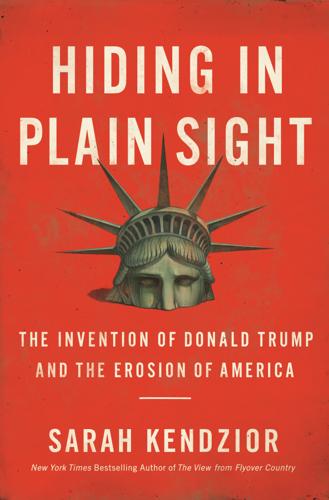
Hiding in Plain Sight: The Invention of Donald Trump and the Erosion of America
by
Sarah Kendzior
Published 6 Apr 2020
Instead of fearing the open internet, Kremlin officials embraced it, using social media to smear the opposition and to release a firehose of propaganda intended to overwhelm citizens’ faculty for critical thinking.7 The emergence of networks like Facebook, Twitter, and Russia’s VKontakte in the 2000s and 2010s made disinformation easier to spread. The arrival of memes allowed eye-catching lies to be delivered via mobile phone, meaning users who lacked home computers could circumvent the internet entirely. Before I left academia for good, networked authoritarianism was my focus—not only because of its danger to citizens of authoritarian states, but because I could see the utility of the model in Western states that were experiencing a similar erosion of institutional trust.
…
* * * Trump was part of a wider movement of white supremacists and international kleptocrats seeking to dismantle Western democracy. I was one of the few American journalists to warn of this crisis in advance, and this unwanted distinction resulted in my being in great demand to speak on the issue abroad. In January, I was flown to the United Kingdom for a conference on press freedom and disinformation, where some Brits told me horror stories of Brexit while others assured me that they would figure it out, they would keep calm and carry on, this idiotic crisis surely would not undo a millennium of British sovereignty. I was not so sure. Brexit was a direct precursor of the US election, featuring not only the same largely unexpected result, but the same players behind the scenes.
…
See oligarchs; Putin, Vladimir; Russian mafia; Soviet Union Russian mafia expansion of and FBI Italian mafia compared with and Maxwell, Ghislaine and Maxwell, Robert money laundering and campaign contributions and Mueller investigation and 9/11 and Trump Tower and UK institutions See also organized crime Ryan, Paul Sapir, Alex Sapir, Tamir Sater, Felix Saudi Arabia autocratic kinship ties in and axis of autocrats and Epstein, Jeffrey and human rights violations and Khashoggi, Adnan and murder of Jamal Khashoggi and transnational criminal networks savior syndrome scandal, crime covered up with Scarborough, Joe Schiff, Adam Schlafly, Phyllis Schnurbusch, Dan Schwartz, Peter Schwartz, Tony Schweich, Tom Scott, Dred Seals, Darren September 11, 2001 events of and exploitation of fear impact on media industry political weaponization of Trump, Donald, on Sessions, Jeff Sessions, William sex trafficking Sherman, Brad Shiflett, Dave Sinquefield, Rex Snowden, Edward social media and Arab Spring authoritarian weaponization of and Brexit referendum corporate assets and disinformation Facebook #Ferguson and Ferguson uprising Gamergate Instagram #MeToo and Russia and toxic online culture and transnational criminal networks Twitter and 2016 presidential election VKontakte (Russia) and Wikileaks #YourSlipIsShowing Soviet Union and Cohn, Roy Cold War intelligence collapse of post-Soviet dictatorships and Red Scare samizdat (underground literature) and Trump, Donald See also Russia Spayd, Liz spectacle and pageantry Spitzer, Eliot Spy (magazine) St.

Win Every Argument: The Art of Debating, Persuading, and Public Speaking
by
Mehdi Hasan
Published 27 Feb 2023
As Skeptic magazine pointed out in 1996, “many scientists have publicly corrected Gish in his presence, but Gish has gone on to repeat the same errors in later debates and writings … He succeeds at this, because in the next city, with a new audience and a new scientist to debate, who’s to know that his argument got shot down, with evidence, by that other evolutionist last week?” It’s the same today with the climate change deniers or the antivaxxers, especially in online forums—no matter the number of fact checks and corrections, they continue to relentlessly push extraordinary amounts of misinformation and disinformation into the public consciousness. In fact, it is the deliberate repetition of “nonsense” that differentiates the Gish Gallop from similar tactics like “spreading.” The latter is a debating technique—said to come from a combination of the words speed and reading—in which the debater packs as many arguments as possible into their allotted speaking time by delivering them at a furious pace.
…
Whether it is justifying the illegal invasion of Ukraine or interfering in U.S. elections, the Russian government’s model of propaganda, to quote from a study by the RAND Corporation, uses “high numbers of channels and messages and a shameless willingness to disseminate partial truths or outright fictions.” But the RAND study also suggests this piece of handy advice for fighting disinformation: “Don’t expect to counter Russia’s fire hose of falsehood with the squirt gun of truth. Instead, put raincoats on those at whom the fire hose is aimed.” If your job in an argument with a Gish Galloper is to “put raincoats” on your audience, that begins by making your audience aware of what they’re being subjected to.
…
Fake News Edition (Grant) Declaration of Independence Deconstructed (podcast) Defense Intelligence Agency Democratic presidential primaries of 2020 Democratic presidential primary debates of 1984 of 2008 of 2020 Demosthenes DeSantis, Ron Descartes’ Error (Damasio) DeVos, Betsy diaphragm, speaking from Dickerson, John Dimbleby, David Dimbleby, Jonathan Diodotus Diogenes the Cynic disgust, language of disinformation. See Gish Galloper Dlugan, Andrew Document, The Don’t Be Stupid (Wax) “don’t take my word for it” Driver, Adam Dukakis, Kitty Dukakis, Michael Dukakis, Stelian Dunbar, Robin Dune (Herbert) Dyer, Wayne E! News Eblin, Scott Eckart, Dennis Economist Egypt Einstein, Albert Eisenhower, Dwight Elias, Ric Emancipation Proclamation Emerson, Jo emotion or pathos facts vs.

The People vs Tech: How the Internet Is Killing Democracy (And How We Save It)
by
Jamie Bartlett
Published 4 Apr 2018
Many used advanced tracking cookies that followed users around the web, advanced programmatic ad delivery and AI content optimisation to serve up more conspiracy theories to the so-inclined.34 It is increasingly clear that Russian president Vladimir Putin was engaged in this information war too. For some years, the Russian Government has known that covert media manipulation online can subtly shift public opinion in ways that promote its interests – supporting far-left and far-right parties across Europe and firing up campaigns of internet disinformation throughout the Ukrainian crisis. During the US election the Russian Government took these Cold War techniques up several notches. Thousands of paid content producers pushed out pro-Trump or anti-Hillary content, flooding feeds and overwhelming serious hashtags with nonsense, making them unusable.
…
According to former CIA Director Mike Pompeo, this now constitutes a ‘serious threat’ to democracy – not because it might decisively swing an election, but rather because it chips away at social cohesion and public confidence in the democratic system itself. The Kremlin doesn’t care what the US law is on gun control – but if the American people are arguing, the Russian government believes it is winning. The scale of the Russian disinformation effort was staggering, but hardly surprising. Democracies with free media, fair elections and an open internet are more subject to international meddling than closed autocracies (and if some of the projections I set out in the next chapter about future unemployment are correct, ‘paid content producer’ whose job it is to influence online opinion might one day be a very desirable position).

The Despot's Accomplice: How the West Is Aiding and Abetting the Decline of Democracy
by
Brian Klaas
Published 15 Mar 2017
But it is to say that any positive aspects of these two models are overshadowed by serious drawbacks and shortcomings. Beijing and Moscow are aware of these flaws. That’s why most of China’s and Russia’s diplomatic methods for spreading their respective models rely on some form or propaganda or disinformation campaign. â•… If you switch on your television in just about any hotel room these days, you’ll be able to watch propaganda straight out of the Kremlin on Russia Today, now re-branded just as RT to subtly obscure its funding source. The programming is specifically designed to parry Western accounts of global news, spinning each story as Putin would hope to see it covered.
…
After all, its most popular YouTube videos include a 2010 clip of Vladimir Putin singing Fats Domino’s hit song Blueberry Hill and a series of overly graphic videos of live births.35 Nonetheless, RT’s existence is sufficient to provide an alternative Russo-centric nar€ 207 THE DESPOT’S ACCOMPLICE rative as global events unfold, and that is meaningful. RT’s disinformation has worked in the past and it will work again. â•… Take for example, the story of “Lisa,” a 13-year-old German-Russian girl living in Berlin who briefly went missing from her home and claimed that she had been raped in early 2016. Ivan Blagoy, a journalist working for RT, alleged on air that the German authorities were involved in a cover-up and that Lisa had been gang raped by Syrian refugees.
…
Federal Election Commission, 185, 188 City on a Hill, 10, 35, 179, 188, 189 Cleisthenes, 28 climate change, 209 Clinton, Hillary, 5–6, 112, 178, 190 Clinton, William “Bill”, 52, 92, 102, 112, 115–16, 184, 190 Cobra Gold, 201 Cold War, 1, 20, 35–6, 37–50, 55, 66, 75, 81, 93, 149, 150, 200–1, 204, 221 Colombia, 27, 33, 171, 189 Commonwealth of Independent States Observation Mission (CISEMO), 211 Communist Party of China, 208 of Moldova, 195 of Thailand, 199 Community College of Denver, 209 Confucius Institutes, 209 Congo, 20, 36, 38, 42–4, 47, 48, 95, 121 Congress, US, 32, 33, 35, 184, 194 Connecticut Compromise, 32–3 constitutions, 31–2, 150–1, 190, 197 Contadora Island, Panama, 117 COPPPAL (Conferencia Permanente de Partidos Políticos de América Latina y el Caribe), 211 Corner House, Riga, 147–8, 160, 225 corruption, 73, 82, 99, 107, 139, 260 170–1, 197, 200, 201, 209, 210, 219 Côte d’Ivoire, 3, 19, 104–10, 111, 119 2000 presidential election, 104 2002 outbreak of civil war, 104 2010 presidential election, 104–5; outbreak of violence, 105–6, 119; Gbabgbo offered asylum in the US, 111 2011 UN/French intervention, 106, 108–10; Gbabgbo extradited to ICC, 106, 109, 119 2015 presidential election, 110 Council of Europe, 84 Council of Five Hundred, 29 counterfeit democracies, 3, 6–9, 20, 23, 33–4, 52, 70, 73, 79, 82–90, 158–9, 173, 175, 204, 210, 216–17, 220, 223 Crimea, 64, 65 crisis of democracy, 180 Critias, 29 Croatia, 75 Cuba, 45, 49–50, 176 curse of low expectations, see Madagascar Effect Daily Show, The, 53 Dark Ages, 30, 219 Dayton, Mark, 186–7 DDoS (Distributed Denial-ofService), 168 death squads, 47, 114, 117 Delian League, 29 democracy deficit, 180 democracy promotion industry, 58–60, 138 democracy wars, 67, 69–79, 220 Democratic Party, 35, 58, 84, 92, 124, 142, 182–8 INDEX Democratic Republic of the Congo, see Congo demos, 27, 28 Deng Xiaoping, 206 Denmark, 77, 220 Denver, Colorado, 209 Department for International Development (DFID), 59 Department of Defense, 115 Detention Site Green, Udon Thani, 201 Development Alternatives Inc., 138 Development Assistance Committee (DAC), 58 Devlin, Larry, 43 Diamond, Larry, 171 Dictator’s Learning Curve, The (Dobson), 210 digital communications, 49, 125, 161–75, 207, 208, 221, 223 Dirección de Inteligencia Nacional (DINA), 48 direct democracy, 28–9 disabled rights, 141, 144 disinformation, 207–8 Dobson, Will, 210 “Don’t Forget Me” (GooGoosha), 140 Dubai, 82 Duékoué, Côte d’Ivoire, 105 Dulles, Alan, 41 Durack, Western Australia, 29–30 Duvalier, Jean-Claude “Baby Doc”, 114 Ebola, 184 echo chamber effect, 165 Egypt, 6, 9–10, 13–16, 27, 88, 155, 163–4, 225 1987 US aid payments begin, 14 2001 EU Association Agreement, 155 2008 Afifi exiled to US, 163 2009 Clinton describes Mubaraks as ‘friends of my family’, 6; Obama’s Cairo speech, 9–10, 218 2011 Tahrir Square protests begin, 10, 13, 163–4; Mubarak ousted, 13, 164 2012 Morsi elected president, 14; anti-Morsi demonstrations begin, 164, 247 2013 coup d’état; el-Sisi comes to power, 14–16, 88, 164; Saudi Arabia announces aid package, 15 Eid al-Kabir, 124 Eisenhower, Dwight David, 38, 43 elections campaign finance, 185–8, 238 foreign aid/intervention, 97–110, 143 “free and fair”, 8, 14, 88–90, 102, 159, 193 gerrymandering, 180–5, 188, 251 grade inflation, 88–9, 158, 159 inclusivity, 24, 129–31, 221 observation/monitoring, 8, 65, 81, 83–4, 88–90, 102, 158–9, 173–4, 178, 211, 223 polling, 174–6 respect for, 5, 37–48 rigging of, 22–3, 34, 61, 63–4, 70–1, 83–5, 87, 112, 158–9, 166, 210–11 short-term thinking, 26, 54, 56 turnout, 180, 184 Electoral Integrity Project, 189, 238 Elizabethville, Congo, 43 “emerging democracy”, 88 Emory University, 136 261 INDEX “End of History”, 163, 214 English Civil War (1642–51), 31 Ennahda party, 126–8 Equatorial Guinea, 6, 11, 121, 173, 220 Erdoggan, Recep Tayyip, 20, 161–3, 176 Eritrea, 11, 24 Estonia, 17, 149, 151 Ethiopia, 27 Eton College, Berkshire, 202 European Commission, 150 European Parliament, 84, 180 European Partnership for Democracy (EPD), 58 European Union (EU), 2, 3, 56, 61–3, 65–7, 84, 90, 100, 143, 145, 148–56, 160, 180, 195, 214, 223, 225, 247 1999 European Parliament elections, 180 2004 Eastern Bloc countries accede to Union, 148–9 2005 intervention in Palestinian election campaign, 100 2006 asset ban on Lukashenko government, 63 2008 aid given for Ghanaian election, 143 2009 Eurozone crisis begins, 180, 190 2013 endorsement of Azerbaijani election, 84; endorsement of Malagasy election, 90 2014 Riga designated European Capital of Culture, 148, 225 2015 Riga summit; Juncker slaps Orbán, 150 2016 Belarus sanctions suspended, 65, 67, 195; Zimbabwe sanctions suspended, 247; UK € 262 holds membership referendum, 1 Eurozone crisis, 180, 190 Facebook, 125, 161–3, 165, 168, 172, 223 Falls Church, Virginia, 163 famine, 24 Fatah, 99–102 Fats Domino, 207 Ferjani, Said, 125–33, 142, 156, 221, 224 Fidesz Party, 150–2 financial crisis (2008–9), 185, 206 FixMyStreet, 171 Florida, United States, 117 Forces Nouvelles, 106 Ford, Gerald, 45 Foreign Affairs, 53 foreign aid, 14–15, 47, 49, 52, 57, 89, 90, 92, 93, 95, 100–1 Fourteen Points (1918), 35 France, 2, 33, 44, 55–6, 58, 72, 89, 106, 108–10, 115, 129, 214, 225 “free and fair”, 8, 14, 88–90, 102, 159, 193 free speech, 94, 103, 161–3, 165, 188 free trade zones, 152–60 Freedom House, 139, 140, 189 Friedrich Ebert Foundation, 189 Front Populaire Ivorien, 105 FSB (Federal’naya sluzhba bezopasnosti), 61 Fukuyama, Francis, 74, 163, 214 fungibilty, 95 Gaddafi, Muammar, 24, 76–9, 102, 113, 129 Gambia, The, 121 Gandhi, Jennifer, 136 INDEX Gaza, Palestine, 100–1, 240–1 Gbabgbo, Laurent, 105–10, 111, 119 General Motors, 48 Geneva Convention, 177 Geneva, Switzerland, 140 George III, King of the United Kingdom, 31 Georgia, 143 Geraldton, Western Australia, 30 Germany, 17, 23, 35, 44, 56, 58, 74–5, 103–4, 147–8, 165, 189, 201, 204, 208, 213, 223 Gerry, Elbridge, 181–2 gerrymandering, 180–5, 188, 251 Ghana, 17, 143, 144, 171 Ghani, Rula, 137 globalization, 153 Globe & Mail, 94 golden handcuffs, 111, 119–21, 154 golden parachutes, 19, 116–21 Gollum, 20, 161–3, 165, 176 Google, 164 GooGoosha (Gulnara Karimova), 140, 145 Government Organized NonGovernmental Organizations (GONGOs), 209–10, 212 grade inflation, 88, 99, 158, 159 Great Leap Forward (1958–61), 24 Greece, 20, 21, 22, 27–30, 31, 156, 230 Green Revolution (2009), 135–6, 166–8 gridlock, 184–5, 187 Guardian, 166 gun regulation, 186–7 gunboat diplomacy, 116, 118, 120 Gutiérrez, Luis, 182 Guyana, 171, 220 Guys and Dolls, 40 Hague, William, 77 Haiti, 114–21 Hamas, 99–104, 241 Harmodius, 28 Harvard University, 45 health care, 184–5 Henry IV “the Impotent”, King of Castile and Léon, 30, 231 Herodotus, 29 Higiro, Robert, 94 Hipparchus, 28 Hitler, Adolf, 23, 103–4, 165 HIV (human immunodeficiency virus), 116, 207 Hobart, Tasmania, 153 homosexuality, 12, 20 Hong Kong, 168–70, 176, 221 House of Representatives, 33, 181 human rights, 10, 11, 52, 54, 57, 64, 113, 118, 139, 209, 213 Humphrey, Hubert, 21 Hungary, 150–2, 160, 171 Hussein, Saddam, 63, 72, 73, 79, 124, 156–7 I Paid a Bribe, 170–1 Ibragimbekov, Rustam, 82 Iceland, 88 Iglesias, Julio, 140 “illiberal democracy”, 227 Illinois, United States, 182–3 Iloniaina, Alain, 222–3 imihigo program, 93 Immunization of the Revolution, 127 inclusion, 24, 129–31 India, 56, 98, 152, 156, 170–1, 172, 220 Indonesia, 27, 156, 218 Indyk, Martin, 102 insidious model effect, 46, 48 Inter-Commission Working Group 263 INDEX on International Cooperation, 211 Inter-Services Intelligence (ISI), 52, 53 International Criminal Court (ICC), 106, 109, 118, 119 International Monetary Fund (IMF), 105 International Republican Institute (IRI), 58, 142 Internet, 49, 125, 161–75, 207, 208, 221, 223 iPad, 151 iPhones, 20, 83, 135–6, 145 Iran, 26, 30, 36, 38, 47, 48, 69, 98, 117, 135–6, 145, 208, 232 1951 nationalization of AngloIranian Oil Company, 38 1953 Operation Ajax; Mossadegh ousted, 38–42, 98, 208 1979 Islamic Revolution, 42, 117, 216 2009 intervention in Lebanese election, 98; presidential election; Green Revolution protests, 135–6, 166–8 2010 VOA announces “citizen journalism” iPhone app, 135–6, 145 2015 nuclear deal, 26 Iraq, 2, 5, 20, 49, 63, 67, 72–5, 77, 78, 79, 98, 124, 128, 129, 133, 156–7, 198, 213 1979 Saddam comes to power, 72, 129 1990 invasion of Kuwait, 156 2003 US-led invasion, 63, 72–3, 77, 84, 98, 156, 201, 234; de-Ba’athification campaign, 72, 77, 124, 128 2006 formation of al-Maliki government, 73 264 2015 IS execute election officials, 74 Ireland, 90, 217 Islam, 11, 12, 16, 99, 105, 123–6, 129, 131, 177, 218 Islamic State (IS), 74, 78, 131 Islamism, 99, 123–6, 129, 131, 177 Israel, 14, 99–104 Italy, 98, 192 Jackson, Peter, 162 Jammeh,Yahya, 121 Japan, 17, 24, 35, 56, 58, 74–5, 89, 112, 154, 156, 164, 204, 206, 217, 218, 220 al-Jazeera, 76 Jeddah, Saudi Arabia, 172 Joan of Portugal, Queen consort of Castile, 231 Jobs, Steve, 151 Johnson, Boris, 202 Jordan, 18, 60, 155 Juncker, Jean-Claude, 150 Kabila, Joseph, 121 Kabul, Afghanistan, 70 Kagame, Paul, 6, 91–6 Kagan, Robert, 217–18 Kakul Military Academy, 53 Kallel, Abdallah, 124 Kant, Immanuel, 118 Karbala, Iraq, 201 Karegeya, Patrick, 94 Karimov, Islam, 139–40, 142, 154 Karimova, Gulnara, 139–40, 145 Karnataka, India, 170 Karoui, Nébil, 131 Karzai, Hamid, 70 Katanga, Congo, 43–4 Keane, John, 30 INDEX Kennedy, John Fitzgerald, 11, 35–6, 55, 190, 192 Kenya, 220 KGB (Komitet Gosudarstvennoy Bezopasnosti), 3, 61–2, 147–8, 194, 225 Khan, Rana Sanaullah, 52 Khomeini, Ruhollah, 167 Kim Jong-un, 136, 181 Kingdom of Ebla, 28 Kipling, Rudyard, 69 Kissinger, Henry, 44–7, 214 knee-jerk reactions, 26, 55 Koch Brothers, 185–6 Konrad Adenauer Foundation, 58, 189 Kounalakis, Eleni, 151 kratos, 27 Kununurra, Western Australia, 30 Kuwait, 156, 229 Kyrgyzstan, 185 2011 NATO-led intervention, 76–7; death of Gaddafi, 76–7, 113 2013 Political Isolation Law, 77, 128 LINE, 164–5 Literary Digest, 174 lobbying, 186–7 local-level democracy, 3, 18, 169–73 locusts, 6–7 London, England, 132–3 long-term thinking, 4, 46, 48, 51–67, 138, 141, 234 Lord of the Rings (Tolkien), 20, 161–3, 165, 176 “Luck Be a Lady Tonight”, 40 Lukashenko, Alexander, 61–7, 154, 193–5, 206, 222 Lumumba, Patrice, 42–4 Lumumbashi, Congo, 43 Lake, Anthony, 117 Landon, Alf, 174 Langouste (Ramakavélo), 87 Laos, 200 Latin Earmuffs, 182 Latvia, 147–50, 151–2, 154, 160, 225 League of Democracies, 152–60, 212 Lebanon, 98 Léon, 30–1, 231 Léopoldville, Congo, 43 Levy, Phil, 157 Libya, 2, 5, 20, 24, 49, 67, 69, 76–9, 102, 113, 128, 129, 133, 156, 213 1969 coup d’état; Gaddafi comes to power, 78, 113, 129 2008 Rice makes visit, 76 MacCann, William, 34 Madagascar, 3, 6–9, 17, 20, 59, 85–91, 96, 200, 220, 222–3, 234–5 1991 Panorama Convention, 87 1992 presidential election, 87 1993 population census, 89 2006 presidential election, 85–6 2009 coup d’état; Rajoelina comes to power, 6, 90 2012 Rajoelina announces capture of bandits’ sorcerer, 7 2013 general election, 8, 89–90, 211, 222–3 Madagascar Effect, 6–8, 17, 81, 96, 159, 204, 234–5 Madison, James, 31–2 Malaysia, 153, 218 al-Maliki, Nouri, 73–4 Mao Zedong, 23, 24 265 INDEX marketplace of ideas, 24, 219 Mauritius, 220 May, Theresa, 26 McCain, John, 77 McMahon, Michael, 83 McSpedon, Joe, 49 Megara, 156 Mejora Tu Escuela, 171 El Mercurio, 47 Merkel, Angela, 208 Mesopotamia, 28 Mexico, 27, 149, 155, 156, 171, 172, 178 MI6, 43 Miami, Florida, 117 Miloševicc, Slobodan, 98, 120 Minnesota, United States, 21, 186–7 Minsk, Belarus, 19, 61–2, 66, 192, 193 Mo Ibrahim Foundation, 119 Mobutu, Joseph-Desiré, 43–4 Mogadishu, Somalia, 116 Moghaddam, Ismail Ahmadi, 167 Mohammad Reza Pahlavi, Shah of Iran, 39–42, 117 Moldova, 195–6 Mondale, Walter, 21 Mong Kok riots (2016), 169 Mongolia, 17, 30, 189 Morjane, Kamel, 130 Morocco, 155, 171 Morsi, Mohammed, 14, 15, 164, 247 Moscow, Russia, 210 Mossadegh, Mohammed, 38–42, 43, 232 Mosul, Iraq, 72, 73 al-Moubadara, 130 Mubarak, Hosni, 6, 13, 164 Mugabe, Robert, 112–13, 157–8 Mugenzi, Rene Claudel, 94–5, 189 € 266 Muhirwa, Alice, 93 Muñiz de Urquiza, María, 90 Munyuza, Dan, 94 Musharraf, Pervez, 51–7 Myanmar, 218, 225 Nasiri, Nematollah, 40 Nation, The, 198 National Council for Peace and Order (NCPO), 197 National Democratic Institute (NDI), 58, 92, 142 National Endowment for Democracy (NED), 58, 60, 144, 247 National Rifle Association (NRA), 186–7 Native Americans, 32, 33 Nawabshah, Pakistan, 51 Nazi Germany (1933–45), 23, 44, 74–5, 103–4, 147–8, 165 Nepal, 98 Netherlands, 58, 89, 143 Netherlands Institute for Multiparty Democracy, 58 New Stanford Hospital, Palo Alto, 26 NewYork Times, 71, 93, 185–6 New Zealand, 112, 156, 209 Nicaragua, 24, 98 Nidaa Tounes, 131 Niger, 185 Nigeria, 171, 172 Nixon, Richard, 44–7 Niyazov, Saparmurat, 25 Nobel Prize, 18, 24, 131, 156, 163 non-alignment, 43 non-governmental organizations (NGOs), 58–60, 141–2, 144, 158, 209–10, 212, 238 North Atlantic Treaty Organization (NATO), 45, 55, 77 INDEX North Carolina, United States, 183 North Korea, 4, 11, 136, 138, 144, 173, 176, 181 Norway, 24, 77, 205, 219 nuclear power/weapons, 26, 192 Nunavut, Canada, 153, 230–1 Nunn, Sam, 116 Nuristan, Afghanistan, 70 Nyaklyayew, Uladzimir, 61–2, 65 Nyamwasa, Faustin Kayumba, 94 Obama, Barack, 6, 9–10, 14, 49, 54, 55, 57–8, 76, 96, 111, 183, 204, 205, 218 Obiang, Teodoro, 6, 121 Odysseus, 22, 153 oil, 4, 11, 16, 24, 84, 192, 229 olive oil, 125 Operation Ajax (1953), 38–42, 98, 208 Operation Desert Storm (1991), 156 Operation Enduring Freedom (2001–14), 70 Operation Uphold Democracy (1994–5), 116 Orbán, Viktor, 150–2 Organization for Security and Co-operation in Europe (OSCE), 64 Ortega, Daniel, 98 Orwell, George, 15, 101, 199 Oswald, Lee Harvey, 192 Ouattara, Alassane, 105–10, 119 Oxford University, 198, 202 OxfordGirl, 166 Pakistan, 18, 50–7, 70, 220, 233 Palestine, 99–104, 108, 240–1 Palestine Liberation Organization (PLO), 99 Panama, 117 Panorama Convention (1991), 87 Papua New Guinea, 188 parliaments, 31 partisan engagement, 99–104 Peloponnesian War (431–404 BC), 156 People’s Alliance for Democracy (PAD), 197, 202 Pericles, 29 Persia, 28 Peru, 153 Philadelphia, Pennsylvania, 33 Philippines, 218 Pinochet, Augusto, 47–8, 225 Piromya, Kasit, 204–5 Plateau Dokui, Abidjan, 107 Plato, 29 Poland, 201 Political Isolation Law (2013), 77, 128 polling, 174–6 Pomerantsev, Peter, 210 Pongsudhirak, Thitinan, 165 Port-au-Prince, Haiti, 117 Portugal, 218, 231 Pouraghayi, Saeedah, 167 Powell, Colin, 116, 120 Préval, René, 117 Price, Melissa, 30 Princeton University, 186 prisoner’s dilemma, 200 process engagement, 99–100 propaganda-industry tax, 209 protectionism, 177 proto-democracy, 28 Public Diplomacy of the Public Chamber of Russia Elections, 211 Pul-i-Charki, Kabul, 71 Putin, Vladimir, 63, 64–5, 194–5, 204, 207, 214 267 INDEX al-Qaeda, 18, 50, 52–3, 55, 78, 177, 234 Qatar, 155, 229 Qatif, Saudi Arabia, 11, 16 Queen, 121 racism, 176, 218, 250 Rajoelina, Andry, 6 Ramadan, 126 Ramakavélo, Desiré-Philippe, 86–7 Rao, Bhaskar, 170 Rassemblement des Républicains, 105 Ratchaburi, Thailand, 199 Ravalomanana, Marc, 6 Reagan, Ronald, 35–6, 55 realpolitik, 4, 45, 48, 98, 104 refugees, 208 representative democracy, 30–3 Republican Party, 39, 58, 79, 124, 142, 181, 182–8 Rever, Judi, 94 Riahi, Taghi, 39–40 Rice, Condoleeza, 76, 102 Riga, Latvia, 147–8, 150, 160, 225 rock lobster, 87 Rojanaphruk, Pravit, 198–9, 221, 223–4 Romania, 149, 209 Rome, Ancient (753 BC–476 AD), 21, 30 Romney, Mitt, 112 Roosevelt, Franklin Delano, 39, 174 Roosevelt, Kermit, 38–40, 208 Roosevelt, Theodore “Teddy”, 39 de Rosas, Juan Manuel, 34–5 Roskam, Peter 183 rule of law, 10, 27, 73, 77, 136, 159, 209, 218 Rumsfeld, Donald, 145 Russia Today (RT), 207–9 268 Russian Federation, 24, 27, 60–1, 63–5, 82, 106, 140, 149, 190, 191–6, 204, 205–12, 214, 221, 229 1996 Commonwealth with Belarus established, 194 2002 proposal for re-integration of Belarus, 194 2005 support for Moldovan opposition on Transnistria, 195–6; Russia Today established, 207 2010 Putin sings Fats Domino’s Blueberry Hill, 207 2013 endorsement of Azerbaijani election, 211 2014 annexation of Crimea; intervention in Ukraine, 64, 65; RT reports “genocide” in Ukraine, 207; RT reports CIA behind Ebola outbreak, 207 2015 NED banned, 60; pressure on Belarus to host military base, 65, 195 2016 RT report on rape of “Lisa” in Germany, 208; Putin praised by Trump, 214 Rwanda, 6, 20, 91–6, 120, 185, 189, 215, 216 Rwandan Patriotic Front (RPF), 91 San Diego State University, 209 sanctions, 52, 62–5, 67, 103, 106, 135–6, 145, 156–8, 160, 195, 247, 253 Sandinista National Liberation Front, 98 Sandy Hook massacre (2012), 186 dos Santos, José Eduardo, 112–13 Sarkozy, Nicolas, 108 INDEX SARS (severe acute respiratory syndrome), 25–6 Saudi Arabia, 5–6, 9–12, 15–16, 19–20, 85, 98, 138, 144, 200, 216, 229 1962 slavery abolished, 11 2009 intervention in Lebanese election, 98; children sentenced to prison and lashes for stealing exam papers, 11, 16; Jeddah floods, 172 2010 Indonesian maid mutilated by employer, 11, 12; arms deal with US, 10–12 2011 Qatif protests, 16 2013 aid package to Egypt announced, 15; purchase of US naval craft announced, 16; Badawi sentenced to prison and lashes, 16 Saudi Arabia Effect, 5, 9, 16, 85, 138, 200 Schneider, René, 45 School of the Americas, 115 Seattle, Washington, 77 Secret Intelligence Service (SIS), 43 Sen, Amartya, 24 Senate, US, 32–3, 187 Senegal, 42, 121 September 11 attacks (2001), 18, 52–3, 55, 70 Serbia, 98, 120 Shanghai Cooperation Organization, 211 Sharif, Nawaz, 51–2, 233 Shinawatra, Thaksin, 196, 199, 201, 202, 205 Shinawatra,Yingluck, 198 short-term thinking, 3–4, 26, 46, 48, 51–67, 120, 138, 141, 234 Shushkevich, Stanislav, 192–3 Siberia, 147, 148 Sidick, Koné Abou Bakary, 107–9 Sierra Leone, 88, 171, 209 Singapore, 23, 24, 27, 93, 155, 215, 216, 217, 229 Siripaiboon, Thanakorn, 165 el-Sisi, Abdel Fattah, 15 Skujenieks, Knuts, 148 Skype, 62 slavery, 11, 29, 32 social media, 49–50, 125, 161–70, 173, 176, 199, 207, 208, 223 Socrates, 29 Solon, 28 Somalia, 42, 116 Sophocles, 29 Sopko, John, 137 Sousse attacks (2015), 131 South Africa, 27, 94, 157, 189 South Korea, 17, 27, 112, 152, 156, 218 Soviet Union (1922–91), 1, 22–3, 35–6, 37–50, 61, 64, 82, 121, 147–8, 150, 160, 192–4, 201, 204, 206–7 Spain, 218 Sparta, 28, 29 St John’s College, Oxford, 202 Stalin, Joseph, 23 Stanford University, 171 State Department, 11, 15, 54, 202 state power, 27 Statkevich, Mikalai, 61–2, 65, 222 Stewart, Jon, 53 Sting (Gordon Sumner), 140 Stockholm Syndrome, 199 Sudan, 206 Sukondhapatipak, Werachon 198 Sundaravej, Samak, 197 Super PACs, 185 Supreme Court, US, 185, 188 Sweden, 92, 220 269 INDEX Switzerland, 118, 140, 205 Syria, 78, 120, 131, 198, 208, 217, 224, 225 Szájer, József, 151 Tahrir Square, Cairo, 10, 13, 163–4 Taiwan, 27, 218 Taliban, 18, 52, 56, 71, 138 tame democracy promotion, 59 Taming of Democracy Assistance, The (Bush), 59 Tarakhel Mohammadi, 70–1 Tasmania, Australia, 153 Tasting and Grumbling, 197 Tea Party, 185 terrorism, 11, 16, 18, 19, 20, 26, 52–3, 55, 63, 70, 78, 97, 100, 101, 131, 156, 201, 234 Tetra Tech, 138 Thailand, 3, 19, 27, 154, 164–5, 196–206, 212, 221, 223–4, 253 1973 pro-democracy uprising, 199 1976 student protests, 199 1982 launch of Cobra Gold exercises with US, 201 2003 troops dispatched to Iraq, 201 2006 coup d’état, 196, 197 2008 judicial coup, 196, 197, 202, 253 2010 protests and crackdown, 202 2014 NCPO coup d’état, 164, 196–206, 221; junta gives out free haircuts, 154; rail deal with China, 203; junta releases LINE “values stickers”, 164–5 2015 man arrested for insulting Tongdaeng, 165 270 2016 constitutional referendum, 197, 223 Thirty Tyrants, 29 Thucydides, 28, 29 time horizon, 55 Tobruk, Libya, 77 Togo, 170, 177–8 Tolkien, John Ronald Reuel, 20, 161–3, 165, 176 Tongdaeng, 165 torture, 11, 28, 43, 48, 52, 124–7, 132, 139, 141, 222, 224 Trans-Pacific Partnership, 153 Transnistria, 196 transparency, 26, 82, 170, 174, 212, 218 Tripoli, Libya, 77 Trojan War, 22 Trump, Donald, 1, 20, 25, 79, 178, 180, 187, 188, 204, 205 Tudeh Party, 41, 232 Tunisia, 12–13, 17, 18, 19, 27, 65, 77, 123–33, 142, 143, 144, 155, 156, 209, 218, 221, 224–5 1987 coup d’état; Ben Ali comes to power, 124, 126, 129 1991 Barraket Essahel affair, 123, 126, 224 1995 EU Association Agreement, 155 2010 self-immolation of Bouazizi; protests begin, 12, 126, 224 2011 ousting of Ben Ali, 13, 124–6, 130 2014 assembly rejects bill on political exclusion, 128; law on rehabilitation and recognition of torture victims, 224; presidential election, 130 2015 Bardo Museum and Sousse attacks, 131, 156; National INDEX Dialogue Quartet awarded Nobel Peace Prize, 18, 131 Tunisia’s Call, 131 Turkey, 20, 27, 39, 149, 161–3, 165, 176 Turkmenistan, 11, 25, 26, 138, 144, 154 Twitter, 49, 162, 163, 166, 168, 176, 199, 208 U2, 92 Udon Thani, Thailand, 201 Uganda, 166, 176 Ukraine, 2, 27, 64, 65, 171, 198, 207, 213 Umbrella Movement (2014), 168, 176, 221 United Arab Emirates (UAE), 229 United Kingdom (UK), 1–3, 31, 33, 38, 43–4, 56, 58, 71–2, 92, 94–5, 126, 129, 132–3, 156, 166, 171–2, 180, 189, 202, 214 1707 Acts of Union, 31 1947 Churchill’s statement on democracy, 22, 190, 215 1951 Mossadegh nationalizes Anglo-Iranian Oil Company, 38 1987 Ferjani arrives in exile, 126 1999 European Parliament election, 180 2003 invasion of Iraq, 72–3 2009 OxfordGirl tweets on Iranian Green Revolution, 166; Blair meets with Kagame, 6, 92 2011 intervention in Libya, 77; Kagame appears on BBC radio; threat against Mugenzi, 94–5, 189 2012 launch of FixMyStreet, 171 2016 EU membership referendum, 1 United Nations (UN), 104, 105, 106, 108–10, 118, 130, 132, 140, 152 United States (US) 1787 Constitutional Convention, 31 1812 redrawing of Massachusetts senate election districts, 181–2 1869 Wyoming grants women vote, 33 1870 non-white men receive vote, 33 1913 Seventeenth Amendment enacted, 32 1917 Wilson’s “safe for democracy” speech, 35 1918 Wilson’s Fourteen Points, 35 1920 women receive vote, 33 1924 protections to ensure Native American voting rights, 33 1936 presidential election, 174 1948 CIA intervention in Italian election, 98 1953 Operation Ajax; Mossadegh ousted in Iran, 38–42, 98, 208 1960 plot to assassinate Lumumba with poisoned toothpaste, 43 1961 Foreign Assistance Act, 14–15 1962 Saudi Arabia pressured into abolishing slavery, 11; Cuban Missile Crisis, 50 1963 Kennedy’s Berlin speech, 35; assassination of Kennedy, 192 271 INDEX 1965 protections to ensure minority voting rights, 33 1973 ousting of Allende in Chile, 47 1982 launch of Cobra Gold exercises with Thailand, 201 1987 Reagan’s Berlin speech, 35; aid payments to Egypt begin, 14 1988 Reagan’s “city on a hill” speech, 10, 35, 179, 188, 189 1990 intervention in Nicaraguan election, 98 1991 launch of Operation Desert Storm in Iraq, 156 1992 presidential and House of Representatives elections, 183–4 1993 Clinton assumes office, 115; Battle of Mogadishu, 116 1994 launch of Operation Uphold Democracy in Haiti, 116; Cessna crash at White House, 116; Cédras given “golden parachute”, 116–17 1997 USAID Cambodia claims to have “exceeded expectations”, 59 1999 Pakistan urged to return to democracy, 52, 53 2001 September 11 attacks, 18, 52–3, 55, 70; cooperation with Pakistan begins, 52–3, 55; invasion of Afghanistan, 70, 71, 84, 98 2002 Bush announces new approach for Israel/Palestine conflict, 99 2003 invasion of Iraq, 63, 72–3, 77, 84, 98, 156, 201, 234 272 2004 Belarus Democracy Act, 63, 194 2005 Senate vote on armorpiercing bullet ban, 187; intervention in Palestinian election campaign, 99–104 2006 Musharraf appears on The Daily Show, 53 2008 Afifi arrives in exile, 163, 247; Rice’s visit to Libya, 76 2009 Obama assumes office, 55, 57; Clinton describes Mubaraks as “friends of my family”, 6; Obama’s Cairo speech, 9–10, 218; military helicopter drops ballot boxes in Afghanistan, 70; Kagame receives Clinton Global Citizen award, 92 2010 VOA announces “citizen journalism” app for Iran, 135, 145; Citizens United v.
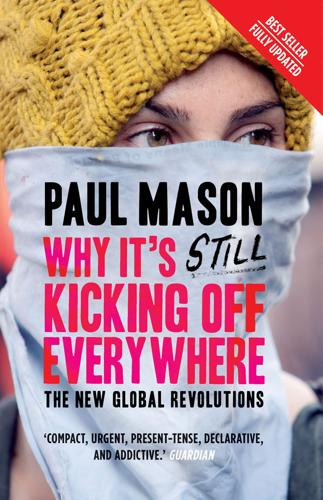
Why It's Still Kicking Off Everywhere: The New Global Revolutions
by
Paul Mason
Published 30 Sep 2013
Once information networks become ‘social’, the implications are massive: truth can now travel faster than lies, and all propaganda becomes instantly flammable. Sure, you can try and insert spin or propaganda, but the instantly networked consciousness of millions of people will set it right: they act like white blood cells against infection so that ultimately the truth, or something close to it, persists much longer than disinformation. In fact, this quality of Twitter means, according to the South Korean authors of the first data-based study of it, that it is not really a ‘social network’ but more like a news service. Services like Flickr, MSN and Yahoo involve a high level of ‘reciprocity’, since about 70 per cent of relationships are two-way.
…
The general intellect has expanded Economists and business gurus have for two decades been grappling with the concept of ‘information capitalism’: what it means if the most valuable commodities in the market are ideas, rather than physical objects. One fact is clear: people know more than they used to. That’s to say, they have greater and more instant access to knowledge, and reliable ways of counteracting disinformation. Though academia has become obsessed with firewalling and commercializing the products of research, the info-revolution has massively expanded the primary sources of knowledge. Since 1665, when the first two scientific journals were started, researchers estimate that about 50 million scholarly papers have been published.
…
P. 127 cellphones 75–76, 133–34 Central Security (Egypt) 9, 11, 17 Challenge of Slums, The (UN) 198–99 Charles, Prince 51–52 Chávez, Hugo 33 China 38, 78, 108, 112, 121, 125; consumption 109; foreign currency reserves 107; monetary policy 123 Chomsky, N. 28–29 Chris (student demonstrator) 48 Cinco, Mena 196–98, 206, 206–9 Citigroup 67 civil disobedience 56 class struggles 131 Clegg, Nick 44 Climate Camp movement 1, 55 Clinton, Hillary 26 collaborative production 139–41 Coming Insurrection, The 189–91 commodity price inflation 120–22, 195 communes 189, 190 Communiqué from an Absent Future 38–39 Communist Manifesto, The (Marx and Engels) 174, 188–89 communists 80 computer gamers 136 Conservative/Liberal Democrat coalition 44 consumption, and self-esteem 80–81 control 148 co-operatives 84 corruption, threat of 177–78, 205 creative destruction 106 credit crisis 106, 109 credit default swaps 99, 107 Critical Legal Thinking website 54 cross-border links 69–70 Cruz, Gloria 204 cultural stereotypes 27 culture: mass 29–30; popular 65, 176; transnational 69; working-class 72; youth 70 culture wars 178–84 currency manipulation 121–22 currency war 122–24 cyber-repression 78 Czechoslovakia 173 Darkness at Noon (Koestler) 128–29 Davies, Nick 148 Davos 17, 111 Dawkins, Richard 75, 150 Day X, 24 November 2010, London 41–42, 46–48 Debord, Guy 42, 46–17, 51 debt, toxic 110–11 default theory 111 deflationary slump 123 Deleuze, Gilles 46, 85 Delius, Frederick 127, 132, 152, 176 democratic counter-revolution 177, 188 demographics of revolt 66, 66–73; Athens, December 2008 uprising 73; students 66–71; the urban poor 70–72 Deptford 57 Detrick, Terry 154, 155–56, 156 devaluation 91, 122–23 @digitalmaverick 1–2 discontent, three tribes 68–69 disillusionment 68–69 disinformation, counteracting 146 disposable income 67 Dodd–Frank Act (USA) 167 @dougald 1 Dubstep Rebellion 48–52; blog 52; the Book Bloc 50–51; casualties 51; Fleet Street photographers 51; graffiti 51; marchers 49; police–student confrontation 50–51 durable authoritarianism 27, 30, 191 Durkheim, Emile 103–4 Dworkin, Ronald 46 eBay 74 e-commerce 81 economic crisis 3; revolutions, 1848 173 economic stagnation 191–92 economic theory 111 Economist, the 25 egoism 132 Egypt: bread prices 11; democratic counter-revolution 177; economic growth 119; economic indicators 119–20; elections, November 2011 177; Gini Index 119; inflation 120–21; opposition movement 10; organized workforce 72; police corruption 11; privatizations 17–18; unemployment 119–120; urban poor 71; working class 19–20 Egyptian revolution, the: the Army and 178; balance sheet 5; bread prices 11; casualties 17; chants 191, 211; counter-revolution 18; Day of Rage, 28 May 15–17; and Facebook 6, 10, 11, 12, 14; freedom 5; immolations 11, 71; Internet switched off 14; medical professions 20–22; military coup 17–19; numbers involved 13; outbreak, 25 January 10–14, 83; police violence 15; questions facing 23–24; Twitter blocked 14; Twitter feeds 13, 14; ultras 16–17; working class 20; on YouTube 11, 14, 15–16; zabbaleen riots 6–10 email 10 emancipated life 143–44 Engels, Friedrich 174, 188–89, 190 @eponymousthing 184 equity withdrawal 114 Estero de San Miguel, Manila 196–99, 205–6, 206–9 Eternal Sunshine of the Spotless Mind, The (film) 29 Eurobonds 113 Eurocrisis, the 111–13 European Central Bank 92, 98, 104, 112 European Financial Stability Facility 92, 104 European Financial Stabilization Facility 113 European monetary union 112, 113 European Union: response to Greek debt crisis 91–92, 96, 98–99, 104; sovereign debt crisis 104 Europe, revolutions, 1848 172 Eurozone 104; debt crisis 91–92, 99, 111–13 Execution of Maximilian (Manet) 53 exploitation 85 Facebook 74; Arab world growth of 135; and the Egyptian revolution 6, 10, 11, 12, 14; establishing connections with 75; ‘We are all Khaled Said’ page 11; and the Iranian revolution 34; and London trade-union demonstration, March 2011 57–58; Middle East usage 135; reciprocity 77; user numbers 135 Farewell to the Working Class (Gorz) 79–80 fatalism 30, 31 feedback loops 187 Feldstein–Horioka paradox 107 Feldstein, Martin 107 Fennimore and Gerda (Delius) 127, 132 First World War 128 Fisher, Mark 30 Flaubert, Gustave 171, 192 Flickr 10, 75 Food Price Index 121 Fordist era 28 Foucault, Michel 46, 84–85 fragmentation 80–81, 82 fragmented power 17 ‘Fragment on Machines’ (Marx) 143–44 France 173; Languedoc, 1848 174, 187; socialism 188; see also Paris freedom 27, 124; of expression 127; individual 127–30; Marx on 141–42; suppression of 131–33 Freeman, Richard 108 free-market economics 92, 188 Friedman, Milton 111 Fukuyama, Francis 30 G20 Summit, 2009 48, 122 Gaddafi, Muammar 25, 31 Gapan City, Philippines 193–96 Gates, Bill 23, 110 gay rights 132 Gaza 37; Israeli invasion of 33 Gaza City 31 Gaza Flotilla, May 2010 55 general intellect, the 144, 145–47 General Motors 39 Germany 113, 191; revolution of 1848 172; wages 108, 112 @Ghonim 13 Giddens, Anthony 31 Gide, André 127 Giffords, Gabrielle 182 Gini Index 119 Gladwell, Malcolm 81–82, 83 global capital flows 107–8 global financial crisis 31, 39, 66–67, 85, 110–11, 115, 191 globalization 69,72, 105, 108, 109, 122, 124, 149, 191 Golkar, Saeid 78 Googlebombs 78 Gorz, André 79–80, 143 graduate with no future, the 66–73, 96–97; disposable income 67; as international sub-class 69; life-arc 67; numbers 70; revolutionary role 72–73; and the urban poor 70–71 Grapes of Wrath, The (Steinbeck) 153, 155, 159, 163, 164 Great Britain: anti-road movement 56; benefit system 113–14; changing forms of protest 54–57; collapse of Labour 113–15; devaluation 123; Education Maintenance Allowance 47; end of winter of discontent 61–62; equity withdrawal 114; European elections, 2009 115; general election, 2010 43; the graduate with no future 96–97; Millbank riot 42–44; non-UK born workers 115; police failures 61; public spending cuts 54–55; radical tactics 54–57; spontaneous horizontalists 44–46; Strategic Security and Defence Review 124; student population 70; UK Uncut actions 54–55; university fees 44, 47, 50, 54; youth 41–42, 44, 53–54; youth unemployment 66 Great Depression, lessons of 123–25 Great Doubling 108 Great Unrest, 1914 175–76 Greece 37, 188; anomic breakdown 103–4; austerity programme 92–93, 102; bailouts 92, 96, 98, 113; cabinet reshuffle 96, 97–98; debt crisis 90, 91–92, 98–99, 112; GDP 91; general election, 2009 91; general strike 99; the left 100; media ownership 87; Medium Term Fiscal Strategy 91; model of capitalism 102; MP resignations 89; Papandreou government falls 96; political legitimacy lost 104; the salariat 101; tax evasion 97; tax revenues 92; tax system 91; see also Athens Greek Communist Party (KKE) 88, 90 Grigoropoulos, Alexandras 32 grime (music) 52 Grossman, Vasily 129 @GSquare86 69 Guindi, Ezzat 9 hackers 35 el-Hamalawy, Hossam, @3arabawy 10, 22, 71 Hardy, Simon 69 Hayek, Friedrich 111, 209 Henderson, Maurice 161–62 Hennawy, Abd El Rahman, @Hennawy89 12–13 Here Comes Everybody (Shirky) 138 Herman, Edward S. 28–29 hidemyass.com 14 hierarchy: erosion of 80–81; informal 83; predictability of 77 higher education market 67 Hill, Joe 176 historical materialism 131 Hogge, Becky 140 homelessness 159–63 Hoon, Geoff 114 Horioka, Charles 107 horizontalism 45, 55, 56, 62, 100 Huffington Post blog 184 human rights 143 Hungary 172 Ian’s Pizza, Madison, Wisconsin 184 Ibrahim, Gigi, @GSquare86 69 ideology 29, 149 immolations 11, 32, 71 impotence, zeitgeist of 29–30 impoverishment 209 Inception (film) 29 India 120–21 Indiana 116–17, 125 indignados, the 88, 100–1, 104 individual: freedom of 127–30; power of the 65, 79; rise of the 127–30 Indorama group 22 industrialization 192 Indymedia 74 inequality 209 inflation 109, 120–21 info-capitalism 148, 211 info-hierarchies 147–52 info-revolution, the 146, 149–50 informal hierarchies 83 information capitalism 145 information management 147 information networks 77 information tools 75 Inkster, Nigel 65 institutional loyalty 68 interest rates 67 International Labour Organization 19–20, 120 International Monetary Fund 92 Internet consciousness 136–38 Internet, the: access in slums 207; Arab world growth 135; and behaviour changes 131; and the Iranian revolution 35; out of reach for some 152; power of 29; shutdowns 14, 78; and the spread of ideas 150–51 investment, and savings 107 Invisible Committee, the 189–91 Iran 25; causes of failure of revolution 36–37; election, 2009 33–34; and the Internet 35; and the Middle East balance of power 178; rooftop poems 36; Twitter Revolution 33–37, 78, 178; on YouTube 34, 35 Iraq 25, 55 Ireland 92, 111, 112, 188 Islam 30, 37 Israel 26, 33, 179–80 Italy 104 Jakarta 33 James, C.

Stasiland: Stories From Behind the Berlin Wall
by
Anna Funder
Published 19 Sep 2011
He is fifty-seven years old, and the only Stasi man I have ever met who outed himself. A lieutenant colonel, he worked in one of the most secret divisions of the overseas spy service, the Hauptverwaltung Aufklärung (HVA). Herr Bohnsack was in Division X, responsible, as he put it on the phone to me, for ‘disinformation and psychological warfare against the west’. The HVA was the overseas espionage service of the Stasi. Its director, Markus Wolf, the son of a Jewish doctor and playwright, is intelligent and urbane, and was the model, apparently, for John le Carré’s spymaster Karla. Wolf’s HVA was subject to its minister, Mielke.
…
‘Because we were responsible for the west,’ Herr Bohnsack explained to me, ‘we could travel and we were quite different. Our diplomats could speak languages and were cultivated. We all scorned Mielke; we had our Wolf, the tall slim elegant intellectual.’ Herr Bohnsack trained as a journalist and worked for twenty-six years in disinformation. Much of Division X’s work was directed against West Germany. It collected sensitive or secret information from agents in the west and leaked it to cause harm; it manufactured documents and spliced together recordings of conversations that never took place in order to damage persons in the public sphere; and it spread rumours about people in the west, including the devastating rumour that someone worked for them.
…
p. 227 None of the torturers at Hohenschönhausen has been brought to justice. See Ritchie, p. 877. pp. 237 and 242 Articles on Herr Bohnsack include Der Spiegel 29/1991 pp. 32–34 (in which Bohnsack confirms that West German politicians’ votes were bought by the Stasi), and Der Spiegel 30/1991, pp. 57–58. On disinformation see also Der Spiegel 49/1991, pp. 127–30. Despite the Stasi vote-buying, Brandt’s term as chancellor was short-lived. Two years later Brandt fell when it was revealed that one of his closest advisers, Günter Guillaume, was one of Wolf’s agents. Acknowledgments My first debt of thanks is to the people who told me about their lives, most of all Miriam Weber, whose story was the impetus for finding the others.

Why We're Polarized
by
Ezra Klein
Published 28 Jan 2020
Among Clinton voters, the most popular choice was CNN, with 18 percent naming it as their main news source, followed by MSNBC, which was the top choice of 9 percent. Among Trump voters, 40 percent named Fox News.10 The Pew findings mirror what other researchers have discovered. In “Partisanship, Propaganda, and Disinformation: Online Media and the 2016 U.S. Presidential Election,” a study of media dynamics in the 2016 election, six Harvard researchers concluded: The leading media on the right and left are rooted in different traditions and journalistic practices. On the conservative side, more attention was paid to pro-Trump, highly partisan media outlets.
…
Disentangling Party and Ideology in America,” American Political Science Review 113, no. 1 (Feb. 2019): 38–54, doi.org/10.1017/S0003055418000795. 9 Justin Amash, “Justin Amash on Trump, Impeachment, and the Death of the Tea Party,” interview by Jane Coaston, Vox, July 3, 2019, vox.com/policy-and-politics/2019/7/3/18759659/justin-amash-trump-impeachment-gop-tea-party-republicans. 10 Jeffrey Gottfried, Michael Barthel, and Amy Mitchell, “Trump, Clinton Voters Divided in Their Main Source for Election News,” Pew Research Center, January 18, 2017, journalism.org/2017/01/18/trump-clinton-voters-divided-in-their-main-source-for-election-news. 11 Rob Faris et al., “Partisanship, Propaganda, and Disinformation: Online Media and the 2016 U.S. Presidential Election,” Berkman Klein Center, Harvard University, August 16, 2017, cyber.harvard.edu/publications/2017/08/mediacloud. 12 Rush Limbaugh, “Climategate Hoax: The Universe of Lies versus the Universe of Reality,” Rush Limbaugh Show, November 24, 2009, rushlimbaugh.com/daily/2009/11/24/climategate_hoax_the_universe_of_lies_versus_the_universe_of_reality/. 13 Matt Grossmann and David A.
…
Entertainment” (Prior), 143 newsworthiness, 164–70 New York Times, 2, 235, 239, 264 NFL, 70–71, 110, 122, 190 niche interests, 154 Nielsen ratings, 150–51 Nike, 70–71 9/11 truthers, 93 Nixon, Richard, 5, 192, 268 Noel, Hans, 32 nonpartisanship, xvi, 4–8, 35 in journalism, 145–46, 225–26 in presidential policies, 14 North, Anna, 15 North American Free Trade Agreement (NAFTA), 14 Notre Dame University, 245 Obama, Barack, ix, xiv, xvi, 40, 45, 78–79, 83, 84, 98, 106, 116, 129, 134, 158–59, 169, 175, 181, 234n, 242 campaign strategies of, 175 election of, 109 as emblematic of change, 103 Garland nomination by, 198–99, 203–4 media coverage of, 165–66 polarization paradox of, 65–70 Senate run of, 185 Obamacare, see Affordable Care Act Obama presidency, 14–15, 105, 113, 132, 134, 195, 228 coalition of, 136 end of, 114, 120–21, 134 as racially polarizing, 109–11 obstruction, 218 by filibuster, 221–22 Ocasio-Cortez, Alexandria, 161, 181, 185, 242 O’Connor, Reed, 99n O’Malley, Martin, 187 Omar, Ilhan, 149 On Being (Tippett), 150 online discourse, “organizing principle” of, 157 online entertainment, 142–43 open borders policy, 133–34 Open versus Closed (Johnston, Federico, and Lavine), 43, 48, 62–63 opinion journalism, 158, 161 O’Reilly, Bill, 114, 115 Ornstein, Norm, 225–28 O’Rourke, Beto, 63–64, 185 PAC contributions, 189–90 Pacific Islander Americans, 116 Panagopoulos, Costas, 173–74 parliamentary democracy, 201–2 Parties and Politics in America (Rossiter), 7 “Parties in Our Head, The” (Ahler and Sood), 148 partisan identities, xxii, 61–64, 259 partisanship, xiii, 136, 146 dilemmas of, 209 discrimination encouraged in, 77 electoral influence of, xiii–xiv in evolving social cleavage, 75–76, 78 fair competition in, 259 in health care debates, 84 historical perspective of, 218–19 independence vs., 9–10 as influence on reasoning, 81–102 intelligence short-circuited by, 90–99 in legal challenges, 98–99 as mega-identity, 69–70, 72 misperception in, 94–95 negative, see negative partisanship political identity vs., 69–70 political vacillation in, 81–86 racism vs., 76–77 strengthening of, 176–81 voter awareness of, 16 Washington’s warning against, 11 “Partisanship, Propaganda, and Disinformation” (Harvard study), 235–36 Paths Out of Dixie (Mickey), 23 Paul, Rand, 177 Pauly, Mark, 81 peer review, 179 Pelosi, Nancy, 229 Pence, Mike, 177 Peretti, Jonah, 152–53, 154 “Perils of Presidentialism, The” (Linz), 201 Perry, Rick, 177 persuadable middle electorate, 172–73 persuasion, electoral influence of, 171–95 Peters, Ellen, 90 Peterson, Jordan, 123, 132 Phillips, Nathan, 167–68 podcasting, 141 polarization: approaches for managing of, 249–68 echo chamber theory and, 158–59 feedback loop of, xix–xx, 136–37 historical perspective of, 1–17, 203, 267 in identity politics, xx–xxiii issue-based vs. identity-based, 32–33 low ebb of, 34 Obama’s paradox of, 65–70 in political journalism, 163 political necessity of, 2–4 reinforcement of opposing viewpoints in, 158–63 Republican vs.

Forward: Notes on the Future of Our Democracy
by
Andrew Yang
Published 15 Nov 2021
It is a dangerous moment for any system of government premised on a common public reality.” Social media will become all the more powerful in establishing alternate versions of reality as artificial-intelligence-enabled “deepfake” videos become more ubiquitous. If you think there is a lot of disinformation now, what’s coming will be even worse. Synthetic media—audio or video recordings that are altered or doctored by technology—is becoming more and more convincing as technology puts the editing capacities of a Hollywood studio into the hands of individual actors. In 2018, Jordan Peele and BuzzFeed released a video of Barack Obama uttering obscenities that has been viewed millions of times to illustrate deepfake technology in action.
…
Victor Riparbelli, the CEO of a start-up that is generating synthetic media for commercial use, believes that synthetic video may account for up to 90 percent of all video content by 2025. But it’s already happening. In 2020, Oxford University researchers found evidence that the governments of seventy different countries practiced online disinformation, often via social media. Imagine a world where we are truly unable to differentiate fact from fiction, where you can show video recordings of anyone saying or doing something and they may simply deny that it happened. Nina Schick, the author of Deepfakes: The Coming Infocalypse, suggests that this could be the end of representative democracy.
…
We could simply graduate most Americans to the ad-free versions of these platforms. Think about how this would transform the incentives and operations of the social media companies. No more harassing ads, no more need to track every bit of data to resell to advertisers, no more serving us up disinformation, less competition to maximize your time spent, fewer rabbit holes. They would modify their approach so that more casual users actually enjoy the service and don’t get annoyed. As long as you’re happy enough to not discontinue your subscription, they’re satisfied. And their incentives to fight commonsense measures to ameliorate abuses would go down overnight.

The Truth Machine: The Blockchain and the Future of Everything
by
Paul Vigna
and
Michael J. Casey
Published 27 Feb 2018
At the time of writing, even traditional Republicans are wondering (1) how on earth Donald Trump was ever elected president, and (2) why so many people seem to fall prey to blatant disinformation and conspiracy theories. Trump’s manifestly a liar, someone who lies even when evidence disproving the lie is readily available. But here’s the bigger problem: in a world where trust has eroded sharply, where our government doesn’t work, and where companies that once guaranteed jobs for life are now either outsourcing them or hiring robots, Trump’s lies can seem minor in comparison to the more systemic breach of trust voters are feeling. Once-trusted news organizations are now thrust into competition with dubious online purveyors of disinformation, with both being accused of peddling “fake news.”
…
Any technology that reduces friction and makes such collaborations happen should benefit everybody, in other words. Still, there’s nothing to say this will assuredly play out in a way that’s best for the world. We’ve seen how the Internet was co-opted by corporations and how that centralization has caused problems—from creating big siloes of personal data for shady hackers to steal to incentivizing disinformation campaigns that distort our democracy. So, it’s crucial that we not let the people with the greatest capacity to influence this technology shape it to suit only their narrow interests. As with the early days of the Internet, there is much work to be done to make this technology sufficiently safe, scalable, and attendant to everyone’s privacy concerns.
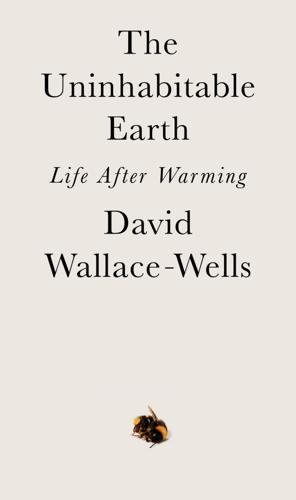
The Uninhabitable Earth: Life After Warming
by
David Wallace-Wells
Published 19 Feb 2019
The natural villains are the oil companies—and in fact a recent survey of movies depicting climate apocalypse found the plurality were actually about corporate greed. But the impulse to assign them full responsibility is complicated by the fact that transportation and industry make up less than 40 percent of global emissions. The companies’ disinformation-and-denial campaigns are probably a stronger case for villainy—a more grotesque performance of corporate evilness is hardly imaginable, and, a generation from now, oil-backed denial will likely be seen as among the most heinous conspiracies against human health and well-being as have been perpetrated in the modern world.
…
Already, in the United States, courts are awash in a wave of lawsuits aimed at extracting climate damages—a bold gambit, given that most of the impacts they enumerate have yet to arrive. The most high-profile are the torts brought against oil companies by crusading attorneys general—public health claims, more or less, put forward by the public or at least in its name, against companies known to have engaged in disinformation and political-influence campaigns. This is the first vector of climate liability: against the corporations that have profited. Another kind of charge is made in Juliana v. the United States, also known as “Kids vs. Climate,” an ingenious equal-protection lawsuit alleging that in failing to take action against global warming, the federal government effectively shifted many decades’ worth of environmental costs onto today’s young—an inspiring claim, in its way, made by a group of minors on behalf of their entire generation and those that will follow, against the governments their parents and grandparents voted into office.
…
But one way we might manage to navigate that path without crumbling collectively in despair is, perversely, to normalize climate suffering at the same pace we accelerate it, as we have so much human pain over centuries, so that we are always coming to terms with what is just ahead of us, decrying what lies beyond that, and forgetting all that we had ever said about the absolute moral unacceptability of the conditions of the world we are passing through in the present tense, and blithely. IV The Anthropic Principle What if we’re wrong? Perversely, decades of climate denial and disinformation have made global warming not merely an ecological crisis but an incredibly high-stakes wager on the legitimacy and validity of science and the scientific method itself. It is a bet that science can win only by losing. And in this test of the climate we have a sample size of just one. No one wants to see disaster coming, but those who look, do.

Hate Inc.: Why Today’s Media Makes Us Despise One Another
by
Matt Taibbi
Published 7 Oct 2019
To be clear, if Trump were being blackmailed by Russian agencies like the FSB or the GRU, if he had any kind of relationship with Russian intelligence, that would soar over the “overwhelming and bipartisan” standard, and Nancy Pelosi would be damning torpedoes for impeachment right now. There was never a real gray area here. Either Trump is a compromised foreign agent, or he isn’t. If he isn’t, news outlets once again swallowed a massive disinformation campaign, only this error is many orders of magnitude more stupid than any in the recent past, WMD included. Honest reporters like ABC’s Terry Moran understand: Mueller coming back empty-handed on collusion means a “reckoning for the media.” Of course, there won’t be such a reckoning. (There never is).
…
The piece claimed Russians were trying to divide Americans on social media after a mass shooting using Twitter hashtags like #guncontrolnow, #gunreformnow and #Parklandshooting. The Times ran this quote high up: “This is pretty typical for them, to hop on breaking news like this,” said Jonathon Morgan, chief executive of New Knowledge, a company that tracks online disinformation campaigns. “The bots focus on anything that is divisive for Americans. Almost systematically.” About a year after this story came out, Times reporters Scott Shane and Ann Blinder reported that the same outfit, New Knowledge, and in particular that same Jonathon Morgan, had participated in a cockamamie scheme to fake Russian troll activity in an Alabama Senate race.
…
“But as long as you got news from somewhere other than Rachel Maddow the case for skepticism was amply available as well.” These people all worked in organizations that either bungled Russia stories as MSNBC did, or shamelessly hyped fears to boost ad sales as MSNBC did, or both. Douthat’s New York Times outstripped Rachel’s act with its insane infographic series, Operation Infektion: Russian Disinformation from the Cold War to Kanye. (Kanye!) Maddow never described Russia, as this Times animation piece did, as a virus literally eating us alive at the cellular level. She was never so shameless as to blame Russia for your creeping sensation that the American media is not awesome at its job. From Infektion: “If you don’t know who to trust anymore, this might be the thing that’s making you feel that way,” the Times suggested, over graphics of red disease eating your cells.
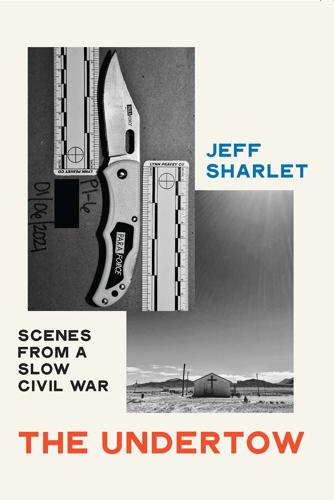
The Undertow: Scenes From a Slow Civil War
by
Jeff Sharlet
Published 21 Mar 2023
Such is the seesaw reality of January 6. “No cops were hurt,” Riley said. More than 150 were. Five would die. In a video made at the Capitol, Riley claimed that after one battle involving pepper spray and a fire extinguisher, he and his comrades hugged it out with the police. Delusion? No—Riley’s smirk bespoke self-awareness. Disinformation? Too obvious for his taste. More like lucid dreaming: a deliberately surreal assault. I thought of a Telegram message one of the Proud Boy organizers sent on January 6: “I want to see thousands of normies burn that city to ash today.” It wasn’t their own crimes that thrilled them, it was the prospect of drawing the many into their boogaloo vision, their civil-war dreams.
…
Everybody seemed to know someone who’d participated (or, like Rob, had participated), and yet nobody believed it’d really happened. If, as F. Scott Fitzgerald suggested, “the test of a first-rate intelligence is the ability to hold two opposing ideas in mind at the same time and still retain the ability to function,” such cognitive dissonance is the awful genius of our ecstatically disinformed age. “Pro-life.” “Free speech.” Athena, for instance, embraced fascism and yet bridled at the name. “They call me a Nazi,” she muttered, sitting stooped on a tall chair beside the pool table. “Just because of my German-flag tattoo.” Sometimes, she said, they told her to kill herself. She didn’t say who “they” were.
…
Nothing to do with Confederate anything, he said of the red flag, which belonged to his stepson. heritage not hate, it read, though in the dank heat only the latter word could be seen. He recited the right-wing rosary—borders, crime, stolen elections, stealing our guns, “our” guns—and added his own variation to my growing toxic bouquet of reproductive disinformation: man traps. The dark marriage plot. Abortion as “birth control,” he thought, allowed women too much leverage. He pitched his voice high: “ ‘I got pregnant because I wanted this guy to marry me’ ”—so many men I met discussed abortion by imitating voices they considered feminine—“ ‘and now he’s found out I’m pregnant and he doesn’t want to marry me.

Ten Myths About Israel
by
Ilan Pappe
Published 1 May 2017
A true and unbiased understanding of the past offers the possibility of peace. The distortion or manipulation of history, in contrast, will only sow disaster. As the example of the Israel–Palestine conflict shows, historical disinformation, even of the most recent past, can do tremendous harm. This willful misunderstanding of history can promote oppression and protect a regime of colonization and occupation. It is not surprising, therefore, that policies of disinformation and distortion continue to the present and play an important part in perpetuating the conflict, leaving very little hope for the future. Constructed fallacies about the past and the present in Israel and Palestine hinder us from understanding the origins of the conflict.

Co-Intelligence: Living and Working With AI
by
Ethan Mollick
Published 2 Apr 2024
Somewhere, as you read this, it is likely that national defense organizations in a dozen countries are spinning up their own LLMs, ones without guardrails. While most publicly available AI image and video generation tools have some safeguards in place, a sufficiently advanced system without restrictions can produce highly realistic fabricated content on demand. This could include creating nonconsensual intimate imagery, political disinformation targeting public figures, or hoaxes aimed at manipulating stock prices. An unconstrained AI assistant would allow nearly anyone to generate convincing fakes undermining privacy, security, and truth. And it is definitely going to happen. AI is a tool. Alignment is what determines whether or not it’s used for helpful or harmful—even nefarious—ends.
…
Most people didn’t ask for an AI that can do many tasks previously reserved for humans. Teachers did not want to see almost every form of homework instantly be solvable by a computer. Employers did not want highly paid tasks that are only meaningful when done by humans (performance reviews, reporting) to be done by machines instead. Government officials did not want a perfect disinformation system released without any useful countermeasures. The world got much stranger, very quickly. So it is not surprising that so many people are trying to deal with the implications of AI by assuming that nothing is going to change, by banning it permanently, or even imagining that the changes brought by AI can be easily contained.

How Not to Network a Nation: The Uneasy History of the Soviet Internet (Information Policy)
by
Benjamin Peters
Published 2 Jun 2016
Just as Kitov, Lyapunov, and Sobolev had done in their initial article by claiming that anticyberneticist Soviet philosophers had fallen victim to the machinations of a subtle pro-American disinformation program, Glushkov occasionally partook in that classic cold war move of blaming the cunning enemy for one’s internal problems. Glushkov, for example, once blamed an unnecessary political battle in the 1972 All-Union Conference on a “disinformation campaign skillfully organized by the American secret service, which was directed against the improvement of our economics.” No matter how fueled by the fumes of international conspiracy, such claims appeared to work at home.
…
See also Soviet cybernetics collapse of, 175 and command economy, 58–59 as corrupt corporation, 193–194 and cybernetic analogies, 54–55 economic and industrial growth of, 59–60, 185–186 economic corruption in, 188 five-year plans, 58, 166, 183 funding environment, 143 government of, 213–214 interministry competition, 183 knowledge base, 9 military-civilian divide, 89–90, 92–93, 159, 180, 214 military expenditures, 78–79 political economy, 60 political structure of, 213–214 population growth, 61 post-collapse era, 5 postwar science in, 29 and private interests, 201–202 public and private life in, 195–196 research institutes, 136 science under Stalin, 34 as state of exception, 3 universalization of science, 47 and U.S. disinformation, 169 Sovnarkhozy, 63 Space surveillance system, 83–84 Spencer, Herbert, 55 Sputnik I, 92 Stalin, Joseph, 4, 29, 31–34, 58–60, 62–63, 69, 75, 135, 199, 213 Starovsky, V. N., 147, 150–151, 160–162, 217 State as brain, 55, 120, 202 as nervous system, 202 Statistics, 84 Stavchikov, Aleksandr, 173–174 Stigler’s law of eponymy, 97 Stognii, A.
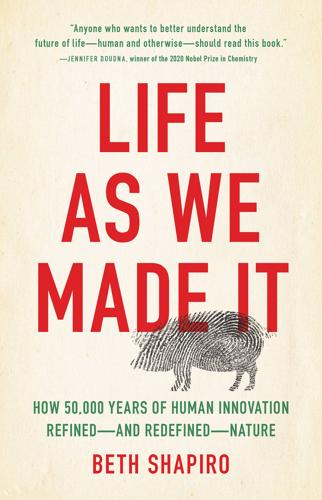
Life as We Made It: How 50,000 Years of Human Innovation Refined--And Redefined--Nature
by
Beth Shapiro
Published 15 Dec 2021
In June 1962, the New York Times Magazine published an excerpt from Rachel Carson’s new book, Silent Spring, in which Carson describes a desolate future where our indiscriminate use of pesticides has caused, among other horrors, the death of all birds and complete loss of birdsong. Her message was chilling and intended to be so. She compared pesticides explicitly to nuclear fallout, calling both invisible and inescapable threats, and accused the chemical industry of colluding with governments to spread disinformation about the dangers of pesticides. The industry fought back, branding Carson a communist, an amateur, and hysterical, and threatening her publisher with a libel suit even before the book was released. President John F. Kennedy, however, convened an official panel to investigate her claims, eventually leading to changes in how chemical pesticides are regulated in the United States.
…
Today’s motivations for using new technologies are the same as those that drove our ancestors: to improve human lives, the lives of our domesticated animals, and the environments in which we all live. But the new technologies feel different, less natural perhaps. Worse, their use is surrounded by an amorphous uneasiness that is fed and compounded by well-funded global campaigns, rife with disinformation, that intentionally cloud understanding of what these biotechnologies can and cannot do. The consequences of these campaigns cannot be understated; today’s environment is so polarized that simply discussing a project that uses these tools can incite mistrust, anger, even violence. Alison’s research is an exemplar of the difficulties of working in this new space.
…
While many gene-edited organisms are essentially identical to the products of traditional breeding, people continue to associate all genetically engineered organisms, sometimes called genetically modified organisms or GMOs, with transgenics, and often really disgusting-sounding transgenics—like Lewis’s envisaged GMO tomatoes augmented with fish DNA, which didn’t exist then and don’t exist today. This knee-jerk yuck factor has allowed confusion and disinformation about GMOs to proliferate. Food producers and marketers hoping to profit from customers’ discomfort adorn their products with reassuringly bright green labels that declare them “non-GMO,” even when there is no genetically engineered product to differentiate. On a trip to the grocery store a shopper will encounter non-GMO labels on citrus fruits, tomatoes, kidney beans, olives, and a long list of other products for which there are currently no GMO options to purchase.

Ashes to Ashes: America's Hundred-Year Cigarette War, the Public Health, and the Unabashed Triumph of Philip Morris
by
Richard Kluger
Published 1 Jan 1996
Allen ratcheted the propaganda machine up to a new level of paranoiac shrillness, declaring soon after his installation: “We must learn to distinguish the real facts of tobacco from unjustified emotional campaigns, based on the ‘health scare’—a technique that was not successful one hundred or three hundred years ago and, we are confident, will not be successful today.” If their hired mouthpieces were intemperate in operating their disinformation agencies, the industry’s own executives were even more confrontational. Howard Cullman, head of the Cullman Brothers cigar leaf business and the more polished and political brother of Joseph Cullman, Jr., whom he succeeded on the Philip Morris board upon Joe Junior’s death in 1955, denounced “recurrent attacks of do-gooders … announcing what they think should be our way of life… .”
…
The Tobacco Institute’s now monthly newsletter, Research Reports on Tobacco and Health, typically carried articles with headlines like “Human Virus Induces Animal Lung Cancers” and “Study Questions Accuracy of Death Certificates” and reprints of pro-industry articles like “Heavy Smokers with Low Mortality.” Amid this steady drumbeat of denial and disinformation, there was no cruder instance of reassurance to the industry’s customers than the one in a letter of rebuttal by the TIRC’s new president, W. T. Hoyt, in the February 1963 issue of The New Englander, in which he wrote: “Our scientific advisers tell us that the causes of lung cancer are still not known and that, as a matter of fact, recent research has tended to point up many new possible causes … .”
…
Shortly after winning the top job at AT, Walker dispatched his resident intellectual, former Forbes writer Robert Heimann, who held a doctorate in sociology from New York University and was later named executive vice president, to address the New York Society of Security Analysts. Heimann was a master dispenser of denial and disinformation. The health issue was a red herring, he asserted, “and clinical and experimental research do not bear out the anticigarette theory. … Nor has any substance been found in cigarette smoke in any quantity known to cause cancer in humans.” This argument glossed over the dire possibility that no single substance but a combination of substances lurking in the product was lethal over time and, furthermore, that nobody knew the threshold, if any, of carcinogenic activity for the substances in smoke.
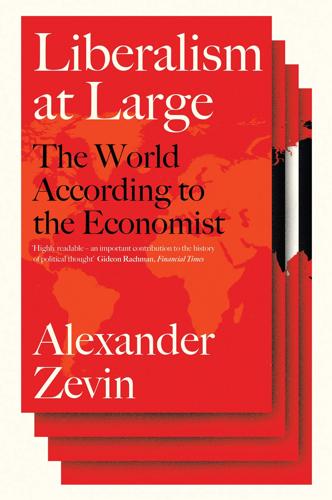
Liberalism at Large: The World According to the Economist
by
Alex Zevin
Published 12 Nov 2019
Senior vice president at the Center for European Policy Analysis, a Washington and Warsaw-based think tank with a list of donors that includes the US State Department and arms companies, Lucas runs its stratcom [i.e. propaganda] program, euphemistically described as an ‘on the ground effort to monitor, collate, analyze, rebut and expose Russian disinformation’ in ‘central and eastern Europe’.122 Given this outlook, it is hardly surprising that revelations about the reach of the US security and surveillance state since 2008 should not have perturbed the Economist. Obama’s unprecedented use of drones to assassinate suspected terrorists on his ‘kill lists’ – in Yemen, Somalia or Pakistan, where America was not at war, and without judicial oversight even when the targets were its own citizens – ‘do not undermine the rules of war’, though more could be done to ‘adapt’ a ‘potent new weapon’ to the constitution.123 When the US Army private then named Bradley Manning leaked hundreds of thousands of secret government documents related partly to the wars in Iraq and Afghanistan in 2010, exposing war crimes committed by US mercenaries, the Economist insisted that both he and the ‘digital Jacobins’ at Wikileaks to whom Manning confided this cache be punished.
…
From the onset of the Cold War, it was an energetic side-car of that secret state in the battle against Soviet communism – with editors routinely accepting material from the Information Research Department, set up covertly for propaganda purposes out of the British Foreign Office in 1948. Between 1954 and 1980, Brian Crozier and Robert Moss spread ‘disinformation’ from a still wider array of sources, including MI6 and the CIA – not just in the intelligence gossip sheet they ran, Foreign Report, but directly in the Economist. Along with Brian Beedham, they attacked those – congressmen, journalists, whistle-blowers – who dared shine a light on the national security apparatus.
…
Democracy’ in 1971, The War for the Cities in 1972 – all retailed the idea that Che Guevara’s failure to raise a peasant revolt in Bolivia in 1967 prefigured a shift in tactics and terrain for left subversives from the countryside to the city: Robert Moss, The War for the Cities, New York 1972, pp. 7, 27, 241–48. 29.Crozier, Free Agent, p. 110. 30.‘Birth of a Civil War’, 11 March 1972. 31.‘Come off ITT’, 1 April 1972; ‘Who’s for Sweet-and-Sour Turkey’, 5 August 1972; ‘Ticket to Cuba’, 2 September 1972. 32.Fred Landis, ‘Robert Moss, Arnaud de Borchgrave, Right-Wing Disinformation’, CAIB, August 1980, p. 38. 33.Robert Moss, Chile’s Marxist Experiment, New York 1974, p. 190. 34.Ibid., p. i. 35.For the way Moss used CIA-invented stories while denying CIA involvement, a representative sentence: ‘The full extent of these preparations was not accurately known until after the September coup, when the military junta claimed it had discovered – in a safe in the office of the Communist under-secretary for the interior, Daniel Vergara – detailed plans for the assassination of hundreds of opposition leaders, senior officers, conservative journalists and businessmen.’
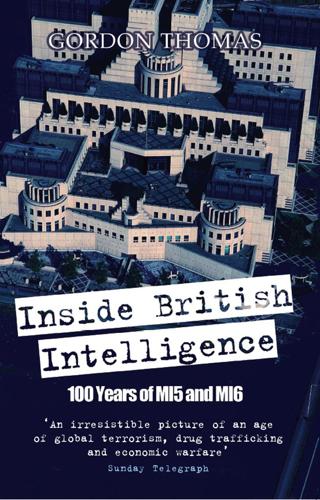
Inside British Intelligence
by
Gordon Thomas
However, the meeting concluded an attack could trigger devastating reprisals against 8,500 British troops based in Iraq and would certainly result in Iran cutting off oil supplies to the West. There would be an increase in suicide attacks on Israel, and it would also bring China and Russia into confrontation with the West. What had astonished Asgari was not that the details had been published in a respected London broadsheet, the Daily Telegraph—long ago he had learned that disinformation was an integral part of espionage. Was the report nothing more than that? His surprise was that it might be part of the ongoing process by MI6 to test him, to challenge the truth of his own judgment: that Iran was still “at least three years away from creating a nuclear bomb.” He knew that much would depend on his view being believed.
…
The harsh conditions in Latchmere House had led to several suicides in its cellblocks. Fifteen spies failed to pass Stephens’s grilling and were hanged or shot in the Tower. Fourteen agreed to become double agents, using their German radios to send false information to Berlin. Known as Operation Double Cross, it became the start of long-distance disinformation. Petrie also approved a plan for RAF planes to fly over the Channel and drop pigeons carrying false information in the hope they would fly back to dovecotes owned by Nazi sympathizers in France and spread confusion. Any bird flying back to Britain with its message faced the risk of being killed by one of the falcons of the Bird Interceptor Unit set up by MI5 on the south coast of England.
…
Cryptologists at Fort Meade, who had been placed on standby, began trying to decipher the messages, but there was no way they could break the codes. Allen and John Foster Dulles both concluded the volume of signal traffic could be the precursor of Israel asking for French support to be allowed to launch an attack on Jordan if the Iraqi army invaded the Hashemite kingdom. That possibility had been part of the Mossad disinformation campaign. By midnight, agreement had been reached in the château. Israel would launch a ground attack on Egypt across the Sinai Desert and aim to reach the Suez Canal within twenty-four hours, a promise Moshe Dayan had shortened to “if not sooner.” Britain and France would then issue an ultimatum to Nasser that he should allow their troops to enter the Canal Zone as temporary peacekeepers, after which the Israeli forces would withdraw to the Sinai side of the waterway.
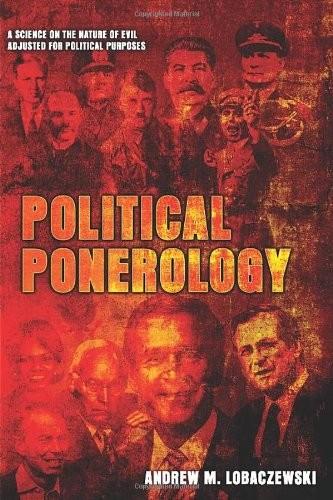
Political Ponerology (A Science on the Nature of Evil Adjusted for Political Purposes)
by
Andrew M. Lobaczewski
Published 1 Jan 2006
However, it also provokes society to elaborate pinpointed, well-thought-out self-defense measures based on its cognitive and creative efforts. Pathocratic leadership believes that it can achieve a state wherein those “other” people’s minds become dependent by means of the effects of their personality, perfidious pedagogical means, the means of mass-disinformation, and psychological terror; such faith has a basic meaning for them. In their conceptual world, pathocrats consider it virtually self-evident that the “others” should accept their obvious, realistic, and simple way of apprehending reality. For some mysterious reason, though, the “others” wriggle out, slither away, and tell each other jokes about pathocrats.
…
Originally published online (www.cassiopaea.org), The Wave is a fully modern exposition of the knowledge of the ancients, with subjects ranging from metaphysics, science, cosmology, and psychology to the paranormal, UFOs, hyperdimensions and macrocosmic transformation. “The Secret History of the World” … and how to get out alive If you heard the Truth, would you believe it? Ancient civilisations. Hyperdimensional realities. DNA changes. Bible conspiracies. What are the realities? What is disinformation? The Secret History of The World and How To Get Out Alive is the definitive book of the real answers where Truth is more fantastic than fiction. Laura Knight-Jadczyk, wife of internationally known theoretical physicist, Arkadiusz Jadczyk, an expert in hyperdimensional physics, draws on science and mysticism to pierce the veil of reality.
…
She also cites the clear evidence that our planet undergoes periodic natural cataclysms, a cycle that has arguably brought humanity to the brink of destruction in the present day. For its no nonsense style in cutting to the core of the issue and its sheer audacity in refusing to be swayed or distracted by the morass of disinformation that has been employed by the powers that be to cover their tracks, 9/11: The Ultimate Truth can rightly claim to be the definitive book on 9/11 - and what that fateful day’s true implications are for the future of mankind. The new Second Edition of 9/11: The Ultimate Truth has been updated with new material detailing the real reasons for the collapse of the World Trade Center towers, the central role played by agents of the state of Israel in the attacks, and how the arrogant Bush government is now forced to dance to the Zionists’ tune.

They Don't Represent Us: Reclaiming Our Democracy
by
Lawrence Lessig
Published 5 Nov 2019
See Morris Fiorina, “Americans Have Not Become More Politically Polarized,” Washington Post, June 23, 2014, available at link #104; Morris P. Fiorina, “The Political Parties Have Sorted,” a Hoover institution essay on contemporary American politics, series no. 3, 2016. 66.Yochai Benkler, Robert Faris, and Hal Roberts, Network Propaganda: Manipulation, Disinformation, and Radicalization in American Politics (New York: Oxford University Press, 2018), 73–74. 67.Benkler, Faris, and Roberts, Network Propaganda, 75-6. 68.Thomas E. Mann and Norman J. Ornstein, It’s Even Worse Than It Looks: How the American Constitutional System Collided with the New Politics of Extremism (New York: Basic Books, 2012). 69.Hillary Clinton, What Happened (New York: Simon & Schuster, 2017), Kindle edition, loc. 4048. 70.Benkler, Faris, and Roberts, Network Propaganda, 17. 71.For a related view—that the media “must embrace their solemn duty and educate the population about our great challenges—ratings be damned”—see Rob Cohen, “TV News Is As Much to Blame for Democracy’s Decline as Trump Is,” Chicago Tribune, November 16, 2018, available at link #105. 72.Among the most comprehensive analysis of the news coverage during the 2016 campaign is that conducted by the Harvard Kennedy School’s Shorenstein Center.
…
Ridout, Political Advertising in the United States (Boulder, CO: Westview, 2016), 13–40; Randolph Kluver et al., The Internet and National Elections: A Comparative Study of Web Campaigning (New York: Routledge, 2007); Yochai Benkler, Robert Faris, and Hal Roberts, Network Propaganda: Manipulation, Disinformation, and Radicalization in American Politics (New York: Oxford University Press, 2018), 367–68; Clifford A. Jones, “Campaign Finance Reform and the Internet: Regulating Web Messages in the 2004 Election and Beyond,” in The Internet Election: Perspectives on the Web in Campaign 2004, ed. Andrew Paul Williams and John C.
…
On the relative effect of the Leave versus Remain campaign, see Vyacheslav Polonski, “Impact of Social Media on the Outcome of the EU Referendum,” EU Referendum Analysis 2016, available at link #231. For the claim that fake news was spread and Russia almost certainly had some illicit hand, see “Disinformation and ‘Fake News,’” House of Commons: Digital, Culture, Media, and Sport Committee, February 14, 2019, 72–77, available at link #232; Dan Sabbagh, “Facebook to Expand Inquiry into Russian Influence of Brexit,” Guardian, January 27, 2018, available at link #233. 53.Burson v. Freeman, 504 U.S. 191 (1991), upheld a ban on politicking within one hundred feet of a polling place.

The Perfect Weapon: War, Sabotage, and Fear in the Cyber Age
by
David E. Sanger
Published 18 Jun 2018
If it confused and divided his enemies at home, all the better. What is different now is the great amplifier of social media. Stalin would have loved Twitter. Skillful as he was as a propagandist, his transmission capability was primitive. “What’s new is not the basic model; it’s the speed with which such disinformation can spread and the low cost of spreading it,” American political scientist Joseph Nye, the man who invented the term “soft power,” wrote in describing how Russia was making use of “sharp power.” If soft power is the ability to win over other societies because of the attractiveness of your culture, economy, and civic discourse, sharp power is the ability to insert the knife, stealthily and surgically.
…
If you believe that, then I don’t think you have internalized the message the Trump supporters are trying to send in this election.” Nine days later Zuckerberg was in Peru, at a summit that President Obama was also attending. The president took him into a private room and made a direct appeal: He had to take the threat of disinformation more seriously, or it would come to haunt the company, and the country, in the next election. Zuckerberg pushed back, Obama’s aides later told me. Fake news was a problem, but there was no easy fix, and Facebook wasn’t in the business of checking every fact that got posted in the global town square.
…
Says Russian Hackers Penetrated Its Files, Including Dossier on Donald Trump,” New York Times, June 14, 2016, www.nytimes.com/2016/06/15/us/politics/russian-hackers-dnc-trump.html. A persona with the screen name Guccifer 2.0: Rob Price, “RESEARCHERS: Yes, Russia Really Did Hack the Democratic National Congress,” Business Insider Australia, June 21, 2016, www.businessinsider.com.au/security-researchers-russian-spies-hacked-dnc-guccifer-2-possible-disinformation-campaign-2016-6. said he was Romanian: Lorenzo Franceschi-Bicchierai, “Alleged Russian Hacker ‘Guccifer 2.0’ Is Back After Months Of Silence,” Vice, January 12, 2017, motherboard.vice.com/en_us/article/9a3m7p/alleged-russian-hacker-guccifer-20-is-back-after-months-of-silence. The transcript of Lorenzo’s interview with Guccifer 2.0 is viewable at motherboard.vice.com/en_us/article/yp3bbv/dnc-hacker-guccifer-20-full-interview-transcript.

Flowers of Fire: The Inside Story of South Korea's Feminist Movement and What It Means for Women's Rights Worldwide
by
Hawon Jung
Published 21 Mar 2023
These images and videos are also known as cheap fakes, shallow fakes, or deepfake porn, depending on the sophistication of technology involved. Deepfakes, using a form of AI called deep learning, have been a source of growing alarm over their potential use in political disinformation, after fake videos of politicians—including of Nancy Pelosi drunkenly stammering during a speech—went viral in recent years. But despite all the attention paid to disinformation in politics, most deepfakes have nothing to do with politics—96 percent of such videos circulating online are porn, and all of them target women, a 2019 study showed.53 A quarter of such porn features K-pop stars, although celebrities are not the only victims, and most abusers don’t require advanced skills or technology.
…
Determined to change this reality, he underwent training to become an educator of gender equality and sex education and began to teach, among others, schoolboys. It’s a daunting task, as anti-feminism and the call to abolish the gender-equality ministry have become “meme-like slogans” by many YouTube channels popular among teenage boys. “But at the same time, their anger at feminism and their knowledge in gender equality—mostly based on disinformation on social media—are very shallow and easy to debunk,” he said, citing the anger over the military conscription. Women were exempted from the conscription due to the patriarchal view that considered them to be unfit to serve and needing protection—a system made and maintained by the male-dominated military, political, and bureaucratic establishments.* Meanwhile, young men were pressured to stay silent about the mistreatment and lack of proper compensation at the military in the name of national defense and “manliness.”
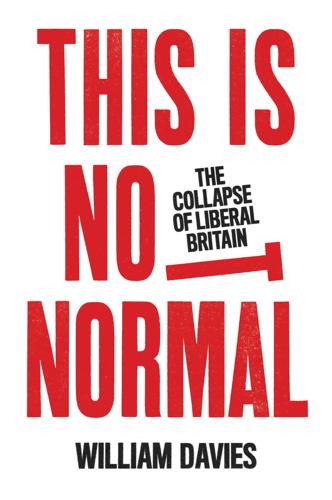
This Is Not Normal: The Collapse of Liberal Britain
by
William Davies
Published 28 Sep 2020
The mentality of this New Right is one that is hostile to the very idea of ‘neutral’ or ‘independent’ institutions as checks on power; they are viewed as sclerotic and self-interested. Much has been written about the philosophy of Dominic Cummings in this respect, but it was Michael Gove who elevated Cummings in the first place – and who is now sowing confusion and disinformation in the media as enthusiastically as anyone. The entire Conservative election platform hangs on the idea that Parliament and Whitehall are betraying ‘the people’ – that is, they are pursuing their own political agenda. In this view, everyone has already picked a side – and if you refuse to state your choice, you are marked as left-wing, probably a Remainer, and potentially disloyal to Britain.
…
Arendt, ‘Truth and Politics’, in Between Past and Future: Eight Exercises in Political Thought, Penguin, 1993, p. 250. 9 ‘Majority worldwide say their society is broken – an increasing feeling among Britons’, Ipsos Mori, 13 September 2019. 10 Y. Benkler et al., Network Propaganda: Manipulation, Disinformation, and Radicalization in American Politics, Oxford University Press, 2018. 11 G. Blank, ‘The Myth of the Echo Chamber’, OII blog, 9 March 2018. 12 Ipsos.com, ‘Ipsos MORI Veracity Index 2019: Trust in Professions Survey’, November 2019. 13 M. Andrejevic, ‘“Framelessness” or the Cultural Logic of Big Data’, in M.

Walled Culture: How Big Content Uses Technology and the Law to Lock Down Culture and Keep Creators Poor
by
Glyn Moody
Published 26 Sep 2022
One German MEP, Daniel Caspary,509 even saw the protests as sinister, alleging that: “Now an attempt is apparently being made to prevent the adoption of the copyright law with bought demonstrators as well. Up to 450 euros are being offered by a so-called NGO for participation in the demo. The money seems to come at least partly from big American Internet corporations. When American corporations try to prevent legislation with the massive use of disinformation and bought demonstrators, our democracy is threatened.”510 In reality, as Emanuel Karlsten reports,511 the digital rights organisation EDRi512 awarded €450 in travel expenses to twelve activists who wanted to join the protests in Strasbourg. Moreover, the details of how such grants were made was available on a public Web site.513 The claim that the protestors were ‘bought demonstrators’ is indicative of the reflexive contempt that some supporters of the EU Copyright Directive had for ordinary citizens daring to express their views by taking to the streets.
…
The EU Copyright Directive has one element that needs to be added—freedom of panorama—and several parts that need to go. Article 15, the snippet tax, was introduced because of lobbying by some large press publishers despite all the evidence against it, and should be removed. It is biased in favour of major publishers and will lead to more disinformation circulating. Sites keen to spread their lies will impose no conditions on the reuse of their material, which will therefore circulate widely as it is re-used by other outlets looking for free stories. Meanwhile, much of the best, most professional journalism will be locked away behind paywalls, read by only those who can afford to do so.713 An analysis of legislative changes conducted in 2021 by two academics Martin Husovec714 and João Quintais,715 working respectively at the London School of Economics and the University of Amsterdam, showed that Article 17 is similarly biased in favour of larger players: “[The] licensing provisions in Art. 17, unless implemented through collective licensing at the national level, result in a direct advantage to large right-holders.
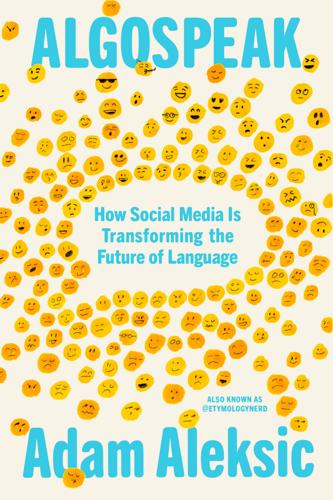
Algospeak: How Social Media Is Transforming the Future of Language
by
Adam Aleksic
Published 15 Jul 2025
Sometimes, it’s unintentional: Creators might leave out the whole picture or incorrectly reinterpret a source despite their best intentions. Even with thorough research, I’ve made numerous mistakes in my videos because they aren’t passing through a secondary editorial process. In other instances, however, people spread intentional and malicious disinformation: Deepfakes, hoaxes, and conspiracy theories have proliferated online out of various attempts to sway politics or public opinion. At the same time, algorithms aren’t all bad. In democratizing public communication, they’ve given us more access than ever to public video evidence and records, making it harder for governments to do bad things.
…
See also generations; and specific groups demonetization, 17 departed, 5 depression, 5 Depths of Wikipedia, 43 Deshmukh, Sara, 79–80, 86, 97, 215 desvivir, 206, 208, 210 devoró, 207 dialectal slang, 162 dialects, geographic to digital, 216 “dick,” shadowbanning and, 17 Dickens, Charles, 17 diegan (die), 5 Diffusion of Innovations (Rogers), 53 diffusion-of-innovations theory, 112, 140 digital blackface, 155 digital rubbernecking, 118 diminutives, 22 disabled community, 29 Discord, 125, 129, 132, 134, 214 discourse marker, 74–75 disinformation, 212 dissociating, 136 diversity, 97–98 Doctorow, Cory, 180 dog, 216–19 domains of use, 32–33, 36 doomer, 136 doomscrolling, 136 doomslang, 136 double em dash (——), 19 Douyin app, 6, 40, 57 downvotes, 59 drag culture, 147–49, 157, 207 Dr.

1983: Reagan, Andropov, and a World on the Brink
by
Taylor Downing
Published 23 Apr 2018
The CIA directorate of intelligence decided that any attempt to play up the possibility of ‘war danger’ was simply a ploy to stop the deployment of Pershing II and Cruise missiles in western Europe and to deepen divisions within the Atlantic alliance, putting pressure on Washington for a more conciliatory line. It was all put down to part of a programme of Soviet disinformation to discredit the US and bolster opposition to the siting of American missiles in Europe.2 The US intelligence establishment remained adamant that there was nothing to be concerned about. In May 1984, analysts produced a Special National Intelligence Estimate entitled ‘Implications of Recent Soviet Military-Political Activities’.
…
This report outlined as its ‘central concern… the possibility of major Soviet initiatives to influence the November election’. The Soviets had identified the Reagan administration as ‘a more consistently hostile opponent of the USSR’s interests and aspirations than it has faced in many years’. Fears grew that the Soviets would spread rumours and disinformation to try to discredit Reagan and make him look like an aggressive leader whose actions would put the people of America at grave risk. The November 1983 war scare was once again presented as ‘hostile propaganda, which blames the United States for an increased danger of war’ in order to ‘excite opposition to Washington’s policies’ and to ‘undercut the President’s re-election prospects’.26 In reality, the Soviet Union was too weak and leaderless to exert any real influence upon the outcome of the US election.
…
It concluded unequivocally that in November 1983 ‘we may have inadvertently placed our relations with the Soviet Union on a hair trigger’.13 In the mid-1990s the CIA decided to open its own investigation into whether it really had missed one of the most frightening moments of the Cold War. Were the Soviets actually about to launch a nuclear strike against the West? There was still controversy within the CIA over whether this was a real crisis or simply an example of Soviet disinformation. Robert Gates asked, ‘To what degree was our skepticism about the war scare prompted by the fact that our military didn’t want to admit that one of its exercises might have been dangerously if inadvertently provocative, or because our intelligence experts didn’t want to admit that we had badly misread the state of mind of the Soviet leadership?’
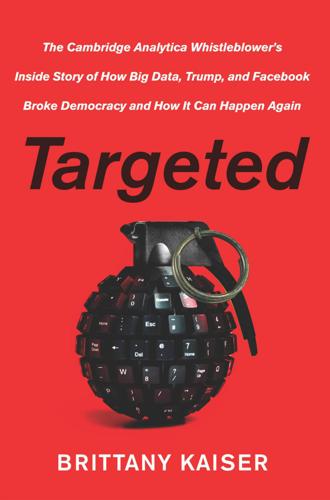
Targeted: The Cambridge Analytica Whistleblower's Inside Story of How Big Data, Trump, and Facebook Broke Democracy and How It Can Happen Again
by
Brittany Kaiser
Published 21 Oct 2019
I thought it odd, but it also showed efficiency, if nothing else, on Arron’s part. Still, it was strange, and when David and I visited the call center, we could see at once that it was the same one used for Eldon Insurance. As I later testified to the UK parliament’s Digital, Culture, Media and Sport Committee in its “Disinformation and ‘fake news’” inquiry, sixty people or so manned the phones, at about five rows of desks, making outgoing calls to customers in what I was told was the Eldon database to ask questions about Brexit where they usually would be answering questions from their insurance customers. The manager of the call center was a young woman who looked to be about my age.
…
Her allegations against me had real collateral damage: I was subpoenaed by Mueller the next day, which she then printed nine months later, conveniently leaving out the date and touting it as though it had just happened, further confusing the world and obfuscating the truth. Even before those “articles,” in my opinion, Carole’s spread of disinformation was beyond shocking—especially on Twitter—let alone her lack of journalistic ethics, constantly leaving me without any right to comment before publication. Because this was typical of her behavior, I thought, why should I believe her now? Furthermore, it was hard to see Chris Wylie as reliable: he was a disgruntled employee whose current access to information had to have been limited, unless he had someone on the inside at SCL or CA serving as a kind of mole.
…
But not unlike the very people who were the targets of Cambridge Analytica’s devious and brilliant messaging, I, too, had been a perhaps unwitting victim of an influence campaign. As with so many others, something had made an impression on me, I clicked on it, and that had sent me through a wormhole of disinformation, and I made choices I never would have thought I was capable of making. It had happened as equally to me as to the country I was born in and the country I’d adopted as my own. I was a proxy for each of those nations, willingly hoodwinked, living in an echo chamber, and never even knowing it.

Rationality: What It Is, Why It Seems Scarce, Why It Matters
by
Steven Pinker
Published 14 Oct 2021
Even before the Trumpian takeover, thoughtful Republican stalwarts had disparaged their own organization as “the party of stupid” for its anti-intellectualism and hostility to science.73 Since then, many others have been horrified by their party’s acquiescence to Trump’s maniacal lying and trolling: his game plan, in the admiring words of onetime strategist Steve Bannon, to “flood the zone with shit.”74 With Trump’s defeat, rational heads on the right should seek to restore American politics to a system with two parties that differ over policy rather than over the existence of facts and truth. We are not helpless against the onslaught of “post-truth” disinformation. Though lying is as old as language, so are defenses against being lied to; as Mercier points out, without those defenses language could never have evolved.75 Societies, too, protect themselves against being flooded with shit: barefaced liars are held responsible with legal and reputational sanctions.
…
See formal fallacies Principle of Explosion (from contradiction, all follows), 81–82 sound arguments vs., 82–83 validity vs. soundness, 83 loss aversion, 192–94 lotteries, 176–78, 182–83, 188–92 Lotto, Beau, 30 Love Story (film), 76–78, 263 lucky streaks, 148 Madison, James, 41 Madman Theory, 60–61, 236 Maduro, Nicolás, 23, 24 main effect, 273, 274, 275, 278 Maine, USS, 124, 125 The Maltese Falcon (film), 61–62 mañana fallacy, 101 Mao Zedong, 245 margins of error, 196 marshmallow test, 47–48, 50 Marx, Chico, 294–95 Marx, Karl, 90 Masons, 36, 40 mathematicians caution about mindless use of statistical formulas, 166–67 mansplaining, 18 paragon of rationality, 74 simulation vs. proof, 20 stereotype of, 20 Matthew Effect, 263–64, 354n21 Maymin, Philip, 342n17 Meadow’s fallacy (multiplying probabilities of interdependent events), 129–30, 131 media accountability for lying/disinformation, 313, 314, 316, 317 availability bias driven by, 120, 125–27 consumer awareness of biases in, 127 correlation confused with causation and, 256, 260, 353n13 cynicism bred by, 126–27 innumeracy of, 125–27, 314 negativity bias, 125–26 politically partisan, 296 rational choice portrayal by, 173–74 reforms for rationality, 127, 314, 316, 317 tabloids, 287–88, 306 and truth-seeking, 316 the Winner’s Curse and, 256, 353n13 See also digital media; entertainment; journalism; social media medical quackery, 6, 90, 284, 304, 321, 322 celebrity doctors, 305 COVID-19 and, 284 harms caused by, 322 hidden mechanisms posited by, 258 intuitive essentialism and, 304–5, 321 science laureates and, 90 medicine base-rate neglect in diagnosis, 155 Bayesian reasoning in, 150–51, 152, 153–54, 167, 169–70, 321 correlation and causation, 251–52 COVID-19, 2, 283 disease control, 325 drug trials, 58, 264 evidence-based, 317 expected utility of treatments, 192–94, 198–99 false positives, 169–70, 198 frequencies and, 169–70 randomized controlled trials and, 264 rational ignorance and, 57 rationality and progress in, 325–26 sensitivity of tests, 150, 154, 169, 352n10 signal detection and, 202, 211, 213, 220 specificity of tests, 352n10 taboo tradeoffs in, 63–64 See also health; mental health Meehl, Paul, 279, 280 Mellers, Barbara, 29, 219–20 memes, 144, 308–9 mental health, 251, 256, 276–77, 276, 280 Mercier, Hugo, 87, 291, 298–99, 308, 313 meteorology, 114, 127, 133, 220 The Mikado (Gilbert and Sullivan), 27 military, 63, 220, 231, 295 Miller, Bill, 143 Miller, Joshua, 132 mind-body dualism, 304 miracles, Bayesian argument vs., 158–59 Mischel, Walter, 47 Mlodinow, Len, 143 modal logic, 84 modernity vs. ecological rationality, 96–98 vs. mythology mindset, 303–4 See also progress modus ponens, 80 modus tollens, 80–81 Molière, virtus dormitiva, 11–12, 89 money diminishing marginal utility of, 181–83, 247 dollar value on human life, 63–64 See also finances; GDP per capita money pump, 176, 180, 185, 187–88 monocausal fallacy, 260, 272–73 Montesquieu, 333, 335 Monty Hall dilemma, 16–22, 115, 342n33 morality of Bayesian base rates, 62, 163–66 discounting the future and, 51–52 God and, 67 Golden Rule (and variants), 68–69 heretical counterfactuals, 64–65 impartiality as the core, 68–69, 317, 340 marginal utility of lives and, 183–84 the mythology mindset and, 300, 307 relativism and, 42, 66–67 self-interest and sociality, 69 taboo tradeoffs and, 64 See also moral progress moral progress overview, 328–29 analogizing oppressed groups, 335 animals, cruelty to, 334–35 democracy, 335–36, 339 feminism, 336–37 homosexuality, persecution of, 333–34 ideas vs. proponents, 339–40 rationality as driver of, 329–30, 340 redistribution of wealth and, 182 religious persecution, 301–2, 330 sadistic punishment, 332–33 slavery, 334, 335, 336, 337, 338, 339 war, 331 Morgenbesser, Sidney, 81, 82, 178 Morgenstern, Oskar, 175, 197, 228, 350n1 motivated reasoning, 289–92, 297, 298, 310.
…
See also Madman Theory reality as motivating, 41–42, 288, 298, 309, 320 reasoning about reasoning, 37–41, 70–71 rejection of the paranormal and, 309–10 as uncool, 35–36 winning arguments as adaptive function of, 87–88, 291 See also ecological rationality; goals; irrationality—crisis of; normative models; taboos —effects of overview, 319–20 life outcomes, 320–24 material progress, 324–28 moral progress. See moral progress —recommendations to strengthen accountability for lying and disinformation, 313, 314, 316–17 avoidance of sectarian symbolism, 312 educational curricula, 314–15 evidence-based evaluation, 312, 317 incentive structures, 315–17 in journalism, 314, 316, 317 norms valorizing, 311–13, 315 in punditry, 317 “Republican party of stupid,” 312–13, 357n73 scientists in legislatures, 312 in social media, 313, 316–17 viewpoint diversity in higher ed, 313–14 Rationality Community, 149–50, 312 Rationality Quotient, 311 Rawls, John, 69 realism, universal, 300–301 reality, motivating rationality, 41–42, 288, 298, 309, 320 reality mindset Active Open-Mindedness/Openness to Evidence and, 310–11, 324, 356–57n67 definition, 299–300 mythology mindset, border with, 303 as unnatural, 300–301 reason, in definition of “rationality,” 36 Rebel Without a Cause, 59, 236, 344n29 reciprocity, norms of, 5 recursion, 71, 108 reflectiveness Cognitive Reflection Test, 8–11, 50 definition, 311 intelligence correlating with, 311 openness to evidence correlating with, 311 and reasoning competence, 323, 324 resistance to cognitive illusions and, 311 unreflective thinking, 8–10, 311 of weird beliefs, 299 regression correlation coefficient (r), 250–51 definition, 248, 252 equation for, 272, 278–81 general linear model, 272 human vs., accuracy of, 278–80 instrumental variable regression, 267–68 multiple regression, 270–72, 271 regression line, 248–49, 253–54, 270 residuals, 249–50, 270–71 regression discontinuity, 266–67 regression line, 248–49, 253–54, 270 regression to the mean and bell curve distribution, 253 definition, 252–53 imperfect correlation as producing, 254 regression line, 253–54 scatterplots and, 253–54 as statistical phenomenon, 253 unawareness of, 254–56, 320, 353n13 regret avoidance, 17, 190 relativism and relativists argument against rationality, 39–40 as hypocritical, 42 morality and, 42, 66–67 religion argument from authority, 90 the cluster illusion and, 147 forbidden base rates and, 163–66 the Golden Rule in, 68–69 heretical counterfactuals, 64–65 monotheism, 40 the mythology mindset and, 301–2, 307 persecution of, progress against, 330–31 See also God Rendezvous game, 233–34 replicability crisis in science Bayesian reasoning failures and, 159–61 preregistration as remedy, 145–46 questionable research practices and, 145–46, 160, 353n13 science journalism and, 161–62 statistical significance and, 225 Texas sharpshooter fallacy, 144–46, 160 Winner’s Curse, 256 representativeness heuristic, 27, 155–56 Republican Party and Republicans calling Democrats socialists, 83–84 expressive rationality and, 298 Fox News and, 267, 268, 296 pizza classified as vegetable by, 101 politically motivated numeracy, 292–94 rehabilitating, 312–13, 357n73 See also left and right (political); politics reputation, 47, 237, 242, 308, 313 resistance to evidence.

The Long History of the Future: Why Tomorrow's Technology Still Isn't Here
by
Nicole Kobie
Published 3 Jul 2024
AI-powered image generation and editing tools have contributed to the rise in deepfakes – everything from the Pope in a funny jacket to the Ukrainian president announcing a surrender in the war with Russia – and revenge porn, with ex-partners’ faces superimposed on to porn stars’ bodies. Natural language generators can help churn out misinformation and disinformation, making it easier to sow confusion ahead of an election or flood the internet with so much nonsense that it’s impossible to understand what’s true anymore. The most bewildering threats are known as adversarial examples. Neural networks don’t know what a cat is, they learn to identify a cat through characteristics that may make little sense to humans.
…
In response, thousands of industry leaders – including Musk – called in an open letter for AI labs to take a six-month breather on the development of systems more powerful than GPT-4, a very specific milestone that ensures OpenAI keeps its lead. Shared on the website of the Future of Life Institute we discussed at the top of this chapter, the letter does warn about harms happening now – in particular disinformation and the risk to jobs – but focuses largely on concerns about non-human minds replacing us and taking control of our civilisation. ‘Powerful AI systems should be developed only once we are confident that their effects will be positive and their risks will be manageable,’ the letter says. Geoffrey Hinton didn’t sign that letter, but the so-called godfather of neural networks did something even more unexpected: he stepped down from his role at Google so he could more openly discuss the threats.
…
Geoffrey Hinton didn’t sign that letter, but the so-called godfather of neural networks did something even more unexpected: he stepped down from his role at Google so he could more openly discuss the threats. To be clear, he didn’t quit because he was worried about Google in particular, but about the wider industry. Hinton’s warnings were twofold. One, he was concerned about how AI was being used in the here and now, for disinformation and the like. And two, he thought we ought to prepare for the consequences of when superintelligent AI arrived, which was now looming sooner than he’d always thought. He rationalised his work, he told the newspaper, with the excuse that if he hadn’t developed these technologies, someone else would have – and that it’s difficult to prevent people from misusing AI to bad ends.

Ghost Wars: The Secret History of the CIA, Afghanistan, and Bin Laden, from the Soviet Invasion to September 10, 2011
by
Steve Coll
Published 23 Feb 2004
If the threat was against the U.S. embassy, they might consider a more targeted, secret alert to employees there. They issued dozens of such warnings in public and private in the weeks after the Africa attacks.5 They were aware that bin Laden and his leadership group were probably planting disinformation to distract them. They assumed that the more they closed embassies and issued alerts, the more they encouraged this disinformation campaign. Yet they could see no alternative. They had to collect as much threat information as they could, they had to assess it, and they had to act defensively when the intelligence looked credible. There was plenty that looked truly dangerous.
…
One of the largest units focused on the Abu Nidal Organization, which had claimed hundreds of civilian lives in multiple strikes during the 1980s. Clarridge and his colleagues decided to sow dissent by exposing the group’s financial operations and trying to raise suspicions among members. Abu Nidal had become a paranoid, self-immolating group on its own accord, but the agency helped accelerate its breakup through penetrations and disinformation. Abu Nidal faded as an effective terrorist organization within three years. There were other successes, especially in Germany and Italy, where the terrorists began to consume themselves, sometimes helped along by covert operations. Hezbollah, on the other hand, proved a very hard target. It was the new center’s first attempt to penetrate a committed Islamist terrorist organization that targeted American citizens.
…
For a full year after Hezbollah kidnapped and tortured the CIA’s Beirut station chief, William Buckley, beginning in 1984, the agency “had absolutely no idea” who had taken him or the other American hostages in Lebanon, Baer recalled. Meanwhile, the Counterterrorist Center had to deal with hoax after hoax—some mounted by Hezbollah as disinformation—about where the hostages were located.29 Clarridge wanted to attack. He sought to enlist U.S. Special Forces to launch an elaborate hostage rescue operation in Beirut. He rigged up special refrigerator trucks in Europe, disguised to look as if they belonged to Lebanese merchants; he hoped they could be shipped in and used to run Delta Force commandos into West Beirut.

The Wars of Afghanistan
by
Peter Tomsen
Published 30 May 2011
Modeled on the KGB, it was given the lofty title of “Department of Defense of the Interests of Afghanistan.” Known and feared by its Dari acronym, AGSA, the new Afghan communist spy agency would grow into a huge Soviet-Afghan organization controlling domestic and foreign intelligence, counterintelligence, border security, covert action, several elite combat units, and disinformation capabilities.15 Soviet Communist Party advisers were tasked with guiding the PDPA in its transition from a political party out of power to one exercising a monopoly of power in Afghanistan. This required PDPA solidarity. Soviet advice to maintain Khalq-Parcham unity appeared to be honored in the immediate aftermath of the coup.
…
The uproar was finally squashed by a vote in which everyone agreed to accept everyone else’s delegates. On February 14, Mojaddedi led his contingent out of the shura for four days to protest Pakistani interference. In a confidential cable to Washington, the American embassy reported that “every faction in the shura is putting out its own version of, and disinformation about, all the backroom maneuvering that is going on. There are no neutral sources of information. Even the official press outlet for the shura, Afghan News Agency, is in fact controlled by one of the parties—Hezb Islami-Gulbuddin, and is distorting the news accordingly.”49 Rancorous debate over the lack of fair representation in the shura destabilized proceedings for several days.
…
“Your assessment about Afghanistan is wrong,” he volunteered. In many conversations during our three-year association in Beijing, Fedotov had proven to be well informed and straightforward. His rejection of the conventional wisdom that Najib was losing and the Afghan Mujahidin were winning troubled me. Was he spreading disinformation or was U.S. intelligence reporting behind the curve? The Pakistani ambassador to China, Akram Zaki, invited me to a reception honoring a visiting delegation of the recently formed Afghan Interim Government. It was headed by the AIG foreign minister, Gulbuddin Hekmatyar. The reception took place in Zaki’s spacious living room.
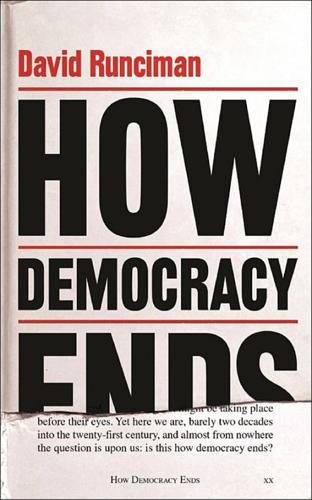
How Democracy Ends
by
David Runciman
Published 9 May 2018
News feeds could be targeted accordingly. It is hard to know if it made any difference. But the margin of Trump’s victory was sufficiently narrow – tens of thousands of voters in a few key states – to suggest that it just might have. Meanwhile, the Kremlin has rediscovered its appetite for bombarding Western electorates with disinformation, based on extensive data harvesting. Bots on Twitter that pretend to engage in democratic debate are being programmed to make debate impossible, by turning all political argument into a never-ending shouting match. Bots that are very bad at impersonating human intelligence can still be very good at impersonating angry voters.
…
Index A accelerationism, 199–202 Achen, Christopher see Bartels, Larry and Achen, Christopher Ackerman, Bruce, 54–5 advertising, 160 and elections, 158 internet, 157, 159 Afghanistan, 75 Africa, 79 see also Algeria; Zimbabwe Algeria: coup, 41–3 Amazon, 131, 137 anarchism, 192–3, 214 appeasement, 144 Apple, 131, 137 Arendt, Hannah, 85, 86–7, 98 Eichmann in Jerusalem, 84 Argentina, 162 Aristotle, 161 armies see military artificial intelligence (AI), 122–3, 126, 129–30, 189–91 Athens, ancient, 35–8, 142, 161 conspiracy theories, 60 epistocracy, 179 Athens, modern, 27–8; see also Greece austerity, 208 Australia, 162 authoritarianism, 154–5, 171–3 ‘competitive’, 175 pragmatic, 174–5, 176, 177–8, 181, 205 B bankers, 69, 116, 181 banks, 131, 135; see also European Central Bank Bannon, Steve, 13 Bartels, Larry and Achen, Christopher: Democracy for Realists, 184 Bell, David A., 176 Benn, Tony, 58 Bentham, Jeremy, 127, 151, 152 Bermeo, Nancy, 44, 45 bio-engineering, 102–3 Bitcoin, 136 Bostrom, Nick, 105–6 Bourne, Sam (pseudonym): To Kill the President, 57, 58 Brazil, 217 Brennan, Jason: Against Democracy, 183–5, 186–7, 188–9 Bryan, William Jennings, 68–9 bureaucracies, 85, 86–7, 99, 127, 164; see also civil service Burton, Robert, 159–60 Bush, President George W., 12, 55 C Cambridge Analytica (firm), 156, 157, 159 capitalism, 196, 199 Carson, Rachel, 85, 87–8 Silent Spring, 82–3, 89, 90–91, 93 catastrophes, 6, 7, 85–6 environmental, 82–3, 85, 87–93; see also climate change nuclear, 83–4, 97 total, 100 Chicago: violence, 211 China and climate change, 174 Communist Party, 172–3 economy, 172, 208 foreign policy, 30–31 government model, 174 as a meritocracy, 175–6 nationalism, 172 pollution, 89 view of Trump, 173 Churchill, Winston, 8, 75–6, 168–9, 177 civil service, 41, 55–6; see also bureaucracies Clark, Christopher: The Sleepwalkers: How Europe Went to War in 1914, 115 Clemenceau, Georges, 71, 75–6 climate change, 90–93 China and, 174 consciousness raising, 89, 92–93 conspiracy theories, 91–92 incremental nature of, 97 and risk, 101 support for, 108 and uncertainty, 96 see also global warming Clinton, President Bill, 54–5 Clinton, Hillary, 13–15, 16, 198 Cold War, 28–9, 67, 94, 95–6, 106–7, 108–9 communism 194; see also China: Communist Party; Marxism-Leninism; Stalinism consciousness raising, 85, 89, 92–3, 106 conspiracy theories, 60–71 climate change, 91–2 and division, 99 and fake news, 75 France, 69 India, 65–6 nuclear weapons, 96 Poland, 65, 66 and totalitarianism, 98 Turkey, 65, 66 United Kingdom, 62–3 United States, 62, 64–5, 67 and war, 77 conspiracy theorists, 153 Constantine I, king of Greece, 27, 28 consumerism, 166 Corbyn, Jeremy, 58, 94–5, 148–9, 150, 209 corporations, 129–32, 139, 166 coups, 3, 217 Algeria, 41–3 and catastrophes, 85 and clarity, 59 and conspiracies, 7, 60 and counter-coups, 56–7 Cyprus, 33, 38–9 economic conditions for, 31 in fiction, 57–8 Greece, 26–30, 27, 32, 33, 34–5, 38, 40, 45 Luttwak on, 41–2, 46 Turkey, 50–52, 53, 66 varieties of, 44–5 election-day vote fraud, 44 executive, 44 executive aggrandisement, 44, 52, 55 promissory, 44, 47, 50–51 strategic election manipulation, 44 Zimbabwe, 48 crises, 5–6 Cuban missile Crisis (1962), 107–8 mid-life, 5, 8, 169, 218 Cummings, Dominic, 179 currencies, 135 digital, 136 Cyprus: coups, 33, 38–9 D databases, 123 de Gaulle, General Charles, 41, 42 de Tocqueville, Alexis, 142, 187 death, 23–4, 204, 216–17 democracy appeal of, 6, 169–71 audience, 47, 117 direct, 35, 48, 143, 161, 162, 163 failure of, 50 obsolescence, 167–8 plebiscitary, 47 spectator, 47 spread of, 3 strong and weak, 59–60 threats to 6–7, 53–4, 108, 112; see also coups digital revolution, 152, 164, 200–201, 215, 219 dignity collective, 172, 173, 177 and elections, 170, 177 and loss, 175 disruption, 198–9 Dorsey, Jack, 137 Dreyfus, Alfred, 69 dystopias, 90–91, 113, 114, 118–19, 126, 220 E East India Company, 130–31 economic growth, 172, 192 accelerationists and, 200 and populism, 192 United States, 175 Western Europe, 175 Economist (journal), 133 Edgerton, David, 122 education, 109–10, 163–4, 183–4, 185 Eggers, David: The Circle, 139, 140, 141–2, 144 Egypt, 48–50 Eichmann, Adolf, 84, 85–6 elections 4, 218 and advertising, 158–9 computers and, 125 and coups, 44, 45 decision-making process, 188–9 and dignity, 170, 177 and disinformation, 156–7 Egypt, 48–9 France, 148 fraud, 44 Greece, 28, 29, 39, 40, 148 Italy, 148 manipulation of, 44 Netherlands, 148 online, 162 Turkey, 51 United Kingdom, 95 United States see under United States see also vote, right to elites, 75 and climate change, 91–2 corporate, 139 and nuclear disarmament, 95 and populism, 65 power of, 61 see also wealth environmentalists, 200 epistocracy, 178–9, 180, 181–8, 191, 205 equality, 202–3; see also inequality Erdogan, President Recep, 51–3, 66, 149, 213 Estlund, David: Democratic Authority, 185 Ethiopia, 154–5 European Central Bank (ECB), 33, 39, 116–17 European Union (EU) and corporations, 132 and Greece, 30, 32, 116–17 executive aggrandisement, 45–6 military, 55, 56 United States presidents, 92 experts see epistocracy; technocracy ExxonMobil, 92 F Facebook, 131, 132–3, 134–5, 136, 138–9, 140, 141, 145, 150, 157 fascism, 169 financial crash (2008), 79, 110, 116 Forster, E.
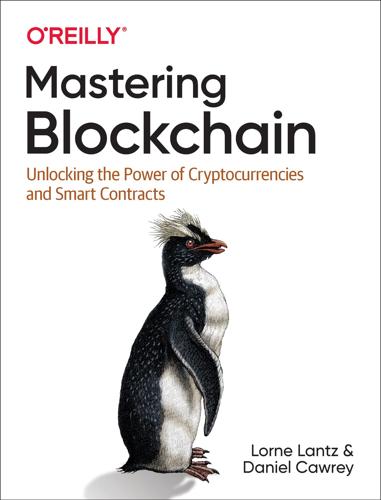
Mastering Blockchain: Unlocking the Power of Cryptocurrencies and Smart Contracts
by
Lorne Lantz
and
Daniel Cawrey
Published 8 Dec 2020
“Pay-to-play”—paying a significant fee to be featured in a seemingly unbiased news story—is rampant in the cryptocurrency industry. One reporter reached out to cryptocurrency news sites and found many of them were willing to take money in return for favorable coverage. Sometimes these news outlets would request thousands of dollars for a positive story, which shows the kind of shadow market for disinformation that exists in the industry. Figure 6-11 shows the prices some outlets wanted to charge for a favorable story. Figure 6-11. Pay-to-play Social media can be a tool for news gathering, but it should be taken with a grain of salt. On Twitter, there are entire campaigns meant to influence thinking on bitcoin, XRP, and many other smaller cryptocurrencies.
…
Gox-Bitfinex multisignature wallet contracts, Multisignature Contracts-Multisignature Contracts N Namecoin, Altcoins naming services, Naming Services network hash rate, Block discovery networkscentralized versus decentralized versus distributed design, Distributed Versus Centralized Versus Decentralized Corda, The Corda networknodes having visibility into transactions, Corda ledger DAG design, DAGs Libra's centralization challenge, Novi transactions confirmed by network on Bitcoin, Transaction life cycle New York Department of Financial Services (NYDFS), FinCEN Guidance and the Beginning of Regulation NiceHash, NiceHash Nightfall blockchain, Nightfall nodes, Distributed Versus Centralized Versus Decentralizedin Avalance consensus mechanism, Avalanche Libra, validator and full nodes, How the Libra Protocol Works Lightning, Lightning nodes and wallets in proof-of-stake networks, Proof-of-Stake nonces, The mining processin block discovery on Bitcoin, The mining process running out of nonce space or overflow, The mining process in Satoshi Nakamoto's whitepaper, The Whitepaper noncustodial wallets, Wallet Types: Custodial Versus Noncustodial(see also wallets) nonfungible tokens, Fungible and Nonfungible TokensERC-721 standard for, ERC-721 Nothing-at-Stake problem, Proof-of-Stake Novi wallet, Novi NuBits, NuBits NXT blockchain, NXT O oligarchical model dominating the web, Web 3.0 Omni Core, Understanding Omni Layerlimitations of, Deploying and Executing Smart Contracts in Ethereum Omni Layer, Understanding Omni Layer-Adding custom logicadding custom logical operations to Bitcoin, Adding custom logic-Adding custom logic how it works, How Omni Layer works limitations of, Deploying and Executing Smart Contracts in Ethereum technical stack, overview of, Understanding Omni Layer Tether project built on, Tether opcodes, Gas and Pricing Open Systems Interconnection (OSI) model, The More Things Change operating system platform (EOS), Blockchains to Watch operators, ERC-777, ERC-1155 Optimistic Rollups, Other Altchain Solutions, Lightning nodes and wallets options, Derivatives OP_RETURN field, Adding custom logictranslation of metadata in, Adding custom logic Oracle, Blockchain Platform, Blockchain as a Service oracles, Important Definitionsmanipulation in Fulcrum attack, The Fulcrum Exploit order books, Order Booksthin, slippages and, Slippage over-the-counter (OTC) market, Slippage P paper wallets, Wallet Type Variations Parity, Parity Parity hack (2017), Parity participants, Participants passwordssecurity vulnerabilities, Zero-Knowledge Proof Thinbus Secure Remote Password protocol, Zero-Knowledge Proof pay-to-play, Tools for fundamental analysis payment channels, Lightningnode dropping or losing connection to, Lightning nodes and wallets opening by sending funding transaction, Funding transactions withdrawing funds from, Off-chain transactions payment systemsLibra, Borrowing from Existing Blockchains permissioned ledger uses of blockchain, Payments physical cash versus digital, Electronic Systems and Trust Permacoin, Alternative methods permissioned ledger uses of blockchain, Permissioned Ledger Uses-Paymentsbanking, Banking central bank digital currencies, Central Bank Digital Currencies gaming, Gaming health care, Health Care Internet of Things, Internet of Things IT systems, IT payments systems, Payments permissioned ledgers, Databases and Ledgers permissionless ledgers, Databases and Ledgers person-to-person trading of cryptocurrency, Evolution of the Price of Bitcoin phishing attacks, Security Fundamentals Plasma implementation of sidechains, Other Altchain Solutions Ponzi schemes in cryptocurrency, Skirting the Laws PotCoin, More Altcoin Experiments precompilation of zk-SNARKs, zk-SNARKs preminingissues with, Litecoin premined altcoin, Ixcoin, Altcoins prices (gas), Gas and Pricing Primecoin, Altcoins privacyand censorship resistance with dapps, Use Cases Ethereum-based privacy implementations, Ethereum-Based Privacy Implementations future developments in blockchains, Privacy information security in decentralizing finance and the web, Privacy-Ring Signaturesring signatures, Ring Signatures Zcash, Zcash zero-knowledge proof, Zero-Knowledge Proof zk-SNARKs, zk-SNARKs insufficient anonymity on Bitcoin, The Evolution of Crypto Laundering paired with scalability, Mimblewimble blockchain protocol, Mimblewimble, Beam, and Grin privacy-focused blockchains, PrivacyMonero, Blockchains to Watch-How Monero Works Zcash, Zcash privacy-focused cryptocurrencies, Privacy-Focused CryptocurrenciesDash, Dash Monero, Monero Zcash, Zcash private blockchain networks, Privacy private blockchains, The Enterprise Ethereum Alliance private keys, Public/private key cryptography(see also public/private key cryptography) products/services, buying or selling, Evolution of the Price of Bitcoin proof-of-history, Alternative methods proof-of-stake, Proof-of-Stake-Proof-of-StakeByzantine fault-tolerant algorithm, HotStuff, Borrowing from Existing Blockchains Casper algorithm in Ethereum 2.0, Ethereum Scaling proof-of-stake velocity, More Altcoin Experiments proof-of-storage, Alternative methods proof-of-work, Block Generation, Proof-of-Work-Confirmationsbit gold's client puzzle function type, Bit Gold block discovery, Block discovery confirmations by miners of blocks to include in blockchain, Confirmations criticisms of, Proof-of-Stake, Ripple and Stellar CryptoNote protocol, Monero Ethereum's Ethash protocol, Ethereum: Taking Mastercoin to the Next Level longest chain rule, The mining process mining process for block discovery on Bitcoin, The mining process mining process on Bitcoin, The mining process in Satoshi Nakamoto's whitepaper, The Whitepaper transaction life cycle, Transaction life cycle use by B-Money, B-Money use by Hashcash, Hashcash X11 ASIC-resistant, Dash protocols, Electronic Systems and Trust pseudonimity, KYC rules and, KYC and pseudonymity public keys, Public/private key cryptography(see also public/private key cryptography) public/private key cryptographyBitcoin's use of, Public/private key cryptography examples of public and private keys, Naming Services generating keys, Generating keys private key storage for digital wallets, Authoring a smart contract private keys for wallets, Private Keys public and private keys in cryptocurrency systems, Public and Private Keys in Cryptocurrency Systems-Public and Private Keys in Cryptocurrency Systems unauthorized access to private key, Bitcoin Transaction Security use in controlling access to personal information, Identity and the Dangers of Hacking pull transactions, Bitcoin Transaction Security, ERC-777 push transactions, Bitcoin Transaction Security, ERC-777 Q Quantum Ledger Database (QLDB), Blockchain as a Service Quorum blockchain, Quorum, JPMorgan R ransomware, CryptoLocker and, CryptoLocker and Ransomware rate limiting, Exchange Risk, Rate Limiting real estate transactions, using tokens on a blockchain, Tokens on the Ethereum Platform recovery seed, Recovery Seed recursive call vulnerability, Forking Ethereum and the creation of Ethereum Classic regulationof cryptocurrency exchanges, Jurisdiction FATF and the Travel Rule, The FATF and the Travel Rule FinCEN guidance and beginnings of, FinCEN Guidance and the Beginning of Regulation-FinCEN Guidance and the Beginning of Regulation regulatory challenges in cryptocurrency market, Regulatory Challenges-Basic Mistakes regulatory issues with ICOs, Tokenize Everything regulatory arbitrage, Avoiding Scrutiny: Regulatory Arbitrage-Crypto-Based StablecoinsICOs as example of, Initial Coin Offerings relational databases, Databases and Ledgers replay attacks, Replay attacksprotecting against, on Ethereum and Ethereum Classic, The Ethereum Classic Fork replication systems, Databases and Ledgers REST APIsEthereum network, Interacting with Code WebSocket versus, REST Versus WebSocket ring confidential transactions, Blockchains to Watch, How Monero Works ring signatures, Monero, Ring Signatures, Blockchains to Watchhiding public address of sender on Monero, How Monero Works Ripple, Other Concepts for Consensus, Rippleblock times, Float Configuration 2 Robinhood mobile app, Brokerages Rollups, Zero Knowledge (ZK) and Optimistic, Other Altchain Solutions, Lightning nodes and wallets Royal Mint, The Royal Mint S Santander, blockchain-issued bonds, Banking SAP, Blockchain as a Service, Blockchain as a Service satoshi, Gas and Pricing Satoshi Nakamotobitcoin address related to, The Evolution of Crypto Laundering efforts to establish identity of, Storing Data in a Chain of Blocks identity, guesses at, Bahamas Satoshi's Vision group (Bitcoin SV), The Bitcoin Cash Fork whitepaper, The Whitepaper savings services (DeFi), Savings scalabilitycentralized versus decentralized exchanges, Scalability discontent over Bitcoin network's scaling, The Bitcoin Cash Fork EOS solution to blockchain issues, Tokenize Everything privacy paired with, Mimblewimble blockchain potocol, Mimblewimble, Beam, and Grin Scalable Transparent ARguments of Knowledge (STARKs), STARKs scaling blockchains, Scaling Blockchains-Other Altchain Solutions, The Scaling Problem-Ethereum ScalingAvalanche consensus mechanism, Avalanche DAG network design, DAGs Ethereum, Ethereum Scaling-Ethereum Scaling Lightning solution, Lightning, Lightning-Lightning nodes and wallets Liquid multisignature wallet, Liquid other altchain solutions, Other Altchain Solutions SegWit, SegWit sharding, Sharding sidechains, Sidechains STARKs, STARKs Schnorr algorithm, Privacy Scott, Mark, Skirting the Laws SCP consensus protocol, Stellar scripted money, Improving Bitcoin’s Limited Functionality Scrypt mining, Altcoins, Litecoin Secret Network, Privacy securitiestokens proposed in ICOs, Different Token Types unregistered securities offerings, Skirting the Laws Securities and Exchange Commission (SEC), FinCEN Guidance and the Beginning of Regulation securityBitcoin transaction security, Bitcoin Transaction Security custody infrastructure for exchanges, Counterparty Risk detection of blockchain tampering with Merkle roots, The Merkle Root early vulnerability on Bitcoin, An Early Vulnerability exchanges taking care of private keys, Counterparty Risk flash loans exploiting vulnerabilities in DeFi platforms, The Fulcrum Exploit fundamentals for cryptocurrencies, Security Fundamentals-Recovery Seed identity and dangers of hacking, Identity and the Dangers of Hacking information security in decentralizing finance and the web, Privacy Lightning Network vulnerabilities, Lightning proof-of-stake consensus algorithm, criticisms of, Proof-of-Stake recursive call vulnerability, Forking Ethereum and the creation of Ethereum Classic replay attacks vulnerability, Replay attacks, The Ethereum Classic Fork sharding, vulnerabilities with, Other Altchain Solutions theft of cryptocurrencies in exchange hacks, Exchange Hacks-NiceHash theft of cryptocurrencies in other hacks, Other Hacks-Summary transaction malleability vulnerability, Lightning nodes and wallets security token offerings (STOs), Different Token Types security tokens, Token Economics seeds (recovery), Recovery Seedstorage of, Authoring a smart contract SegWit (Segregated Witness), SegWit, Lightning nodes and wallets self-sovereign identity, Identity and the Dangers of Hacking SHA-256 hash algorithm, Introducing the Timestamp Server, Hashes SHA256 and RIPEMD160 functions, Generating keys shadow market for disinformation, Tools for fundamental analysis sharding, Other Altchain Solutions, Shardingin Ethereum 2.0, Ethereum Scaling Shavers, Trendon, Skirting the Laws Shrem, Charlie, Skirting the Laws sidechains, Other Altchain Solutions, SidechainsLiquid technology and, Liquid Optimistic Rollups and, Lightning nodes and wallets Silk Road, Catch Me If You Cancriminal investigation tracking bitcoin address to operator, The Evolution of Crypto Laundering provision of bitcoin to users without KYC/AML, Skirting the Laws SIM swapping, SIM Swapping-SIM Swapping Singapore, regulatory arbitrage, Singapore single-shard takeover attacks, Other Altchain Solutions slashing algorithms, Proof-of-Stake slippage, Slippage smart contracts, Mastercoin and Smart ContractsDAML language for distributed applications, DAML for decentralized exchanges, Decentralized Exchange Contracts, Custody and counterparty risk deploying and executing in Ethereum, Deploying and Executing Smart Contracts in Ethereum-Interacting with Codeauthoring a smart contract, Authoring a smart contract deployment, Deploying a smart contract-Deploying a smart contract Ethereum Virtual Machine (EVM), The Ethereum Virtual Machine executing a smart contract, Executing a smart contract gas and pricing, Gas and Pricing interacting with a smart contract, Interacting with a smart contract programmatically interacting with Ethereum, Interacting with Code reading a smart contract, Reading a smart contract writing a smart contract, Writing a smart contract deployment for dapps, Challenges in Developing Dapps EOS platform, Blockchains to Watch ERC-20 compliantevents supported by, ERC-20 example of, ERC-20-ERC-20 methods implemented, ERC-20 ERC-compliant, library of, Decentralized Exchange Contracts flash loanscreating the contract, Creating a Flash Loan Contract-Deploying the Contract deploying the contract, Deploying the Contract manipulation of oracles in Fulcrum attack, The Fulcrum Exploit steps in process, Flash Loans Libra support for, Borrowing from Existing Blockchains Omni Layer providing, Understanding Omni Layer publicly viewable record of method call to Uniswap smart contract, Custody and counterparty risk-Exchange rate sending tokens to via push and pull transactions, ERC-777 third-party auditors of, Fungible and Nonfungible Tokens Uniswap contract viewable on Ethereum, Infrastructure social media, campaigns to influence cryptocurrencies, Tools for fundamental analysis soft forks, Understanding Forks software development, changes from use of cryptcurrency and blockchain, Web 3.0 software forks, Understanding Forks software wallets, Wallets Solidcoin, Altcoins Solidity language, Authoring a smart contract South Korean exchanges, Regulatory Challenges speculation in cryptocurrency, Market Infrastructure, Tulip Mania or the internet?

Death Glitch: How Techno-Solutionism Fails Us in This Life and Beyond
by
Tamara Kneese
Published 14 Aug 2023
As a college student, Mark Zuckerberg started FaceMash in 2003 to rank women at Harvard according to their attractiveness. Today, the philanthropic Chan Zuckerberg Initiative seeks to actively shape humanity’s future, and Zuckerberg has a prominent San Francisco hospital named after him. He is also personally at the center of many debates about disinformation and digital threats to democracy. Just as Zuck has grown up and gained in status and controversy, so have social media. Social media have gone from frivolous to dangerous, and platforms have been fully integrated into the human life cycle.24 Focusing too much attention on individual entrepreneurs like Zuckerberg, however, minimizes the collectivist and potentially radical project of maintaining digital possessions for posterity.25 Despite the rising popularity of maintenance as a topic of scholarly inquiry, technologists still tend to disregard the care work that enables the production, circulation, and preservation of digital content.
…
In 2019, for instance, researchers from the Oxford Internet Institute predicted that 1.4 billion dead users would be on Facebook by 2100—that is, if Facebook and humanity are still here—and dead users will outnumber the living by 2070.50 Such statistics are regularly cited in the media, creating buzz around Facebook’s ever-growing graveyard, even if such calculations are merely speculative. Facebook boasts 2.7 billion users and extends to nearly every part of the globe, not only structuring people’s social interactions but also playing a role in disinformation campaigns, right-wing violence, and, in cases like the targeting of the Rohingya in Myanmar, genocide.51 For many reasons, Facebook is a symbol of unchecked corporate greed and a dire need for new antitrust regulation.52 Conversely, Facebook’s size and relative longevity have also made it a conspicuous site for mourning and memorialization; as more people use Facebook, more of them die and leave their profiles behind.

Competition Overdose: How Free Market Mythology Transformed Us From Citizen Kings to Market Servants
by
Maurice E. Stucke
and
Ariel Ezrachi
Published 14 May 2020
Internet Research Agency, Indictment, Case No. 1:18-cr-00032-DLF (D.D.C. Feb. 16, 2018), https://www.justice.gov/file/1035477/download, ¶¶ 32, 43. 147.Craig Timberg and Tony Romm, “New Report on Russian Disinformation, Prepared for the Senate, Shows the Operation’s Scale and Sweep,” Washington Post, December 17, 2018, https://www.washingtonpost.com/technology/2018/12/16/new-report-russian-disinformation-prepared-senate-shows-operations-scale-sweep/. 148.See, e.g., Bundeskartellamt 2019 Background Paper. 149.Wheeler, The Root of the Matter, 8. 150.Wheeler, The Root of the Matter, 8. 151.Romain Dillet, “French Data Protection Watchdog Fines Google $57 Million under the GDPR,” Tech Crunch, January 21, 2019, https://tcrn.ch/2R0M8E9. 152.Graeme Burton, “Google Now Pays More in EU Fines Than It Does in Taxes,” The Inquirer, February 6, 2019, https://www.theinquirer.net/3070503/. 153.Bundeskartellamt 2019 Background Paper. 154.Dissenting Statement of Commissioner Rohit Chopra, In re Facebook, Inc.
…
Facebook, “About Audience Network,” accessed May 2, 2019, https://www.facebook.com/business/help/788333711222886. 127.Autorité Report, 19 (“Most publishers who sell their inventory (i.e. their ad spaces, corresponding to various spaces on a webpage viewed by internet users: in columns, between paragraphs of text, etc.) through programmatic technologies use intermediaries, in that their ad space could not be sold through a vertically integrated model due to a lack of audience”), 42. 128.European Commission, Decision AT.39704, Google Search (Shopping), June 27, 2017, http://ec.europa.eu/competition/antitrust/cases/dec_docs/39740/39740_14996_3.pdf. 129.See, e.g., Bundeskartellamt, Online Advertising, February 2018, https://www.bundeskartellamt.de/SharedDocs/Publikation/EN/Schriftenreihe_Digitales_III.pdf, 8 (noting how “[s]ome even claim that the value of advertising is now first and foremost the value of the data and that the big platforms have huge market advantages on account of their combining reach with data depth”); Furman Report, 1.52, 1.73, 1.79, 1.136. 130.ACCC Preliminary Report, 80. 131.House of Commons Digital, Culture, Media and Sport Committee, Disinformation and ‘Fake News,’ Final Report 2019–8, HC 1791 (February 14, 2019), https://publications.parliament.uk/pa/cm201719/cmselect/cmcumeds/1791/1791.pdf, ¶ 116. 132.House of Commons 2019 Report, ¶ 96 (“From the Six4Three case documents, it is clear that spending substantial sums with Facebook, as a condition of maintaining preferential access to personal data, was part and parcel of the company’s strategy of platform development as it embraced the mobile advertising world.”); Sam Levin, “Facebook Documents Published by UK—the Key Takeaways,” Guardian (Manchester), December 5, 2018, https://www.theguardian.com/technology/2018/dec/05/facebook-documents-uk-parliament-key-facts. 133.House of Commons 2019 Report, ¶ 106. 134.House of Commons 2019 Report, ¶ 106. 135.Google Ads, “Grow Your Business with Google Ads,” accessed May 2, 2019, https://ads.google.com/home/ (“Your digital ads can appear on Google at the very moment someone is looking for products or services like yours”). 136.See, e.g., ACCC Preliminary Report, 87 (“Over the past two years, almost half of all complaints received by the ACCC about Google and Facebook from small businesses have been in relation to a lack of transparency in advertising services, including difficulties in disputes.”); see also Bundeskartellamt, Online Advertising: Advertisers often refer to online advertising platforms like those run by Google and Facebook as walled gardens, that is closed platforms or systems on which producers or operators impose user restrictions.

Imaginable: How to See the Future Coming and Feel Ready for Anything―Even Things That Seem Impossible Today
by
Jane McGonigal
Published 22 Mar 2022
Outdoorsy people with practical suggestions for avoiding ticks. People who manage indoor sports and activity centers, like rock-climbing walls, spin studios, and indoor playgrounds. “Exit counselors,” or experts who specialize in helping people recover from false conspiracy theory addiction and disinformation campaigns, to deal with “Alpha Gals” conspiracy theories and disinformation. Whom else would you add to this list? Finally, how will you use your unique strengths to help others in this future? Think about the skills, abilities, knowledge, passions, communities, and values you identified as your own signature strengths. Can you imagine one or more of them being a springboard for action in this scenario?
…
Try to have a bit of balance in your list—at least one of the forces you pick should feel like a risk to you, and at least one should feel like an opportunity: the climate crisis post-pandemic trauma social justice movements increasing economic inequality social and political tensions caused by refugee crises and mass migration automation of work decreasing birthrates in Western countries and a “youth boom” in Africa shifting religious majorities and increasing theological diversity the global switch to renewable energy sources alternatives to capitalism and market-based economies social media–driven misinformation, disinformation, and conspiracy theories rise of authoritarianism and loss of faith in democracy widespread adoption of facial recognition and surveillance technologies digital currencies, cryptocurrency, and programmable money universal basic income and direct cash transfers internet shutdowns mandated by government or law enforcement the “right to disconnect” movement and four-day workweeks lifelong learning and “reskilling” at the workplace job guarantees regenerative design and the circular economy genomic research and CRISPR genetic modification the Internet of Things augmented and virtual reality satellite networks and space internet If there’s something on the institute’s list above that you don’t know anything about at all, this is the perfect opportunity to go find your first clue.

The Contrarian: Peter Thiel and Silicon Valley's Pursuit of Power
by
Max Chafkin
Published 14 Sep 2021
In April 2019, Reed Hastings and Erskine Bowles, the former Clinton administration official who’d at times supported efforts to rein in Zuckerberg’s power, resigned from the Facebook board. The following March, Ken Chenault, the former CEO of American Express and another board member who’d raised concerns about Facebook’s unwillingness to stop disinformation, followed suit. Zuckerberg replaced those critics with his friends and business partners, including Drew Houston, the thirty-seven-year-old founder of Dropbox, and Peggy Alford, a PayPal executive who’d worked at his for-profit philanthropic organization, the Chan Zuckerberg Initiative. By early 2020, the only board members whose tenure dated to before 2019, other than Zuckerberg and Sheryl Sandberg, were Thiel ally Marc Andreessen and Thiel himself
…
Earlier in the month, the Trump campaign had run ads that claimed that former vice president Biden had pressured Ukraine’s government to drop an investigation into the business dealings of his son Hunter Biden. This was a lie. CNN refused to air the ads, but Facebook allowed them, citing a policy of not fact-checking things that politicians say. Senator Warren called Zuckerberg out, describing Facebook as a “disinformation-for-profit machine.” She said it had “already helped elect Donald Trump once through negligence” and, by failing to fact-check the ads, was again putting its profits above any sense of civic duty. Zuckerberg responded with a speech at Georgetown University. “I know many people disagree, but, in general, I don’t think it’s right for a private company to censor politicians or the news in a democracy,” he said, citing Dr.
…
James O’Keefe, years earlier: Russell Brandon and Colin Lecher, “Facebook Says It Fired Leaker for Participating in Conservative Bias ‘Stunt’,” The Verge, February 27, 2019, https://www.theverge.com/2019/2/27/18243097/facebook-leaker-project-veritas-moderation-documents; Steven Thrasher, “Conservative Facebook Investor Funded Anti-ACORN Videographer,” The Village Voice, September 22, 2009, https://www.villagevoice.com/2009/09/22/conservative-facebook-investor-funded-anti-acorn-videographer/. unwillingness to stop disinformation: Jeff Horwitz and Deepa Seetharaman, “Chenault Leaves Facebook Board after Disagreements with Zuckerberg,” The Wall Street Journal, March 13, 2020, https://www.wsj.com/articles/chenault-leaves-facebook-board-after-disagreements-with-zuckerberg-11584140731. displayed copies of Xi’s book: Adam Taylor, “Why Would Mark Zuckerberg Want Facebook Employees to Read the Chinese President’s Book?”

People, Power, and Profits: Progressive Capitalism for an Age of Discontent
by
Joseph E. Stiglitz
Published 22 Apr 2019
The reason, to a large extent, is the handcuffs we put on ourselves, in our attempts to protect free speech. Even the US Supreme Court, well attuned to the principle of freedom of speech, has noted that one cannot cry fire in a crowded theater (Schenck v. United States, 1919). In this war for an informed public, to block the corrosive effects of those who would use disinformation to weaken our democracies, the measures we have described here are small compromises. Further actions may be needed. In the end, the market power and potential for abuse of a platform like Facebook may be simply too large for societal well-being. When Standard Oil became too large and powerful, we broke it up.
…
The discussions of new technologies have been particularly influenced by my coauthor Anton Korinek; on artificial intelligence, by Erik Brynjolfsson, Shane Legg of DeepMind, Mark Sagar of Soul Machines, and a dinner on AI at the Royal Society after my lecture there on the subject of work and AI. Yochai Benkler, Julia Angwin, and Zeynep Tüfekçi have contributed to my understanding of the special issues posed by disinformation. As I return to the issues of globalization, I need to thank Dani Rodrik as well as Danny Quah, Rohinton Medhora, and Mari Pangestu; and on the role of globalization in tax avoidance, Mark Pieth and the Independent Commission for Reform of International Corporate Taxation, chaired by José Antonio Ocampo, on which I serve.
…
Knopf, 2013). 40.In particular, the GDPR regulations referred to in note 27. 41.There are those who claim that since markets are essentially local, the value of global information will be limited. The marginal value of having information from multiple markets (from, say, China plus the United States plus Europe) would, in this view, be sufficiently small that we could ignore the “unfair” advantage deriving from different regulatory regimes. 42.Online disinformation presents a particular challenge, especially in a world in which the “truth-telling institutions” are under attack (see chapter 1). Discussing the appropriate policy response would, however, take us beyond this short book. CHAPTER 7: WHY GOVERNMENT? 1.Sir Isaac Newton in 1675 said: “If I have seen further it is by standing on the shoulders of Giants.” 2.I first articulated some of these ideas in a little book, The Economic Role of the State (Oxford: Basil Blackwell, 1989). 3.Or “Samuelsonian pure public goods,” after Paul A.
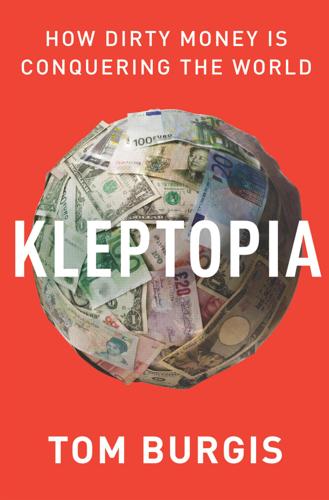
Kleptopia: How Dirty Money Is Conquering the World
by
Tom Burgis
Published 7 Sep 2020
The covert projects would include ‘cyber assaults’ on Ablyazov and those close to him, ‘psyops’ based on a profile produced by psychologists, recruiting ‘agents of influence’ such as journalists, academics and politicians, suborning Ablyazov’s people wherever possible with ‘inducements of all kinds’, bugging and sabotage – ‘the specialists we use are “the best of the best”’ – as well as ‘staff infiltration’, liaising with ‘common enemies’ and ‘media manipulation globally’. Robertson was evidently a practised fake newsman. He knew that, rather than go straight to a reporter with a smear, it worked better if you first planted your disinformation online, say in some anonymously written blog. Thus ‘established’, such allegations ‘can legitimately be reported by the mainstream media’. They could say whatever they wanted about Ablyazov: ‘perverted sexual proclivities, allegations of extreme criminality, jihadi sympathies’. In another email on Kazaword, the nationalised BTA Bank agreed to pay Robertson’s firm $5 million.
…
They had the same taste in operatives. Trump selected as his top intelligence official a propagandist called Richard Grenell. ‘A lie gets halfway around the world before the truth even has a chance to get its pants on,’ was the quotation, misattributed to Winston Churchill, atop his firm’s website. The disinformation campaigns Grenell himself had orchestrated underscored the point. Before he served the president, he served private clients with a need for alternative facts – among them ENRC, the Trio’s corporation. As for enemies, Trump and Sasha’s approach suggested they concurred with Nazarbayev: ‘Those who agree with and accept his opinions and stick to the rules are in “his” group.
…
Vogel and Maggie Haberman, ‘Conservative website first funded anti-Trump research by firm that later produced dossier’, New York Times, October 27, 2017, nytimes.com/2017/10/27/us/politics/trump-dossier-paul-singer.html a propagandist: Josh Kovensky, ‘Grenell’s past foreign clients make him unprecedented choice to lead intel community’, Talking Points Memo, February 26, 2020, talkingpointsmemo.com/muckraker/grenells-past-foreign-clients-make-him-unprecedented-choice-to-lead-intel-community ‘A lie gets halfway’ . . . among them ENRC: Archived version of Capitol Media Partners website, services page, web.archive.org/web/20120620093013/http://capitolmediapartners.com/?page_id=7, and clients page, web.archive.org/web/20120620093019/http://capitolmediapartners.com/?page_id=9. The author emailed Capitol Media Partners to ask what Grenell did for ENRC but received no reply disinformation campaigns: Michael Ames, ‘How Trump’s new intelligence chief spread misinformation about Bowe Bergdahl’, Politico, March 11, 2020, politico.com/news/magazine/2020/03/11/richard-grenell-smear-against-bowe-bergdahl-125157 he discovered: David Gerrard and Elizabeth Gerrard v Diligence, particulars of claim, September 6, 2019 Anna Machkevitch: Tabby Kinder, ‘Court date for Hirst collector’, The Times, June 15, 2019, thetimes.co.uk/article/court-date-for-hirst-collector-w2092w006 Benedikt Sobotka: Samuel Rubenfeld, ‘UK drops prosecution of mining executive’, Wall Street Journal, November 6, 2018, wsj.com/articles/u-k-drops-prosecution-of-mining-executive-1541532653 returned to private practice: ‘Former SFO senior prosecutor joins Cohen & Gresser’s London office’, Cohen & Gresser press release, September 2018, sites-cohengresser.vuture.net/8/108/september-2018/jwg-announcement-final.asp?

Elon Musk
by
Walter Isaacson
Published 11 Sep 2023
Alongside the layoff decisions, the issue of content moderation dominated Musk’s first week at Twitter. He had been waving the banner of free speech, but he was learning that his views were too simplistic. On social media, a lie can travel halfway around the world while the truth is still putting on its shoes. Disinformation was a problem, as were crypto scams, fraud, and hate speech. There was also a financial problem: jittery advertisers did not want their brands to be in a toxic-speech cesspool. In early October, a few weeks before he was due to take over Twitter, Musk had raised in one of our conversations the idea of creating a content moderation council that would decide these issues.
…
A few days earlier, he wrote a “Dear Twitter advertisers” letter promising, “Twitter obviously cannot become a free-for-all hellscape, where anything can be said with no consequences!” But his Paul Pelosi tweet undermined that pledge by exemplifying what advertisers disliked about Twitter: it could be a cesspool of falsehoods and weaponized disinformation that people (including Musk) spread in impulsive and reckless ways. Advertising accounted for 90 percent of Twitter’s revenue. It was already declining due to an ad recession, but after Musk took over it began to fall much faster. It would tumble by more than half in the next six months. * * * Late that Sunday night, Musk flew to New York City to meet with Twitter’s ad sales team and try to reassure advertisers and their agencies.
…
Most notably, Taibbi included messages from 2020, when Yoel Roth and others at Twitter debated whether to block links to a New York Post story about what was purported to be (correctly, as it turned out) a laptop abandoned by Joe Biden’s son Hunter. The messages showed many of them scrambling to find rationales for banning mention of the story, such as claiming that it violated policies against using hacked material or might be part of a Russian disinformation plot. Those were flimsy covers for censoring a story, and both Roth and Jack Dorsey would later concede that doing so was a mistake. These and subsequent revelations by Taibbi were covered by some big press organizations, such as Fox News, but much of the traditional media labeled it, as one Twitter hashtag put it, a “#nothingburger.”
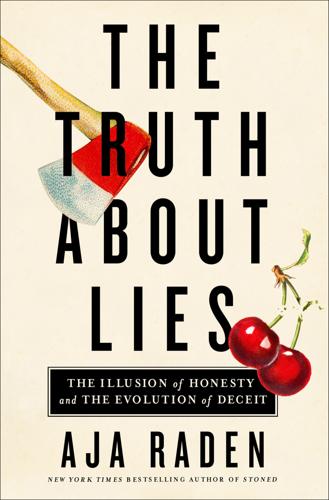
The Truth About Lies: The Illusion of Honesty and the Evolution of Deceit
by
Aja Raden
Published 10 May 2021
Perhaps, in the end, truth is the oldest trick in the book. 7 FAKE NEWS Hoaxes, Hysteria, and the Madness of Crowds The truth, indeed, is something that mankind, for some mysterious reason, instinctively dislikes. —H. L. MENCKEN Whoever controls the media, controls the mind. —JIM MORRISON HOAXING Though they might seem similar, a Hoax is not a practical joke, nor is it a simple fraud. It’s a very specific type of con that involves either disinformation or misinformation, often both. A Hoax is undertaken with either malice or the intention to profit materially or situationally by propagating falsehood and successfully deceiving, at least temporarily, a great number of people. A Hoax is perpetuated by first identifying a target group of people; next manufacturing a falsehood that will uniquely frighten or appeal to them, in some cases manufacturing evidence; and then finally letting the falsehoods spread organically so as to have greater supposed credibility and therefore power.
…
It’s very possible that these two separate news stories—that the Great Wall would be torn down by Americans seeking trade with China and that Americans demanded the wall of Chinese tariffs and protectionism be torn down to facilitate trade—one literal and threatening, the other metaphoric and merely entitled, were conflated and confused by the time they reached the Chinese, who were already more than a little angry over numerous foreign encroachments and aggressions. In fact, this fiction, cooked up half a world away by a team of drinking buddies, was later alleged to have helped catalyze the Boxers rage into action and contributed to the Boxer Rebellion. Like every other Hoax, there was no curing this compelling disinformation with truth: according to a 1939 account of a lecture Bishop Henry Warren gave after returning from working in China, “The story was published with shouting headlines and violent editorial comment. Denials did no good. The Boxers, already incensed, believed the yarn and now there was no stopping them.

Quarantine
by
Greg Egan
Published 13 Dec 1994
I mean, I couldn’t say to the fucking Director, “If you’re such a genius, you tell me how she does it. You tell me how to stop her.” ‘ I shake my head. ‘She didn’t do any of this. She can’t have. Somebody took her. All three times.’ ‘Yeah? Who? Why? What do you call the first two times—dry runs?’ I hesitate. ‘Disinformation? Someone trying to convince you that she could break out on her own, so that when they finally took her, you’d think—’Casey is miming severe incredulity, verging on physical pain. I say, ‘Okay. It sounds like a load of crap to me, too. But I can’t believe she just walked out of there, alone.’ * * * It takes me forever to get to sleep.
…
Apparently, the program loops endlessly once it finds the factors, repeatedly confirming the result… so either I’ve caused some permanent corruption which is making the machine consistently lie, or the whole audacious scheme has worked—and an independent check on a second computer will soon settle the issue. Just what our sceptical clients will make of this impossible feat, I don’t know; in their place, I’d suspect I was being set up for a torrent of disinformation. Maybe they’ll decode great slabs of genuine data, and assume that it’s all designed to mislead them. I glance up at a patch of cloudless blue sky, and laugh. Po-Kwai is on a rest day, but that’s no problem; I’ve used Ensemble successfully under these conditions three times before. The smeared Nick-and-(dreaming)-Po-Kwai clearly has it down to a fine art now, the requisite skills preserved between incarnations in some corner of my skull, or hers, or both.

Outnumbered: From Facebook and Google to Fake News and Filter-Bubbles – the Algorithms That Control Our Lives
by
David Sumpter
Published 18 Jun 2018
He wasn’t particularly candid when I asked him questions about what they do, but he was keen to tell me one thing: ‘The algorithms Facebook uses are criminal in my opinion, slanted and manipulated, and not always for the right reasons or to benefit the users.’ Apparently, it isn’t as easy as it used to be to spread racism, misogyny and intolerance on social media. Disinformation and fake news have become a prominent feature of all elections. Two days before the French presidential election in 2017, an online disinformation campaign took off around the hashtag #MacronLeaks. Computer hackers had broken into the Emmanuel Macron campaign’s email accounts and posted the contents online. On Twitter, the #MacronLeaks campaign aimed to make sure that people knew about the hack and to create maximum uncertainty about the contents of the leak.

The Light That Failed: A Reckoning
by
Ivan Krastev
and
Stephen Holmes
Published 31 Oct 2019
The problem is that most orchids are too dispersed through the jungle for the wind to carry pollen to them; they depend on insects or birds for this crucial service. But since they do not provide any food or other nutrients for these carriers, orchids have to trick them into perpetuating their species. It was taking care of the orchids and exposing Soviet double agents that made Angleton believe that ‘the essence of disinformation is provocation, not lying.’98 When denying the well-documented presence of Russian Special Forces in Crimea and Eastern Ukraine, Putin was not lying. He was provoking, that is goading and needling and poking at the West to elicit a sub-rational, stammering response. He was trying to destabilize and demoralize the West by forcing it to confront the limits of its power.
…
Although the transformation of English into the global lingua franca once seemed like a signal example of America’s soft power, it now appears to have created a world in which America’s military dominance and economic success are undermined by cultural illiteracy, incurious parochialism and indifference.51 The problem is exacerbated by the tendency for State Department specialists who know the languages and cultures to be sidelined by Defense Department heavyweights who do not. In any case, lack of familiarity with the language, history and politics of other nations naturally engenders suspicion and fear of what one only dimly comprehends. It also raises the chances of being deliberately deceived by carefully tailored, agenda-driven disinformation. When American military personnel in Afghanistan or Iraq report about locals that ‘the only language they understand is force’, they are revealing more about their own monolingual provincialism and tunnel-vision than about the country in which they are stationed and whose domestic conflicts they struggle vainly to decipher.52 Failure to grasp how others think makes strategic action difficult, since strategy requires an ability to foresee how others are likely to react to one’s initiatives.
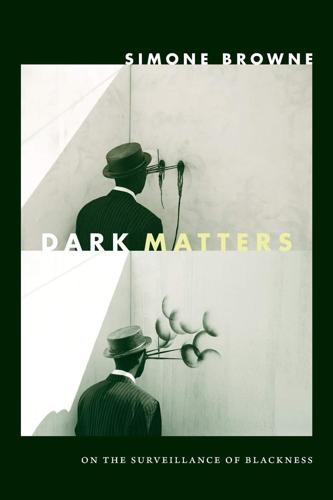
Dark Matters: On the Surveillance of Blackness
by
Simone Browne
Published 1 Oct 2015
Of the scholars that have written about surveillance as it concerns black people, many have taken as their focus the FBI Counterintelligence Program (COINTELPRO) that ran from 1956 until 1971 and that saw individuals and domestic political organizations deemed subversive, or potentially so, come under investigation by the bureau with the aim of disrupting their activities, discrediting their efforts, and neutralizing their effects, often through infiltration, disinformation, and the work of informants. Sociologist Mike Forrest Keen’s study of the FBI’s surveillance of sociologists such as W. E. B. DuBois and E. Franklin Frazier, David Garrow’s The FBI and Martin Luther King Jr., Theodore Kornweibel on the FBI’s surveillance of the activities of Marcus Garvey and the United Negro Improvement Association through the use of informants and disinformation, or Carole Boyce Davies’s writings on the intense FBI scrutiny of Trinidadian activist, Marxist, and journalist Claudia Jones, for example, form part of this scholarly work.

How to Fix the Future: Staying Human in the Digital Age
by
Andrew Keen
Published 1 Mar 2018
Orchestrated by Vladislav Surkov—Putin’s personal advisor and, according to the Anglo-Russian writer Peter Pomerantsev, the “hidden author of Putinism”19—it’s a style of government intent on transforming politics into a tightly produced reality television show of innuendo, gossip, and menacing unreality. Surkov’s Putinism—not unlike, in many ways, the Trumpist spectacle produced by Stephen Bannon and Breitbart News in the United States—transforms politics into a real-time, always-on war of misinformation and disinformation. It is a definitively untrustworthy operation, run, to borrow some words from the Russian opposition leader Alexei Navalny, by a party of “crooks and thieves.” And the internet, with its absence of curatorial authority and the anonymity of many of its users, has become the ideal medium for orchestrating this new type of war against truth.
…
It has been held responsible for interfering with the 2016 US presidential election.23 Things have got so bad in this onslaught of fake news that in 2015 the European Union set up East Stratcom, its own eleven-person team to defend the Continent against fake news. Recent online lies have included the Swedish government’s support of the Islamic State and EU’s plans to regulate snowmen. Created by the EU to address, in its words, “Russia’s ongoing disinformation campaigns,” East Stratcom has discredited twenty-five hundred stories in the sixteen months since its establishment.24 A year after I met Ilves, I was invited to speak at the St. Petersburg Economic Forum, often dubbed the Russian Davos, on a panel about government policy toward data. The panel, which included two of Putin’s most senior advisors on digital policy, was addressing the question: “Is big data a natural asset or a commodity?”
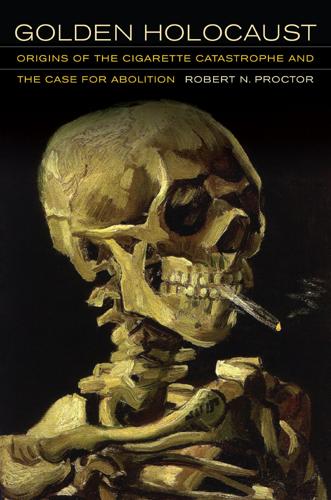
Golden Holocaust: Origins of the Cigarette Catastrophe and the Case for Abolition
by
Robert N. Proctor
Published 28 Feb 2012
“Silent Collaborators”: Clandestine Cancer Research Financed by Tobacco via the Damon Runyon Fund 14. Ecusta’s Experiments 15. Consensus, Hubris, and Duplicity PART THREE. CONSPIRACY ON A GRAND SCALE 16. The Council for Tobacco Research: Distraction Research, Decoy Research, Filibuster Research 17. Agnotology in Action 18. Measuring Ignorance: The Impact of Industry Disinformation on Popular Knowledge of Tobacco Hazards 19. Filter Flimflam 20. The Grand Fraud of Ventilation 21. Crack Nicotine: Freebasing to Augment a Cigarette’s “Kick” 22. The “Light Cigarette” Scam 23. Penetrating the Universities 24. Historians Join the Conspiracy PART FOUR. RADIANT FILTH AND REDEMPTION 25.
…
We are encouraged to think of cigarettes as more like coffee or chocolate or a very fine brandy—and not like choking phlegm and a ghostly shadow life in the hospital with tubes up your nose. Smoking is not supposed to be like lead paint or toxic waste or the white-knuckled grip of addiction but rather like hope and peace and choice and the very satisfaction of life itself. 18 Measuring Ignorance The Impact of Industry Disinformation on Popular Knowledge of Tobacco Hazards After smoking Camel cigarettes for twenty-four (24) years, my lungs are as clean as a whistle. SYLVIA SINDELAR TO REYNOLDS, APRIL 28, 1958 Take old George Burns for example; he’s been smoking for (probably) 60 years now, and is probably healthier than average for a man of his age.
…
An equally misleading propaganda piece, titled The Answers We Seek, had been shown to 324,512 viewers by 1982, including tens of thousands of children.22 TESTIMONIALS OF SMOKERS: THE CONSUMER LETTERS Public opinion polls show that millions of Americans still do not appreciate many of the dangers of tobacco use.23 That is perhaps not surprising in a nation where huge swaths of the population don’t know that humans share a common ancestor with apes, or cling to the preposterous notion that Iraq—or the CIA or Israel—conspired to blow up the Twin Towers of the World Trade Center or that Barack Obama is a secret Muslim. H. L. Mencken once observed that no one ever went broke underestimating the intelligence of the American public; of course the real issue is not lack of intelligence but rather the lingering effects from one of history’s most powerful disinformation campaigns. What can we say about knowledge, beyond what we’ve already learned from polls? The letters written to the tobacco companies are useful in this regard, since here we have the unfiltered testimony of consumers, or at least of those going to the trouble of writing and mailing a letter.

We Are Anonymous: Inside the Hacker World of LulzSec, Anonymous, and the Global Cyber Insurgency
by
Parmy Olson
Published 5 Jun 2012
Barr started talking to Hunton & Williams, a law firm whose clients—among them the U.S. Chamber of Commerce and Bank of America—needed help dealing with opponents. WikiLeaks, for example, had recently hinted at a trove of confidential data it was holding from Bank of America. Barr and two other security firms made PowerPoint presentations that proposed, among other things, disinformation campaigns to discredit WikiLeaks-supporting journalists and cyber attacks on the WikiLeaks website. He dug out his fake Facebook profiles and showed how he might spy on the opponents, “friending” Hunton & Williams’s own staff and gathering intelligence on their personal lives. The law firm appeared interested, but there were still no contracts come January 2011, and HBGary Federal needed money.
…
Already, rumors were spreading that LulzSec had been founded by the same crew that had hit HBGary. Enemy hackers were posting documents filled with details they had dug up online about each member, much of it wrong but some of it hitting close to home. LulzSec’s members needed to switch their focus from finding targets to protecting themselves. Kayla suggested a mass disinformation campaign. Her idea was to create a Pastebin document revealing that Adrian Lamo owned the domain LulzSec.com; then to add details of other Jesterfags and claim they were members of LulzSec; then to spam the document everywhere. It was a classic social-engineering tactic, and it sometimes worked.
…
While Sabu was an informant, his lies were aimed at not only other hackers but also journalists. Together with his FBI handlers, he would lie to reporters who hoped for an online interview. Sometimes the reporters were speaking to federal agents, other times it was Sabu but with the agents looking over his shoulder. In the end, it was just another disinformation campaign. Throughout his volatile year with Anonymous, Sabu had proved himself to be a masterful liar. But there was one thing he could not seem to fabricate: his name. At one point in 2011, before his FBI arrest, Hector Monsegur dropped the nickname Sabu online and started trying to use the new nickname Kage or Kaz in private IRC channels.

Ghost in the Wires: My Adventures as the World's Most Wanted Hacker
by
Kevin Mitnick
Published 14 Aug 2011
Well, I have to admit that the plan I came up with may not actually have been all that low-key or cover-your-ass, though I knew I had to be very, very careful. I sent a bogus log file from the administrator’s account to the FBI agent, telling him “we” had more logs detailing the hacker’s activities. I hoped he would investigate and end up chasing a red herring as I continued working on my hacking projects. We call this tactic “disinformation.” But knowing that the FBI was on the hunt for the Novell hacker wasn’t enough to make me shut down my efforts. Since Art Nevarez had become suspicious, I assumed that the Novell Security team would be forming a posse, trying to figure out what had happened and how much source code had been exposed.
…
With nothing to lose, I told Ginger I was a private investigator hired to collect evidence against the firm. And “I’m not allowed to discuss it.” I went on, “One thing I can tell you. Everything is bugged—there are listening devices in Elaine’s office and under the raised floor in the computer room.” I figured she would walk—no, run—to Elaine’s office with the news. I hoped the disinformation tactic would raise doubts about the stories I had told Ginger in the past—so they wouldn’t know what to believe. Every day, I would check De Payne’s Netcom account looking for any messages he had left for me to find. We were protecting our communications with an encryption program called “PGP” (short for “Pretty Good Privacy”).
…
I asked her to read me the “cabling information,” and as I’d suspected, there was “special equipment” recently connected to her line. The clerk said the order had been placed a few days earlier by a Centel security agent named Sal Luca. I felt like turning the tables on Luca by tapping his line, but I knew it wouldn’t yield any valuable information. My next thought was to feed my pursuers disinformation by calling my grandmother with some cock-and-bull story that I was in the Great White North. But I didn’t want to put her under any more stress than she was already dealing with. While I was thinking over my next move, I had to continue building my new identity. On February 2, I had an appointment to take the driving test to upgrade my learner’s permit to a driver’s license under my G.
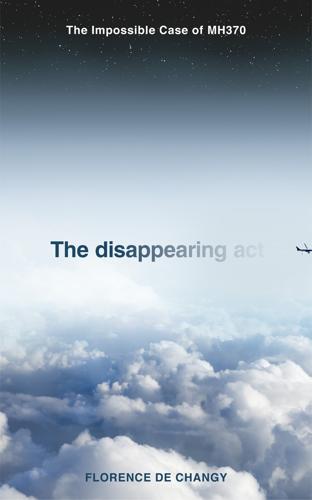
The Disappearing Act
by
Florence de Changy
Published 24 Dec 2020
The media actually carried a heavy responsibility for promoting anything and everything related to MH370, although they would give the sorry excuse that the story has been selling so well. ‘When a rumour gets too close to the truth that you don’t want known, you can either nip it in the bud, drown in it a lot of other rumours, or simply feed the doubt,’ explained my expert in disinformation over our coffees. From then on, I became increasingly aware that in this complicated story we were not only dealing with false rumours but also with fabricated rumours. That something catastrophic happened to Flight MH370 in the night of 7 to 8 March 2014 was nevertheless a concrete reality.
…
Finally, at 1.30 am local time in Malaysia, sweeping aside the protocol that should have had France, in charge of this part of the investigation, be the official spokesperson, and flouting the agreement between all the participants in the analyses that any announcement would come with a proviso, the prime minister in person declared explicitly that ‘all the experts have confirmed that the part was off MH370’. He added, ‘We now have physical proof that, as I announced on 24 March last year [2014], Flight MH370 clearly ended up in the Indian Ocean.’ Ludicrous! This followed a classic rule of disinformation. The first piece of information is unconsciously treated as the best, the strongest. Not only is the brain more open to the first piece of information it receives, but it latches onto it. There’s nothing more annoying than to be given information contradicting something you have already heard or understood relating to the same event.
…
Yet the idea that we are being blatantly cheated by the governments we are supposed to trust is so uncomfortable and so problematic that, for the sake of our mental comfort, we choose to look elsewhere and welcome any alternative explanation, including one that makes no sense and falsely accuses a decent man of being a mass murderer. Disinformation is an old game, probably as old as humankind. Over the ages, methods have multiplied in number, diversified in type and improved in quality. In the case of MH370, many different means were deployed at the same time. The advance of truth has been crippled from day one. First of all, the simplest scenario in which the plane crashed shortly after it was last seen on radars by the regional ATCs was quashed and tampered with in record time, despite a cluster of clues and a wealth of corroborating evidence.
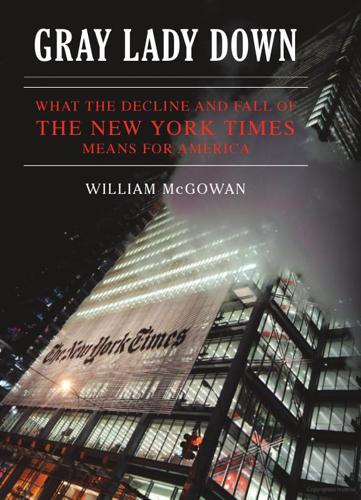
Gray Lady Down: What the Decline and Fall of the New York Times Means for America
by
William McGowan
Published 16 Nov 2010
The Times cheered when President Obama released the so-called “torture memos” detailing previously classified information on CIA interrogation methods; “Memos Spell Out Brutal CIA Mode of Interrogation,” its front-page headline screamed. When Obama gave his May 2009 speech on terrorism and detention policy, the editorial board expressed “relief and optimism,” saying that for seven years “President George W. Bush tried to frighten the American public—and successfully cowed Congress—with bullying and disinformation.” Obama, said the editors, “was exactly right when he said Americans do not have to choose between security and their democratic values. By denying those values, the Bush team fed the furies of anti-Americanism, strengthened our enemies and made the nation more vulnerable.” Obama himself had sent a number of signals that while he would be breaking with certain Bush terror policies, there would be no retribution.
…
Martinez came in after the rough stuff, “the ultimate good cop with the classic skills: an unimposing presence, inexhaustible patience and a willingness to listen to the gripes and musings of a pitiless killer in rambling, imperfect English,” Shane reported. “He achieved a rapport with Mr. Mohammed that astonished his fellow C.I.A. officers. A canny opponent, Mr. Mohammed mixed disinformation and braggadocio with details of plots, past and planned. Eventually, he grew loquacious.” They would have long talks about religion, comparing notes on Islam and Catholicism, one CIA officer recalled, adding another detail that no one could have predicted: “He wrote poems to Deuce’s wife.” The story of Martinez and KSM, suggested Shane and the Times, appeared to show that traditional methods alone might have elicited the same information or more from KSM than were obtained by waterboarding.

From Gutenberg to Google: electronic representations of literary texts
by
Peter L. Shillingsburg
Published 15 Jan 2006
Finally, Google’s method of costing and financing its services through user-fees for its advertisers based on hits rather than on licenses or product sales suggests a way to structure the finances of electronic knowledge sites that is significantly different from the sale of books or subscriptions to databases. Yet, web browsers, regardless of the sophistication of their prioritizing processes, have no scholarly refereeing system to vouch for the quality of information and disinformation accessed in a search. Web browsers are independent of concerted efforts to develop coherent bodies of knowledge, thus a search provides at least initially a disordered array of information sites where reliable information and accurate representations of foundation documents are undistinguished, and perhaps indistinguishable, from rumors and gossip.
…
Index abridgment 32 access to texts 85 open source 106, 108 adaptation 20, 85 aesthetic object 5, 169, 174–6, 178, 182, 186 author’s 174 editor’s 184 intended 174 aesthetics 22, 23, 188 agnosia, tonal 48 Altick, Richard 128 aphasia 47–8 archives 4, 34, 82, 85 CD-based 121 archivists 4, 12 Aristotle 29 artifacts 13, 24, 26, 169, 174–5, 178, 182, 186–7 assumptions 191 Austin, J.L. 46 Australian Colonial Texts Series 36 authenticity 23 author 6, 53, 174 commentary 158 European 186 function 53 German 176 literary 63 putative 34–6, 45 authoring 50 authority 6, 32, 174, 177 author’s 52 in script acts 56 mixed 182–4 unmixed 184 authorship 130 economics of 130 Barthes, Roland 60 Barwell, Graham 10, 141 Beardsley, Monroe 60 Beckett, Samuel Samuel Beckett project 108 Beowulf project 4, 108 Bernays, M. 170 Berrie, Phill 10, 91, 118, 124, 142 bibliographic codes 16–18, 72 Bickerton, Derek 42–3 Binder, Henry 84 biography 60 Birney, Earle 187 Blake, William 4, 142 book 12–14 ‘‘bookness’’ of’ 139 buyers 6, 135 electronic 1–2, 28–9, 65; complexity of 28; as distinguished from print books 29; quality of 29–30 physical condition of 129 as physical object 12, 49, 127, 135 print book 1, 65; advantages 29; as copytext 168; as distinguished from electronic books 29; survival rate 27 production 6, 64 virtual 141 book collecting 151 book historians 136 book history 158 goal of 135 Boorstin, Daniel 193 Bordalejo, Barbara 10 Bornstein, George 8, 16 Bowden, Ann 133–4 Bowers, Fredson 9, 25, 153, 185 Bradbury and Evans 36 Braddon, Mary Elizabeth 147 Bradford, Robin 153 Bree, Linda 10 British Empire 131 Brown, Charles Brockden 164 Brown-Rau, Alexandra 108 Bryant, John 8–9 209 210 Index Burton, Anthony 123 Byron, George Gordon, Lord 16, 72, 185 Caldwell, Price 10, 75, 77 Calvin, William H. 43, 46 Cambridge, Ada 36 Carlyle, Thomas 161, 170 Carey, Peter 64 Caxton, William 179 censorship 33 Center for Editions of American Authors (see Modern Language Association) Cervantes 29 Chaucer, Geoffrey 4, 87, 179–84 Chaucer project 142, 144 The General Prologue on CD-ROM 87 Chesnutt, David 142 Chopin, Kate 36 Clark, Marcus 120 Cockran, Patti 142 codex 29, 85 Cohen, Morton 131 Colby, Robert 122 Cole, Gavin 10 collation Hinman Collator 110 historical 164 Lindstrand Comparator 110 sight 22, 110 software 107 Committee on Scholarly Editions (see Modern Language Association) communication 7, 41–2, 45 event 67 of determinate effects 63 theory 140 Communist Manifesto, the 16–18 compositors 181 computer files legacy research materials 109, 112, 115, 122; quality control 116 computer technology 26–8, 139 (see also software and markup) Contemporary German Editorial Theory 9, 169 context 31, 54, 66, 78, 146, 191 functional 67 generative 54 generic 55 historical 59, 130 matter 54 place 54 relevant 74 sense-making 73 thematic 55 time 54 contextualization 55 conventionality 41 conventions 50–1 copyright 139 copyright law 132 costing 2 Crane, Stephen 84 criticism, literary 12, 63, 83, 151 junk 75 Marxist 130 New 60, 75 Practical 60 psychological 60 reader response 45 textual (see textual criticism) critics literary (see criticism) textual (see textual critics) Cross, Nigel 127, 128 cultural engineering 163 deconstruction 51–3 Descartes, René 198 Dedner, Burghard 26 Deppman, Jed 10 Derrida, Jacques 43, 51, 60 de Saussure, Ferdinand 60 de Smedt, Marcel 91, 108 Dewey, John 196 Dickens, Charles Clarendon Dickens editions 134 Dickinson, Emily 4, 65, 75 Emily Dickinson project 142 Dijksterhuis, E. J. 192 discourse communities 23, 43 disinformation 2 documents 13, 14–15, 26, 180–1, 184 authority 182 foundation 2 paper 1 physical 5, 96, 174 source material 2, 19, 111 Donne, John John Donne Variorum 107 Dreiser, Theodore 83 Duggan, Hoyt 142 DVD movie 85 Eaves, Morris 142 Eco, Umberto 60, 192 editing 111, 145, 157, 179 as creative activity 7 electronic 1 Index French genetic criticism 9 German historical-critical 9, 169, 178 goals of 12 intentionalist school 56, 169, 185 as reconstruction 26, 52 as restoration 7, 26 scholarly 31, 44, 95, 109, 140, 152, 161–2, 174; computer-assisted 97; goal of 82, 170, 174, 81–2, 96; as literary criticism 144, 166; paradigm 81 textual 171 theory 11 edition CD-based 121 clear-text 18, 154, 172 customized 82 critical 156, 184 electronic 4–5, 16, 34, 38, 82, 98, 164; characteristics 89–90; creation of 94; design and construction of 94, 103, 114, 145; discussion of 92; limitations of 110; linking 156; The Literary Text in the Digital Age 141; navigation 98; ‘‘pulp texts’’ 140 electronic scholarly 50, 85, 88, 96–7, 103, 149; adaptations 102; bibliographical analysis 101; capabilities 101–2; collations.101; context presentation 93, 101; digital images 101, 107; document representation 92, 101; emendations 101; history of 141–2; industry standards 98, 99; intertextuality 102; linguistic analysis 102; methodology 93; reception history 102; textual analysis 101; transcriptions 101; user enhancements 102; uses for 93 failure of 157 first 129, 149 Historical-Critical 173 print 97; limitations of 110; as off-shoots of electronic editions 97–8; reprint 139–40, 149 print scholarly 117, 164 scholarly 7, 34, 84, 173; components 169; introduction 146 user 12, 82–3, 97 user-controlled 83 editors 82, 96–7, 144, 170 Anglo-American 173–6, 178, 182–4 controlling 83 function 99 German historical-critical 172–6, 181, 184 insight 169, 172 of new projects 111 presence in text 163 scholarly 56, 94, 109, 157, 168, 179, 180; responsibility of 171 Eggert, Paul 8, 10, 12, 26, 91, 141–2, 190 Eliot, George 148 Mill on the Floss 166–7 Eliot, Simon 128 error 15, 20, 30, 155, 184, 189 innocent 15, 30, 85 misprints 178 sophistications 15, 30–1 typographical 15, 30, 72 Essick, Robert 142 facts 191 Faulkner, William 180–1 Feltes, N.N. 131 financing 2, 103–4, 106, 112–13 Fiormonte, Domenico 4, 10 Firestone Library 146 Fitzgerald, F.
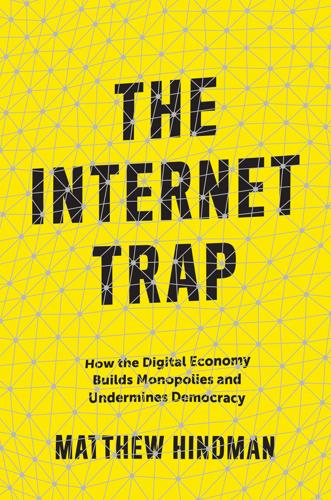
The Internet Trap: How the Digital Economy Builds Monopolies and Undermines Democracy
by
Matthew Hindman
Published 24 Sep 2018
By contrast, solutions that depend on voluntary action by a few small firms are untenable on their face. For firms that do want to limit their collection of private data, there is currently no solution to this prisoner’s dilemma. Strong regulation is the only way out of this catch-22. Public Discourse and Disinformation Evolutionary audiences create other vulnerablities, too: they provide novel and often insidious ways for states to influence public discourse. Recent work by Samantha Bradshaw and Phil Howard has catalogued the rapid emergence of “cyber troops”—organized government, military, or political party teams trying to shape public opinion on social media—in more than two dozen countries.39 Some states have developed and used these capabilities to constrain domestic media.
…
and, 1, 3 auctions, 3, 42, 86, 101 audience reach: attention economy and, 11–14; categories of content and, 165; churn and, 9, 84–85, 88–95, 100–101, 163–64, 167; compounded, 133; Darwinism and, 13, 136, 165–67, 169, 203n9; distribution of, 6, 12–13, 84–85, 88–100, 112, 114, 155, 167–69, 171, 179, 185; evolutionary model and, 164–67; false solutions and, 137–46; growth patterns in, 84, 88, 91, 95–96, 100; headlines and, 13, 32, 36, 38, 107, 147, 149–50, 154–57, 160–61; logarithms and, 88–96, 97, 100, 184–86; methodology and, 184–92; mobile devices and, 2–4, 13, 39, 69, 109, 137, 142–44, 147, 152, 160, 165, 167, 170, 179; nature of internet and, 162–80; news and, 104–18, 121–22, 126–30, 133–39, 142–49, 152, 154, 157–61, 169; overlap and, 67, 76–77, 108, 110; paywalls and, 132, 137–40, 147, 160; public sphere and, 10–11, 13–14, 99, 169; rankings and, 7, 25, 31, 54, 84–96, 100, 110–12, 136, 157, 186; recommendation systems and, 60 (see also recommendation systems); stability and, 165; traffic and, 83–96, 99–101, 104–11, 114–18, 121, 129, 134, 169, 186–89; unique visitors and, 87–88, 106–11, 128, 134 AWS, 153, 168, 203n28 Ayres, Ian, 3 Bagdikian, Benjamin, 171 Bai, Matt, 7 Bankler, Yochai, 12, 170 Banko, Michele, 51 Bank of America, 9 Barlow, John Perry, 162–63, 176 BBC, 32 Beam, Christopher, 35 behavioral targeting, 55–58 Being Digital (Negroponte), 38 Bell, Robert, 44–49 bell curve, 92–93, 95 BellKor, 44–49 Bellman, Steven, 34 Bell Telephone, 16–17 Berners-Lee, Tim, 3 Bezos, Jeff, 72, 139, 147, 150 Bieschke, Eric, 38 BigChaos, 47 BigTable, 21, 23 Bing: attention economy and, 3; economic geography and, 79; Experimentation System and, 28; experiments and, 24–25, 28, 31; market share of, 3, 30–31, 195n63; nature of internet and, 174; news and, 32, 61, 134; page views and, 24; revenue and, 24, 31, 70; tilted playing field and, 24, 28, 30–32 “Bing It On” (Microsoft campaign), 31 black box problem, 52 blogs: attention economy and, 7–9, 13; Darwinism and, 136; economic geography and, 77; methodology and, 189; nature of internet and, 169; news and, 121, 133, 136–37, 155–56, 159; personalization and, Index 45, 50; political, 136; tilted playing field and, 17, 25, 35; Webb and, 45 Boczkowski, Pablo, 70–71 Borg, 21, 23 Boston, 113–14 Bosworth, Andrew, 162 Bowman, Douglas, 25 Box, George, 64 Bradshaw, Samantha, 177 Branch, John, 152 Brand, Stewart, 164 branding, 28–32, 36, 86, 166 Brexit, 58 Brill, Eric, 51 Broadband penetration, 124, 126, 190 browsers, 2, 24–25, 34, 107, 143, 175, 195n63 budget constraints, 72, 181 Buffet, Warren, 102 bundling, 65–67, 76–77, 197n8, 198n10, 198n14 Buzzfeed, 137, 145, 149–51, 159–60, 168 Caffeine, 21, 23 Cambridge Analytica, 40, 58, 59 Campus Network, 35–36 capitalism, 20, 85, 162, 176 Census Bureau, 190 Center for Public Integrity, 140 Chancellor, Joseph, 58 Chandler, Alfred, 20 Chartbeat, 107, 149, 153 Chicago, 113, 141 China, 80, 177–78, 193n5 Christie’s, 42 Chrome, 24–25, 145 churn, 9, 84–85, 88–95, 100–1, 163–64, 167 Chyri, Iris, 130 CineMatch, 43–44, 46, 50 Clauset, Aaron, 184 clickbait, 150 click-through rates, 56–57 cloud computing, 34, 153–54, 168, 203n28 CNN, 9, 32, 39, 72, 107, 159 Colossus, 21, 23 Columbia Journalism Review, 119, 148 Comcast, 172 comment systems, 19 comparative advantage, 62–63, 80, 82 • 227 competition: attention economy and, 1, 3–4, 6, 9, 11, 13, 165–66; bundling and, 67; economic geography and, 64, 67, 74, 78; nature of internet and, 164–70, 173–75; news and, 104, 114–15, 135, 137, 146, 149, 159, 164–70, 173–75; personalization and, 40; political economy and, 40–53, 60; search engines and, 1; social networks and, 35–36; tilted playing field and, 16–17, 21–22, 26–37; traffic and, 83, 86–87, 101 comScore: attention economy and, 10; nature of internet and, 187–88; news and, 104–10, 113, 116, 119–22, 127, 128–29; traffic and, 87, 199n19 concentration: attention economy and, 2–9, 13; dispersion and, 6, 42, 100, 200n23; economic geography and, 63–64, 68, 78, 80–81; forces of, 5–8, 19, 30, 61, 64, 80, 184; lopsided understanding of internet and, 5–8; markets and, 9, 30, 68, 78, 85–88, 99–100, 104, 114–15, 122, 127–30, 171, 184, 199n15; methodology and, 184; nature of internet and, 164, 171–72, 179; news and, 104, 114–15, 122, 126–28, 130, 134; personalization and, 39, 61; revenue and, 2–4, 8, 68, 171, 179; tilted playing field and, 19, 30, 32; traffic and, 7–8, 30, 32, 63, 83–88, 96, 99–101, 104, 122, 171, 199n15 Congress, 104, 141–42 conservatives, 32, 48, 69, 72, 75, 131, 175 consumption: attention economy and, 6, 10; branding and, 28–32, 36, 86, 166; bundling and, 65–67, 76–77, 197n8, 198n10, 198n14; digital content production and, 71–80; economic geography and, 63–68, 70–76, 79; experience goods and, 29–30; methodology and, 181–84; models and, 181–84; nature of internet and, 164–65, 168, 172–75; news and, 110, 113, 122, 125–29, 143, 149; personalization and, 42–43, 50, 57–58; preferences and, 5, 8, 32, 43, 54, 63–65, 69–81, 181–84, 198n41; price discrimination and, 66, 139; switching costs and, 8, 34, 63, 72, 78–79, 164; tilted playing field and, 17, 22–26, 29–34, 37; traffic and, 86; unique visitors and, 87–88, 106–11, 128, 134 cookies, 107 cost per thousand impressions (CPM), 69 court system, 6, 129, 148 creative destruction, 84, 167 228 • Index CSS, 143 CU Community, 35–36 DailyKos, 75 Daily Me, The, 38–39, 61 Daily You, The (Turow), 39 Dallas Morning News, 118 dark fiber, 21 Darwinism, 13, 136, 165–67, 169, 203n9 data centers, 2, 12, 15–16, 20–23, 54 data mining, 59, 135 data packets, 22, 171 “Declaration of the Independence of Cyberspace, A” (Barlow), 162–63 deep learning, 21 DeepMind, 23, 194n24 democracy, 7, 70, 103–4, 163, 175–78, 180 DeNardis, Laura, 171 Department of Justice, 115, 130 Des Moines Register, 136 Detroit, 83 digital content production model, 71–80 Dinosaur Planet, 46–47, 49 disinformation, 177–78 dispersion, 6, 42, 100, 200n23 distribution costs, 12–13, 155, 167–69, 179 diversity: economic geography and, 8, 63–64, 79; methodology and, 189, 191; nature of internet and, 180; news and, 104–5, 115, 118, 129–30, 149; personalization and, 53, 60–61 DNAinfo, 141 Dremel, 27 Duarte, Matias, 27 duopolies, 4, 30, 42, 68, 180 Earl, Jennifer, 169 Easterbrook, Frank, 175 eBay, 3, 26, 39, 42, 86–87, 175 economic geography: advertising and, 3–4, 63, 67–69, 80; agglomeration and, 9, 63, 82–83; aggregation and, 65–67, 76–77; Apple and, 79–80; apps and, 80; auctions and, 3, 42, 86, 101; audience reach and, 87, 104, 106–11, 114–18, 121, 129, 134, 169, 186–89; Bing and, 79; blogs and, 77; bundling and, 65–67, 76–77, 197n8, 198n10, 198n14; comparative advantage and, 62–63, 80; competition and, 64, 67, 74, 78; concentration and, 63–64, 68, 78, 80–81; consumption and, 63–67, 70–76, 79; customers and, 17, 24, 30, 33, 50, 57, 68, 149, 164, 172, 174; digital content production and, 71–80; dispersion and, 6, 42, 100, 200n23; distribution costs and, 12–13, 155, 167–69, 179; diversity and, 8, 63–64, 79; economies of scale and, 63–67, 74, 76, 79, 81; efficiency and, 63, 65, 67–68; Facebook and, 68, 79–80; Google and, 68–69, 79–80; government subsidies and, 133, 137, 140–42; hyperlocal sites and, 68, 77–78, 81, 101–4, 119, 121, 130–37, 164, 180; increasing returns and, 36–37, 63–64, 80–81, 181, 184; international trade and, 5, 62, 80; investment and, 73; journalism and, 78, 81; Krugman and, 6, 62–63, 80; lock-in and, 34–37, 61, 101, 173; long tails and, 8, 70, 84, 184, 199n15; markets and, 63–68, 74–75, 77–78; media preferences and, 69–71; Microsoft and, 65–66; models and, 63–65, 69–81, 198n27, 198n41; Netflix and, 70; networks and, 68–69; news and, 65–80; newspapers and, 65, 68–69, 78; page views and, 24, 87, 106, 108–18, 121, 125–29, 151, 157, 160–61, 188–89, 200n18; paywalls and, 107, 109, 132, 137–40, 147, 160; preferences and, 5, 8, 32, 43, 54, 63–65, 69–81, 181–84, 198n41; profit and, 73–77, 81; protectionism and, 174; quality and, 72–78, 81, 83–84; revenue and, 63, 65–68, 73–75, 79; search costs and, 8, 30, 34, 37, 41–43, 63, 72–74, 168, 181–82; search engines and, 64, 79–81; software and, 65–66; stickiness and, 74; subscriptions and, 65, 67; television and, 66, 70; traffic and, 63, 77–81; video and, 69, 76; Yahoo!
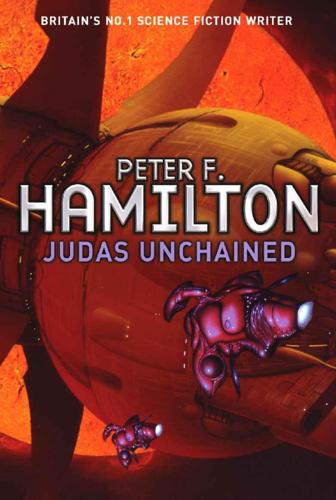
Judas Unchained
by
Peter F. Hamilton
Published 1 Jan 2006
‘Speaking of which; are you absolutely sure Elaine Doi is a Starflyer agent?’ Bradley leant forwards over the table. ‘That wasn’t us.’ ‘Excuse me?’ ‘A very well executed fake. I have to admit, the Starflyer is becoming quite sophisticated in its campaign against us. Physically, Bruce and his kind are causing a lot of expensive damage while disinformation like that shotgun is damaging our credibility. Just when we were starting to attract a degree of media interest, not to mention political support. Still, I blame myself, I should have anticipated such a move.’ Adam finally sipped some of the Gifford’s champagne to help wash down a scone. ‘You know, that might have been a dangerous move on their part.’
…
We are looking for any Starflyer connection among the Commonwealth political elite. She might well be the link.’ ‘Isabella as a Starflyer agent? That’s hard to swallow.’ ‘You said yourself there’s something wrong about her. That shotgun did a lot of damage to the Guardians’ credibility. It is logical to assume the Starflyer would use disinformation of that nature to damage its one true opponent. Her involvement would confirm her connection to its network.’ ‘But she’s only twenty-one, and she was going out with Kantil two years ago. How would she get mixed up in something like that so young? She spent most of her early life on Solidade.
…
As she said it, she realized how weak it sounded. ‘I should have absolute proof in a couple of days. That’s why I’m preparing the groundwork now.’ ‘They accused Doi of being a Starflyer agent. The President herself.’ ‘She’s not.’ Justine recalled the conversation she’d just had with Bradley Johansson. ‘That was part of a disinformation campaign to discredit the Guardians.’ He clicked his fingers. ‘Your interest in revisiting the Sorbonne Wood weekend. That’s a part of this as well.’ ‘We were being manipulated.’ ‘Preparing us for war. Yes, I see now. Just as the Guardians claim.’ ‘You say it with such scepticism.’ ‘And did you blindly follow your father’s belief?’
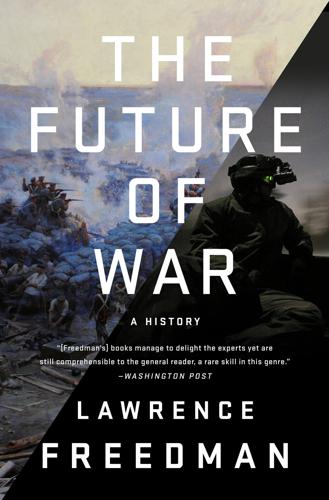
The Future of War
by
Lawrence Freedman
Published 9 Oct 2017
In addition, the possibilities of disinformation as war-fighting had been part of Soviet military doctrine.17 Russian efforts used social media to spread false messages and create misleading impressions to weaken opponents, especially with their own public opinion. The EU spoke of ‘hybrid threats’ because it saw this as a form of activity that could help undermine security even at times of comparative peace. Evidence was found in the role, confirmed by the US intelligence community, played by Russia during the 2016 presidential election, employing disinformation and leaks of hacked emails, in undermining Democrat Party candidate Hillary Clinton.
…
And on the other, it takes on the other definition of “cool,” in that it involves the latest cutting-edge technologies in ways that are changing the paradigm of conflict to a much greater degree than any of those employed during the Cold War—which was, after all, about old-fashioned geopolitical jockeying for advantage in anticipation of potential old-school total warfare.15 The risks attached to major war and the reluctance to commit substantial forces to lesser conflicts have led major powers to search for ways, whether subversion of the political process, economic coercion, cyber-attacks, or brazen disinformation campaigns, to influence events while keeping their liabilities limited and risks managed. Again there was the difficulty that these methods were unlikely to bring much to a conclusion but instead encouraged niggling, persistent conflicts until at some point a way was found to sort out the underlying issues or else some spark moved them out of the grey zone and back into open warfare.

Gaza: An Inquest Into Its Martyrdom
by
Norman Finkelstein
Published 9 Jan 2018
There is no one like him today, but in my bones I know this incredible warrior for Humanity and Justice is an archetype that has always been. And will always be. Small comfort in these dark times, perhaps, but a comfort I am deeply grateful for.” —Alice Walker, winner of the Pulitzer Prize and National Book Award for The Color Purple “As a modern-day Sisyphus, rolling the heavy boulder up the hill of disinformation, Norman Finkelstein does not waver in his determination to take it to the crest. Although a non-lawyer, he masters the legal issues, the Geneva Conventions, ICJ advisory opinions, UN resolutions, and commission reports, weaving them into a compelling narrative, an articulate appeal for justice, a protest against the moral cop-out of the international community.
…
But short of these options, Gaza could only exercise as much, that is, as little, agency as is allocated to any people held in bondage. The notion that enhanced fireworks emanating from an anthill could, in and of themselves, inflect state policy of one of the world’s most formidable military powers is laughable—or would be, were it not for that power’s formidable disinformation apparatus. The focus of this book is the politics of Gaza’s martyrdom. Its economic dimension has already been exhaustively and competently dissected.3 An observer cannot but be struck by the reams of paper that have been expended on analyses of, and prescriptions for, Gaza’s economy, even though its economy is more notional than real.
…
Martin Indyk, Innocent Abroad: An intimate account of American peace diplomacy in the Middle East (New York: 2009), p. 75. 66. Saed Bannoura, “Livni Calls for a Large Scale Military Offensive in Gaza,” IMEMC (8 December 2008); “Livni ‘Ashamed’ of State of Gaza Truce,” Jerusalem Post (9 December 2008). 67. Uri Blau, “IDF Sources: Conditions not yet optimal for Gaza exit,” Haaretz (8 January 2009); Barak Ravid, “Disinformation, Secrecy, and Lies: How the Gaza offensive came about,” Haaretz (28 December 2008). 68. A careful study covering the period 2000–2008 demonstrated that “overwhelmingly” it was “Israel that kills first after a pause in the conflict.” Nancy Kanwisher, Johannes Haushofer, and Anat Biletzki, “Reigniting Violence: How do ceasefires end?

What If We Get It Right?: Visions of Climate Futures
by
Ayana Elizabeth Johnson
Published 17 Sep 2024
Ayana: The other thing you’ve mentioned as a bad frame is “Change your individual and household behaviors in order to solve this,” as opposed to, “Here’s the policy problem that limits the choices even available to us at the household level.” Kendra: What’s interesting is how many stories there are about how I need to reduce my personal carbon footprint and how few stories I’ve read about how to get a bike lane in my neighborhood. Ayana: Totally. On another topic, how should journalists be handling disinformation and greenwashing? Because it seems relentless, popping up everywhere. Some articles feel awfully close to corporate press releases. Kendra: Especially when they’re talking about powerful companies—fossil fuel companies and car companies, companies that have a lot of money and a lot of weight—news outlets can be overly deferential.
…
Many individuals who work in the media come from backgrounds of relative power and relative prestige, and they’re not used to being yelled at in this way by other powerful and prestigious parties. It makes them uneasy. And so they acquiesce to these powerful actors. To your question about how to deal with disinformation, the answer is that certain news outlets need to woman up. They need to get a little bit tougher. They need to recognize that sometimes the people and entities they’re reporting on are going to try to defame and discredit them because their reporting is, in fact, accurate. News outlets need to have their reporters’ backs and stop watering down stories.
…
See architecture and design Design Emergency, 105, 106–7 See also Antonelli, Paola design justice, 100 determination, 399 development and development financing, Gallagher on, 264, 268–76 devotions, 388 diet, 35, 56, 303, 409 meat and dairy problems and possibilities, 13, 34, 35, 56 Dillen, Abigail (interview), 324–41, 376n Disaster Researchers for Justice, 351 disasters, 4 community-based response and recovery, 95, 355, 356–57, 371 disaster justice, 348, 351–52, 375 displacement due to, 251, 344, 364 frequency/prevalence of, 344, 347, 365 local emergency management funding, 352–53, 354, 361–62 Montano on disasters and response/recovery, 347–62 in the movies, 211 mutual aid, 95, 389 in the news, 219, 220, 225–26 Pakistani floods of 2022, 251–52, 269–70 problems and possibilities, 344, 345 related debt and financial hardship, 148, 252, 270, 344, 357, 358 related policy needs, 283, 359–62, 375 systemic factors in, 350–51 See also FEMA; flooding; other types of disasters disinformation, in the news media, 231–32 diversity: in climate science, 27–28 diversifying and revitalizing rural communities, 56, 61–63 See also biodiversity divestment (from fossil fuel investments), 138, 139, 142, 263n See also finance DOE (Department of Energy) Loan Programs Office, 180 Shah on funding programs and priorities, 181–96 domestic violence, 251–52 Donahue, Brian (interview), 49–63 donate, 5 Don’t Look Up (film), 204, 208–9 droughts, 19, 20, 34, 40 durability, 161 E Earthjustice, 318n, 324, 325 Dillen on environmental law, litigation, and the courts, 325–41 ecological forestry, 53–54, 58 ecological restoration, 38 economic justice.

Liar's Poker
by
Michael Lewis
Published 1 Jan 1989
The world of finance can, on occasion, involve us in the highest calling. From time to time we have had the opportunity to influence society in a favorable way." "He sounded like an elder statesman," coos the accompanying text. But the disinformation was not what bothered Dash about the book and the bowl. Once you knew the truth about the firm, you realized it was far better to disinform than to inform. And if our leaders were going to lie about their methods, they were almost by necessity going to tell a whopper. What bothered Dash was that Salomon Brothers had actually spent money to make these things. A book and a bowl?

Falter: Has the Human Game Begun to Play Itself Out?
by
Bill McKibben
Published 15 Apr 2019
Exxon has always insisted that it has “tracked the scientific consensus on climate change, and its research on the issue has been published in publicly available peer-reviewed journals.”17 In any event the First Amendment preserves one’s right to lie, though in the fall of 2018 the New York attorney general, Barbara Underwood, filed suit against Exxon for lying to investors, which is a crime. In January 2019, the Supreme Court ruled the company had to turn over millions of pages of internal documents to the Massachusetts attorney general, Maura Healey, so we will learn more. What is certain is that this disinformation campaign cost us the human generation that might have made the crucial difference in the climate fight. Alex Steffen, an environmental writer, coined the term predatory delay, “the blocking or slowing of needed change, in order to make money off unsustainable, unjust systems in the meantime.” Climate change, and the behavior of the oil companies, is the prime example.
…
It’s no longer possible, he insisted, “to live by the idea that there is something special, unique, or even sacred about living organisms.”2 Indeed, in the spring of 2018 a University of Washington professor proposed using CRISPR to create a “humanzee,” a human-chimp hybrid, specifically to prove that people aren’t special. “The fundamental take-home message of such a creation would be to drive a stake into the heart of the destructive disinformation campaign” holding that people are different from the rest of creation, he explained.3 This kind of self-loathing permeates the whole subculture. Robert Ettinger, the first man to start freezing his fellow humans so they could be revived in a century or two, looked forward to a golden posthuman age, one where, among other things, we would be reengineered to achieve the “elimination of elimination.”
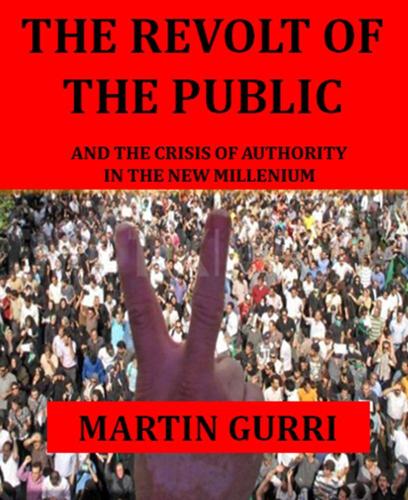
The Revolt of the Public and the Crisis of Authority in the New Millennium
by
Martin Gurri
Published 13 Nov 2018
Perhaps we should encourage our colleagues in the climate research community to no longer submit to, or cite papers in, this journal.[97] Disgusted by the “crap science” in Climate Research, Tom Wigley, a senior figure at the National Center for Atmospheric Research, proposed going “direct to the publishers and point out the fact that their journal is being perceived as a medium for disseminating disinformation under the guise of refereed work.”[98] Wigley had in mind a sort of exorcism of the journal, including a purge of the editor who had allowed the offending paper. Mike’s approach to get the editorial board members to resign will probably not work – must get rid of von Storch too… I have heard that the publishers are not happy with von Storch, so the above approach might remove that hurdle too.[99] Mann seemed particularly horrified by the fact that one of the authors of the contrarian paper had been a credentialed astrophysicist from Harvard.
…
Mike’s approach to get the editorial board members to resign will probably not work – must get rid of von Storch too… I have heard that the publishers are not happy with von Storch, so the above approach might remove that hurdle too.[99] Mann seemed particularly horrified by the fact that one of the authors of the contrarian paper had been a credentialed astrophysicist from Harvard. This latest assault uses a compromised peer-review process as a vehicle for launching a scientific disinformation campaign (often vicious and personal) under the guise of apparently legitimately reviewed science, allowing them to make use of the “Harvard” moniker in the process.[100] The emails showed the world’s leading climatologists busily working to organize a research cartel. Peer review was a legitimate source of authority when the process supported their positions.
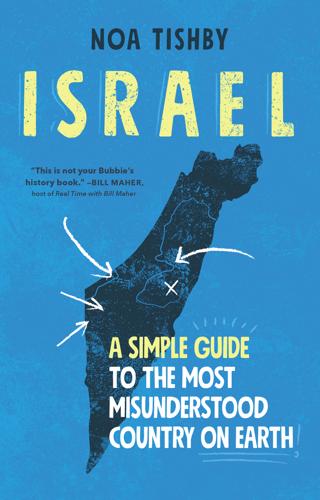
Israel: A Simple Guide to the Most Misunderstood Country on Earth
by
Noa Tishby
Published 5 Apr 2021
You should not be able to inherit your refugee status and then blame Israel for this problem. Of course, this is not how BDS frames things on its website. Instead, they speak of Israeli atrocities, murder, apartheid, genocide, and systematic ethnic cleansing. The only problem is that it’s a giant pile of crap—misinformation, disinformation, manipulation, elimination of history, and flat-out lies. Here are a few examples of how critical factual historical information is left off of the official BDS website in order to achieve this magnificent manipulation upon unsuspecting, well-intentioned, and ill-informed Americans (and Roger Waters): Regarding the establishment of Israel.
…
“Investing in the future they are,” as Yoda would say. The BDS on campus operation works in two primary ways. The first is meetings, or “training and educational” sessions. BDS distributes flyers or Facebook invites for pro-Palestine or anti-Israel events in which a speaker will present their standard talking points—misinformation, disinformation, a skewed reality, and the convenient elimination of history or facts. They will share a rough personal story to create a one-sided narrative that would rightfully infuriate anyone with a beating heart. The second critical operation is political. When campus voting season comes around, representatives descend on college students in order to push anti-Israel resolutions or referendums at the university.

Tunnel 29
by
Helena Merriman
Published 24 Aug 2021
Thousands of spies: In State Security and the Border, Daniela Munkel writes that by the 1980s, approximately 3,000 West German citizens served as unofficial collaborators (IMs) for the Stasi and many had been active for decades. The espionage the Stasi carried out in West Berlin wasn’t just about eliciting political, military and industrial secrets, but also involved spreading disinformation and revealing incriminating information to influence West German politics – the kind of disinformation campaigns we see around the world today. Munkel, Stasi Reader, 140. High as 100,000: Richie, Faust’s Metropolis, xlv. The only charges: Koehler, Stasi, 410. A final request: Funder, Stasiland, 254. Most slid into: Koehler, Stasi, 29. Soon be sold: One of the longest sections of the Berlin Wall anywhere in the world is in Los Angeles, running along Wilshire Boulevard in the Miracle Mile district, erected as part of a commemoration project.

Fred Schwed's Where Are the Customers' Yachts?: A Modern-Day Interpretation of an Investment Classic
by
Leo Gough
Published 22 Aug 2010
Insurance companies operate various kinds of complex savings-cum-insurance schemes that are poor value for many customers, and, in territories where regulation is lax, make very misleading claims about these schemes. Organisations that have the most to do with the public, like banks and building societies, produce misleading literature about the benefits of their savings accounts and actively promote disinformation to the less sophisticated sections of society. All this is true in every one of the 17 countries in which I have worked in the financial services industry, although the degree and nature of the abuses vary from country to country. Ok, maybe, just maybe, this kind of thing is no worse than what goes on in any industry.

Trick or Treatment: The Undeniable Facts About Alternative Medicine
by
Edzard Ernst
and
Simon Singh
Published 17 Aug 2008
Judge Susan Getzendanner, who had presided over the case, ruled that the AMA had indeed acted unfairly against chiropractors: Evidence at the trial showed that the defendants took active steps, often covert, to undermine chiropractic educational institutions, conceal evidence of the usefulness of chiropractic care, undercut insurance programs for patients of chiropractors, subvert government inquiries into the efficacy of chiropractic, engage in a massive disinformation campaign to discredit and destabilize the chiropractic profession and engage in numerous other activities to maintain a medical physician monopoly over health care in this country. The AMA took the decision to the Supreme Court, but the appeal failed in 1990 and thereafter the AMA was forced to alter its attitude.
…
Also, correspondence between the Department of Health and the Foundation for Integrated Health (obtained by Les Rose under the Freedom of Information Act) clearly shows that the guide was originally meant to include reliable information on effectiveness. In any case, if a patient guide does not contain such information, what on Earth is it for? In a second example of British disinformation, the Medicines and Healthcare Products Regulatory Agency (MHRA) in 2006 took the shocking decision to allow homeopathic products to make claims on their labels based on homeopathy’s own theory of testing known as ‘provings’. As discussed in Chapter 3, these tests cannot demonstrate clinical effectiveness, and yet customers will now encounter labels based on provings and endorsed by the MHRA.

QI: The Book of General Ignorance - The Noticeably Stouter Edition
by
Lloyd, John
and
Mitchinson, John
Published 7 Oct 2010
Eating lots of carrots won’t help you see any better in the dark – all it will do, over time, is to turn your skin orange. During the Second World War, Group Captain John Cunningham (1917–2002) gained the nickname ‘Cats Eyes Cunningham’. His 604 squadron operated at night. The British government encouraged rumours that he was able see in the dark because he ate so many carrots. This was deliberate disinformation designed to cover up the fact that he was testing the newly developed (and top secret) airborne radar system. It seems highly unlikely the Germans were taken in, but it helped persuade a generation of British children to eat the one vegetable that remained in constant supply through the war.
…
W. 1, 2 Tutankhamun, curse of 1 Twain, Mark 1 Tyson, Mike 1 United Nations 1, 2 United States 1, 2, 3, 4, 5, 6, 7, 8, 9, 10, 11, 12, 13, 14, 15 advertising in 1 banning of Inuit 1 baseball in 1 basketball invented in 1 bison in 1 bra-burning legend 1 bubonic plague in 1 champagne and 1, 2 cockfighting in 1 concentration of tigers in 1 declarations of war 1 depression in 1 earthquakes in 1 egg industry in 1 first president 1 forest management in 1 founding of New York 1 guano-snatching 1 gypsum in homes 1 hailstorms in 1 Hokey Pokey, as dance 1 log cabins in 1 loofahs in 1 Mike the chicken in 1 military use of dolphins 1 most dangerous American 1, 2 names for citizens of 1 national motto 1 Native American languages 1, 2 nature of ‘biscuits’ in 1 number of states in 1 number thirteen in 1 sign language 1 suicide rate in 1 tall buildings (nineteenth century) 1 television watching in 1 see also Civil War (US) universe colour of 1 storage space in 1 Ursa Major 1 USSR cinemas in 1 Cold War 1 Vaaler, Johann 1 Van Gelder, Lindsay 1 Vatican 1, 2 Venezuela 1 venom 1, 2 ventriloquism 1 Vesalius, Andreas 1 Vespucci, Amerigo 1 Victoria, Queen 1, 2, 3, 4, 5, 6, 7, 8 videocassettes, rival formats 1 Vietnam War 1, 2 Vikings 1 violin strings 1, 2 Viotti, Giovanni Battista 1 Virgil 1, 2 viruses, as distinct from bacteria 1 vitamin C 1 Vitruvius 1 volcanoes 1, 2, 3 Voltaire 1, 2 vomitoria 1 voodoo dolls 1 V-sign, origins of 1 Vulović, Vesna 1 Wagner, Richard 1 Waldseemüller, Martin 1 Wales 1, 2 Celts in 1, 2 equals sign from 1 Wallace, Lew 1 Wallace, William 1 Walpole, Robert 1 Warren, Robin 1 Washington, George 1 false teeth of 1, 2, 3 water colour of 1 direction down the drain of 1 and Earth’s mass 1 as electrical conductor 1 fresh water as ice 1 sterilised by silver 1 Waterloo, Battle of 1, 2 Webb, Jane Loudon 1 weightlessness, and flies 1 Welles, Orson 1 Wellington, Duke of 1 nationality of 1 whales 1, 2, 3 see also blue whales; sperm whales Wharton, Drs 1 whau tree 1 whips 1 whisky, origins of 1 white matter 1 Whyte, Major 1 Wilde, Oscar 1, 2 Wilhelm II, Kaiser 1 William, Prince 1 William the Conqueror, name of 1 Wilson, Woodrow 1 wind speeds 1 Wise Men 1 witchcraft 1 Wolfe, Tom 1 wood cannon ball splinters from 1 lightest 1 strongest 1 World Trade Center 1 World War I 1, 2 acronyms from 1 battlecruisers 1, 2 landing on aircraft carriers 1 uniforms made of nettles 1 World War II 1, 2, 3 carrier pigeons in 1 carrots as disinformation 1 Hawker Hurricane in 1 paperclips as resistance symbol 1 popularity of Spam 1 silence regarding 1 thumbs-up signal 1 year of its ending 1 worms 1, 2 as longest animal 1 in pearls 1 survive amputation 1 survive Shuttle disaster 1 wrens 1 wrestling, naked 1 Wright, Steven 1, 2 Wyss, father and sons 1 Yeager, Chuck 1 yellow fever 1 Yemen 1 Yorkshire terrier 1, 2 zenzizenzizenzic, as failed neologism 1 Zeus 1 Zheng He 1 Zoloft 1 Zoroastrianism 1 About John Lloyd and John Mitchinson QI first aired on BBC2 in September 2003 with John Lloyd producing and John Mitchinson masterminding the research.

Dragnet Nation: A Quest for Privacy, Security, and Freedom in a World of Relentless Surveillance
by
Julia Angwin
Published 25 Feb 2014
By the end of my experiment, I was refusing to have digital conversations with my close friends without encryption. I began using my fake name for increasingly trivial transactions; a friend was shocked when we took a yoga class together and I casually registered as Ida Tarbell. I didn’t want to live in the world that I was building—a world of subterfuge and disinformation and covert actions. It was a world based on fear. It was a world devoid of trust. It was not a world that I wanted leave to my children. I remember my parents expressing the same feeling about the two big threats of their generation—environmental damage and the proliferation of nuclear weapons.
…
“The risk here is that eventually our trust will be so abused that we will pull back from the Web,” he told me. That was certainly a good description of my own behavior. In my investigation of dragnets, I had lost my trust in the institutions that stored my data. I had become a data survivalist, pulling my data back from the Web and stockpiling it at home. I had also become a disinformation specialist, overcoming my fear of lying to spread lies about my habits and myself. By fighting to protect my data, I had polluted the public square and sowed distrust. There had to be a better way to fight back against unfair dragnets. * * * One way to even the playing field would be for everyone to be in the surveillance business.

Permanent Record
by
Edward Snowden
Published 16 Sep 2019
The two decades since 9/11 have been a litany of American destruction by way of American self-destruction, with the promulgation of secret policies, secret laws, secret courts, and secret wars, whose traumatizing impact—whose very existence—the US government has repeatedly classified, denied, disclaimed, and distorted. After having spent roughly half that period as an employee of the American Intelligence Community and roughly the other half in exile, I know better than most how often the agencies get things wrong. I know, too, how the collection and analysis of intelligence can inform the production of disinformation and propaganda, for use as frequently against America’s allies as its enemies—and sometimes against its own citizens. Yet even given that knowledge, I still struggle to accept the sheer magnitude and speed of the change, from an America that sought to define itself by a calculated and performative respect for dissent to a security state whose militarized police demand obedience, drawing their guns and issuing the order for total submission now heard in every city: “Stop resisting.”
…
I knew that the institutions I’d shamed would not relent until my head was bagged and my limbs were shackled. And until then—and perhaps even after then—they would harass my loved ones and disparage my character, prying into every aspect of my life and career, seeking information (or opportunities for disinformation) with which to smear me. I was familiar enough with how this process went, both from having read classified examples of it within the IC and from having studied the cases of other whistleblowers and leakers. I knew the stories of heroes like Daniel Ellsberg and Anthony Russo, and more recent opponents of government secrecy like Thomas Tamm, an attorney with the Justice Department’s Office of Intelligence Policy and Review who served as a source for much of the warrantless wiretapping reporting of the mid-2000s.

You've Been Played: How Corporations, Governments, and Schools Use Games to Control Us All
by
Adrian Hon
Published 14 Sep 2022
And while inoculation may help people develop critical thinking skills, I have to confess that a lifetime of training has not prevented me from occasionally falling foul of crank theories, especially when delivered by seemingly trustworthy sources. At this point, we have to accept that expecting or nagging citizens to develop perfect media literacy is a losing proposition, especially when well-funded state actors like Russia’s Internet Research Agency (a.k.a. the troll factory) churn out disinformation, to the extent of creating entire fake publications that paid real money to unwitting freelance reporters.47 Then there’s the question of who we assume possesses media literacy and who doesn’t. Dr. Francesca Tripodi, a sociologist at the Data & Society research institute, argues that groups suspected of lacking media literacy, like US conservatives and evangelicals, already consult a wide variety of original and alternative media sources to arrive at their opinions, rather than being “fooled” into their views by consuming fake news.48 As for digital literacy specifically, the idea it can help solve the fake news epidemic is like training people to run faster to dodge traffic rather than enforcing road safety and building pedestrian crossings—it’s not that it’s worthless, but it places the burden on individual citizens rather than addressing the larger societal problem.
…
The New York Times A/B tests its headlines with multiple variations to find out which will get the most readers; software engineer and blogger Tom Cleveland wrote a program to analyse which headlines attracted more readers and found it was the more spicy and dramatic ones.88 Right-wing publications and far-right groups that are willing to spread emotive disinformation can gain even more attention. That social media platforms amplify these messages is not a law of nature, though. It’s a choice stemming from a pursuit of advertising income, yes; but it also comes from a belief that ideas should be subjected to a kind of competition in which the truth will out, eventually.

Nuclear War: A Scenario
by
Annie Jacobsen
Published 25 Mar 2024
Turco laid out in terrifying detail in a paper published two months later, in the journal Science. The paper was attacked by other scientists and by the Defense Department. “They said nuclear winter is irrelevant,” recalls Professor Brian Toon, one of the original authors. “They called it Soviet disinformation.” But behind closed doors and in writings that have only recently seen the light of day, those at the very heart of the nuclear weapons complex knew the threat of nuclear winter was real. The result of a large-scale nuclear exchange, wrote scientists with the Defense Nuclear Agency, would be “atmospheric trauma”—and with “serious potential for severe consequences” for Earth’s “weather and climate.”
…
Turco et al., “Nuclear Winter: Global Consequences of Multiple Nuclear Explosions,” Science 222, no. 4630 (1983): 1283–92. GO TO NOTE REFERENCE IN TEXT attacked by other scientists: Stephen H. Schneider and Starley L. Thompson, “Nuclear Winter Reappraised,” Foreign Affairs, 981–1005. GO TO NOTE REFERENCE IN TEXT “Soviet disinformation,”: Interview with Brian Toon. GO TO NOTE REFERENCE IN TEXT recently seen the light of day: William Burr, ed., “Nuclear Winter: U.S. Government Thinking during the 1980s,” Electronic Briefing Book No. 795, NSA-GWU, June 2, 2022. GO TO NOTE REFERENCE IN TEXT “atmospheric trauma”: Peter Lunn, “Global Effects of Nuclear War,” Defense Nuclear Agency, February 1984, 13–14.
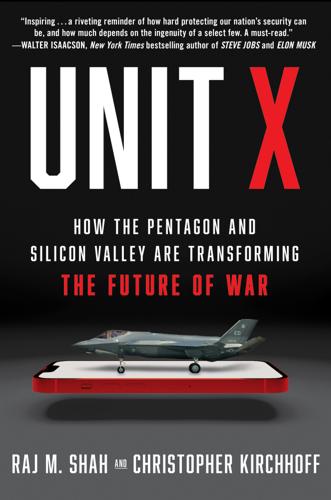
Unit X: How the Pentagon and Silicon Valley Are Transforming the Future of War
by
Raj M. Shah
and
Christopher Kirchhoff
Published 8 Jul 2024
The AP news story broke on a Sunday evening, the latest from a trove of hacked emails from John Podesta, Hillary Clinton’s campaign chairman. “Stolen emails released by WikiLeaks on Sunday revealed a March 30, 2015, email from Christopher Kirchhoff to top Clinton campaign aide John Podesta that offered stark opinions about the nation’s top military leaders,” the story began. The “WikiLeaks” episode was in fact a Russian disinformation operation designed to influence the 2016 election. A Russian cyber spy group nicknamed Fancy Bear had hacked Podesta’s Gmail earlier that year. Thirty minutes after the Access Hollywood tape broke—in which candidate Trump used derogatory language about women—Wikileaks dumped twenty thousand pages of Podesta’s emails into the public domain.
…
Most believed that an invasion was a far-fetched possibility, but others thought Putin was so driven by his desire to reclaim old Soviet states that he might actually take the risk. Capella satellites saw it happening in real time, and they suddenly became a powerful instrument in the U.S. campaign against Russian disinformation. “Putin kept saying, ‘I’m not going to invade,’ ” Mike Brown remembers. “He put out video of tanks being loaded on railcars, portraying them being sent back to Russia. But we knew he was actually amassing forces.” When Putin denied that Russia intended to invade, the Pentagon released a Capella image to CNN, and President Joe Biden cited that image as proof that Putin was lying.

When It All Burns: Fighting Fire in a Transformed World
by
Jordan Thomas
Published 27 May 2025
GO TO NOTE REFERENCE IN TEXT industry front groups: Bill McKibben, “From Climate Exhortation to Climate Execution,” New Yorker, December 27, 2022, https://www.newyorker.com/news/daily-comment/from-climate-exhortation-to-climate-execution. GO TO NOTE REFERENCE IN TEXT “flood the zone with shit”: Paul Starr, “The Flooded Zone: How We Became More Vulnerable to Disinformation in the Digital Era,” in The Disinformation Age, Steven Livingston and W. Lance Bennett, eds. (New York: Cambridge University Press, 2020), 67–92, https://doi.org/10.1017/9781108914628.003. GO TO NOTE REFERENCE IN TEXT Fossil fuel pundits: Christina Larson, Jennifer McDermott, Patrick Whittle, and Wayne Perry, “Contrary to Politicians’ Claims, Offshore Wind Farms Don’t Kill Whales.

Atrocity Archives
by
Stross, Charles
Published 13 Jan 2004
Electricity, for ages the primary tool of the experimental vitalists, is now pretty much obsolete--but it's so well-understood that these ivory-tower types prefer to use it as a vehicle for their research, rather than trying more modern geometry engines based on light, which doesn't have any of the nasty side effects of electrical invocations. But that's the British school for you. Over in the States, when they're not dangling stupid "remote viewing" disinformation tricks in front of the press corps the Black Chamber is busy running experiments on the big Nova laser at Los Alamos that everyone thinks is for bomb research. But do we get to play with safe opto-isolated geometry engines and invocation clusters here? Do we, fuck: we're stuck with Dr. Volt and his thuggish friend Mr.
…
An open gate at the far end of the field and a trail of impressions in the ground completes the picture. "Hypothesis: open gate. Someone let Daisy in, walked her to this position near the herd, then backed off. Daisy was then illuminated and exposed to a class three or better basilisk, whether animate or simulated. We need a plausible disinformation pitch, forensics workover of the paddock gate and fence--check for exit signs and footprints--and some way of identifying Daisy to see which herd she came from. If any livestock is reported missing over the next few days that would be a useful indicator. Meanwhile, core temperature is down to under five hundred Celsius.
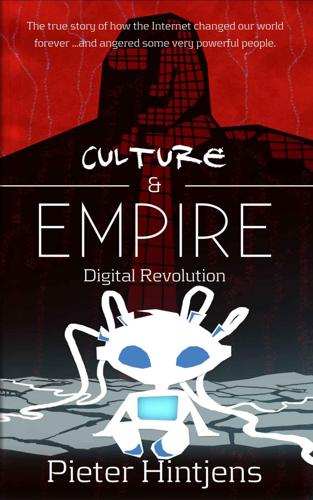
Culture & Empire: Digital Revolution
by
Pieter Hintjens
Published 11 Mar 2013
Among developed countries, Australia and South Korea (to my knowledge) maintain blacklists of websites that Internet users cannot access. These were pushed to "save the children": an easy sell to certain kinds of adults. In both cases, the blacklists grew wider and wider. Manipulation of content, where "sock puppet" contributors repeat disinformation, down-vote accurate stories, and up-vote their colleagues' lies. This is an old tactic that was first used by businesses like Microsoft who tried very hard to spread their view of reality across popular geek sites like Wikipedia by paying people to blog in their favor. Fear and uncertainty, where individuals are arrested for specific activities that may be more or less innocent.
…
It is also technically hard to sustain. In 2011, Bank of America hired three firms to attack Wikileaks. One of the firms, HBGary Federal, was hacked by Anonymous, and the plan was discovered. Emails and documents uncovered in the hack outline several proposed attacks on WikiLeaks: Feed the fuel between the feuding groups. Disinformation. Create messages around actions of sabotage or discredit the opposing organizations. Submit fake documents and then call out the error. Create concern over the security of the infrastructure. Create exposure stories. If the process is believed not to be secure, they are done. Commit cyber attacks against the infrastructure to get data on document submitters.
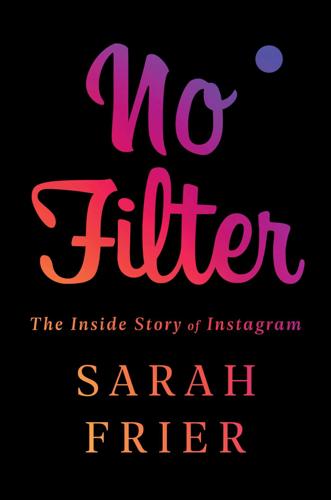
No Filter: The Inside Story of Instagram
by
Sarah Frier
Published 13 Apr 2020
In May 2017, in a widely publicized: Royal Society for Public Health, “Instagram Ranked Worst for Young People’s Mental Health,” press release, May 19, 2017, https://www.rsph.org.uk/about-us/news/instagram-ranked-worst-for-young-people-s-mental-health.html. That month, research groups commissioned: “The Disinformation Report,” New Knowledge, December 17, 2018, https://www.newknowledge.com/articles/the-disinformation-report/. 12 | THE CEO In 2012, when Facebook reached: Leena Rao, “Facebook Will Grow Head Count Quickly in 2013 to Develop Money-Making Products, Total Expenses Will Jump by 50 Percent,” TechCrunch, January 30, 2013, https://techcrunch.com/2013/01/30/zuck-facebook-will-grow-headcount-quickly-in-2013-to-develop-future-money-making-products/.
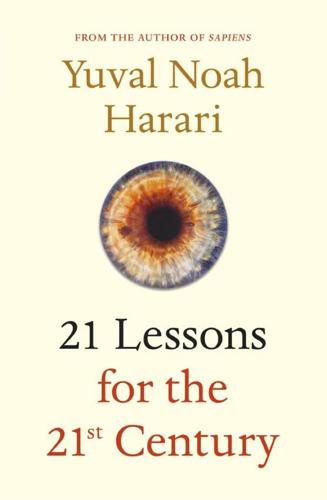
21 Lessons for the 21st Century
by
Yuval Noah Harari
Published 29 Aug 2018
Whereas Polish communism and Russian communism were both committed, at least in theory, to the universal interests of an international working class, Polish nationalism and Russian nationalism are by definition committed to opposing interests. As Putin’s rise sparks an upsurge of Polish nationalism, this will only make Poland more anti-Russian than before. Though Russia has embarked on a global campaign of disinformation and subversion that aims to break up NATO and the EU, it does not seem likely that it is about to embark on a global campaign of physical conquest. One can hope – with some justification – that the takeover of Crimea and the Russian incursions in Georgia and eastern Ukraine will remain isolated examples rather than harbingers of a new era of war.
…
Rather, these fake countries are the ‘Luhansk People’s Republic’ and the ‘Donetsk People’s Republic’ that Russia has set up to mask its unprovoked invasion of Ukraine.2 Whichever side you support, it seems that we are indeed living in a terrifying era of post-truth, when not just particular military incidents, but entire histories and nations might be faked. But if this is the era of post-truth, when, exactly, was the halcyon age of truth? In the 1980s? The 1950s? The 1930s? And what triggered our transition to the post-truth era – the Internet? Social media? The rise of Putin and Trump? A cursory look at history reveals that propaganda and disinformation are nothing new, and even the habit of denying entire nations and creating fake countries has a long pedigree. In 1931 the Japanese army staged mock attacks on itself to justify its invasion of China, and then created the fake country of Manchukuo to legitimise its conquests. China itself has long denied that Tibet ever existed as an independent country.

One Day in September
by
Simon Reeve
There are several versions of what happened next, but the most plausible account is that, just as two Mossad agents moved close to the hotel to begin surveillance of Salameh, their target slipped out of the hotel by a back entrance and disappeared.37 With Israeli agents hot on his trail, either Salameh began a masterful disinformation operation or the Israelis began following a trail of false leads. Some sources suggest that Salameh began spreading rumors that he had gone to live in Scandinavia, and Mossad began receiving reports from Geneva, Zurich, and Paris, all saying that Salameh had slipped out of their clutches and moved north.
…
In Munich the courts threw out the case because of a three-year statute of limitations. Not surprisingly, the families were livid. “We said, ‘How can you, even on the basis of statute of limitations, throw our case out after you hid all the documentation for twenty years?’”50 The families appealed on the grounds that the Germans had instigated a massive campaign of cover-up, disinformation, and deception to prevent the families and the outside world from knowing the full details of the Munich attack. The statute of limitations, said lawyers for the relatives, should start from the moment they received the documents. “And in that period of time we submitted our court case,” said Ankie.

The Costs of Connection: How Data Is Colonizing Human Life and Appropriating It for Capitalism
by
Nick Couldry
and
Ulises A. Mejias
Published 19 Aug 2019
Of course, these figures do not take into account all the workers involved in datafication both inside and outside the social quantification sector, including part-time and freelance workers. But to put things in perspective, Walmart and McDonald’s each employ about two million people worldwide. Only Amazon comes close to that magnitude, with 541,900 employees as of October 2017. 59. Statista, “The Leading Companies in the World in 2016, by Net Income.” 60. Mejias and Vokuev, “Disinformation and the Media.” 61. Samaddar, Marx and the Postcolonial Age. 62. NASSCOM, The IT-BPM Sector. 63. Dvorak and Saito, “Tech Dominance.” 64. Sender and Mundy, “Walmart Nears Deal.” 65. The Economist, “China’s Internet Giants Go Global,” April 20, 2017. 66. Greeven and Wei, “China’s New Tech Giants.” 67.
…
Meiksins Wood, Ellen. “The Uses and Abuses of ‘Civil Society.’” Socialist Register 26 (March 1990): 60–84. https://socialistregister.com/index.php/srv/article/view/5574. Mejias, Ulises Ali. Off the Network. Minneapolis: University of Minnesota Press, 2013. Mejias, Ulises Ali, and Nikolai E. Vokuev. “Disinformation and the Media: The Case of Russia and Ukraine.” Media, Culture & Society 39, no. 7 (2017): 1027–42. Memmi, Albert. The Colonizer and the Colonized. Translated by Susan Gibson Miller. Boston: Beacon Press, 1991. Meng, Bingchun. The Politics of Chinese Media. Basingstoke, UK: Palgrave MacMillan, 2018.
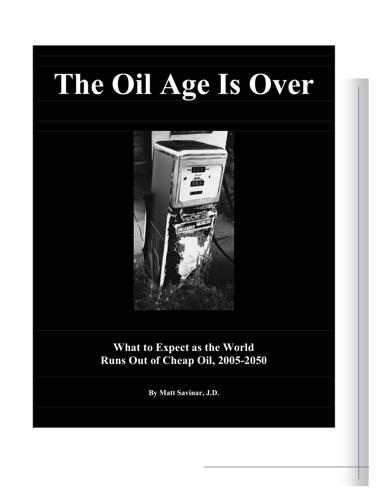
The Oil Age Is Over: What to Expect as the World Runs Out of Cheap Oil, 2005-2050
by
Matt Savinar
Published 2 Jan 2004
Today, we do need massive amounts of oil to come up with alternatives to oil. As oil prices rise, our ability to implement alternatives will be crippled. For these reasons, using the whale oil crisis of the 19th century as proof the market will solve the oil crisis of the 21st century is silly at best and disinformation at worst. 52 The Oil Age is Over 47. The oil companies are so greedy, they will come up with a solution to keep making money, right? Expecting the oil companies to save you from the oil crash is about as wise as expecting the tobacco companies to save you from lung cancer. Corporate officers are bound by law to do what is in the best interests of the corporation, so long as their actions are legal.

Snowden's Box: Trust in the Age of Surveillance
by
Jessica Bruder
and
Dale Maharidge
Published 29 Mar 2020
During the fifteen years of Cointelpro, agents spied on more than one million Americans, including Malcolm X, John Lennon, James Baldwin, Jane Fonda, Yoko Ono, Abbie Hoffman, and Muhammad Ali. Operatives broke into hundreds of homes. They sent unsigned, slanderous letters to activists’ employers, trying to get them fired. They infiltrated grassroots organizations, spreading disinformation to corrode trust between members, causing groups to splinter apart, actively promoting violence that sometimes led to murders. One especially poisonous technique was called “bad-jacketing” or “snitch jacketing.” Agents would single out an activist, then circulate rumors or plant evidence suggesting that person was an informant.

Ten Arguments for Deleting Your Social Media Accounts Right Now
by
Jaron Lanier
Published 28 May 2018
http://time.com/3923651/meet-the-woman-helping-gamergate-victims-come-out-of-the-shadows/ 10. http://www.zero-books.net/books/kill-all-normies 11. https://transequality.org/the-discrimination-administration 12. https://www.washingtonpost.com/news/acts-of-faith/wp/2016/06/08/trump-on-god-hopefully-i-wont-have-to-be-asking-for-much-forgiveness/ 13. https://www.rawstory.com/2017/03/russians-used-bernie-bros-as-unwitting-agents-in-disinformation-campaign-senate-intel-witness/ 14. https://www.vox.com/policy-and-politics/2018/2/24/17047880/conservatives-amplified-russian-trolls-more-often-than-liberals 15. https://www.wired.com/story/how-trump-conquered-facebookwithout-russian-ads/ 16. Brad Parscale, the Trump campaign’s social media director, tweeted: “I bet we were 100x to 200x her.

Hacker, Hoaxer, Whistleblower, Spy: The Story of Anonymous
by
Gabriella Coleman
Published 4 Nov 2014
Working together on IRC, Anonymous hackers penetrated the HBGary computer system and downloaded seventy thousand company emails, along with other files that included a PowerPoint presentation entitled “The WikiLeaks Threat.” The tactics suggested therein are strikingly similar to those practiced and perfected during COINTELPRO. The presentation outlines a set of strategies the firm claimed could be “deployed tomorrow”: Palantir Potential Proactive Tactics Feed the fuel between the feuding groups. Disinformation. Create messages around actions to sabotage or discredit the opposing organization. Submit fake documents and then call out the error. Create concern over the security of the infrastructure. Create exposure stories. If the process is believed to not be secure they are done. Cyber attacks against the infrastructure to get data on document submitters.
…
This directly contradicts statements made by one of his handlers and reported by Jana Winter for Fox News. “About 90 percent of what you see online is bulls---,”21 said the handler, in reference both to posts from Sabu’s Twitter account and also “interviews” he gave to the press. Whether this is the truth or an even more elaborate, recursive disinformation campaign, the implication is that Sabu parroted whatever the FBI wanted him to say. There were some tweets—“If god forbid I am arrested, I’ll admit to my crimes, and take myself down. I do not believe in bringing others down for my own sins. Thanks”—that we now know were unadulterated nuggets of FBI-influenced BS.22 I barely got a word in edgewise, but I did manage to ask Sabu whether he met me at the behest of the FBI.

The New Digital Age: Transforming Nations, Businesses, and Our Lives
by
Eric Schmidt
and
Jared Cohen
Published 22 Apr 2013
For the Kurds, who stretch across several countries, this risk would be even more pronounced, as a Kurdish virtual-statehood campaign would be met with resistance from the entire neighborhood, some of whom lack Kurdish populations but would fear a destabilizing effect. No effort would be spared to destroy the Kurdish virtual institutions through low-grade cyber-meddling and espionage, like cyber attacks, disinformation campaigns and infiltration. The populations on the ground would surely bear the brunt of the punishment. The governments would be aided, of course, by the massive amounts of data that these citizens produced, so finding the people involved or supportive of virtual statehood would be easy. Very few secessionist movements have the level of resources and international support that would be required to match this level of counterattack.
…
See antiradicalization counterterrorism, 5.1, 5.2, 5.3, 5.4 criminals, 2.1, con.1 criminal syndicates cross-border weapon-smuggling networks crowd-sourcing Cruise, Tom crystal chips Cuba cultural nuance Currygate cyber attacks, 3.1, 3.2n, 105, 3.3, 5.1, 6.1 lack of attribution in cyber-bullying Cyber Fast Track cybersecurity cyber terrorism, 3.1n, 153–5, 5.1 cyber warfare, itr.1, 3.1 see also Code War Dagan, Meir, n Dalai Lama, 3.1, 3.2 Danger Room blog Danish cartoon controversy data, 1.1, con.1 alleged deletion of databases data-mining, n, 77 data permanence, 2.1, 6.1, 6.2 data remanence data revolution, 2.1, 2.2 deep-packet inspection deep think Def Con Defense Advanced Research Projects Agency (DARPA), 3.1, 5.1, 6.1, 6.2, 6.3 Defense Department, U.S., 5.1, 6.1, 6.2 democracy, 2.1, 2.2 protests in wisdom of crowds in denial-of-service (DoS) attacks, 3.1, 5.1 Der Spiegel, 179 developing countries development diasporas Dictator’s Learning Curve, The (Dobson), 2.1 Digicel DigiNotar digital activism digital currency digital marketing, 6.1, 6.2 digital textbooks digital verification digital watermarking, 2.1, 6.1 diplomacy, itr.1, 2.1 direct attacks disarmament, demobilization and reintegration (DDR) program discretionary power discrimination disease detection disinformation campaigns dissidents, 2.1, con.1 distributed denial-of-service (DDoS attacks), 2.1, 3.1, 3.2, 3.3n, 162, 6.1 DNA, 1.1, 2.1 Dobson, William J. document loss documents domain name system (DNS), 3.1, 3.2 Downey, Tom “driver-assist” approach driverless cars, itr.1, 1.1, 1.2 drones, 5.1, 5.2, 6.1, 6.2, 6.3, 6.4, 6.5, 6.6 drugs, negative reactions to Dubner, Stephen J.

When Computers Can Think: The Artificial Intelligence Singularity
by
Anthony Berglas
,
William Black
,
Samantha Thalind
,
Max Scratchmann
and
Michelle Estes
Published 28 Feb 2015
This encouraged idealistic spying so Stalin knew about the bomb before it was dropped. Moreover, the callousness of the bombing motivated other spies to help the Soviet Union, and they ended up providing the Soviets with detailed instructions as to how to produce the bomb. If the bomb had not been deployed, then disinformation could have been spread as to the bomb’s power and practicality. Spreading disinformation had been a well-used tactic during the war, particularly in support of hiding the extent of allied code breaking. Using the weapon on civilians made any campaign of misinformation futile. Its deployment made the USA vulnerable to nuclear attack for much longer than necessary while producing virtually no strategic benefit in the war with Japan.

The People vs. Democracy: Why Our Freedom Is in Danger and How to Save It
by
Yascha Mounk
Published 15 Feb 2018
Civics was an integral part of the educational system, from nurseries all across the country up to the faculty lounges of the nation’s leading universities. As a result, most citizens had a better understanding of the practices and a deeper commitment to the principles of liberal democracy—making them far less likely to give credence to conspiracy theories based on lies or disinformation. This points to another important measure we can take: Unable to restrict the supply of attacks on the basic principles of liberal democracy through outright censorship, we have all the more reason to lessen the demand for them. While we cannot recreate the threat of communism or fascism, we can remember that civics education is an essential bulwark against authoritarian temptations.
…
“Wilders Warns Australia of ‘Dangerous’ Islam,” Al Jazeera, February 20, 2013, http://www.aljazeera.com/news/asia-pacific/2013/02/2013220145950228630.html. 26. Gavin Jones, “Insight: Beppe Grillo—Italian Clown or Political Mastermind?” Reuters, March 7, 2013, http://www.reuters.com/article/us-italy-vote-grillo-insight-idUSBRE92608G20130307. 27. The party now relies on funds that come from fake news inspired by Russian disinformation—and so it is hardly surprising that, to give but one example, a recent video from a party-controlled news source claimed that Turkey and the United States are secretly conspiring to stop Russia from fighting ISIS. See Alberto Nardelli and Craig Silverman, “Italy’s Most Popular Political Party Is Leading Europe in Fake News and Kremlin Propaganda,” Buzzfeed, November 29, 2016, https://www.buzzfeed.com/albertonardelli/italys-most-popular-political-party-is-leading-europe-in-fak?
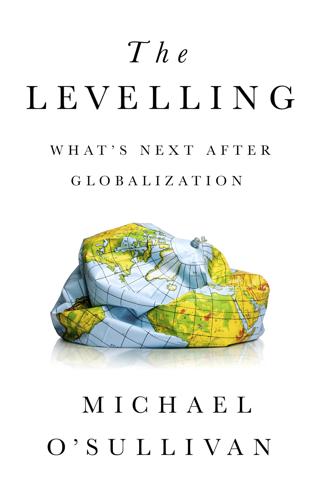
The Levelling: What’s Next After Globalization
by
Michael O’sullivan
Published 28 May 2019
Some countries, such as Russia, are already practicing war by “many means”—that is, where traditional military force is mixed with covert action, propaganda, and disinformation. The Russian doctrine of maskirovka has roots that go back to the fourteenth-century Battle of Kulikovo and was further developed more recently, beginning with its use in the Second World War. In a very basic sense, it involves the use of decoys and deception to distract and destabilize an enemy, though the doctrine of maskirovka has broad applications, stretching to disinformation, propaganda, and politically related tactics. A significant element of the thinking that reflects the new doctrine of warfare in Russia is that wars do not follow the same boundaries and time lines as they did historically.21 This means that they are not officially declared—in the way cyberattacks happen—and that they can rely on many different types of force (e.g., information, humanitarian, and media) and can rely on the subversion of states on a continual basis using mercenaries and special operatives.
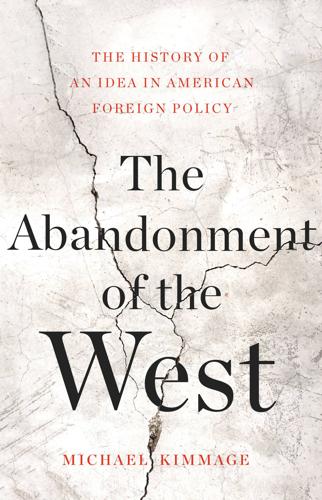
The Abandonment of the West
by
Michael Kimmage
Published 21 Apr 2020
It was autocratic and expansionary, having gone to war with Georgia in 2008, having rearranged the borders of Europe in 2014 and having sent its military into the Syrian conflict in 2015, blithely disregarding American admonitions not to do any of these things. Russia was also implementing new tactics of disinformation intended to destabilize Europe and the United States. It was actively ignoring the liberal international order, which came easily to Russia, for the Kremlin believed in a very different order—hierarchical, confrontational and subordinate to the power, the vanity and the interests of a few great powers.
…
Washington was responsible for stirring up chaos in Iraq, Georgia, Libya and Ukraine. At some point, Putin feared, the democratizing arrow of American foreign policy would be pointed at Moscow. When the West imposed sanctions to get the Russian military out of Ukraine, Putin initiated a campaign of disinformation and political interference across the West. In the race with the West, China is the disciplined long-distance runner and Russia the risk-taking sprinter. China and Russia are no longer geopolitical adolescents in a Western world, as they had been pegged in the 1990s. Together, China and Russia constitute a distinct and gathering challenge.
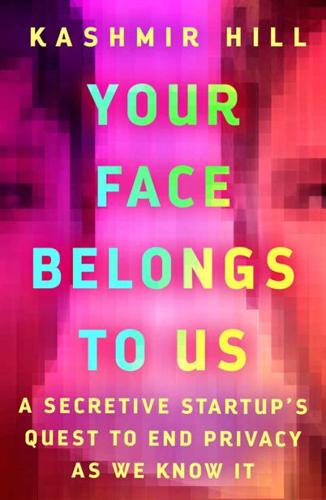
Your Face Belongs to Us: A Secretive Startup's Quest to End Privacy as We Know It
by
Kashmir Hill
Published 19 Sep 2023
That, of course, is not a legal way to vote. At least 4,900 people actually texted the number he provided with Clinton’s name, according to federal prosecutors. “Social Media Influencer Charged with Election Interference Stemming from Voter Disinformation Campaign,” U.S. Department of Justice, January 27, 2021, https://www.justice.gov/opa/pr/social-media-influencer-charged-election-interference-stemming-voter-disinformation-campaign. GO TO NOTE REFERENCE IN TEXT “Right Wing Gossip Squad”: Zanting, “Rudy Giuliani Ex-Advisor Richard Schwartz Worked With the Alt-Right,” AnimeRight News, May 7, 2018, https://web.archive.org/web/20190330154815/https://animeright.news/zanting/rudy-giuliani-ex-advisor-richard-schwartz-worked-with-the-alt-right/.

Fateful Triangle: The United States, Israel, and the Palestinians (Updated Edition) (South End Press Classics Series)
by
Noam Chomsky
Published 1 Apr 1999
It concentrated on the shortcomings of professional journalists, but failed to understand that “the difficulties journalists encounter in covering a war as professionally as possible—and this was especially true of the war in Lebanon and Israel Television—are a direct result of the machinations of other professionals,” namely, those “involved in psychological and propaganda warfare,” organized by the Kremlin. “One participant hinted at this when he stated that the world press often falls victim to well-oiled systems of disinformation,” but this hint was not taken up properly. In fact, the Soviet leadership immediately launched “an extensive worldwide effort of psychological warfare” using “a classical strategy”: “First, to disqualify the Israeli military operation (‘bloody war,’ etc.); second, to provoke a vast reaction of disgust, triggering a peripheral pacifist reaction; and third, to search for ways of disseminating this pacifist reaction to vital Israeli centres, leading to a general paralysis and a closing of the options supposedly opened up by the operation itself.”
…
“These ‘active measures’ (a code word used by the Soviet leaders) were carried out through the vast network of organizations operated by the international section of the party and the International News Services of the Central Committee of the Communist Classics in Politics: The Fateful Triangle Noam Chomsky Peace for Galilee 500 Party of the Soviet Union,” abetted by an alliance with the powerful and nefarious organization Wafa (the official PLO news agency). “The outburst last summer of a campaign which is not simply one of intimidation or of disinformation, but which has steadily assumed the dimension of an actual broad-scale mass psychological war, gives rise to serious concern,” the director-general explains.257 The phrase “media pogrom” thus understates the scale of the aggression against Israel in the summer of 1982; it was a “psychological war.”* Now we can understand why the American and world press and television gave such an incredibly distorted picture of the war, one so unfair to Israel.
…
The number of campesinos (mainly Indians) killed from the March 1982 coup to October is estimated at 8000 by the Committee for Justice and Peace, a Guatemalan Christian group, and the Guatemalan Commission for Human Rights; Human Rights in Guatemala: No Neutrals Allowed, Americas Watch Report (New York, 1982). 256. Moshe Yegar, “Abuse of Freedom,” Jerusalem Post, Aug. 20. 1982. 257. Yochanan Manor, “Process of disinformation,” Jerusalem Post. Jan. 4, 1983. 258. Moshe Sharon, “No friend of Israel,” Jerusalem Post, Jan. 7, 1983; Yuval Elizur, Boston Globe, Aug. 6, 1982. Sharon’s article is accompanied by a picture of President Reagan with a rather uncharacteristic ugly leer, presumably showing the true face of America with regard to Israel, which Sharon has now exposed. 259.
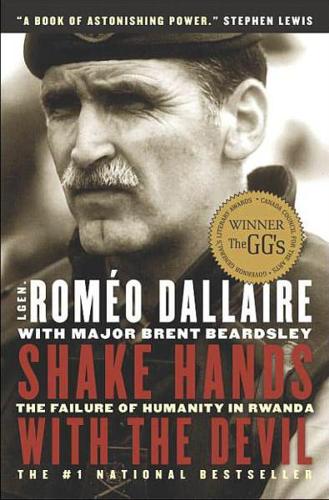
Shake Hands With the Devil: The Failure of Humanity in Rwanda
by
Romeo Dallaire
and
Brent Beardsley
Published 9 Aug 2004
I replied that unless I could get access to the presidential residence and the crash site, I could do nothing about itinternational inspectors had to be allowed in to do an independent investigation. He and Kambanda agreed and asked when the inspectors could come. I said they were waiting for my call. Lastly, I firmly decried the verbal abuse and disinformation being broadcast about UNAMIR and the Tutsis by RTLM. I wanted to go on air and tell my version of the situation. To my surprise, the minister agreed and said he would set it up for the next day. Shaking hands automatically, I left the small office and walked among the ministers and others on my way to my vehicle.
…
Colonel Theoneste Bagosora Chef de cabinet of the minister of defence, RGF, known Hutu extremist, currently awaiting trial, International Criminal Tribunal Rwanda Lieutenant Colonel Walter Ballis Belgian Staff Officer, employed as UNAMIR Deputy Chief Operations Officer JeanBosco Barayagwiza One of the heads of the extremist CDR party General Maurice Baril Canadian Military Adviser to the SecretaryGeneral of the UN and head of the Military Division of the DPKO Battalion Ideally, a homogeneous unit of 800 soldiers with a headquarters, an integral service support company and four rifle companies BBTG Broad-Based Transitional Government; was never installed due to political impasse Major Brent Beardsley Canadian Military Assistant to General Dallaire Commandant Mohammed Belgacem Tunisian Company Commander in NMOG, UNAMIR 1 and 2 Glossary 525 R, Jul 93-1 May 94, medically evacuated to Canada, did not return to mission e Bicamumpaka MDR Hutu extremist who was appointed foreign minister interim government and tried to spread disinformation and cover up the de in Europe and New York lamascene Bizimana Rwandan Ambassador to the UN in Sep 93, Member Security Council from Jan 94 tin Bizimana Minister of defence, extremist MRND, Hutu utenant Colonel Augustin Bizimungu Promoted Major General at the inning of the conflict, Chief of Staff RGF, assumed the position in late Apr 94 lacing Marcel Gatsinzi, who had replaced Deogratias Nsabimana, extremist d-liner.
…
See also Rwandese Patriotic attacks on, 488 of Burundi, 98, 114, 208 dangers of, 394-5 in Kigali, 476 of Rwanda, 47, 154-5, 463, 5 into Tanzania, 336 of Uganda, 153-4 of use by RGF, 464 into Zaire, 469, 471 , resettlement, 67, 74 in Rwanda, 387-93 kag and following, 101 and the French, 437 and Medecins Sans Frontieres, 454 and murder of children, 118 and reports of Belgian soldiers, 183-4 and humanitarian reasons, 229, 299 Rutaremara, Tito, 196, 265-6 125-6,222,240,292,398,410-1 426 Roberge, Lieutenant Colonel Guy (fatherinlaw), 31-2 Roman, Colonel Jean-Pierre, 182, 184-5, 303-4 Ross, Colonel Cameron, 75, 338 Roy, Major General Armand, 42-3 Roya122ieme Regiment (Vandoos), 9, 33 Royal Commission on Bilingualism and Biculturalism (Canada), 22 Royal Military College (RMC), Kingston, Ontario, 20-3 RTLM (hardline radio station), 142, 211 as anti-Belgium, 105-6, 240-1, 254 and attacks on Dallaire, 379-81, 421-2 Dallaire's interview, 349 disinformation, 330, 420 promoting genocide, 375 violent tone of, 123, 133, 261, 272, 277 Rudasingwa, Theogene, 330 Ruggiu, George, 349 Ruhengeri, Rwanda, 68, 200, 203, 271, 288 Ruheru refugee camp, 212 Ruhigira, Enoch, 77, 136-7, 148-9, 211-12 rules of engagement (ROE) in FLQ crisis, 24-5 rules of engagement (ROE) in Rwanda approval from UN, 99 changed own, 290 clarification of, 173 proposal for, 72 restriction of, 233, 264 and retaliatory fire, 406 R and unilateral force in self-defence, 144 Rusatira, Colonel Leonidas, 121, 238, 240, 38 469 Russia, 76 Rusumo, Rwanda, 336 RV85, 36 Rwabalinda, Lieutenant Colonel Ephrem, Restaurant P666 Mignon, 162 Richard, Captain Andre, 36 Rivero, Isel, 46, 81 Riza, Igbal.

Distrust That Particular Flavor
by
William Gibson
Published 3 Jan 2012
Regardless of the number and power of the tools used to extract patterns from information, any sense of meaning depends on context, with interpretation coming along in support of one agenda or another. A world of informational transparency will necessarily be one of deliriously multiple viewpoints, shot through with misinformation, disinformation, conspiracy theories and a quotidian degree of madness. We may be able to see what’s going on more quickly, but that doesn’t mean we’ll agree about it any more readily. Orwell did the job he set out to do, did it forcefully and brilliantly, in the painstaking creation of our best-known dystopia.
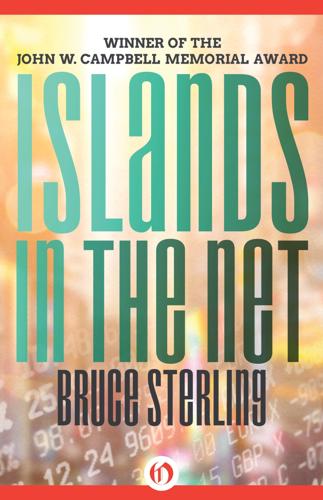
Islands in the Net
by
Bruce Sterling
Published 31 May 1988
Arbright stared at him for a moment. “You’re not really black, are you? Either that, or that’s not really your baby, fella.” “Huh?” David said. “Actually, uh, there’s this, uh, suntan lotion.…” Arbright cut the air with her hand. “It’s okay, I’ve been to Africa, and they tell me I look French. But Mali—that’s just disinformation. They’ve got no money and no motive, and it’s an old rumor.…” The limo came to a stop and interrupted her. “Oxford Towers, Miss Arbright.” “That’s our stop,” Emily said, putting her drink aside. “We’ll get back to you, Dianne.” Arbright sagged back into the cushions. “Look. I want those Grenada tapes.”
…
It would be so easy for them, not like Singapore. All he would have to do was show up and work hard and smile. She refused to read the prepared statement. The Inspector of Prisons looked at her with distaste. “You really think this defiance is accomplishing something, don’t you?” “This statement is disinformation. It’s black propaganda, a provocation, meant to get people killed. I won’t help you kill people.” “Too bad. I’d hoped you could send your loved ones a New Year’s greeting.” “I’ve written my own statement,” Laura offered. “It doesn’t say anything about you, or Mali, or the F.A.C.T., or your bombs.
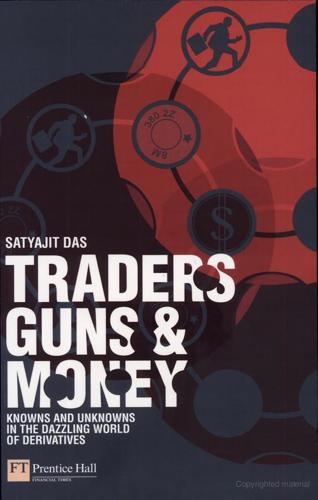
Traders, Guns & Money: Knowns and Unknowns in the Dazzling World of Derivatives
by
Satyajit Das
Published 15 Nov 2006
Secret intelligence Other than sheer luck, there are really only two ways to make money – inside information or overwhelming force. It is a truism that trading thrives on information – ‘information’, ‘disinformation’, ‘misinformation’, ‘inside information’. It has Trading thrives on always been that way. information – Financial news isn’t like normal news. With ‘information’, normal news, we are passive observers of the great, the good, the evil and Paris Hilton. Financial news ‘disinformation’, is about finding out information that affects busi‘misinformation’, ness: it shapes what traders buy and sell, the price ‘inside information’. they are willing to pay.
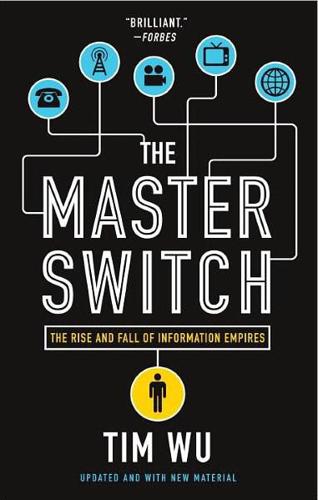
The Master Switch: The Rise and Fall of Information Empires
by
Tim Wu
Published 2 Nov 2010
“A glass of water was poured before the microphone in Yonkers; it sounded like a glass of water being poured and not, as in the ‘sound effects’ on ordinary radio, like a waterfall.” By such enthusiastic efforts Armstrong managed to convince a few like-minded people to found FM stations, and by 1941, yielding to the technological reality, the FCC allocated spectrum between 50 and 60 MHz.9 But, as mentioned, the disinformation campaign’s trump card was television, and the Radio Trust’s insistence that it, not FM, was the future. Many standard histories in fact ascribe the slow development of FM to the rise of television. Of course, there is no denying that television was the greater leap. But insofar as television never has supplanted radio, the Radio Trust was presenting a false choice.
…
And so, as the 1930s began, Sarnoff and his allies were simultaneously trying to discredit the Farnsworth television and to reproduce it—such was the perverse genius of the Sarnoff plan. The talk campaign was similar to the one he’d lodged against FM and Edwin Armstrong: Farnsworth’s invention, while of some scientific interest, did not work, and so his patents were invalid. The key audience for this disinformation was, of course, the investment community, and in 1935 RCA intensified the effort to keep them away from Farnsworth by means of what we now call a “vaporware” strategy. In 1935, Sarnoff announced that the company was commiting millions to build its own television, with its mighty industrial laboratories and its own resident genius, Zworykin.
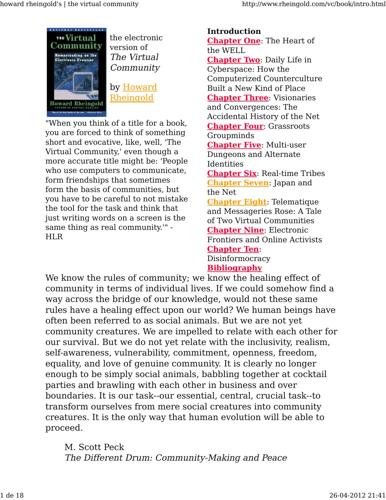
Howard Rheingold
by
The Virtual Community Homesteading on the Electronic Frontier-Perseus Books (1993)
Published 26 Apr 2012
Imagine how this might work ten years from now, when digital, battery-operated minicams are as ubiquitous as telephones, and people can feed digitized images as well as words to the Net. 26-04-2012 21:46 howard rheingold's | the virtual community 27 de 36 http://www.rheingold.com/vc/book/9.html Information and disinformation about breaking events are pretty raw on the Net. That's the point. You don't know what to think of any particular bit of information, how to gauge its credibility, and nobody tells you what to think about it, other than what you know from previous encounters, about the reliability of the source.
…
The public sphere is also the focus of the hopes of online activists, who see CMC as a way of revitalizing the open and widespread discussions among citizens that feed the roots of democratic societies. The second school of criticism focuses on the fact that high-bandwidth interactive networks could be used in conjunction with other technologies as a means of surveillance, control, and disinformation as well as a conduit for useful information. This direct assault on personal liberty is compounded by a more diffuse erosion of old social values due to the capabilities of new technologies; the most problematic example is the way traditional notions of privacy are challenged on several fronts by the ease of collecting and disseminating detailed information about individuals via cyberspace technologies.
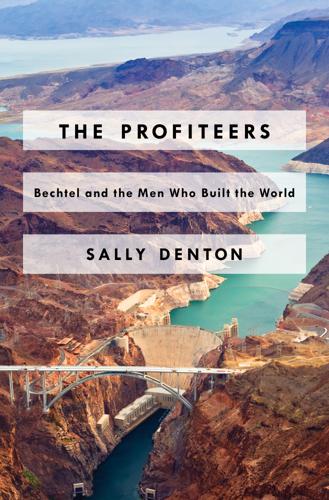
The Profiteers
by
Sally Denton
“No one on the engineering”: Bechtel partner Dennis Connell, quoted in ibid. “fiendishly hardworking” . . . “Their big reward” . . . “The old boy is asking”: Ibid. “Seemingly innocent disclosures”: Adrian Zaccaria, quoted in ibid. “twin themes”: Russ Hoyle, Going to War: How Misinformation, Disinformation, and Arrogance Led America into Iraq (New York: Thomas Dunne Books, 2008), 26. “The same men”: Vallette, Kretzmann, and Wysham, Crude Vision, 2. “I would be surprised” . . . “Iraq ruled by Saddam Hussein”: Shultz, quoted in Hoyle, Going to War, 83. “committed to moving”: Bob Herbert, “Ask Bechtel What War Is Good For: A License to Make Money,” International Herald Tribune, April 22, 2003.
…
New York: Random House, 1991. Hiltzik, Michael. Colossus: Hoover Dam and the Making of the American Century. New York: Free Press, 2010. Hochschild, Adam. King Leopold’s Ghost: A Story of Greed, Terror, and Heroism in Colonial Africa. Boston: Houghton Mifflin, 1998. Hoyle, Russ. Going to War: How Misinformation, Disinformation, and Arrogance Led America into Iraq. New York: Thomas Dunne Books, 2008. Ingram, Robert L. The Bechtel Story: Seventy Years of Accomplishment in Engineering and Construction. San Francisco: Ingram, 1968. (Official Company History.) _____. A Builder and His Family, 1898–1948: Being the Historical Account of the Contracting, Engineering & Construction Career of W.

Like, Comment, Subscribe: Inside YouTube's Chaotic Rise to World Domination
by
Mark Bergen
Published 5 Sep 2022
He appeared on an RT segment to celebrate the network’s milestone of one billion YouTube views, praising RT for being “authentic” and not pushing “agendas or propaganda.” U.S. politicians disagreed. After Trump’s election, federal officials forced RT to register as a “foreign agent.” Senator Mark Warner, a Virginia Democrat, called YouTube RT’s “go-to platform” and a “target-rich environment for any disinformation campaign.” YouTube, feeling the heat, removed RT from its premium slate and added labels for all state-backed media outlets. Yet just as pressure on YouTube mounted, Facebook tripped again. Four days after Wojcicki was grilled in Texas over conspiracies, the Cambridge Analytica scandal broke.
…
“People might think we have this great AI that can drive cars and everything,” said Goodrow, the veteran YouTube engineering leader. “But I don’t think right now we could even simply identify what specific claims are being made within a video.” Even if it could, few outside the company agreed on the precise definitions of misinformation or disinformation, so debates on the matter typically circled into political stalemates. And, by and large, YouTube stayed out of the fray. Outrage in the press and halls of power usually focused on the social networks, not the video site. In 2021 President Joe Biden chastised tech platforms for promoting vaccine hesitancy, specifically accusing Facebook of “killing” people with lies.
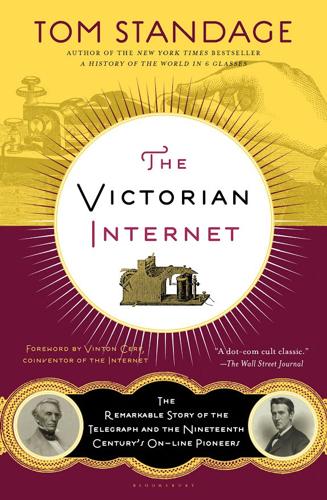
Victorian Internet
by
Tom Standage
Published 1 Jan 1998
In 1894, Sir John Pender, chairman of the company that had previously been the Gutta Percha Company and is known today as Cable & Wireless, suggested that telegraphy had "prevented diplomatic ruptures and consequent war, and been instrumental in promoting peace and happiness. . . . no time was allowed for the growth of bad feeling or the nursing of a grievance. The cable nipped the evil of misunderstanding leading to war in the bud." Well, sort of. But sometimes misunderstanding was deliberate. In 1898, the Fashoda Incident, a standoff between the British and French armies in Sudan, illustrated the new power of information—and disinformation. French forces led by Major Jean-Baptiste Marchand were crossing Africa with the intention of laying claim to land from the Atlantic to the Red Sea, while a rival British expedition led by Lord Kitchener was hoping to establish control over the whole of East Africa, from Cairo to the southern Cape.
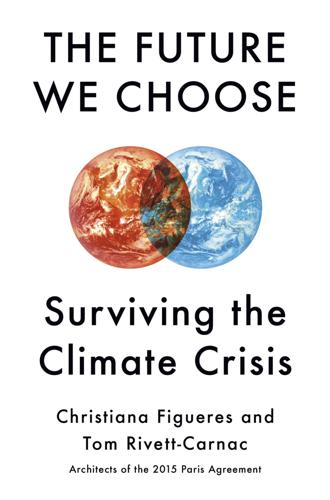
The Future We Choose: Surviving the Climate Crisis
by
Christiana Figueres
and
Tom Rivett-Carnac
Published 25 Feb 2020
Cleverly programmed algorithms turbocharge that process on the internet and social media.11 This means that often we have no idea what other people deeply value or think. Get offline and get to know your neighbors, people in the grocery line, or fellow commuters. Challenge your own assumptions, and be mindful of misinformation and disinformation. Share your hopes and fears in person, listen to others, and be honest and respectful. * * * — In 1990, after spending twenty-seven years in prison, Nelson Mandela was informed by President F. W. De Klerk that he would be freed in less than twenty-four hours. The following day Mandela walked out of Victor Verster Prison and into history.

Intertwingled: Information Changes Everything
by
Peter Morville
Published 14 May 2014
To manage them, we must address inputs, outputs, feedback loops, metrics, governance, and culture. Figure 1-4. Websites are part of organizational ecosystems. But that’s not enough. We should set our sights higher. Life is too short to focus solely on getting better at business. Society as a whole suffers from bad decisions and anxiety caused by misinformation, disinformation, filter failure, and information illiteracy. We can’t expect technology to save the day. While the Internet has delivered great change to consumers and industries, it hasn’t made as much progress in education, healthcare, and government. And we’ve begun to learn the cost of free. In recent years, we’ve begun to lose newspapers, bookstores, libraries, and privacy.

The View From Flyover Country: Dispatches From the Forgotten America
by
Sarah Kendzior
Published 24 Apr 2015
—Originally published August 5, 2013 Iraq and the Reinvention of Reality The worst thing about the Iraq war was not that people got away with lying. It was that they did not—and it did not matter. The tenth anniversary of the American invasion of Iraq was a week of media culpa. Every day a new journalist or pundit came forward to atone for supporting a war predicated on disinformation. “I was excitable and over-reacted,” wrote blogger Andrew Sullivan, explaining why he once argued that no “serious person” could doubt Saddam Hussein’s intent to use WMDs with his co-conspirator al-Qaeda. “I owe readers an apology for being wrong on the overriding question of whether the war made sense,” wrote journalist David Ignatius, noting that, in retrospect, it did not.

Unsustainable Inequalities: Social Justice and the Environment
by
Lucas Chancel
Published 15 Jan 2020
Exposure to pesticides strongly increases the risk of contracting cancers of the prostate and skin as well as neurodegenerative illnesses such as Parkinson’s disease.14 While the effects of toxic substances on health are now better understood, thanks to advances in medical research, and more effectively counteracted, thanks to new legislation and court rulings, further progress has been hindered by manufacturers that are able to invest massively in large-scale disinformation campaigns. The agrochemical giant Monsanto, however, has already been obliged to pay substantial fines in both France and the United States for deceptive advertising; in addition, thousands of lawsuits—many of which are still pending—have been brought against the company for past and present malfeasance.
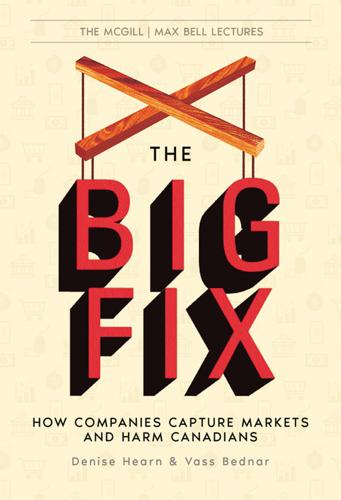
The Big Fix: How Companies Capture Markets and Harm Canadians
by
Denise Hearn
and
Vass Bednar
Published 14 Oct 2024
In The Attention Merchants, Columbia University’s Tim Wu writes that social media algorithms hooked and addicted us, corralling our attention and monetising and manipulating it for the benefit of multibillion-dollar firms. Social media has brought many benefits and connected the world as never before, but curated algorithmic feeds also led to rampant disinformation and electoral interference, increasing political polarization, and severe negative effects on the mental health of young teens and children. Our first global experiments with scaled algorithms have had major unintended consequences, and today’s AI tools will be no different, only accelerated.
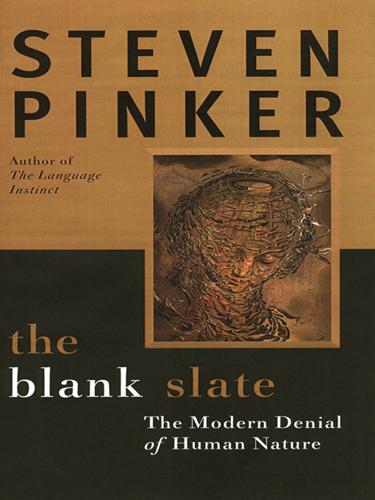
The Blank Slate: The Modern Denial of Human Nature
by
Steven Pinker
Published 1 Jan 2002
The view that visual clichés shape beliefs is both too pessimistic, in that it supposes that people are helplessly imprisoned by received stereotypes, and too optimistic, in that it supposes that if you could change the images you could change the beliefs.47 Recognizing that we are equipped with sophisticated faculties that keep us in touch with reality does not entail ignoring the ways in which our faculties can be turned against us. People lie, sometimes baldly, sometimes through insinuation and presupposition (as in the question “When did you stop beating your wife?”). People disseminate disinformation about ethnic groups, not just pejorative stereotypes but tales of exploitation and perfidy that serve to stoke moralistic outrage against them. People try to manipulate social realities like status (which exist in the mind of the beholder) to make themselves look good or to sell products. But we can best protect ourselves against such manipulation by pinpointing the vulnerabilities of our faculties of categorization, language, and imagery, not by denying their complexity.
…
When demand for a commodity is high, suppliers will materialize, and if they cannot protect their property rights by calling the police, they will do so with a violent culture of honor. (This is distinct from the moral argument that our current drug policies incarcerate multitudes of nonviolent people.) School-children are currently fed the disinformation that Native Americans and other peoples in pre-state societies were inherently peaceable, leaving them uncomprehending, indeed contemptuous, of one of our species’ greatest inventions, democratic government and the rule of law. Where Hobbes fell short was in dealing with the problem of policing the police.
…
Therefore, it might seem, the theories that are most friendly to women are the Blank Slate—if nothing is innate, differences between the sexes cannot be innate—and the Noble Savage—if we harbor no ignoble urges, sexual exploitation can be eliminated by changing our institutions. The belief that feminism requires a blank slate and a noble savage has become a powerful impetus for spreading disinformation. A 1994 headline in the New York Times science section, for example, proclaimed, “Sexes Equal on South Sea Isle.”3 It was based on the work of the anthropologist Maria Lepowsky, who (perhaps channeling the ghost of Margaret Mead) said that gender relations on the island of Vanatinai prove that “the subjugation of women by men is not a human universal, and it is not inevitable.”

Killing Pablo: The Hunt for the World's Greatest Outlaw
by
Mark Bowden
Published 1 Dec 2007
He carried dozens of newspaper ads for real estate with his notebooks, and was always buying and selling hideouts. That way, he was always home, even though he had no home. He moved with his collection of wireless phones. It didn't trouble him to know that the authorities listened whenever he spoke on the phone. It had been that way for years. He used the knowledge to feed disinformation, to keep his pursuers running in every direction but the right one. The game wasn't to avoid being overheard, which was impossible, but to avoid being targeted. It was evident from Escobar's phone conversations and letters he had written over the previous months how infuriated he was with his reduced circumstances, but clearly he also felt some pride.

The New Class War: Saving Democracy From the Metropolitan Elite
by
Michael Lind
Published 20 Feb 2020
In addition, Western intelligence authorities claim that Russian intelligence operatives have engaged in trying to promote conflict in the US and other countries by helping whistle-blowers like WikiLeaks and Edward Snowden leak stolen or classified information and by bombarding carefully targeted audiences with Internet memes and ads. Let us stipulate that this is all true. It was also true in the 1950s that there really were a small number of communists in the US, including a few high-ranking government officials, who spied for the Soviet Union, as well as many more Soviet sympathizers. There were also genuine Soviet disinformation campaigns in the Cold War West. But only the lunatic fringe of the anticommunist right during the Cold War drew the conclusion that the president was a Soviet agent or that mainstream politicians were secret communists. In contrast, influential members of today’s American establishment, not only marginal conspiracy theorists, in order to absolve Hillary Clinton of blame for losing the 2016 election, have promoted the claim that the forty-fifth US president was installed by a foreign government and does its bidding.

Last Best Hope: America in Crisis and Renewal
by
George Packer
Published 14 Jun 2021
These fantasies are nourished by the politically homogeneous lives most of us live. Because of them, one side or the other (and sometimes, as in 2020, both) is perpetually shocked by reality. Elections never deliver the promised realignment—therefore, they have to be wrong and illegitimately won, by fraudulent ballots, foreign subversion, corporate dollars, viral disinformation, or by a vast conspiracy of politicians, officials, voting machine makers, judges, and journalists across the land. Anything but the will of the people! For the past twenty years, progressives have been waiting for a rising tide of younger, better-educated, more diverse voters to swamp white conservative America and lift them to victory.
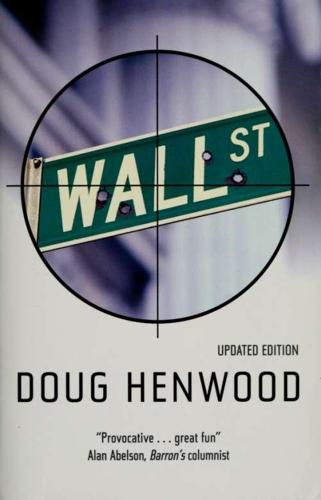
Wall Street: How It Works And for Whom
by
Doug Henwood
Published 30 Aug 1998
One check on this confederacy of optimists are professional shorts — people who look for companies with inflated reputations and stock prices, dig out the info, short the stock, and then leak the bad news to reporters eager for a hot tip. If the news takes, then the stock will suffer damage. Sometimes it doesn't matter whether the bad news is true; if the short can take a position and undertake a successful disinformation campaign, he or she can profitably cover the short. 35. For the "real" sector, however, borders still matter, and the "global assembly line" is a bit of an exaggeration. 36. The correlation coefficient is a measure of how tightly two sets of numbers are related to each other, ranging from -1 (a perfect mirror image) through 0 (no relation at all) to PLAYERS +1 (perfect lockstep).
…
It also means measuring performance over years, even decades, rather than months and quarters — impossible for professional portfolio managers, who are under constant short-term review, and difficult even for amateurs, who might be embarrassed to describe their strange preferences at cocktail parties. disinformation, noise, fads, and bubbles Efficient market theory depends on the universal, costless dissemination of accurate information about economic and corporate prospects. The uncritical stance of most Wall Street analysts and much of the financial press reviewed in Chapter 2 makes this a bit hard to take just on the grounds of MARKET MODELS daily evidence.
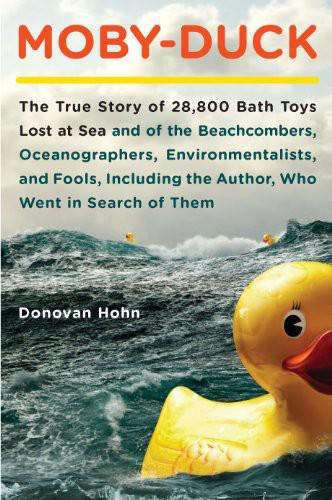
Moby-Duck: The True Story of 28,800 Bath Toys Lost at Sea and of the Beachcombers, Oceanographers, Environmentalists, and Fools, Including the Author, Who Went in Search of Them
by
Donovan Hohn
Published 1 Jan 2010
By comparing Moore to Barnum, I don’t mean to suggest that he’s a charlatan; I mean to suggest only that he plays his role exceedingly well. Now, in the information age, which is readily transforming into the disinformation age, if you wish to combat, as Moore does, the armies of corporate publicists waging endless ad campaigns, including green-washing campaigns of the sort devised by Keep America Beautiful, then you have to be media savvy, and like a guerrilla warrior on the information battlefield you have to exploit your adversaries’ weaknesses. The problem is that in the universal propaganda arms race that has manifested from the disinformation age, no one trusts anyone, and doubtful citizens are free to luxuriate in distractions, while overconfident citizens are allowed to pick and choose whichever factoids and sound bites confirm their self-serving predispositions.

If Mayors Ruled the World: Dysfunctional Nations, Rising Cities
by
Benjamin R. Barber
Published 5 Nov 2013
The assault on authority can liberate common women and men and invite them into deliberation, policy making (participatory budgeting), and a greater sense of ownership over government. Or it can unleash prejudice and the shameless promotion of straight-out lies. Epistemological anarchy. In other words, as Lee Siegel has argued, democratizing information can mean empowering disinformation.45 The web is a powerful tool, but it is not hard to believe with Siegel that “with the rise of participatory culture, pop culture has entirely merged into commercial culture.” And that “enchantment of the imagination has given way to gratification of the ego . . . welcome to the Youniverse,” Siegel’s version of a narcissistic Internet world.46 Critics such as Siegel are vindicated not only by the undeniable narcissism and commercialism of so much of what the new technology has yielded but by the fact that, for all the promise and all the promising, there is as yet no cyber commons, no digital public square, Google’s experiment in Hangouts notwithstanding.
…
See also Networks Interdependence Movement, 398n31 Intermountain Acoustic Music Association (IAMA), 290 International Association of Public Transport (UITP), 118–119 International City/County Management Association (ICMA), 118–119 International Council for Local Environmental Initiatives (ICLEI), 6, 118–119, 131–135, 159, 165, 318–319 International Delphic Council, 293 International Educational, Cultural and Scientific Organization (ISECO), 292 International Federation of Arts Councils and Cultural Agencies (IFACCA), 289–290, 293 International financial institutions (IFIs), 311, 343–344 International Society for the Performing Arts (ISPA), 118–119, 287, 288–289, 293 International Urban Development Association (INTA), 118–119 Internet: disinformation on, 265; and dissidence, 259; megacompanies, 254–256; ownership and control, 252–253; potential vs. reality, 248–249, 250–251; sharing vs. loss of privacy, 258; Web 2.0, 250, 387n3 Inter-Parliamentary Union (IPU), 312–313 Interpol, 125–127, 159, 373n17 Invisible capital, 228–230 Ipatinga, Brazil, participatory budgeting, 308 IPU (Inter-Parliamentary Union), 312–313 ISECO (International Educational, Cultural and Scientific Organization), 292 ISPA (International Society for the Performing Arts), 118–119, 287, 288–289, 293 Israel, Kolleck of, 90–91, 268–270 Italy: mayors, 87; rural villages, 37–38, 69 Jacobs, Jane, 62, 65, 213, 219 Jefferson, Thomas, 34 Jenin.
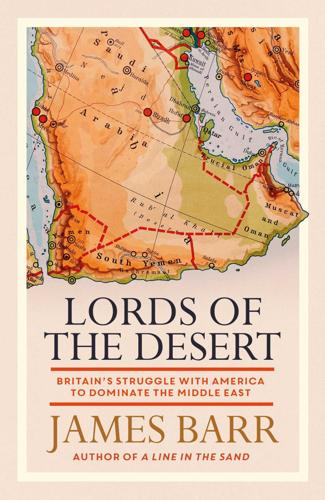
Lords of the Desert: The Battle Between the US and Great Britain for Supremacy in the Modern Middle East
by
James Barr
Published 8 Aug 2018
‘Probabilities of sort of “coup de palais” in near future growing,’ he added, a prediction that showed either uncanny foresight or, more likely, inside knowledge.5 According to the CIA officer Miles Copeland, Nasser would claim later that Kim Roosevelt gave both Nabulsi and the head of the army, Ali Abu Nuwar, disinformation that convinced them that they could successfully launch a coup against the king. What is certain is that a month-long crisis began on 3 April when Nabulsi announced, apparently without forewarning Hussein, that Jordan would open diplomatic relations with Moscow. Four days later he presented the king with a list of court officials he wanted removed.
…
Macmillan wrote in his diary that the military operation had been ‘brilliantly conducted’, but from the diplomatic and political standpoint, the handling of the episode left much to be desired. Not only had the Americans proved hostile, so too had the British press. Its journalists were furious that they had been denied access to the frontline in Oman, and had spent the campaign cooped up in Bahrain where they were spoon-fed disinformation by the British political resident.8 In a series of editorials, The Times blasted the British government’s handling of the uprising, arguing that its unwarranted faith in the effectiveness of air power had led to a situation in which it was then obliged to put troops on the ground, a deployment that Nasser’s Voice of the Arabs mercilessly exploited.

The War Came to Us: Life and Death in Ukraine
by
Christopher Miller
Published 17 Jul 2023
Meanwhile Yanukovych, being from Donetsk and still controlling most of the city through his vast “family” network of tycoons, local politicians, and goons, used his resources to quash the demonstrations there and keep them from taking hold like they had in Kyiv. Those in the east were predominantly Russian speakers and lived close to the border with Russia. Many of them regularly tuned into Russian television, which at best presented a distorted view of events and the people partaking in them, and at worst pushed blatant disinformation to discredit the uprising. It was true that not all Ukrainians supported Euromaidan and the revolution emerging from it. Three prominent Ukrainian pollsters found that in December 2013 between 45 per cent and 50 per cent of Ukrainians supported Euromaidan, while 42 per cent to 50 per cent opposed it.
…
But as Zelensky continued to play down the Russian threat, the Ukrainian capital and its more than three million residents kept humming along, not totally ignoring the Russian forces massing around them but choosing, it seemed, to believe they weren’t about to do the seemingly unthinkable. “In the morning people go to work. In the afternoon they are preparing for war. And at night people are going clubbing,” Liubov Tsybulska told me. She is the owner of two of the city’s hippest cafes who leads a double life as a Russian disinformation specialist and advisor to the government. As we sipped coffee inside Kometa, young Ukrainians in Carhartt beanies and platform shoes chomped on New York-style pizza and elaborate sushi rolls, as Unknown Mortal Orchestra blared from the sound system. We could have been in Portland, Brooklyn, London, or Berlin.
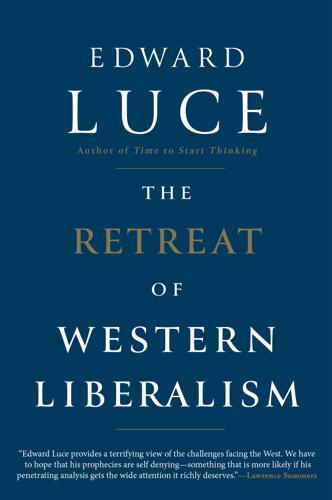
The Retreat of Western Liberalism
by
Edward Luce
Published 20 Apr 2017
What it conveys is cold feet about democracy. Trump’s ascendancy brought out the liberal technocrat in many people. ‘I love America. It’s Americans I hate,’ wrote Tim Kreider, an essayist and cartoonist, a few weeks after Trump won.42 ‘[They’re] pathetically dumb and gullible, uncritical consumers of any disinformation that confirms their biases, easy dupes for any demagogue who promises to bring back the factories and keep the brown people down . . . But I don’t believe all Trump voters are ignorant, or bigoted; most of them are just evil – evil being defined not as anything so glamorous as beheading journalists or gunning down grade schoolers, but simply as not much caring about other people’s suffering.’

Trend Commandments: Trading for Exceptional Returns
by
Michael W. Covel
Published 14 Jun 2011
How could one tell when a pool had started buying? Or had begun selling? These questions had no real fundamental answer, or at least none that was accessible to the average small trader in these markets. To be sure, there were newspapers, but how was one to know the truth of what was being reported? Even if there was no outright disinformation, surely the big Origins 225 speculators did not telegraph their intents so easily. They rather tried to hide their buying and selling. So, for the small trader, the question was a technical one, to be answered by observing who was doing the buying and selling— to whatever extent that was possible—or by watching the price action of the stock itself, and the volume.

1947: Where Now Begins
by
Elisabeth Åsbrink
Published 31 Jul 2016
In another telegram to the Secretary-General of the Arab League, he states that the Muslim Brotherhood sees no way to save Palestine other than by violence. He offers the Arab League 10,000 armed men ready for combat. The Brotherhood then sets up a number of recruiting offices for the defense of Palestine, and within two days over 2,000 men volunteer in Cairo alone. Moscow The Soviet Union is a secret, even to itself. The bureaucracy spreads disinformation among the powerful at various levels of the hierarchy, and few know exactly what the others are up to. The outsiders who call themselves “the West” know even less. They draw the erroneous conclusion that the USSR is still a long way off having an atom bomb of its own. Deep inside the country, the harshest times are finally giving way to change.

Pumpkinflowers: A Soldier's Story of a Forgotten War
by
Matti Friedman
Published 2 May 2016
No one could move anyway until the special operation, whatever it was, had taken place. A week went by, and then another. Finally we were informed that the operation had been called off. Then someone else said this wasn’t true and actually it had happened, but we hadn’t noticed, and we weren’t supposed to know because it was secret. It was all disinformation, apparently, but the army needn’t have bothered, because we didn’t care. We just wanted to go home. 39 WE ARRIVED BACK in a country no longer sure if the soldiers in Lebanon were heroes or victims. By this time you couldn’t avoid the stickers saying GET OUT OF LEBANON IN PEACE. Support for an immediate pullout, recently a fringe opinion, was now common.

Futureproof: 9 Rules for Humans in the Age of Automation
by
Kevin Roose
Published 9 Mar 2021
By Kevin Roose Futureproof Young Money The Unlikely Disciple About the Author Kevin Roose is a technology columnist for The New York Times. He is the host of the Rabbit Hole podcast and a regular guest on The Daily. He writes and speaks regularly about topics including automation and AI, social media, disinformation and cybersecurity, and digital wellness. Previously, he was a writer at New York magazine and the co–executive producer of Real Future, a TV documentary series about technology. He is the New York Times bestselling author of two previous books, Young Money and The Unlikely Disciple. He lives in Oakland, California.
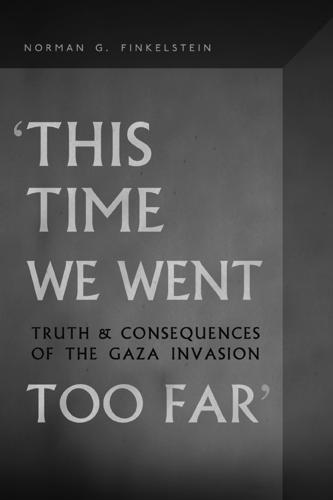
This Time We Went Too Far
by
Norman G. Finkelstein
Published 1 Jan 2010
In his recent history of the “peace process,” Martin Indyk, former U.S. ambassador to Israel, provides this capsule summary of the sequence of events just narrated: “In 1982, Arafat’s terrorist activities eventually provoked the Israeli government of Menachem Begin and Ariel Sharon into a full-scale invasion of Lebanon” (Martin Indyk, Innocent Abroad: An intimate account of American peace diplomacy in the Middle East (New York: 2009), p. 75). 79. Saed Bannoura, “Livni Calls for a Large Scale Military Offensive in Gaza,” IMEMC & Agencies (10 December 2008; http://tinyurl.com/ chqtk7). 80. Uri Blau, “IDF Sources: Conditions not yet optimal for Gaza exit,” Haaretz (8 January 2009); Barak Ravid, “Disinformation, Secrecy, and Lies: How the Gaza offensive came about,” Haaretz (28 December 2008). 81. Nancy Kanwisher, Johannes Haushofer, and Anat Biletzki, “Reigniting Violence: How do ceasefires end?,” Huffington Post (6 January 2009; http://tinyurl.com/dfujv3). 82. Slater, “A Perfect Moral Catastrophe” (subsection headed “A ceasefire”).

Clean Agile: Back to Basics
by
Robert C. Martin
Published 13 Oct 2019
Achieving this balance of design and feature complexity is the goal of Simple Design. Using this practice, programmers continuously refactor the design of the system to keep it in balance with the requirements and, therefore, keep productivity maximized. Pair Programming The practice of Pair Programming has enjoyed a substantial amount of controversy and disinformation over the years. Many folks react negatively to the idea that two (or more) people can work productively together on the same problem. First of all, pairing is optional. No one should be forced to pair. Secondly, pairing is intermittent. There are many good reasons to code alone from time to time.

Survival of the Richest: Escape Fantasies of the Tech Billionaires
by
Douglas Rushkoff
Published 7 Sep 2022
Finally, as Joe Biden began staffing up with rather hawkish security advisors, Sam showed up on one of my messaging apps, scolding me for having stood up for the bloodthirsty establishment in my Tweets and articles. The coming bloodshed was on me. The children of red state people I don’t care about would now get maimed in unnecessary wars. I should “own that.” I felt as if consensus reality had fractured, and sucked my old friend into the abyss. Social media polarization and disinformation is a big part of it. But so is the totalizing quality of The Mindset as it determines the very landscape of our culture, economy, and society—the media environment in which we try to do our reasoning and basic cognition. This was the very takeover of humans by machines that Bannon claims to be fighting against.
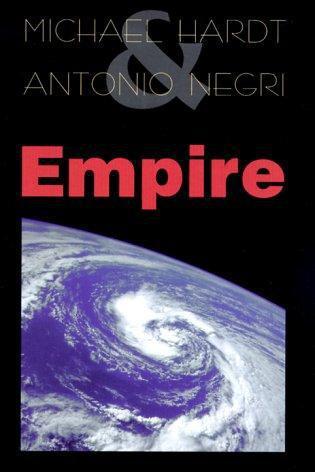
Empire
by
Michael Hardt
and
Antonio Negri
Published 9 Mar 2000
In opposition to the theories ofthe ‘‘weakest link,’’ which not only were the heart ofthe tactics ofthe Third International but also were largely adopted by the anti-imperialist tradition as a whole, the Italian operaismo movement ofthe 1960s and 1970s proposed a theory ofthe ‘‘strongest link.’’ For the fundamental theoretical thesis, see Mario Tronti, Operai e capitale (Turin: Einaudi, 1966), esp. pp. 89–95. 20. One can find ample and continuous documentation ofthese techniques of disinformation and silencing in publications ranging from Le Monde Diplomatique to Z Magazine and the Covert Action Bulletin. Noam Chomsky has tirelessly worked to unveil and counter such disinformation in his numerous books and lectures. See, for example, Edward Herman and Noam Chomsky, Manufacturing Consent: The Political Economy of Mass Media (New York: Pantheon, 1988). The GulfWar presented an excellent example ofthe imperial management ofcommunication.
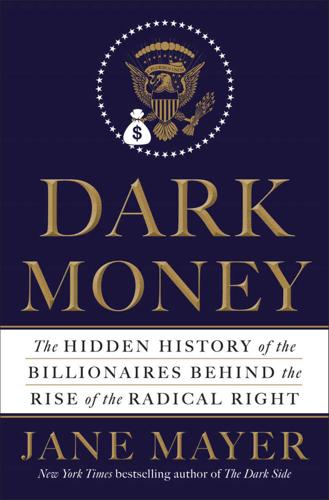
Dark Money: The Hidden History of the Billionaires Behind the Rise of the Radical Right
by
Jane Mayer
Published 19 Jan 2016
The donations paid off, from Scaife’s viewpoint, when they helped launch the careers of the conservative social critic Murray and the supply-side economics guru George Gilder, whose arguments against welfare programs and taxes had huge impacts on ordinary Americans. Fisher’s early collaborator in founding the Manhattan Institute was William Casey, the Wall Street financier and future director of the CIA. The early think tank was not a spy operation, but it was funded by wealthy men who had no objections to using pretexts and disinformation in the service of what they regarded as a noble cause. In fact, Scaife during this period was simultaneously funding a CIA front group. In his memoir, he acknowledges that in the early 1970s he owned a London-based news organization called Forum World Features that was in reality a CIA-run propaganda operation.
…
It used its youth-oriented front group, Generation Opportunity, to post online advertisements featuring a tasteless cartoon version of Uncle Sam jumping between the legs of a young woman undergoing a gynecological exam to spread fear about the government’s interference in private health-care matters. (The Kochs’ front group seemed to have no such qualms about government intrusion into reproductive health issues.) The organization also sponsored student-oriented protests at which mock Obamacare insurance cards were burned like draft cards during the Vietnam War. The disinformation campaign spread fear and confusion. News reports reflected a widespread belief, particularly in desperately poor areas, that the government was setting up “death panels.” In the summer and fall of 2013, as Meadows was gathering co-sponsors for his open letter, Americans for Prosperity spent an additional $5.5 million on anti-Obamacare television ads.
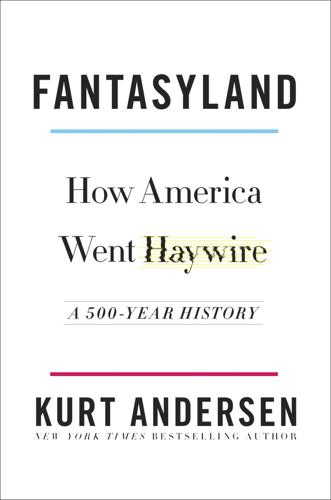
Fantasyland: How America Went Haywire: A 500-Year History
by
Kurt Andersen
Published 4 Sep 2017
Like Christians certain both that evolution is a phony theory and that God created people a few thousand years ago, conspiracists are simultaneously credulous (about impossible plots) and incredulous (about the confusing, dull gray truth). Conspiracists often deride arguments against their theories as disinformation cooked up by the conspirators—the way some Christians consider evolutionary explanations to be the work of the devil. Researchers and experimenters have repeatedly demonstrated this pinball effect, in which fantastical beliefs lead to other, disparate fantastical beliefs. Once people decide a particular theory is true, they’re apt to be open to another and another and another.
…
Kennedy, Jr., became the movement’s star, repeating his line that U.S. government scientists were “involved in a massive fraud.” His big article on the subject was eventually retracted by both magazines that published it. Part of the corrupt cover-up! Among children born since thimerosal was removed from vaccines, autism-spectrum diagnoses continued rising. Lies, disinformation and lies! Still more studies appeared concluding vaccines are safe. If not the mercury, then some other toxin! If not autism, then asthma or juvenile diabetes! Their beliefs, like religious faith, are unfalsifiable by facts. The media did their part too. In 2002 The New York Times Magazine ran a long article called “The Not-So-Crackpot Autism Theory.”
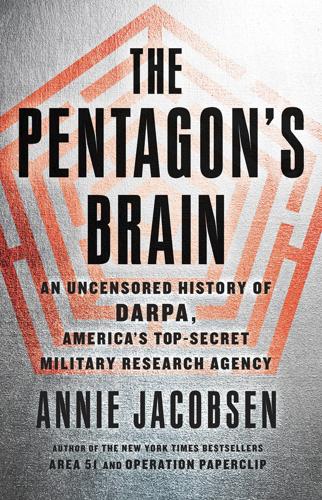
The Pentagon's Brain: An Uncensored History of DARPA, America's Top-Secret Military Research Agency
by
Annie Jacobsen
Published 14 Sep 2015
A few nights later, ABC News reported that the ringleader of the 9/11 hijackers, Mohammed Atta, “had met at least once with a senior Iraqi intelligence agent in Prague.” The report kicked off a firestorm of related news articles, including some that confirmed the story of the Iraq link, some that discredited the story, and some that blamed the CIA for engaging in a disinformation campaign. Congress asked DARPA director Anthony Tether to brief the House Armed Services Committee on efforts currently being undertaken by DARPA with regard to its Biological Warfare Defense Program. Tony Tether had been DARPA director for only three months when the airplanes hit the buildings, but he had decades of experience in the Department of Defense and the CIA.
…
Apple, “A Nation Challenged: News Analysis; City of Power, City of Fears,” New York Times, October 17, 2001. 16 DARPA was asked: Interview with Michael Goldblatt, April 2014. 17 “a little bit of pride”: Ibid. 18 “There had been”: Quotes are from Cheney, 341. 19 “a virtually zero rate”: Vin LoPresti, “Guarding the Air We Breathe,” Los Alamos National Laboratory Research Quarterly (Spring 2003), 5, Science and Technology Review, October, 2003; Arkin, 288n. 20 “Go call Hadley”: Rice, 101. 21 In New York City: Cheney, 340–42. 22 “Feet down”: Rice, 101. 23 additive called bentonite: ABC News, World News Tonight, October 26, 2001. 24 “Iraqi intelligence agent in Prague”: ABC News, This Week, October 28, 2001. 25 disinformation campaign: William Safire, “Mr. Atta Goes to Prague,” New York Times, May 9, 2002. 26 indication of his significance: Anthony Tether, biography, AllGov.com. 27 five stages: Tether, Statement to Congress, March 19, 2003. 28 nearly three times: FY 2003 budget estimates, determined in February 2002. 29 “Kenneth Alibek”: “George Mason University Unveils Center for Biodefense: Scientists Kenneth Alibek, Charles Bailey to Direct,” press release, George Mason University, February 14, 2002. 30 “prototype biodefense products”: PRNewswire, Analex Corporation, May 1, 2002. 31 $60: “National Security Notes,” March 31, 2006, GlobalSecurity.org. 32 Al Qaeda spent: 9/11 Commission Report, 169.

Baghdad at Sunrise: A Brigade Commander's War in Iraq
by
Peter R. Mansoor
,
Donald Kagan
and
Frederick Kagan
Published 31 Aug 2009
The Iraqi people, conditioned by thirty-five years of Ba’athist propaganda, know canned news when they see it. We caught the mood when our interpreters overheard one group of young men discussing the media. They were frustrated that imn news lacked specifics and danced around controversial topics. The broadcasters lacked personality and presented news in a stale, tired format. This allowed insurgent disinformation to cloud the coalition message. In the end, the land of Madison Avenue and Hollywood was trumped by the Arab media, leading one expert to exclaim, “If Ambassador Paul Bremer wants his views heard by the Iraqi people, he should buy time on Al Jazeera.”⁶ The lack of credible TV to compete with Arab satellite channels gave the insurgents a huge advantage in the information war, and therefore in the battle for the hearts and minds of the Iraqi people.
…
Although located just outside the exclusionary zone, the mosque’s location approximately eight hundred feet south of the Husayn Shrine made any military maneuver in the area an extremely sensitive operation. Before the war the facility had been used to wash bodies before burial, but the previous fall Sadr’s forces had occupied the area and designated the facility a mosque in order to seek protected status against coalition searches. Sadr’s Karbala 315 disinformation campaign succeeded in making the new designation stick, and the coalition therefore needed the acquiescence of Iraqi authorities to search the premises. After consultations with the Iraqi governor of Karbala, who clearly understood the machinations of Sadr’s propaganda machine regarding the Mukhayem “Mosque,” Brigadier General Gruszka received Iraqi consent to conduct operations to seize the facility and eject Sadr’s militia from it.
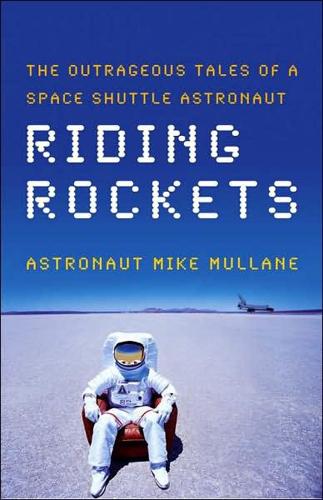
Riding Rockets: The Outrageous Tales of a Space Shuttle Astronaut
by
Mike Mullane
Published 24 Jan 2006
But the liftoff date—originally scheduled for spring 1986—was slipping to the right. The new Vandenberg launchpad and launch control center had to be finished and checked out. The State Department had to complete its negotiations to secure shuttle abort landing rights on Easter Island’s runway, a task being made more difficult by a Soviet Union disinformation campaign that shuttle operations would destroy the island’s stone figures. The Soviets understood that most of the payloads carried out of Vandenberg would be spying on them and were doing their best to lay down obstacles. STS-62A’s slippage provided time for me to pull other duties, including several missions as a CAPCOM.
…
He lifted the flowers to his mouth like a microphone and began to speak loudly into their blooms: “Mike, wasn’t that briefing about our new F-99 Mach 7 fighter really interesting?” Then he handed the vase to me. I joined in the fun. “Yeah, and to think Mach 7 is itssingle -engine speed.” The others at the table picked up on our disinformation campaign and the vase of flowers went from hand to hand while the rest of our group made even more outrageous claims about secret weapon systems we had recently seen or flown. Meanwhile, the humorless commie diners stared at us as if we were mad. Since we were talking into daffodil blooms, I could understand their bewilderment.
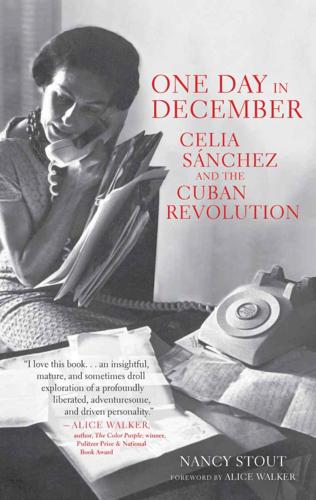
One Day in December: Celia Sánchez and the Cuban Revolution
by
Nancy Stout
Published 2 Feb 2013
Rumors were everywhere, in open talk of invasion; insiders announced that they knew the exact date for Fidel’s arrival; that hundreds or even thousands of men were coming with him; that cargos of weapons had already arrived; that millionaire former president Prio, exiled in Florida, was funding Fidel and that tanks and planes had been provided. Such gossip was augmented by the military, which issued its own disinformation, fueling the fire to inspire the government forces to greater vigilance. The higher-ups knew from their informers in Mexico that something was in the offing. Even then, Duque de Heredia remembers, “We would see Frank in the red automobile, bought with movement funds, carrying out his grand activity, along with Pepito Tey and other well-known revolutionaries.
…
The M26 leadership seized on the idea that Fidel must become visible, alive and well, to the international press. Faustino Pérez had been sent to Havana to handle just this sort of thing. He sought contact with Ruby Hart Phillips, a stringer for the New York Times, offering an exclusive on Fidel’s story. In the days following the landing, Phillips and her editor had fallen for the army’s disinformation campaign, and the Times had printed Fidel’s obituary on its front page. Fidel was alive, and the Times should acknowledge the fact. MEANWHILE, EUTIMIO HAD STARTED to travel full-time with the guerrillas, as their mountain guide. But on January 28, he separated from them. He apologized to Fidel, leaving him and his fighters on their own only because his mother was ill, and pledging to return no later than the end of the week.

After the Cataclysm
by
Noam Chomsky
Published 17 Dec 2014
This fact alone might have suggested that this journal is hardly a trustworthy source, had the question been of any concern. 126. See chapter 2 of this volume, p. 29-30, for one of many examples. It is difficult to imagine that the CIA, with its long history of deception in Indochina, has suddenly ceased its disinformation campaigns. Ed Bradley of CBS news, asked on the MacNeil/Lehrer Report to comment on the “allegation that there is a disinformation network at work spreading these allegations” of Cambodian atrocities, responded: “I don’t have any doubts that there is some element of truth in it...,” a plausible surmise. The alleged “interview” is not found in the regular FBIS translations though it does appear in a special “For Official Use Only” supplement to the Daily Report for Asia and Pacific.
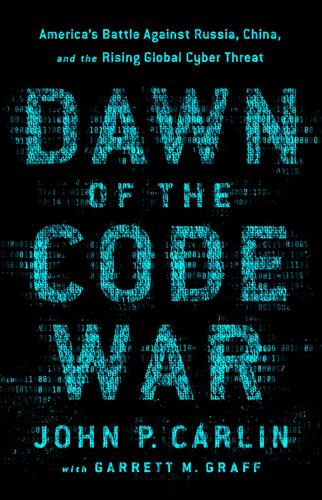
Dawn of the Code War: America's Battle Against Russia, China, and the Rising Global Cyber Threat
by
John P. Carlin
and
Garrett M. Graff
Published 15 Oct 2018
You only need to log on to Facebook or Twitter these days to see that our hatred for ourselves—our distrust of each other—is leading us to doubt proud historical traditions, to question bedrocks of our democracy and long-standing principles about America’s role in creating a better world. The very online tools that a decade ago we hoped would usher in a new era of openness and participatory democracy have instead been turned into tools of hate that spread disinformation and stoke anger with ease. As one columnist recently put it, “Companies that are indifferent to democracy have acquired an outsized role in it.” Together, the combination of these six blurred lines has presented the United States—both its government and us as citizens and individuals—an unprecedented challenge.
…
We need something like a “Dead Man’s Switch” for our election system. A body like the National Intelligence Council (NIC), the group of career analysts who help issue consensus national intelligence assessments, could be designated in advance to analyze whether a foreign actor is seeking to interfere with an election—whether through disinformation campaigns, hacking candidates or political parties, or actual attacks on the election infrastructure. Then, on a certain date—say 100 days before a national election—that team and the intelligence community should be obligated to report to Congress whether they have witnessed any suspicious foreign interference and then issue a second report if they later do detect interference.
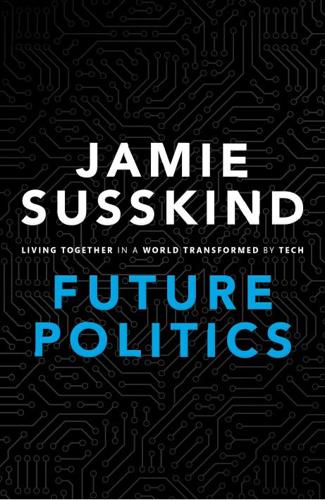
Future Politics: Living Together in a World Transformed by Tech
by
Jamie Susskind
Published 3 Sep 2018
David Held, Models of Democracy (Third Edition) (Cambridge: Polity, 2006), 237–42; Amy Gutmann and Dennis Thompson, Why Deliberative Democracy? (Princeton: Princeton University Press, 2004), 10–14. 3. See Yochai Benkler, The Wealth of Networks: How Social Production Transforms Markets and Freedom (New Haven and London: Yale University Press, 2006). 4. See e.g. Robert Faris et al.,‘Partisanship, Propaganda, and Disinformation: Online Media and the 2016 U.S. Presidential Election’, Berkman Klein Center Research Paper <https://papers.ssrn.com/sol3/papers. cfm?abstract_id=3019414> (accessed 8 December 2017). 5. See Cass R. Sunstein, Republic.com 2.0 (Princeton: Princeton University Press, 2007); Cass R. Sunstein, #Republic: Divided Democracy in the age of Social Media (Princeton: Princeton University Press, 2017); Alex Krasodomski-Jones, ‘Talking To Ourselves?’
…
‘Facebook, Microsoft, Twitter and YouTube Announce Formation of the Global Internet Forum to Counter Terrorism’. 26 Jun. 2017 <https://newsroom.fb.com/news/2017/06/ global-internet-forum-to-counter-terrorism/> (accessed 1 Dec. 2017). Fairfield, Joshua A. T. Owned: Property, Privacy, and the New Digital Serfdom. Cambridge: Cambridge University Press, 2017. Faris, Robert, Hal Roberts, Bruce Etling, Nikki Bourassa, Ethan Zuckerman, and Yochai Benkler. ‘Partisanship, Propaganda, and Disinformation: Online Media and the 2016 U.S. Presidential Election’. Berkman Klein Center Research Paper <https://papers.ssrn.com/sol3/papers.cfm?abstract_ id=3019414> (accessed 8 Dec. 2017). Farrand, Benjamin, and Helena Carrapico. ‘Networked Governance and the Regulation of Expression on the Internet:The Blurring of the Role of Public and Private Actors as Content Regulators’.
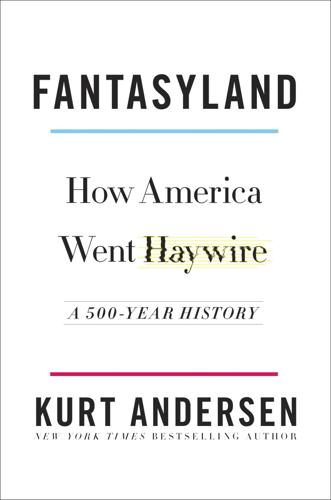
Fantasyland
by
Kurt Andersen
Published 5 Sep 2017
Like Christians certain both that evolution is a phony theory and that God created people a few thousand years ago, conspiracists are simultaneously credulous (about impossible plots) and incredulous (about the confusing, dull gray truth). Conspiracists often deride arguments against their theories as disinformation cooked up by the conspirators—the way some Christians consider evolutionary explanations to be the work of the devil. Researchers and experimenters have repeatedly demonstrated this pinball effect, in which fantastical beliefs lead to other, disparate fantastical beliefs. Once people decide a particular theory is true, they’re apt to be open to another and another and another.
…
Kennedy, Jr., became the movement’s star, repeating his line that U.S. government scientists were “involved in a massive fraud.” His big article on the subject was eventually retracted by both magazines that published it. Part of the corrupt cover-up! Among children born since thimerosal was removed from vaccines, autism-spectrum diagnoses continued rising. Lies, disinformation and lies! Still more studies appeared concluding vaccines are safe. If not the mercury, then some other toxin! If not autism, then asthma or juvenile diabetes! Their beliefs, like religious faith, are unfalsifiable by facts. The media did their part too. In 2002 The New York Times Magazine ran a long article called “The Not-So-Crackpot Autism Theory.”

When the Heavens Went on Sale: The Misfits and Geniuses Racing to Put Space Within Reach
by
Ashlee Vance
Published 8 May 2023
To this day, Worden has maintained that the information warfare program may have been the United States’ best attempt at fending off terrorist threats. “The terrorists have to be persuaded that they don’t want to do terror,” he said. “You aren’t going to kill all of them.” But, he added, “People accused us of doing disinformation. That was rubbish, but it caused enough controversy. So I had the honor of being fired by the president. I got out of the air force as a brigadier general. Not too bad.” IN OCTOBER 2002, HOUSTON, TEXAS, played host to the annual International Astronautical Congress. The event dated back to the 1950s and brought together many of the leading space figures for the typical conference fare of speeches and seminars.
…
Modi’s government denied the claims and insisted that its strike had wiped out “a very large number” of terrorists. In the past, people in the region were left on their own to try to discern which government was telling the truth. Each side would push its version of events and accuse the other of spreading disinformation. Reporters would do their best to go to the site and speak with witnesses to the bombing raid, but their accountings of events would still be surrounded by doubts and doubters. Planet, however, had satellite images that clearly showed that India had missed its target. The bombs dropped by the Indian jets had fallen in empty fields.
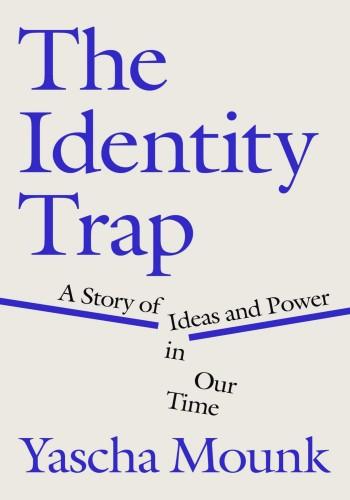
The Identity Trap: A Story of Ideas and Power in Our Time
by
Yascha Mounk
Published 26 Sep 2023
GO TO NOTE REFERENCE IN TEXT they consider “misinformation”: For a statement of some of the problems with the concept of “misinformation,” which ultimately argued that the concept could be made useful if it were to be applied more rigorously, see Conor Friedersdorf, “How ‘Big Disinformation’ Can Overcome Its Skeptics,” Atlantic, April 21 2022, https://www.theatlantic.com/ideas/archive/2022/04/anti-disinformation-laws-social-media/629612/. Also note that the general public isn’t very cleare on what constitutes “misinformation” or “fake news.” According to a 2017 survey by Gallup and the Knight Foundation, 48 percent believe that “people knowingly portraying false information as if it were true” is “always” fake news, and another 46 percent believe it is “sometimes” fake news.
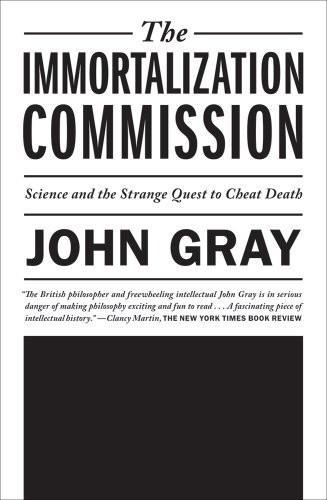
The Immortalization Commission: Science and the Strange Quest to Cheat Death
by
John Gray
Published 11 Apr 2011
By the time Moura renewed contact with him on 29 July 1924 – Lockhart gives the date in his second book of memoirs, Retreat from Glory (1934) – he had left his wife and child and was involved with a married woman, the young third wife of a British peer, Lord Rosslyn, and under her influence had converted to Roman Catholicism. Lockhart never lost touch with the hidden parts of government. At the outbreak of the Second World War in 1939 he joined the Political Intelligence Department of the Foreign Office. Later he was appointed Director of the Political Warfare Executive, which ran British disinformation operations throughout the war. In 1943 he was knighted. Lockhart’s life after the Second World War was a long decline. The relationship with Lady Rosslyn broke down; she entered a convent, and Lockhart married his wartime secretary (he had divorced his first wife in 1938). His melancholy only deepened.
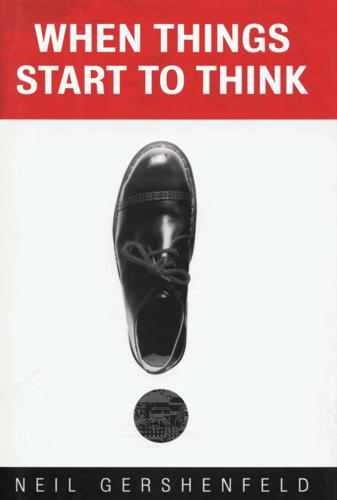
When Things Start to Think
by
Neil A. Gershenfeld
Published 15 Feb 1999
45 The Personal Fabricator 63 Smart Money 77 WHY Rights and Responsibilities 95 Bad Words 107 Bit Beliefs 123 Seeing Through Windows 13 7 viii + CONTENTS HOW The Nature of Computation 151 The Business of Discovery 169 Information and Education 185 Things That Think 199 Afterword 215 Index 217 Preface I have a vested interest in the future, because I plan on living there. I want to help create one in which machines can meet the needs of people, rather than the other way around. As more and more gadgets demand our attention, the promises of the Digital Revolution start to sound more like those of a disinformation campaign. A counterrevolution seeks to protect our freedom to not be wired. But rather than ask whether reading is better done with a book or a computer, I want to show how to merge the best features of each. This modest aim has radical implications, and regrettably little precedent. Putting ink on paper, and data on a CD-ROM, are separated by a divide between the old analog world of atoms and the new digital world of bits.
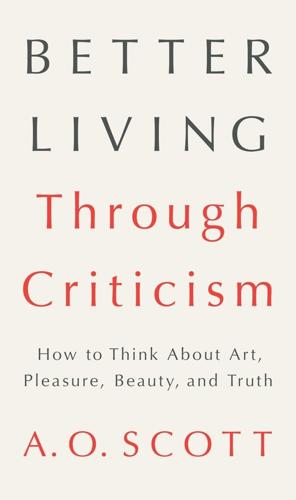
Better Living Through Criticism: How to Think About Art, Pleasure, Beauty, and Truth
by
A. O. Scott
Published 9 Feb 2016
• • • Formalism is thus less a theoretical mistake than a useful fantasy, a category error that helps to mark a crucial, contested, perpetually shifting boundary, the one between art and everything else. This distinction turns out to be anything but obvious. For one thing, the supposedly simple matter of what does or doesn’t count as art is a subject of endless debate, prejudice, disinformation, and plain idiocy. There are systems of social power that declare some activities and objects worthier of the name than others. There is also, in history (as in Robert Frost’s idea of nature), something that does not love a wall, a mysterious, implacable force that erodes such exclusionary categorical distinctions.

Revolting!: How the Establishment Are Undermining Democracy and What They're Afraid Of
by
Mick Hume
Published 23 Feb 2017
In which case the democratic system that gave them the chance to dictate to their betters must ultimately be at fault. There have been differences in the masses-bashing responses to Brexit and Trump. But three common themes stand out. All are attempts to delegitimise the results and the voters who produced them. The first theme is that the votes were a result of ignorance and disinformation in the age of ‘post-truth politics’. The second is that the voters must have been motivated by bigotry, racism and hatred. And the third is that, given the above, allowing the votes of the demos to determine important issues is a threat to … democracy. Let’s look at these excuses in turn. ‘Post-truth’ politics for ‘unqualified simpletons’ It has been widely argued and accepted that those voting for Brexit in the UK or Trump in the US must have been uninformed, ‘low-information’ people, emotionally gullible and easy prey to the lies of demagogues – now renamed ‘post-truth politics’.
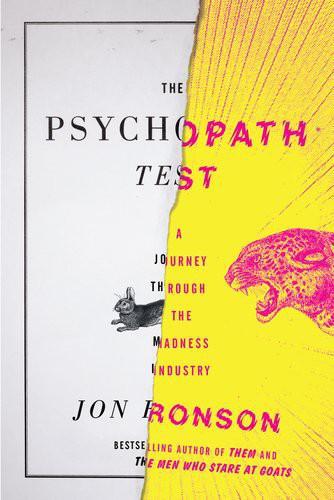
The Psychopath Test: A Journey Through the Madness Industry
by
Jon Ronson
Published 12 May 2011
“They formed the most bizarre theories about me. They decided that because I had this group that I’d set up, and I had this blog that I’d set up, I was feeding the official story to the survivors, and I was somehow controlling them, and I was a government mouthpiece who’d been tasked with disseminating disinformation. They became very suspicious of me. They formed this theory that I was some kind of counterintelligence professional or security services covert operative. Some of them thought I didn’t even exist. They thought I was a team of men who had been tasked with creating this Rachel North persona and maintaining it as a means of what they called Psy-Ops—psychological operations—to control the population of the UK.”
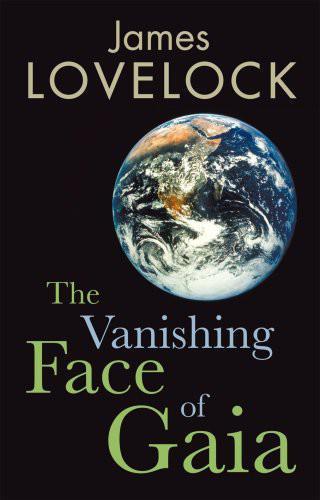
The Vanishing Face of Gaia: A Final Warning
by
James E. Lovelock
Published 1 Jan 2009
As oil runs out we will need to synthesize fuel for the mobile machinery of construction, transport and agriculture. This is not difficult to do from coal or nuclear energy but we need to start preparing for it now. We may even have to consider the direct synthesis of food from carbon dioxide, nitrogen, water and tissue culture. There will be a flood of anti‐nuclear energy disinformation from energy companies whose profitability is threatened and even from nations who see their power and influence lessened. Do not believe such tales as that the construction of a new nuclear power source takes ten to fifteen years. Construction takes the French less than five years and there is no reason why we should take longer, if we avoid the excessive time spent in planning agencies, courtrooms and at public hearings.

How PowerPoint Makes You Stupid
by
Franck Frommer
Published 6 Oct 2010
Dave Paradi, author of a PowerPoint guide, reports on a survey of 688 people conducted on the Internet in 2007 and intended to identify the major sources of boredom when viewing a presentation.10 Far in front is the inept speaker who reads his slides (62 percent), followed by texts in small typefaces (46.9 percent), bad choice of colors (42.6 percent), and complete sentences in place of bullet lists (39.1 percent).11 This confirms, incidentally that the bullet point is indeed the soul of PowerPoint and that those who try to get away from this mode of exposition, whose perils we have seen, are in danger of missing their target. DISINFORMATION ABOUT A PANDEMIC Aside from the physiological conditions of visibility and readability, the use of visuals in PowerPoint, though the source of its success, poses deeper problems. The easy integration into PowerPoint of images and graphs can considerably alter the quality of the information, its validity, or even its credibility, especially in fields that require the greatest precision.

On Nature and Language
by
Noam Chomsky
Published 16 Apr 2007
The goal of Britain’s Ministry of Information was “to control the thought of the world,” and particularly the thought of American intellectuals, who could be instrumental, it was reasonably expected, in bringing the US into the war. To help achieve this goal, President Woodrow Wilson established the country’s first official propaganda agency, called the Committee on Public Information – which of course translates as “public disinformation.” Run by leading progressive intellectuals, its task was to turn a pacifist population into hysterical jingoists and enthusiasts for war against the savage Huns. These efforts had enormous success, including scandalous fabrications that were exposed long after they had done their work, and often persist even after exposure.
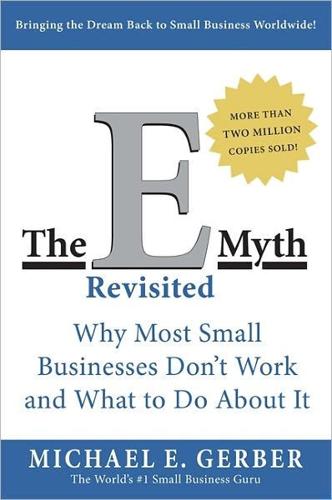
The E-Myth Revisited: Why Most Small Businesses Don't Work and What to Do About It
by
Michael E. Gerber
Published 3 Mar 1995
“But it’s important that you take it seriously. Because it most often is regarded by small business owners as merely ‘good common sense.’ And I have seen more often than not that the only definition of ‘good common sense’ is ‘my opinion.’ That most small business owners, suffering as they do from what I’ve come to call ‘willful disinformation,’ simply decide what they want to do without any information at all, without any interest in what’s true, and then simply do it. Stationery designed by the local quick-printer with a logo thrown in. Colors picked by their wives. Signs designed by the local sign guy whose experience is in painting signs, not in determining what colors and shapes are psychographically correct.

Project Azorian: The CIA and the Raising of the K-129
by
Norman Polmar
and
Michael White
Published 1 Dec 2010
Just the fact that they managed to build a ship of 60,000 tons of displacement, to install equipment to sustain such a [submarine] load, to make provision of how to accommodate the submarine under the ship and finally to lift it up. It seemed to us something unreal, fantastic, I can compare it with a mission to the moon in regard of technology and invested money. And another point—the ship was built in two years [sic] and we were fooled these two years—the disinformation was organized outstandingly.4 Thus did the “enemy” judge Project Azorian. That judgment was shared by many Americans, and was “made official” in July 2006 when the American Society of Mechanical Engineers awarded its prestigious Historic Mechanical Engineering Landmark award to the Hughes Glomar Explorer.

The Nation City: Why Mayors Are Now Running the World
by
Rahm Emanuel
Published 25 Feb 2020
We worship together. We celebrate together. We grieve together. Our local governments and cities provide a place to satisfy our craving for a sense of community and our yearning to belong and be a part of something that is meaningful and bigger than ourselves. That intimacy should not be overlooked. The disinformation and the conspiracy theories that flood social media are almost all about national politics and politicians and not about local ones. There’s a reason for that: We know each other too well to fall for it. All mayors make mistakes—I made my share during my two terms in Chicago. But good mayors never shy away from addressing issues head-on.

Dead Mountain: The Untold True Story of the Dyatlov Pass Incident
by
Donnie Eichar
Published 20 Oct 2014
In the last two decades, some authors have suggested that the hikers had witnessed a top-secret missile launch—a periodic occurrence in the Urals at the height of the Cold War—and had been killed for it. Even self-proclaimed skeptics, who attempt to cut through the intrigue in order to posit scientific explanations, are spun into a web of conspiracy theories and disinformation. One heartbreaking fact, however, remained clear to me: Nine young people died under inexplicable circumstances, and many of their family members have since passed away without ever knowing what happened to their loved ones. Would the remaining survivors go to their graves with the same unanswered questions?
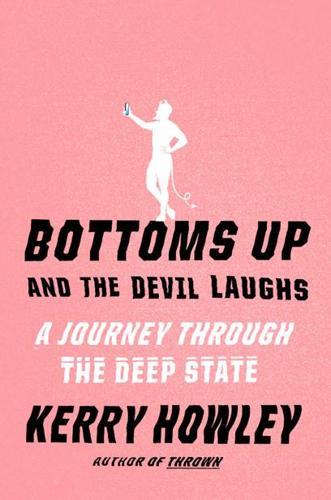
Bottoms Up and the Devil Laughs
by
Kerry Howley
Published 21 Mar 2023
One could find what appeared to be CNN photos and local news clips documenting the event, and a Wikipedia page referring back to these news clips, though there had been no explosion. If you had said then that government-backed Russians were behind this, and they were practicing for a much larger disinformation campaign that would aid in the election of a reality TV star with narcissistic personality disorder, you would have sounded deeply unwell. You probably would have been. A prophet of sound mind is no prophet at all. Just look at the can, is what I am saying. You cannot deny that that is a cross.
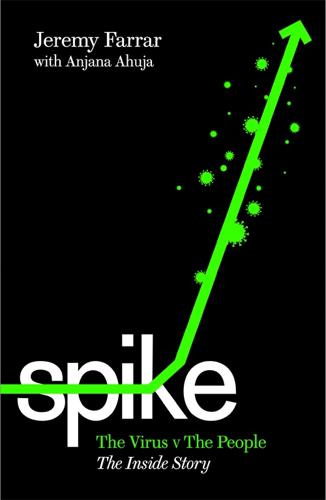
Spike: The Virus vs The People - The Inside Story
by
Jeremy Farrar
and
Anjana Ahuja
Published 15 Jan 2021
Researchers dropped their usual workloads and joined the international effort. Journals and preprint servers worked hard to build up a critical mass of reliable information and make it freely available at speed. Our knowledge about the virus evolved along with the virus itself, but the uncertainty allowed misinformation and disinformation to flourish. There was great science, which gave us vaccines; there was science that could have been better, like clinical trials, which mostly ended up being patchy and uncoordinated (with the notable exception of RECOVERY and Solidarity* trials); and there was bad science, including speculation, without evidence, that there would be no second Covid-19 wave.

The Reluctant Carer: Dispatches From the Edge of Life
by
The Reluctant Carer
Published 22 Jun 2022
The alert-call system runs through the landline, as does the broadband which has vanished into the bargain. They both have basic mobiles but neither like nor especially understand them. The signal at the house is poor, too. We can’t leave them here with nothing. Neither, you might think, could the phone company, but no. Their clients’ vulnerability is no obstacle to the baroque opera of disinformation, institutionalized indifference and psy-ops-level bullshit that ensues as we attempt to get reconnected. Our first point of contact is an overseas call centre. Nothing against those per se, but in this instance they are evidently predisposed by the same corporate connivance and cost-cutting that engenders their existence to tell us lies.

Deep Time Reckoning: How Future Thinking Can Help Earth Now
by
Vincent Ialenti
Published 22 Sep 2020
What emerged is a format that resists both Anthropocene ecological degeneration and the intellectual downturn of the deflation of expertise. Taking a full twelve years to develop, my anthropological exploration was out of sync with today’s twenty-four-hour news cycles’ nonstop feeds of shocking stories. It plodded on slowly and carefully amid online media’s whirlwind of information and disinformation, hysterical speculations, and fractious debates. Yet this book constitutes just one form of intellectual resistance. There are many other ways of countering shallow time discipline already out there today, just waiting to be discovered. If we all find our own, then real progress is possible. NOTES 1.
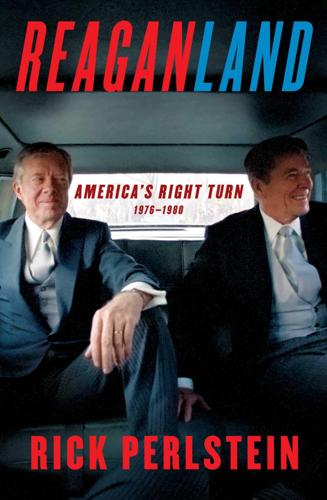
Reaganland: America's Right Turn 1976-1980
by
Rick Perlstein
Published 17 Aug 2020
“Punch” Sulzberger invited its president, Reed Irvine, to regular conclaves at the newspaper’s corporate suite—a courtesy extended to no other shareholder. The relationship soon advanced to a first-name basis: “Dear Punch,” Irvine wrote after a meeting in July, “One area that we did not get into to the extent that I had wanted was the defense that exists to protect the Times and its readers from the Soviet disinformation and propaganda operation.… We lost in Vietnam because of our inattention to this area.” Sulzberger dutifully delegated his second-in-command to ride herd on the paper’s Paris bureau regarding one of Irvine’s complaints. Executive editor Max Frankel fumed to Sulzberger, “I think it’s more fitting to tell such people to practice their judgement of us in their publication and to let us manage and write ours as we see fit.
…
Once, its supervisor spotted mounds covered by black tarps at McGuire Air Force Base in New Jersey. He had a local check on them every single day. “It never moved!” he told an interviewer more than ten years later. “It may still be there!” No, the real jackpot came from the operation’s other wing: disinformation. It was run by an exceptionally well-connected and shrewd professional media manipulator named Robert Keith Gray, on leave from the Washington office of the public relations firm Hill & Knowlton. The aim was to sow public suspicion that Carter would even sell out America’s security in order to win—so if the miracle actually happened, the public would suspect it all was a cynical ploy.
…
Gray’s first success might have come on August 18. Jack Anderson published the first of a series of columns claiming that Carter was planning an invasion of Iran, timed, for maximum political gain, in mid-October. This was not true. National Security Agency Iran hand Gary Sick came to believe it was the work of Gray’s disinformation team—a suspicion underlined by an utterance immediately afterward, as if in coordination, in which Reagan expressed his fear Carter might be “tempted to take reckless actions designed to reassure Americans that our power is undiminished.” The operation attempted to nest the hostage-cynicism narrative within a larger one: that Carter was no high-minded idealist, but actually a power-mad fiend.

Operation Paperclip: The Secret Intelligence Program That Brought Nazi Scientists to America
by
Annie Jacobsen
Published 11 Feb 2014
But Fleischer’s allegiance was to his colleagues, so he lied to Staver and said he had no idea what Staver was talking about. He pointed the finger at another colleague, an engineer and von Braun deputy named Dr. Eberhard Rees. Ask Rees, Fleischer said. He was the former chief in charge of the Peenemünde assembly line. When interviewed by Staver, Dr. Eberhard Rees played his own disinformation card, using Major Staver’s influence to help spring a third colleague from jail. Walther Riedel, chief of V-2 rocket motor and structural design, had been one of the four men honored at the Castle Varlar event the previous December. Now Riedel was receiving rough treatment in a jail eighty miles away, in Saalfeld.
…
There was valuable intelligence to be gained from these individuals, Philp learned, willingly or through coercion. But Philp also found that his officers lacked a greater context within which to interpret the raw intelligence being gathered from the Soviets. Russia had been America’s ally during the war. Now it was the enemy. The Soviets were masters of disinformation. Who was telling the truth? The Nazi prisoners claimed to know, and Colonel Philp began using several of them to interpret and analyze information from Soviet defectors. These Nazis were “experts in espionage against the Russians,” Philp later said. Two of them seemed particularly knowledgeable: Gerhard Wessel, who had been an officer in the German intelligence organization Abwehr, and Wessel’s deputy, Hermann Baun.

The Long Game: China's Grand Strategy to Displace American Order
by
Rush Doshi
Published 24 Jun 2021
An authoritative commentary on Xi’s 2017 National Security Work Forum cited Western reports to argue that “the most basic pillars of the Western world order are weakening. In the ‘post-truth’ era, ‘liberal democracies’ are vulnerable to misinformation.”38 The “information explosion” was causing “social tearing,” noted one Chinese Academy of Social Science (CASS) scholar, all amplified by algorithms, targeted advertising, and disinformation that “accelerate the spread of global populism/nationalism” and cause “serious polarization.”39 Jin Canrong argued that the culmination of these trends was illiberalism and dysfunction: “the polarization of the rich and the poor leads to widespread dissatisfaction in the lower and middle classes.
…
And as this book has demonstrated, China has had a grand strategy to displace American order and build its own order at both the regional and global level. It now seeks to be the world’s leading state. Despite their popularity in Beijing, narratives on American decline are often incomplete. Declinists point to forces—such as inequality, polarization, disinformation, and deindustrialization—that are real and formidable in the United States, but they forget these same forces are also global in nature rather than uniquely American. At the same time, they overlook US advantages over China, which has a fast-aging population, enormous debt, slowing growth, and a currency still far from rivaling the dollar.

Power and Progress: Our Thousand-Year Struggle Over Technology and Prosperity
by
Daron Acemoglu
and
Simon Johnson
Published 15 May 2023
Measures that the French, the British, and other Europeans had developed over more than a century for military operations in tropical countries could have been adopted in Panama and would have reduced death rates by an order of magnitude. But this would have meant significantly less digging per year. Lesseps was warned in no uncertain terms about these risks, including during the Paris Congress. Yet he chose to regard all reports of ill health in Central America as disinformation spread by his enemies. From 1881 to 1889 the cumulative death toll was estimated at twenty-two thousand, of which around five thousand were French. In some years, more than half the people who came out from France died. One-third of the workforce may have been sick at any one time. People employed directly by Lesseps’s company were eligible to receive free medical attention, although this was a mixed blessing; conditions in the hospital included standing water that allowed mosquitoes to breed, and epidemics spread mercilessly in the wards.
…
These technologies helped Taiwan’s early and effective response to COVID-19, in which the private sector and civil society collaborated with the government to develop tools for testing and contact tracing. New forums for virtual participation can of course repeat the same mistakes that social media commits today, exacerbating echo chambers and extremism. Once such tools start being used extensively, some parties will come up with strategies to spread disinformation, whereas others might use such platforms for demagoguery. Sensational, misleading content may start spreading, and rival viewpoints can begin shouting each other down rather than deliberating constructively. The best way of avoiding such mistakes is to view pro-democratic online tools as a work in progress that needs to be updated continuously as new challenges develop, and also as a complement, rather than as a full substitute, to traditional, in-person civic engagement.

Gorbachev: His Life and Times
by
William Taubman
He had hoped that the new presidency would inherit the party’s role as a “powerful political center for the country.”48 Instead, he now sat almost alone atop a still small presidential apparatus, presiding over what Shakhnazarov calls “a pseudo-businesslike bustling about combined with a monstrous amount of organization muddle.”49 Moreover, his administration was managed by Boldin, who inundated him with incriminating disinformation about democrats, including Gorbachev’s close ally Yakovlev, who the KGB insisted was a CIA “agent of influence.” According to Yakovlev’s later account, his phone was being tapped, eavesdropping bugs had been installed in his office, he felt he was being followed, his son had been shot at in a train by an unknown assailant, and someone had set fire to his daughter’s car.50 THE 1989 ELECTION CAMPAIGN for the new USSR Congress of People’s Deputies, and the first sessions of that Congress, constituted the new, more democratic “game” that Gorbachev was still learning to play.
…
“If you keep this up,” Lukyanov said to Chernyaev and Petrakov, the Supreme Soviet will oust the government, the Congress of People’s Deputies will disband itself, and “you and the president will have to go.” Gorbachev played the peacemaker, but only up to a point. Ryzhkov demanded that the president meet with his group before Yavlinsky’s and that he do so almost immediately, before Yavlinsky could ply him with “disinformation.” Gorbachev changed the subject and, after leaving the terminal, called Petrakov from his car, summoning Yavlinsky’s group to the Kremlin at ten o’clock the next morning.96 The meeting, which several young economists attended in short-sleeved summer shirts (having had no chance to go home and change into jackets and ties), went swimmingly for several hours.
…
What if KGB provocateurs triggered that violence in order to justify a crackdown? If any of the demonstrators had been killed, Yakovlev said later, “all of Moscow would have been in the streets.” In the end, both sides showed restraint and the demonstration ended peacefully. Gorbachev was lucky, but not before he showed himself susceptible to the KGB disinformation that prompted him to issue the ban in the first place. Demonstrators were planning to storm the Kremlin walls using “hooks and ladders,” he was told, even though Moscow Mayor Popov later joked that given the shortages of nearly everything, there wouldn’t have been enough rope in the city to allow the attempt.17 Like the Vilnius bloodshed and the order for joint military-police patrols, Gorbachev’s ban on demonstrations backfired, intensifying liberals’ disillusionment with him without convincing hard-liners he was their man.
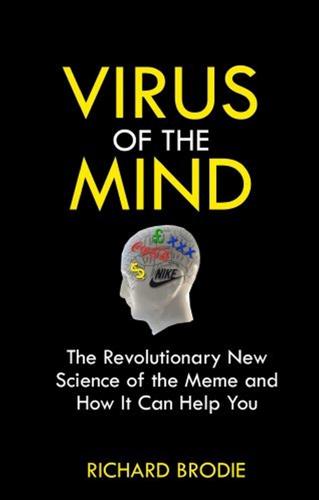
Virus of the Mind
by
Richard Brodie
Published 4 Jun 2009
A harsh if typical attitude from the rational, scientific community might be something like this: “I really pity those poor religious fools who run around like chickens with their *There’s even a fellow who travels the world lecturing about how the theory of the origin of species through evolution couldn’t possibly be true—sort of religious disinformation! I watched one of his lectures on television, enjoying the challenge of finding the holes in his logic. It went something like this: “Look at all the beautiful colors of birds! There’s no scientific reason for them! They’re just beautiful! Obviously the work of God!” “Look at how complicated the eye is!
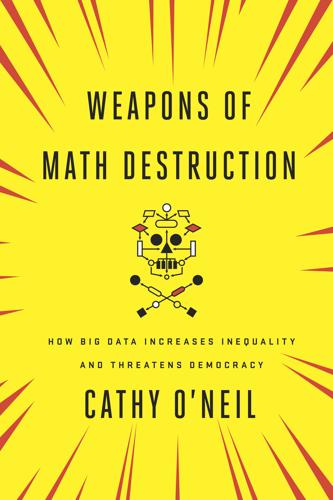
Weapons of Math Destruction: How Big Data Increases Inequality and Threatens Democracy
by
Cathy O'Neil
Published 5 Sep 2016
Successful microtargeting, in part, explains why in 2015 more than 43 percent of Republicans, according to a survey, still believed the lie that President Obama is a Muslim. And 20 percent of Americans believed he was born outside the United States and, consequently, an illegitimate president. (Democrats may well spread their own disinformation in microtargeting, but nothing that has surfaced matches the scale of the anti-Obama campaigns.) Even with the growth of microtargeting, political campaigns are still directing 75 percent of their media buy, on average, to television. You might think that this would have an equalizing effect, and it does.

The Bend of the World: A Novel
by
Jacob Bacharach
Published 13 Apr 2014
If this whole shebang is such a goddamn secret, how come you can write a bunch of books about it? Ah, said Pringle. Fortunately, in a parallel time track, I have been able to convince my compatriots on the Project that the Winston Pringle self-modality who is writing the books is engaging in a necessary kind of disinformation. By telling a truth so strange it appears to be fiction, the true truth is obscured. The true truth, Helen said. The best kind, said Johnny. That’s what I was thinking, Helen said. I like this new girlfriend of yours, Johnny told me. She’s not my girlfriend, I said. I’m his boss’s girlfriend, she said.

Surrender or Starve: Travels in Ethiopia, Sudan, Somalia, and Eritrea
by
Robert D. Kaplan
Published 1 Jan 1988
Moscow used its entrée to develop ties within the Somali officers' corp. In 1969 came General Siad Barre's coup, which the Kremlin very well may have had a hand in, and Soviet-Somali relations blossomed. Soon U.S. Peace Corps volunteers were being stoned in the streets of the Somali capital of Mogadishu thanks to a Soviet disinformation campaign. Between 1970 and 1975, the Somali army was increased from twelve thousand to twenty-three thousand soldiers. The Soviets supplied hundreds of tanks and fifty-five combat aircraft. The presence of ethnic Somalis in Ethiopia's Ogaden desert made Somalia an irredentist state, and the Soviets obviously were taking advantage of Siad Barre's dreams of conquest and a Great Somalia.
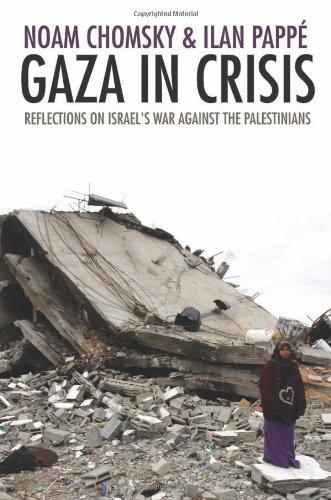
Gaza in Crisis: Reflections on Israel's War Against the Palestinians
by
Ilan Pappé
,
Noam Chomsky
and
Frank Barat
Published 9 Nov 2010
The highly regarded political scientist and historian Shlomo Avineri offered an analysis of these “critical differences of opinion” between Israel and outsiders. Among the causes, he explained, were “the harsh images—a consequence of the firepower Israel used, as magnified by the media—as well as disinformation and, undoubtedly, plain old hatred of Israel.” But he discerned a deeper reason: “The name given to the operation, which greatly affects the way in which it will be perceived. Israelis associate the Hebrew for Cast Lead, as the operation was called, with a line written by poet Haim Nahman Bialik that is part of a Hanukkah song typically sung by cute little children.

The Snowden Files: The Inside Story of the World's Most Wanted Man
by
Luke Harding
Published 7 Feb 2014
Someone in the US intelligence community had tipped off Washington that Morales had smuggled Snowden aboard his jet. An exemplary piece of real-time reporting! They had got him! The only problem was that Snowden was not on board. The White House had pressed the panic button with its European allies because of an intelligence blunder. This may have been the result of clever Russian disinformation. Or a classic CIA goof-up. In Vienna, the president of Bolivia and his defence secretary Ruben Saavedra sat on an airport couch, aggrieved that the US had had the audacity to humiliate a small sovereign nation. Asked whether Snowden had been smuggled aboard, Saavedra turned white. ‘This is a lie, a falsehood.
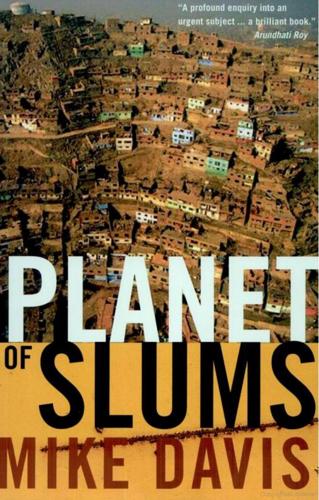
Planet of Slums
by
Mike Davis
Published 1 Mar 2006
Das offers an even harsher i critique of slum-oriented NGOs: 22 Diana Mitlin, "Civil Society and Urban Poverty - Examining Complexity," Environment and Urbanisation 13:2 (October 2001), p. 164. 23 Ruben Gazzoli, "The Political and Institutional Context of Popular Organizations in Urban Argentina," Environment and Urbanisation 8:1 (April 1996), p. 163. 24 Lea Jellinek, "Collapsing under the Weight of Success: An NGO in Jakarta," Environment and Urbanisation 15:1 (April 2003), p. 171. 25 Bayat in Roy and A1 Sayyad (eds), Urban Informality: Transnational Perspectivesfrom the Middle East, Eatin America, and South Asia, pp. 80-81. 26 Thomas, Calcutta Poor, p. 131. Their constant effort is to subvert, dis-inform and de-idealize people so as to keep them away from class struggles. They adopt and propagate the practice of begging favours on sympathetic and humane grounds rather than making the oppressed conscious of their rights. As a matter of fact these agencies and organizations systematically intervene to oppose the agitational path people take to win their demands.
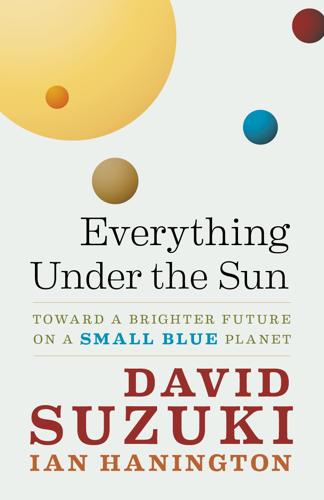
Everything Under the Sun: Toward a Brighter Future on a Small Blue Planet
by
Ian Hanington
Published 13 May 2012
If this is the most “ethical” source of oil we can find, we need to ask other questions about the moral purity of our intensively processed bitumen. For example, if we sell the oil to countries with poor human-rights records, like China, does that affect the product’s “ethical” nature? And how “ethical” are the companies operating in the tar sands; for example, Exxon Mobil, well-known sponsor of climate-change disinformation campaigns; BP, responsible for the massive oily disaster in the Gulf of Mexico in 2010; or Petro-China? There’s also the effect of greenhouse gas emissions on our children and grandchildren, which, to me, is an intergenerational crime. In this light, wouldn’t energy from technologies or sources that limit the greenhouse gas emissions that contribute to climate change and that have minimal environmental and health impacts be far more ethical than fossil fuels?
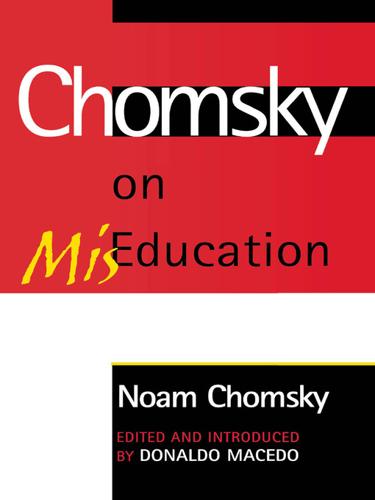
Chomsky on Mis-Education
by
Noam Chomsky
Published 24 Mar 2000
Reuters, NYT, Nov. 9, 1987, citing the CIVS report of November 8 and Latin American officials; Amnesty Law and Bill to suspend the State of Emergency, promulgated in November 1987, unofficial translation, Nicaraguan Foreign Ministry, given to me in December by Foreign Minister Miguel D’Escoto, who appeared genuinely to believe that the Accord would be permitted to survive. 111. Nov. 18, 1987. 112. Lindsey Gruson, NYT, Oct. 29; LeMoyne, NYT, Nov. 29, 1987. 113. Chris Norton, Globe and Mail, Feb. 10, 1988. 114. Chamorro, Packaging the Contras: A Case of CIA Disinformation (New York: Institute for Media Analysis, 1987). 115. Harper’s, Oct. 1987. 116. Lindsey Gruson, NYT, Dec. 15, 1987. 117. Tad Szulc, Parade Magazine, Aug. 28, 1988. 118. Julia Preston notes that the Sandinistas have captured “state-of-the-art equipment, so modern that not even all U.S. units have them” (WP, Feb. 4, 1988), quite apart from the sheer mass of regular supply and the crucial assistance of U.S. aerial and naval surveillance.
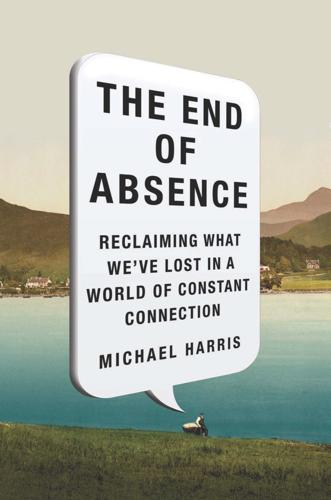
The End of Absence: Reclaiming What We've Lost in a World of Constant Connection
by
Michael Harris
Published 6 Aug 2014
So does every church (with the exception of those promoting doomsday philosophies). If we can see the problem in a scenario like Heilman’s battle with Transcendental Meditation, which played out over just a few years and only a decade after Wikipedia’s invention, then what imperceptible changes might be wrought by such a system over centuries? (Disinformation—active deception—is far more damaging than simple errors.) What uncatchable, unnoticeable changes to human understanding would our collective, incorporated biases visit upon future generations? And one final bias to worry about is, of course, the gender bias. The “consensus” that Wikipedia arrives at turns out to actually be a male consensus.

The Rise of Carry: The Dangerous Consequences of Volatility Suppression and the New Financial Order of Decaying Growth and Recurring Crisis
by
Tim Lee
,
Jamie Lee
and
Kevin Coldiron
Published 13 Dec 2019
Cumulative Advantage Is What Perpetuates Itself Cumulative advantage is implicated in all forms of fads, fashions, crazes, trends—even market bubbles. As illustrated by the example of movie stardom, cumulative advantage is behind “superstar effects” across all cultural products: music, books, success as a “public intellectual,” and more. Cumulative advantage is likely behind the virulence of modern social media—Twitter mobs, disinformation, polarization—where visible numbers of likes, shares, and retweets show us collectively what is right (or safe) to say (or think), and thereby produce powerful feedback effects. Plausibly, cumulative advantage could be related to the persistence of social class, structural racism, and wealth inequality.
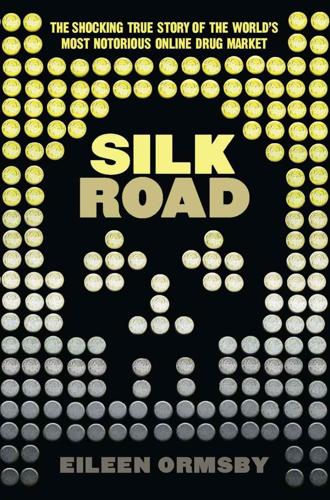
Silk Road
by
Eileen Ormsby
Published 1 Nov 2014
He had then become DPR 2.0, as well as some other Silk Road 2 staff members. Tellingly, both Defcon and ‘DrClu’ repeatedly made the same error of using ‘withdraws’ instead of ‘withdrawals’ that the post-August DPR had made (and the pre-August DPR had not). However, the suspected connection is by no means confirmed. The team at Silk Road 2.0 continued to spread disinformation designed to confuse. Journalist Ken Klippenstein, who interviewed some of the site’s staff members, wrote: Defcon, Silk Road’s interim leader, is a hacker whom staff describe as more technically capable than his predecessor [DPR 2.0]. Whether or not Defcon will don the black mask of ‘Dread Pirate Roberts 3.0’ is uncertain, though the site’s attitude about free access to drugs remains: ‘As you wish.’

The Behavioral Investor
by
Daniel Crosby
Published 15 Feb 2018
Rudyard Kipling begins his coming-of-age classic, ‘If’, with the following stanza: If you can keep your head when all about you Are losing theirs and blaming it on you, If you can trust yourself when all men doubt you, But make allowance for their doubting too; If you can wait and not be tired by waiting, Or being lied about, don’t deal in lies, Or being hated, don’t give way to hating, And yet don’t look too good, nor talk too wise Keeping your head in an information age designed to help you lose it is the never-ending task of the behavioral investor. Cultivating principled contrarianism, an understanding of behavior and a familiarity with enduring empirical principles of finance may not come naturally, but they are the keys to weeding out disinformation en route to mastery of self and wealth. What’s the big idea? We tend to confuse ease of recall with probability. People think in stories, not percentages. We overestimate the likelihood of high-impact-low-probability scary events. Risk measures that fail to account for behavior are useless.
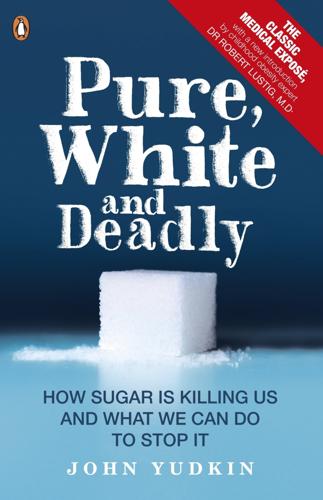
Pure, White and Deadly: How Sugar Is Killing Us and What We Can Do to Stop It
by
John Yudkin
Published 1 Nov 2012
This recalls the qualifications of the man from Tate & Lyle who came to see me at Queen Elizabeth College nearly 20 years earlier to discuss our research. Having dealt with the biochemical and clinical matters relating to my article, the letter from British Sugar proceeds, ‘The sugar industry now recognizes its mistake in not effectively offsetting over the years the barrage of misinformation and disinformation fostered by individuals with a desire to profit from the credulity of the population. This is in the process of being corrected.’ I pointed out earlier that by no means every scientist agrees with my views about sugar. And there is nothing wrong with that: much of the material about which I have written still adds up to circumstantial evidence rather than absolute proof.

Deadly Quiet City: True Stories From Wuhan
by
Murong Xuecun
Published 7 Mar 2023
From that moment at the start of 2020, Xuewen began nagging people. ‘Whenever I met anyone, I’d say it, I’d say it to my family and friends, I’d say to taxi drivers: “Take adequate protection, wear a mask.” But no one paid me any attention.’ He shakes his head. ‘Chinese people believe government propaganda. Can’t do anything about it.’ The government’s disinformation that January – ‘no human-to-human transmission’, ‘preventable and controllable’, ‘no need to panic’ – causes countless people who could have avoided it, to be infected with a serious disease. It causes the whole world to be dragged down into an abyss. Although Xuewen senses danger, he does not fully realise the severity of the situation.

Tomorrow's Capitalist: My Search for the Soul of Business
by
Alan Murray
Published 15 Dec 2022
The heightened expectations of business bring CEOs new demands to focus on societal engagement with the same rigor, thoughtfulness, and energy used to deliver on profits.”23 Eighty-six percent of respondents agreed with the statement, “I expect CEOs to publicly speak out on one or more of these societal challenges, pandemic impact, job automation, societal issues, local community issues.” And 68 percent agreed that “CEOs should step in when government does not for societal impact.” Having said that, in a year when disinformation was rampant, people are feeling shell-shocked and questioning all institutions. I recall a few years ago when Edelman’s global chair of corporate practices, Kathryn Beiser, stated, “Business is the last retaining wall for trust.” That seems to still be true. But the retaining wall needs shoring up.
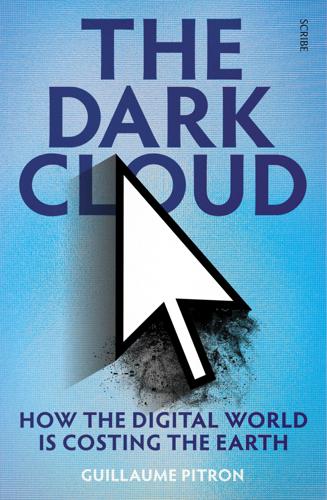
The Dark Cloud: How the Digital World Is Costing the Earth
by
Guillaume Pitron
Published 14 Jun 2023
It also assumes that the internet will become a rare and finite resource, and that access to it should be rationed.71 It’s a fascinating debate, but far from clear-cut, as we shall discover, as the web’s engineers begin to make superb progress so that the network can withstand the imminent tsunami of data. Taking a more radical angle, there are those advocating that we dispense with the internet entirely or partially. Like the Luddite artisans in nineteenth-century England who were opposed to companies that used looms, ‘disinformation’ civil movements, more or less underground, have begun to surge. They urge us to ward off the soothsayers of the digital world who boast an even more connected future, in favour of a more habitable future without it.72 At the very least, the ‘slow web’ movement invites us to decrease the network by lowering broadband speeds.
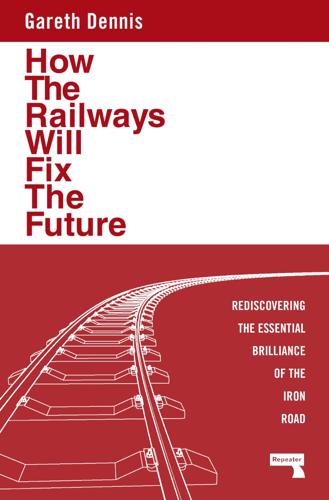
How the Railways Will Fix the Future: Rediscovering the Essential Brilliance of the Iron Road
by
Gareth Dennis
Published 12 Nov 2024
The cost of moving around is a burden for those trying to access employment, education and — even today — clean water and food. Access to public services, too, is limited by car dominance and dependence. It is imperative, therefore, that safe, accessible and frequent public transport options are available for everyone, globally. Automation, isolation, disinformation, radicalisation and war: these are not discrete challenges; they are all interlinked, with each having an impact on all the rest. Usefully, this means that a single tool, chosen and applied correctly, can have meaningful, lasting and significant positive impacts on all of these challenges at once.
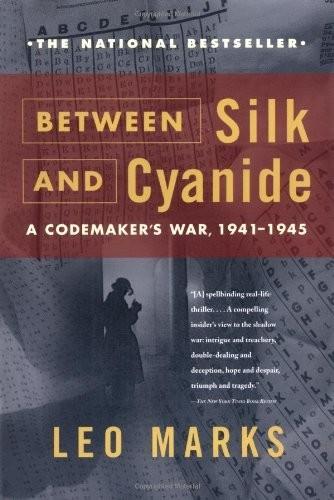
Between Silk and Cyanide: A Codemaker's War, 1941-1945
by
Leo Marks
Published 1 Jan 1998
Nick's next comment was so unexpected that I had to ask him to repeat it. 'We must consider the possibility that the escape's been engineered by the Germans.' He pointed out that Trumpet had sent two messages in September warning London that Sprout and Chive had been captured by the Gestapo, who'd turned them round and helped them to escape so they could spread disinformation. Before I could protest, he added that there was another reason for doubting their story. A cargo ship had recently been blown up in Rotterdam harbour, which could hardly have happened if the entire Dutch resistance was in enemy hands. At which point I also blew up. Pointing to my reports, I said that if they were worth anything at all then Trumpet was completely blown and when I'd read his denunciation of Sprout and Chive I'd taken it as a guarantee of their bona fides.
…
Although fair play in SOE was rare and usually the result of a lapse in concentration, I was hoping that both men would be given the benefits of whatever doubts existed in the minds of those purblind enough to have any. I should have known better. They'd arrived in London on 1 February and amplified their accounts of the German penetration, but their N section interrogators preferred to believe the warnings from Holland that the Gestapo had 'turned' them and allowed them to escape to spread disinformation; they'd been sent to a holding camp in Guildford under open arrest. By early March they were still incarcerated, and were likely to remain so until Giskes lost his creative flow. Nor did yet another change of leadership in N section enhance their chances of being released. Bingham had been dispatched to Australia (hopefully to the Outback), and Major Dobson of the Belgian section had taken his place.

Enemies and Neighbours: Arabs and Jews in Palestine and Israel, 1917-2017
by
Ian Black
Published 2 Nov 2017
Palestinian and Israeli journalists covering the occupied territories face special challenges and dangers, sometimes from their own society as much as from the other. In recent years journalists, social scientists and historians have all had to take account of the immense amount of material published on social media. Facebook, YouTube and Twitter have become rich sources of facts, opinion, propaganda and disinformation about the conflict. Hashtags now matter as much as – if not more than – learned journals. The ephemeral has become both permanent and easily retrievable. ‘Passing the test of time’ is an outdated notion in a digital age when students of the US presidency are reduced to instantly analysing global policy pronouncements in hastily composed messages of 140 characters.
…
Cast Lead began without warning on 27 December with air strikes that had been planned after six months of intelligence-gathering to pinpoint Hamas targets, including bases, weapon silos, training camps and the homes of senior officials. Preparations for an Israeli version of ‘shock and awe’ involved disinformation and deception which kept the media in the dark. And Hamas was apparently lulled into a sense of false security which allowed the initial onslaught to achieve tactical surprise.44 Targets hit in the first devastating mid-morning strike by F16s, Apache helicopters and drones included a graduation parade of traffic policemen in Gaza City, where 15 were killed in what was denounced as a massacre: 100 targets were hit in a few minutes.
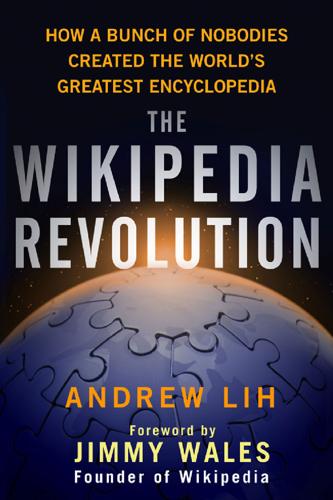
The Wikipedia Revolution: How a Bunch of Nobodies Created the World's Greatest Encyclopedia
by
Andrew Lih
Published 5 Jul 2010
After more community pressure, Essjay finally posted a message called “My Response,” but was hardly contrite. The message only raised more ire in those who sensed he felt no remorse for deceiving a reporter and his fellow Wikipedians: I *am* sorry if anyone in the Wikipedia community has been hurt by my decision to use disinformation to protect myself. . . . I have no intention of going anywhere, because to do so would be to let the vandals, trolls, and stalkers win. Essjay had his supporters. Even skeptics appreciated his widely recognized good work in the community. But their trust had been violated. Scores of fellow users didn’t buy his cover story, and many started using Wikipedia’s years-deep database to comb through his past behavior, made possible because of Wikipedia’s belief in transparency.

Protocol: how control exists after decentralization
by
Alexander R. Galloway
Published 1 Apr 2004
A link’s name and its address must correspond. Wherever the user goes, there he or she must be. If the link’s name and its address do not correspond, then a more insidious type of discontinuity is in effect than even the 404 error could provoke. For while the flows have not been interrupted, they have been infected with disinformation. One flow has been substituted for another flow. Remove barriers. Each click that a user is forced to make on the Web is an unnecessary barrier to that user and will hinder his or her movement. All unnecessary barriers (splash pages, tables of contents, introductory pages) between the user and the content must be removed.

Them: Adventures With Extremists
by
Jon Ronson
Published 1 Jan 2001
said Jim. ‘You can tell by their demeanour,’ I said. ‘Here’s the plan,’ said Jim. ‘We leave the bar together. When we get within earshot of the chasers, I say, “I’m gonna meet my Bilderberg contact at the Tiny Bar.” You say, “Shhh.” Say it urgently as if you don’t want them to overhear. Feed them disinformation.’ ‘I’m not going to do that,’ I said. Jim and I left the bar together. ‘JON,’ said Jim loudly, ‘I’M GONNA MEET MY SECRET BILDERBERG CONTACT AT THE TINY BAR.’ I scowled and said nothing and marched ahead. ‘Very good,’ murmured Jim outside. We split up. I walked down to the beach and found a seafood restaurant.
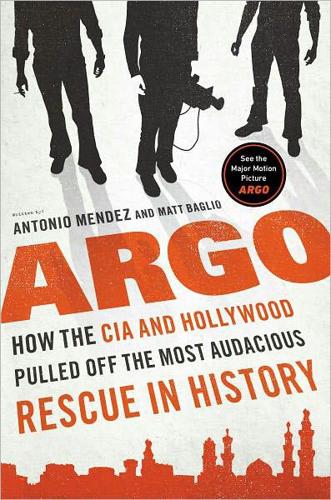
Argo: How the CIA and Hollywood Pulled Off the Most Audacious Rescue in History
by
Antonio J. Mendez
and
Matt Baglio
Published 14 Jun 2012
They could also be used for exfiltrations, false flag recruitment, entrapment, or crossing international borders. The forgeries sometimes were designed to discredit individuals and governments, just like the KGB did to us. Their program was called Special Measures. Our program had no name—we just called it covert action. Other documents that we produced could take the form of disinformation, letters in diaries, bumper stickers, or any other graphics item that could influence events of the day. We were able to reproduce almost anything that was put in front of us; the only restrictions were matters of statecraft, such as currency. Making the other guy’s money at that time was considered to be an act of war.
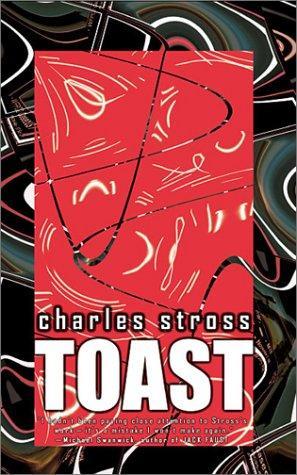
Toast
by
Stross, Charles
Published 1 Jan 2002
One caught my eye, at the bottom: a message from one of No Such Agency’s tame stoolpigeon academics, pointing out that the theorem hadn’t yet been publicly disclosed and might turn out to be deficient. (Subtext: trust the Government. The Government is your friend.) It wouldn’t be the first time such a major discovery had been announced and subsequently withdrawn. But then again, they couldn’t actually produce a refutation, so the letter was basically valueless disinformation. I prodded at the web site again, and this time didn’t even get the ACCESS FORBIDDEN message. The paper had disappeared from the internet, and only the print-out in my pocket told me that I hadn’t imagined it. It takes a while for the magnitude of a catastrophe to sink in. The mathematician who had posted the original finding would be listed in his university’s directory, wouldn’t he?
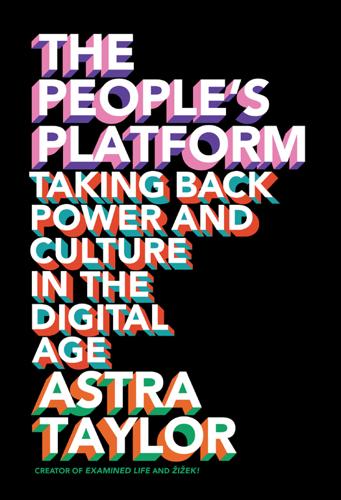
The People's Platform: Taking Back Power and Culture in the Digital Age
by
Astra Taylor
Published 4 Mar 2014
A slew of Web-savvy characters—the kind who appear on panels at South by Southwest (SXSW) and present at TED conferences—are peddling the same idea, their rhetoric spreading out from the tech world to infect other communities. As the online marketing pioneer Tamara Hunt put it, we are all “social capitalists”; the self must be packaged and publicized and invested in so you can cash out. “Personal branding is about managing your name—even if you don’t own a business—in a world of misinformation, disinformation, and semi-permanent Google records,” said Timothy Ferriss, who has made a name for himself advising people on how to make names for themselves using social media.57 The self-branding ideal puts full responsibility on the individual, who must live or die on his or her own in the open market. The corporate ethos that drives discussions of personal branding is fundamental to the architecture of social media.

Lurking: How a Person Became a User
by
Joanne McNeil
Published 25 Feb 2020
On Wikipedia, users work to cull and create, unlike on Facebook, YouTube, Twitter, and other digital public spaces owned by private companies. Those noxious plate tectonics manifest in the proliferation of content prioritized over the value of it; a post might be harassing another user, it might be espousing conspiracies or peddling disinformation, and yet commercial platforms can sell ads against it. But Wikipedia has none of these incentives. A Wikipedia page is not considered more valuable because more people visit it. More people edit the page for Justin Bieber than the page for Pascoag, Rhode Island, and Bieber’s page has more visitors, but that does not correspond with more revenue.

New Dark Age: Technology and the End of the Future
by
James Bridle
Published 18 Jun 2018
Those on the right accused foreign powers of orchestrating the scandal, doubling down on the nationalist rhetoric. Trust in government and democratic institutions fell to a new low. In such a climate, is it any surprise that the young people of Veles should take wholeheartedly to a programme of disinformation, particularly when it is rewarded by the very systems of modernity they have been told are the future? Fake news is not a product of the internet. Rather, it is the manipulation of new technologies by the same interests that have always sought to manipulate information to their own ends. It is the democratisation of propaganda, in that ever more actors can now play the role of propagandist.

Hostile Environment: How Immigrants Became Scapegoats
by
Maya Goodfellow
Published 5 Nov 2019
‘It seems like we’re always apologising for everything, we still have this narrative of “we are contributing, economically, culturally”. We’re always trying to prove a point.’ Herein lies a conundrum for people trying to diffuse myths about immigration. The evidence that migrants contribute to the economy needs to be repeatedly remade because there’s so much disinformation out there that has proved so effective among the general public. For the people who are maligned as a drain on the economy, there is a deeply personal aspect to refuting such a persuasive anti-immigrant narrative that is such a far-cry from the lives they lead. But the ‘contributions’ line is a beginning, not an end point.

Less Is More: How Degrowth Will Save the World
by
Jason Hickel
Published 12 Aug 2020
Some of the larger companies, despite knowing about the dangers of climate breakdown long before it was part of the public debate, have bankrolled politicians who have either denied the science outright or sought to obstruct meaningful action whenever possible. It is in large part thanks to their efforts that the international climate treaties are not legally binding, for they have lobbied vigorously against such a move. And they have waged an extraordinarily successful disinformation campaign that for decades eroded public support for climate action, particularly in the United States, the one country that could feasibly lead a global transition. Fossil fuel companies, and the politicians they have bought, bear significant responsibility for our predicament. But this alone doesn’t explain our failure to act.
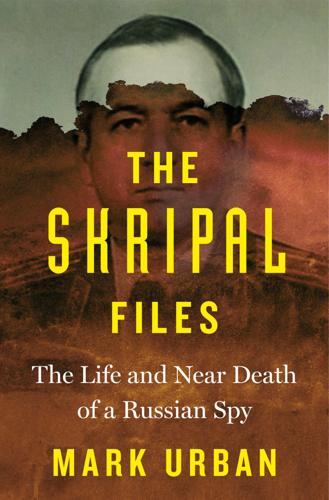
The Skripal Files
by
Mark Urban
FORTHWITH had helped pinpoint GRU assets in the UK. Since no prosecution resulted we can only imagine that the individual(s) he unmasked as spying for Russia or subjects of cultivation by the GRU were disrupted in other ways: by being explicitly warned; professionally sidelined or dismissed; or fed disinformation by British intelligence to send back to Moscow. However, not all of Skripal’s CI leads were quite so valuable. Work on the information he had provided about his agent recruitments in Malta did not produce any prosecutions. Indeed it may only have revealed a couple of US military personnel who were actually counter-intelligence operatives leading the GRU man on.

Fallout: The Hiroshima Cover-Up and the Reporter Who Revealed It to the World
by
Lesley M. M. Blume
Published 3 Aug 2020
The death of an independent press can lead to tyranny and render a population helpless to protect itself against a government that disdains law and conscience. If Americans in 1945 were exhausted by years of demoralizing wartime news, many Americans today are comparably overwhelmed by the current news cycle and sheer volume of information (and disinformation) inundating them by the day, hour, and second. Yet succumbing to numbness and indifference will have disastrous consequences. No matter how exhausting and daunting the landscape, it remains imperative for Americans not to try to “escape into easy comforts” again, as Albert Einstein put it. Hersey and his colleagues likely would have seen the war on facts and assault on the free press in the United States today as one of the most alarming, high-stakes challenges of our times.

The Capitalist Manifesto
by
Johan Norberg
Published 14 Jun 2023
What was once considered the salvation of democracy is now more often seen as its gravedigger. Half of its critics are angry that too much content is censored; the other half are complaining that too little is deleted, allowing hate and lies to spread wildly. The Left thinks these are platforms for right-wing lunatics and disinformation, the Right thinks they are politically correct leftists who invented cancel culture. Many are angry at Apple for charging too much or at Facebook and Google for not charging (‘then you are the product’). At best, social media is just a stupid waste of time. At worst it is a machine that creates polarization, filter bubbles, loneliness and social pressure, and exists only to glue our eyeballs to ads.

Badvertising
by
Andrew Simms
Tobacco misuse and lung carcinoma, by Franz Hermann Muller of the University of Cologne, was one of the first major reports to find a strong link between smoking and lung cancer.7 That was 1939. The truth had to wait another decade before British researchers like Doll and Austin Bradford Hill – and American researchers like Dr Ernst Wynder – began to make these connections again. Because of powerful, coordinated and cynical disinformation campaigns by the tobacco industry doubts were perpetuated long after the evidence was convincing, even among doctors many of whom were smokers. So there was never a single ‘Eureka’ moment of consensus. But already by 1954 the message was somehow getting through, even to the public. A poll in the USA found that 41 per cent of the general public believed that smoking caused lung cancer.8 Yet for some reason, in the UK in particular, it was the 1962 report Smoking and Health which had really gripped the public.
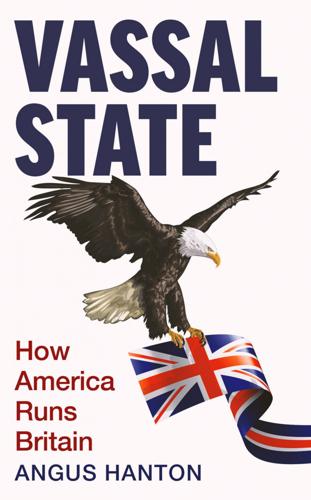
Vassal State
by
Angus Hanton
Published 25 Mar 2024
In Morning After the Revolution, Bowles gives readers a front-row seat to the absurd drama of a political movement gone mad. With irreverent accounts of attending a multi-day course on 'The Toxic Trends of Whiteness,' following the social justice activists who run 'Abolitionist Entertainment, LLC,' and trying to please the New York Times's 'disinformation czar,' she deftly exposes the more comic excesses of a movement that went from a sideshow to the very centre of Western life. Deliciously funny and painfully insightful, Morning After the Revolution is a moment of collective psychosis preserved in amber. Buy now and read (Advertising) Damascus Station McCloskey, David 9781800752702 432 pages Buy now and read (Advertising) 'One of the best - and most authentic - spy thrillers in years' The Times ***THE TIMES THRILLER OF THE YEAR*** A CIA officer and his recruit arrive in Damascus to hunt for a killer CIA case officer Sam Joseph is dispatched to Paris to recruit Syrian Palace official Mariam Haddad.
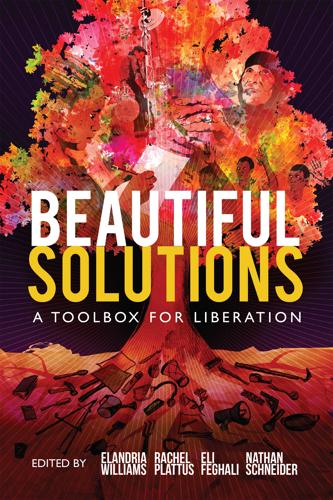
Beautiful Solutions: A Toolbox for Liberation
by
Elandria Williams, Eli Feghali, Rachel Plattus
and
Nathan Schneider
Published 15 Dec 2024
The continued consolidation of media companies by a small number of private or state-owned corporations that are motivated by profit and power and not the public good. WHAT ARE SOME OF THE STRONGEST FORCES AGAINST US? Big tech (Facebook, Google, Amazon, Alibaba, etc.). Intelligence agencies. Autocratic governments. Disinformation “farms” run by right-wing forces and governments. Capitalist copyright law. The defunding of independent, public media. WHAT ARE SOME OF THE MOST PROMISING STRATEGIES? Media democracy. Digital privacy as a right. Media, tech, and freelancer cooperatives. Platform cooperatives. Creative Commons.
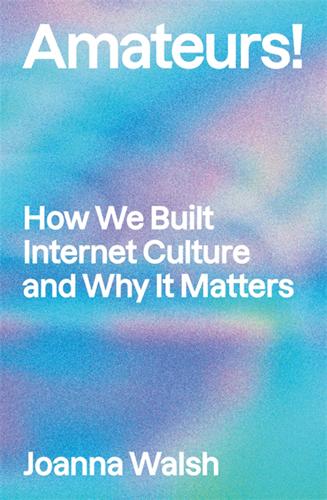
Amateurs!: How We Built Internet Culture and Why It Matters
by
Joanna Walsh
Published 22 Sep 2025
This friction between content and form resembles what the art critic Claire Bishop described in Disordered Attention (2024) as ‘research-based art’: artwork that parodies or pastiches the overwhelm of digital knowledge systems and data capitalism. Bishop was writing about work that existed in gallery spaces. Online, information capitalism is parodied (or parried) by entities that resemble offline structures but are populated by (dis)information invented for the purpose of creating the purely self-referential networks within which it circulates. If Ngai defined ‘our’ aesthetic categories as persistently minor alternatives to the big ideas of the sublime and the beautiful, these are our similarly minor encyclopaedias, and their parodic nature is vital.
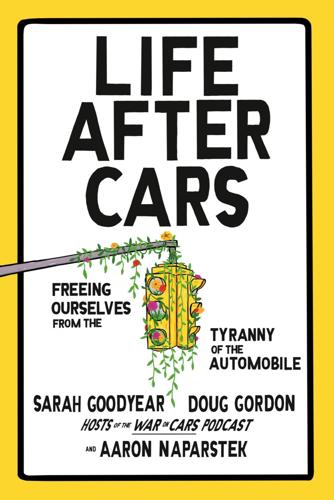
Life After Cars: Freeing Ourselves From the Tyranny of the Automobile
by
Sarah Goodyear
,
Doug Gordon
and
Aaron Naparstek
Published 21 Oct 2025
The Romance of the Automobile Industry: Being the Story of Its Development—Its Contribution to Health and Prosperity—Its Influence on Eugenics—Its Effect on Personal Efficiency—and Its Service and Mission to Humanity as the Latest and Greatest Phase of Transportation. Klebold Press, 1916. Ennis, Grant. Dark PR: How Corporate Disinformation Undermines Our Health and the Environment. Daraja Press, 2023. Forman, Richard T. T. Road Ecology: Science and Solutions. Island Press, 2003. Gehl, Jan. Cities for People. Island Press, 2010. Gorz, André. Ecologica. Translated by Chris Turner. Seagull Books, 2018. Grabar, Henry.

The Dreaming Void
by
Peter F. Hamilton
Published 1 Jan 2007
Unfortunately, he could not afford distractions right now, however delightful. It had taken him decades to refine the animation programs and bestow a valid I-sentient personality on each solido. The three of them had shared the apartment during the Starflyer War, becoming involved in a famous disinformation sting run by the Starflyer. Isabella herself had been one of the alien’s most effective agents inside the Commonwealth, seducing high-ranking politicians and officials and subtly manipulating them. For a while after the war, to be “Isabella-ed” was a Commonwealth-wide phrase meaning to be screwed over, but that infamy had faded eventually.
…
It had been Catriona’s room, decorated in excessively pink fabrics and ornaments; a lot of the surfaces were fluffy, a very girly girl’s room that he was now used to. His parallel sensorium was coming from a twinning link to the solido of Howard Liang, a Starflyer agent who had been part of the disinformation mission. Howard was in the penthouse’s main bedroom, sharing a huge circular bed with the three girls. It was another aspect of the solidos that Troblum had spent years refining; now, whenever he wanted sex, the four characters would launch themselves eagerly into a mini-orgy. The permutations their supple young bodies could combine into were almost endless, and they could keep going as long as Troblum wanted.
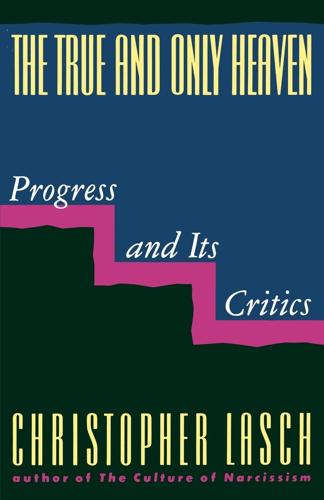
The True and Only Heaven: Progress and Its Critics
by
Christopher Lasch
Published 16 Sep 1991
What held it together was "credibility"; and the Watergate affair, coming hard on the heels of the war in Vietnam—itself largely motivated by the need to maintain American credibility in the eyes of the world—seemed to indicate not merely that our public officials no longer cared about the truth but that they had lost even the capacity to distinguish it from falsehood. All that mattered was the particular version of unreality the public could be induced to "buy." Buying did not necessarily imply belief: if "disinformation," as it later came to be called, proved eminently marketable, it was because information itself was in pitifully short supply. -30- Disinformation monopolized the airwaves. It was not that Americans had become stupid or credulous but that they had no institutional alternative to the consumption of lies. Their only available defense was to turn off the television set, cancel subscriptions to newspapers and periodicals, and stay away from the polls on election day.

Made to Break: Technology and Obsolescence in America
by
Giles Slade
Published 14 Apr 2006
Although the toy maker Modine had sold pressed-steel toy versions of Flivver trucks and sedans in its Buddy “L”series for years, the 1925 version of the Tin Lizzie was commemorated in a larger, expensive, pressed-steel Tootsie-toy in a variety of contemporary colors.16 Unfortunately, the toy’s nationwide popularity was not refle ted in sales for theModel T itself,which continuedto decline. Tin Lizzie sales were undercut by the fact, now widely known, that Ford engineers were experimenting with newer models. Some of Ford’s press releases hostilely denied this, carrying headlines such as “Ford To Fight It Out with His Old Car.”17 The company’s joint policy of secrecy and disinformation only excited press enmity, costing Ford valuable credibility and good will. But the Model T’s designer and manufacturer was desperate to protect the declining market value of an enormous backlog of cars. In Ford’s secret half-formed plan, sales revenue from these automobiles would go directly into a war chest to pay for the expensive retooling to come.
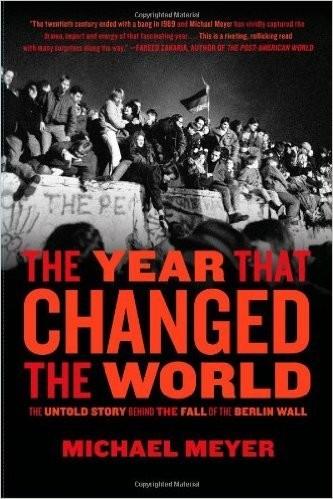
The Year That Changed the World: The Untold Story Behind the Fall of the Berlin Wall
by
Michael Meyer
Published 7 Sep 2009
And so, on the morning of December 21, Nicolae Ceausescu stepped before the microphones and cameras set up on the balcony of the Central Committee on Palace Square. In his dark blue overcoat and fur hat, he shouted out to the one hundred thousand subjects in the square below. He told them that the reports of uprisings and killings in Timisoara were false, that they were efforts by foreign powers to corrupt and disinform the people. He counted on the mass of tame functionaries, beholden to him and his rule, to applaud and cheer on cue. Instead, from the fringe of the square, some students not part of the select assembly started shouting, “Ti-mi-soara! Ti-mi-soara!” Never had he heard anything like it. Never had he been so brazenly challenged.

The Full Catastrophe: Travels Among the New Greek Ruins
by
James Angelos
Published 1 Jun 2015
Furthermore, their offspring would not inherit the pensions. By using inexcusable falsities to make his case, Glezos certainly was not helping his cause. Glezos nevertheless had a considerable talent for appealing to people’s emotions, and I found myself vacillating between revulsion over such populist disinformation and shedding tears of sympathy for him. The night Glezos spoke in Galatsi, he was particularly energetic and emotional. It was the seventieth anniversary of the execution of his brother, and he began the night by dedicating the event to him. The speakers were turned up very high, and Glezos yelled with fervor into the microphone, his voice blistering the night air.
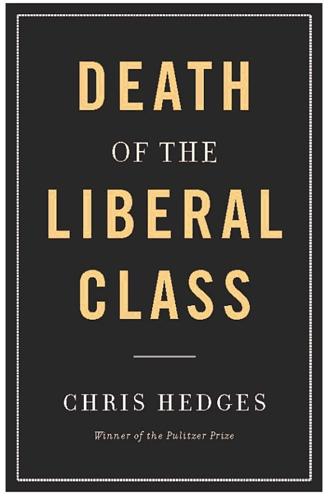
Death of the Liberal Class
by
Chris Hedges
Published 14 May 2010
Senator William King of Utah asked the same witness whether the Bolsheviks, “the males, rape and ravish and despoil women at will?” “They certainly do,” was the answer. They are, Simons said, “the dirtiest dogs” he had ever seen in his life.21 The testimony was as fantastic and absurd as the host of manufactured atrocity stories of German soldiers entering convents to rape nuns, but it and disinformation like it galvanized the country into political passivity. The later anticommunist witch hunts differed little in their simplicity or crudity. The Times summarized the committee’s eight months of investigations with the headline “Senators Tell What Bolshevism in America Means.” The newspaper reproduced from the report 29 “salient features which constitute the program of Bolshevism as it exists to-day in Russia and is presented to the rest of the world as a panacea for all ills.”
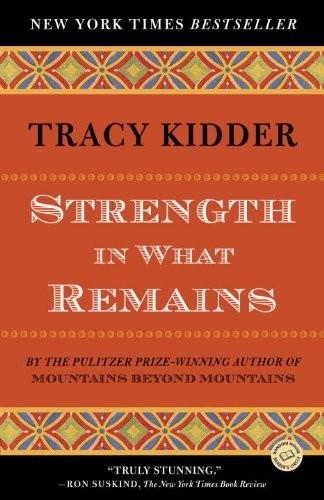
Strength in What Remains
by
Tracy Kidder
Published 29 Feb 2000
The Centre for the Study of African Economies Working Paper Series, no. 162 (July 20, 2002). Pan African News Agency. “Britain Sues Recalcitrant Burundi Faction Leader.” November 29, 2002. Philbert, Nkanira, et al. Dusome: Igitabu c’umwaka wa gatatu. Nyakanga: B.E.R. Bujumbura, 1993. Pottier, Johan. Re-Imagining Rwanda: Conflict, Survival and Disinformation in the Late Twentieth Century. Cambridge, England: Cambridge University Press, 2002. Prunier, Gerard. “Burundi: A Manageable Crisis?” London: WRITENET (UK), October 1994. ___. “The Great Lakes Crisis.” Current History 96, no. 610 (May 1997). ___. The Rwanda Crisis: History of a Genocide. London: C.

We Need New Stories: Challenging the Toxic Myths Behind Our Age of Discontent
by
Nesrine Malik
Published 4 Sep 2019
Having said that, I could never deny that social media – and Twitter in particular – has given power to those shut out of the conversation, and acts very often as a sort of vigilante that metes out rough but necessary justice. I could never deny that it is, at the moment, the only tool for myth busting and disinformation outside of mainstream media. It is good that when corporations fail to do their job and hire someone with terrible views that Twitter coalesces into a shifting shoal of small minnows with an awesome power as a body working in tandem, to unearth old tweets, blogs or interviews. It breaks, or tries to break, nepotistic networks.

I, Warbot: The Dawn of Artificially Intelligent Conflict
by
Kenneth Payne
Published 16 Jun 2021
Russia meanwhile invests far smaller amounts in both defence and AI research than the two dominant world powers, notwithstanding Vladimir Putin’s striking claim about AI mastery leading to world control. The USSR was slow to the computerised military revolution of the 1970s, and while it’s been very active in employing computers for intelligence gathering and disinformation, there’s been little evidence of any comparable AI acumen. Russia’s great challenge is translating its industrial-era defence base into a post-industrial one that thrives on rapid innovation and creativity. Still the efficiency logic is driving the acquisition of AI in China, Russia and elsewhere—such is the impact of autonomy on fighting power that no one wants to be left behind.
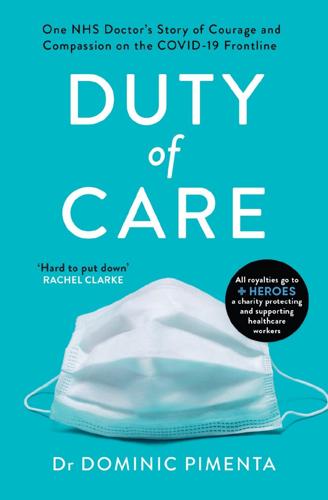
Duty of Care: One NHS Doctor's Story of the Covid-19 Crisis
by
Dr Dominic Pimenta
Published 2 Sep 2020
We did all we could. Even in failure, that brings a peace of mind and soul that Twitter threads never did. Looking ahead, the first wave was exactly that, only the first challenge we faced. The challenges to come – a second or even third wave, a global recession, climate change, mass misinformation and disinformation, and political and societal upheaval on a generational scale – will all require more from all of us if we hope to meet them. The challenge of our generation is not behind us, it is only just beginning. I plan to continue doing something about it, and perhaps now you do as well. So stay informed, stay safe and be kind. 1.

Please Don't Sit on My Bed in Your Outside Clothes: Essays
by
Phoebe Robinson
Published 14 Oct 2021
Despite the tragedies of Sandy Hook Elementary, Marjory Stoneman Douglas High School, and a long list of other school shootings, we don’t protect our students and restrict the kinds of guns that can be purchased because some people’s allegiance is to the Second Amendment and not to the safety of our youth. Hell, look at the national response to Covid-19 in America. We can’t even come together in the face of a global pandemic. After nine months of the federal government spreading disinformation, coupled with the nation’s “me first” mentality, which resulted in many people refusing to wear a mask and socially distance, more than three thousand people were dying per day, meaning that each day we were surpassing the total deaths on 9/11. So the notion that not having children is this grand disrupter to an otherwise idyllic civilization doesn’t hold water.
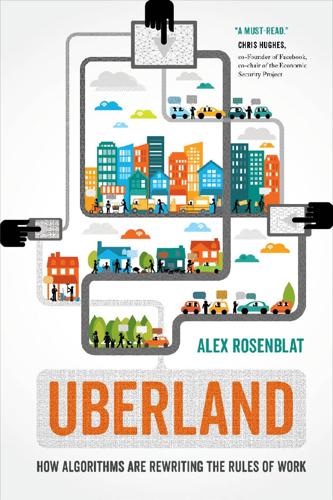
Uberland: How Algorithms Are Rewriting the Rules of Work
by
Alex Rosenblat
Published 22 Oct 2018
TREATING LABOR AS CONSUMPTION: HOW UBER JUSTIFIES ITS MANAGEMENT PRACTICES The vocabulary of technology that Uber deploys to describe its drivers and its own practices has implications for labor: it treats drivers as end users of its software, rather than as workers at all. End users is a perfect example of the language of disinformation that distances drivers from employment. The term appears in court documents in lawsuits over Uber’s allegedly illegal employment practices and in company communications with the public. The rhetorical impact of that language is clever: as a society, we might be persuaded to care about workers, but who cares about end users?
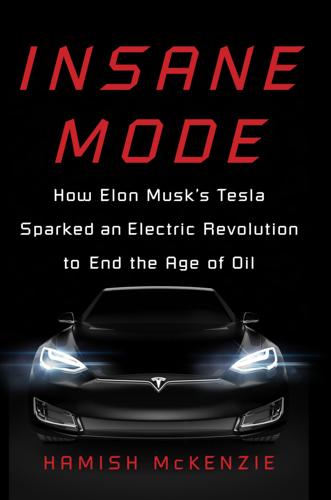
Insane Mode: How Elon Musk's Tesla Sparked an Electric Revolution to End the Age of Oil
by
Hamish McKenzie
Published 30 Sep 2017
Eberhard told Fortune that he had no issues with Tesla as a company but he did “have problems with Elon and the way he treats people.” Musk didn’t respond warmly. “I was too busy trying to fix the fucking mess he left,” he told the magazine, explaining why he hadn’t yet told his side of the story. “I will say, I have never met someone who is as capable of creating such a disinformation campaign as Martin Eberhard.” In November 2008, Eberhard told Newsweek that he thought Musk was a “terrible CEO.” Musk responded by saying that “Martin is the worst individual I’ve ever had the displeasure of working with.” The dispute culminated in a legal tangle. In May 2009, Eberhard sued Musk and Tesla for slander.

Black Code: Inside the Battle for Cyberspace
by
Ronald J. Deibert
Published 13 May 2013
(A similar assault had been inflicted on Estonia a year earlier, when that country’s leaders made the unpopular decision to relocate the Bronze Soldier of Tallinn, an elaborate Soviet-era war memorial, along with the remains of Soviet soldiers.) Desperate to stem the attacks, and hoping to counter Russia’s disinformation campaign, the Georgian government censored access to all Russia-based websites. Accustomed to seeing Russian news online, and unaware of the decision taken by their government, Georgians in the capital city of Tbilisi panicked, fearing that the blackout presaged a massive Russian ground assault.

There Is No Planet B: A Handbook for the Make or Break Years
by
Mike Berners-Lee
Published 27 Feb 2019
Now, following an eruption of post-truth and fake news all over the world over the past few years, we turn to the third value; the critical questions of truth and trust. If we are going to live well, humans need to raise their game in this area. The rising complexity of the issues and the rising flood of both information and misinformation, sometimes accidental and sometimes intentional, means that we need to get much better at cutting out the lies, disinformation and ‘fake news’. Both sides of the Atlantic are seeing worrying lurches in the wrong direction. The consequences will surely hit us before long, and I hope will give rise to a longer lasting counter-swing in the right direction. Is there even such a thing as ‘truth’ or ‘facts’? Perhaps skip this question if my using the words ‘truth’ and ‘fact’ doesn’t trouble you.

The Man Who Broke Capitalism: How Jack Welch Gutted the Heartland and Crushed the Soul of Corporate America—and How to Undo His Legacy
by
David Gelles
Published 30 May 2022
He called climate change “mass neurosis” and “the attack on capitalism that socialism couldn’t bring.” He suggested that Hillary Clinton was compromised as secretary of state because of the Clinton Foundation. Once again he was ahead of his time, recognizing that on Twitter, salaciousness translated to followers, and followers amounted to power. Welch was at the vanguard of a disinformation revolution, but he was not alone. A year earlier, Trump had launched his Birther campaign, falsely alleging that Obama hadn’t been born in the United States, and was thus an illegitimate president. Together, Welch and Trump had come to understand just how powerful lies could be in the age of social media.

How to Prevent the Next Pandemic
by
Bill Gates
Published 2 May 2022
But there are things that each of us can do. Elect leaders who will take pandemics seriously and make good, science-based decisions when the time comes. Follow their advice about masking up, staying home, and keeping your distance when you’re out. Get vaccinated when you can. And avoid the misinformation and disinformation that flood social media: Get your information regarding public health practices from reliable sources, such as the WHO, the CDC in the United States, and its equivalent in other countries. Most of all, don’t let the world forget how awful COVID was. Do whatever you can to keep pandemics on the agenda—locally, nationally, internationally—so we can break the cycle of panic and neglect that makes them the most important thing in the world for a time, until we forget about them and go back to our daily lives.
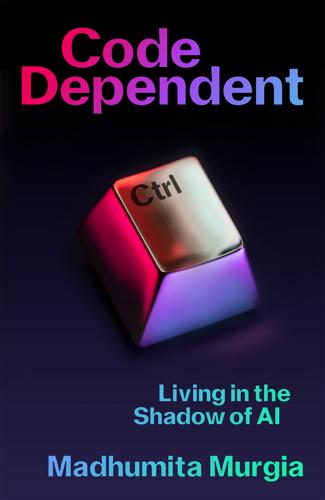
Code Dependent: Living in the Shadow of AI
by
Madhumita Murgia
Published 20 Mar 2024
Tripathi, ‘Abduweli Ayup on Government Use of Facial Recognition Technology’, Institute for Human Rights and Business, October 16, 2019, https://voices.ihrb.org/episodes/podcast-abduweli-ayup. 19 P. Mozur, ‘In Hong Kong Protests, Faces Become Weapons’, The New York Times, July 26, 2019, https://www.nytimes.com/2019/07/26/technology/hong-kong-protests-facial-recognition-surveillance.html. 20 S. Bradshaw, ‘Influence Operations and Disinformation on Social Media’, Centre for International Governance Innovation, 2020, https://www.jstor.org/stable/pdf/resrep27510.9.pdf. 21 Y. Yang and M. Ruehl, ‘China’s Leading AI Start-Ups Hit by US Blacklisting’, The Financial Times, October 8, 2019, https://www.ft.com/content/663ab29c-e9bd-11e9-85f4-d00e5018f061. 22 M.

Tory Nation: The Dark Legacy of the World's Most Successful Political Party
by
Samuel Earle
Published 3 May 2023
(As discussed in Chapter 5, this fixation even fuelled the Mail’s interwar flirtation with fascism, as the paper praised Mussolini for ‘rationing departments in money and officials, and doing precisely what the Daily Mail has suggested a hundred times should be done by government departments here’.26) Along with refugees and the far left, welfare claimants are among the right’s favourite scapegoats, attacked as ‘scroungers’, ‘frauds’, ‘cheats’ and ‘parasites’ who live off the hard work of others. Labour is cast as their malign defenders. After the 2008 recession, the press repeated this narrative ad nauseum, justifying the Conservatives’ programme of austerity. The levels of disinformation were such that, by 2013, a YouGov poll found that people on average thought 41 per cent of the welfare budget went on the unemployed (the true figure was 3 per cent) and that over a quarter of the welfare budget was claimed fraudulently (the government’s own figure was 0.7 per cent).27 The Conservatives happily exacerbated and exploited these misperceptions – just as it does again now.
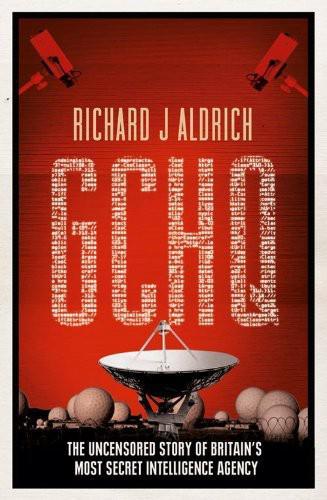
GCHQ
by
Richard Aldrich
Published 10 Jun 2010
The main problem for the KGB was that it did not know how many of its previous messages had been broken by the Venona project, and which of its agents had been exposed. This made it hard for it to warn specific agents. Venona also contributed to Soviet paranoia about double agents who might be planting disinformation. The KGB’s strange tendency not to wholly trust even its best sources, including the SIS officer Kim Philby, was one manifestation of this.33 In August 1949 Philby returned from a posting in Istanbul to London. He was preparing to take over from Peter Dwyer as SIS liaison officer with the CIA in Washington, and was briefed by Sir Stewart Menzies, Chief of SIS, together with two of his senior officers, James Easton and Maurice Oldfield.
…
There were many voices in London now arguing that Britain was putting its own forces at risk by passing too much information to NATO.34 The experienced MI5 representative on NATO’s Special Committee, Dick Thistlethwaite, had wanted to run Roussilhe as a deception agent ‘to confuse or reduce Soviet assessment’ of the information it had received. MI5 went so far as to propose a ‘NATO disinformation cell’ that would actually turn weak NATO security into an advantage. The British sensed an opportunity to repeat the fabulous achievements of the wartime Double-Cross Committee and the famous D-Day deception. However, this was blocked by the CIA, which disliked the sheer organisational complexities of doing such a thing in Brussels.
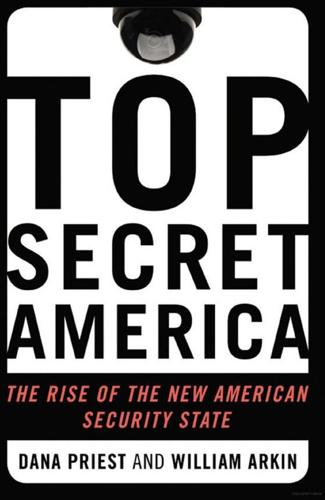
Top Secret America: The Rise of the New American Security State
by
Dana Priest
and
William M. Arkin
Published 5 Sep 2011
They are also deeply involved with broader efforts to sway international opinion in line with American interests. Sometimes this involves ploys such as planted newspaper stories and political advertising campaigns for foreign leaders supported by the United States. Other operations have involved intentionally passing disinformation to foreign leaders or spies in highly classified deception operations. In most cases, American involvement is hidden. Using the address Arkin gave me for DPAO, and armed with a map that the building’s property managers had put online for prospective lessees, I worked my way through the confusing underground shopping complex and tunnels that link buildings leased to the federal government in Crystal City.
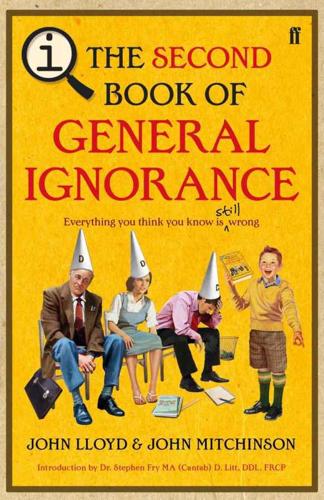
QI: The Second Book of General Ignorance
by
Lloyd, John
and
Mitchinson, John
Published 7 Oct 2010
The Finns christened them ‘Molotov’s cocktails’, the joke being that they were ‘a drink to go with his food parcels’. They used a government vodka distillery to produce more than 450,000 of them. Their fame spread and, by the end of the War, combatants on all sides knew them as ‘Molotov cocktails’. The disinformation about food parcels was typical of Molotov. He wasn’t a soldier; he was a bureaucrat, skilled in the use of propaganda. The Finnish war resulted from the Molotov–Ribbentrop pact that he had signed with the Nazis in August 1939. (Von Ribbentrop was Molotov’s opposite number, the German foreign minister.)

Hegemony or Survival: America's Quest for Global Dominance
by
Noam Chomsky
Published 1 Jan 2003
Andrew Bacevich, American Empire (Harvard, 2003), pp. 200ff. 8. M. J. Crozier, S. P. Huntington, and J. Watanuki, The Crisis of Democracy (New York University, 1975), report to the Trilateral Commission. 9. Randal Marlin, Propaganda and the Ethics of Persuasion (Broadview, 2002). 10. For a discussion of this vast disinformation campaign, see my Culture of Terrorism (South End, 1988) and Necessary Illusions (South End, 1989), which draw particularly on the important but mostly neglected exposés by Alfonso Chardy of the Miami Herald and later official sources. 11. On the narrow limits of permitted discussion, see my Necessary Illusions.

Affluenza: The All-Consuming Epidemic
by
John de Graaf
,
David Wann
,
Thomas H Naylor
and
David Horsey
Published 1 Jan 2001
Unreported by the blindfolded eyes of the media, PR-managed initiatives are often signed into law and adopted as standard operating procedures while the public’s civic attention is diverted by the most current scandal, crime, or catastrophe. “The best PR is never noticed” is an unwritten slogan of an industry whose arsenal includes backroom politics, fake grassroots activism, organized censorship, and imitation news. The weapon of choice is a kind of stun gun that fires invisible bullets of disinformation. You can’t remember how you formed a certain opinion or belief, but you find yourself willing to fight for it. For example, a popular corporate strategy staged by contracted PR firms is to form citizen advisory panels. This technique makes people feel included rather than polluted. Citizens are carefully chosen to attend catered lunches around the corporate conference table to discuss community issues.

The Big Nine: How the Tech Titans and Their Thinking Machines Could Warp Humanity
by
Amy Webb
Published 5 Mar 2019
This results in far more video news content that takes fewer resources to produce. AI is used to spot patterns and anomalies in data, leading journalists to surface new stories in the public interest. Rather than aiding and abetting misinformation bots, AI can ferret out propaganda, misleading claims, and disinformation campaigns. Our democracies are stronger as a result. The G-MAFIA studied the Chinese cities where smart city initiatives were piloted—such as Rongcheng, Beijing, Shenzhen, Shanghai—and identified best practices to pilot in the United States. We now have a few American smart cities—Baltimore, Detroit, Boulder, and Indianapolis—that are testing out a wide range of AI systems and services.

Can Democracy Work?: A Short History of a Radical Idea, From Ancient Athens to Our World
by
James Miller
Published 17 Sep 2018
Through online platforms like Facebook, Google, and Twitter, contemporary political propagandists, both foreign and domestic, compete to mold the beliefs of ordinary citizens, most of whom lack equal access to either reliable information or political power in the imperfectly free institutions that actually exist in modern societies. Disinformation is easier than ever to disseminate to understandably suspicious, even paranoid, citizens over global communication networks. Along with the spread of government secrecy, these ever more sophisticated means of propagating lies and creating confusion form a standing threat to any modern democracy
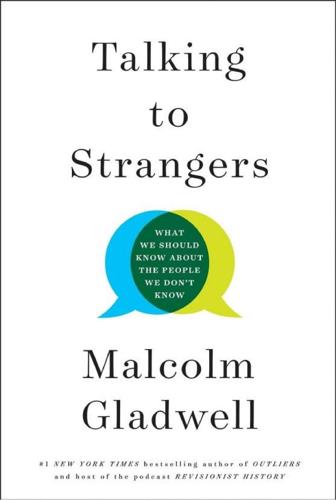
Talking to Strangers: What We Should Know About the People We Don't Know
by
Malcolm Gladwell
Published 9 Sep 2019
After the Berlin Wall fell, East German spy chief Markus Wolf wrote in his memoirs that by the late 1980s we were in the enviable position of knowing that not a single CIA agent had worked in East Germany without having been turned into a double agent or working for us from the start. On our orders they were all delivering carefully selected information and disinformation to the Americans. The supposedly meticulous Eastern Europe division, in fact, suffered one of the worst breaches of the entire Cold War. Aldrich Ames, one of the agency’s most senior officers responsible for Soviet counterintelligence, turned out to be working for the Soviet Union. His betrayals led to the capture—and execution—of countless American spies in Russia.

The Sleeping Beauties: And Other Stories of Mystery Illness
by
Suzanne O'Sullivan
Published 31 Mar 2021
I did not find them to be weak or troubled. The outbreak in El Carmen was being driven forward by many people, least of whom were the girls themselves. To my mind, neither the cause nor the solution lay with them. A simple mass fainting episode had been turned into a protracted medical and social problem by fear-mongering and disinformation. It had also been stoked by poor communication of the diagnosis. They had been given the correct diagnosis, but had not understood it. How could the girls get better if they believed they had been poisoned? How could they accept a functional cause for their symptoms if that was taken to mean they were crazy?
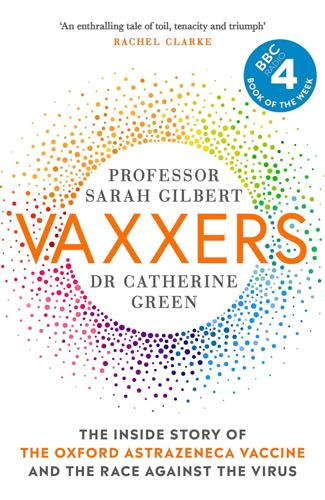
Vaxxers: The Inside Story of the Oxford AstraZeneca Vaccine and the Race Against the Virus
by
Sarah Gilbert
and
Catherine Green
Published 7 Jul 2021
After that there seemed to be something every month. There were reports in August that President Trump was going to ‘fast-track’ our vaccine.5 That created brief mayhem. In September, the trial was stopped because someone became ill and we had to look into whether it was because of the vaccine. Mayhem again. In October, the Russians launched a disinformation campaign, complete with images, memes and videos, aimed at convincing people that our vaccine would turn them into monkeys.6 The Science Media Centre – a charity whose philosophy is, brilliantly, ‘the media will do science better when scientists do the media better’ – became a crucial part of our lives.

Chaos Kings: How Wall Street Traders Make Billions in the New Age of Crisis
by
Scott Patterson
Published 5 Jun 2023
Tense relations between the U.S., China, and Russia, North Korea’s nuclear expansion, the frightful military standoff on the border of Ukraine, the expanding pursuit of biological weapons, the coronavirus pandemic and the threat of future pandemics, unchecked emissions of greenhouse gases that caused global warming, a plague of toxic disinformation on the Internet that had persuaded millions of Americans that the 2020 U.S. presidential election was fraudulent, among a host of other existential risks—all put the world on the edge of a cliff. “The Clock remains the closest it has ever been to civilization-ending apocalypse because the world remains stuck in an extremely dangerous moment,” the scientists wrote.

A New History of the Future in 100 Objects: A Fiction
by
Adrian Hon
Published 5 Oct 2020
Having anticipated protests for decades, the monarchy acted quickly, putting into place a contingency plan prepared years earlier. Deepfake videos and forged emails were released on government websites that “proved” the protests had been instigated by Shiite spies and provocateurs from Iran. A disinformation campaign about “pernicious Western involvement” followed soon after. Most people distrusted the official accounts enough to continue the fight, but those allied to the royal family understood that their interests lay in the status quo and so did nothing. Other countries, including the US, declined to officially intervene.
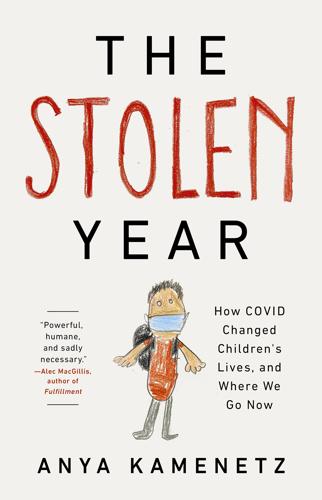
The Stolen Year
by
Anya Kamenetz
Published 23 Aug 2022
This was a time of quarantine, an economy that crumpled like a paper cup, limited in-person school and childcare, fear, anxiety, grief, soul-crushing monotony, traumatic levels of stress, and isolation. Plus white supremacist terrorist violence, historic antiracist protests, a failed coup and insurrection, rampant anti-science misinformation and disinformation pushed at the highest levels of government. New records in natural disasters, from fires to hurricanes to ice storms. The death of more than half a million Americans from a new virus in a single year (a number that just keeps growing). It also was a year that many children were able to spend at home with their families.
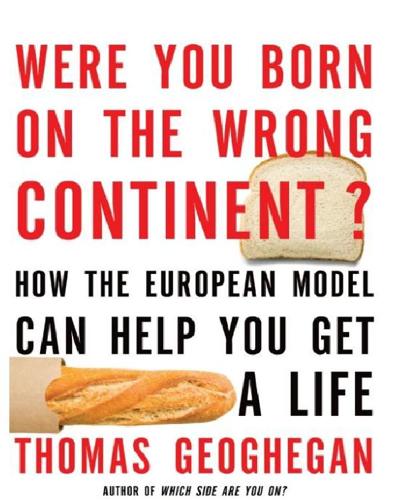
Were You Born on the Wrong Continent?
by
Thomas Geoghegan
Published 20 Sep 2011
I passed stores lit up with lawyers buying rugs from Ephesus or a first edition of Pensées. Ah! I’d go from gallery to gallery: but I knew no one. No lawyer. No journalist. No way to read Le Monde or anything on the left. Just The Economist, which can often seem like a branch of British intelligence, full of disinformation about the Continent. (“It’s going to collapse, etc.”) And yet, if I could talk to them, these French bankers and lawyers buying rugs from Ephesus could tell me the secrets of their socialism. I stood there: afraid to go up to anyone who’s not a woman, and afraid to go up to a woman most of all.
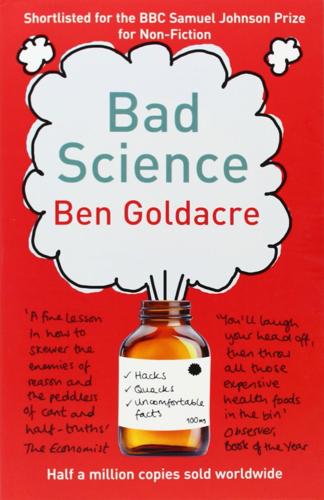
Bad Science
by
Ben Goldacre
Published 1 Jan 2008
Not only were there more lung cancers among the people receiving the supposedly protective ß-carotene supplements, compared with placebo, but this vitamin group also had more deaths overall, from both lung cancer and heart disease. The results of the other trial were almost worse. It was called the ‘Carotene and Retinol Efficacy Trial’, or ‘CARET’, in honour of the high p-carotene content of carrots. It’s interesting to note, while we’re here, that carrots were the source of one of the great disinformation coups of World War II, when the Germans couldn’t understand how our pilots could see their planes coming from huge distances, even in the dark. To stop them trying to work out if we’d invented anything clever like radar (which we had), the British instead started an elaborate and entirely made-up nutritionist rumour.
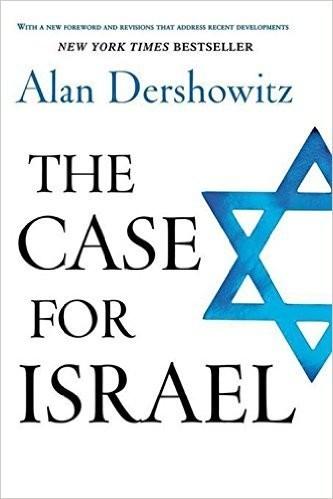
The Case for Israel
by
Alan Dershowitz
Published 31 Jul 2003
Chomsky said, “I am opposed and have been opposed for many years, in fact, I’ve probably been the leading opponent for years of the campaign for divestment from Israel and of the campaign about academic boycotts.” 6 He also declared it to be “wrong in principle” and “unprincipled.” 7 When asked why he signed the divestment petition in view of his principled opposition to divestment, the renowned linguist explained, “No one who signs a petition is expected to approve of every word, even of large parts, if the main thrust is appropriate and sufficiently important.” 8 But, of course, divestment is the main thrust of the petition—at least to many who agreed to sign it. But not to Chomsky, whose secret agenda— the delegitimation of Israel through the spread of disinformation—he did not share with the signatories. He kept his opposition secret from most of the signatories until after their signatures had been obtained. Although Chomsky eventually characterized the call for divestment as c30.qxd 6/25/03 8:37 AM Page 205 THE CASE FOR ISRAEL 205 “a big mistake,” he would not—as some professors have now done— remove his influential name from it, since he believes that its substantive demands are valid.
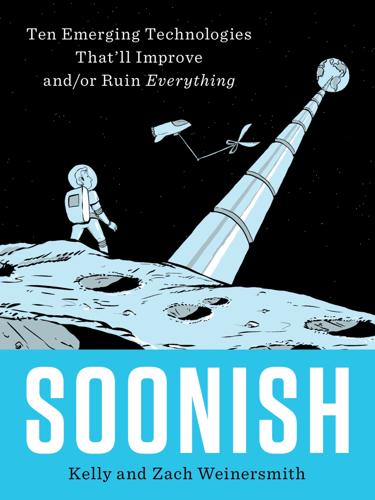
Soonish: Ten Emerging Technologies That'll Improve And/or Ruin Everything
by
Kelly Weinersmith
and
Zach Weinersmith
Published 16 Oct 2017
Basically, if you were trying to create a supervillain, this would be a pretty good way to go. Dr. Bull, who had formerly considered himself a patriot of Canada, decided he was willing to work with anyone who would bring some version of HARP back. Things get a little murkier at this point, due to the secrecy and disinformation of many parties, but in the late 1980s, Dr. Bull shows up in Saddam Hussein’s Iraq, working on a supercannon called Project Babylon. Let’s say that once more: Dr. Bull shows up in Saddam Hussein’s Iraq, working on a supercannon called Project Babylon. This happened. Like, in real life.
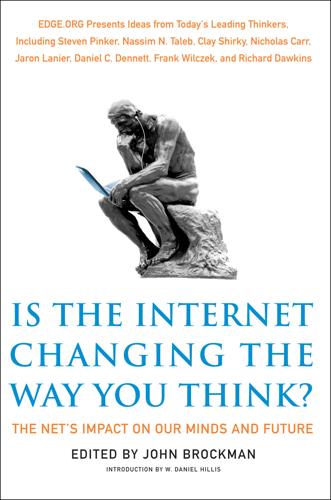
Is the Internet Changing the Way You Think?: The Net's Impact on Our Minds and Future
by
John Brockman
Published 18 Jan 2011
All this—to simplify slightly—because of a drop in the cost of producing books. So what is happening to us, now that the Internet has engulfed us? The Internet and its cybernetic creatures have dropped, by many more orders of magnitude, the cost in money, effort, and time of acquiring and publishing information. The knowledge (and disinformation) of the species is migrating online, a click away. To take just first-order consequences, we see all around us transformations in the making that will rival or exceed the printing revolution—for example, heating up the chain reactions of scientific, technical, and economic innovation by pulling out the moderating rods of distance and delay.
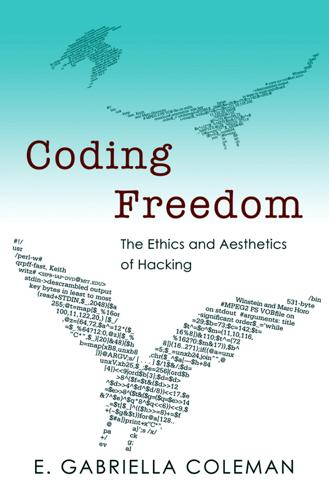
Coding Freedom: The Ethics and Aesthetics of Hacking
by
E. Gabriella Coleman
Published 25 Nov 2012
The era of festive bewilderment was over, and it was replaced by a period of revelry as the dot-com boom also fueled the newfound discovery and celebration of the open-source phenomenon. Although Microsoft stated in its internal memos that it would not lead a campaign of fear, uncertainty, and doubt against open-source products, it feverishly implemented the well-worn corporate tactic of disinformation, using everything in the company’s powerful marketing arsenal to discredit the reliability of Linux. Launching a direct attack against the bulwark of F/OSS, the GPL, Microsoft representatives described this legal agreement with three of the most feared words in the United States: cancer, communism, and un-American.
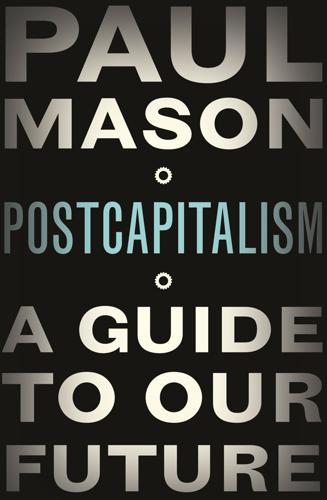
Postcapitalism: A Guide to Our Future
by
Paul Mason
Published 29 Jul 2015
Greece, Portugal and Spain, they warned, had ‘legacy problems of a political nature’: ‘The constitutions and political settlements in the southern periphery, put in place in the aftermath of the fall of fascism, have a number of features which appear to be unsuited to further integration in the region.’7 In other words, peoples who insisted on decent welfare systems in return for a peaceful transition out of dictatorship in the 1970s must now give up these things so that banks like JP Morgan survive. Today there is no Geneva Convention when it comes to the fight between elites and the people they govern: the robo-cop has become the first line of defence against peaceful protest. Tasers, sound lasers and CS gas, combined with intrusive surveillance, infiltration and disinformation, have become standard in the playbook of law enforcement. And the central banks, whose operations most people have no clue about, are prepared to sabotage democracy by triggering bank runs where anti-neoliberal movements threaten to win – as they did with Cyprus in 2013, then Scotland and now Greece.

The Martian
by
Andy Weir
Published 1 Jan 2011
Guo Ming asked. “Nine hundred and forty-one kilograms, sir.” “Hmm,” Guo Ming said, “I bet NASA could work with that limitation. Why haven’t they approached us?” “Because they don’t know,” Zhu Tao said. “All our booster technology is classified information. The Ministry of State Security even spreads disinformation about our capabilities. This is for obvious reasons.” “So they don’t know we can help them,” Guo Ming said. “If we decide not to help, no one will know we could have.” “Correct, sir.” “For the sake of argument, let’s say we decided to help. What then?” “Time would be the enemy, sir,” Zhu Tao answered.
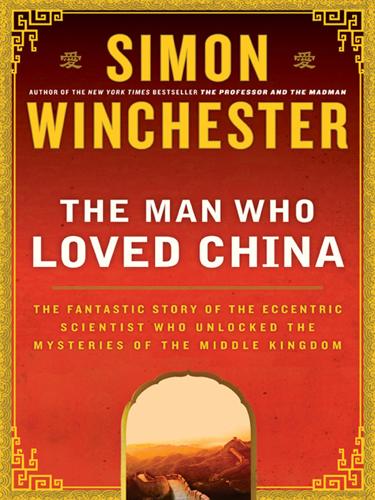
The Man Who Loved China: The Fantastic Story of the Eccentric Scientist Who Unlocked the Mysteries of the Middle Kingdom
by
Simon Winchester
Published 1 Jan 2008
Beria was to be executed soon afterward, once Nikita Khrushchev had won power and had started to reverse many of Stalin’s policies and to purge their architects. But however mundane or bizarre, the episode had a certain sweet relevance to Needham’s later reputation. The revealed telegrams showed that he had operated in China and Korea in perfectly good faith, and had been a victim of a very clever and adroitly organized campaign of disinformation. He was, in other words, much more of a fool than a knave—and in truth not too much of a fool, even then. His worst crime was to have taken at face value the word of a great number of Chinese bacteriologists, men and women whom he trusted and in whom he firmly believed. In professional terms Needham was after all an exceptionally honorable man, a scientist given to following the scientists’ code—hypothesis, theory, experimentation, observation, discovery, and proof—which at every step demands a commitment to honesty and integrity, and which holds as a moral certainty the idea that results can never, ever be fudged, manipulated, or falsified.

Smart Mobs: The Next Social Revolution
by
Howard Rheingold
Published 24 Dec 2011
Ironically, the democratization of publishing power afforded by many-to-many networks could spell the death of social cyberspace through a form of informational littering. When i-mode users were hit by “mobile spam” sent to their telephones by computerized autodialers, DoCoMo paid out a staggering $217 million in refunds.42 The lack of a “shadow of the future” creates a vulnerability for hit-and-run artists. At least the big global disinformation factories have an incentive to maintain a relationship with their customers. Spam, a classic tragedy of the commons problem, wastes every Internet user’s time and attention. People who care more about their personal gain than the value of the network or other people’s time broadcast commercial solicitations, many of them indecent, to hundreds of millions of people at a time.
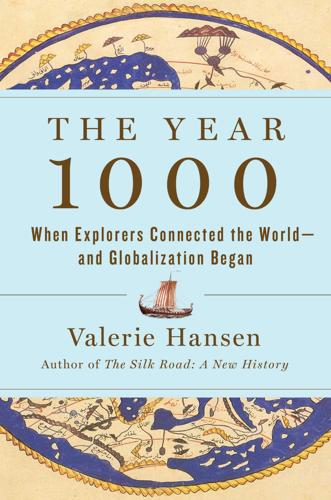
The Year 1000: When Explorers Connected the World―and Globalization Began
by
Valerie Hansen
Published 13 Apr 2020
But he closed his treatise with a warning, “To wrap up the matter: the Armenian slaves are the worst of the whites just as the Zanj are the worst of the blacks.” Ibn Butlan reminds us that globalization often led to the greater circulation of information, but not all of the information that moved was accurate. Disinformation could travel long distances, too. Ibn Butlan’s book provides an unparalleled view of the geographic origins of the slaves coming into Baghdad, the primary distribution point for slaves throughout the Islamic world in the year 1000. He lists such African origin points as the Lake Chad region, northeastern Ethiopia, central Ethiopia, Nubia in modern Sudan, North Africa, and East Africa.

The Raging 2020s: Companies, Countries, People - and the Fight for Our Future
by
Alec Ross
Published 13 Sep 2021
In the months prior to the outbreak of civil war in Syria, I led a State Department delegation on a controversial trip to Syria that included a sit-down with Bashar al-Assad. Our intention was to muscle the Syrian dictator on a series of security issues in the field of technology. The weaponization of widely available consumer technology was making it easier to surveil, spread disinformation, and both develop and destroy political movements. Our delegation was there to apply political and economic pressure to try to get Assad moving in the right direction. The thing that made this delegation walking into Assad’s office different from any other was that it was not composed of diplomats or government officials from the Pentagon or CIA.
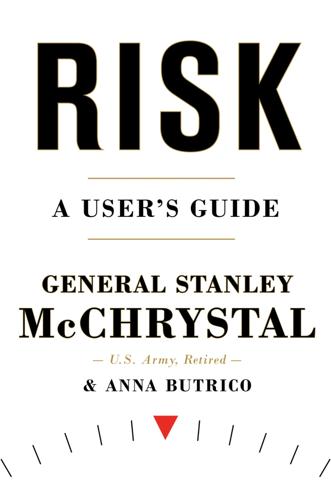
Risk: A User's Guide
by
Stanley McChrystal
and
Anna Butrico
Published 4 Oct 2021
In some cases the validity of information, often sensitive intelligence like an agent’s reporting, was dubious and, without a full contextual understanding of the situation, of limited value. In other cases, misinformation, intentionally crafted or manipulated, as in the case of propaganda or disinformation, increased the challenge of recognizing the reality, or, as soldiers would say, ground truth, of the situation. SYMPTOMS OF COMMUNICATION CHALLENGES Failure to Transmit. A failure to send information guarantees it won’t be received. But how often do we as individuals or organizations fail to share key knowledge?
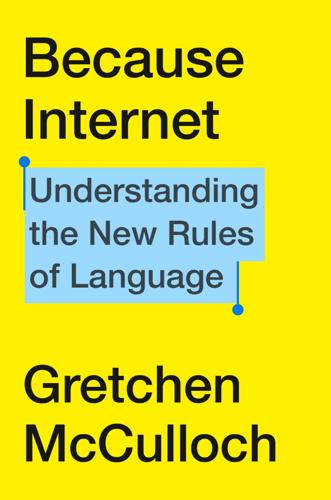
Because Internet: Understanding the New Rules of Language
by
Gretchen McCulloch
Published 22 Jul 2019
The Bulletin of the College Art Association of America 1(3). pp. 65–68. Laughing at a racist: Ronald de Souza. 1987. “When Is It Wrong to Laugh?” In J. Morreall, ed. The Philosophy of Laughter and Humor. State University of New York Press. pp. 226–249. far-right discussion forums: Alice Marwick and Rebecca Lewis. May 15, 2017. “Media Manipulation and Disinformation Online.” Data & Society. datasociety.net/output/media-manipulation-and-disinfo-online/. Erin McKean tweeted: Erin McKean. June 21, 2017. twitter.com/emckean/status/877711672684584960. It’s never been easier: An Xiao Mina. January 26, 2017. “How Pink Pussyhats and Red MAGA Caps Went Viral.”
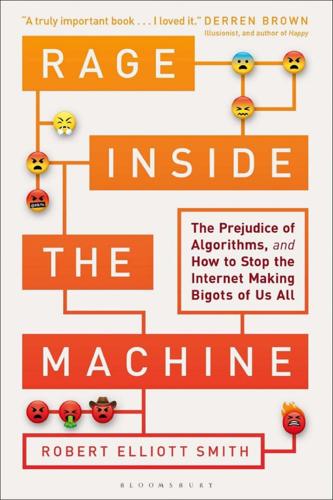
Rage Inside the Machine: The Prejudice of Algorithms, and How to Stop the Internet Making Bigots of Us All
by
Robert Elliott Smith
Published 26 Jun 2019
Guardian, www.theguardian.com/technology/2016/dec/04/google-democracy-truth-internet-search-facebook 27Yochai Benkler, Robert Faris, Hal Roberts and Ethan Zuckerman, 2017, Study: Breitbart-Led Right-Wing Media Ecosystem Altered Broader Media Agenda. Columbia Journalism Review, www.cjr.org/analysis/breitbart-media-trump-harvard-study.php 28Robert M. Faris, Hal Roberts, Bruce Etling, Nikki Bourassa, Ethan Zuckerman and Yochai Benkler, 2017, Partisanship, Propaganda, and Disinformation: Online Media and the 2016 U.S. Presidential Election. Berkman Klein Center for Internet & Society Research Paper, https://dash.harvard.edu/bitstream/handle/1/33759251/2017-08_electionReport_0.pdf Chapter 11 1R.E. Smith and B.A. Dike, 1995, Learning Novel Fighter Combat Manoeuvre Rules Via Genetic Algorithms.
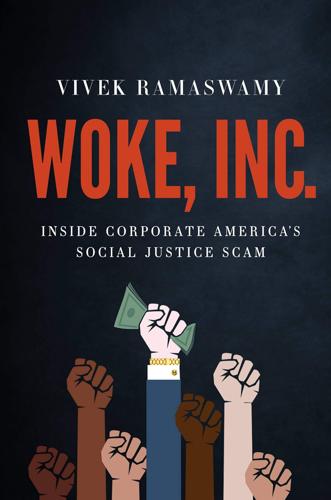
Woke, Inc: Inside Corporate America's Social Justice Scam
by
Vivek Ramaswamy
Published 16 Aug 2021
New York University researchers published a report titled “False Accusation: The Unfounded Claim That Social Media Companies Censor Conservatives,” which calls for the Biden administration to form a new “Digital Regulatory Agency” to fight dangerous ideas such as the assertion that social media companies have anti-conservative bias.46 Remind you of Orwell’s Ministry of Truth? Well, it gets worse. According to the New York Times, we now have a “reality crisis.” The solution? Experts are calling for the administration to “put together a cross-agency task force to tackle disinformation and domestic extremism, which would be led by something like a ‘reality czar.’” Importantly, “This task force could also meet regularly with tech platforms, and push for structural changes that could help those companies tackle their own extremism and misinformation problems… it could become the tip of the spear for the federal government’s response to the reality crisis.”

The Data Detective: Ten Easy Rules to Make Sense of Statistics
by
Tim Harford
Published 2 Feb 2021
We’ll see what can go wrong. And by following the story behind Nightingale’s famous rose diagram, we’ll see how powerful data visualization can be when used clearly and honestly. * * * — Much of the data visualization that bombards us today is decoration at best, and distraction or even disinformation at worst. The decorative function is surprisingly common, perhaps because the data visualization teams of many media organizations are part of the art departments. They are led by people whose skills and experience are not in statistics but in illustration or graphic design.4 The emphasis is on the visualization, not on the data.

A Fever in the Heartland: The Ku Klux Klan's Plot to Take Over America, and the Woman Who Stopped Them
by
Timothy Egan
Published 4 Apr 2023
“We have a son who is too young to join the Klan, and with this new order he will be able to gratify his wishes to become affiliated with a strictly American organization.” Klan Klubs were established in high schools. Hooded teens soon had their place in yearbooks in Indiana, featured along with the Glee Club or the Debate Society among the accepted extracurriculars. Steve and Barr also launched poison squads, as they were known on the inside. This was a disinformation brigade—clucks and gossips, but the best-known clucks and gossips in every community, so that false stories could be plausibly true. The fake news originated at the top and was planted at the bottom. It might be a whispered suggestion over a neighbor’s fence that a Black family was planning to move nearby.

The Power of Geography: Ten Maps That Reveal the Future of Our World
by
Tim Marshall
Published 14 Oct 2021
The industry is Arlit’s biggest employer, and despite health concerns a job there is valued. Greenpeace and other groups have done studies suggesting high levels of radiation in the area due to the spread of radioactive dust, leading to related illnesses. Areva denies such claims, saying they are based on ‘disinformation’. Hospitals in the town are owned by the company, and the population – whether employees or not – get free healthcare. The staff at the hospitals are also employed by the company, and senior management say there have been no cases of diseases linked to radiation at the mines. The French government points out that it has contributed $10 million to a fund aimed at helping African countries negotiate deals in the extractive industries.

Among the Braves: Hope, Struggle, and Exile in the Battle for Hong Kong and the Future of Global Democracy
by
Shibani Mahtani
and
Timothy McLaughlin
Published 7 Nov 2023
The article published the name and a photo of her husband, who was also a US diplomat, the names of their two young children, and the years they were born. Ta Kung Pao claimed to be much like any other Hong Kong media outlet, but the Liaison Office controlled the newspaper and used it as a tool to bully and intimidate its adversaries. The article acted as the starting gun for an unprecedented disinformation campaign. Over the next days, the number of articles about Eadeh multiplied. The People’s Daily, the official newspaper of the Communist Party’s central committee, published a story on her. China Daily produced a video montage of Eadeh from her public webpages. More details were published, including Eadeh’s parents’ names and her hometown in the Midwest.
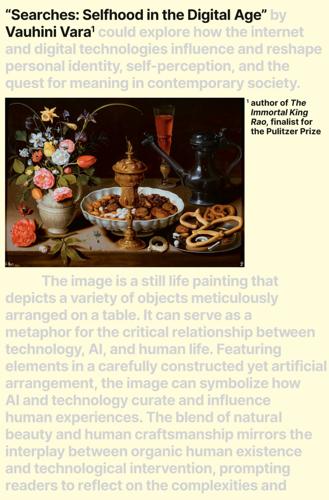
Searches: Selfhood in the Digital Age
by
Vauhini Vara
Published 8 Apr 2025
In the months after ChatGPT’s release, I read headlines about AI instructing killer drones (with sometimes-unpredictable behavior), sending people to jail (even if they’re innocent), designing bridges (with potentially spotty oversight), diagnosing health conditions (sometimes incorrectly), producing newsy reports (in some cases, to spread political disinformation), and summarizing search results (frequently delivering bizarre synopses advising people, for example, to pour glue on pizza). As far as I could tell, what distinguished the productization of AI so far had been not its impressiveness but the speed with which corporations had insinuated it into our lives despite its frightening unimpressiveness.

The Measure of Progress: Counting What Really Matters
by
Diane Coyle
Published 15 Apr 2025
Many commentators have pointed out that in any case Big Tech companies capture most of the value from use in the form of monopoly rents, or “attention rents” (O’Reilly et al. 2023). Some digital services such as social media also have directly negative welfare consequences, although the economic literature does not try to quantify the overall effect of phenomena such as disinformation and online harms, an impossible challenge. One example of a study looking at Facebook use in the United States (Allcott et al. 2020) found median annual values of using Facebook to be around $100 but also found that the WTA stated values changed when they enforced loss of access: “We find that four weeks without Facebook improves subjective well-being and substantially reduces post-experiment demand” (p672).
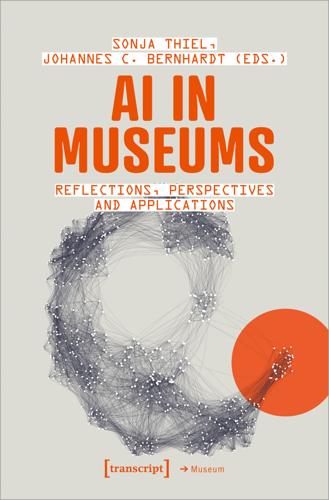
AI in Museums: Reflections, Perspectives and Applications
by
Sonja Thiel
and
Johannes C. Bernhardt
Published 31 Dec 2023
In addition to ethical concerns regarding the data used, there are overarching debates surrounding issues such as the potential loss of jobs, particularly for illustrators, who may feel threatened by the technology of prompt engineering and text-to-image generators. The development of new text-to-image generators could, however, also lead to the emergence of new professions and the enrichment of the field of illustration through creative tools. Furthermore, the creation of fake images poses a risk for politically motivated disinformation campaigns, as demonstrated by prominent examples such as a viral photo of the Pope wearing a Gucci coat or a manipulated image of Donald Trump evading arrest by law enforcement. In this context, it is always important to keep in mind that the results generative AI technologies produce can be factual, but might also be speculative.

Limitarianism: The Case Against Extreme Wealth
by
Ingrid Robeyns
Published 16 Jan 2024
Moreover, when the former News of the World editor was subsequently hired as communications director by David Cameron, then leader of the Conservatives, Porter observed how, as a result, “media power and political power achieve[d] an ever greater degree of merger.”18 In hindsight, this was only the beginning of a much stronger merger between Murdoch’s media empire and the political sphere. In the UK, Murdoch’s newspapers played an active role in spreading the disinformation and false promises that made the British population vote to leave the European Union—with all the economic and social harm that this has caused its citizens and trade and industry. Other British newspapers immediately wrote about the damage Brexit had caused as soon as those effects became clear—from not being able to hire Eastern European workers for the processing of turkeys for Christmas, to airport chaos for British passport holders wanting to travel to EU countries.
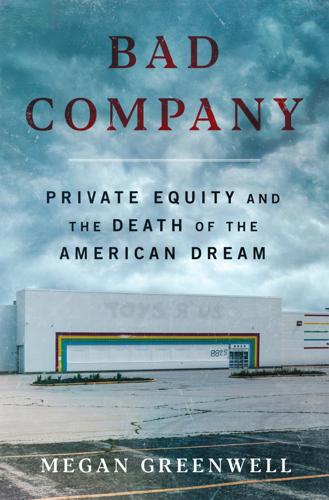
Bad Company
by
Megan Greenwell
Published 18 Apr 2025
They wrote that they were troubled by reports of “declining conditions, unresolved maintenance requests, and significant pricing changes” at Southern Towers. They urged CIM to “take immediate action to address these issues by engaging directly and frequently with the tenants and working quickly to resolve outstanding concerns.” In a response shared with local media outlets, CIM blamed the previous owners, as well as activists’ “disinformation,” adding that the company “will not be deterred from their commitment to the community they serve, their legal obligation and the fiduciary duty the company has to investors.” The letter didn’t attract much notice outside of Northern Virginia, but it was a bold move for Warner especially. He is one of the richest members of the Senate and a prominent friend to private equity; he held $30.8 million in industry investments in 2022.
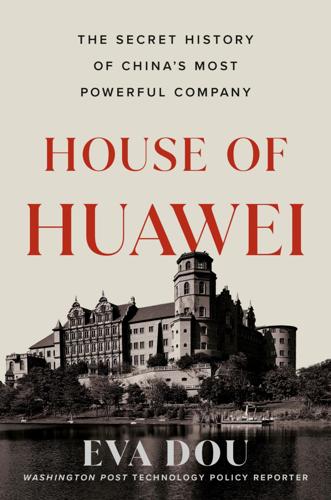
House of Huawei: The Secret History of China's Most Powerful Company
by
Eva Dou
Published 14 Jan 2025
Chinese state media seized on this story to trumpet that China had been right all along—the two Canadians were spies. Kovrig broke his silence to defend himself to Canadian media, saying that China’s government was well aware of his work as a diplomat and think-tank analyst, and that he was regularly invited to meet with Chinese officials, analysts, and scholars. “Repeating gaslighting and disinformation about why we were detained only prolongs pain that we’re all trying to heal from,” Kovrig told the National Post.[7] Within Canada, opinions differed on the lesson of the entire thing, and on whether Ottawa should have helped the US at all when it came to Meng’s detention. While the US had a solid case, even Western lawyers agreed it was unusual to make an economic sanctions case personal by detaining a family member of the company’s founder.
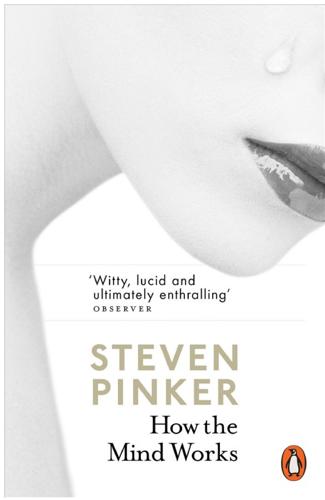
How the Mind Works
by
Steven Pinker
Published 1 Jan 1997
No one needs a scientist to make the moral point that war is not healthy for children and other living things, or the empirical point that some places and periods are vastly more peaceable than others and that we should try to understand and duplicate what makes them so. And no one needs the bromides of the Seville Statement or its disinformation that war is unknown among animals and that their dominance hierarchies are a form of bonding and affiliation that benefits the group. What could not hurt is a realistic understanding of the psychology of human malevolence. For what it’s worth, the theory of a module-packed mind allows both for innate motives that lead to evil acts and for innate motives that can avert them.
…
And to those in power, other people’s emotions are even more annoying—they lead to nuisances such as women wanting men as husbands and sons rather than as cannon fodder, men fighting each other when they could be fighting the enemy, and children falling in love with a soulmate instead of accepting a betrothed who cements an important deal. Many societies deal with these nuisances by trying to regulate emotions and spreading the disinformation that they don’t exist. Ekman has shown that cultures differ the most in how the emotions are expressed in public. He secretly filmed the expressions of American and Japanese students as they watched gruesome footage of a primitive puberty rite. (Emotion researchers have extensive collections of gross-out material.)

Red Storm Rising
by
Tom Clancy
Published 2 Jan 1986
How odd, he thought, while looking up from his notes, that he often had to speak more openly to these paid foreign spies than to members of the Party Central Committee. Spies, exactly what they were ... They could be manipulated, of course, by a skilled man with a collection of carefully prepared disinformation--which was precisely what he was about to do. But on the whole they were a threat because they never stopped doing what it was they did. It was something the Foreign Minister never allowed himself to forget, and the reason he did not hold them in contempt. Dealing with them always held potential danger.
…
It is now too late to retreat. This is also a political question, Petya." "NATO is mobilizing," Sergetov said. "Too late, and too halfheartedly," replied the Director of the KGB. "We have split one country from the NATO alliance. We are working on others, and are hard at work throughout Europe and America spreading disinformation about the bomb attack. The will of the people in the NATO countries is low. They will not want to fight a war for German murderers, and their political leaders will find a way to disassociate themselves from the conflict." "But not if we slaughter civilians with gas." The Foreign Minister nodded.

Wanderers: A Novel
by
Chuck Wendig
Published 1 Jul 2019
“It helped us predict a multistate measles outbreak that could’ve decimated the West Coast: It saw what we did not, which was that local vaccination rates had dipped—all thanks to parents falling prey to misinformation about vaccines.” He hmmed some small approval at that: These days, misinformation—or really, disinformation—seemed so ubiquitous, it suffused the air, as common as pollen in spring. Sadie went on: “It’s not just epidemics, either—not just viruses or bacteria. We stopped a bridge collapse in Philadelphia. An Iranian computer virus that would’ve ransomed bank records. We caught a domestic terror cell operating out of Oregon, and Islamic hackers trying to attack the power grid, and a Russian spy who had long integrated himself into Blackheart, the private military contractor.”
…
As he pressed himself against the ground, a bit of information—a memory—flitted through his head, uninvited, like a bat in the attic. Once upon a time he’d read somewhere, or heard on the radio, that the sound of ringing in your ears was the sound of ear cells dying, their last shriek before going dark and deaf. It was probably a lie. Some misinformation. Or disinformation. Most things seemed to be anymore. For a moment, his brain lied to him, told him that Autumn was here with him, that she was underneath him, that she had come with him from Innsbrook, but she hadn’t. He was alone. So goddamn alone. The man with the gun stood there. Only five feet away. The rifle pointed up in the air.
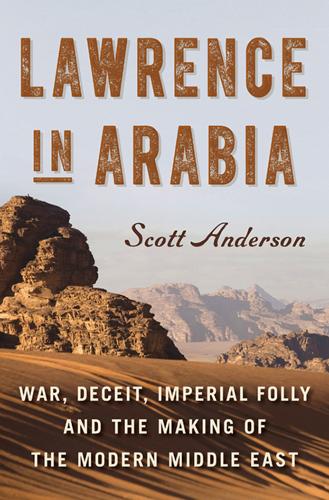
Lawrence in Arabia: War, Deceit, Imperial Folly and the Making of the Modern Middle East
by
Scott Anderson
Published 5 Aug 2013
Nevertheless, there was initially nothing about the evacuation of Jaffa to suggest it would be anything more than one of those little forgotten footnotes of war, another point of misery for a civilian population long grown accustomed to it. But in issuing his edict, Djemal Pasha unwittingly set in motion one of the most consequential disinformation campaigns of World War I. The first link in that chain of events occurred on the night of April 17, when a twenty-seven-year-old woman was helped aboard a British spy ship trolling off the coast of Palestine. IT WAS A poignant reunion. Aaron Aaronsohn hadn’t seen his younger sister Sarah in nearly a year, but there she was in Port Said, pale and weak but alive, having just come off the Managem from Athlit.
…
The cuts would make him travel to the railway on hands and knees, a journey of an hour, and his nakedness would keep him in the shadow of the rocks till the sun was low.” While the Circassian’s ultimate fate is unknown, the merciful aspects of leaving a naked and crippled man out in the Syrian desert in June might reasonably be debated. By the time the raiding party returned to Bair, Lawrence had every reason to feel confident. In response to their disinformation effort, the Turks had just dispatched a four-hundred-man cavalry unit to hunt down the phantom rebel force in Wadi Sirhan. Over the previous week, the Arabs had carried out a series of hit-and-run strikes across the length of southern Syria with no discernible pattern. By now, the Turks surely thought the next attack could come most anywhere, and were distracted from the still-distant target of Aqaba.

Cyclopedia
by
William Fotheringham
Published 22 Sep 2011
They devised elaborate strategies against each other: Bartali detailed a teammate to watch Coppi’s legs and warn him the moment the vein behind his knee began pulsating, as that was a sign he was weakening. Coppi asked his teammates to take Bartali out on the town before the 1948 MILAN–SAN REMO, in the hope that they would have a long night out and the “old man” would be tired the next day. They sent spies to spread disinformation, Bartali would get a teammate to search his rival’s hotel room for drugs. ANQUETIL and POULIDOR had a different relationship: there was no bitterness, at least on Poulidor’s side, and the rivalry clearly served as an extra form of motivation for “Master Jacques.” In 1967, the night before the Critérium National one-day race, he was quaffing whisky at 3 AM with his manager Raphael Geminiani when “Gem” suggested they drink to Poulidor’s win the next day—Anquetil was not planning to ride—but the joke backfired.

How the World Works
by
Noam Chomsky
,
Arthur Naiman
and
David Barsamian
Published 13 Sep 2011
Our ambassador to Chile, Edward Korry, who was a Kennedy liberal type, was given the job of implementing the “soft line.” Here’s how he described his task: “to do all within our power to condemn Chile and the Chileans to utmost deprivation and poverty.” That was the soft line. There was a massive destabilization and disinformation campaign. The CIA planted stories in El Mercurio [Chile’s most prominent paper] and fomented labor unrest and strikes. They really pulled out the stops on this one. Later, when the military coup finally came [in September 1973] and the government was overthrown—and thousands of people were being imprisoned, tortured and slaughtered—the economic aid which had been cancelled immediately began to flow again.
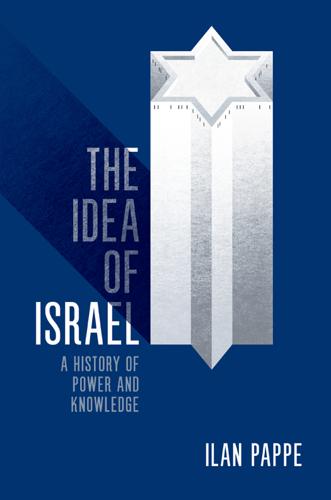
The Idea of Israel: A History of Power and Knowledge
by
Ilan Pappe
Published 30 Apr 2012
See also Yaakov Katz, ‘Explaining the Term the “Heralders of Zion,” ’ Shivat Zion, 1 (1950), p. 93 (Hebrew). 5 Shmuel Almog, ‘Pluralism in the History of the Yishuv and Zionism’, in Moshe Zimmermann et al., ed., Studies in Historiography, Jerusalem: Zalman Shazar Centre, 1978, p. 202 (Hebrew). 6 Israel Kolatt, ‘On Research and the Researcher of the History of the Yishuv and Zionism’, Cathedra, 1 (1976), pp. 3–35 (Hebrew). 7 Almog, ‘Pluralism in the History of the Yishuv and Zionism’. 8 See Norman Finkelstein, ‘Disinformation and the Palestine Question: The Not-So-Strange Case of Joan Peters’ From Time Immemorial’, in Edward Said and Christopher Hitchens, ed., Blaming the Victims: Spurious Scholarship and the Palestinian Question, London: Verso, 1988, pp. 33–70. 9 D. F. Merriam, ‘Kansas Nineteenth-Century Geologic Maps’, Transactions of the Kansas Academy of Science, 99 (1996), pp. 95–114. 10 J.
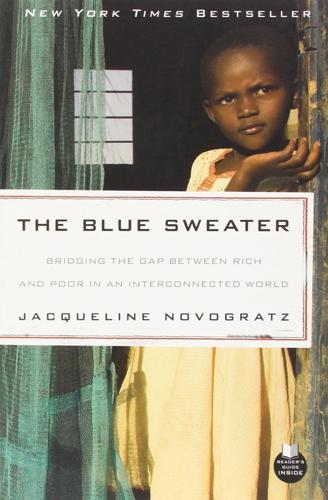
The Blue Sweater: Bridging the Gap Between Rich and Poor in an Interconnected World
by
Jacqueline Novogratz
Published 15 Feb 2009
In October 1990, the Rwandan Patriotic Front (RPF), a small but effective rebel army led by Paul Kagame, entered Rwanda from Uganda. The RPF’s stated mission was to remove Rwanda’s president and make it possible for exiled Tutsis to reclaim their citizenship. At the same time, the international community was pushing Rwanda for democratic reform. This marked the beginning of fear. And with fear began the disinformation campaigns, the lying, and the manipulation by Rwanda’s leaders to instill even more defensiveness—and paranoia—in an already insecure citizenry. For the next 5 years, the question would be asked over and over: “Are you a Hutu or a Tutsi?” As tensions between the two groups increased, a growing hatred began to permeate everyday life.
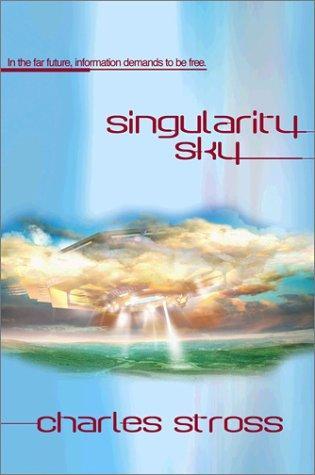
Singularity Sky
by
Stross, Charles
Published 28 Oct 2003
Captain Mirsky stared at him inquiringly; "I thought you were busy keeping an eye on that damned chinless wonder from the Curator's Office," he commented. "Sir!" Sauer sat bolt upright. "Permission to report a problem, sir!" "Go ahead." "Security violation." Sweat stood out on Sauer's forehead. "Suspecting a covert agenda on the part of the Terran diplomat, I arranged a disinformation operation to convince her we had her number. Unfortunately, we convinced her too well; she escaped from custody with the shipyard engineer and is loose on the ship right now. I've started a search and sweep, but in view of the fact that we appear to have armed hostiles aboard, I'm recommending a full lockdown and security alert."
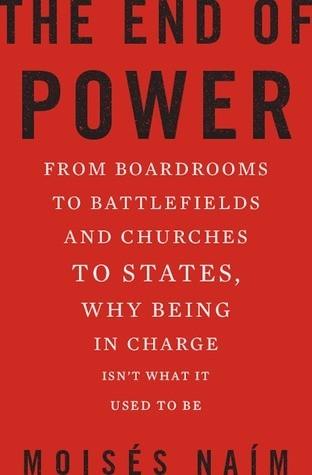
The End of Power: From Boardrooms to Battlefields and Churches to States, Why Being in Charge Isn’t What It Used to Be
by
Moises Naim
Published 5 Mar 2013
Josef Korbel, “The Decline of Diplomacy: Have Traditional Methods Proved Unworkable in the Modern Era? Worldview, April 1962. 45. Moisés Naím, “Democracy’s Dangerous Impostors,” Washington Post, April 21, 2007; Naím, “What Is a GONGO?” Foreign Policy, April 18, 2007. 46. Another example concerns Transdniestria; see “Disinformation,” Economist, August 3, 2006. 47. Cited by Naím, “Democracy’s Dangerous Impostors.” 48. On ALBA, see Joel Hirst, “The Bolivarian Alliance of the Americas,” Council on Foreign Relations, December 2010. 49. Joe Leahy and James Lamont, “BRICS to Debate Creation of Common Bank,” Financial Times, March 2012. 50.
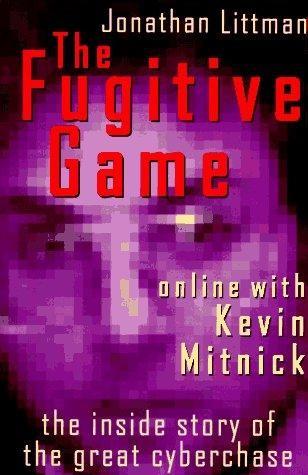
The Fugitive Game: Online With Kevin Mitnick
by
Jonathan Littman
Published 1 Jan 1996
And so we wait for Kevin Mitnick to phone. Career Counseling The phone startles me, and I stumble out of bed to pick up the portable. It's Eric again, calling at about four in the morning on Thursday, the last day of March, 1994. "Be very careful about what you hear about my current activities, because I am in the process of disinformation," Eric threatens in a calm, even tone. "Everything that you hear about my whereabouts or activities may not be true." Eric may be a fugitive on the run, but when it comes to his story, he's in total control. He pauses a moment and then coolly orders, "Stand by. There's some movement here. . . ."
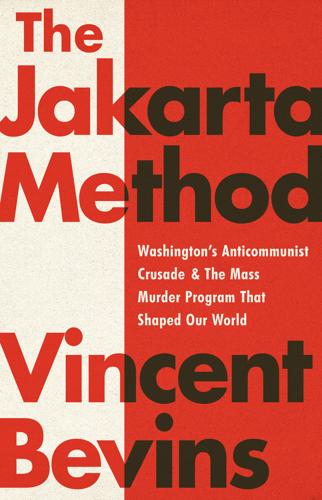
The Jakarta Method: Washington's Anticommunist Crusade and the Mass Murder Program That Shaped Our World
by
Vincent Bevins
Published 18 May 2020
That came out to almost a dollar per vote for Eduardo Frei, more than Lyndon Johnson spent in his own 1964 campaign.42 In addition to funds, the CIA also delivered a crude “scare campaign” to the Chilean people.43 The Agency made extensive use of the press, radio, films, pamphlets, and posters, and painted the walls of the cities. One red-baiting radio ad featured the sound of a machine gun operated by murderous communists, followed by a woman declaring, “They have killed my child!” There were up to twenty radio spots of this kind per day.44 The CIA also distributed disinformation and “black propaganda,” falsely attributing materials to the Communist Party.45 Chile had been a stable democracy since 1932, and Frei was no dictator. He initiated a modest land reform program, made efforts to bring regular people into the educational system, and made taxation a bit more progressive.
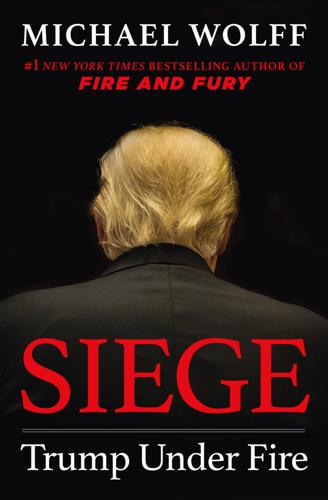
Siege: Trump Under Fire
by
Michael Wolff
Published 3 Jun 2019
On October 5 and 6, with the president barnstorming the country in his now almost daily series of MAGA events in friendly stadiums, Kushner was left to get his friend MBS, as well as himself, out of the Khashoggi mess. In frequent contact with the Crown Prince, Kushner effectively became a crisis manager for him. To that end, he also become the White House’s most prolific leaker of Saudi conspiracy theories and disinformation. From White House sources came the Turkish plot: blaming MBS for Khashoggi’s “disappearance” was part of Erdoğan’s plan to reestablish the Ottoman caliphate and take control of Mecca from the Saudis. From White House sources came the UAE plot: the plane carrying the assassination squad departed from Riyadh but landed in Dubai on its way to Istanbul.

Fire and Fury: Inside the Trump White House
by
Michael Wolff
Published 5 Jan 2018
Yet there were constant tropes in his own narrative: Bannon was about to be cast out, Priebus too, and Kushner needed his protection from the other bullies. So if Bannon, Priebus, and Kushner were now fighting a daily war with one another, it was mightily exacerbated by something of a running disinformation campaign about them that was being prosecuted by the president himself. A chronic naysayer, he viewed each member of his inner circle as a problem child whose fate he held in his hand. “We are sinners and he is God” was one view; “We serve at the president’s displeasure,” another. * * * In the West Wing of every administration since at least that of Clinton and Gore, the vice president has occupied a certain independent power base in the organization.
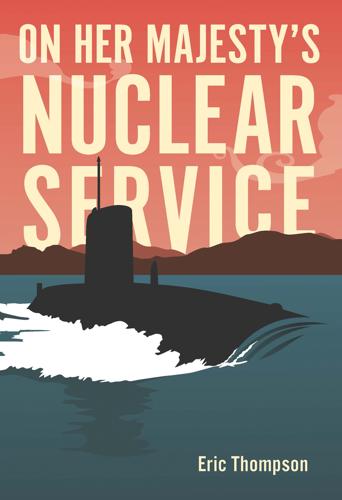
On Her Majesty's Nuclear Service
by
Eric Thompson
Published 18 Apr 2018
When it had been fitted to the submarine, she looked like a gigantic, one-armed lobster. Before dawn, she had sailed. I was not cleared to know about her operation – I did not need to know that – but I suspect her mission was to snatch some Soviet listening device for intelligence assessment. Intelligence gathering is one thing but disinformation is another. For amusement, I had a photograph taken of my Alsatian dog wearing earphones in a sonar operator’s training booth. When asked by the Base Photographic Officer why it had been required, I replied tongue-in-cheek: ‘We’re planning to replace sonar operators with dogs because they can easily be trained to recognise the sound of Soviet submarines and bark if they hear one, and dogs are much cheaper than sailors.’

The Great Firewall of China
by
James Griffiths;
Published 15 Jan 2018
The vast riches of Silicon Valley have corrupted politics, leaving elected officials genuflecting in the direction of tech billions in the hopes of replacing jobs disrupted out of existence with data centres, company headquarters, and the gig economy. Social media companies have refused to recognise their role as publishers and gatekeepers, allowing propaganda and malicious disinformation to propagate wildly on their platforms, spreading lies and hatred, radicalising millions and potentially even affecting elections. That we are reaching a breaking point is obvious. More and more voices are calling for regulation of the internet, for untrammelled tech power to be kept in check.
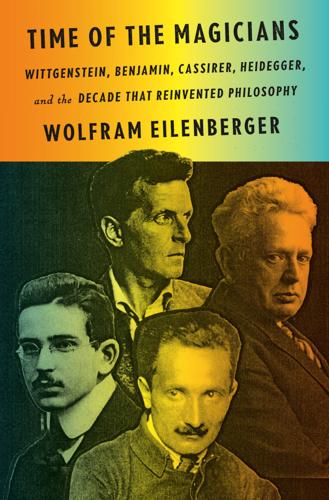
Time of the Magicians: Wittgenstein, Benjamin, Cassirer, Heidegger, and the Decade That Reinvented Philosophy
by
Wolfram Eilenberger
Published 14 Sep 2020
The writing of flyers aside, his work there consisted of reading reports in French newspapers, collecting quotes and adjusting their sense where necessary to render them useful to German military propagandists. Not an overly demanding job, but far from ideal for a firm European like Ernst Cassirer. This occupation gave him sufficient time in the afternoons to devote himself to his own projects and studies, and to counter his duties as a producer of disinformation by writing the aforementioned Freedom and Form, and the essay “On European Reactions to German Culture.” Come what may, Kant and Goethe should have been able to be proud of him. That was his maxim, and he had no intention of deviating from it. Not even on his grueling commute between his house in Berlin’s Westend and the city center, an hour and a half each way.

The Road to Unfreedom: Russia, Europe, America
by
Timothy Snyder
Published 2 Apr 2018
It was an American Moonves: James Williams, “The Clickbait Candidate,” Quillette, Oct. 3, 2016. Twitter accounts: Steven Levitsky and Daniel Ziblatt, How Democracies Die (New York: Crown, 2018), 58. On spectacle, see Peter Pomerantsev, “Inside the Kremlin’s hall of mirrors,” TG, April 9, 2015. Unlike Russians Alice Marwick and Rebecca Lewis, “Media Manipulation and Disinformation Online,” Data & Society Research Institite, 2017, 42–43, sic passim. Tamsin Shaw, “Invisible Manipulators of Your Mind,” NYR, April 20, 2017; Paul Lewis, “Our minds can be hijacked,” TG, Oct. 6, 2017. 44% figure: Pew Research Center, cited in Olivia Solon, “Facebook’s Failure,” TG, Nov. 10, 2016.
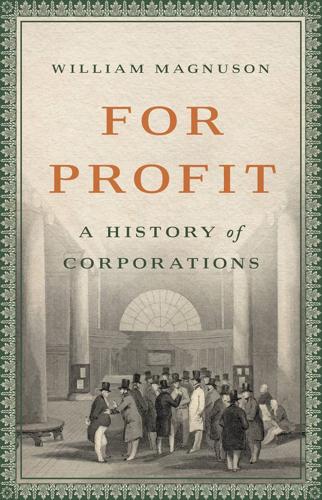
For Profit: A History of Corporations
by
William Magnuson
Published 8 Nov 2022
At the time humans selected the articles, and many conservatives believed that the Facebook employees so tasked were, either intentionally or unintentionally, favoring “liberal” causes at the expense of conservative ones. In response to the criticism, Facebook replaced humans with algorithms, letting computer code make the decision of which topics to show. Soon far-right stories and disinformation were dominating the section. Later studies would help uncover why, as researchers found that false news spread much faster and farther on social media than true news. False news on Twitter, for example, was found to be 70 percent more likely to be retweeted than true news. Facebook researchers found that a sizeable majority of people joining extremist groups on the site were doing so because of Facebook’s own recommendation tools.41 In the meantime, though, another hostile actor had its sights set on Facebook: Russian intelligence.
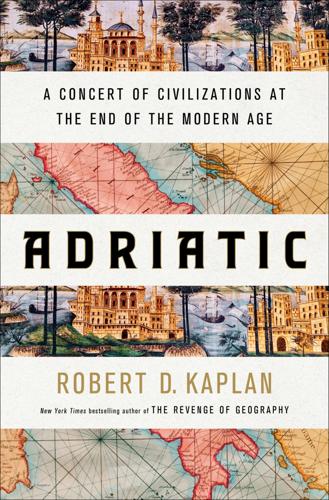
Adriatic: A Concert of Civilizations at the End of the Modern Age
by
Robert D. Kaplan
Published 11 Apr 2022
*3 As I wrote back then: “Here in Ljubljana Haider might be in his element,” referring to Jörg Haider, the late leader of the populist and vaguely neo-Nazi Austrian Freedom Party, who hailed from the province of Carinthia just over the border, and whose support was ultimately circumscribed by Austria’s own middle-class prosperity. *4 In the years following my visit, a far-right prime minister rose to power in Slovenia, Janez Janša, a devotee of the former American president Donald Trump and the right-wing populist leader in neighboring Hungary, Viktor Orbán. Janša traded in disinformation and with Orbán’s help built a propaganda network that garnered many followers. It was an example that we are truly at the end of the modern world and into the postmodern one, in which absurdity combines with globalization to produce unimaginable outcomes. It was humbling to see a country whose experts had impressed me with such probity now drift for a time into illogic.

Words That Work: It's Not What You Say, It's What People Hear
by
Dr. Frank Luntz
Published 2 Jan 2007
The man who has been working behind the scenes for the past ten years—in debate prep sessions and television network green rooms, in the halls of Congress and in state capitals across the country—playing my own small part in the Republican ascension and in the Democratic collapse.* Why have I gone there, into what some of my clients and many of my colleagues would consider enemy territory? More importantly, why do the Hollywood elite welcome me? How do they know I’m not part of some nefarious Karl Roveian disinformation campaign, plotting political pranks and electoral sabotage? The answer is simple: Although my political clients may come from one side of the aisle, what I do is fundamentally nonpartisan. The ideas and principles about effective language I was to share with them in Brentwood that afternoon apply equally to Democrats and Republicans.

The Ransomware Hunting Team: A Band of Misfits' Improbable Crusade to Save the World From Cybercrime
by
Renee Dudley
and
Daniel Golden
Published 24 Oct 2022
(remember this when you vote).” Support for Trump was common among FBI agents and across law enforcement. But after Joe Biden was declared the winner of the 2020 election, and Trump falsely blamed his loss on voting fraud, Mark’s posts became increasingly extreme. Undermining the bureau’s own efforts to stem the spread of disinformation, one of the posts linked to a YouTube video supposedly showing poll workers interfering with ballots. Facebook’s independent fact-checkers flagged the video as false. “We have been told that this election was the most secure election in American history,” Mark wrote on December 12, 2020. “That is a lie.
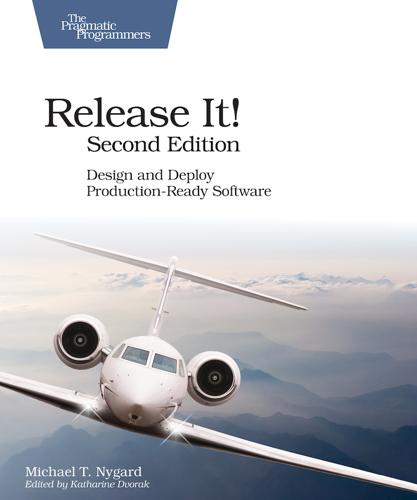
The Nature of Software Development: Keep It Simple, Make It Valuable, Build It Piece by Piece
by
Ron Jeffries
Published 14 Aug 2015
Imagine (or recall, if you’ve been there) trying to debug a totally novel failure mode while also participating in a 5 a.m. (with no coffee) conference call with about twenty people. Some of them are reporting the current status, some are trying to devise a short-term response to restore service, others are digging into root cause, and some of them are just spreading disinformation. We sent a system admin and a network engineer to go looking for denial-of-service attacks. Our DBA reported that the database was healthy but under heavy load. That made sense, because at startup, each instance would issue hundreds of queries to warm up its caches before accepting requests.

The Best of 2600: A Hacker Odyssey
by
Emmanuel Goldstein
Published 28 Jul 2008
(News organizations in January 1992 reported the story of a computer virus introduced into an Iraqi air defense system via a printer.) My first reaction was one of amazement that the National Security Agency had pulled off such a stunt. But when I thought about it further it began to seem less and less reasonable and more and more likely that the whole thing was a piece of “disinformation.” There are three ways that the printer might have been attached to the mainframe: (1) Channel attached. If it was channel-attached then there is virtually no way that it could initiate an action that would cause the modification of software on the mainframe. A printer is an output device. It can only tell the computer stuff like, “I finished printing a line,” “I have a jam,” etc.
…
The company that created the CRT software might well have left a “logic bomb” in the software in case Saddam pulled a stunt like he pulled. The company probably does not want it to be known that they leave such bombs in their software, so the NSA wants, again, to protect them and divert attention. I think that the disinformation theory gains some credibility from the information that is presented in the stories that are circulating. We are told almost nothing about the technical details but we are told everything about the printer. How it came in, where it came from, the approximate timeframe, everything but the serial number.
…
True Colors (Autumn, 1993) By Billsf There still seems to be much confusion on the color coding scheme of various “Toll Fraud Devices” (TFDs). The mainstream media has confused colors, made many up, and most important of all, usually failed to properly describe their operation. There have been many papers posted by “phreaks,” which might be considered the same kind of unintentional (?) disinformation the mainstream has put out for years. Many of the world’s best phreaks are a generation younger than the “originals” and may simply not know the operation or history or even the color that was generally agreed upon for a particular device. The real list of colors is quite short, and their operation may come as a surprise to many.
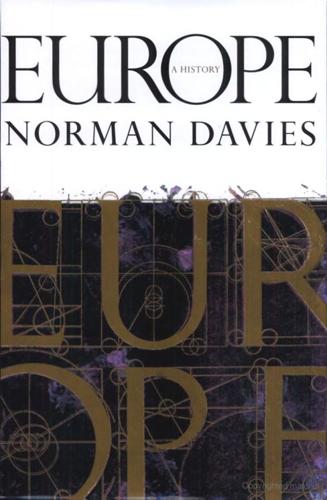
Europe: A History
by
Norman Davies
Published 1 Jan 1996
Then, as soon as it turned the bend, they stripped off their caps and smocks, dismantled the sets, and rebuilt them overnight further downstream. Since Catherine was Potemkin’s lover at the time, it is not possible to believe that she was ignorant of the ploy; the principal dupes were the foreign ambassadors. ‘Potemkin Villages’ has become a byword for the long Russian tradition of deception and disinformation.1 Force and fraud are the stock-in-trade of all dictatorships. But in Russia Potemkinism has been a recurring theme. On this subject, the views of a professional deceptionist may not be entirely irrelevant. According to a senior KGB defector, Western opinion has been skilfully and systematically duped ever since Lenin’s NEP.
…
Several of the alleged NKVD murderers were reported alive and well in Russia.7 In the USSR and in communist-ruled Poland, ‘Katyń’ remained a non-subject for exactly fifty years.8 A major Soviet memorial to Nazi barbarity was erected at a nearby Byelorussian village called Khatyń, to which millions of visitors were taken in a calculated policy of disinformation. The Black Book of Polish Censorship classed Katyń as an event which could not be mentioned, even to blame the Nazis.9 Possession of the Lista Katyńska, a roll-call of the victims published abroad, was a criminal offence.10 Throughout that half-century, ‘Katyń’ offered a litmus test for the professional honesty of historians and their grasp of the realities of the Grand Alliance.
…
Bezymenski, The Death of Adolf Hitler: Unknown Documents from the Soviet Archives (New York, 1968). (‘Bezymenski’ is probably a Russian pseudonym meaning ‘nameless’.) 5. Waite, ‘Hitler’s Guilt Feelings’, 236 ff. The subject of the Führer’s allegedly abnormal anatomy may ultimately derive from a secret disinformation campaign launched by SOE in the Arab countries in 1941: Independent, 5/6 Sept. 1994. 6. After ‘Fred Karno’s Army”, from Joan Littlewood, Oh What a Lovely War! (Theatre Workshop, London, 1976). BOGUMIL 1. See Steven Runciman, The Mediaeval Manichee: A Study of the Christian Dualist Heresy (Cambridge, 1947; repr. 1984). 2.

The Great War for Civilisation: The Conquest of the Middle East
by
Robert Fisk
Published 2 Jan 2005
The Arab–Jewish struggle, from the conflicting British promises of Bill Fisk’s 1914–18 war—of independence for the Arab states, and of support for a Jewish national home in Palestine—to the establishment of the state of Israel on Palestinian land following the Jewish Holocaust and the Second World War, is an epic tragedy whose effects have spread around the world and continue to poison the lives not only of the participants but of our entire Western political and military policies towards the Middle East and the Muslim lands. The narrative of events— both through Arab and Israeli eyes and through the often biased reporting and commentaries of journalists and historians since 1948—now forms libraries of information and disinformation through which the reader may wander with incredulity and exhaustion. As long ago as 1938, when the British still governed Palestine under a League of Nations mandate, the eminent historian George Antonius was warning of the dangers of too much reliance on the vast body of literature already in existence, and his words are no less relevant today: . . . it has to be used with care, partly because of the high percentage of open or veiled propaganda, and partly because the remoteness of the indispensable Arabic sources has militated against real fairness, even in the works of neutral and fair-minded historians.
…
To comprehend these new press laws, it was necessary to visit Marwan Kanafani, special adviser to the president—the president of Palestine, of course—who happened to be the brother of the militant (and murdered) poet Ghassan Kanafani. “We closed Al-Watan because of the report about the president,” he announced to me. “The editor was arrested for something else—he is under arrest, yes. He is being questioned. We have also closed Al-Istiqlal. They have been involved in disinformation.” And Kanafani glanced at his computer screen as if it contained the very law under which Imad al-Falouji, editor of the Hamas newspaper, was taken from his home the previous Saturday morning by plainclothes PLO security men. Al-Falouji’s sin, it seems, was to have carried a small news item on his paper’s back page which claimed to quote a report from The Independent that Yassir Arafat had sold to a French company the right to use the name of his newly-born daughter Zahwa on its products.
…
In the same month, the Israeli Housing Ministry announced the sale of land for 5,000 new Jewish homes inside existing colonies in the West Bank and Gaza Strip. Benjamin Netanyahu’s claim that the Jebel Abu Ghoneim colony—its identity changed to Har Homa in Hebrew—would be matched by the construction of 3,015 houses for Palestinians was denounced as “disinformation” by human rights groups. They pointed out that 18,000 permits for Palestinian homes had been promised in 1980—yet not a single one had been honoured seventeen years later. Nor was this huge illegal colonial expansion—which continued throughout the Oslo “peace process”—without active encouragement from within the United States.

The Wrecking Crew: How Conservatives Rule
by
Thomas Frank
Published 5 Aug 2008
They are the career State Department officers who have, naively or otherwise, argued that the Sandinistas pose no threat to the Americas and who have recently redoubled their efforts to appease the Leninists in Managua with various “peace plans.” They are the media . . . whose lies about Nicaragua are exposed in Requiem. They are the world’s masters of mis-and disinformation, the Soviet KGB and their Kremlin masters, who have much to gain from America remaining ignorant. As late as 1990, with the Warsaw Pact itself having rebelled successfully against the Soviets, the magazine was still insisting that Mikhail Gorbachev’s reforms were merely “strategic deception,” a clever trick staged to cause headaches for the Western “pro-defense consensus.”15 Ridiculous though this stuff seems today, the IFF had good reason to believe in a world in which grand conspiracies gulled the masses and public opinion was manipulated by the hidden hand of a foreign power.

Common Knowledge?: An Ethnography of Wikipedia
by
Dariusz Jemielniak
Published 13 May 2014
Many people have tried many things to keep their identities secret: They worry over every little detail they may have released, or refuse to answer anything about themselves, making it very difficult to form any personal ties. Quite unfortunately, it simply isn’t possible to keep your details quiet: You will eventually say something that will lead back to you, and the stalkers will find it. My approach was different: I decided to be myself, to never hide my personality, to always be who I am, but to utilize disinformation with regard to what I consider unimportant details: age, location, occupation, etc. . . . I was actually under the impression that the stalkers and psychopaths were the only people who actually believed the story; a quick examination of the time I’ve spent here should lead to the conclusion that there’s no way I could be who the statistics said I was. . . .

Falling Upwards: How We Took to the Air
by
Richard Holmes
Published 24 Apr 2013
He arrived at Tours, with all the mail intact, by 4 p.m., and delivered his despatches to the government in exile. These included a special address to the nation from Léon Gambetta, which was printed in the next day’s newspapers throughout France. Gambetta announced that Paris was preparing ‘a heroic resistance’. All Prussian disinformation should be ignored. All political parties were united. The city could hold out all winter. ‘Let all France prepare herself for a heroic effort of will!’ By the next evening the news had begun to spread like wildfire. It was not just the arrival of private mail, or Gambetta’s public message. It was the fact that the siege of Paris had been broken by a balloon.

It's Our Turn to Eat
by
Michela Wrong
Published 9 Apr 2009
Their very relentlessness provided a clue as to who lay behind the calls. It bore all the hallmarks of a scare-off operation by Kenyan intelligence. He did not mention these calls to Kibaki. It came with the territory, he reasoned – no point going whining to the boss. But within days, a campaign of systematic disinformation was being piled onto the death threats. The aim was to sully John's reputation to the point where his professional actions would have no public credibility. The shadowy figures who had set themselves the task of smearing him chose a classic route. John might have a girlfriend of four years' standing, the loyal Mary Muthumbi, but he was that rarest of creatures: a thirty-nine-year-old African bachelor.
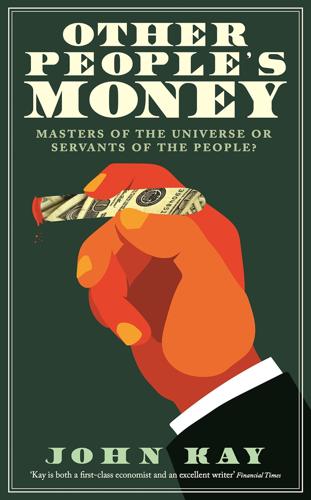
Other People's Money: Masters of the Universe or Servants of the People?
by
John Kay
Published 2 Sep 2015
In this instance the purchaser (the Dutch governor-general of New Netherland, Peter Minuit) tricked the sellers: the Natives simply made a mistake. Or perhaps not. Another version of the legend has the Natives getting the better of the deal, since they never owned Manhattan Island in the first place.10 In either case the trade was based on misinformation and disinformation. The notion that the market-place was a venue in which unscrupulous merchants robbed unwitting customers, and foreign trade a means of extracting wealth from foreigners, dominated economic thought from the days of Aristotle until the mid-eighteenth century. We might honour the seventeenth-century French economist and politician Jean-Baptiste Colbert as the champion of this doctrine, since many of his compatriots – along with Ruskin, whose grasp of economics was never strong, and more recent critics of commercial activity – adhere to it still.
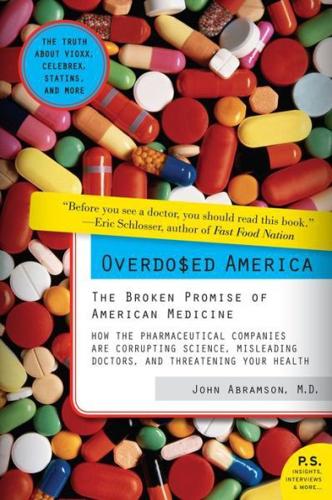
Overdosed America: The Broken Promise of American Medicine
by
John Abramson
Published 20 Sep 2004
I told him that during those years I learned that public information often cannot be taken at face value and that committed scholars and journalists could make the truth available for those who cared enough to seek it out. My awakening to the potential of critical scholarship as the antidote to public disinformation purveyed by vested interests was, ultimately, what led me to write this book. To be sure, there was an element of throwing caution to the wind in leaving my practice to write an exposé of American medicine. But, I explained to my host, I had no option: not writing Overdosed America would have left me forever knowing that I had been in a position, a privileged and somewhat unique position, to explain the commercial hijacking of my profession, but that I had lacked the courage to go forward.
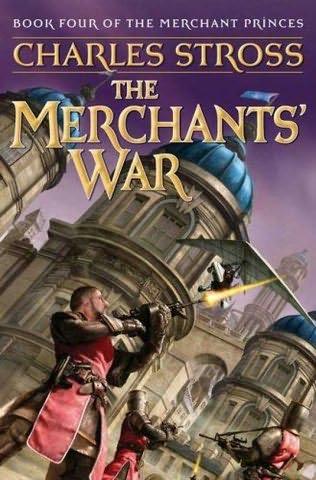
Merchants' War
by
Stross, Charles
Published 30 Sep 2007
He didn't know where she'd gone after the battle-my guess is, with a Wu family locket, she's somewhere in New Britain right now-but that's not the point. She spoke to him. Let me assure you that hanging her cx-boyfriend would be exactly the most effective way to make her turn traitor. She grew up in America, remember. In my opinion, the least damaging option was to spin him a line of disinformation, let his leg fester a bit, then send him back. If we're really lucky, we've got ourselves a back channel all the way to the White House. And if not-well, let's just say, whoever debriefs him is going to get a usefully skewed view of our politics." (Pause.) "That will probably keep the council from demanding your head."
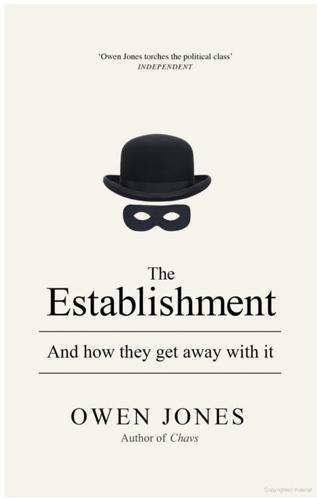
The Establishment: And How They Get Away With It
by
Owen Jones
Published 3 Sep 2014
Perhaps a more disturbing phenomenon is the journalist who ends up being an outrider for serving politicians. In 2008 Kamal Ahmed, the former political editor of The Observer, had to angrily deny accusations made by Guardian journalist Nick Davies that he had been a mere conduit for Alastair Campbell in the run-up to the Iraq War. Davies claimed that Ahmed had left readers ‘slowly soaked in disinformation’ as the newspaper helped build the case for the invasion. David Aaronovitch of The Times knows of several journalists who secretly wrote for New Labour figures when they were in office. He was himself approached by Gordon Brown when he was Chancellor of the Exchequer. ‘So he calls me in, there we are, sitting in the Treasury,’ he recalls, ‘and he says to me, “What we’re looking for is big things that can encapsulate what we are.”
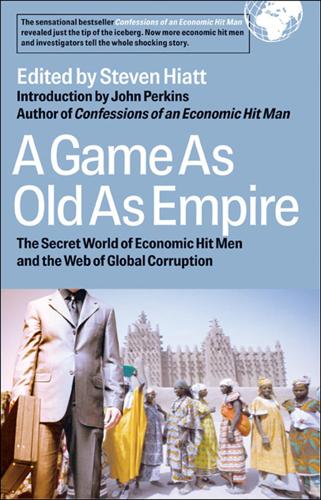
A Game as Old as Empire: The Secret World of Economic Hit Men and the Web of Global Corruption
by
Steven Hiatt; John Perkins
Published 1 Jan 2006
More muscular action was not possible, however: the Korean War absorbed the attention of the U.S. and Britain, and Soviet intervention in support of Iran was a threat. A more subtle approach was needed, and the CIA devised Operation Ajax, directed by Kermit Roosevelt. The first step was to create political turmoil to undermine Mossadegh’s political support: a CIA disinformation campaign worked overtime spreading rumors designed to split secular democrats from Islamic nationalists. Finally, the military made its move in August 1953, and Mossadegh was arrested, a new prime minister was appointed, the Shah was restored to power, and the oil industry was denationalized.
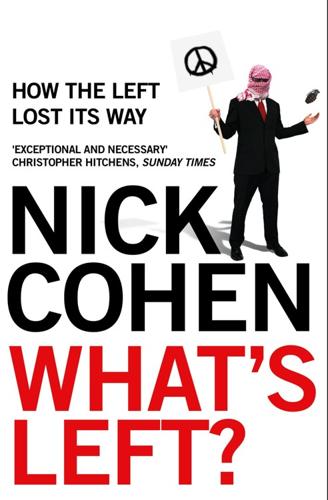
What's Left?: How Liberals Lost Their Way
by
Nick Cohen
Published 15 Jul 2015
Political cults create their own reality as effectively as the Scientologists or the Exclusive Brethren. Their leaders cannot allow members to take at face value evidence that contradicts their teachings. It has to be the result of a capitalist plot or a Jewish conspiracy or the machinations of Freemasons or a disinformation campaign by the security services. To maintain control the cult must blacken the world beyond its walls. Families are the most credible source of dissonant information. Parents, husbands, wives, lovers and children are the people whose cries of ‘Get a grip!’ or ‘Don’t be daft’ are most likely to hit home.

The Hundred Years' War on Palestine: A History of Settler Colonialism and Resistance, 1917–2017
by
Rashid Khalidi
Published 28 Jan 2020
All US diplomacy during the war flowed from that shared conviction. The PLO thus faced not only fierce military pressure from Israel, but also unremitting diplomatic coercion from Israel’s US ally. That coercion was intense and constant, and it was accompanied by Israeli and American campaigns of disinformation and deception about the course of the negotiations, designed to sap Palestinian and Lebanese morale and precipitate a quick surrender. Meanwhile, the United States also provided indispensable material support to its ally, to the tune of $1.4 billion in military aid annually in both 1981 and 1982.

On the Grand Trunk Road: A Journey Into South Asia
by
Steve Coll
Published 29 Mar 2009
I had had some problems with a particular diplomat, exceptionally knowledgeable, who had lied to me on a story in the past. After that incident, we made up and agreed there would be no more lies. Particularly, we agreed that if there was something that he didn’t want to talk about, he would just decline to discuss it, rather than spin some disinformation tale. This time I invoked that agreement in advance. I said I had something highly sensitive related to the Zia crash. I didn’t want to be lied to about it, so if the diplomat found he couldn’t discuss it for whatever reason, I wanted him to just say so, and not make something up. I was told by the chief embassy public relations officer that this proposal had been transmitted and agreed upon.
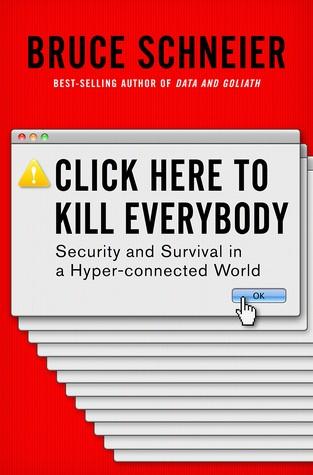
Click Here to Kill Everybody: Security and Survival in a Hyper-Connected World
by
Bruce Schneier
Published 3 Sep 2018
The 2016 Worldwide Threat Assessment describes the threat this way: Future cyber operations will almost certainly include an increased emphasis on changing or manipulating data to compromise its integrity (i.e., accuracy and reliability) to affect decisionmaking, reduce trust in systems, or cause adverse physical effects. . . . Russian cyber actors, who post disinformation on commercial websites, might seek to alter online media as a means to influence public discourse and create confusion. Chinese military doctrine outlines the use of cyber deception operations to conceal intentions, modify stored data, transmit false data, manipulate the flow of information, or influence public sentiments—all to induce errors and miscalculation in decisionmaking.

Posh Boys: How English Public Schools Ruin Britain
by
Robert Verkaik
Published 14 Apr 2018
Looking back, the Financial Times columnist Simon Kupar wrote: ‘The public schoolboys focused the Brexit campaign on an issue many ordinary Britons do care about: immigration. To people like Johnson, the campaign was an Oxford Union debate writ large. Once again, their chief weapons were rhetoric and humour.’11 But there was also a sinister and dangerous side to the war of disinformation. The Vote Leave poster that stated that after Brexit the NHS should receive ‘the £350 million the EU takes every week’ was so toxic that it was disowned by Farage. His own anti-migrant poster, featuring a queue of migrants at the Croatia–Slovenia border accompanied by the words ‘BREAKING POINT’, was reminiscent of stills from a Nazi propaganda video, and was reported to the police with a complaint that it incited racial hatred and breached UK race laws.

Live and Let Spy: BRIXMIS - the Last Cold War Mission
by
Steve Gibson
Published 2 Mar 2012
We usually conferred on the respective mood of the troops we had encountered, difficulties with roads, any encounters with narks or other agencies and whether or not we felt we had razzed up an area too much to make it more difficult for the next tour visiting. The Mission House was fully bugged. We simply assumed everything could be overheard and responded accordingly. Quite often we used it to our own ends, not for disinformation purposes but for getting much needed repairs and supplies on time by simply broadcasting discontent to the chandeliers and other light fittings. The Mission House was also a place to calm down before returning to West Berlin. Crews would have a quick wash and brush up, vehicles would be lightly cleaned to remove excessive mud and debris, not because we wanted to be presentable but to avoid unnecessary attention on the bridge.
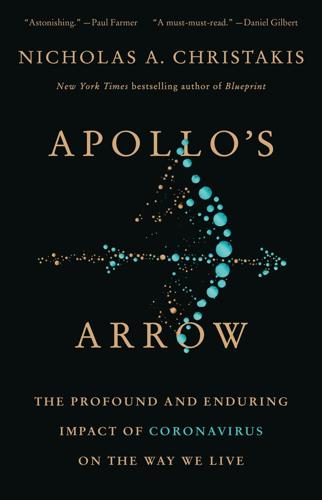
Apollo's Arrow: The Profound and Enduring Impact of Coronavirus on the Way We Live
by
Nicholas A. Christakis
Published 27 Oct 2020
As psychologist Matthew Lieberman put it, “Our brains are built to ensure that we will come to hold the beliefs and values of those around us.”36 * * * Truth is another casualty of plague. Some of the most damaging and self-injurious responses to an epidemic are denial and lies. Deadly epidemics always drag along these sidekicks. Unfortunately, modern media technologies provide a bonanza of disinformation, the sort of thing that charlatans of earlier epochs could only dream of. In the case of coronavirus, the pandemic began with one particularly big lie that originated in China right at the start and lasted through the middle of January: the suppression of information about what was happening in Wuhan.

Stolen Focus: Why You Can't Pay Attention--And How to Think Deeply Again
by
Johann Hari
Published 25 Jan 2022
He ran for president openly attacking people like the residents of Alemão, saying the country’s poorer, blacker citizens “are not even good for breeding,” and should “go back to the zoo.” He promised to give the police even more power to launch intensified military attacks on the favelas—a license for wholesale slaughter. Here was a society with huge problems that urgently needed to be solved—but social-media algorithms were promoting far-right-wingers and wild disinformation. In the run-up to the election, in favelas like Alemão, many people were deeply worried about a story that had been circulating online. Supporters of Bolsonaro had created a video warning that his main rival, Fernando Haddad, wanted to turn all the children of Brazil into homosexuals, and that he had developed a cunning technique to do it.

Gambling Man
by
Lionel Barber
Published 3 Oct 2024
The broader case for Masa rests not only on his reputation as a giant risk taker (‘Good for the system,’ says one veteran investor, ‘just as long there are not too many Masas’); but also on his role as a techno-optimist. Today, it has become fashionable to view technology as a job-killer or a corrupting force, creating a world where disinformation is spread at scale and speed. The debate about generative AI threatens to move in an even darker direction. Tesla’s Elon Musk has warned of a ‘Terminator future’, where AI would remove the need for people to work. In the future, jobs would be all about ‘personal satisfaction’. Masa continues to believe that civilization was – and is – built on technology.

Dirty Wars: The World Is a Battlefield
by
Jeremy Scahill
Published 22 Apr 2013
“Under a secret program code-named SCREEN HUNTER, JSOC, augmented by the Defense Intelligence Agency (DIA) and contract personnel, was authorized to shadow and identify members of the ISI suspected of being sympathetic to al-Qaeda,” Ambinder and Grady wrote. “It is not clear whether JSOC units used lethal force against these ISI officers: one official said that the goal of the program was to track terrorists through the ISI by using disinformation and psychological warfare.” Despite this incredible opportunity, neither Afghanistan nor Pakistan would be given top billing in the Bush administration’s war plan. Instead, the top-tier operators from JSOC and the CIA were again redirected to Iraq to confront the rapidly spreading insurgency, which had made a farce of the administration’s claims that US forces would be welcomed as liberators.
…
Nance believed that, given the clan-based power structure that ruled Somalia—and its repeated marginalization of foreign agents and widespread rejection of foreign occupation—the United States could have waged a propaganda war against the relatively small number of al Qaeda operatives around the Courts to “break their mindset, break their reason for being.” “Wouldn’t it be a lot more fun to brand al Qaeda as a non-Islamic cult? And to the point where people won’t sell them bread, to where when they go out in a battlefield, people will fight against them.” US intelligence, he asserted, should have run disinformation ops to portray them as “Satanists or people who are anti-Islam.” He added: “We should have gone after them that way, and that would have helped every dimension of breaking the organization.” The potential for any success from Nance’s proposed strategy is debatable, given the clan system in Somalia and the fierce opposition to outside influence.

Power Hungry: The Myths of "Green" Energy and the Real Fuels of the Future
by
Robert Bryce
Published 26 Apr 2011
On September 7, 2002, Bush himself falsely claimed that the IAEA, the lead global agency in dealing with proliferation issues, had issued a report saying that Iraq was just six months away from developing a nuclear weapon.10 A few months later, on January 27, 2003, the director general of the IAEA, Mohamed ElBaradei, told the United Nations Security Council that there was no evidence of a nuclear weapons program in Iraq and that the aluminum tubes that were a focal point of the U.S. disinformation program “would not be suitable for manufacturing centrifuges” needed to enrich uranium.11 ElBaradei, of course, was right. After the invasion, the U.S. military never found any nuclear weapons or weapons of mass destruction in Iraq. But that didn’t stop the Bush administration from belittling the agency and ElBaradei.

The Net Delusion: The Dark Side of Internet Freedom
by
Evgeny Morozov
Published 16 Nov 2010
“Unlikely Forum for Iran’s Youth.” Los Angeles Times, January 2, 2008. “Sex, Social Mores, and Keyword Filtering: Microsoft Bing in the ‘Arabian Countries.’” OpenNet Initiative, March 4, 2010. opennet.net/sex-social-mores-and-keyword-filtering-microsoft-bing-arabian-countries. Snyder, Alvin A. Warriors of Disinformation: American Propaganda, Soviet Lies, and the Winning of the Cold War. New York: Arcade, 1997. Sola Pool, Ithiel De. “Communication in Totalitarian Societies.” In Handbook of Communication, edited by Ithiel De Sola Pool, W. Schramm, N. Maccoby, and E. Parker, 463-474. Chicago: Rand McNally, 1973.
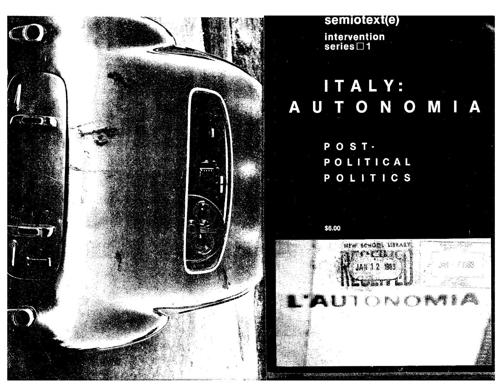
Autonomia: Post-Political Politics 2007
by
Sylvere Lotringer, Christian Marazzi
Published 2 Aug 2005
For further explanations, we advise journalists and all interested parties to address themselves to the Chief of Security Services' Emilio Santillo, who has a reputation as an expert in the field and as an infallible marksman: beyond clarification of a general nature, he can explain the operation of the Colt python 357 caliber Magnum, Which he always carries on him_ There was a great need for this, considering the confusion reining among the zealous directors of the disinformation newspapers. Lately, on several occasions, we have heard talk of a phantom "38 special". Well, this weapon no longer exists. It Is the product of the p'erverse l.magination of jQurnalists who confuse the trademark of a particular weapon (the Walther 38, the number 38 referring to the year of manufacture) with the 38 special, which is not a particular weapon or model, but a caliber, and, moreover, not a caliber used in semiautomatic pistols (like the Walther), but In revolvers.

Dancing in the Glory of Monsters: The Collapse of the Congo and the Great War of Africa
by
Jason Stearns
Published 29 Mar 2011
At one point, the UN refugee agency suggested the number could be as high as 600,000, the UN Department of Humanitarian Affairs said 439,500, while the U.S. general Edwin Smith put the figure at 202,000 and the Canadian general Maurice Baril at 165,000. Filip Reyntjens, The Great African War: Congo and Regional Geopolitics, 1996–2006 (Cambridge: Cambridge University Press, 2009), 85–86. 3 Quoted by Johan Pottier, Re-imagining Rwanda: Conflict, Survival and Disinformation in the Late Twentieth Century (Cambridge: Cambridge University Press, 2002), 175. 4 Ibid., 175. 5 Beatrice Umutesi, Fuir ou mourir au Zaire (Paris: L’Harmattan, 2000), 131. 6 Ibid., 147. 7 Forced Flight: A Brutal Strategy of Elimination in Eastern Zaire, Médecins Sans Frontières (Doctors Without Borders), May 1997, www.msf.org/msfinternational/invoke.cfm?

Hacking Politics: How Geeks, Progressives, the Tea Party, Gamers, Anarchists and Suits Teamed Up to Defeat SOPA and Save the Internet
by
David Moon
,
Patrick Ruffini
,
David Segal
,
Aaron Swartz
,
Lawrence Lessig
,
Cory Doctorow
,
Zoe Lofgren
,
Jamie Laurie
,
Ron Paul
,
Mike Masnick
,
Kim Dotcom
,
Tiffiniy Cheng
,
Alexis Ohanian
,
Nicole Powers
and
Josh Levy
Published 30 Apr 2013
Both of them, being Southern California Democrats, took massive amounts of money from Hollywood. Sherman took a populist line throughout the campaign, and at the debate he called SOPA “not well-designed.” Berman, still in thrall to Hollywood cash, described SOPA as a “property rights” issue, and chalked up the recent takedown of the legislation to a “disinformation campaign.” You couldn’t drive around the Valley without seeing Berman campaign material after that. Berman held fundraising events at the homes of just about every big donor in Hollywood. He was even a special guest when President Obama held a fundraiser at George Clooney’s house. They just finished the campaign.
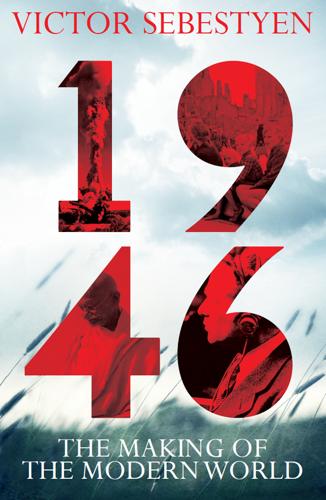
1946: The Making of the Modern World
by
Victor Sebestyen
Published 30 Sep 2014
Neither Roosevelt nor Churchill had ever understood the intricacies of the Manhattan Project, only the military power it would give them. Until Hiroshima, Beria had been deeply sceptical that the bomb would work. All the intelligence reports from the atomic spies passed across his desk and as one of his aides at the NKVD, Anatoly Yatskov, said, ‘Beria suspected disinformation from these reports, thinking [the Americans and British] were trying to draw us into huge expenditure of resources and effort on work which had no future. Beria remained suspicious about the intelligence even when work on the atomic bomb was in full swing in the Soviet Union. Once when an agent was reporting . . .

Vultures' Picnic: In Pursuit of Petroleum Pigs, Power Pirates, and High-Finance Carnivores
by
Greg Palast
Published 14 Nov 2011
The Nobelist then noted, without having to name the name, that a “certain columnist, I’ve heard, had fresh boxers FedEx’d to himself every day.” 27 Take a look for yourself. This document and others at GregPalast.com/ VulturesPicnic. Warning: An IMF spokesman says, “Palast is the master of disinformation.” I didn’t write the documents. 28 That story and others, just too weird for print, are included in the interactive editions “extras” and at GregPalast.com/VulturesPicnic.com. 29 To cover their tracks on the election steal, Rove and Griffin fired United States Attorney (Captain) David Iglesias, who then gave me some of the skinny on the scheme.
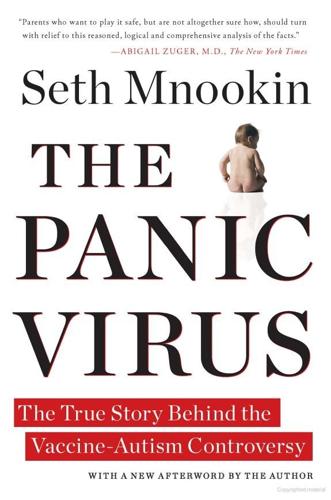
The Panic Virus: The True Story Behind the Vaccine-Autism Controversy
by
Seth Mnookin
Published 3 Jan 2012
I care about kids.” In her e-mail to me, Fisher wrote, “As you know, character assassination in order to demonize and marginalize individuals or groups belonging to a minority in society is a classic form of propaganda. Historically, it has been used as a component in overt and covert political disinformation campaigns designed to neutralize individuals and groups dissenting from the majority opinion.” Then, citing the fact that Wired shares a corporate parent with Vanity Fair, where I am a contributing editor, she wrote, “I hope you understand why I cannot subject myself to another opportunity to have my position mischaracterized and my reputation further damaged by foolishly trusting again and cooperating with a journalist I don’t know, who works for Condé Nast.”

Jennifer Morgue
by
Stross, Charles
Published 12 Jan 2006
It'd be tedious at the best of times, but right now it's positively nightmarish; the plan has already run off the rails, and the worst thing of all is, I can't even yell at him. I'm committing this goddamn contract that we're never going to use to memory, seemingly at Angleton's posthypnotic command, but the shit has hit the fan and Ramona's a prisoner. I'd gnash my teeth if I was allowed to. I've got a feeling that Angleton's sneak strategy — use me to leak disinformation to the Black Chamber via Ramona, of course — is already blown, because I don't think Billington is serious about running an auction. If he was, would he be dicking around risking a murder investigation in order to push a line of cosmetics? And would he be kidnapping negotiators? This is all so out of whack that I can't figure it out.

The Age of Cryptocurrency: How Bitcoin and Digital Money Are Challenging the Global Economic Order
by
Paul Vigna
and
Michael J. Casey
Published 27 Jan 2015
Davis’s work was inconclusive, but Clear’s comment, which he later said was intended as a harmless joke, meant the Irishman was inundated with e-mails. He has since vehemently denied creating bitcoin and has pleaded with people to leave him alone. Convinced that Davis was caught out by a probable disinformation campaign by the founder—as if Nakamoto’s Britishisms and Times of London reference were planted to throw trackers off the scent—New York University journalism professor Adam Penenberg turned his attention elsewhere. In an article for Fast Company he pointed to three names who’d jointly filed cryptocurrency-relevant encryption patents around the time of bitcoin’s release: Neal King and Charles Bry, who both resided in Germany, and Vladimir Oksman, living in the United States.

Iron Sunrise
by
Stross, Charles
Published 28 Oct 2004
It all happened too smoothly to notice by accident. Something in one of her pockets twitched, then began to recite brightly: “We provide a wide range of business services, including metamagical consultancy, stock trading and derivatives analysis systems, and a full range of communications and disinformation tools for the discerning corporate space warrior. If you would like to take advantage of our horizontally scalable—” Wednesday reached into her pocket and picked up her travel voucher by the loose skin at the scruff of its neck. “Just shut up.” It fell silent and drew its tail up, clutching it with all six paws.
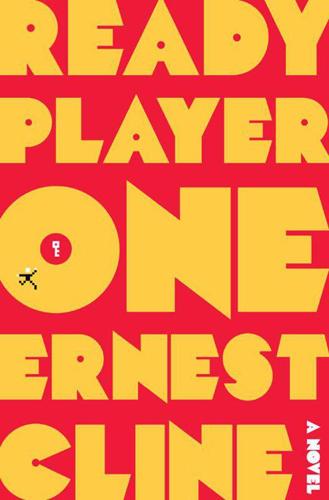
Ready Player One
by
Ernest Cline
Published 15 Feb 2011
We told each other what movies we were currently watching and what books we were reading. We even began to exchange theories and to discuss our interpretations of specific passages in the Almanac. I couldn’t make myself be cautious around her. A little voice in my head kept trying to tell me that every word she said could be disinformation and that she might just be playing me for a fool. But I didn’t believe it. I trusted her, even though I had every reason not to. I graduated from high school in early June. I didn’t attend the graduation ceremony. I’d stopped attending classes altogether when I fled the stacks. As far as I knew, the Sixers thought I was dead, and I didn’t want to tip them off by showing up for my last few weeks of school.

The Way of the Gun: A Bloody Journey Into the World of Firearms
by
Iain Overton
Published 15 Apr 2015
Then, he said that US laws were being used to the advantage of political elites. On the issue of left-leaning hacks he grew invigorated. You knew the media was lying, he shouted, because they still call themselves journalists. It was an intriguing finger to point. After all, the NRA are masters of the art of inflammatory disinformation. They talk about the ‘spillover’ of border violence and homicidal immigrants – without acknowledging the harm that US guns cause south of the border. They see the perceived threat of terrorism as underpinning the need for American citizens to bear arms,57 even though in 2013 only sixteen US citizens were killed worldwide from terrorism.58 The same year there were 32,351 firearm deaths in the US.59 Having said this: what do you expect?

Crypto: How the Code Rebels Beat the Government Saving Privacy in the Digital Age
by
Steven Levy
Published 15 Jan 2002
Bidzos felt in his bones that the silence resulted not from a failure of his sales prowess, but from clandestine pressure from Maryland. He even came to wonder about the nature of a relationship he had with a woman who for some reason spontaneously began giving him inside dope on the NSA. It had seemed plausible at the time, but later he wondered whether she was being paid to feed him disinformation. “I believe in the intelligence community they call it a ‘honey trap,’ ” he later said. It was ironic that from time to time people would still wonder whether Bidzos was some sort of double agent, putting on a charade of fighting the NSA while secretly implanting back doors in his company’s technology.

The Ones We've Been Waiting For: How a New Generation of Leaders Will Transform America
by
Charlotte Alter
Published 18 Feb 2020
She voted against deep budget cuts to the EPA, opposed Trump’s rollback of the Clean Power Plan, and voted to block him from withdrawing from the Paris Climate Agreement. She and Carlos were among the first Republicans to call for the resignation of EPA director Scott Pruitt after multiple corruption scandals, and cosponsored the Honest Ads Act, which would combat foreign disinformation like the kind that helped get Trump elected. After the Trump administration ordered children to be separated from their parents at the border in 2018, Elise cosponsored the Family Reunification Act. When Trump forced a government shutdown to demand money for a border wall, Elise voted with Democrats to reopen the government.
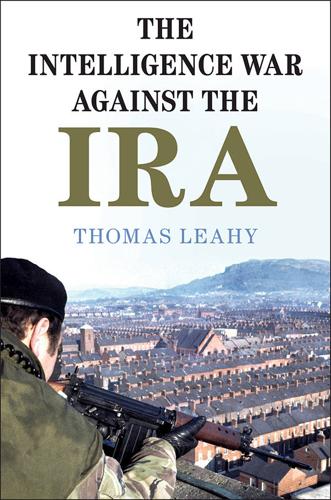
The Intelligence War Against the IRA
by
Thomas Leahy
Published 26 Mar 2020
After poison was allegedly discovered in the loyalist wing, Hughes recalls ‘mad hysteria’. The IRA monitored all food and water. The plot thickened. Heatherington withdrew the original names he had provided and created a new list. Hughes was in disbelief: ‘he was playing with me. It was basic counter-intelligence disinformation that they were spreading’. Hughes added: ‘we were in total disarray … You didn’t know who was a tout, or who was going to poison you’. McGrogan and Heatherington were acquitted and left prison. The IRA abducted Heatherington and killed him in Belfast on 6 July 1976. The IRA killed Myles McGrogan later in the Lisburn area in April 1977.

Whole Earth: The Many Lives of Stewart Brand
by
John Markoff
Published 22 Mar 2022
Brand had an early inkling of some of the forces that would radically reshape the world three decades later when the cyberworld the WELL presaged became the world’s predominant communications channel. What would drive Brand away from the WELL foreshadowed on a microscale the online culture of trolls, filter bubbles, disinformation, surveillance, and censorship that has come to deeply trouble the entire world in the past decade. Brand’s disaffection was complicated by the fact that the WELL’s growth had been strong up until 1991 and then slowed visibly, and it was not clear whether the slowdown was due to the national recession or some other reason.

The Dying Citizen: How Progressive Elites, Tribalism, and Globalization Are Destroying the Idea of America
by
Victor Davis Hanson
Published 15 Nov 2021
Yet, during critical early days of the COVID-19 pandemic, the American masses were not the first to swear that the virus was not transmissible among humans, that masks and quarantines were of little utility, and that xenophobia, not health concerns, drove travel bans. Instead the experts of the World Health Organization promulgated such disinformation—often on the prompt and under the influence of the nontransparent communist Chinese government. Another shared trait of contemporary globalism is a thinly veiled desire to use an autocracy’s coercive means to enact progressive ends as defined by global standards. In the case of China, globalists praise Beijing’s supposed concern with global warming and its strong-arm ability to implement mass transit and vertical urban living.
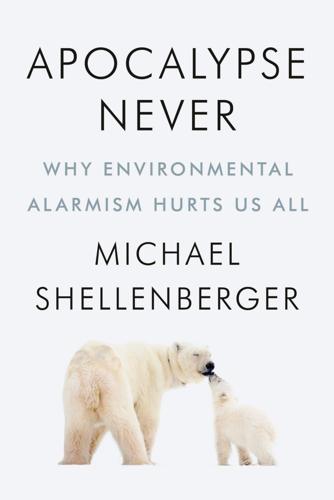
Apocalypse Never: Why Environmental Alarmism Hurts Us All
by
Michael Shellenberger
Published 28 Jun 2020
Joe Romm, “Obama Science Advisor John Holdren Schools Political Scientist Roger Pielke on Climate and Drought,” ThinkProgress, March 3, 2019, https://thinkprogress.org. Lindsay Abrams, “FiveThirtyEight’s Science Writer Accused of Misrepresenting the Data on Climate Change,” The New Republic, March 19, 2014, https://www.salon.com. 32. Joe Romm, “Why Do Disinformers like Pielke Shout Down Any Talk of a Link Between Climate Change and Extreme Weather?,” ThinkProgress, June 23, 2009, https://thinkprogress.org/. Joe Romm, “Foreign Policy’s ‘Guide to Climate Skeptics’ includes Roger Pielke,” ThinkProgress, February 28, 2010, https://thinkprogress.org. 33. Christina Larson and Joshua Keating, “The FP Guide to Climate Skeptics,” Foreign Policy, February 26, 2010, https://foreignpolicy.com. 34.
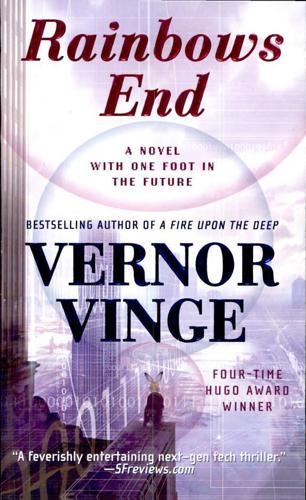
Rainbows End
by
Vernor Vinge
Published 1 May 2006
“The world has changed, Robert. Nowadays, I can get answers in ways that would have been impossible twenty years ago. A hundred thousand people all over the world collaborated in my search, in little bitty parts of it that no one ever recognized. The biggest risk is that my results are simply bogus. Disinformation is king nowadays. Even when the lies are not deliberate, there are the various fantasy groups out there trying to torque reality around to their latest adventure game. But if we’re getting fooled, it’s not an ordinary con job. There are details and corroboration that come from too many independent sources.”

Surveillance Valley: The Rise of the Military-Digital Complex
by
Yasha Levine
Published 6 Feb 2018
“They drew on a wide range of resources: labor unions, advertising agencies, college professors, journalists, and student leaders.”36 In Munich, the CIA set up Radio Free Europe and Radio Liberation From Bolshevism (later renamed Radio Liberty), which beamed propaganda in several languages via powerful antennas in Spain into the Soviet Union and Soviet satellite states of Eastern Europe. These stations had a combined annual CIA budget of $35 million—an enormous sum in the 1950s—but the agency’s involvement was hidden by running everything through private front groups.37 They broadcast a range of materials, from straight news and cultural programming to purposeful disinformation and smears aimed at spreading panic and delegitimizing the Soviet government. In some cases, the stations, especially those targeting Ukraine, Germany, and the Baltic States, were staffed by known Nazi collaborators and broadcast anti-Semitic propaganda.38 Although slanted and politicized, these stations provided the only source of unsanctioned outside information to the people of the Soviet bloc.
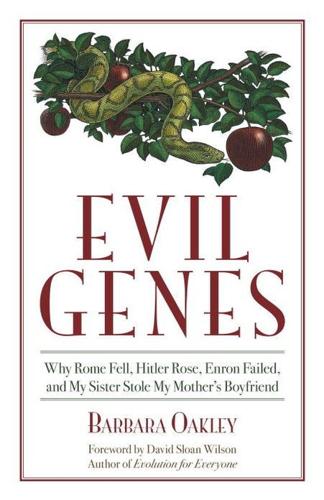
Evil Genes: Why Rome Fell, Hitler Rose, Enron Failed, and My Sister Stole My Mother's Boyfriend
by
Barbara Oakley Phd
Published 20 Oct 2008
(Perhaps surprisingly, the Drudge Report is the must-see Web site for top-ranked journalists, while the National Enquirer carries an excellent reputation among those same journalists for investigative reporting.)33 At high social levels, the game of “find the Machiavellian” can become a house of mirrors, because disinformation is always rampant. Each political party, which naturally includes its own Machiavellians, has a vested interest in characterizing the other candidates and parties as Machiavellian. At the same time, each party's followers can't help but reassure themselves that their candidate and party couldn't possibly be Machiavellian, aside, perhaps, from a cursory jot and tiddle.

Rule Britannia: Brexit and the End of Empire
by
Danny Dorling
and
Sally Tomlinson
Published 15 Jan 2019
In October 2017, Joris Luyendijk made a heartfelt plea to the English in the pages of Prospect magazine. Joris is a journalist who was born and brought up in the Netherlands, but who has lived in the UK since 2011. He specialised in reporting on British banking. He asked the following questions: Why would you allow a handful of billionaires to poison your national conversation with disinformation – either directly through the tabloids they own, or indirectly, by using those newspapers to intimidate the public broadcaster? Why would you allow them to use their papers to build up and co-opt politicians peddling those lies? Why would you let them get away with this stuff about ‘foreign judges’ and the need to ‘take back control’ when Britain’s own public opinion is routinely manipulated by five or six unaccountable rich white men, themselves either foreigners or foreign-domiciled?

The Lonely Century: How Isolation Imperils Our Future
by
Noreena Hertz
Published 13 May 2020
Hand, The Wellbeing of Nations: Meaning, Motive, and Measurement (New York: Wiley, 2014). 20 Noreena Hertz, The Silent Takeover (Random House, 2002), 17–20. 21 See here too Diane Coyle’s work in this area, e.g., GDP: A Brief But Affectionate History (Princeton University Press, 2014). 22 ‘Business Roundtable Members’, Business Roundtable, https://www.businessroundtable.org/about-us/members. 23 Milton Friedman, ‘The Social Responsibility of Business is to Increase Its Profits,’ New York Times magazine, 13 September 1970. 24 ‘Business Roundtable Redefines the Purpose of a Corporation to Promote “An Economy That Serves All Americans”’, Business Roundtable, 19 August 2019, https://www.businessroundtable.org/business-roundtable-redefines-the-purpose-of-a-corporation-to-promote-an-economy-that-serves-all-americans. 25 Julia Carrie Wong, ‘Amazon execs labeled fired worker “not smart or articulate” in leaked PR notes’, Guardian, 3 April 2020, https://www.theguardian.com/technology/2020/apr/02/amazon-chris-smalls-smart-articulate-leaked-memo. 26 Chris Smalls, ‘Dear Jeff Bezos, instead of firing me, protect your workers from coronavirus’, Guardian, 2 April 2020, https://www.theguardian.com/commentisfree/2020/apr/02/dear-jeff-bezos-amazon-instead-of-firing-me-protect-your-workers-from-coronavirus. 27 Julia Carrie Wong, ‘Amazon execs labeled fired worker “not smart or articulate” in leaked PR notes’. 28 ‘AG James’ Statement on Firing of Amazon Worker Who Organized Walkout’, Office of the New York State Attorney General, https://ag.ny.gov/press-release/2020/ag-james-statement-firing-amazon-worker-who-organized-walkout. 29 Brad Smith, ‘As we work to protect public health, we also need to protect the income of hourly workers who support our campus’, Microsoft, 5 March 2020, https://blogs.microsoft.com/on-the-issues/2020/03/05/covid-19-microsoft-hourly-workers/. 30 See for example Republican Senator Josh Hawley’s bill in July 2019 to curb smartphone addiction by banning the ‘infinite scroll’ of social media feeds, and limiting an individual’s social media usage to thirty minutes a day across all devices, Emily Stewart, ‘Josh Hawley’s bill to limit your Twitter time to 30 minutes a day, explained’, Vox, 31 July 2019, https://www.vox.com/recode/2019/7/31/20748732/josh-hawley-smart-act-social-media-addiction); or EU industry chief Thierry Breton’s warnings in February 2020 that should major tech platforms fail to adequately curb hate speech and disinformation, tougher rules and penalties would be forthcoming (‘EU threatens tougher hate-speech rules after Facebook meeting’, DW, 17 February 2020, https://www.dw.com/en/eu-threatens-tougher-hate-speech-rules-after-facebook-meeting/a-52410851). 31 ‘Camden Council tackles the climate crisis’, see video at: https://youtu.be/JzzWc5wMQ6s.

When McKinsey Comes to Town: The Hidden Influence of the World's Most Powerful Consulting Firm
by
Walt Bogdanich
and
Michael Forsythe
Published 3 Oct 2022
But, significantly, nicotine is later added to achieve the desired nicotine content. By the mid-1950s, cigarettes were already under assault after a stream of disturbing reports linking smoking and lung cancer. As researchers, doctors, and public health officials tried to warn Americans that smoking can be lethal, Philip Morris joined an industry-led disinformation campaign aimed at discrediting critics. No evidence can be found in industry records indicating that McKinsey played a role in this deception, but for a company so deeply involved in Philip Morris’s business, it strains credibility to believe the consultants were not aware of it. One fact is undeniable.

Behind the Berlin Wall: East Germany and the Frontiers of Power
by
Patrick Major
Published 5 Nov 2009
All of this was captured by western cameras and the photograph of Fechter’s lifeless body being carried away became an icon of West German anticommunism.²²² Soviet vehicles were subsequently stoned by West Berliners as they passed through the checkpoint, and among eastern onlookers the Stasi reported ‘extremely negative discussions’.²²³ The regime was understandably keen to suppress news of such incidents, and East German trigger-happiness even led to calls for restraint from Soviet superiors.²²⁴ MfS disinformation campaigns denied any killings at the Wall. The wounded were held in isolation wards, and only close relatives of the dead were informed, sometimes with misleading death certificates, but never permitted to view the body, which was often pre-emptively cremated.²²⁵ By far the bloodiest years were the 1960s.

The Rights of the People
by
David K. Shipler
Published 18 Apr 2011
During the postwar anxiety over communist infiltration, however, federal agencies evaded the law covertly, and their targets spread exponentially beyond suspected communists to political, labor, civil rights, and antiwar organizations that dared to push against the status quo. We know the details thanks mainly to Senator Frank Church of Idaho, who chaired a relentless investigation in 1976, collecting testimony and documents that exposed the remarkable breadth of the government’s surveillance, disinformation, and dirty tricks against legitimate and constitutionally protected political activity.43 Not only the FBI—through its infamous Counterintelligence Program called COINTELPRO—but also the CIA, the National Security Agency (NSA), the Internal Revenue Service, and army intelligence were secretly mobilized against dissident groups and individuals.

In the Graveyard of Empires: America's War in Afghanistan
by
Seth G. Jones
Published 12 Apr 2009
Hekmatyar, who spoke excellent English, was renowned for his staunch Islamic views and a disdain for the United States that was surpassed only by his hatred of the Soviets. In 1985, on a visit to the United States, he had refused to meet with President Ronald Reagan—despite repeated requests from Pakistan’s leaders—out of concern that he would be viewed as a U.S. puppet. During the Afghan War, the KGB established a special disinformation team to split apart the seven mujahideen leaders, and Hekmatyar was one of its prime targets. Milton Bearden, who served as the CIA’s station chief in Pakistan from 1986 to 1989 and worked with the mujahideen, described Hekmatyar as “the darkest of the Afghan leaders, the most Stalinist of the Peshawar Seven, insofar as he thought nothing of ordering an execution for a slight breach of party discipline.”

Cities Under Siege: The New Military Urbanism
by
Stephen Graham
Published 30 Oct 2009
In the process, these simulacra ‘participate in the construction of a discourse of security which is self-fulfilling’.121 Multiple layers and circuits of simulation work collectively to evacuate the possibility of authenticating what might actually be ‘real’. ‘Since 9/11’, writes James Der Derian, ‘simulations (war games, training exercises, scenario planning, and modeling) and dissimulations (propaganda, disinformation, infowar, deceit, and lies) [have produced] a hall of mirrors, reducing the “truth” about the “Global War on Terror” to an infinite regression of representations that [defy] authentication.’122 Because the worlds of threat and risk are projected through this simulacral collective, the perpetration of state violence and colonial war emerge from the same collective as necessary, just and honourable.

Diet for a New America
by
John Robbins
Their goal has been to “reposition global warming as theory rather than fact,” according to an internal strategy memo unearthed by journalist Ross Gelbspan.17 Their motives are transparent. ExxonMobil made more money in 2006, 2007, and 2008 than any other company in the history of the world. Chevron was close behind. To some extent, this disinformation campaign has been successful. Many of us believe that considerable controversy about global warming still exists. Are scientists sure it is a reality? And even if the planet is warming, is the trend being caused by human activities or by natural events? But the consensus seems quite clear. In 2010, a study published in the Proceedings of the National Academy of Sciences found that 97 percent of scientific experts agree that it is “very likely that anthropogenic [human-caused] greenhouse gases have been responsible for most of the unequivocal warming of the Earth’s average global temperature in the second half of the twentieth century.”18 What about the 3 percent who remain unconvinced?

Convergence Culture: Where Old and New Media Collide
by
Henry Jenkins
Published 31 Jul 2006
Every week, the eagerly anticipated results are fodder for water cooler discussions and get reported as news, even on rival networks. Survivor is television for the Internet age—designed to be discussed, dissected, debated, predicted, and critiqued. The Survivor winner is one of television's most tightly guarded secrets. Executive producer M a r k Burnett engages i n disinformation campaigns trying to throw smoke i n viewers' eyes. Enormous fines are written into the contracts for the cast and crew members if they get caught leaking the results. A n d so a fascination has g r o w n u p around the order of the "boots" (the sequence i n w h i c h the contestants get rejected from the tribe), the "final f o u r " (the last four contestants i n the competition), and especially around the "sole survivor" (the final w i n ner of the million-dollar cash prize).

The Gamble: General David Petraeus and the American Military Adventure in Iraq, 2006-2008
by
Thomas E. Ricks
Published 14 Oct 2009
Integrity is critical to this fight. Don’t put lipstick on pigs. Acknowledge setbacks and failures, and then state what we’ve learned and how we’ll respond. Hold the press (and ourselves) accountable for accuracy, characterization, and context. Avoid spin and let facts speak for themselves. Challenge enemy disinformation. Turn our enemies’ bankrupt messages, extremist ideologies, oppressive practices, and indiscriminate violence against them. • Fight the information war relentlessly. Realize that we are in a struggle for legitimacy that in the end will be won or lost in the perception of the Iraqi people. Every action taken by the enemy and United States has implications in the public arena.

Lemon Tree: An Arab, a Jew, and the Heart of the Middle East
by
Sandy Tolan
Published 1 Jan 2006
The "push the Jews into the sea" remark is recalled by Dalia and cited to me in many interviews by both Arabs and Israelis. For perceptions of the strength of the Israeli army, see Shlaim, pp. 239-40. Numerous Arab sources express skepticism that the "push them into the sea" comments were ever uttered. Heikel (p. 141) suggests this was "a remarkably successful piece of disinformation." He recalls that following Indian president Nehru's concerns about the quoted threat, "a committee consisting of senior officials from Yugoslavia, India and Egypt was set up to sift through all public remarks by Nasser and Egyptian ministers," and that they found "no trace of the alleged comment."

Accelerando
by
Stross, Charles
Published 22 Jan 2005
"They are become almost as bad as AP and Reuters since they go public," she adds. "All these wire services! And they are, ah, stingy. The CIA does not understand that good news must be paid for at market rates if freelance stringers are to survive. They are to be laughed at. It is so easy to plant disinformation on them, almost as easy as the Office of Special Plans… " She makes a banknote-riffling gesture between fingers and thumb. By way of punctuation, a remarkably maneuverable miniature ornithopter swoops around her head, does a double-back flip, and dives off in the direction of the liquor display.
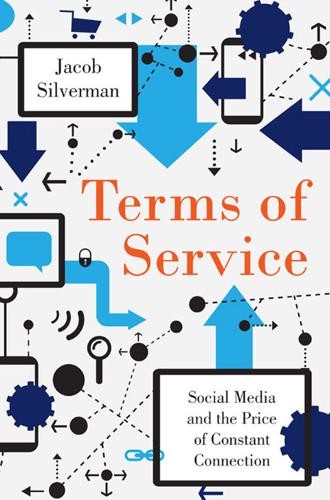
Terms of Service: Social Media and the Price of Constant Connection
by
Jacob Silverman
Published 17 Mar 2015
It’s a sensitivity to class and to the political economy of digital media—its basis in surveillance, its reliance on user-supplied data, its erosion of privacy. With citizenship comes a growing sense that we are largely disenfranchised, that digital serfdom means not just producing data but producing data and content that is true. If we withhold information from the platform owner, or better yet, if we add disinformation to the mix and try to get it to spread through the usual viral channels, then we are acting against the platform owner’s desires. This isn’t violent insurgency, nor is it street protests on behalf of civil rights. The goals here may not be lofty, much less articulated. But these “willful acts of obfuscation,” as Leibovitz calls them, say a lot about the standards that platforms expect from us and how we might subvert them.

Multitude: War and Democracy in the Age of Empire
by
Michael Hardt
and
Antonio Negri
Published 1 Jan 2004
This focus on form helps us clarify the significance (and also the limitations) of the RMA and the counterinsurgency strategies of asymmetrical conflicts. Certainly, especially at a technological level, the RMA dictates that the traditional military apparatuses use networks more and more effectively—information networks, communications networks, and so forth. Distributing and blocking information and disinformation may well be an important field of battle. The mandate for transformation is much more radical than that: the military must not simply use networks; it must itself become a full matrix, distributed network. There have long been efforts by traditional militaries to mimic the practices of guerrilla warfare—with small commando units, for example—but these remain at a limited scale and on a tactical level.

Them And Us: Politics, Greed And Inequality - Why We Need A Fair Society
by
Will Hutton
Published 30 Sep 2010
The Financial Services Authority issues large fines to banks and insurance companies that do not comply with its regulatory guidelines; the Press Standards Commission would have the same statutory powers over the accuracy of newspapers’ content to bring them into the same regulatory ambit as television and radio. The angling, slanting and sensationalising of news would become more obviously the preserve of the comment and opinion pages, and there would be faster redress over malicious disinformation. This would open the way to a significant relaxation of the libel laws. Before a libel case could be heard, plaintiffs would have to show that they had not received satisfactory redress from the Press Standards Commission. Thus the presumption would automatically shift from today’s guilt to innocence, and an initial hearing could be heard at a low-cost tribunal rather than in an expensive court.

The Pandemic Century: One Hundred Years of Panic, Hysteria, and Hubris
by
Mark Honigsbaum
Published 8 Apr 2019
There were other lessons, too. Perhaps the biggest was that for all that the internet and new web-crawling technologies had given the WHO the ability to monitor disease outbreaks occurring far from the eyes of prying international health officials, governments still had considerable powers to cover up outbreaks and spread disinformation within their own borders, especially where it was felt that transparency might be detrimental to their economic and political interests. Indeed, it was not until mid-April, when a Chinese whistleblower revealed the true numbers of SARS infections in Beijing, that the communist authorities owned up to the full extent of the outbreak and mobilized resources on a scale necessary to quell it.
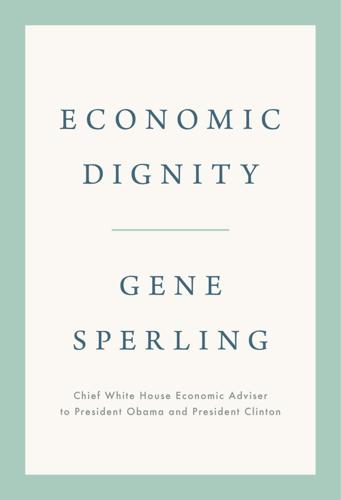
Economic Dignity
by
Gene Sperling
Published 14 Sep 2020
The increasing pressure on middle-class manufacturing and service jobs due both to technological advances and to competition from countries like China and India, the rise of spreading hate through social media, and high levels of refugee flows, all in the context of a major global financial crisis, have no doubt put pressure on elements of even nations with strong economic security policies. Part of the story in Sweden’s radical far-right rise is that as in numerous other Western democratic states, the rise of nativist sentiment has been fueled in part by an online disinformation campaign coming from Russian and American far-right entities.18 Indeed, the deep economic pain caused by a severe global financial crisis—and the resentment of remedies that were seen as protecting either wealthy financial culprits or undeserving fellow citizens—may have lit on fire these brewing economic pressures.
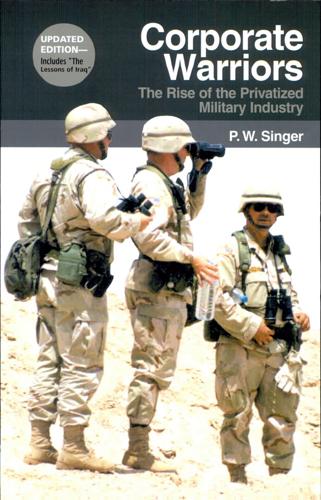
Corporate Warriors: The Rise of the Privatized Military Industry
by
Peter Warren Singer
Published 1 Jan 2003
It was discovered in 1990 to be the front for a covert assassination and espionage unit, used to eliminate enemies of the apartheid regime abroad.3 While in the CCB, Barlow, who is recognizable by his one green and one blue eye, was assigned to Western Europe. There, he was in charge of spreading disinformation against Nelson Mandela's African National Congre^ (ANC), for example, releasing propaganda in England that the ANC was working with IRA terrorists. He was also responsible for setting up front corporations to evade sanctions and sell South African weapons abroad. During this time, Barlow is suspected to have made many of his corporate world contacts that would later prove useful for EO.
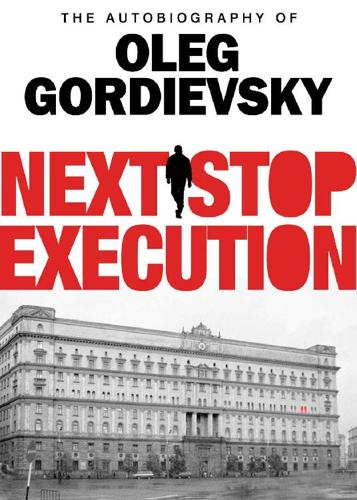
Next Stop Execution: The Autobiography of Oleg Gordievsky
by
Oleg Gordievsky
Published 13 Apr 2015
Later, official corruption became ramp-ant, as the KGB, Ministry of Foreign Affairs, Central Committee, Ministry of Defence and other bodies all put in their lists, and places went to the names on them, regardless of merit; in my time perhaps only 10 or 15 per cent were admitted because they had special connections. One such was the adopted son of General Agayants, a powerful KGB official. The father was a clever, imaginative Armenian, who founded and ran the Department of Disinformation, but his son had no brains or will to work. When I heard the answers he gave in his final exam in international law, in 1962, I could scarcely believe my ears: it was clear that in six years he had learnt nothing. He had evidently thought that because he was the son of somebody important he could cruise through college without making any effort.
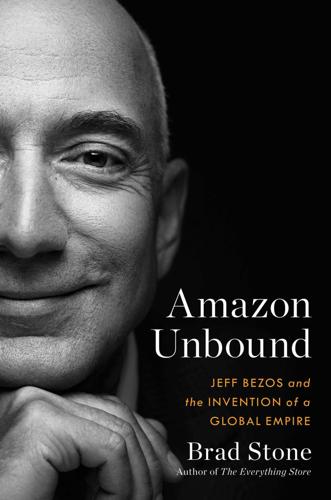
Amazon Unbound: Jeff Bezos and the Invention of a Global Empire
by
Brad Stone
Published 10 May 2021
The Post published its article that night; in it, de Becker once again identified Sanchez as a possible culprit and charged that the leak was “politically motivated.” Michael Sanchez also spoke to the Post reporters, and battling charges of his own culpability, indiscriminately interjected another round of disinformation into the public domain. He suggested incorrectly that de Becker might have leaked news of the affair himself and also convinced the Post (and later, other papers) to report that the Enquirer had started investigating the affair over the summer of 2018—months before his initial outreach (there’s no evidence to suggest that was the case).

It's Easier to Reach Heaven Than the End of the Street: A Jerusalem Memoir
by
Emma Williams
Published 7 Nov 2012
And the Chicago Tribune reported that “Coming less than an hour apart,” the December 25 “attacks broke a lull that had lasted more than two months and raised fears of a slide into violence.” 14 Separation 1 Ben Lynfield, “Israeli Expulsion Idea Gains Steam, The Moledet Party’s media blitz for the mass expulsion of Palestinians is gaining momentum,” Christian Science Monitor 6 February 2001. 2 Editorial, Ha’aretz 6 January 2004. 3 Rafi Mann, “Fallacious exhibits,” Ma’ariv 26 February 2004. 4 During Operation Defensive Shield the IDF had destroyed many of the buildings, and when the Art Newspaper reported on the damage and was accused of disinformation and anti-Semitism, they sent in a specialist reporter, Robert Bevan, to investigate the damage. He concluded that, yes, the initial report had been wrong; the damage was far worse than they had stated. This led to an apology from Dr. Martin Weyl, the former director of the Israel Museum: “I apologise for all the aggravation that I have caused you.
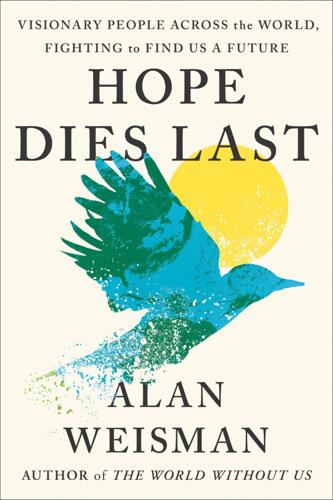
Hope Dies Last: Visionary People Across the World, Fighting to Find Us a Future
by
Alan Weisman
Published 21 Apr 2025
Yet he wouldn’t stop Line 3, nor, to satisfy one West Virginia senator, the Mountain Valley natural gas pipeline, nor construction of liquefied natural gas export terminals—any of which would undermine the country’s 2030 climate goals. The laws of climate physics not being conducive to compromise, Biden’s political bargaining skills turned on him, especially in a 21st-century America fragmented by a politically charged disinformation industry and social media hijacked by conspiracy fomenters. With the president too shielded by enabling advisors, it took people whose ideas weren’t formed in the last millennium to finally get to him. * * * — In 2009, 16-year-old Michael Greenberg read climate scientist James Hansen’s Storms of My Grandchildren: The Truth About the Coming Climate Catastrophe and Our Last Chance to Save Humanity and got scared.

God's Bankers: A History of Money and Power at the Vatican
by
Gerald Posner
Published 3 Feb 2015
At 11 a.m. on Saturday, the thirty-four cardinals who had already arrived in Rome gathered in the enormous, gilded Sala Bologna, built in 1575 as a Papal dining room befitting a grand Pope-Monarch. None of them, other than Villot, knew the real story. Most speculated that Antico and Civiltà Cristiana were being duped by someone who wanted to plant a fake story to tarnish the church. A few, including Vienna’s Franz König, thought the false reports were part of a Soviet disinformation plot.108 Villot first addressed the burial date. The cardinals agreed on a funeral in five days, on the Feast of Italy’s patron saint, Francis. Then Cardinal Confalonieri brought up all the sinister whispers about John Paul’s death. Although he understood it violated church protocol, Confalonieri suggested an autopsy might best settle all suspicions.
…
During that trip, Marcinkus told the new Pope who he believed had planted the rumors about foul play in the death of John Paul I: the KGB, to create mischief in the church.34 For John Paul, a prelate who had fought for decades the communist efforts to destabilize the Polish church, it made sense. Had the KGB also fanned the rumors about the Vatican Bank and Sindona in order to hurt the church further? The two men had little doubt it was possible. John Paul assured Marcinkus that under no circumstances would he allow the KGB or any other disinformation effort to ruin the reputation of the IOR or Marcinkus.35 By the time they returned to Rome, Marcinkus was joking with the Pope, about how the Curia would soon punish him for not being servile enough. Marcinkus’s long-entrenched enemies were disappointed at the obvious friendship. The bishop from Cicero had lived to serve another day.36 His foes did not know that in March, Marcinkus received an inquiry from the FBI about the possible criminal misuse of a Vatican Bank account.
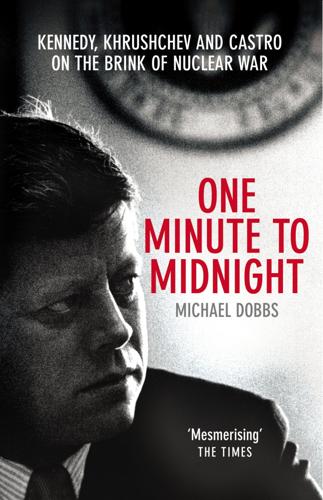
One Minute to Midnight: Kennedy, Khrushchev and Castro on the Brink of Nuclear War
by
Michael Dobbs
Published 3 Sep 2008
Lippincott, 1966), 51. 20 According to Harvey's record: Chronology of the Matahambre Mine Sabotage Operation; Harvey memo on sabotage operation, October 19, 1962, JFKARC. 21 "I don't want that man": Reeves, 182. 22 America had "the Russian bear": Brugioni, Eyeball to Eyeball, 469. 22 As many as 70 million: Reeves, 175. 23 "These brass hats": O'Donnell and Powers, 318. 23 "the military always screws up": Stern, 38; Beschloss, 530. 24 Every aspect of the operation had:Author's interview with Pedro Vera, January 2006; Harvey memo to Lansdale, August 29, 1962, JFKARC; Cuban army interrogation of Vera and Pedro Ortiz, Documentos de los Archivos Cubanos, November 8, 1962, Havana 2002. 24 "the Farm":Also known by the code word "ISOLATION"; Chronology of the Matahambre Mine Sabotage Operation. 24 "You do it":Warren Hinckle and William Turner, Deadly Secrets (New York: Thunder's Mouth Press, 1992), 149. 25 "If the Americans see us": Malakhov reminiscences, Archives of Mezhregional'naya Assotsiatsia Voinov-Internatsionalistov, Moscow (hereafter MAVI). 25 the 79th missile regiment:V. I. Yesin et al., Strategicheskaya Operatsiya Anadyr': Kak Eto Bylo (Moscow:MOOVVIK, 2004), 381. Except where noted, all references to this book are to the 2004 edition. Some of the names of the missile regiments were changed for Operation Anadyr as part of the Soviet disinformation campaign. The 79th missile regiment was also referred to as the 514th missile regiment in Cuba. The CIA incorrectly reported that a missile site near San Cristóbal was the first to achieve combat-ready status. 26 given a special "government assignment": Sidorov's account of the deployment is contained in A.
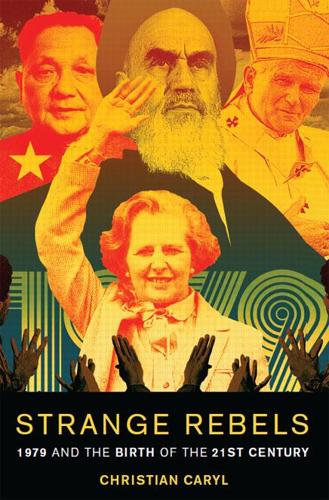
Strange Rebels: 1979 and the Birth of the 21st Century
by
Christian Caryl
Published 30 Oct 2012
Every possible measure to limit the effects of the pope’s visit was considered. Tens of thousands of police would be deployed in the course of the nine days. The SB informants who were involved in trip planning were advised, for example, to express worries about safety wherever possible (in the hope that this calculated disinformation would reduce the number of pilgrims). No effort was spared. In the event, 480 SB agents were deployed during the four days the pope spent in Kraków during the visit. Presumably because a large number of East German Catholics also expressed a desire to see the pope, the East German secret police, the Stasi, deployed hundreds of its own agents to cover the event.
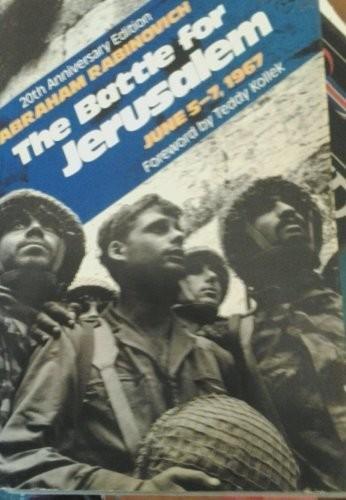
The Battle for Jerusalem, June 5-7, 1967
by
Abraham Rabinovich
Published 1 Jan 1987
After reaching the Scopus enclave, the reservists would be dropped off at an assembly point and the buses driven into a sheltered area, where they would be unloaded by the few members of the permanent garrison in on the secret. If reservists should learn of the presence of any of the secret arms caches, they would attribute it to one of the imaginary “smuggling routes” hinted at by the disinformation specialist of the permanent cadre. 䊏 For the garrison the boredom and isolation of Scopus duty were tempered only by a breathtakingly beautiful view. On one side of the hill was Jerusalem, on the other the Judean Desert. With binoculars, some of the men could see people going in and out of their own homes in Jewish Jerusalem.

Digital Accounting: The Effects of the Internet and Erp on Accounting
by
Ashutosh Deshmukh
Published 13 Dec 2005
• Enterprise portal for investors: This portal provides information to investors and prospective investors. Information includes analyst estimations; financial calendar; stock information; newsletter subscriptions; and names, addresses and photos of the investor relations team. This portal can be useful in disseminating information, reacting to market information and disinformation, and damage control. The term specialist refers to functional specialists, such as people in accounting, marketing and finance. These packages deliver operational and analytical tools and functionalities appropriate for each department. Illustrative business packages for financials include customer credit management, financial queries and strategic enterprise management.
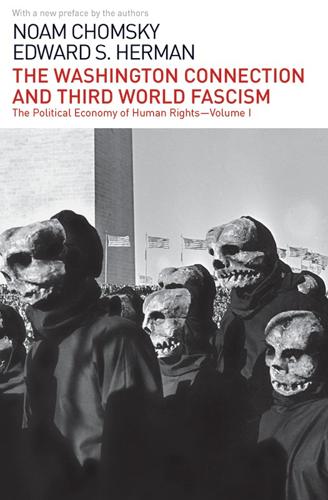
The Washington Connection and Third World Fascism
by
Noam Chomsky
Published 24 Oct 2014
For discussion, see Chomsky, “The Pentagon Papers as Propaganda and as History,” in Pentagon Papers, Gravel ed., v. V, Critical Essays. The same is true with regard to intelligence analyses. It is necessary to study the record to see how dominated the intelligence agencies were by the framework of propaganda that they themselves were helping to construct in their disinformation campaigns. To mention one striking example, the Pentagon Papers analysts were able to discover only one staff paper in a record of more than two decades “which treats communist reactions primarily in terms of the separate national interests of Hanoi, Moscow, and Peiping,” rather than regarding Hanoi simply as an agent of International Communism, directed from abroad.

Uncontrolled Spread: Why COVID-19 Crushed Us and How We Can Defeat the Next Pandemic
by
Scott Gottlieb
Published 20 Sep 2021
Then in May, the same hackers were accused by US authorities of probing a California diagnostic firm that was developing coronavirus testing kits. 18.Julian E. Barnes, “Russia Is Trying to Steal Virus Vaccine Data, Western Nations Say,” New York Times, December 14, 2020. 19.Michael R. Gordon and Dustin Volz, “Russian Disinformation Campaign Aims to Undermine Confidence in Pfizer, Other Covid-19 Vaccines, U.S. Officials Say,” Wall Street Journal, March 7, 2021; and Denis Y. Logunov et al., “Safety and Efficacy of an rAd26 and rAd5 Vector-Based Heterologous Prime-Boost COVID-19 Vaccine: An Interim Analysis of a Randomised Controlled Phase 3 Trial in Russia,” Lancet 397, no. 10275 (2021): 671–81. 20.Bret Schafer et al., “Influence-Enza: How Russia, China, and Iran Have Shaped and Manipulated Coronavirus Vaccine Narratives,” German Marshall Fund, March 6, 2021; and Alexander Smith, “Russia and China Are Beating the U.S. at Vaccine Diplomacy, Experts Say,” NBC News, April 2, 2021. 21.Barnes and Venutolo-Mantovani, “Race for Coronavirus Vaccine Pits Spy Against Spy.” 22.Kenneth W.
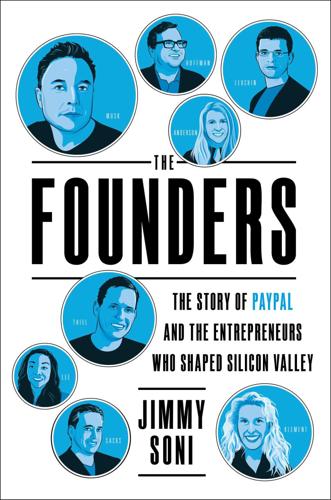
The Founders: The Story of Paypal and the Entrepreneurs Who Shaped Silicon Valley
by
Jimmy Soni
Published 22 Feb 2022
The message also accused Billpoint of misrepresenting PayPal’s new payment structure. “Billpoint uses a misleading chart comparing our straightforward Premier/Business account to their lowest fee account,” the PayPal team explained. PayPay used other volleys, too. David Sacks instructed Damon Billian to take to the message boards and correct “pricing disinformation,” and asked Reid Hoffman to appeal to his eBay contacts to correct their messaging. Sacks floated other ideas as well. Was it time, Sacks wondered, to send a legal “nastygram” to eBay and a preliminary injunction for anticompetitive pricing? Could Vince Sollitto, head of PR, do anything to “win public opinion without appearing weak?”

Editing Humanity: The CRISPR Revolution and the New Era of Genome Editing
by
Kevin Davies
Published 5 Oct 2020
The threats to oranges and bananas illustrate the dilemma that all farmers and agricultural biotech business are now confronting: how to reassure the public that genetically modified, potentially gene-edited, fruits and crops are safe in an age of misinformation, fake news, and a legacy of anti-GMO disinformation. Some manufacturers have brazenly capitalized on this fear and ignorance by slapping “non-GMO” labels on all sorts of foods and fruits—even those that by definition cannot be genetically modified. Take water—an oxygen atom sandwiched between two hydrogen atoms—or salt, the simple union of sodium and chloride ions.
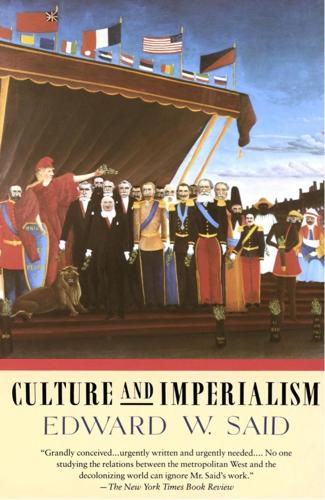
Culture and Imperialism
by
Edward W. Said
Published 29 May 1994
Conversely, during the Cold War, the valiant Afghanistani moujahidin (freedom fighters), Poland’s Solidarity movement, Nicaraguan “contras,” Angolan rebels, Salvadoran regulars—all of whom “we” support—left to our proper devices would be victorious with “our” help, but the meddlesome efforts of liberals at home and disinformation experts abroad reduced our ability to help. Until the Gulf War, when “we” finally rid ourselves of the “Vietnam syndrome.” These subliminally available capsule histories are refracted superbly in the novels of E. L. Doctorow, Don DeLillo, and Robert Stone, and mercilessly analyzed by journalists like Alexander Cockburn, Christopher Hitchens, Seymour Hersh, and in the tireless work of Noam Chomsky.
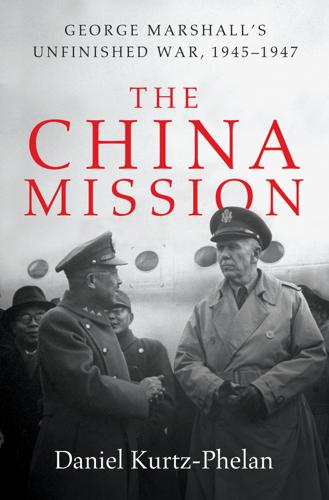
The China Mission: George Marshall's Unfinished War, 1945-1947
by
Daniel Kurtz-Phelan
Published 9 Apr 2018
At one party, “right-wing KMT who had always thought of the Communists as something from a nightmare suddenly met and some found they were related, others had gone to school together.” At another, Communist officers jocularly pinned down a Nationalist official and forced liquor on him. Still, intrigue was never far from the surface. Chongqing remained “a city of rumors,” a playground for merchants of information and disinformation, for agents and double agents. Marshall was warned of a “lack of secrecy in all discussions,” and officials were on the lookout for frauds, worrying that, say, a Communist contact was actually a Nationalist stooge. Servants used false names, some for Americans’ ease (Wong was popular), some for murkier reasons.

The Third Pillar: How Markets and the State Leave the Community Behind
by
Raghuram Rajan
Published 26 Feb 2019
In addition to cross-border trade and capital flows, many countries have had to figure out how to deal with economic migrants as well as refugees from conflict. Our ancestors also experienced trade, capital, and people coming from across the seas, though perhaps to a lesser degree. In addition, though, we have new sources of interconnections. As a result of the ICT revolution, information and disinformation now flows across borders in real time. With the possible exception of China, no country has found a way to filter or censor the information its citizens receive over the internet. Data too traverses borders in massive quantities—Google knows more about the use of Indian roads through its map app than does the Indian government, while fitness apps can reveal the location of secret military bases around the world, since military personnel are the few in remote areas who are fitness buffs.1 Cybercrime, where hundreds of millions of dollars can be stolen in seconds, is a whole new area of opportunity for the malevolently intelligent, as the ICT revolution has brought vast unprepared populations within easy reach of cyber villains.

Deep Utopia: Life and Meaning in a Solved World
by
Nick Bostrom
Published 26 Mar 2024
Technologies that help coordination at one level might hinder coordination at another level. For example, some propaganda techniques and information systems might make coordination within groups easier while making coordination between groups harder. Each sect or country labels the perspectives of its adversaries “disinformation”, and deploys social or legal mechanisms to suppress dissent and to ensure that everyone marches in lockstep against the designated external enemy. Such measures may increase local coordination while making it harder to achieve global peace, harmony, and understanding. Advances in coordination could even be used to stop further advances in coordination, locking in a condition that is essentially uncoordinated, modulo whatever limited forms of coordination are necessary for the anarchy to be perpetually preserved.
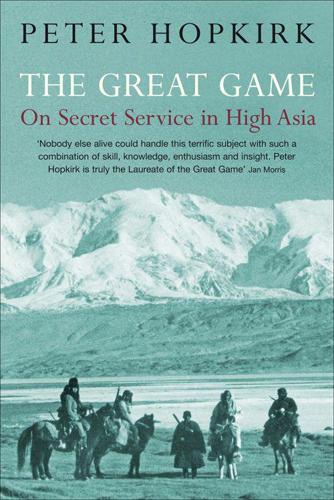
The Great Game: On Secret Service in High Asia
by
Peter Hopkirk
Published 2 Jan 1991
He learned, for instance, that until his arrival virtually nothing had been known in Kashgar of the British in India, let alone of their power and influence in Asia. Hitherto it had been thought that they were merely vassals of the Maharajah of neighbouring Kashmir – very likely a piece of Russian disinformation. He also learned at this time of the arrival in the town of two other travellers. One was his rival George Hayward, who had finally received permission to visit Kashgar, only to find that he had merely exchanged house arrest in Yarkand for house arrest there. Clearly Yakub Beg wanted to keep a closer eye on him.
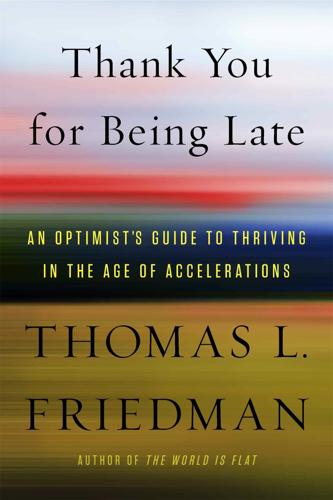
Thank You for Being Late: An Optimist's Guide to Thriving in the Age of Accelerations
by
Thomas L. Friedman
Published 22 Nov 2016
On July 28, 2016, the Washington Post columnist Anne Applebaum, an expert on Eastern Europe, noted that President Vladimir Putin has evolved a “hybrid foreign policy, a strategy that mixes normal diplomacy, military force, economic corruption and a high-tech information war.” Indeed, on any given day, the United States has found itself dealing with everything from cyberattacks by Russian intelligence hackers on the computer systems of the U.S. Democratic Party, to disinformation about what Russian troops, dressed in civilian clothes, are doing in Eastern Ukraine, to Russian attempts to take down the Facebook pages of widows of its soldiers killed in Ukraine when they mourn their husbands’ deaths, to hot money flows into Western politics or media from Russian oligarchs connected to the Kremlin.
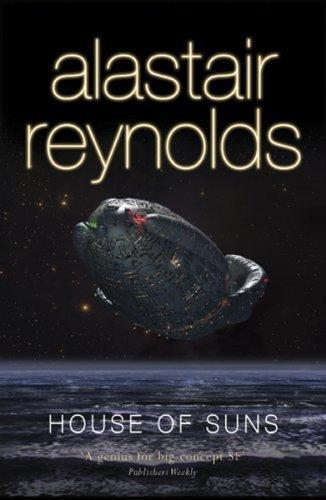
House of Suns
by
Alastair Reynolds
Published 16 Apr 2008
They stood back as the robots died out. They’d have known enough to design a countermeasure, something that could be spread from robot to robot to disable the earlier weapon before it had a chance to go off. But doing that would have risked exposing them as the instigators of the neural bomb. Instead, they put about disinformation suggesting that the robots had been infected with something left behind by Priors.’ ‘How do you know all this, Hesperus?’ ‘Because I remained in contact with the machines, right through to the end. Even when they began to suspect what had been done to them, they maintained communication with me.

Appetite for America: Fred Harvey and the Business of Civilizing the Wild West--One Meal at a Time
by
Stephen Fried
Published 23 Mar 2010
(It’s unclear what kind of container it was in, but it may not have been anything elaborate—he had originally kept it in a wooden cigar box.) After finishing his meal, he transferred the plutonium to his suitcase for the ride back to Chicago on the Santa Fe. Once Oppenheimer even tried to use La Fonda as a gossip laboratory to spread disinformation. After reporters were found snooping around town asking about government weapons research, Oppenheimer chose Charlotte Serber, the very chatty wife of his protégé, theoretical physicist Robert Serber, to go spread some rumors at La Cantina that their research was electromagnetic in nature, not nuclear—so journalists and foreign spies would be thrown off track.

Never Let a Serious Crisis Go to Waste: How Neoliberalism Survived the Financial Meltdown
by
Philip Mirowski
Published 24 Jun 2013
Older notions of the role of the “public intellectual” referred to someone who served to both personify and clarify positions of great import in public debate;143 but one of the signal contemporary postmodern developments has been the genesis and nurture of intellectuals poised and primed to muddy up the public mind and consequently foil and postpone most political action, and hence to preserve the status quo ante. This has been one of the objectives of the financial sector since the crisis, and economists are in the front lines of the disinformation project. John Dewey is most likely spinning in his grave, but the complex of neoliberal think tanks and corporations has sure control over what it is doing, and has sometimes even admitted its motives. The economists play along to maintain their untenable straddle between trusting the market and trusting the economists.

The Secret of Our Success: How Culture Is Driving Human Evolution, Domesticating Our Species, and Making Us Smarter
by
Joseph Henrich
Published 27 Oct 2015
For example, Steve might try to convince you that his rival, John, is a scoundrel so that Steve can gain an advantage on John (suppose John is honorable). However, if you use conformist transmission in acquiring your beliefs about John, you would take input from many people in the community, most of whom would not be John’s rival. This would allow you to discard Steve’s disinformation and converge on a more accurate version of John’s reputation. Thus, our cultural learning mechanisms help prevent lying and deception from destroying the value of reputations.46 Nevertheless, the emergence of language would still have created opportunities for individuals, especially those who are successful and prestigious, to manipulate others into doing or believing things that would benefit the manipulator.

Deep Nutrition: Why Your Genes Need Traditional Food
by
Catherine Shanahan M. D.
Published 2 Jan 2017
Would they have abandoned margarine production and gone back to making real butter, trading in the cash cow of margarine products for actual, milk-producing cows? Or rather, would the corn product freight train roar straight through the scientist’s warnings, and even pick up speed as agribusiness marketing engineers frantically shoveled disinformation into the firebox? We don’t have to guess at the answer, because there was such a scientist, and her findings were brought to Congress—way back in 1988—to warn of the dangers of trans fat, present in hydrogenated oils.257 We can only presume that the politicians who learned of Dr. Mary Enig’s research had little personal experience with cheap butter substitutes or the convenience foods that contain them.
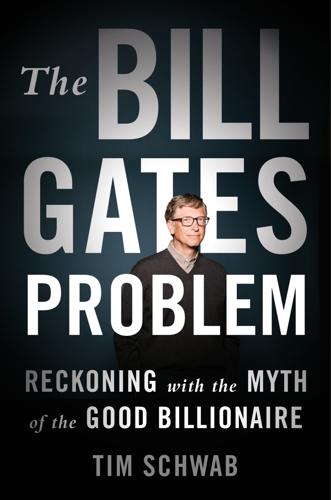
The Bill Gates Problem: Reckoning With the Myth of the Good Billionaire
by
Tim Schwab
Published 13 Nov 2023
The foundation leaned hard into this reporting, using it as an opportunity to espouse its commitment to transparency. Bill Gates took endless questions from journalists about the conspiracy theories—in one instance, condemning them as “evil” and “crazy.” The foundation also poured millions of dollars into charitable grants aimed at combating “misinformation” and “disinformation.” The effect was to cement Gates’s reputation as a champion of truth, reason, and transparency. Some of the foundation’s fiercest defenders were found in the “fact-checking” verticals that populate the news media today. PolitiFact and USA Today (run by the Poynter Institute and Gannett, respectively, both of which have received funds from the Gates Foundation) deployed their fact-checkers to defend Gates from “false conspiracy theories” and “misinformation,” specifically the allegation that the foundation had financial investments in companies developing Covid-19 vaccines and therapies.

The Signal and the Noise: Why So Many Predictions Fail-But Some Don't
by
Nate Silver
Published 31 Aug 2012
“Where you have to draw the line is to be very clear about where the uncertainties are, but to not have our statements be so laden in uncertainty that no one even listens to what we’re saying,” Mann told me. “It would be irresponsible for us as a community to not be speaking out. There are others who are happy to fill the void. And they’re going to fill the void with disinformation.” The Difference Between Science and Politics In practice, Mann’s street fight is between “consensus” Web sites like RealClimate.org and “skeptical” ones like Watts Up With That,107 and revolves around day-to-day scuffles about the latest journal article or weather pattern or political controversy.

Future Crimes: Everything Is Connected, Everyone Is Vulnerable and What We Can Do About It
by
Marc Goodman
Published 24 Feb 2015
As it turns out, the official was never HIV positive; rather, hackers changed the results on his medical tests, in retaliation for the undersecretary’s pursuit of international cyber villains, information that his doctor dutifully reported based on the data on his computer screen. The shame of the test results was too much for the conservative undersecretary, precipitating his suicide. This is the world of information warfare, where computer disinformation disseminated through an array of blinking screens carries real-world impact. The events depicted in the film are decidedly possible today. Police data systems have been successfully hacked globally, including in Australia, England, Italy, Memphis, Montreal, Hong Kong, and Honolulu. In 2013, the Danish police national driver’s license registry was breached, and it was believed the hackers made changes to the underlying law enforcement data systems.
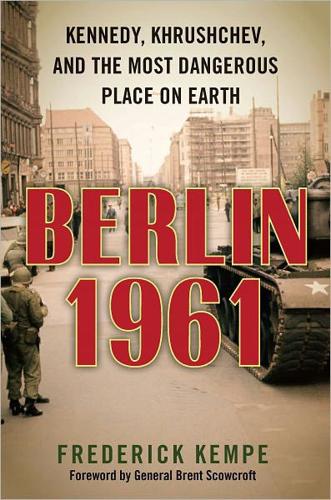
Berlin 1961: Kennedy, Khrushchev, and the Most Dangerous Place on Earth
by
Frederick Kempe
Published 30 Apr 2011
There was only one problem: Bolshakov was a mere message carrier who could not know Khrushchev’s mind as well as Bobby knew that of his brother. The perils to the U.S. of the Bolshakov–Bobby Kennedy contact were deep and multiple. Bolshakov could deceive on Moscow’s behalf without knowing he was doing so, while Bobby was far less likely to engage in disinformation and, even if he had tried, would have been less skilled in doing so. Beyond that, Bolshakov almost undoubtedly was tailed by FBI agents. Reports back from field agents on their meetings could have increased FBI boss J. Edgar Hoover’s suspicions of the Kennedys. Finally, Bolshakov lacked Bobby’s license to horse-trade.
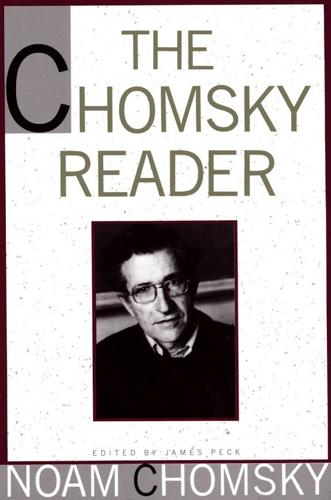
The Chomsky Reader
by
Noam Chomsky
Published 11 Sep 1987
The president claimed in July 1983 that they had “literally made a contract to establish a true democracy” with the OAS before taking power in July 1979. This claim is without foundation; Roy Gutman observes that this charge, constantly reiterated by apologists for U.S. atrocities, was concocted as part of a “successful U.S. disinformation campaign.… According to the OAS, in a July 16, 1979, telex to then General Secretary Alejandro Orfila the Sandinistas said they planned to convoke ‘the first free elections in this century’ but made no reference to timing and said nothing about creating a ‘true democracy.’ ” But although the charge has no merit with regard to the Sandinistas, it does apply to Israel; with considerably more force, in fact.
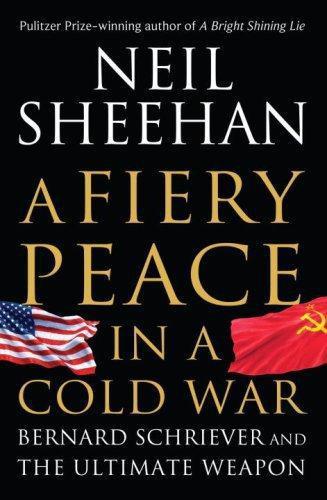
A Fiery Peace in a Cold War: Bernard Schriever and the Ultimate Weapon
by
Neil Sheehan
Published 21 Sep 2009
Had the amateurish and frequently incompetent reports from David Greenglass, the Army machinist who ground sections of high-explosive cast into solid forms called lenses for the plutonium wrapper, been the only touchstone against which to compare the materials from Fuchs, the suspicion of Beria, and in turn that of Stalin, would have been that much greater and the agents in New York and those in Moscow doing the collating might have been more hesitant about passing on the fruits of the espionage. They knew that if they were being hoodwinked, their lives would be forfeited. Beria had said to one of his senior intelligence officers as he was being handed a report: “If this is disinformation, I’ll put you all in the cellar.” The cellar of the Lubyanka Prison was one of the places where torture and executions took place. Ted Hall made the difference. His was the sophisticated spying of another physicist and Fuchs’s information checked out against his. 13. “THE BALANCE HAS BEEN DESTROYED” Hiroshima woke up Stalin.

Patriot Games
by
Tom Clancy
Published 2 Jan 1987
Jean-Claude was there again. "Good evening, Mr. Cantor, Professor Ryan," the DGSE officer greeted them both. "How's the op going?" "They are under radio silence," the Colonel replied. "What I don't understand is how they can do it the same way twice," Ryan went on. "There is a risk. A little disinformation has been used," Jean- Claude said cryptically. "In addition, your carrier now has their full attention." " Saratoga has an alpha-strike up," Marty explained. "Two fighter squadrons and three attack ones, plus jamming and radar coverage. They're patrolling that 'Line of Death' right now. According to our electronics listening people, the Libyans are going slightly ape.
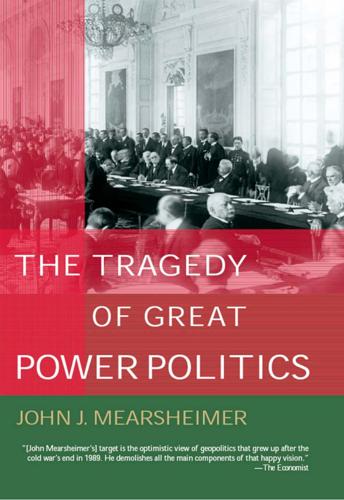
The Tragedy of Great Power Politics
by
John J. Mearsheimer
Published 1 Jan 2001
On the other hand, a state bent on aggression is likely to emphasize its peaceful goals while exaggerating its military weakness, so that the potential victim does not build up its own arms and thus leaves itself vulnerable to attack. Probably no national leader was better at practicing this kind of deception than Adolf Hitler. But even if disinformation was not a problem, great powers are often unsure about how their own military forces, as well as the adversary’s, will perform on the battlefield. For example, it is sometimes difficult to determine in advance how new weapons and untested combat units will perform in the face of enemy fire. Peacetime maneuvers and war games are helpful but imperfect indicators of what is likely to happen in actual combat.
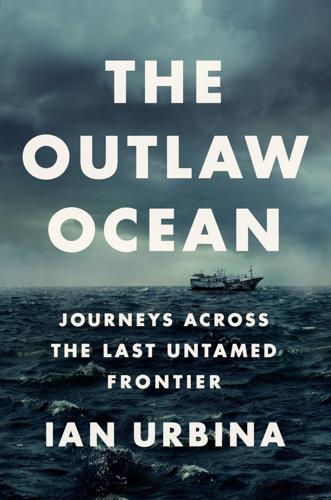
The Outlaw Ocean: Journeys Across the Last Untamed Frontier
by
Ian Urbina
Published 19 Aug 2019
If the bloom was eaten: The experiment in 2012 was not George’s first foray into geo-engineering. As chief executive of a company called Planktos, he had proposed in 2007 a similar iron-fertilization project in the equatorial Pacific west of the Galápagos Islands, with the hope of selling carbon offsets. The project was canceled in 2008 after what George’s company called a “disinformation campaign” by environmentalists and others who made it impossible to attract investors. “You get on board”: I interviewed Frith by phone several times in 2017. While much of my reporting took me to derelict: To learn about crime on cruise ships, I read Curt Anderson, “ICE Dive Unit in Miami Targets Smugglers Using Freighter, Cruise Ship Hulls to Ferry Drugs,” Associated Press Newswires, Feb. 28, 2011; Robert Anglen, “Comprehensive Reports of Cruise-Ship Crime Made Public, Led by Phoenix Man,” Arizona Republic, Oct. 13, 2016; Donna Balancia, “Crew Member Sues Carnival,” Florida Today, Feb. 13, 2008; “Brazil ‘Rescues’ Cruise Workers from ‘Slave-Like Conditions,’ ” BBC News, April 4, 2014; Jonathan Brown and Michael Day, “Cruise Ship Limps In—but Costa’s Nightmare Goes On,” Independent, March 2, 2012; Michael Day, “Costa Concordia: Shipment of Mob Drugs Was Hidden Aboard Cruise Liner When It Hit Rocks off Italian Coast, Investigators Say,” Independent Online, March 30, 2015; Richard Foot, “Gangs Smuggle Passengers on Cruises,” CanWest News Service, Nov. 23, 2005; John Honeywell, “The Truth About Crime on a Cruise Ship,” Telegraph Online, June 5, 2017; Vincent Larouche and Daniel Renaud, “Three Quebecers Charged with Smuggling $30M in Cocaine on Cruise Ship in Australia,” Toronto Star, Aug. 30, 2016; Jim Mustian, “Feds Arrest Cruise Ship Crewmen in Alleged Plot to Smuggle Cocaine into New Orleans,” New Orleans Advocate, Jan. 10, 2016; Natalie Paris, “Cruise Lines Defend Treatment of Staff,” Telegraph Online, April 7, 2014; “Ten Individuals Charged with Importing Hundreds of Pounds of Cocaine, Heroin into United States Aboard Cruise Ships,” Hindustan Times, June 10, 2005; U.S.

The Achilles Trap: Saddam Hussein, the C.I.A., and the Origins of America's Invasion of Iraq
by
Steve Coll
Published 27 Feb 2024
Saddam oversaw publicity campaigns about child mortality that were so transparently designed to manipulate international opinion that they hurt campaigners’ efforts to challenge the morality of sanctions. In a typical example, an Iraqi official urged the Ministry of Health to hoard the bodies of dead children for a mass procession in which the corpses would be paraded in child-size coffins draped with Iraqi flags.[16] Von Sponeck regarded the “systematic disinformation campaigns” by the U.S. and its allies, which sowed doubt about the true humanitarian picture in Iraq, to be just as appalling. U.N. headquarters, too, he recalled, sometimes downplayed or questioned reliable evidence of hunger and disease. The Iraqis attempted “to dramatize, to exaggerate, and to misrepresent,” the German diplomat remembered.
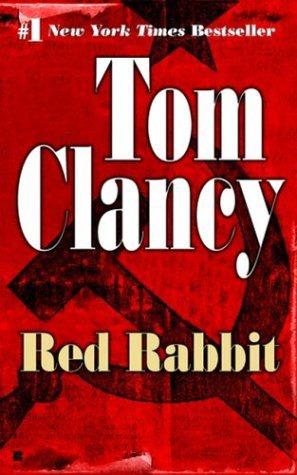
Red Rabbit
by
Tom Clancy
and
Scott Brick
Published 2 Jan 2002
The Agency did worry about leaks—they were politicians, after all—but he'd never heard of a serious one off The Hill. Those more often came from inside the Agency, and mainly from the Seventh Floor… or from the White House's West Wing. That didn't mean that CIA was comfortable with leaks of any kind, but at least these were more often than not sanctioned, and often they were disinformation with a political purpose behind them. It was probably the same here, especially since the local news media operated under controls that would have given The New York Times a serious conniption fit. "One always wonders about them, Jack. So, anything new come in last night?" "Nothing new on the Pope," Ryan reported.
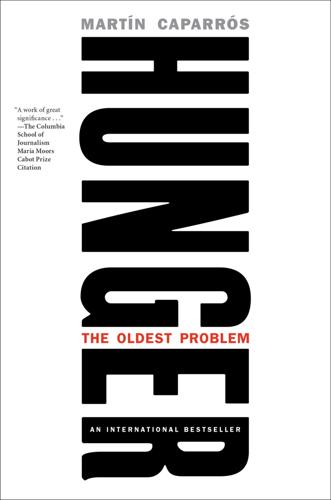
Hunger: The Oldest Problem
by
Martin Caparros
Published 14 Jan 2020
It was presented as a way to “empower” the slum dwellers, and it was, in fact, a way of perpetuating extreme differences—the existence of those places of exclusion, those contemporary ghettos. And, of course, to pave the way for the withdrawal of the state, which would be carried out more fully during the eighties. And, to oversee the state’s replacement by NGOs and other charitable organizations. As Mike Davis writes: Their constant effort is to subvert, dis-inform and de-idealize people so as to keep them away from class struggles. They adopt and propagate the practice of begging favors on sympathetic and humane grounds rather than making the oppressed conscious of their rights. As a matter of fact, these agencies and organizations systematically intervene to oppose the agitational path people take to win their demands.

Accessory to War: The Unspoken Alliance Between Astrophysics and the Military
by
Neil Degrasse Tyson
and
Avis Lang
Published 10 Sep 2018
In 1996 and 1997 the United States was joined in abstention by numerous allies, but beginning in 1999 it was joined consistently, either in abstention or in outright opposition, only by Israel, with the occasional addition of Micronesia, the Marshall Islands, or Haiti.151 Also starting in 1981—and accelerated by US disinformation regarding the Strategic Defense Initiative, coupled with genuine as well as artificially inflated Soviet alarm at SDI and the space shuttle—the Soviet Union asked the UN General Assembly to place on its agenda a Soviet draft treaty that sought to prohibit stationing weapons “of any kind” in outer space.

Genius: The Life and Science of Richard Feynman
by
James Gleick
Published 1 Jan 1992
Compounds and solutions of these substances were accumulating in metal barrels, glass bottles, and cardboard boxes piled on the cement floors of storerooms. Uranium was combined with oxygen or chlorine and either dissolved in water or kept dry. Workers moved these substances from centrifuges or drying furnaces into cans and hoppers. Much later, large epidemiological studies would overcome obstacles posed by government secrecy and disinformation to show that low-level radiation caused more harm than anyone had imagined. Yet the authorities at the processing plants were overlooking not only this possibility but also a more immediate and calculable threat: the possibility of a runaway, explosive chain reaction. Feynman had seemed to be everywhere at once as the pace of work accelerated in 1944 and 1945.

Britain at Bay: The Epic Story of the Second World War: 1938-1941
by
Alan Allport
Published 2 Sep 2020
ASDIC had been fitted on RN destroyers starting in 1923, and by the outbreak of war there were 180 vessels equipped with it.16 Although the details of the system remained top secret, the Admiralty deliberately leaked hints about ASDIC’s amazing anti-submarine efficacy in the 1930s to discourage the Germans from bothering to build U-boats.17 There was an element of disinformation to this, but the Navy’s basic confidence in ASDIC was not feigned. In exercises in 1936, six out of ten ASDIC-guided destroyer attacks on submarines were judged to have been ‘decisive’.18 The Admiralty remarked the following year that ‘the submarine menace will never be what is was before […] we have taken effective steps to prevent that.’19 Churchill wrote a memorandum to Chamberlain in March 1939 claiming that ‘the submarine has been mastered’.20 This self-assurance encouraged complacency.
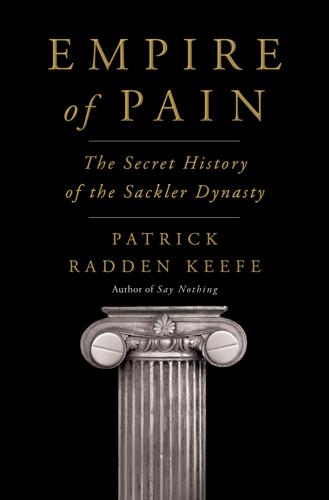
Empire of Pain: The Secret History of the Sackler Dynasty
by
Patrick Radden Keefe
Published 12 Apr 2021
But Bloodsworth’s flawed execution provided the company’s PR apparatchiks with the ammunition they needed, and they went after her, hard. One journalist, who was sympathetic to Purdue’s cause, wrote an article in Slate on the “myth” of the accidental addict, accusing Bloodsworth of spreading hysteria and disinformation and suggesting that, in reality, people who died from OxyContin were “just plain druggies.” Bloodsworth ended up resigning from the newspaper and eventually left journalism altogether. A spokesman for Purdue acknowledged the company’s satisfaction in having the opportunity to “set the record straight.”

Rationality: From AI to Zombies
by
Eliezer Yudkowsky
Published 11 Mar 2015
This all comes under the heading of “fascinating words.” Unfortunately, there are certain religious factions that spread gross disinformation about evolutionary theory. So I emphasize that many models within evolutionary theory make quantitative predictions that are experimentally confirmed, and that such models are far more than sufficient to demonstrate that, e.g., humans and chimpanzees are related by a common ancestor. If you’ve been victimized by creationist disinformation—that is, if you’ve heard any suggestion that evolutionary theory is controversial or untestable or “just a theory” or non-rigorous or non-technical or in any way not confirmed by an unimaginably huge mound of experimental evidence—I recommend reading the TalkOrigins FAQ11 and studying evolutionary biology with math.
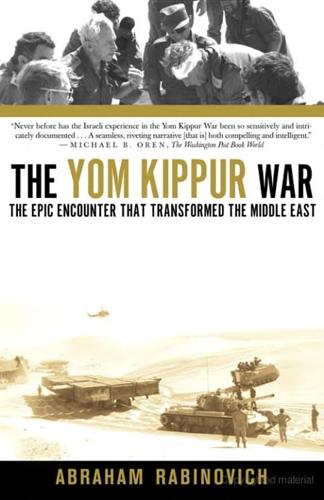
The Yom Kippur War: The Epic Encounter That Transformed the Middle East
by
Abraham Rabinovich
Published 1 Jan 2004
Zeira and his chief aides were to demonstrate the ability of even brilliant men to adhere to an idée fixe in the face of mountains of contrary evidence. Explaining away every piece of information that conflicted with their thesis, they embraced any wisp that seemed to confirm it. This included disinformation leaked by the Egyptians that should have been suspect since it came through channels the Egyptians clearly knew AMAN to be monitoring, such as the Arab press. They clung to their view even though the Egyptian deceptions were contradicted by the evidence of war preparations that AMAN’s own departments were daily gathering.

Iron Curtain: The Crushing of Eastern Europe, 1945-1956
by
Anne Applebaum
Published 30 Oct 2012
At different times different German-language stations transmitted news out of Moscow as well as constant invitations to German troops to lay down their arms and overthrow Hitler. Mahle worked on a number of these stations, including some that pretended to be Nazi stations in order to broadcast disinformation.6 Wolf became an announcer and commentator, a job which brought him into close contact with Walter Ulbricht. His wife, Emmi—the woman who had once forced Leonhard into a humiliating public confession—walked up and down battlefields with a megaphone, shouting at German soldiers to lay down their arms.7 Though the National Committee was a Soviet front organization, its leaders were very careful not to appear “too communist,” particularly in 1943 and the first half of 1944 when they still hoped a putsch would overthrow Hitler.

The Greek Revolution: 1821 and the Making of Modern Europe
by
Mark Mazower
Published 4 Nov 2021
If you are Rumeli Valesi (commander of Rumeli), I too am Rumeli Valesi, and if my government knew that we are talking together they would hang me and the fifteen thousand men with me at Elefsina.’ ‘What do you mean, they would hang you?’ ‘Can the Sultan not hang you if he wishes? Yes or no?’ ‘Indeed, because he is my monarch.’ ‘And I too can be hanged, because I have a queen [meaning Greece].’23 It was a typical bravura performance with a little disinformation slipped in, for the Greeks had nowhere near the 15,000 men Karaïskakis had boasted of. Despair, rancour and defeat were leading to desertions on a large scale, and Fabvier unilaterally took his remaining regulars off to Salamis. Karaïskakis faced a dilemma. Although the fighting at Haidari had shown that he lacked the men to confront the Ottoman army and break the siege of Athens directly, the alternative option of moving away to attack the Ottoman supply lines in the hills risked demoralizing the town’s defenders, and it was at all costs vital that the garrison not surrender.

Chokepoints: American Power in the Age of Economic Warfare
by
Edward Fishman
Published 25 Feb 2025
Putin ultimately weathered the storm and retook the presidency a few months later, pushing through a raft of repressive laws to prevent such protests from ever happening again. In retaliation for the West’s purported designs against him, he also developed his own brand of hybrid warfare. Using disinformation, media manipulation, and foreign intelligence operations, Russia would make the world safe for autocracy. Over the following years, Putin consolidated his political control at home, just as he’d previously tightened the Kremlin’s hold on Russia’s centers of economic power. After ascending to the presidency at the end of 1999, Putin had sidelined the Yeltsin-era oligarchs and confiscated their most valuable assets, pushing some of them into exile and prison.
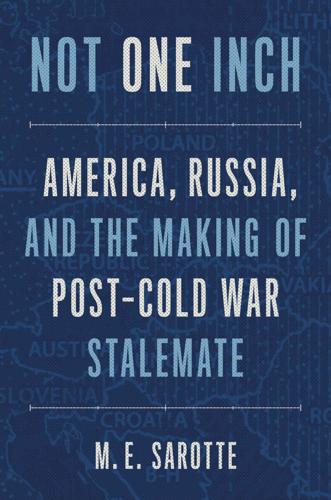
Not One Inch: America, Russia, and the Making of Post-Cold War Stalemate
by
M. E. Sarotte
Published 29 Nov 2021
Reiss, Mitchell. Bridled Ambition: Why Countries Constrain Their Nuclear Capabilities. Washington, DC: Wilson Center Press, 1995. Reiter, Dan. “Why NATO Enlargement Does Not Spread Democracy.” International Security 5, no. 4 (Spring 2001): 41–67. Rid, Thomas. Active Measures: The Secret History of Disinformation and Political Warfare. New York: Farrar, Straus and Giroux, 2020. Ritter, Gerhard A. Der Preis der deutschen Einheit: Die Wiedervereinigung und die Krise des Sozialstaats. Munich: Beck, 2006. Rödder, Andreas. “ ‘Breakthrough in the Caucasus’? German Reunification as a Challenge to Contemporary Historiography.”
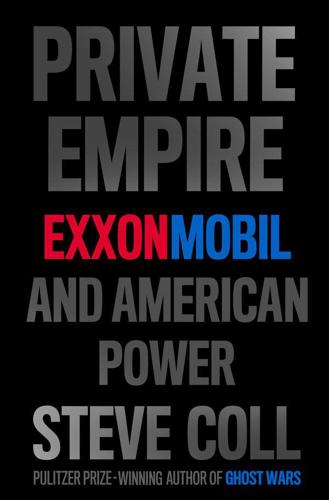
Private Empire: ExxonMobil and American Power
by
Steve Coll
Published 30 Apr 2012
ExxonMobil’s opponents were guilty of lumping together the corporation’s support for small, havoc-making groups focused heavily on climate issues with ExxonMobil’s support for legitimate, well-established conservative and free-market research institutes such as the Cato Institute for Public Policy Research, the American Enterprise Institute, and the Heritage Foundation.7 What distinguished the corporation’s activity during the late 1990s and the first Bush term was the way it crossed into disinformation. Even within ExxonMobil’s K Street office, a haven of lifelong employees devoted to the corporation’s viewpoints and principles, an uneasy recognition gathered among some of the corporation’s lobbyists that some of the climate policy hackers in the ExxonMobil network were out of control and might do shareholders real damage, in ways comparable to the fate of tobacco companies.
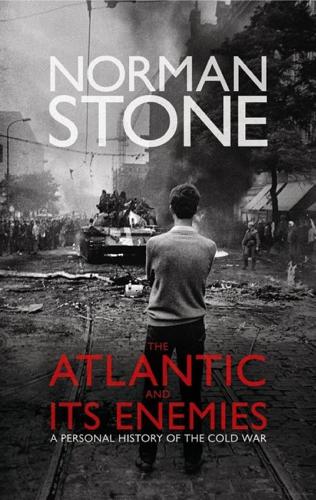
The Atlantic and Its Enemies: A History of the Cold War
by
Norman Stone
Published 15 Feb 2010
The arguments between the two sides, couched in the usual wooden language, became public, as each side tried to convince other Communist parties of the correctness of its view. The depth of the disagreements became clear abroad only in 1963, and even then they were sometimes dismissed as part of some game to fool the West, ‘disinformation’, but they were real enough, and even caused one of the Soviet-dominated parties to defect, that of little Albania, fizzing with resentment at the preferential treatment accorded by one and all to Tito in Yugoslavia, which contained its own Albanians. Khrushchev now tried to stop China’s development, and in July 1960 withdrew his specialists.
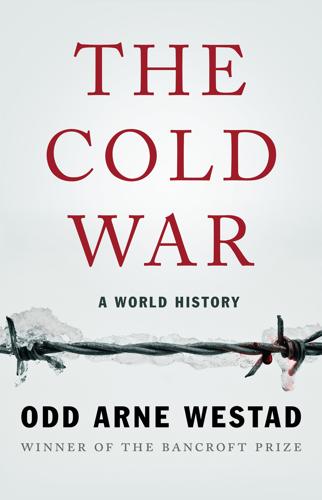
The Cold War: A World History
by
Odd Arne Westad
Published 4 Sep 2017
After a while former Nazi officials at the lower levels—those the Soviets decided not to put on trial—also found it remarkably easy to collaborate; the Communist ideas of planning were not, after all, that different from those of their former masters. Publicly, however, the new east German authorities held high the banner of anti-Fascism. They were the “good Germans”; the bad Germans, plenty of them, were all collaborating in the western occupation zones, or so German Communist propaganda claimed. Many Left-wing Germans fell for the disinformation, especially intellectuals and artists, some of whom moved east, including top names in German literature like Stefan Heym and Bertolt Brecht, who both moved there from wartime exile in the United States. In the spring of 1946 the Soviets and the German Communists forced the Social Democrats in the east into a Socialist Unity Party (SED), in which the Communists under Wilhelm Pieck and Walter Ulbricht had full control.

Public Places, Urban Spaces: The Dimensions of Urban Design
by
Matthew Carmona
,
Tim Heath
,
Steve Tiesdell
and
Taner Oc
Published 15 Feb 2010
. … The relationship between development of one parcel and non-development of another is a disjointed, seemingly unrelated affair. … Conventional city form, Chicago-style, is sacrificed in favour of a non-contiguous collage of parcelised, consumption-oriented landscapes devoid of conventional centres yet wired into electronic propinquity and nominally unified by the mythologies of the disinformation superhighway.’ (1999: 81). Restructuring processes are nonetheless mediated by socio-cultural choice, by institutional structures and by pre-existing physical forms. The cities epitomising industrial (Chicago) and post-industrial (Los Angeles) urban form were relatively free from the constraints of earlier patterns.
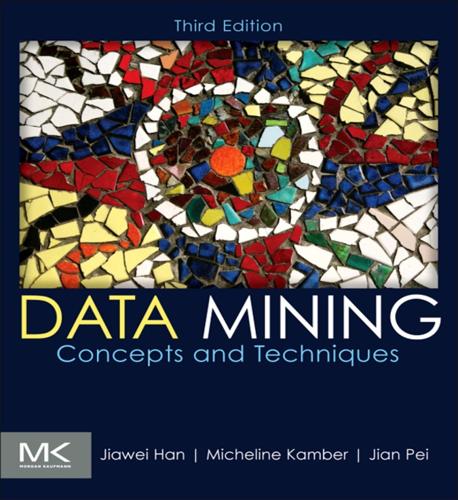
Data Mining: Concepts and Techniques: Concepts and Techniques
by
Jiawei Han
,
Micheline Kamber
and
Jian Pei
Published 21 Jun 2011
.; Faloutsos, C., On power-law relationships of the internet topology, In: Proc. ACM SIGCOMM’99 Conf. Applications, Technologies, Architectures, and Protocols for Computer Communication Cambridge, MA. (Aug. 1999), pp. 251–262. [FG02] Fishelson, M.; Geiger, D., Exact genetic linkage computations for general pedigrees, Disinformation 18 (2002) 189–198. [FGK+05] Fagin, R.; Guha, R.V.; Kumar, R.; Novak, J.; Sivakumar, D.; Tomkins, A., Multi-structural databases, In: Proc. 2005 ACM SIGMOD-SIGACT-SIGART Symp. Principles of Database Systems (PODS’05) Baltimore, MD. (June 2005), pp. 184–195. [FGW01] Fayyad, U.; Grinstein, G.; Wierse, A., Information Visualization in Data Mining and Knowledge Discovery. (2001) Morgan Kaufmann .
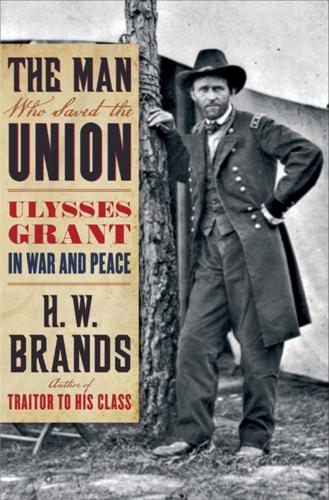
The Man Who Saved the Union: Ulysses Grant in War and Peace
by
H. W. Brands
Published 1 Oct 2012
Sheridan did push and a month later delivered the decisive blow. His signal officers had broken the Confederate flagging code and they deciphered a message sent from James Longstreet to Early: “Be ready to move as soon as my forces join you, and we will crush Sheridan.” Sheridan wasn’t sure the message wasn’t deliberate disinformation, but he didn’t feel he could ignore it, and consequently when Halleck summoned him to Washington for consultation he initially refused. But Halleck assured him Longstreet couldn’t link up with Early imminently and insisted that he come ahead. Sheridan went to Washington, consulted quickly and headed back to the valley.
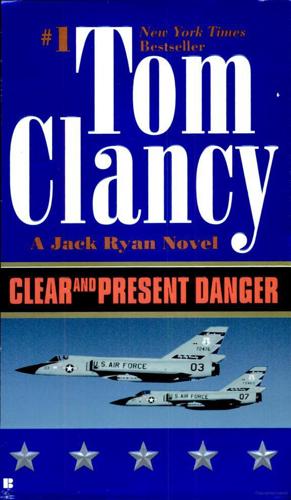
Clear and Present Danger
by
Tom Clancy
Published 2 Jan 1989
There were a number of well-paid and highly reliable informants throughout the American government, in Customs, DEA, the Coast Guard, none of whom had reported a single thing. The law-enforcement community was in the dark - except for the FBI Director, who didn't like it, but would soon go to Colombia… Some sort of intelligence operation was - no. Active Measures? The phrase came from KGB, and could mean any of several things, from feeding disinformation to reporters to "wet" work. Would the Americans do anything like that? They never had. He glowered at the passing scenery. He was an experienced intelligence officer, and his profession was to determine what people were doing from bits and pieces of random data. That he was working for someone he detested was beside the point.

The Silk Roads: A New History of the World
by
Peter Frankopan
Published 26 Aug 2015
He was so confident he still held all the cards that even when intelligence reports were received from agents in Berlin, Rome and even Tokyo – in addition to warnings and signs from embassies in Moscow – that an attack was imminent, he simply dismissed them.11 His scathing attitude was perfectly summed up by his reaction to a report from a spy within the German air force headquarters just five days before the invasion was launched. ‘You can tell your “source” . . . to go fuck his mother,’ he scrawled. ‘This is not a “source”,’ he wrote, ‘it’s someone spreading disinformation.’12 Not all of those around Stalin were as blasé as the Soviet leader. German troop movements in early June led some to argue that the Red Army should be moved into defensive positions. ‘We have a non-aggression pact with Germany,’ Stalin replied incredulously. ‘Germany is tied up with war in the West and I am sure that Hitler will not dare to create a second front by attacking the Soviet Union.

The Great Sea: A Human History of the Mediterranean
by
David Abulafia
Published 4 May 2011
The intention was not just to boost the morale of the Maltese, but to show the whole empire that Great Britain was making ineluctable progress towards final victory.26 There was further bleak news for the Axis. Greece descended into civil war, and resistance was building up in Yugoslavia.27 Within the Axis, suspicion grew that Sardinia was being targeted as the gathering point for a massed Allied invasion of Europe by way of southern France; Cagliari paid a high price for this disinformation, and the marks of allied bombing are still visible there. The real question was whether Mediterranean France or Italy was (to use Churchill’s phrase) ‘the soft underbelly’ of Axis Europe. In June 1943 the Allies captured their first piece of Italy: the small but strategically placed island of Pantelleria west of Malta, where 12,000 demoralized Italian troops succumbed to intense bombardment.28 When the Allies confounded earlier expectations by landing in Sicily, in July, a special meeting of the Fascist Grand Council turned on Mussolini.
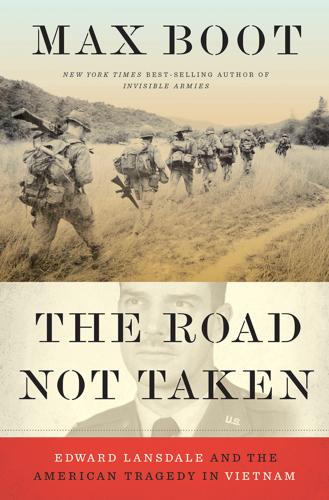
The Road Not Taken: Edward Lansdale and the American Tragedy in Vietnam
by
Max Boot
Published 9 Jan 2018
He didn’t speak a word of German and drank so heavily that he served martinis in water goblets, but he pulled off one of the CIA’s most celebrated intelligence coups when he supervised the construction of a secret tunnel into East Berlin designed to tap into Soviet communications. Operation Gold operated for eleven months in 1955–56, producing warehouses full of intercepts. Only later did the CIA learn that the KGB, because of a mole in MI6, knew about the operation the whole time, raising the disquieting suspicion that the tunnel had been used to feed the CIA disinformation. But even if the Berlin tunnel, known internally as “Harvey’s hole,” was not quite the success it had seemed at first blush, its inglorious end did not hurt Harvey’s career. He returned to Washington in 1959 to become head of the CIA’s Division D, charged with breaking into foreign embassies to steal secret codes.60 Early in 1961, Harvey was approached by Dick Bissell, the CIA’s operations chief, and told to develop “Executive Action capability,” a euphemism for assassination.
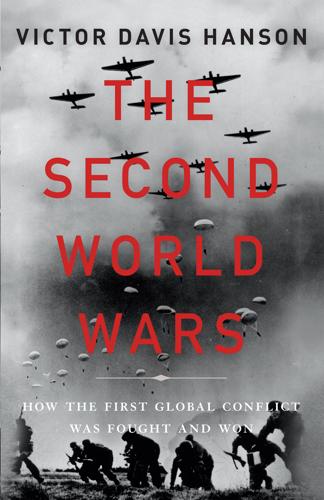
The Second World Wars: How the First Global Conflict Was Fought and Won
by
Victor Davis Hanson
Published 16 Oct 2017
It is a clinical issue more than a social one.”36 In this regard, the June 22, 1941, invasion of the Soviet Union was the most critical turning point in the history of the Jewish people since the destruction of Jerusalem and the Second Temple in AD 70. Had Hitler not invaded the Soviet Union and not headed further eastward—absorbing all of eastern Poland, the Baltic states, and western Russia—it would have been impossible to carry out the full agenda of the Holocaust. The transport of Jews “to the East” was cloaked in disinformation. Had the death camps inside Poland been scattered throughout occupied France, for instance, the Holocaust would have been a nightmare far more difficult to disguise.37 ALL OF THE major powers of World War II built prisoner-of-war camps. But what distinguished the Soviet Union, the Third Reich, and Japan (which ran well over 250 major internment camps in Borneo, Burma, China, the Dutch East Indies, Formosa, Korea, Japan, Malaysia, the Philippines, and smaller centers almost everywhere else under Japanese occupation) was that, in addition to captured soldiers, these powers interned, mistreated, and often killed an entire array of dissidents and ethnicities.
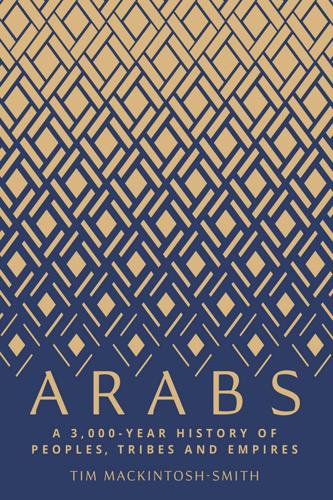
Arabs: A 3,000 Year History of Peoples, Tribes and Empires
by
Tim Mackintosh-Smith
Published 2 Mar 2019
They are the ones who have formed identity, forged unity and forced the march of history. From time to time, therefore, for a page or two, we will take stock of how language has impelled progress, and at times impeded it. Progress and regress continue. Recent events, not least the ‘Arab Spring’ and its messy aftermath, have shown how words – slogans, chants, propaganda, mis- and disinformation, the old mesmerizing magic both white and black – still shape the course of the Arab world. Or, rather, the Arabic world, the Arabosphere. Language is still its defining feature and its genius, and ‘the Arabs’ are really arabophones. To call everyone from the Strait of Gibraltar to the Strait of Hormuz ‘the Arabs’ would be like calling all North Americans, South Africans, Australasians, Irish and British, regardless of origin, ‘the English’ – or even ‘the Angles’, another group of wandering clans whose language was to end up as the tide-wrack of a long-ebbed empire.
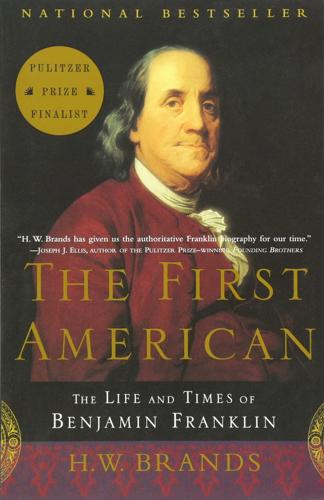
The First American: The Life and Times of Benjamin Franklin
by
H. W. Brands
Published 1 Jan 2000
Washington then began preparing his own troops for a dash south. A master of logistics and preparation, he personally mapped the march and tended to every imaginable matter of provisioning and transport. Clinton’s spies saw signs of motion in Washington’s camp, but the American general spread disinformation indicating that he was simply circling south to assault New York from Staten Island. He sent crews to repair roads and bridges on the Jersey banks of the Hudson. He even constructed a large oven to supply bread to the fictitious attackers. Not till too late did Clinton realize that the object of the preparations was not his army but Cornwallis’s.
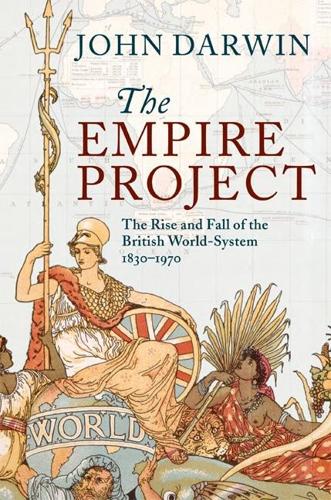
The Empire Project: The Rise and Fall of the British World-System, 1830–1970
by
John Darwin
Published 23 Sep 2009
Press, ‘Overseas Investment and the Professional Advance of British Metal Mining Engineers, 1851–1914’, Economic History Review, New Series, 42, 1 (1989), 67–8; ‘The City and International Mining, 1870–1914’, Business History 32, 3 (1990), 98–119; J. J. van Helten, ‘Mining, Share Mania and Speculation: British Investment in Overseas Mining 1880–1913’, in J. J. van Helten and Y. Cassis, Capitalism in a Mature Economy (1990). 28. For a graphic description of the speculative and disinformational tendencies to be found in the City, see I. R. Phimister, ‘Corners and Company-Mongering: Nigerian Tin and the City, 1909–1912’, Journal of Imperial and Commonwealth History, 28, 2 (2000), 23–41. 29. Checkland, ‘The Mind of the City’, pp. 265, 270, 278. For the outlook of bankers, see Y. Cassis, ‘The Banking Community of London, 1890–1914: A Survey’, Journal of Imperial and Commonwealth History, 13, 3 (1985), 109–26. 30.

Strategy: A History
by
Lawrence Freedman
Published 31 Oct 2013
“Shock and awe” would mean that the enemy’s perceptions and grasp of events would be overloaded, leaving him paralyzed. The ultimate example of this effect were the nuclear strikes of Hiroshima and Nagasaki, which the authors refused to rule out as a theoretical possibility, though they were more intrigued by the possibility of disinformation, misinformation, and deception.11 The influence of such ideas was evident in the 1997 paper “Joint Vision 2010.” It defined information superiority largely in war-fighting terms as “the capability to collect, process, and disseminate an uninterrupted flow of information while exploiting or denying an adversary’s ability to do the same.”12 By means of “excellent sensors, fast and powerful networks, display technology, and sophisticated modeling and simulation capabilities,” information superiority could be achieved.

The Rise and Fall of the Great Powers: Economic Change and Military Conflict From 1500 to 2000
by
Paul Kennedy
Published 15 Jan 1989
Whether one considers the rapid growth of Russian land- and sea-based strategic missile systems, the thousands of aircraft and tens of thousands of main battle tanks, the extraordinary developments in the surface navy and in the submarine fleet, the specialist activities (airborne and amphibious warfare units, chemical warfare, intelligence and “disinformation” activities), the end result is impressive. It may or may not have cost as much in real terms as the Pentagon’s own allocations; but it undoubtedly gives the USSR a range of military capabilities which only the rival American superpower possesses. This is not a twentieth-century military Potemkin village, ready to collapse at the first serious testing.161 On the other hand, the Soviet war machine also has its own weaknesses and problems, and certainly ought not to be presented as an omnipotent force, able to execute with consummate efficiency all of the possible military operations which the Kremlin might require of it.

Crucible: The Long End of the Great War and the Birth of a New World, 1917-1924
by
Charles Emmerson
Published 14 Oct 2019
A hired journalist writes up Ford’s prejudices into long, superficially researched articles, finding new angles when the old ones get tired, playing on concerns about immigration, jobs and terrorism. After a few weeks, the Independent’s campaign is being picked up by other newspapers and magazines, just as planned. The spark has been provided. Now the fire is catching. Disinformation thrives on repetition. In July, the case of The Protocols of the Elders of Zion is raised. Some Jews wonder if Ford himself can be personally involved in spreading such stuff, imagining that someone behind the scenes must be taking advantage of him. A few send in protest telegrams, hoping Ford will realise what is being perpetrated in his name.
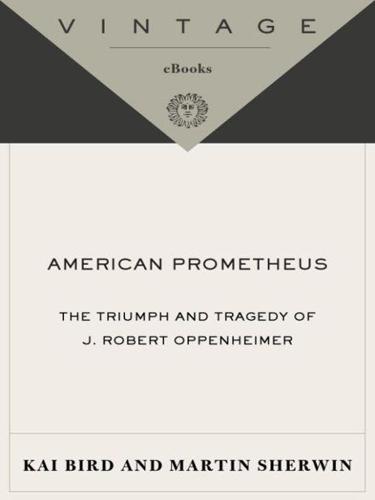
American Prometheus: The Triumph and Tragedy of J. Robert Oppenheimer
by
Kai Bird
and
Martin J. Sherwin
Published 18 Dec 2007
If Bohr was convinced, then Oppenheimer too must have realized that the German physicists were in all likelihood far behind in the race to build a bomb. According to David Hawkins, Oppenheimer was told by General Groves at the end of 1943 that a German source had recently claimed that the Germans had abandoned their early bomb program. Groves suggested that it was hard to evaluate such a report; the German source might be passing on disinformation. Oppenheimer just shrugged. Hawkins recalled thinking to himself that it was too late—the men at Los Alamos “were committed to building a bomb regardless of German progress.” CHAPTER TWENTY-ONE “The Impact of the Gadget on Civilization” My feeling about Oppenheimer was, at that time, that this was a man who is angelic, true and honest and he could do no wrong. . . .

The Sum of All Fears
by
Tom Clancy
Published 2 Jan 1989
"General, I'm putting you on official notice. We have indications that your communications links are compromised." "And?" "And I will make that report to Congress and the President as well." "It's much more likely that there's someone at State who leaked this. Further, it is possible that you're the victim of disinformation. What does this agent give us?" the NSA Director asked. "Some very useful material - us and Japan." "But nothing on the Soviet Union?" Jack hesitated before answering, but there was no question of Olson's loyalty. Or his intelligence. "Correct." "And you're saying that you're certain this isn't a false-flag operation?

Debt of Honor
by
Tom Clancy
Published 2 Jan 1994
This morning, Koga thought with a grunt, checking his watch. "We're sure that it has to be standard-gauge track?" "You can resection the photos we have yourself," Betsy Fleming told him. They were back in the Pentagon headquarters of the National Reconnaissance Office. "The transporter-car our people saw is standard gauge." "Disinformation, maybe?" the NRO analyst asked. "The diameter of the SS-19 is two-point-eight-two meters," Chris Scott replied, handing over a fax from Russia. "Throw in another two hundred seventy centimeters for the transport container. I ran the numbers myself. The narrow-gauge track over there would be marginal for an object of that width.

The Rough Guide to Egypt (Rough Guide to...)
by
Dan Richardson
and
Daniel Jacobs
Published 1 Feb 2013
The right-hand wall (all directions assume you’re facing the back of the temple) depicts the Battle of Qadesh on the River Orontes (1300 BC), starting from the back of the hall. Here you see Ramses’ army marching on Qadesh, followed by their encampment, ringed by shields. Acting on disinformation tortured out of enemy spies, Ramses prepares to attack the city and summons his reserve divisions down from the heights. The waiting Hittites ford the river, charge one division and scatter another to surround the king, who single-handedly cuts his way out of the trap.
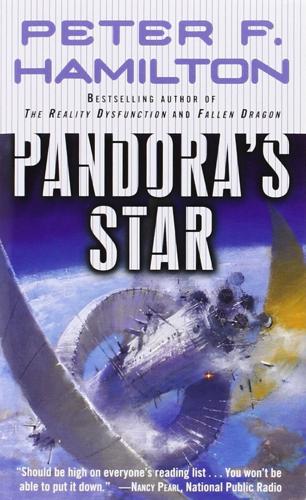
Pandora's Star
by
Peter F. Hamilton
Published 2 Mar 2004
They couldn’t all contain secret sympathizers of Johansson’s cause. That just left her with the altogether murkier field of Grand Families and Intersolar Dynasties, the kind of power dealers who were always around. She’d done everything she could, of course: set traps, run identification ambushes, deliberately leaked disinformation, established unofficial communications channels, built herself an extensive network amid the political classes, gained allies at the heart of the Commonwealth government. So far the results had been minimal. That didn’t bother her so much, she had faith in her ability to work the case to its conclusion.
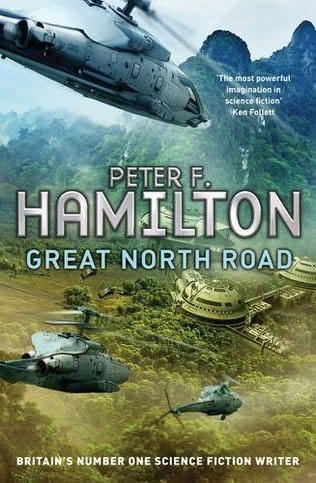
Great North Road
by
Peter F. Hamilton
Published 26 Sep 2012
That was a specialist-built weapon, after all, and it was never found. So as far as we’re concerned she is still very much on probation.” An associate? He could almost hear Vice Commissioner Passam saying it, her slick political questions aimed at the Right Places, casting doubt and undermining facts. She could almost rival him when it came to disinformation techniques. “I understand perfectly. We’ll watch Tramelo.” “Thank you. I appreciate how difficult it is out there.” “How long before we get our additional Legionnaires?” “HDA has already issued a deployment order to the Paris barracks. Two hundred troops plus equipment. They’ll be through the gateway today.

The Coming Plague: Newly Emerging Diseases in a World Out of Balance
by
Laurie Garrett
Published 31 Oct 1994
The publication also blamed AIDS on 1959 Nobel Prize recipient Bertrand Russell, saying, “These globalists are responsible for unleashing the AIDS virus upon the world’s population, they would be guilty of mass murder at levels heretofore not even conceived of in the most imaginative of monster movies.” 207 U.S. Department of State, “The U.S.S.R.’s AIDS Disinformation Campaign,” Foreign Affairs Note, July 1987. 208 Peter Duesberg’s views have been so widely published that it is difficult to narrow a list to key sources. For Duesberg’s perspective, see B. Guccione, Jr., Interview, September 1993: 95–108; P. H. Duesberg, “Human Immunodeficiency Virus and Acquired Immunodeficiency Syndrome: Correlation But Not Causation,” Proceedings of the National Academy of Sciences 86 (1989): 755–64; J.

Betrayal of Trust: The Collapse of Global Public Health
by
Laurie Garrett
Published 15 Feb 2000
After an hour’s standoff diplomats from several embassies intervened, convincing Zairois officials that the reporters could safely be released.28 The incident prompted greater attention to accreditation details on the part of Zaire’s Ministry of Information. The agency, which might better have been termed the Ministry of Bribery and Disinformation, welcomed money in exchange for accreditations for foreigners and rarely provided anyone— foreigner or citizen—with accurate news about anything, especially public health. Located in one of several decrepit, thirty-year-old government buildings at considerable distance form Kinshasa’s hub, the Ministry was on the nineteenth floor of a decaying structure with only one remaining, marginally functional elevator.

From Peoples into Nations
by
John Connelly
Published 11 Nov 2019
According to former Polish Prime Minister Tadeusz Mazowiecki, who served as UN special reporter, “elected authorities who were moderates and who tried to prevent acts of violence were dismissed or replaced by Serbian extremists.”42 Thus a small minority dedicated to violence generated paroxysms of suffering, involving many bystanders in their campaigns, much resembling processes known from World War II, where small units of Ustashas, SS, and other outsiders injected violence into communities and made legions of victims into perpetrators, expanding in concentric rings to embrace community after community. But that is not the whole story. There is also the question of how people came to their knowledge of what was happening to their own ethnic group. The answer is: they relied on disinformation coming from nationalists of their own ethnicity, which tended to fuel desires for revenge and became a main cause of atrocities. With rare exceptions, the national media tended to present distorted news of the conflict and human rights violations. “Consequently,” Mazowiecki concluded, “the general public has no access to reliable, objective sources of information.”43 A new mentality took hold of the region, supplanting that of more peaceful times.

The Prize: The Epic Quest for Oil, Money & Power
by
Daniel Yergin
Published 23 Dec 2008
In December 1940 Hitler issued Directive Number 21—Operation Barbarossa—ordering that preparations begin for an invasion of the Soviet Union. The Germans took care to give no public sign of displeasure to their Russian friend and, indeed, went out of their way to engage in an elaborate charade of deception and disinformation to lull Stalin into disbelief that the Germans might be contemplating such a strike. Warnings of the impending invasion came from many sources—Americans, British, other governments, his own spies—but Stalin resolutely refused to believe them. Scarcely hours before the invasion, a dedicated German communist defected from a German Army unit and slipped over to the Soviets with word of what was about to happen.

Executive Orders
by
Tom Clancy
Published 2 Jan 1996
The negative commentary of the defeat of the Saudi army was, however, going out. That news, leaked in Washington, and studiously not commented on by the Pentagon, was being accepted as gospel. Jack was still worried, however amusing it might have been in the abstract that the media was doing disinformation without even being asked. This evening. Maybe sooner, General Mickey Moore replied. Sunset over there is in three hours. Can we do it? POTUS asked. Yes, sir. Wolfpack, FIRST BRIGADE, North Carolina National Guard, was fully formed now. Eddington took to a UH-60 Black Hawk helicopter for a flyover of his forward units.